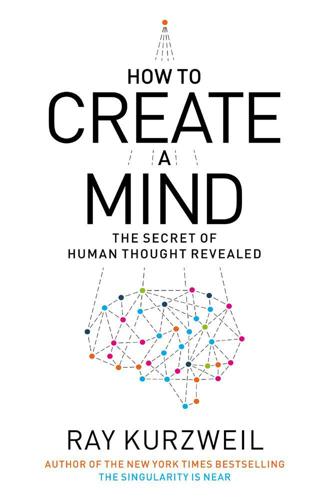
How to Create a Mind: The Secret of Human Thought Revealed
by
Ray Kurzweil
Published 13 Nov 2012
Ultimately our brains, combined with the technologies they have fostered, will permit us to create a synthetic neocortex that will contain well beyond a mere 300 million pattern processors. Why not a billion? Or a trillion? The Structure of a Pattern The pattern recognition theory of mind that I present here is based on the recognition of patterns by pattern recognition modules in the neocortex. These patterns (and the modules) are organized in hierarchies. I discuss below the intellectual roots of this idea, including my own work with hierarchical pattern recognition in the 1980s and 1990s and Jeff Hawkins (born in 1957) and Dileep George’s (born in 1977) model of the neocortex in the early 2000s. Each pattern (which is recognized by one of the estimated 300 million pattern recognizers in the neocortex) is composed of three parts.
…
(TV show), 6–7, 108, 157–58, 160, 165, 166, 167, 168, 169, 172, 178, 232–33, 270 Joyce, James, 55 Kasparov, Garry, 39, 166 K Computer, 196 knowledge bases: AI systems and, 4, 6–7, 170–71, 246, 247 of digital neocortex, 177 exponential growth of, 3 as inherently hierarchical, 220 language and, 3 professional, 39–40 as recursively linked ideas, 3 Kodandaramaiah, Suhasa, 126 Koene, Randal, 89 Koltsov, Nikolai, 16 Kotler, Steven, 278 KurzweilAI.net, 161 Kurzweil Applied Intelligence, 144 Kurzweil Computer Products, 122 Kurzweil Voice, 160 lamina 1 neurons, 97 language: chimpanzees and, 3, 41 and growth of knowledge base, 3 hierarchical nature of, 56, 159, 162, 163 as metaphor, 115 as translation of thinking, 56, 68 language software, 51, 72–73, 92, 115–16, 122–23, 144–45, 145, 156, 157–72, 174, 270 expert managers in, 166–67 hand-coded rules in, 164–65, 166, 168 HHMMs in, 167–68 hierarchical systems in, 162–65 Larson, Gary, 277 “Last Voyage of the Ghost, The” (García Márquez), 3–4 lateral geniculate nucleus, 95, 100 law of accelerating returns (LOAR), 4, 6, 7, 41, 123 as applied to human brain, 261–63, 263, 264, 265 biomedicine and, 251, 252, 253 communication technology and, 253, 254 computation capacity and, 281, 316n–19n information technology and, 4, 249–57, 252, 257, 258, 259, 260, 261, 261 objections to, 266–82 predictions based on, 256–57, 257, 258, 259, 260, 261 and unlikelihood of other intelligent species, 5 “Law of Accelerating Returns, The” (Kurzweil), 267 laws of thermodynamics, 37, 267 learning, 61–65, 122, 155, 273–74 conditionals in, 65 and difficulty of grasping more than one conceptual level at a time, 65 in digital neocortex, 127–28, 175–76 environment and, 119 Hebbian, 80 hierarchical, 164, 195, 197 in neural nets, 132–33 neurological basis of, 79–80 pattern recognition as basic unit of, 80–81 of patterns, 63–64, 90 recognition as simultaneous with, 63 simultaneous processing in, 63, 146 legal systems, consciousness as basis of, 212–13 Leibniz, Gottfried Wilhelm, 34, 223 Lenat, Douglas, 162 Leviathan (Hobbes), 278 Lewis, Al, 93 Libet, Benjamin, 229–30, 231, 234 light, speed of, 281 Einstein’s thought experiments on, 18–23 linear programming, 64 LISP (LISt Processor), 153–55, 163 pattern recognition modules compared with, 154, 155 Lloyd, Seth, 316n, 317n Loebner, Hugh, 298n Loebner Prize, 298n logic, 38–39 logical positivism, 220 logic gates, 185 Lois, George, 113 love, 117–20 biochemical changes associated with, 118–19 evolutionary goals and, 119 pattern recognition modules and, 119–20 “Love Is the Drug,” 118 Lovelace, Ada Byron, Countess of, 190, 191 lucid dreaming, 72, 287n–88n Lyell, Charles, 14–15, 114, 177 McCarthy, John, 153 McClelland, Shearwood, 225 McGinn, Colin, 200 magnetic data storage, growth in, 261, 301n–3n magnetoencephalography, 129 Manchester Small-Scale Experimental Machine, 189 Mandelbrot set, 10–11, 10 Marconi, Guglielmo, 253 Mark 1 Perceptron, 131–32, 134, 135, 189 Markov, Andrei Andreyevich, 143 Markram, Henry, 80–82, 124–27, 129 mass equivalent, of energy, 22–23 Mathematica, 171 “Mathematical Theory of Communication, A” (Shannon), 184 Mauchly, John, 189 Maudsley, Henry, 224 Maxwell, James Clerk, 20 Maxwell, Robert, 225 Mead, Carver, 194–95 medial geniculate nucleus, 97, 100 medicine, AI and, 6–7, 39, 108, 156, 160–61, 168 memes: consciousness as, 211, 235 free will as, 235 memory, in computers, 185, 259, 260, 268, 301n–3n, 306n–7n memory, memories, human: abstract concepts in, 58–59 capacity of, 192–93 computers as extensions of, 169 consciousness vs., 28–29, 206–7, 217 dimming of, 29, 59 hippocampus and, 101–2 as ordered sequences of patterns, 27–29, 54 redundancy of, 59 unexpected recall of, 31–32, 54, 68–69 working, 101 Menabrea, Luigi, 190 metacognition, 200, 201 metaphors, 14–15, 113–17, 176–77 Michelson, Albert, 18, 19, 36, 114 Michelson-Morley experiment, 19, 36, 114 microtubules, 206, 207, 208, 274 Miescher, Friedrich, 16 mind, 11 pattern recognition theory of (PRTM), 5–6, 8, 11, 34–74, 79, 80, 86, 92, 111, 172, 217 thought experiments on, 199–247 mind-body problem, 221 Minsky, Marvin, 62, 133–35, 134, 199, 228 MIT Artificial Intelligence Laboratory, 134 MIT Picower Institute for Learning and Memory, 101 MobilEye, 159 modeling, complexity and, 37–38 Modha, Dharmendra, 128, 195, 271–72 momentum, 20–21 conservation of, 21–22 Money, John William, 118, 119 montane vole, 119 mood, regulation of, 106 Moore, Gordon, 251 Moore’s law, 251, 255, 268 moral intelligence, 201 moral systems, consciousness as basis of, 212–13 Moravec, Hans, 196 Morley, Edward, 18, 19, 36, 114 Moskovitz, Dustin, 156 motor cortex, 36, 99 motor nerves, 99 Mountcastle, Vernon, 36, 37, 94 Mozart, Leopold, 111 Mozart, Wolfgang Amadeus, 111, 112 MRI (magnetic resonance imaging), 129 spatial resolution of, 262–65, 263, 309n MT (V5) visual cortex region, 83, 95 Muckli, Lars, 225 music, as universal to human culture, 62 mutations, simulated, 148 names, recalling, 32 National Institutes of Health, 129 natural selection, 76 geologic process as metaphor for, 14–15, 114, 177 see also evolution Nature, 94 nematode nervous system, simulation of, 124 neocortex, 3, 7, 77, 78 AI reverse-engineering of, see neocortex, digital bidirectional flow of information in, 85–86, 91 evolution of, 35–36 expansion of, through AI, 172, 266–72, 276 expansion of, through collaboration, 116 hierarchical order of, 41–53 learning process of, see learning linear organization of, 250 as metaphor machine, 113 neural leakage in, 150–51 old brain as modulated by, 93–94, 105, 108 one-dimensional representations of multidimensional data in, 53, 66, 91, 141–42 pattern recognition in, see pattern recognition pattern recognizers in, see pattern recognition modules plasticity of, see brain plasticity prediction by, 50–51, 52, 58, 60, 66–67, 250 PRTM as basic algorithm of, 6 pruning of unused connections in, 83, 90, 143, 174 redundancy in, 9, 224 regular grid structure of, 82–83, 84, 85, 129, 262 sensory input in, 58, 60 simultaneous processing of information in, 193 specific types of patterns associated with regions of, 86–87, 89–90, 91, 111, 152 structural simplicity of, 11 structural uniformity of, 36–37 structure of, 35–37, 38, 75–92 as survival mechanism, 79, 250 thalamus as gateway to, 100–101 total capacity of, 40, 280 total number of neurons in, 230 unconscious activity in, 228, 231, 233 unified model of, 24, 34–74 as unique to mammalian brain, 93, 286n universal processing algorithm of, 86, 88, 90–91, 152, 272 see also cerebral cortex neocortex, digital, 6–8, 41, 116–17, 121–78, 195 benefits of, 123–24, 247 bidirectional flow of information in, 173 as capable of being copied, 247 critical thinking module for, 176, 197 as extension of human brain, 172, 276 HHMMs in, 174–75 hierarchical structure of, 173 knowledge bases of, 177 learning in, 127–28, 175–76 metaphor search module in, 176–77 moral education of, 177–78 pattern redundancy in, 175 simultaneous searching in, 177 structure of, 172–78 virtual neural connections in, 173–74 neocortical columns, 36–37, 38, 90, 124–25 nervous systems, 2 neural circuits, unreliability of, 185 neural implants, 243, 245 neural nets, 131–35, 144, 155 algorithm for, 291n–97n feedforward, 134, 135 learning in, 132–33 neural processing: digital emulation of, 195–97 massive parallelism of, 192, 193, 195 speed of, 192, 195 neuromorphic chips, 194–95, 196 neuromuscular junction, 99 neurons, 2, 36, 38, 43, 80, 172 neurotransmitters, 105–7 new brain, see neocortex Newell, Allen, 181 New Kind of Science, A (Wolfram), 236, 239 Newton, Isaac, 94 Nietzsche, Friedrich, 117 nonbiological systems, as capable of being copied, 247 nondestructive imaging techniques, 127, 129, 264, 312n–13n nonmammals, reasoning by, 286n noradrenaline, 107 norepinephrine, 118 Notes from Underground (Dostoevsky), 199 Nuance Speech Technologies, 6–7, 108, 122, 152, 161, 162, 168 nucleus accumbens, 77, 105 Numenta, 156 NuPIC, 156 obsessive-compulsive disorder, 118 occipital lobe, 36 old brain, 63, 71, 90, 93–108 neocortex as modulator of, 93–94, 105, 108 sensory pathway in, 94–98 olfactory system, 100 Oluseun, Oluseyi, 204 OmniPage, 122 One Hundred Years of Solitude (García Márquez), 283n–85n On Intelligence (Hawkins and Blakeslee), 73, 156 On the Origin of Species (Darwin), 15–16 optical character recognition (OCR), 122 optic nerve, 95, 100 channels of, 94–95, 96 organisms, simulated, evolution of, 147–53 overfitting problem, 150 oxytocin, 119 pancreas, 37 panprotopsychism, 203, 213 Papert, Seymour, 134–35, 134 parameters, in pattern recognition: “God,” 147 importance, 42, 48–49, 60, 66, 67 size, 42, 49–50, 60, 61, 66, 67, 73–74, 91–92, 173 size variability, 42, 49–50, 67, 73–74, 91–92 Parker, Sean, 156 Parkinson’s disease, 243, 245 particle physics, see quantum mechanics Pascal, Blaise, 117 patch-clamp robotics, 125–26, 126 pattern recognition, 195 of abstract concepts, 58–59 as based on experience, 50, 90, 273–74 as basic unit of learning, 80–81 bidirectional flow of information in, 52, 58, 68 distortions and, 30 eye movement and, 73 as hierarchical, 33, 90, 138, 142 of images, 48 invariance and, see invariance, in pattern recognition learning as simultaneous with, 63 list combining in, 60–61 in neocortex, see pattern recognition modules redundancy in, 39–40, 57, 60, 64, 185 pattern recognition modules, 35–41, 42, 90, 198 autoassociation in, 60–61 axons of, 42, 43, 66, 67, 113, 173 bidirectional flow of information to and from thalamus, 100–101 dendrites of, 42, 43, 66, 67 digital, 172–73, 175, 195 expectation (excitatory) signals in, 42, 52, 54, 60, 67, 73, 85, 91, 100, 112, 173, 175, 196–97 genetically determined structure of, 80 “God parameter” in, 147 importance parameters in, 42, 48–49, 60, 66, 67 inhibitory signals in, 42, 52–53, 67, 85, 91, 100, 173 input in, 41–42, 42, 53–59 love and, 119–20 neural connections between, 90 as neuronal assemblies, 80–81 one-dimensional representation of multidimensional data in, 53, 66, 91, 141–42 prediction by, 50–51, 52, 58, 60, 66–67 redundancy of, 42, 43, 48, 91 sequential processing of information by, 266 simultaneous firings of, 57–58, 57, 146 size parameters in, 42, 49–50, 60, 61, 66, 67, 73–74, 91–92, 173 size variability parameters in, 42, 67, 73–74, 91–92, 173 of sounds, 48 thresholds of, 48, 52–53, 60, 66, 67, 111–12, 173 total number of, 38, 40, 41, 113, 123, 280 universal algorithm of, 111, 275 pattern recognition theory of mind (PRTM), 5–6, 8, 11, 34–74, 79, 80, 86, 92, 111, 172, 217 patterns: hierarchical ordering of, 41–53 higher-level patterns attached to, 43, 45, 66, 67 input in, 41, 42, 44, 66, 67 learning of, 63–64, 90 name of, 42–43 output of, 42, 44, 66, 67 redundancy and, 64 specific areas of neocortex associated with, 86–87, 89–90, 91, 111, 152 storing of, 64–65 structure of, 41–53 Patterns, Inc., 156 Pavlov, Ivan Petrovich, 216 Penrose, Roger, 207–8, 274 perceptions, as influenced by expectations and interpretations, 31 perceptrons, 131–35 Perceptrons (Minsky and Papert), 134–35, 134 phenylethylamine, 118 Philosophical Investigations (Wittgenstein), 221 phonemes, 61, 135, 137, 146, 152 photons, 20–21 physics, 37 computational capacity and, 281, 316n–19n laws of, 37, 267 standard model of, 2 see also quantum mechanics Pinker, Steven, 76–77, 278 pituitary gland, 77 Plato, 212, 221, 231 pleasure, in old and new brains, 104–8 Poggio, Tomaso, 85, 159 posterior ventromedial nucleus (VMpo), 99–100, 99 prairie vole, 119 predictable outcomes, determined outcomes vs., 26, 239 President’s Council of Advisors on Science and Technology, 269 price/performance, of computation, 4–5, 250–51, 257, 257, 267–68, 301n–3n Principia Mathematica (Russell and Whitehead), 181 probability fields, 218–19, 235–36 professional knowledge, 39–40 proteins, reverse-engineering of, 4–5 qualia, 203–5, 210, 211 quality of life, perception of, 277–78 quantum computing, 207–9, 274 quantum mechanics, 218–19 observation in, 218–19, 235–36 randomness vs. determinism in, 236 Quinlan, Karen Ann, 101 Ramachandran, Vilayanur Subramanian “Rama,” 230 random access memory: growth in, 259, 260, 301n–3n, 306n–7n three-dimensional, 268 randomness, determinism and, 236 rationalization, see confabulation reality, hierarchical nature of, 4, 56, 90, 94, 172 recursion, 3, 7–8, 56, 65, 91, 153, 156, 177, 188 “Red” (Oluseum), 204 redundancy, 9, 39–40, 64, 184, 185, 197, 224 in genome, 271, 314n, 315n of memories, 59 of pattern recognition modules, 42, 43, 48, 91 thinking and, 57 religious ecstacy, 118 “Report to the President and Congress, Designing a Digital Future” (President’s Council of Advisors on Science and Technology), 269 retina, 95 reverse-engineering: of biological systems, 4–5 of human brain, see brain, human, computer emulation of; neocortex, digital Rosenblatt, Frank, 131, 133, 134, 135, 191 Roska, Boton, 94 Rothblatt, Martine, 278 routine tasks, as series of hierarchical steps, 32–33 Rowling, J.
…
(TV show), 6–7, 108, 157–58, 160, 165, 166, 167, 168, 169, 172, 178, 232–33, 270 Joyce, James, 55 Kasparov, Garry, 39, 166 K Computer, 196 knowledge bases: AI systems and, 4, 6–7, 170–71, 246, 247 of digital neocortex, 177 exponential growth of, 3 as inherently hierarchical, 220 language and, 3 professional, 39–40 as recursively linked ideas, 3 Kodandaramaiah, Suhasa, 126 Koene, Randal, 89 Koltsov, Nikolai, 16 Kotler, Steven, 278 KurzweilAI.net, 161 Kurzweil Applied Intelligence, 144 Kurzweil Computer Products, 122 Kurzweil Voice, 160 lamina 1 neurons, 97 language: chimpanzees and, 3, 41 and growth of knowledge base, 3 hierarchical nature of, 56, 159, 162, 163 as metaphor, 115 as translation of thinking, 56, 68 language software, 51, 72–73, 92, 115–16, 122–23, 144–45, 145, 156, 157–72, 174, 270 expert managers in, 166–67 hand-coded rules in, 164–65, 166, 168 HHMMs in, 167–68 hierarchical systems in, 162–65 Larson, Gary, 277 “Last Voyage of the Ghost, The” (García Márquez), 3–4 lateral geniculate nucleus, 95, 100 law of accelerating returns (LOAR), 4, 6, 7, 41, 123 as applied to human brain, 261–63, 263, 264, 265 biomedicine and, 251, 252, 253 communication technology and, 253, 254 computation capacity and, 281, 316n–19n information technology and, 4, 249–57, 252, 257, 258, 259, 260, 261, 261 objections to, 266–82 predictions based on, 256–57, 257, 258, 259, 260, 261 and unlikelihood of other intelligent species, 5 “Law of Accelerating Returns, The” (Kurzweil), 267 laws of thermodynamics, 37, 267 learning, 61–65, 122, 155, 273–74 conditionals in, 65 and difficulty of grasping more than one conceptual level at a time, 65 in digital neocortex, 127–28, 175–76 environment and, 119 Hebbian, 80 hierarchical, 164, 195, 197 in neural nets, 132–33 neurological basis of, 79–80 pattern recognition as basic unit of, 80–81 of patterns, 63–64, 90 recognition as simultaneous with, 63 simultaneous processing in, 63, 146 legal systems, consciousness as basis of, 212–13 Leibniz, Gottfried Wilhelm, 34, 223 Lenat, Douglas, 162 Leviathan (Hobbes), 278 Lewis, Al, 93 Libet, Benjamin, 229–30, 231, 234 light, speed of, 281 Einstein’s thought experiments on, 18–23 linear programming, 64 LISP (LISt Processor), 153–55, 163 pattern recognition modules compared with, 154, 155 Lloyd, Seth, 316n, 317n Loebner, Hugh, 298n Loebner Prize, 298n logic, 38–39 logical positivism, 220 logic gates, 185 Lois, George, 113 love, 117–20 biochemical changes associated with, 118–19 evolutionary goals and, 119 pattern recognition modules and, 119–20 “Love Is the Drug,” 118 Lovelace, Ada Byron, Countess of, 190, 191 lucid dreaming, 72, 287n–88n Lyell, Charles, 14–15, 114, 177 McCarthy, John, 153 McClelland, Shearwood, 225 McGinn, Colin, 200 magnetic data storage, growth in, 261, 301n–3n magnetoencephalography, 129 Manchester Small-Scale Experimental Machine, 189 Mandelbrot set, 10–11, 10 Marconi, Guglielmo, 253 Mark 1 Perceptron, 131–32, 134, 135, 189 Markov, Andrei Andreyevich, 143 Markram, Henry, 80–82, 124–27, 129 mass equivalent, of energy, 22–23 Mathematica, 171 “Mathematical Theory of Communication, A” (Shannon), 184 Mauchly, John, 189 Maudsley, Henry, 224 Maxwell, James Clerk, 20 Maxwell, Robert, 225 Mead, Carver, 194–95 medial geniculate nucleus, 97, 100 medicine, AI and, 6–7, 39, 108, 156, 160–61, 168 memes: consciousness as, 211, 235 free will as, 235 memory, in computers, 185, 259, 260, 268, 301n–3n, 306n–7n memory, memories, human: abstract concepts in, 58–59 capacity of, 192–93 computers as extensions of, 169 consciousness vs., 28–29, 206–7, 217 dimming of, 29, 59 hippocampus and, 101–2 as ordered sequences of patterns, 27–29, 54 redundancy of, 59 unexpected recall of, 31–32, 54, 68–69 working, 101 Menabrea, Luigi, 190 metacognition, 200, 201 metaphors, 14–15, 113–17, 176–77 Michelson, Albert, 18, 19, 36, 114 Michelson-Morley experiment, 19, 36, 114 microtubules, 206, 207, 208, 274 Miescher, Friedrich, 16 mind, 11 pattern recognition theory of (PRTM), 5–6, 8, 11, 34–74, 79, 80, 86, 92, 111, 172, 217 thought experiments on, 199–247 mind-body problem, 221 Minsky, Marvin, 62, 133–35, 134, 199, 228 MIT Artificial Intelligence Laboratory, 134 MIT Picower Institute for Learning and Memory, 101 MobilEye, 159 modeling, complexity and, 37–38 Modha, Dharmendra, 128, 195, 271–72 momentum, 20–21 conservation of, 21–22 Money, John William, 118, 119 montane vole, 119 mood, regulation of, 106 Moore, Gordon, 251 Moore’s law, 251, 255, 268 moral intelligence, 201 moral systems, consciousness as basis of, 212–13 Moravec, Hans, 196 Morley, Edward, 18, 19, 36, 114 Moskovitz, Dustin, 156 motor cortex, 36, 99 motor nerves, 99 Mountcastle, Vernon, 36, 37, 94 Mozart, Leopold, 111 Mozart, Wolfgang Amadeus, 111, 112 MRI (magnetic resonance imaging), 129 spatial resolution of, 262–65, 263, 309n MT (V5) visual cortex region, 83, 95 Muckli, Lars, 225 music, as universal to human culture, 62 mutations, simulated, 148 names, recalling, 32 National Institutes of Health, 129 natural selection, 76 geologic process as metaphor for, 14–15, 114, 177 see also evolution Nature, 94 nematode nervous system, simulation of, 124 neocortex, 3, 7, 77, 78 AI reverse-engineering of, see neocortex, digital bidirectional flow of information in, 85–86, 91 evolution of, 35–36 expansion of, through AI, 172, 266–72, 276 expansion of, through collaboration, 116 hierarchical order of, 41–53 learning process of, see learning linear organization of, 250 as metaphor machine, 113 neural leakage in, 150–51 old brain as modulated by, 93–94, 105, 108 one-dimensional representations of multidimensional data in, 53, 66, 91, 141–42 pattern recognition in, see pattern recognition pattern recognizers in, see pattern recognition modules plasticity of, see brain plasticity prediction by, 50–51, 52, 58, 60, 66–67, 250 PRTM as basic algorithm of, 6 pruning of unused connections in, 83, 90, 143, 174 redundancy in, 9, 224 regular grid structure of, 82–83, 84, 85, 129, 262 sensory input in, 58, 60 simultaneous processing of information in, 193 specific types of patterns associated with regions of, 86–87, 89–90, 91, 111, 152 structural simplicity of, 11 structural uniformity of, 36–37 structure of, 35–37, 38, 75–92 as survival mechanism, 79, 250 thalamus as gateway to, 100–101 total capacity of, 40, 280 total number of neurons in, 230 unconscious activity in, 228, 231, 233 unified model of, 24, 34–74 as unique to mammalian brain, 93, 286n universal processing algorithm of, 86, 88, 90–91, 152, 272 see also cerebral cortex neocortex, digital, 6–8, 41, 116–17, 121–78, 195 benefits of, 123–24, 247 bidirectional flow of information in, 173 as capable of being copied, 247 critical thinking module for, 176, 197 as extension of human brain, 172, 276 HHMMs in, 174–75 hierarchical structure of, 173 knowledge bases of, 177 learning in, 127–28, 175–76 metaphor search module in, 176–77 moral education of, 177–78 pattern redundancy in, 175 simultaneous searching in, 177 structure of, 172–78 virtual neural connections in, 173–74 neocortical columns, 36–37, 38, 90, 124–25 nervous systems, 2 neural circuits, unreliability of, 185 neural implants, 243, 245 neural nets, 131–35, 144, 155 algorithm for, 291n–97n feedforward, 134, 135 learning in, 132–33 neural processing: digital emulation of, 195–97 massive parallelism of, 192, 193, 195 speed of, 192, 195 neuromorphic chips, 194–95, 196 neuromuscular junction, 99 neurons, 2, 36, 38, 43, 80, 172 neurotransmitters, 105–7 new brain, see neocortex Newell, Allen, 181 New Kind of Science, A (Wolfram), 236, 239 Newton, Isaac, 94 Nietzsche, Friedrich, 117 nonbiological systems, as capable of being copied, 247 nondestructive imaging techniques, 127, 129, 264, 312n–13n nonmammals, reasoning by, 286n noradrenaline, 107 norepinephrine, 118 Notes from Underground (Dostoevsky), 199 Nuance Speech Technologies, 6–7, 108, 122, 152, 161, 162, 168 nucleus accumbens, 77, 105 Numenta, 156 NuPIC, 156 obsessive-compulsive disorder, 118 occipital lobe, 36 old brain, 63, 71, 90, 93–108 neocortex as modulator of, 93–94, 105, 108 sensory pathway in, 94–98 olfactory system, 100 Oluseun, Oluseyi, 204 OmniPage, 122 One Hundred Years of Solitude (García Márquez), 283n–85n On Intelligence (Hawkins and Blakeslee), 73, 156 On the Origin of Species (Darwin), 15–16 optical character recognition (OCR), 122 optic nerve, 95, 100 channels of, 94–95, 96 organisms, simulated, evolution of, 147–53 overfitting problem, 150 oxytocin, 119 pancreas, 37 panprotopsychism, 203, 213 Papert, Seymour, 134–35, 134 parameters, in pattern recognition: “God,” 147 importance, 42, 48–49, 60, 66, 67 size, 42, 49–50, 60, 61, 66, 67, 73–74, 91–92, 173 size variability, 42, 49–50, 67, 73–74, 91–92 Parker, Sean, 156 Parkinson’s disease, 243, 245 particle physics, see quantum mechanics Pascal, Blaise, 117 patch-clamp robotics, 125–26, 126 pattern recognition, 195 of abstract concepts, 58–59 as based on experience, 50, 90, 273–74 as basic unit of learning, 80–81 bidirectional flow of information in, 52, 58, 68 distortions and, 30 eye movement and, 73 as hierarchical, 33, 90, 138, 142 of images, 48 invariance and, see invariance, in pattern recognition learning as simultaneous with, 63 list combining in, 60–61 in neocortex, see pattern recognition modules redundancy in, 39–40, 57, 60, 64, 185 pattern recognition modules, 35–41, 42, 90, 198 autoassociation in, 60–61 axons of, 42, 43, 66, 67, 113, 173 bidirectional flow of information to and from thalamus, 100–101 dendrites of, 42, 43, 66, 67 digital, 172–73, 175, 195 expectation (excitatory) signals in, 42, 52, 54, 60, 67, 73, 85, 91, 100, 112, 173, 175, 196–97 genetically determined structure of, 80 “God parameter” in, 147 importance parameters in, 42, 48–49, 60, 66, 67 inhibitory signals in, 42, 52–53, 67, 85, 91, 100, 173 input in, 41–42, 42, 53–59 love and, 119–20 neural connections between, 90 as neuronal assemblies, 80–81 one-dimensional representation of multidimensional data in, 53, 66, 91, 141–42 prediction by, 50–51, 52, 58, 60, 66–67 redundancy of, 42, 43, 48, 91 sequential processing of information by, 266 simultaneous firings of, 57–58, 57, 146 size parameters in, 42, 49–50, 60, 61, 66, 67, 73–74, 91–92, 173 size variability parameters in, 42, 67, 73–74, 91–92, 173 of sounds, 48 thresholds of, 48, 52–53, 60, 66, 67, 111–12, 173 total number of, 38, 40, 41, 113, 123, 280 universal algorithm of, 111, 275 pattern recognition theory of mind (PRTM), 5–6, 8, 11, 34–74, 79, 80, 86, 92, 111, 172, 217 patterns: hierarchical ordering of, 41–53 higher-level patterns attached to, 43, 45, 66, 67 input in, 41, 42, 44, 66, 67 learning of, 63–64, 90 name of, 42–43 output of, 42, 44, 66, 67 redundancy and, 64 specific areas of neocortex associated with, 86–87, 89–90, 91, 111, 152 storing of, 64–65 structure of, 41–53 Patterns, Inc., 156 Pavlov, Ivan Petrovich, 216 Penrose, Roger, 207–8, 274 perceptions, as influenced by expectations and interpretations, 31 perceptrons, 131–35 Perceptrons (Minsky and Papert), 134–35, 134 phenylethylamine, 118 Philosophical Investigations (Wittgenstein), 221 phonemes, 61, 135, 137, 146, 152 photons, 20–21 physics, 37 computational capacity and, 281, 316n–19n laws of, 37, 267 standard model of, 2 see also quantum mechanics Pinker, Steven, 76–77, 278 pituitary gland, 77 Plato, 212, 221, 231 pleasure, in old and new brains, 104–8 Poggio, Tomaso, 85, 159 posterior ventromedial nucleus (VMpo), 99–100, 99 prairie vole, 119 predictable outcomes, determined outcomes vs., 26, 239 President’s Council of Advisors on Science and Technology, 269 price/performance, of computation, 4–5, 250–51, 257, 257, 267–68, 301n–3n Principia Mathematica (Russell and Whitehead), 181 probability fields, 218–19, 235–36 professional knowledge, 39–40 proteins, reverse-engineering of, 4–5 qualia, 203–5, 210, 211 quality of life, perception of, 277–78 quantum computing, 207–9, 274 quantum mechanics, 218–19 observation in, 218–19, 235–36 randomness vs. determinism in, 236 Quinlan, Karen Ann, 101 Ramachandran, Vilayanur Subramanian “Rama,” 230 random access memory: growth in, 259, 260, 301n–3n, 306n–7n three-dimensional, 268 randomness, determinism and, 236 rationalization, see confabulation reality, hierarchical nature of, 4, 56, 90, 94, 172 recursion, 3, 7–8, 56, 65, 91, 153, 156, 177, 188 “Red” (Oluseum), 204 redundancy, 9, 39–40, 64, 184, 185, 197, 224 in genome, 271, 314n, 315n of memories, 59 of pattern recognition modules, 42, 43, 48, 91 thinking and, 57 religious ecstacy, 118 “Report to the President and Congress, Designing a Digital Future” (President’s Council of Advisors on Science and Technology), 269 retina, 95 reverse-engineering: of biological systems, 4–5 of human brain, see brain, human, computer emulation of; neocortex, digital Rosenblatt, Frank, 131, 133, 134, 135, 191 Roska, Boton, 94 Rothblatt, Martine, 278 routine tasks, as series of hierarchical steps, 32–33 Rowling, J.
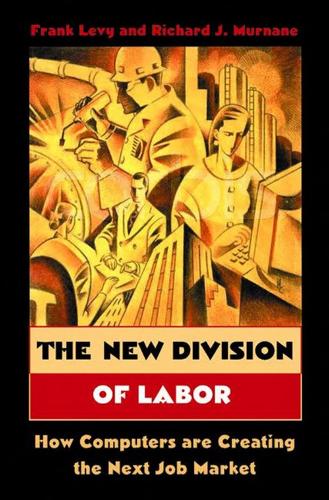
The New Division of Labor: How Computers Are Creating the Next Job Market
by
Frank Levy
and
Richard J. Murnane
Published 11 Apr 2004
She has never done an ad campaign for spaghetti sauce, but she has done ad campaigns for other quick-to-prepare meals and her knowledge of those cases gives her a useful starting point for thinking about the sauce.14 We do much of our creative work in this style: we use pattern recognition to see similarities between a new problem and relevant past work, call that past work to mind, and appropriately apply the knowledge gained in doing that work. In this case, pattern recognition occurs in seeing the points of similarity between the current problem and past experience. If the focus of this book were cognitive psychology, we would include still other models of human information processing. But for our focus— how computers alter work—a short list of models including rules-basedlogic, pattern recognition, and case-based reasoning (pattern recognition’s first cousin) serves quite well. 24 CHAPTER 2 THE LIMITS OF PATTERN RECOGNITION If we take a step back, we can see that we are well along in answering the questions we have raised: • Computers excel at processing information through the application of rules. • Computers could substitute for the Liffe traders because the information processing required to match buy and sell orders (the main task of the floor traders) could be fully described in step-bystep rules. • Stephen Saltz processed the information in the echocardiogram by recognizing patterns rather than applying step-by-step rules.
…
If the person is speaking about her male cousin, we will probably interpret “BILL” as a person’s first name unless she is speaking about her cousin’s financial problems, in which case we may have to listen more closely. When we try to program pattern recognition, problems of perception and the requirements for contextual knowledge limit what we can recognize. In technical terms, pattern recognition is programmed using neural nets and other “machine learning” software. These methods are based on the conjecture advanced earlier that human pattern recognition itself may rest on probabilistic rules. Recall that in programs using rules-based logic, the explicit rules can be stated before the program is ever written.
…
His recognition of a particular pattern helped him to form a diagnosis. Pattern recognition is an equally plausible description of how the truck driver and the four-year-old girl processed what they saw and heard. But notice that in most of these cases, people are recognizing something closer to a concept—what psychologists call a schema—than a precise template. We expect the fouryear-old girl to recognize a blue oval bowl even if she so far has seen only WHY PEOPLE STILL MATTER 23 green and red round bowls. Stephen Saltz and the truck driver have the same ability to generalize. Within cognitive science, pattern recognition is a more controversial processing model than rules-based logic.
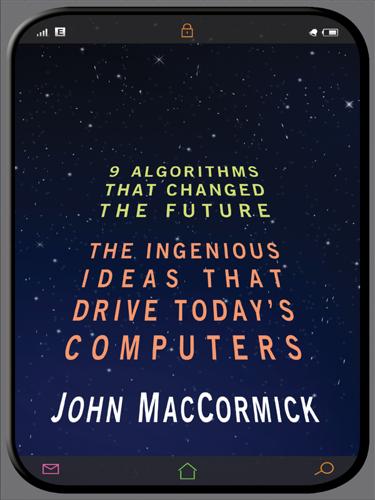
Nine Algorithms That Changed the Future: The Ingenious Ideas That Drive Today's Computers
by
John MacCormick
and
Chris Bishop
Published 27 Dec 2011
These codes are everywhere: they are used in all hard disk drives, many network transmissions, on CDs and DVDs, and even in some computer memories—but they do their job so well that we are never even aware of them. Chapter 6 is a little exceptional. It covers pattern recognition algorithms, which sneak into the list of great computer science ideas despite violating the very first criterion: that ordinary computer users must use them every day. Pattern recognition is the class of techniques whereby computers recognize highly variable information, such as handwriting, speech, and faces. In fact, in the first decade of the 21st century, most everyday computing did not use these techniques. But as I write these words in 2011, the importance of pattern recognition is increasing rapidly: mobile devices with small on-screen keyboards need automatic correction, tablet devices must recognize handwritten input, and all these devices (especially smartphones) are becoming increasingly voice-activated.
…
But as I write these words in 2011, the importance of pattern recognition is increasing rapidly: mobile devices with small on-screen keyboards need automatic correction, tablet devices must recognize handwritten input, and all these devices (especially smartphones) are becoming increasingly voice-activated. Some websites even use pattern recognition to determine what kind of advertisements to display to their users. In addition, I have a personal bias toward pattern recognition, which is my own area of research. So chapter 6 describes three of the most interesting and successful pattern recognition techniques: nearest-neighbor classifiers, decision trees, and neural networks. Compression algorithms, discussed in chapter 7, form another set of great ideas that help transform a computer into a genius at our fingertips.
…
In this chapter, on the other hand, we examine an area in which humans have a natural advantage: the field of pattern recognition. Pattern recognition is a subset of artificial intelligence and includes tasks such as face recognition, object recognition, speech recognition, and handwriting recognition. More specific examples would include the task of determining whether a given photograph is a picture of your sister, or determining the city and state written on a hand-addressed envelope. Thus, pattern recognition can be defined more generally as the task of getting computers to act “intelligently” based on input data that contains a lot of variability.

The Rise of Superman: Decoding the Science of Ultimate Human Performance
by
Steven Kotler
Published 4 Mar 2014
It’s a signal things are coming to an end, not just beginning.” These five chemicals are flow’s mighty cocktail. Alone, each packs a punch, together a wallop. Consider the chain of events that takes us from pattern recognition through future prediction. Norepinephrine tightens focus (data acquisition); dopamine jacks pattern recognition (data processing); anandamide accelerates lateral thinking (widens the database searched by the pattern recognition system). The results, as basketball legend Bill Russell explains in his biography Second Wind, really do feel psychic: Every so often a Celtic game would heat up so that it would become more than a physical or even mental game, and would be magical.
…
We are making continuous low-level predictions in parallel across all our senses. So important is prediction to survival, that when the brain guesses correctly—i.e., when the brain’s pattern-recognition system identifies a correct pattern—we get a reward, a tiny squirt of the feel-good neurochemical dopamine. Dopamine feels really good. Cocaine, widely considered one of the most addictive substances on earth, does little besides cause the brain to release dopamine and then block its reuptake. This same rush reinforces pattern recognition—it’s why learning happens. But dopamine actually does double duty. Not only does this neurotransmitter help us learn new patterns, it also amps up attention and reduces noise in neural networks, making it easier for us to notice more patterns.
…
When these athletes actually take a risk (putting themselves in a high-consequence situation rather than a high-risk environment), an even bigger neurochemical response is facilitated. Risk taking itself releases another big squirt of dopamine, further enhancing performance and increasing pattern recognition. Once the pattern-recognition system lights onto the proper response (i.e., identifies the chunk that will save the athlete’s hide in this particular situation), even more dopamine is released and the cascade continues. As we know these facts, we also know a bit about hacking the “high consequence” flow trigger.
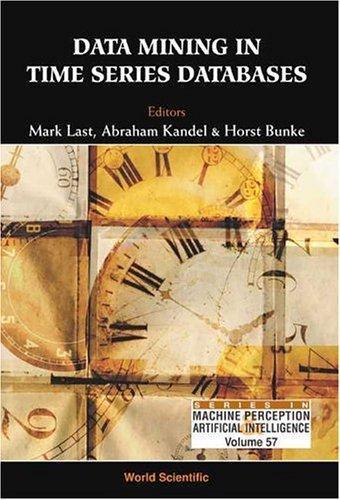
Data Mining in Time Series Databases
by
Mark Last
,
Abraham Kandel
and
Horst Bunke
Published 24 Jun 2004
Wang (Northeastern Univ., USA) Vol. 43: Agent Engineering (Eds. Jiming Liu, Ning Zhong, Yuan Y. Tang and Patrick S. P. Wang) Vol. 44: Multispectral Image Processing and Pattern Recognition (Eds. J. Shen, P. S. P. Wang and T. Zhang) Vol. 45: Hidden Markov Models: Applications in Computer Vision (Eds. H. Bunke and T. Caelli) Vol. 46: Syntactic Pattern Recognition for Seismic Oil Exploration (K. Y. Huang) Vol. 47: Hybrid Methods in Pattern Recognition (Eds. H. Bunke and A. Kandel ) Vol. 48: Multimodal Interface for Human-Machine Communications (Eds. P. C. Yuen, Y. Y. Tang and P. S. P. Wang) Vol. 49: Neural Networks and Systolic Array Design (Eds.
…
Fast Median Search in Metric Spaces, in A. Amin and D. Dori (eds.). Advances in Pattern Recognition, pp. 905–912, SpringerVerlag. 20. Kohonen, T. (1985). Median Strings. Pattern Recognition Letters, 3, 309–313. 21. Kruskal, J.B. (1983). An Overview of Sequence Comparison: Time Warps, String Edits, and Macromolecules. SIAM Reviews, 25(2), 201–237. 22. Kruzslicz, F. (1999) Improved Greedy Algorithm for Computing Approximate Median Strings. Acta Cybernetica, 14, 331–339. 23. Lewis, T., Owens, R., and Baddeley, A. (1999). Averaging Feature Maps. Pattern Recognition, 32(9), 1615–1630. 24. Lopresti, D. and Zhou, J. (1997). Using Consensus Sequence Voting to Correct OCR Errors.
…
Use of Median String for Classification. Proc. of Int. Conf. on Pattern Recognition, pp. 907–910. 27. Martinez-Hinarejos, C.D. Juan, A. and Casacuberta, F. (2001). Improving Classification Using Median String and NN Rules. Proc. of National Symposium on Pattern Recognition and Image Analysis. 28. Marzal, A. and Vidal, E. (1993). Computation of Normalized Edit Distance and Applications. IEEE Trans. on PAMI, 15(9), 926–932. 29. Marzal, A. and Barrachina, S. (2000). Speeding up the Computation of the Edit Distance for Cyclic Strings. Proc. of Int. Conf. on Pattern Recognition, 2, pp. 895–898. 30. Mico, L. and Oncina, J. (2001).
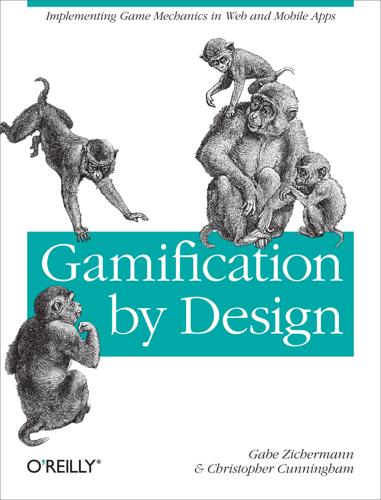
Gamification by Design: Implementing Game Mechanics in Web and Mobile Apps
by
Gabe Zichermann
and
Christopher Cunningham
Published 14 Aug 2011
Organizing and Creating Order Orkut, Social networking score out-of-scale promotional opportunities, 9. Fame, Getting Attention overjustification/replacement bias, Intrinsic versus Extrinsic Motivation P paginate( ) method, Optimizing Leaderboard Output pattern recognition, 1. Pattern Recognition, 1. Pattern Recognition advanced subway rider (example), 1. Pattern Recognition Pavlov, Ivan, Reinforcement personal motivators, Designing the Games pet games, virtual, 12. Nurturing, Growing photo-sharing websites, Skill points Pink, Daniel H., Intrinsic versus Extrinsic Motivation Plants vs. Zombies iPhone game, Progression of difficulty player detail view, Altered Beast site, The Trophy Case player re-engagement in social engagement loops, Engagement Loop Examples players, Foundations, Player Types, Player Types, Social Games ranking top five social actions taken by, Social Games types of, Player Types, Player Types breakdown of percentages, Player Types pluralization features, Ruby on Rails, Adding a Player’s Level to Topic Posts points, Game Mechanics, Video game score, Social networking score, Point Systems, Point Systems, Experience points, Redeemable points, Karma points, Karma points, How to Use Point Systems, Level Design, How to Use Point Systems, How to Use Point Systems, Virtual economies, Dual economy, Dual economy, Dual economy, Example: Assigned Point Values, Levels, Level Design, Game Mechanics and Dynamics in Greater Depth, 5.
…
Dice roll Things people like Example mechanic[a] Example mechanic[b] Example mechanic[c] 1 Pattern Recognition Memory-game interactions: items are revealed, then hidden, then combined Combine like items, as in object-matching games Earn and burn: learn how to optimize virtual economies 2 Collecting Collectible objects, such as stamps and badges Scarcity and return: limited-availability items, time-based items Trading mechanisms with others 3 Surprise and Unexpected Delight Slot machines, variable reinforcement Easter eggs, geocaching, hidden objects Unexpected dynamism, such as Foursquare’s unique and funny badges 4 Organizing and Creating Order Time/job/throughput challenges, such as in Diner Dash or Chocolatier Combining like items and/or creating symmetry Organizing groups of people, like a team 5 Gifting Easily transferrable virtual items Gift reminders and recommendations Karma points: only purpose is as a “gift” 6 Flirtation and Romance Poking, smiling, flirting: lightweight, easy-to-ignore interactions Hot or Not style: choose people from a list/group and express interest Virtual items or lightweight “props,” shout-outs 7 Recognition for Achievement Badges, trophies Contests, game shows, award shows Kudos system for reinforcement, e.g., Nike Plus and Lance Armstrong 8 Leading Others Team-based or cooperative challenges Levels associated with leadership Long-term, “great” challenges that require multiple players 9 Fame, Getting Attention Leaderboards based on player feedback, scores, and promotion Award shows, game shows, contests Large or out-of-scale promotional opportunities, e.g., images on Flickr’s home page 10 Being the Hero “Rescue the maiden” challenges Friends ask for help, you respond with help MacGruber: things are going to blow up in 10…9… 11 Gaining Status Badges, trophies—especially public ones Scarce, limited-edition items that are public Public, obvious scores and leaderboards 12 Nurturing, Growing Tamagotchi style: feed this thing regularly or it will die Points that expire in the absence of activity, growth Pyramid scoring, with cumulative scores for teams and leaders [a] Cover these columns with a sheet of paper first and reveal as needed [b] Cover these columns with a sheet of paper first and reveal as needed [c] Cover these columns with a sheet of paper first and reveal as needed Game Mechanics in Depth Most of the game mechanics in Table 5-1 can be useful and interesting to your gamified system. Understanding when and how to use them can be daunting, so we’ve provided some depth here on each of these interactions. 1. Pattern Recognition Pattern recognition is the dynamic user interaction most associated with unpacking systemic complexity. When players seek to understand the world around them, and discover the “hidden meaning” or ways that complex items interact, they are seeking pattern recognition. Once patterns are detected, players organize the world around those patterns, and they usually feel intrinsically rewarded just for having discovered them.
…
Essentially, riders have leveled up if they know where and when they can get a seat or exit a crowded station a few minutes faster. Figure 5-2. Pattern recognition: the advanced subway rider knows where to stand to get a seat or to be close to the right exit (image licensed under CC; photo by http://www.flickr.com/photos/piercedavid). Exit Strategy, shown in Figure 5-3, is an application that lets players know where to be to best exit the subway. It takes ad hoc knowledge from users/maps and makes it publicly available. It can’t help you get a seat, though. Figure 5-3. Pattern recognition: the advanced subway rider game, Exit Strategy. For pattern recognition, there are a number of game mechanics we can use to create player engagement.

The Age of Spiritual Machines: When Computers Exceed Human Intelligence
by
Ray Kurzweil
Published 31 Dec 1998
Humans are far more skilled at recognizing patterns than in thinking through logical combinations, so we rely on this aptitude for almost all of our mental processes. Indeed, pattern recognition comprises the bulk of our neural circuitry. These faculties make up for the extremely slow speed of human neurons. The reset time on neural firing is about five milliseconds, permitting only about two hundred calculations per second in each neural connection.25 We don’t have time, therefore, to think too many new thoughts when we are pressed to make a decision. The human brain relies on precomputing its analyses and storing them for future reference. We then use our pattern-recognition capability to recognize a situation as comparable to one we have thought about and then draw upon our previously considered conclusions.
…
Her neural nets have gained all the insights needed: Take a step back if the ball has gone above my field of view; take a step forward if the ball is below a certain level in my field of view and no longer rising, and so on. The human ballplayer is not mentally computing equations. Nor is there any such computation going on unconsciously in the player’s brain. What is going on is pattern recognition, the foundation of most human thought. One key to intelligence is knowing what not to compute. A successful person isn’t necessarily better than her less successful peers at solving problems; her pattern-recognition facilities have just learned what problems are worth solving. Building Silicon Nets Most computer-based neural net applications today simulate their neuron models in software.
…
Actually, computerized investment programs are using both evolutionary algorithms and neural nets; but the computerized neural nets are not nearly as flexible as the human variety just yet. THIS NOTION THAT WE DON’T REALLY UNDERSTAND HOW WE RECOGNIZE THINGS BECAUSE MY PATTERN-RECOGNITION STUFF IS DISTRIBUTED ACROSS A REGION OF MY BRAIN ... Yes. WELL, IT DOES SEEM TO EXPLAIN A FEW THINGS. LIKE WHEN I JUST SEEM TO KNOW WHERE MY KEYS ARE EVEN THOUGH I DON’T REMEMBER HAVING PUT THEM THERE. OR THAT ARCHETYPAL OLD WOMAN WHO CAN TELL WHEN A STORM IS COMING, BUT CAN’T REALLY EXPLAIN HOW SHE KNOWS. That’s actually a good example of the strength of human pattern recognition. That old woman has a neural net that is triggered by a certain combination of other perceptions—animal movements, wind patterns, sky color, atmospheric changes, and so on.
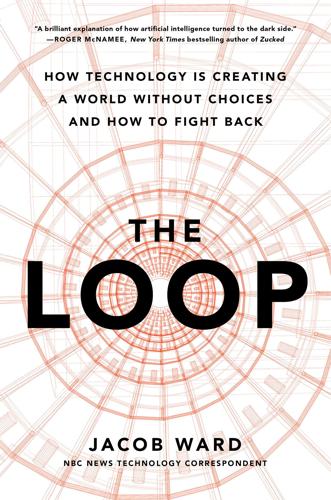
The Loop: How Technology Is Creating a World Without Choices and How to Fight Back
by
Jacob Ward
Published 25 Jan 2022
When it comes to the central systems of modern life—employment, housing, criminal justice, education—discrimination on the basis of something like gender, race, or sexual orientation is against the law. And when we encounter pattern-recognition systems that turn out to amplify that prejudice, we can start from an agreed understanding that prejudice is bad and illegal. The difficulty, of course, is that pattern-recognition systems are difficult to examine for something like discriminatory choices. Machine learning happens inside a black box of improvisational computational effort—literally a roomful of monkeys assigned to peck away at typewriters in the hopes of eventually and accidentally writing Shakespeare.
…
But AI-driven reform like this isn’t likely to happen across our lives the way AI-driven marketing, political messaging, and curation is. The reason is simple: you don’t make easy money on reform. There is no lucrative market for this kind of pattern recognition the way there is for one that helps you find a sales lead or identify a job candidate. But there is a place that capitalist considerations could create an incentive. Perhaps the financial strain of lawsuits in the case of police shootings can help to create a market. It could be that pattern-recognition systems could be used to avoid losing money. The family of Louisville medical worker Breonna Taylor reached a $12 million settlement with the city—the largest payout in Louisville’s history—after its officers shot and killed her in her apartment.
…
The second loop is the way that modern forces—consumer technology, capitalism, marketing, politics—have sampled the innermost loop of behavior and reflected those patterns back at us, resulting in everything from our addiction to cigarettes and gambling to systemic racism in real estate and machine learning. The outermost loop is the one for which this book is named. It’s what I worry is coming, a future in which our ancient and modern tendencies have been studied, sampled, fed into automated pattern-recognition systems, and sold back to us in servings we will be doubly conditioned to consume without a second thought. It’s the loop that has already erased our conscious musical tastes and replaced them with weekly suggestions from Spotify, based on what was served last week. It’s the loop that samples our political tendencies and social appetites and puts us together on Facebook with people whose patterns complement our own, such that we become attached to a powerful and all-consuming group identity, and have no patience for people outside of it.

The Singularity Is Near: When Humans Transcend Biology
by
Ray Kurzweil
Published 14 Jul 2005
If you obtain an electrocardiogram (ECG) your doctor is likely to receive an automated diagnosis using pattern recognition applied to ECG recordings. My own company (Kurzweil Technologies) is working with United Therapeutics to develop a new generation of automated ECG analysis for long-term unobtrusive monitoring (via sensors embedded in clothing and wireless communication using a cell phone) of the early warning signs of heart disease.189 Other pattern-recognition systems are used to diagnose a variety of imaging data. Every major drug developer is using AI programs to do pattern recognition and intelligent data mining in the development of new drug therapies.
…
Other research on the visual system of the macaque monkey includes studies on many specific types of cells, connectivity patterns, and high-level descriptions of information flow.102 Extensive literature supports the use of what I call "hypothesis and test" in more complex pattern-recognition tasks. The cortex makes a guess about what it is seeing and then determines whether the features of what is actually in the field of view match its hypothesis.103 We’re often more focused on the hypothesis than the actual test, which explains why people often see and hear what they expect to perceive rather than what is actually there. "Hypothesis and test" is also a useful strategy in our computer-based pattern-recognition systems. Although we have the illusion of receiving high-resolution images from our eyes, what the optic nerve actually sends to the brain is just outlines and clues about points of interest in our visual field.
…
Of course, even this method of communication has been very beneficial, as it has distinguished us from other animals and has been an enabling factor in the creation of technology. Human skills are able to develop only in ways that have been evolutionarily encouraged. Those skills, which are primarily based on massively parallel pattern recognition, provide proficiency for certain tasks, such as distinguishing faces, identifying objects, and recognizing language sounds. But they're not suited for many others, such as determining patterns in financial data. Once we fully master pattern-recognition paradigms, machine methods can apply these techniques to any type of pattern.158 Machines can pool their resources in ways that humans cannot. Although teams of humans can accomplish both physical and mental feats that individual humans cannot achieve, machines can more easily and readily aggregate their computational, memory, and communications resources.
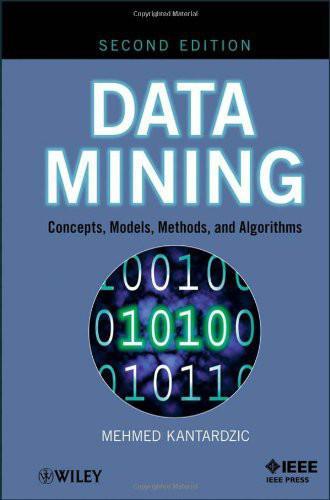
Data Mining: Concepts, Models, Methods, and Algorithms
by
Mehmed Kantardzić
Published 2 Jan 2003
For both, autoassociation and heteroassociation, there are two main phases in the application of an ANN for pattern-association problems: 1. the storage phase, which refers to the training of the network in accordance with given patterns, and 2. the recall phase, which involves the retrieval of a memorized pattern in response to the presentation of a noisy or distorted version of a key pattern to the network. 7.4.2 Pattern Recognition Pattern recognition is also a task that is performed much better by humans than by the most powerful computers. We receive data from the world around us via our senses and are able to recognize the source of the data. We are often able to do so almost immediately and with practically no effort. Humans perform pattern recognition through a learning process, so it is with ANNs. Pattern recognition is formally defined as the process whereby a received pattern is assigned to one of a prescribed number of classes. An ANN performs pattern recognition by first undergoing a training session, during which the network is repeatedly presented a set of input patterns along with the category to which each particular pattern belongs.
…
Han, J., M. Kamber, Data Mining: Concepts and Techniques, 2nd edition, Morgan Kaufmann, San Francisco, CA, 2006. Jain, A., R. P. W. Duin, J. Mao, Statistical Pattern Recognition, IEEE Transactions on Pattern Analysis and Machine Intelligence, Vol. 22, No. 1, 2000, pp. 4–37. Kennedy, R. L., et al. Solving Data Mining Problems through Pattern Recognition, Prentice Hall, Upper Saddle River, NJ, 1998. Kil, D. H., F. B. Shin, Pattern Recognition and Prediction with Applications to Signal Characterization, AIP Press, Woodburg, NY, 1996. Liu, H., H. Motoda, eds., Feature Extraction, Construction and Selection: A Data Mining Perspective, Kluwer Academic Publishers, Boston, MA, 1998.
…
Chandola, V. Kumar, Similarity Measures for Categorical Data: A Comparative Evaluation, SIAM Conference, 2008, pp. 243–254. Bow, S., Pattern Recognition and Image Preprocessing, Marcel Dekker, New York, 1992. Chen, C. H., L. F. Pau, P. S. P. Wang, Handbook of Pattern Recognition & Computer Vision, World Scientific Publ. Co., Singapore, 1993. Dzeroski, S., N. Lavrac, eds., Relational Data Mining, Springer, Berlin, 2001. Gose, E., R. Johnsonbaugh, S. Jost, Pattern Recognition and Image Analysis, Prentice Hall, Inc., Upper Saddle River, NJ, 1996. Han, J., M. Kamber, Data Mining: Concepts and Techniques, 2nd edition, Elsevier Inc., San Francisco, CA, 2006.

AIQ: How People and Machines Are Smarter Together
by
Nick Polson
and
James Scott
Published 14 May 2018
The input might be a sound wave (for interpreting a request to a digital home assistant), a sequence of genes (for predicting someone’s susceptibility to a disease), or an English phrase (for translation into Spanish). As the table below indicates, anything you can represent as a set of numbers can be used as an input in one of these pattern-recognition systems. As we’ll discuss later, though, sometimes it’s obvious how to represent an input as a number, and sometimes it isn’t. In this chapter, you’ll learn the two key ideas behind how these pattern-recognition systems work: 1. In AI, a “pattern” is a prediction rule that maps an input to an expected output. 2. “Learning a pattern” means fitting a good prediction rule to a data set. There’s a bit of math involved here, but have no fear: these ideas are actually quite simple and elegant once you get to know them, and we’re going to spend the rest of the chapter helping you do just that.
…
Food and Drug Administration approved Medtronic’s latest model, the first artificial pancreas designed to level out both high and low blood-sugar levels.45 AI for Medical Imaging Diagnostic imaging offers an even more immediate example of where AI can make a difference. Many common forms of medical image analysis, from looking at a chest X-ray to examining cancer cells under a microscope, involve a classic pattern-recognition problem: the inputs are the features extracted from the image, and the output is the diagnosis. As we learned in chapter 2, computers are absolutely brilliant at learning how to predict outputs from inputs, especially for images—and with more data and newer pattern-recognition algorithms, they’re getting better all the time. For some image-driven diagnoses, you soon may not even need to visit a doctor’s office. Take, for example, the problem of diagnosing a skin lesion.
…
Correctional Offender Management Profiling for Alternative Sanctions (COMPAS) Craven, John credit cards digital assistants and fraud Crimean War criminal justice system cucumbers data, missing data accumulation, pace of data mining data science anomaly detection and assumptions and democracy and feature engineering health care and imputation institutional commitment and legacy of Florence Nightingale lurking variable pattern recognition and personalization and prediction rules and user-based collaborative filtering data sets anomalies in assumptions and bias in, bias out ImageNet Visual Recognition Challenge massive pattern recognition and privacy sharing databases compilers and health care natural language processing Netflix smart cities de Moivre’s equation (square-root rule) decision-making anomaly detection and human voting deep learning corn yields and electricity demands and gender portrayals in film and honeybees and prediction rules and privacy and Descartes Labs Dickens, Charles Christmas Carol, A Martin Chuzzlewit digital assistants Alexa (Amazon) algorithms and Google Home medicine and speech recognition and DiMaggio, Joe Dole, Bob Duke University early-warning systems Earth Echo, Amazon e-commerce Eggo, Rosalind Einstein, Albert energy industry Facebook advertisers anomaly detection “data for gossip” bargain data sets data storage image classification and recognition market dominance pattern-recognition system personalization presidential election of 2016 and targeted marketing Facebook Messenger fake news financial industry Bayes’s rule and investing gambling strategy indexing strategy Fitbit Ford, Henry Formula 1 racing Fowler, Samuel Lemuel Friedman, Milton Friends (television series) Gawande, Atul: The Checklist Manifesto Geena Davis Institute on Gender in Media gender bias in films stereotypes word vectors and Google anomaly detection data sets data storage image classification Inception (neural-network model) market dominance pattern-recognition system personalization search engine self-driving car speech recognition TensorFlow word2vec model Google Google DeepMind Google Doodle Google Flu Trends Google Home Google Ngram Viewer Google Translate Google Voice Gould, Stephen Jay GPS technology Great Andromeda Nebula.

I, Warbot: The Dawn of Artificially Intelligent Conflict
by
Kenneth Payne
Published 16 Jun 2021
They’ll decide how to respond to their adversaries and how to coordinate with their allies using very different techniques from ours. That means different tactics in battle, but also the prospect for larger differences in war. And then there’s creativity. Humans have it in spades. The incumbent world chess champion Magnus Carlsen is a great example of human creativity—a mix of natural genius (for memory, and pattern recognition), but with something extra. Carlsen argues that this is intuition, an instinct for the right move. But what is intuition, and what makes Carlsen’s instincts better than mine? And why are the world’s best chess players vulnerable to number crunching machines that don’t use intuition at all? Might the most creative generals be similarly vulnerable?
…
Famously, at one early conference in 1956, participants, now legendary names in the field, judged that in just a few short weeks they would make ‘a significant advance’ in using computers to tackle ‘problems now reserved for humans’.16 Heady stuff. Two approaches to mind Two cognitive tasks with military utility seemed particularly promising—object recognition and natural language translation. Like codebreaking, and indeed chess, both tasks drew on key attributes of the new computers—pattern recognition and logic. In turn, those two attributes played to the strength of two rival approaches to machine intelligence that emerged early on and have shaped the field ever since. As so often in AI, both approaches were inspired by human minds. Understanding more about them will help us understand more about the possibilities for warbot minds and the ways they have developed to this point.
…
And they had money to spend on talent too—hoovering up the new AI stars from their university posts: LeCun to Facebook, Hinton to Google, Ng to Google, then Baidu. The new tech giants saw the huge value in using intelligent machines to make sense of the unending torrent of internet data—to find out more about their customers and offer new services. Like the military before them, they shared an interest in pattern recognition, search, and image and language processing. When it came, the revolution would be feline. But that was only the start. It’s not even a decade since Google’s cat breakthrough, and the pace of innovation is still accelerating, another important feature of the modern AI landscape. Now deep nets can recognise individual faces, lip read video imagery and produce a simultaneous transcription.
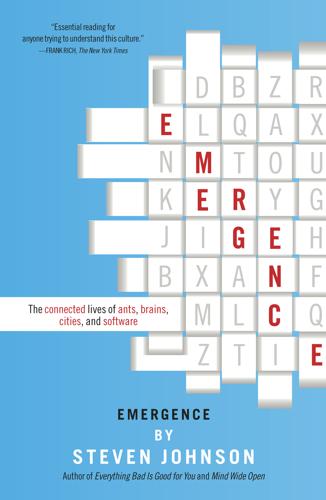
Emergence
by
Steven Johnson
In 1969, Marvin Minsky and Seymour Papert published “Perceptrons,” which built on Selfridge’s Pandemonium device for distributed pattern recognition, leading the way for Minsky’s bottom-up Society of Mind theory developed over the following decade. In 1972, a Rockefeller University professor named Gerald Edelman won the Nobel prize for his work decoding the language of antibody molecules, leading the way for an understanding of the immune system as a self-learning pattern-recognition device. Prigogine’s Nobel followed five years later. At the end of the decade, Douglas Hofstadter published Gödel, Escher, Bach, linking artificial intelligence, pattern recognition, ant colonies, and “The Goldberg Variations.”
…
But unlike most computers, the brain is a massively parallel system, with 100 billion neurons all working away at the same time. That parallelism allows the brain to perform amazing feats of pattern recognition, feats that continue to confound digital computers—such as remembering faces or creating metaphors. Because each individual neuron is so slow, Kurzweil explains, “we don’t have time . . . to think too many new thoughts when we are pressed to make a decision. The human brain relies on precomputing its analyses and storing them for future reference. We then use our pattern-recognition capability to recognize a situation as compatible to one we have thought about and then draw upon our previously considered conclusions.”
…
They get their smarts from below. In a more technical language, they are complex adaptive systems that display emergent behavior. In these systems, agents residing on one scale start producing behavior that lies one scale above them: ants create colonies; urbanites create neighborhoods; simple pattern-recognition software learns how to recommend new books. The movement from low-level rules to higher-level sophistication is what we call emergence. Imagine a billiard table populated by semi-intelligent, motorized billiard balls that have been programmed to explore the space of the table and alter their movement patterns based on specific interactions with other balls.
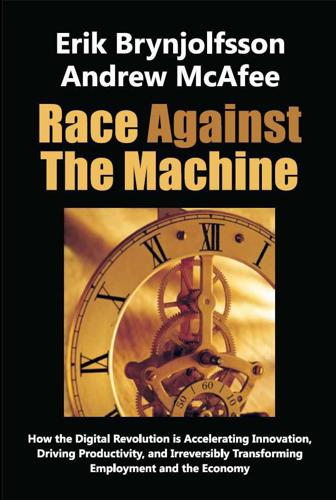
Race Against the Machine: How the Digital Revolution Is Accelerating Innovation, Driving Productivity, and Irreversibly Transforming Employment and the Economy
by
Erik Brynjolfsson
Published 23 Jan 2012
Where People Still Win (at Least for Now) Although computers are encroaching into territory that used to be occupied by people alone, like advanced pattern recognition and complex communication, for now humans still hold the high ground in each of these areas. Experienced doctors, for example, make diagnoses by comparing the body of medical knowledge they’ve accumulated against patients’ lab results and descriptions of symptoms, and also by employing the advanced subconscious pattern recognition abilities we label “intuition.” (Does this patient seem like they’re holding something back? Do they look healthy, or is something off about their skin tone or energy level?’)
…
In the book’s second chapter, “Why People Still Matter,” the authors present a spectrum of information-processing tasks. At one end are straightforward applications of existing rules. These tasks, such as performing arithmetic, can be easily automated. After all, computers are good at following rules. At the other end of the complexity spectrum are pattern-recognition tasks where the rules can’t be inferred. The New Division of Labor gives driving in traffic as an example of this type of task, and asserts that it is not automatable: The … truck driver is processing a constant stream of [visual, aural, and tactile] information from his environment. … To program this behavior we could begin with a video camera and other sensors to capture the sensory input.
…
After the chat session ended, both customers and employees were asked whether the automatically translated messages were useful—whether they were clear enough to allow the people to take meaningful action. Approximately 90% reported that they were. In this case, automatic translation was good enough for business purposes. The Google driverless car shows how far and how fast digital pattern recognition abilities have advanced recently. Lionbridge’s GeoFluent shows how much progress has been made in computers’ ability to engage in complex communication. Another technology developed at IBM’s Watson labs, this one actually named Watson, shows how powerful it can be to combine these two abilities and how far the computers have advanced recently into territory thought to be uniquely human.
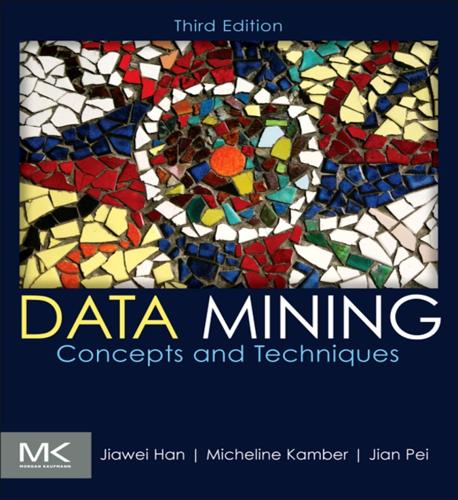
Data Mining: Concepts and Techniques: Concepts and Techniques
by
Jiawei Han
,
Micheline Kamber
and
Jian Pei
Published 21 Jun 2011
MCM83, MCM86, KM90 and MT94 and Readings in Machine Learning by Shavlik and Dietterich [SD90]. Machine learning and pattern recognition research is published in the proceedings of several major machine learning, artificial intelligence, and pattern recognition conferences, including the International Conference on Machine Learning (ML), the ACM Conference on Computational Learning Theory (COLT), the IEEE Conference on Computer Vision and Pattern Recognition (CVPR), the International Conference on Pattern Recognition (ICPR), the International Joint Conference on Artificial Intelligence (IJCAI), and the American Association of Artificial Intelligence Conference (AAAI).
…
Other sources of publication include the Journal of the Royal Statistical Society, The Annals of Statistics, the Journal of American Statistical Association, Technometrics, and Biometrika. Textbooks and reference books on machine learning and pattern recognition include Machine Learning by Mitchell [Mit97]; Pattern Recognition and Machine Learning by Bishop [Bis06]; Pattern Recognition by Theodoridis and Koutroumbas [TK08]; Introduction to Machine Learning by Alpaydin [Alp11]; Probabilistic Graphical Models: Principles and Techniques by Koller and Friedman [KF09]; and Machine Learning: An Algorithmic Perspective by Marsland [Mar09].
…
(b) Is it a simple transformation or application of technology developed from databases, statistics, machine learning, and pattern recognition? (c) We have presented a view that data mining is the result of the evolution of database technology. Do you think that data mining is also the result of the evolution of machine learning research? Can you present such views based on the historical progress of this discipline? Address the same for the fields of statistics and pattern recognition. (d) Describe the steps involved in data mining when viewed as a process of knowledge discovery. 1.2 How is a data warehouse different from a database?

The Second Machine Age: Work, Progress, and Prosperity in a Time of Brilliant Technologies
by
Erik Brynjolfsson
and
Andrew McAfee
Published 20 Jan 2014
Algorithms do, however, include the most common and important things, and they generally work quite well at tasks like predicting payback rates. Computers, therefore, can and should be used for mortgage approval.* . . . But Lousy at Pattern Recognition At the other end of Levy and Murnane’s spectrum, however, lie information processing tasks that cannot be boiled down to rules or algorithms. According to the authors, these are tasks that draw on the human capacity for pattern recognition. Our brains are extraordinarily good at taking in information via our senses and examining it for patterns, but we’re quite bad at describing or figuring out how we’re doing it, especially when a large volume of fast-changing information arrives at a rapid pace.
…
As futurist Kevin Kelly put it “You’ll be paid in the future based on how well you work with robots.”7 Sensing Our Advantage So computers are extraordinarily good at pattern recognition within their frames, and terrible outside them. This is good news for human workers because thanks to our multiple senses, our frames are inherently broader than those of digital technologies. Computer vision, hearing, and even touch are getting exponentially better all the time, but there are still tasks where our eyes, ears, and skin, to say nothing of our noses and tongues, surpass their digital equivalents. At present and for some time to come, the sensory package and its tight connection to the pattern-recognition engine of the brain gives us a broader frame.
…
Zara relies on its store managers around the world to order exactly, and only, the merchandise that will sell in that location over the next few days.8 Managers figure this out not by consulting algorithms but instead by walking around the store, observing what shoppers (particularly cool ones) are wearing, talking to them about what they like and what they’re looking for, and generally doing many things at which people excel. Zara store managers do a lot of visual pattern recognition, engage in complex communication with customers, and use all of this information for two purposes: to order existing clothes using a broad frame of inputs, and to engage in ideation by telling headquarters what kinds of new clothes would be popular in their location. Zara has no plans to switch from human-based to machine-based ordering any time soon, and we think they’re making a very smart decision. So ideation, large-frame pattern recognition, and the most complex forms of communication are cognitive areas where people still seem to have the advantage, and also seem likely to hold on to it for some time to come.

Heart of the Machine: Our Future in a World of Artificial Emotional Intelligence
by
Richard Yonck
Published 7 Mar 2017
Some worked with physiological signals such as electromyography, blood volume pulse, galvanic skin response, and respiration. To many of these, they applied a range of pattern recognition techniques in order to train systems to detect the meanings and variations of expression, something we humans do naturally and effortlessly. Pattern recognition is a branch of machine learning and artificial intelligence that has been developing in sophistication for decades. Because it’s a very specifically focused form of artificial intelligence, it’s sometimes referred to as a form of narrow or weak AI. Though these programs attempt to replicate the incredible pattern recognition our own brains perform so easily, the techniques used by our neurons can’t be fully emulated using machine logic.
…
In many respects researchers had already been doing this a century before, studying autonomic responses that eventually led to the development of polygraphs and other forms of lie detectors. (For more on this, see chapter 10.) Reading facial expressions, though, is in many respects a considerably harder problem than mere visual pattern recognition and matching, at least for a machine. The nuances and variations that occur—across cultures, individuals, even a single person’s face—can be so great that it wasn’t very long ago that many people considered this to be an insurmountable problem for a computer. Even with the pattern recognition capabilities made possible by the computers available at that time, the problem still remained of how to classify and distinguish what was actually being detected.
…
First, a series of technological conditions are now in place that allow this particular form of affective recognition to be developed: webcams and smartphone cameras of sufficient resolution and speed; available processing power in all of our devices, be they desktops, laptops, and perhaps most importantly our smartphones; and connectivity and transmission speeds that allow devices to connect to servers and services, whether they’re hardwired, Wi-Fi connected, or cellular devices. The second reason is much more interesting. Computer-based pattern recognition and deep learning are technologies that have attained a considerable level of sophistication and ability in recent years. In some respects this can result in pattern recognition that is far more capable than what people do naturally; in others, it is nowhere near as adept. This may be because when there are reasonably structured universal features to something—say, the tines of a fork, the four wheels of a car, or the features of the alphabet—a vision system based on an artificial neural network can be trained to do amazingly well, even under poor conditions.

The Deep Learning Revolution (The MIT Press)
by
Terrence J. Sejnowski
Published 27 Sep 2018
Frank Rosenblatt at Cornell University (figure 3.4) was one of the earliest to mimic the architecture of our visual system for automatic pattern recognition.7 He invented a deceptively simple network called a “perceptron,” a learning algorithm that could learn how to classify patterns into categories, such as letters of the alphabet. Algorithms are step-by-step procedures that you follow to achieve particular goals, much as you would a recipe to bake a cake (chapter 13 will explain algorithms in general). If you understand the basic principles for how a perceptron learns to solve a pattern recognition problem, you are halfway to understanding how deep learning works.
…
If individuals can quickly get an expert assessment, they will see their doctors office at an early stage of a skin disease, when it is easier to treat. All doctors will become better at diagnosing rare skin diseases with the help of deep learning.16 Deep Cancer The detection of metastatic breast cancer in images of lymph node biopsies on slides is done by experts who make mistakes, mistakes that have deadly consequences. This is a pattern recognition problem for which deep learning should excel. And indeed, a deep learning network trained on a large dataset of slides for which ground truth was known reached an accuracy of 0.925, good but not as good as experts who achieved 0.966 on the same test set.17 However, when the predictions of deep learning were combined The Rise of Machine Learning 11 Figure 1.5 Artist’s impression of a deep learning network diagnosing a skin lesion with high accuracy, cover of February 2, 2017, issue of Nature.
…
Learning How to Become More Intelligent Is AlphaGo intelligent? There has been more written about intelligence than any other topic in psychology except consciousness, both of which are difficult to define. Psychologists since the 1930s distinguish between fluid intelligence, which uses reasoning and pattern recognition in new situations to solve new problems, without depending on previous knowledge, and crystallized intelligence, which depends on previous knowledge and is what the standard IQ tests measure. Fluid intelligence follows a developmental trajectory, reaching a peak in early adulthood and decreasing with age, whereas crystallized intelligence increases slowly and asymptotically as you age until fairly late in life.
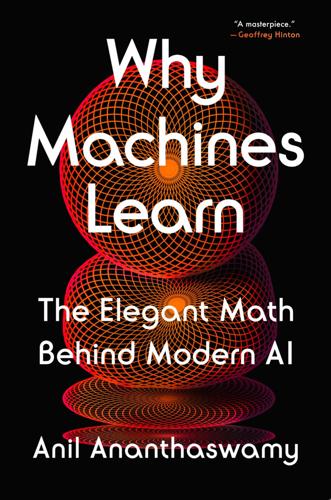
Why Machines Learn: The Elegant Math Behind Modern AI
by
Anil Ananthaswamy
Published 15 Jul 2024
She developed a more efficient method for training Hopfield networks and tried to use those networks to classify images of handwritten digits. But the peculiar nature of the networks made them rather ineffective at such classification tasks. Guyon moved on to other algorithms for pattern recognition. She picked up the “bible” of the field at the time, a book on pattern classification by Richard Duda and Peter Hart—we met Hart in chapter 5, as the co-inventor of the Cover-Hart k-nearest neighbor algorithm—and began implementing and benchmarking various pattern recognition algorithms. Two ideas that Guyon encountered while obtaining her doctorate directly connect to her later work at Bell Labs. One was the idea of optimal margin classifiers.
…
An example of this latter algorithm—whose roots probably lie in intuitions harbored by the first humans—got its start at Stanford in the 1960s (a few years after Bernard Widrow developed ADALINE). It came to be called the nearest neighbor (NN) algorithm, and it showed a very different way to do pattern recognition. And in much the way the perceptron’s convergence proof made people sit up and take notice, the NN algorithm achieved the same, doing almost as well, in ideal scenarios, as the Bayes optimal classifier, which we now know is the best ML game in town. But the NN algorithm does so without making any assumptions about the underlying distribution of the data.
…
THE MAKINGS OF AN ALGORITHM One day, when he wandered into a bookstore in New Haven, Connecticut, Pelillo stumbled upon a slim book called Theories of Vision from Al-Kindi to Kepler. It was the late 1990s, and Pelillo was then a visiting professor at Yale. Besides doing research in computer vision, pattern recognition, and machine learning, he had a penchant for the history and philosophy of science and a love of math. The slim book, at just over two hundred pages, was alluring. It argued that Alhazen was “the most significant figure in the history of optics between antiquity and the seventeenth century.”

Architects of Intelligence
by
Martin Ford
Published 16 Nov 2018
JOSH TENENBAUM: To me, the idea of using neural networks with lots of layers is also just one tool in the toolkit. What that’s good at is problems of pattern recognition, and it has proven to be a practical, scalable route for it. Where that kind of deep learning has really had success is either in problems that are traditionally seen as pattern recognition problems, like speech recognition and object recognition, or problems that can be in some way coerced into or turned into pattern recognition problems. Take Go for example. AI researchers have long believed that playing Go would require some kind of sophisticated pattern recognition, but they didn’t necessarily understand that it could be solved using the same kind of pattern recognition approaches you would use for perception problems in vision and speech.
…
If you look beyond any one task, like playing Go or playing chess, to the broader problems of intelligence, though, the idea that you’re going to turn all of the intelligence into a pattern recognition problem is ridiculous, and I don’t think any serious person can believe that. I mean maybe some people will say that, but that just seems crazy to me. Every serious AI researcher has to think two things simultaneously. One is they have to recognize that deep learning and deep neural networks have contributed a huge amount to what we can do with pattern recognition, and that pattern recognition is going to be a part of probably any intelligent system’s success. At the same time, you also have to recognize that intelligence goes way beyond pattern recognition in all the ways I was talking about.
…
That was how I came to academia, where I pursued my old dreams of doing pattern recognition and image encoding. MARTIN FORD: Did you go directly to UCLA from Electronic Memories? JUDEA PEARL: I tried to go to the University of Southern California, but they wouldn’t hire me because I was too sure of myself. I wanted to teach software, even though I’d never programmed before, and the Dean threw me out of his office. I ended up at UCLA because they gave me a chance of doing the things that I wanted to do, and I slowly migrated into AI from pattern recognition, image encoding, and decision theory. The early days of AI were dominated by chess and other game-playing programs, and that enticed me in the beginning, because I saw there a metaphor for capturing human intuition.

Artificial Intelligence: A Guide for Thinking Humans
by
Melanie Mitchell
Published 14 Oct 2019
Marcus, “Commonsense Reasoning and Commonsense Knowledge in Artificial Intelligence,” Communications of the ACM 58, no. 9 (2015): 92–103. 24. O. Vinyals et al., “Show and Tell: A Neural Image Caption Generator,” in Proceedings of the IEEE Conference on Computer Vision and Pattern Recognition (2015), 3156–64; A. Karpathy and L. Fei-Fei, “Deep Visual-Semantic Alignments for Generating Image Descriptions,” in Proceedings of the IEEE Conference on Computer Vision and Pattern Recognition (2015), 3128–37. 25. Figure 39 is a simplified version of the system described in Vinyals et al., “Show and Tell.” 26. J. Markoff, “Researchers Announce Advance in Image-Recognition Software,” New York Times, Nov. 17, 2014. 27.
…
Reprinted with permission of Hongge Chen and the Association for Computational Linguistics. here Figure 44: Dorothy Alexander / Alamy Stock Photo. here Figure 45: From www.foundalis.com/res/bps/bpidx.htm. Original images are from M. Bongard, Pattern Recognition (New York: Spartan Books, 1970). here Figure 46: From www.foundalis.com/res/bps/bpidx.htm. Original images are from M. Bongard, Pattern Recognition (New York: Spartan Books, 1970). here Figure 47: Author. here Figure 48: Photographs taken by author. here Figure 49: www.nps.gov/dena/planyourvisit/pets.htm (public domain); pxhere.com/en/photo/1394259 (public domain); Peter Titmuss / Alamy Stock Photo; Thang Nguyen, www.flickr.com/photos/70209763@N00/399996115, licensed under Creative Commons Attribution-ShareAlike 2.0 Generic license (creativecommons.org/licenses/by-sa/2.0/).
…
To give you the flavor of all this, here are some of Kurzweil’s predictions: By the 2020s molecular assembly will provide tools to effectively combat poverty, clean up our environment, overcome disease, [and] extend human longevity. * * * By the end of the 2030s … brain implants based on massively distributed intelligent nanobots will greatly expand our memories and otherwise vastly improve all our sensory, pattern-recognition, and cognitive abilities. * * * Uploading a human brain means scanning all of its salient details and then reinstantiating those details into a suitably powerful computational substrate.… The end of the 2030s is a conservative projection for successful [brain] uploading.23 * * * A computer will pass the Turing test by 2029.24 * * * As we get to the 2030s, artificial consciousness will be very realistic.

The Globotics Upheaval: Globalisation, Robotics and the Future of Work
by
Richard Baldwin
Published 10 Jan 2019
If you replace “experience” with “data”—so experience-based pattern recognition becomes data-based pattern recognition—you have a pretty good description of the activities where machine learning has or soon will be better than the average human. This is already happening in medicine. Medical Jobs Healthcare is a very large sector. In the US, about 12 million people work in the industry. Only one out of twenty of these are doctors; nurses make up one in five. The UK’s National Health Service directly employs 1.5 million. Much of healthcare is fairly routine, but almost all of it turns around experience-based pattern recognition. This puts it squarely in the path of advancing AI.
…
Machine learning does only the last two items in the psychologists’ list: learn quickly and learn from experience. Even the revolutionary machine learning applications we see today—like Siri and self-driving cars—are just computer programs that recognize patterns in data and then act, or make suggestions based on the patterns they find. The pattern recognition is astonishing, often superhuman in specific areas. But pattern recognition is not “intelligence” as the word is generally used when speaking about intelligent animals like humans, chimpanzees, or dolphins. AI should really stand for “almost intelligent,” not artificial intelligence. Digital technology is an amazing thing to behold.
…
The point of this is that social intelligence is something that will prove valuable in the competition with white-collar robots. Many of us are socially brilliant. Better yet from a social stability perspective, it is not necessarily the most educated among us that have these talents. What Else Can’t Machine Learning Learn? AI is really just data-based pattern recognition, and pattern recognition is not intelligence. AI is thus not intelligence in the broad sense of the word that psychologists use. White-collar robots trained by machine learning do not have a capacity to think; they cannot reason, plan, or solve problems they have not seen before; and they cannot think abstractly or comprehend complex ideas that are more than patterns in data.
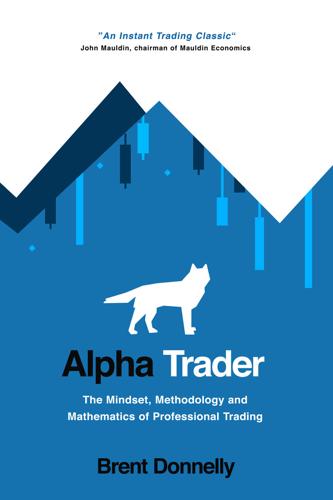
Alpha Trader
by
Brent Donnelly
Published 11 May 2021
Using this analogy, macro analysis, and his concerns about derivatives, portfolio insurance, and equity futures without price limits, Tudor predicted the Crash of ‘87 and returned 62% in October 1987!65 In 2019, this type of analogy would be tweeted twenty-two times by day traders and online bloggers and would be revealed in the output of every machine learning, AI and pattern recognition machine at every hedge fund and bank in the world. Computers are significantly better than humans when it comes to unbiased pattern recognition. I do believe, though, there is still an edge in pattern recognition. Experienced human traders can still combine complex pieces of information to form conclusions that would elude the best computers. Leverage, carry and selling risk premium Forever Borrow at 2% and buy an asset that yields 7%.
…
When that happens, you owe me a beer. Trader bias #7: Apophenia Chaos is not dangerous until it begins to look orderly. MAX GUNTHER, The Zurich Axioms Great traders are masters of pattern recognition. They will see a setup and recognize it either consciously or unconsciously. I remember many times after great runs of trading that I felt like I knew what was going to happen before it happened. This ability comes from the incredible powers of human pattern recognition. The problem is: Humans are built to see patterns, even when none exist. Apophenia or patternicity are terms psychologists use to describe the human predisposition to see patterns or connections, even where none exist.
…
For most good trades, I will have 3 to 5 decent reasons and very few arguments the other way. This trade is a good example of how cross-market analysis gives me greater confidence to take the other side of a flow-driven move that is not supported by fundamentals or by action in other markets. Pattern recognition and indicator scanning The final major source of trade ideas (after narrative, news, and dislocations from fair value) is pattern recognition and indicator scanning. This can mean many things and depends greatly on what products you trade. Good traders recognize patterns in their market and understand which patterns are the result of randomness and which are sending a persistent signal.
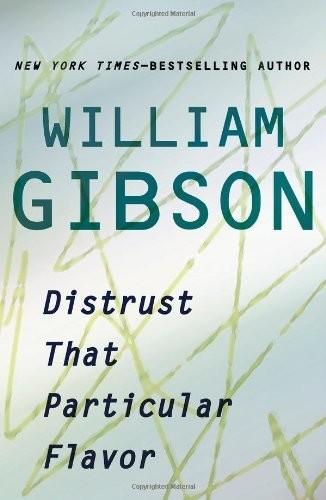
Distrust That Particular Flavor
by
William Gibson
Published 3 Jan 2012
Not so much because I shamelessly, if less eloquently, rehash the best part of the Observer piece you may already have read here, but because of a weird internal conflict, at the time, between fiction and non. All of the good stuff I encountered in Tokyo, that time (aside from the Australian girl crossing the street) got siphoned off, exclusively, into Pattern Recognition, the novel I was writing at the time. Cayce’s Tokyo, in Pattern Recognition, is the Tokyo I encountered, at Wired’s considerable expense. None of which I was able to access for Wired. Just not possible. The fiction-writing space was occupied, this time, and my very cursory showing, in this piece, is the result of my having had no place, within myself, to do the work required.
…
And others, like my own Garage Kubrick, will use the same technology to burrow more deeply, more obsessively, more gloriously, into the insoluble mystery of the self, even as the Château Marmont outlasts the media platform and the studio system that gave it birth. I fall asleep imagining someone building a virtual Marmont, and in one of the bungalows, a character is falling asleep…. My novel Pattern Recognition was gestating, as I wrote this, the “Garage Kubrick” morphing from protagonist (or antagonist, or possibly just agonist) to MacGuffin, though I didn’t know it. Pattern Recognition would eventually manage to be published just ahead of the launch of YouTube, a very good thing considering certain of its plot points. In a world with YouTube, it’s probably much more difficult to induce a magazine to put you up in the Marmont to watch digital films, so that was good timing as well.
…
DISTRUST THAT PARTICULAR FLAVOR TITLES BY WILLIAM GIBSON Neuromancer Count Zero Burning Chrome Mona Lisa Overdrive Virtual Light Idoru All Tomorrow’s Parties Pattern Recognition Spook Country Zero History DISTRUST THAT PARTICULAR FLAVOR WILLIAM GIBSON G. P. Putnam’s Sons New York G. P. PUTNAM’S SONS Publishers Since 1838 Published by the Penguin Group Penguin Group (USA) Inc., 375 Hudson Street, New York, New York 10014, USA • Penguin Group (Canada), 90 Eglinton Avenue East, Suite 700, Toronto, Ontario M4P 2Y3, Canada (a division of Pearson Penguin Canada Inc.) • Penguin Books Ltd, 80 Strand, London WC2R 0RL, England • Penguin Ireland, 25 St Stephen’s Green, Dublin 2, Ireland (a division of Penguin Books Ltd) • Penguin Group (Australia), 250 Camberwell Road, Camberwell, Victoria 3124, Australia (a division of Pearson Australia Group Pty Ltd) • Penguin Books India Pvt Ltd, 11 Community Centre, Panchsheel Park, New Delhi–110 017, India • Penguin Group (NZ), 67 Apollo Drive, Rosedale, North Shore 0632, New Zealand (a division of Pearson New Zealand Ltd) • Penguin Books (South Africa) (Pty) Ltd, 24 Sturdee Avenue, Rosebank, Johannesburg 2196, South Africa Penguin Books Ltd, Registered Offices: 80 Strand, London WC2R 0RL, England Copyright © 2012 by William Gibson Ent.
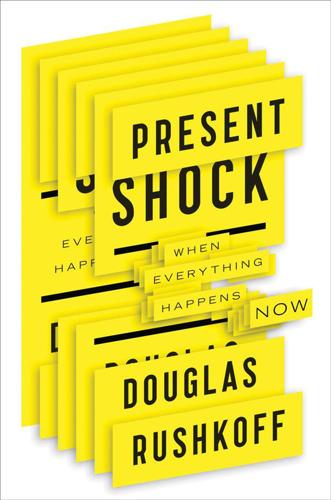
Present Shock: When Everything Happens Now
by
Douglas Rushkoff
Published 21 Mar 2013
By the time the story is posted to the Web, stocks are actually lower, and the agencies are hard at work searching for a housing report or consumer index that may explain the new trend, making the news services appear to be chasing their own tails. This doesn’t mean pattern recognition is futile. It only shows how easy it is to draw connections where there are none, or where the linkage is tenuous at best. Even Marshall McLuhan realized that a world characterized by electronic media would be fraught with chaos and best navigated through pattern recognition. This is not limited to the way we watch media but is experienced in the way we watch and make choices in areas such as business, society, and war. Rapid churn on the business landscape has become the new status quo, as giants like Kodak fall and upstarts like Facebook become more valuable than oil companies.
…
History no longer changes with one’s evolving sensibilities; it describes limits and resists reinterpretation. One’s path narrows. As far as doing pattern recognition in a landscape of present shock, the user must identify entirely with sequences of self. Everything relates, as long as it relates back to himself. Where was I when I saw that? How did I think of that the first time I did it? How does that reflect on me? This is the difference between the networked sensibility and paranoia—between pattern recognition and full-fledged fractalnoia. The fractalnoid is developing the ability to see the connections between things but can only understand them as having something to do with himself.
…
Next we look at what happens when we try to make sense of our world entirely in the present tense. Without a timeline through which to parse causes and effects, we instead attempt to draw connections from one thing to another in the frozen moment, even when such connections are forced or imaginary. It’s a desperate grasp for real-time pattern recognition I’ll call “Fractalnoia.” Finally, we face “Apocalypto”—the way a seemingly infinite present makes us long for endings, by almost any means necessary. We will encounter drone pilots contending with the stress of dropping bombs on a distant war zone by remote control before driving home to the suburbs for supper an hour later.
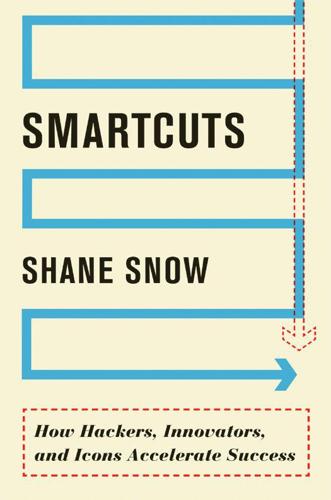
Smartcuts: How Hackers, Innovators, and Icons Accelerate Success
by
Shane Snow
Published 8 Sep 2014
But, rather than fall into the impending trough and get crushed by the wave, 18-year-old Sonny decided to bail. III. There are two ways to catch a wave: exhausting hard work—paddling—and pattern recognition—spotting a wave early and casually drifting to the sweet spot. “There are people who make careers based on the fact that they know how to read the ocean better than others,” says Pat O’Connell, ’90s surfing legend and trainer. “It’s just about knowing the ocean. It’s timing.” Sonny Moore seemed to have that pattern recognition; he spotted the rise of social networks and became a power user, ultimately setting himself up to front an emerging band. From First to Last spotted the fast rise of screamo before most bands—and mainstream audiences—saw it coming.
…
In a given domain—be it surfing or accounting or political fund-raising—the familiarity that leads to pattern recognition seems to come with experience and practice. Fencing masters recognize opportunities in opponents’ moves because of the sheer amount of practice time logged into their heads. Leaders and managers who use their gut to make decisions often do so based on decades of experience, archived and filed away in the folds of their cerebrums. “Intuition is the result of nonconscious pattern recognition,” Dane tells me. However, his research shows that, while logging hours of practice helps us see patterns subconsciously, we can often do just as well by deliberately looking for them.
…
Once you jump on the first wave, it’s costly to back off from the commitment. And by that time it’s usually too late to take advantage of the second wave. Of course, on rare occasions that first wave actually is the best wave in a set. How is a surfer, much less a businessperson, to judge when to make a move? Pattern recognition can help here as well. The way to predict the best waves in a proverbial set is established by researchers Fernando F. Suarez and Gianvito Lanzolla, who in Academy of Management Review explain that when market and technology growth are smooth and steady, the first mover gets the inertia and an advantage.

Physics of the Future: How Science Will Shape Human Destiny and Our Daily Lives by the Year 2100
by
Michio Kaku
Published 15 Mar 2011
TWO PROBLEMS WITH ROBOTS Given the glaring limitations of computers compared to the human brain, one can appreciate why computers have not been able to accomplish two key tasks that humans perform effortlessly: pattern recognition and common sense. These two problems have defied solution for the past half century. This is the main reason why we do not have robot maids, butlers, and secretaries. The first problem is pattern recognition. Robots can see much better than a human, but they don’t understand what they are seeing. When a robot walks into a room, it converts the image into a jumble of dots. By processing these dots, it can recognize a collection of lines, circles, squares, and rectangles.
…
As soon as the computer processes one layer of the image, it integrates it with the next layer, and so on. In this way, step by step, layer by layer, it mimics the hierarchical way that our brains process images. (Poggio’s program cannot perform all the feats of pattern recognition that we take for granted, such as visualizing objects in 3-D, recognizing thousands of objects from different angles, etc., but it does represent a major milestone in pattern recognition.) Later, I had an opportunity to see both the top-down and bottom-up approaches in action. I first went to the Stanford University’s artificial intelligence center, where I met STAIR (Stanford artificial intelligence robot), which uses the top-down approach.
…
Humans can immediately size up their environment and act accordingly and hence rate high on this scale. However, this is where robots score badly. Pattern recognition, as we have seen, is one of the principal roadblocks to artificial intelligence. Robots can sense their environments much better than humans, but they do not understand or recognize what they see. On this scale of consciousness, robots score near the bottom, near the insects, due to their lack of pattern recognition. The next-higher level of consciousness involves self-awareness. If you place a mirror next to most male animals, they will immediately react aggressively, even attacking the mirror.

Nerdy, Shy, and Socially Inappropriate
by
Cynthia Kim
Published 20 Sep 2014
The rules became more of a burden than a support. Choice receded; rigidity crept in. A few months before learning about Asperger’s, I began to realize that I rely on pattern recognition and rules to navigate social interaction. At the time, I didn’t understand that these were coping strategies. I simply thought I had an unusual approach to socializing. Now I know that many autistic people rely on explicit rules, social scripts, pattern recognition, and lots of practice to make social interaction easier. Seeing my rules for what they were—a tool that I’d instinctively developed to make sense of the world—led me to an important realization: the rules are supposed to serve me, not the other way around.
…
and communication see body language and non-verbal communication; social/communication skills and deficits and competencies 216–17 coping strategies see coping strategies/mechanisms diagnosis see diagnosis of Asperger’s Syndrome/ASD and emotion see emotions and empathy see empathy and executive function deficit see executive function (EF) and face blindness 43 gender differences 20, 3–21, 24 growing older on the spectrum 133–7 and insomnia 128–33 Kanner’s definition of autism 21 labeling see labeling motor development delay 118 and perfectionism 191–3 and perimenopause symptoms 134–5 and sensory sensitivities see sensory sensitivities strengths associated with 210–15 and thinking see thinking traits making autistic individuals vulnerable to bullying 29 and triggers 66–7 Baumeister, Roy 179 bliss 145 blogging 19–18, 230, 231 blunted affect 37–9 body, autistic 117–37 the autistic brain 69, 74, 141, 146, 9–168, 171 see also executive function (EF) and clumsiness 117–18 and growing older on the spectrum 133–7 and insomnia 128–33 and sensation see sensory seeking; sensory sensitivities; stimming and sports/exercise 57, 106, 119–28 body language and non-verbal communication 6–35, 46–37, 51 blunted affect 37–9 eye contact 39, 42–40, 44–5 facial expression see facial expression intentional employment of 39–41 non-verbal cues 39, 6–45, 51, 64, 65, 223 brains 69, 74, 107, 141, 146, 171 brain–body communication 168–9 executive function see executive function (EF) and inhibition 165 bullying 9–25, 223 calmness 214 catastrophizing 193–7 change, resistance to 86, 2–91, 166 checklists 178 chunking 177 clumsiness 117–18 cognitive empathy 81, 96, 154–7 cognitive flexibility 162, 166 communication see body language and non-verbal communication; language; social/communication skills and deficits compassion 231–2 competencies 216–17 compromise 66 confrontation skills deficit 41–140, 148 contentment 144–5 control 182–5 meltdowns and loss of see meltdowns coping strategies/mechanisms 29, 32, 9–86, 135, 189, 214, 218 and control 183–5 with executive function deficit 172–3 pattern recognition see pattern recognition rescue strategies for new parents 76–7 routines as 86, 94–89, 166 rules as 36, 86, 87–9 for sensory sensitivities 109–16 special interests 96–101 strengths as coping mechanisms 210–12 curiosity 211 decision making 158–61 dependability 214–15 depression 127 detachment 80, 198, 214 see also withdrawal/shutdown determination 141, 215 developmental disability 31–4 diagnosis of Asperger’s Syndrome/ASD and acceptance 228–32 and being understood 61–60, 71 and DSM-5 21 gender differences with diagnosis rates 2–21, 23 growing up undiagnosed 18–13, 34–20, 6–53, 59, 86, 147, 182, 192–3 and labeling see labeling late diagnosis 14, 21 resistance to change as a criterion for 91–2 and self-redefinition 208–27 self-understanding growing from 6–35, 61–60, 72, 182, 10–208, 225, 229–32 sharing your diagnosis with your child 82 Diagnostic and Statistical Manual of Mental Disorders (DSM-5) 21 disability, developmental 4–31, 209–10 discipline 214–15 domestic violence 223 driving 77 ego depletion 179–80 elation 144, 145 emotions 138–57 alexithymia 141–4 anger constellation 146–9 catastrophizing as an emotional magnet 196 discriminating the target of others’ expressions of 140–41 emotional detachment 80, 198, 214 and empathy see empathy expressing love and feelings 68, 69, 72, 74, 138 feeling overwhelmed by others’ emotions 141, 156 getting in touch with feelings 144–52 happiness constellation 144–6 identifying 9–138, 140, 141–3 meltdowns see meltdowns modulating the strength of 40–139, 141 sadness constellation 149–52 and sensations 142, 6–145, 149, 170 see also anxiety; panic; shame empathy 152–7 cognitive (perspective taking) 81, 96, 7–154, 210, 231 meaning of a lack of 157 Sally–Anne test 155 vs. sympathy 153–4 executive function (EF) 158–81 acting on a problem 168–73 and the anger constellation 146–7 attention 162, 164–5 conservation of EF, and ego depletion 179–81 decision making 158–61 inhibition 165, 178 initiating actions 165 monitoring actions 165–6 planning 93, 161, 163 problem solving see problem solving procrastination and EF fail 173–8 and stimming 180–81 and time agnosia 178–9 verbal reasoning 164 exercise see sports and exercise face blindness (prosopagnosia) 43 facial expression 36 blunted affect 37–9 eye contact 39, 42–40, 44–5 faking 39 frowning 16, 38 reading 42–4 family responsibilities household see household management parenting see parenting fear 18, 26, 27, 105, 110, 204, 231 of abandonment 151 and catastrophizing 196 irrationality of 221, 223 of not being good enough 147 see also anxiety feeling see emotions; sensory sensitivities fight or flight response 45 food sensitivities 13–112, 115 Frost Multidimensional Perfectionism Scale 192 frowning 16, 38 frustration 146 functioning labels 215–18 see also labeling games 23–4 gender differences with ASD in diagnosis 20, 21–3 in play 24 generalizing 63, 210, 212 giftedness 30–33 grief 150–51 guilt 75 handholding 64 happiness 144–6 headbanging 75, 103, 106, 202, 203, 205 honesty 210–11 household management 61–2 and parenting 73–4 humiliation 147 hypersensitivity see sensory sensitivities hyposensitivity 170–73 indignation 147–8 infodumping 95–6 inhibition 165, 178 insomnia 128–33 intelligence 21, 2–31, 33, 51–50, 71 interests relationships and common interests 56–7 special 77, 96–101 interoceptive feedback 170 irritability 147 joy 145 joys of parenting a toddler 77–9 Kanner, Leo 21 Kim, Jess 2–71, 75, 8–77, 79–85 Kim, Sang Hwan 56, 57, 58, 62–59, 64, 6–65, 67, 70–68, 71, 75, 3–82, 85, 92, 6–135, 41–140, 148, 183, 188, 189, 200, 224 labeling 32–30, 208–27 finding the right labels 209–15 functioning labels in practice 215–18 and self-redefinition 208–27 and the wish for normality 225–6 language body language see body language and non-verbal communication glitches 135–6 literal interpretation 27, 67–8 social use of (pragmatics) 45–52 verbal cues 49, 67 verbal processing 47–51 light sensitivities 110–11 Linden, Fabian 227 literal interpretation 27, 67–8 love compassion 231–2 expressing love 68, 69, 72, 74 and parenting 72, 74 and sex see sex life loyalty 211 marriage 70–59, 75, 188–9 see also parenting; sex life martial arts 57, 106, 121–7 melatonin 132–3 meltdowns 54, 60, 67, 75, 110, 116, 124, 171, 200–207 anatomy of a meltdown 201–5 helping someone through a meltdown 207 nightmares as forms of meltdown 148 triggers 205–6 see also headbanging memory problems 136–7 working memory 164 see also reminders menopause/perimenopause 133, 134–5 metaphors 27 mindfulness 176 mindful physical activity 127 missing word problem 135–6 monologuing 95 motor coordination 18–117, 134 motor development delay 118 music 76 neurotypical people/behaviour acting on a problem 168 Aspie parenting of see parenting emotional interaction 140 expressing love 68, 69, 70 filtering sensory data 170–71 marriage to an Aspie partner 70–59, 75, 188 the neurotypical brain 69 and special interests 99 subtle communication ways 67 nightmares 148 NO reflex 92–4 non-verbal communication see body language and non-verbal communication nonjudgmentalism 210 optimism 211–12 panic 159, 185, 204 and the NO reflex 93, 94 see also meltdowns parenting 54, 71–85 and the child’s venture into the world 79–82 expressing love 72, 74 infancy and motherhood 74–7 joys of parenting a toddler 77–9 rescue strategies for new parents 76–7 and retreat 75, 83 routines 78 sharing your ASD diagnosis with your child 82 support 75, 82–3 teenagers and the approach to adulthood 82–5 unconventional 72–4 pattern recognition 27, 33, 34, 36, 86, 87, 88, 214 peace 145 peer pressure 81 perfectionism 26, 189–93 perimenopause 133, 134–5 perseveration 95–6 perspective taking 81, 96, 7–154, 210, 231 Sally–Anne test 155 see also empathy pets 76 phones, communication problems with 48–9 physical activity see sports and exercise planning 93, 161, 163 aids 178 strategies 176–7 play 4–23, 31 and parenting 78–9 pragmatics 46–52 prioritizing 172, 177 problem solving 4–163, 210, 211 acting on a problem 168–73 and executive function impairment 175–8 procrastinating in 173–5 procrastination 173–5 prosopagnosia (face blindness) 43 rage 148 relationships 53–70 alexithymia and 142–3 apologizing 62 balancing adaptation and acceptance 69–70 and common interests 56–7 and compromise 66 and empathy see empathy expressing love 68, 69, 72, 74 see also sex life intimate 4–63, 114–15 see also sex life making friends 7–56, 79–80 marriage 70–59, 75, 188–9 see also sex life and the need for withdrawal 65–6 not being understood 59–60 parent–child see parenting shrinking–growing cycle 56–9 spontaneous affection 64 unintentional hurtfulness 60–59, 62–3 reminders 74, 167, 177, 180 software/apps 176–7 resentment 148 resistance to change 86, 2–91, 166 and the NO reflex 92–4 rigidity 86–96 rigid thinking 7–146, 166 see also perseveration; resistance to change; routines; rules rocking chairs 76 Rogers, K., Dziobek, I. et al. 156–7 routines appropriateness of 91 as coping strategies 86, 94–89, 166 and the NO reflex 92–4 and parenting 74, 78 and problem solving 176 and resistance to change 86, 2–91, 166 and spontaneity 91, 92 rules as coping strategies 36, 86, 87–9 learning social rules 27, 33–4 and spontaneity 89 sadness 149–52 Sally–Anne test 155 self-care 187–8 self-control 182–5 sensory filtering 170–71 sensory regulation/stimming 4–102, 9–108, 81–180, 230 sensory seeking 9–104, 124, 126 sensory sensitivities 63, 109–16 and the anger constellation 146–7 emotions and sensations 142, 6–145, 149, 170 hyposensitivity 170–73 impact on intimacy 63, 114–15 interoceptive feedback 170 to light 110–11 and parenting 73, 74 sensory overload 63, 74, 110, 116, 127 to smell 112–13 to sound 111–12 to taste 112–13 to touch 63, 64, 113–15 sex life and “bliss” 145 and sensory sensitivities 63, 114–15 sexual abuse 223 shame 75, 147, 182, 183, 185–9 shutdown see withdrawal/shutdown shyness 14, 23, 27 sincerity 211 singing 76 sleep problems 128–33 nightmares 148 smell sensitivities 112–13 social/communication skills and deficits 35–52 and aphasia 135–6 apologizing 62 blunted affect 37–9 body language see body language and non-verbal communication; facial expression of a child with an Aspie parent 84–5 compensating for a partner’s deficits 65, 75, 85 confrontation skills deficit 41–140, 148 coping strategies in social interaction see coping strategies/mechanisms eye contact 39, 42–40, 44–5 generalizing 63, 210, 212 learning social rules 27, 33–4 need for explicit communication 67–8 neurotypical subtlety in communication 67 non-verbal communication see body language and non-verbal communication; facial expression not being understood 59–60 and parenting 73 perseverance with communication 67–8 pragmatic impairments 46–52 and relationships see relationships scaring others 36–41 and social anxiety 220–25 social use of language 45–52 telephone communication problems 48–9 unintentional hurtfulness 60–59, 62–3 verbal cues 49, 67 verbal reasoning 164 see also language social power balance 45 social scripts 86, 88, 167, 180 sound sensitivities 111–12 special interests 77, 96–101 spontaneity and rules/routines 89, 91, 92 spontaneous affection 64 sports and exercise 57, 106, 28–119, 134 mindful physical activity 127 and sensory seeking 124, 126 and sleep 130 stimming 4–102, 9–108, 81–180, 230 stress response fight or flight 45 triggers 66–7 sympathy 153–4 tactile sensitivities/defensiveness 63, 64, 113–15 taste sensitivities 112–13 telephone communication problems 48–9 thinking in absolutes 193–7 catastrophizing 193–7 flexible 162, 166 generalizing 63, 210, 212 perspective taking 81, 96, 7–154, 210, 231 rigid 7–146, 166 verbal reasoning 164 time agnosia 178–9 touch 63, 64 tactile sensitivities/defensiveness 63, 64, 113–15 triggers of meltdown 205–6 of smell and taste sensitivities 112 of stress response 66–7 of withdrawal 199 values 211 verbal processing 47–51 verbal reasoning 164 walking 77 water 76 Willey, Liane Holliday 64 withdrawal/shutdown 60, 67, 110, 116, 197–200 common signs of 198 helping someone through 207 need for withdrawal in a relationship 65–6 parenting and retreat 75, 83 and resurfacing 200 wonder 145 working memory 164 Zen 208 Also available Pretending to be Normal Living with Asperger’s Syndrome (Autism Spectrum Disorder) Liane Holliday Willey Foreword by Tony Attwood ISBN 978 1 84905 755 4 eISBN 978 1 84642 498 4 Compelling and witty, Liane Holliday Willey’s account of growing to adulthood as an undiagnosed ‘Aspie’ has been read by thousands of people on and off the autism spectrum since it was first published in 1999.
…
•Even when I pay attention to facial expressions and body language—which I rarely do—they carry little meaning for me. •My ability to process verbal communication and to communicate with speech is impaired, while my ability to communicate in writing is a strength. •I’ve developed unusual ways of navigating social situations, substituting rules, pattern recognition, and scripted language for perspective taking and reading nonverbal communication. These four realizations helped put a lifetime of social awkwardness into perspective—everything from why I struggle with completing simple everyday transactions with strangers to why I scare small children.
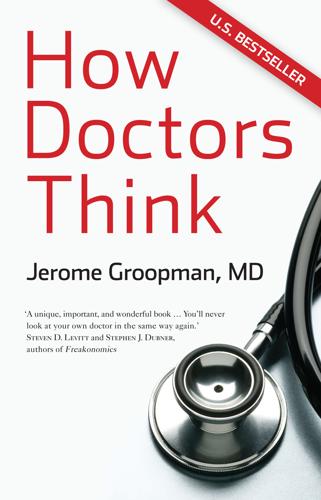
How Doctors Think
by
Jerome Groopman
Published 15 Jan 2007
Pat Croskerry, an emergency room doctor in Halifax, Nova Scotia, began his academic career as a developmental psychologist and now studies physician cognition. He explained to me that "flesh-and-blood decision-making" pivots on what is called pattern recognition. The key cues to a patient's problem—whether from the medical history, physical examination, x-ray studies, or laboratory tests—coalesce into a pattern that the physician identifies as a specific disease or condition. Pattern recognition, Croskerry told me, "reflects an immediacy of perception." It occurs within seconds, largely without any conscious analysis; it draws most heavily on the doctor's visual appraisal of the patient.
…
In response to Stan's cries of pain and pleas for action, several students injected a possibly lethal dose of morphine. "What happened to you, Jerry, in Mr. Morgan's room is what happened to the students with Stan," Dr. Oriol said. "It is as if everything that you learn in school is erased." Simulations with Stan are designed to act as a bridge between analytical learning in classrooms and pattern recognition performed at the peak of the Yerkes-Dodson curve. But, as Oriol and others readily admit, there still will come that first moment when the novice can no longer be a novice, when he is the one who must take responsibility for a living, breathing patient in need. Extreme arousal happens not only during the first encounter with a William Morgan, but throughout internship and residency.
…
"It is impossible to catalog all of the stereotypes that you carry in your mind," she said, "or to consistently recognize that you are fitting the individual before you into a stereotypical mold. But you don't want to have to make a mistake to learn with each stereotype." Rather, Delgado believes, patients and their families should be aware that a doctor relies on pattern recognition in his work and, understandably, draws on stereotypes to make decisions. With that knowledge, they can help him avoid attribution errors. Is this really possible? I asked. "Sure, it's not easy for laypeople to do," Delgado said, "because patients and their families are especially reluctant to question a doctor's thinking when their questioning suggests his thinking is colored by personal prejudice or bias."
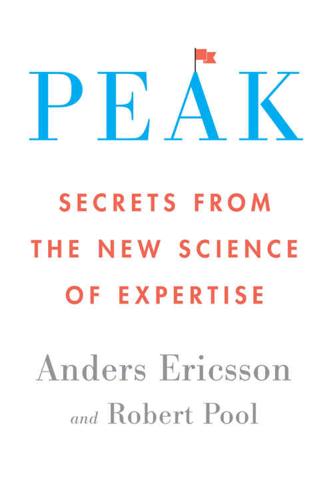
Peak: Secrets From the New Science of Expertise
by
Anders Ericsson
and
Robert Pool
Published 4 Apr 2016
See brain adaptability plateaus, 161–65 play, 184–88, 215 Polgár, Judit, 182, 183, 187 Polgár, Klara, 180–83 Polgár, László, 180–83, 189 Polgár, Sofia, 182, 183 Polgár, Susan, 181–82, 183, 184, 185, 188 Poor Richard’s Almanack (Franklin), 156–57 positive feedback, motivation and, 22, 173–76 potential and adaptability, xix–xx, 47–49 practice ability and, 8, 9, 43 in blindfold chess, 51–54 vs. deliberate practice, 9, 132 digit memorization study, 2–5 effective techniques of, 9 fighter pilot school, 116–20 highly developed methods of, 85–89 as key to success, 230 music students, 77–79 solitary practice, 91, 92 vs. talent, in chess, 225–33 usual approach to, 11–14, 48–49, 121 See also purposeful practice; feedback praise, 186, 187, 189, 190, 239, 240 presbyopia study, 36–37 principles, of deliberate practice, 97–100 prodigies, xii–xiii, 211, 212, 214 See also expert performers; talent Professional Golfers’ Association, 146 Professor Moriarty, 226 prostate cancer study, 139–40 Psychology of Music (journal), xiv pull-ups, 34 purposeful practice adaptability, 41–47 brain response to (taxi studies), 30–32 characteristics of, 14–22 comfort zone, 17–22 defined, 98 vs. deliberate practice, 98 in digit study, 13–14 feedback, 16–17 focus, 15–16 goals, 15 highly developed methods of, 85–89 length of, 171 limits of, 22–25 musicians, 79–80 vs. naive practice, 14 recipe for, 22 vs. traditional approach, 11–14, 48–49 as work, 166–67 See also deliberate practice pushups, 33–34 Q quantitative vs. qualitative problems, 252 quarterbacks, pattern recognition, 64–65 quitting, 169–70, 173 R radiologists, 125–27, 141 Radio-Symphonie-Orchester Berlin, 88, 94 rat muscle study, 39 reading, mental representations and, 66–68 red flag, 121 Red Force pilots, 116–18 Renwick, James, 77–79 reproduction, of a master, 160–61, 214 retrieval structure comprehension and, 67 memory and, 24, 61 See also mental representations Richards, Nigel, 202–3, 205–6 ringmaster practice, 158–59 Road to Excellence, The (Ericsson), xxi rock climbing, pattern recognition, 65 Rubik’s Cube, 157–58 running age, 195 engagement in, 152, 153–54 Faloon, Steve and, 4, 15, 22 Hägg, Gunder, 172–73 mental representations, 82 pain of, 171 records in, 6, 107 Rush, Mark Alan, 201–2 Russell, JaMarcus, 236 S Sachs-Ericsson, Natalie, 95 Saikhanbayar, Tsogbadrakh, 84–85 Sakakibara, Ayako, xiv–xv Sanders, Lisa, 68–71 Sanker, David, 7 savants, 219–22 Schelew, Ellen, 243–47 Science (magazine), 42–43, 254 Scrabble, 202–3, 205–6 Scripps National Spelling Bee, 165–66 self-evaluation, of performance deliberate practice and, 99 fighter pilot school, 117 golf practice, 177–78 plateaus, 164–65 radiologists, 127 See also feedback; measurement, of performance self-fulfilling prophecy, of talent, 238–42 self-motivation, 191, 193 Servizio, Charles, 34 Sharma, Vikas, 8 Sherlock Holmes, 226 Shiffrin, Mikaela, 187 Shockley, William, 234 short-term memory digit study, 2–5 limit to, 2 role of, 61 siblings, of experts, 187–88 Simon, Herb, 55–56, 57, 257 simulator practice, 130, 143–44 simultaneous interpreters, 198 Sinatra, Frank, xiv Singh, Fauja, 195 singing, 151, 223–24 skill learning adaptability, see adaptability brain structure, 43–45 deliberate practice, 100 engagement, 150–54 individual instruction, 147–50, 165–66 vs. knowledge, 130–37 mental representations, 76–82 plateaus, 161–65 purposeful practice, see purposeful practice usual approach to, 11–14 skills-based training, 137–44 sleep, 92–93, 154, 170, 171 soccer, patterns in, 63–64 social motivation, 173–76 solitary practice, 91, 92, 109, 147–50, 165–66, 176–77, 230, 232 sommeliers, 104–5 Spectator, The (magazine), 155, 156, 159–60, 255 Spencer, David Richard, 7 sports.
…
So here is a major part of the answer to the question we asked at the end of the last chapter: What exactly is being changed in the brain with deliberate practice? The main thing that sets experts apart from the rest of us is that their years of practice have changed the neural circuitry in their brains to produce highly specialized mental representations, which in turn make possible the incredible memory, pattern recognition, problem solving, and other sorts of advanced abilities needed to excel in their particular specialties. The best way to understand exactly what these mental representations are and how they work is, fittingly enough, to develop a good mental representation of the concept mental representation.
…
See London cabbie studies Cambridge Handbook of Expertise and Expert Performance, The (Ericsson), xxi cancer detection, 125–27 Capablanca, José Raúl, 54 Carl Wieman Science Education Initiative, 243, 245 Carnegie Mellon University, 1, 3, 4, 131 carotid artery tear puzzle, 68–72 cellular response, homeostasis, 37–41 cerebellum, musical training, 43, 197 Chaffin, Roger, 80–82 Chambliss, Daniel, 153 Charing Cross, 28–29, 30 Chase, Bill chess study, 55–56 “chunks,” 57 digit memorization study, 3, 5, 20, 22, 162–63 Cheney, Elyse, 75 chess ability as predictor, 56 Alekhine, Alexander, 50–54 Franklin, Benjamin, 18–19, 155, 160 hours of practice, 96–97 improvement, 151 IQ, 227–33, 241 memory, 55–58 mental representations, 60–62, 67, 70 Polgár family experiment, 180–83, 184–85, 189 practice vs. talent, 225–33 See also grandmasters childhood of experts, 173–74, 184–88 Lemieux, Mario, 214–15 perfect pitch, xiii–xiv physical skills, 196–97 pianists, 45 “chunks,” 57 clicker questions, 245–47, 252–53 climbers, pattern recognition, 65 Close, Kerry, 165 coaches. See teachers and coaches Colvin, Geoff, 145 comedians, 159 comfort zone deliberate practice, 97–98, 99, 170 fighter pilot training, 119 freshman physics course, 253 homeostasis, 38–40 potential, 47–49 purposeful practice and, 17–22 pushing past, 40–41 commitment, 192–94 Commonwealth Games, 219 comprehension, mental representations, 66–68 concentration and focus deliberate practice and, 99, 169 as hard work, 21 individual instruction, 150–54 length of, 171 physics study, 245–47 purposeful practice and, 15–16 three Fs, 159 Concordia University, 191 confidence, of success, 172 congenital amusia, 224 context, mental representations and, 66–68 continuing medical education, 18, 134–36 Cooke, Ed, 161 copying, 160–61, 214 corpus callosum, 197 Cortot, Alfred, 6–7 cost, financial, 193–94 Coughlin, Natalie, 152–53 creativity, 203–6 Csikszentmihalyi, Mihaly, 257 D “Dan Plan” project, 146, 177–79 Davis, Dave, 134–35 Davis, Miles, xiii Dawes, Robyn, 105 DeLay, Dorothy, 20 deliberate practice average person and, 146 in business, 122–24 challenges in writing about, 75 defined, 98 future of, 247–55, 256–59 goals, 48, 99, 111, 154, 177 knowledge vs. skill, 130–37 length of, 171 as lonely pursuit, 176–77 myths of, 121–22 naming of, xxi, 10 physics education study, 243–47 plateaus, 161–65 purpose of, 75 vs. purposeful practice, 14–22, 98 skills-based training, 137–44 “ten-thousand-hour rule” and, 110 traits of, 99–100 See also practice; purposeful practice deliberate-practice mindset, 120–21 desire, to improve, 171 Deslauriers, Louis, 243–47 diagnosis, process of, 68–72 digit memorization Faloon, Steve, 2–5 hours of practice, 110 mental representations, 59 plateau in progress, 162–63 Wang, Feng, 101–2 world record in, 84–85 See also Faloon, Steve Dilbert (comic), 113 diving, competitive, 6, 44–45 Dix, Walter, 120 dogfights, 115–19 Dolan, Eamon, 76 domain specificity, in mental representations, 60 Donatelli, Dario, 25, 131 Donny (autistic savant), 221 double-somersault dive, 6 E Eagles (team), 248 Eastern Illinois University, 216 education continuing medical education, 18, 134–36 deliberate practice, see deliberate practice feedback from teachers, 108–9, 246–47 freshman physics course, 243–47, 252–54 future of, 247–55, 256–59 Jump Math, 224–25, 251 mental representations, 250–51 skills-based training, 137–44 teachers, see teachers and coaches Top Gun approach, see Top Gun approach effort, 166, 167 Einstein, Albert, 44, 203 electromagnetic wave unit, 243–47 Elio, Renée, 23–24, 84, 85 engagement, 150–54, 169 length of, 171 physics study, 245–47 See also focus English as a second language, 158 Epstein, David, 215, 216 Ericsson, K.
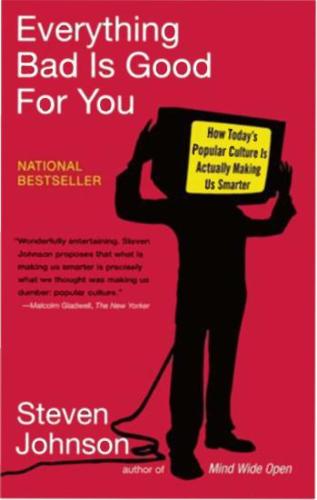
Everything Bad Is Good for You: How Popular Culture Is Making Us Smarter
by
Steven Johnson
Published 5 Apr 2006
Perhaps if you j ust look a little harder you'll be in luck-it's got to be around here somewhere . " How do these findi ngs connect to games ? Researchers have long suspected that geometric games like Tetris have such a hypnotic hold over us (longtime Tetris players have vivid dreams about the game) because the game's elemen tal shapes activate modules in our visual system that execute low-level forms of pattern recognition-sensing parallel and perpendicular lines, for instance. These modules are churn ing away in the background all the time, but the simplified graphics of Tetris bring them front and center i n our con sciousness. I believe that what Tetris does to our visual cir cui try, most video games do to the reward circuitry of the brain.
…
E V J, R Y T H I N G B A D I S G O O D F O R Y o u 59 Word pro blems of this sort have little to offer in the way of moral lessons or psychological depth; they won't make students more effective communicators or teach them tech nical skills. But most of us readily agree that they are good for the mind on some fundamental level : they teach abstract skills in probability, i n pattern recognition, in understand ing causal relations that can be applied in countless situa tions, both personal and professional . The problems that confront the garners of Zelda can be readily transl ated into this form, and indeed in translating a core property of the experience is revealed: You need to cross a gorge to reach a valuable desti nation.
…
If you look at i ntelligence tests that track skills influenced by the classroom-the Wechsler vocabulary or arithmetic tests, for instance-the intelligence boom fades from view; SAT scores have fluctuated erratically over the past decades. But if you look solely at unschooled problem-solving and E V E R Y T H I N G B A D I S G O O D F O R Yo u 1 49 pattern-recognition skills, the progressive trend j u mps into focus. There's so mething mysterious in these simultaneous trends: if g exists in a cultural vacu um, how can scores be rising at such a clip ? And more puzzling, how can those scores be rising faster than other intelligence measures that do reflect education?

Deep Medicine: How Artificial Intelligence Can Make Healthcare Human Again
by
Eric Topol
Published 1 Jan 2019
Of more than a thousand cases retrospectively reviewed by the tumor board and Watson, more than 30 percent were augmented by AI information, particularly related to treatment options for specific mutations.60 LIKE RADIOLOGY AND pathology, dermatology involves a great deal of pattern recognition. Skin conditions are among the most frequent reasons for seeing a doctor—they account for 15 percent of all doctor visits! Unlike radiology and pathology, however, about two-thirds of skin conditions are diagnosed by non-dermatologists, who frequently get the diagnosis wrong: some articles cite error rates as high as 50 percent. And, of course, dermatologists don’t just look at and diagnose skin rashes and lesions, they often treat or excise them. But the pattern recognition of skin problems is a big part of medicine and a chance for artificial intelligence to play a significant role.
…
Many in the medical community were frankly surprised by what deep learning could accomplish: studies that claim AI’s ability to diagnose some types of skin cancer as well as or perhaps even better than board-certified dermatologists; to identify specific heart-rhythm abnormalities like cardiologists; to interpret medical scans or pathology slides as well as senior, highly qualified radiologists and pathologists, respectively; to diagnose various eye diseases as well as ophthalmologists; and to predict suicide better than mental health professionals. These skills predominantly involve pattern recognition, with machines learning those patterns after training on hundreds of thousands, and soon enough millions, of examples. Such systems have just gotten better and better, with the error rates for learning from text-, speech-, and image-based data dropping well below 5 percent, whizzing past the human threshold (Figure 1.3).
…
A few years ago, I wrote a review in which I said we needed medical data that spanned “from prewomb to tomb.”3 A former mentor told me that I should have called the span “from lust to dust.” But you get the idea of deep and long data. Second is deep learning, which will play a big part of medicine’s future. It will not only involve pattern recognition and machine learning that doctors will use for diagnosis but a wide range of applications, such as virtual medical coaches to guide consumers to better manage their health or medical condition. It will also take on efficiency in the hospital setting, using machine vision to improve patient safety and quality, ultimately reducing the need for hospital rooms by facilitating remote, at-home monitoring.
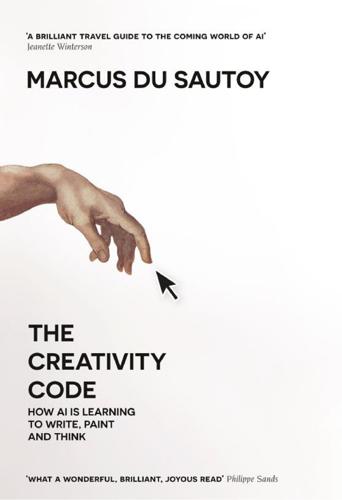
The Creativity Code: How AI Is Learning to Write, Paint and Think
by
Marcus Du Sautoy
Published 7 Mar 2019
A pattern in the chaos of the jungle is likely to be evidence of the presence of another animal – and you’d better take notice cos that animal might eat you (or maybe you could eat it). The human code is extremely good at reading patterns, interpreting how they might develop, and responding appropriately. It is one of our key assets, and it plays into our appreciation for the patterns in music and art. It turns out that pattern recognition is precisely what I do as a mathematician when I venture into the unexplored reaches of the mathematical jungle. I can’t rely on a simple step-by-step logical analysis of the local environment. That won’t get me very far. It has to be combined with an intuitive feel for what might be out there.
…
When people I meet declare (as alas so often happens): ‘I don’t have a brain for maths’, I counter that in fact we all have evolved to have mathematical brains because our brains are good at spotting patterns. Sometimes they are too good, reading patterns into data where none exists, as many viewers did when confronted with Richter’s random coloured squares at the Serpentine Gallery. For me, some of the very first pattern recognition comes along with some of the very first art to be drawn. The cave paintings in Lascaux depict exquisite images of animals racing across the walls. The movement of a stampede of aurochs is amazingly captured in these frozen images. It is intriguing to ask why the artist felt compelled to represent these images underground.
…
The report by the Royal Society that Margaret Boden, Demis Hassabis and I helped prepare. Issued in April 2017. It can be viewed online at http://royalsociety.org/machine-learning. Books Alpaydin, Ethem, Machine Learning, MIT Press, 2016 Barthes, Roland, S/Z, Farrar, Straus and Giroux, 1991 Berger, John, Ways of Seeing, Penguin Books, 1972 Bishop, Christopher, Pattern Recognition and Machine Learning, Springer, 2007 Boden, Margaret, The Creative Mind: Myths and Mechanisms, Weidenfeld and Nicolson, 1990 , AI: Its Nature and Future, OUP, 2016 Bohm, David, On Creativity, Routledge, 1996 Bostrom, Nick, Superintelligence: Paths, Dangers, Strategies, OUP, 2014 Braidotti, Rosi, The Posthuman, Polity Press, 2013 Brandt, Anthony and David Eagleman, The Runaway Species: How Human Creativity Remakes the World, Canongate, 2017 Brynjolfsson, Erik and Andrew McAfee, The Second Machine Age: Work, Progress, and Prosperity in a Time of Brilliant Technologies, Norton, 2014 Cawelti, John, Adventure, Mystery, and Romance: Formula Stories as Art and Popular Culture, University of Chicago Press, 1977 Cheng, Ian, Emissaries Guide to Worlding, Verlag der Buchhandlung Walther Konig, 2018; Serpentine Galleries/Fondazione Sandretto Re Rebaudengo, 2018 Cope, David, Virtual Music: Computer Synthesis of Musical Style, MIT Press, 2001 , Computer Models of Musical Creativity, MIT Press, 2005 Domingos, Pedro, The Master Algorithm: How the Quest for the Ultimate Learning Machine Will Remake Our World, Basic Books, 2015 Dormehl, Luke, The Formula: How Algorithms Solve All Our Problems … and Create More, Penguin Books, 2014 , Thinking Machines: The Inside Story of Artificial Intelligence and Our Race to Build the Future, W.
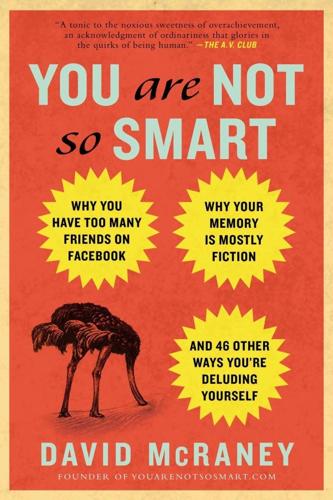
You Are Not So Smart
by
David McRaney
Published 20 Sep 2011
When you are unsure how best to proceed, suggestions bubble up from the deep that are highly tainted by subconscious primes. In addition, your brain hates ambiguity and is willing to take shortcuts to remove it from any situation. If there is nothing else to go on, you will use what is available. When pattern recognition fails, you create patterns of your own. In the aforementioned experiments, there was nothing else for the brain to base its unconscious attitudes on, so it focused on the business items or the clean smells and ran with the ideas. The only problem was the conscious minds of the subjects didn’t notice.
…
You commit the Texas sharpshooter fallacy when you need a pattern to provide meaning, to console you, to lay blame. You mow your lawn, arrange your silverware, comb your hair. Whenever possible, you oppose the forces of entropy and thwart their relentless derangement. Your drive to do this is primal. You need order. Order makes it easier to be a person, to navigate this sloppy world. For ancient man, pattern recognition led to food and protected people from harm. You are able to read these words because your ancestors recognized patterns and changed their behavior to better acquire food and avoiding becoming it. Evolution has made us into beings looking for clusters where chance events have built up like sand into dunes.
…
You strike up dialogs with coworkers, friends, and family. You become glued to the television and the radio. You gather with others to trade what you know so far. Some believe this is what happened as the Bridge Creek–Moore F5 tornado approached, which caused some people not to seek shelter. All the tools of pattern recognition, all the routines you’ve become accustomed to are rendered useless in a horrific event. The emergency situation is too novel and ambiguous. You have a tendency to freeze not because panic has overwhelmed you but because normalcy has disappeared. Ripley calls this moment when you freeze “reflexive incredulity.”
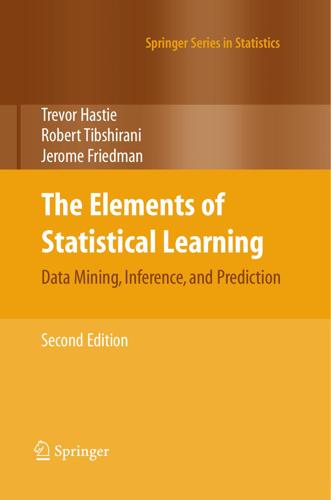
The Elements of Statistical Learning (Springer Series in Statistics)
by
Trevor Hastie
,
Robert Tibshirani
and
Jerome Friedman
Published 25 Aug 2009
Some theory for Fisher’s linear discriminant function,“Naive Bayes”, and some alternatives when there are many more variables than observations, Bernoulli 10: 989–1010. Bickel, P. J., Ritov, Y. and Tsybakov, A. (2008). Simultaneous analysis of lasso and Dantzig selector, Annals of Statistics. to appear. Bishop, C. (1995). Neural Networks for Pattern Recognition, Clarendon Press, Oxford. Bishop, C. (2006). Pattern Recognition and Machine Learning, Springer, New York. Bishop, Y., Fienberg, S. and Holland, P. (1975). Discrete Multivariate Analysis, MIT Press, Cambridge, MA. Boyd, S. and Vandenberghe, L. (2004). Convex Optimization, Cambridge University Press. Breiman, L. (1992). The little bootstrap and other methods for dimensionality selection in regression: X-fixed prediction error, Journal of the American Statistical Association 87: 738–754.
…
Massart, D., Plastria, F. and Kaufman, L. (1983). Non-hierarchical clustering with MASLOC, The Journal of the Pattern Recognition Society 16: 507–516. McCullagh, P. and Nelder, J. (1989). Generalized Linear Models, Chapman and Hall, London. McCulloch, W. and Pitts, W. (1943). A logical calculus of the ideas imminent in nervous activity, Bulletin of Mathematical Biophysics 5: 115– 133. Reprinted in Anderson and Rosenfeld (1988), pp 96-104. McLachlan, G. (1992). Discriminant Analysis and Statistical Pattern Recognition, Wiley, New York. Mease, D. and Wyner, A. (2008). Evidence contrary to the statistical view of boosting (with discussion), Journal of Machine Learning Research 9: 131–156.
…
For each example the goal is to use the inputs to predict the values of the outputs. This exercise is called supervised learning. We have used the more modern language of machine learning. In the statistical literature the inputs are often called the predictors, a term we will use interchangeably with inputs, and more classically the independent variables. In the pattern recognition literature the term features is preferred, which we use as well. The outputs are called the responses, or classically the dependent variables. 2.2 Variable Types and Terminology The outputs vary in nature among the examples. In the glucose prediction example, the output is a quantitative measurement, where some measurements are bigger than others, and measurements close in value are close in nature.
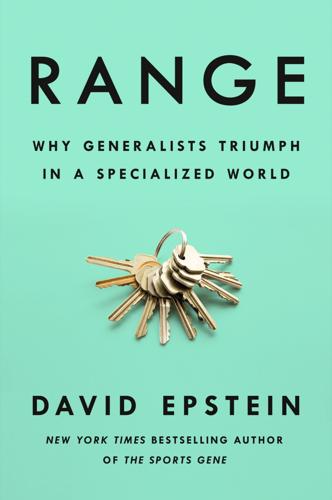
Range: Why Generalists Triumph in a Specialized World
by
David Epstein
Published 1 Mar 2019
Whether or not experience inevitably led to expertise, they agreed, depended entirely on the domain in question. Narrow experience made for better chess and poker players and firefighters, but not for better predictors of financial or political trends, or of how employees or patients would perform. The domains Klein studied, in which instinctive pattern recognition worked powerfully, are what psychologist Robin Hogarth termed “kind” learning environments. Patterns repeat over and over, and feedback is extremely accurate and usually very rapid. In golf or chess, a ball or piece is moved according to rules and within defined boundaries, a consequence is quickly apparent, and similar challenges occur repeatedly.
…
Human/Computer combo teams—known as “centaurs”—were playing the highest level of chess ever seen. If Deep Blue’s victory over Kasparov signaled the transfer of chess power from humans to computers, the victory of centaurs over Hydra symbolized something more interesting still: humans empowered to do what they do best without the prerequisite of years of specialized pattern recognition. In 2014, an Abu Dhabi–based chess site put up $20,000 in prize money for freestyle players to compete in a tournament that also included games in which chess programs played without human intervention. The winning team comprised four people and several computers. The captain and primary decision maker was Anson Williams, a British engineer with no official chess rating.
…
Using a full “reference class” of analogies—the pillar of the outside view—was immensely more accurate. Think back to chapter 1, to the types of intuitive experts that Gary Klein studied in kind learning environments, like chess masters and firefighters. Rather than beginning by generating options, they leap to a decision based on pattern recognition of surface features. They may then evaluate it, if they have time, but often stick with it. This time will probably be like the last time, so extensive narrow experience works. Generating new ideas or facing novel problems with high uncertainty is nothing like that. Evaluating an array of options before letting intuition reign is a trick for the wicked world.
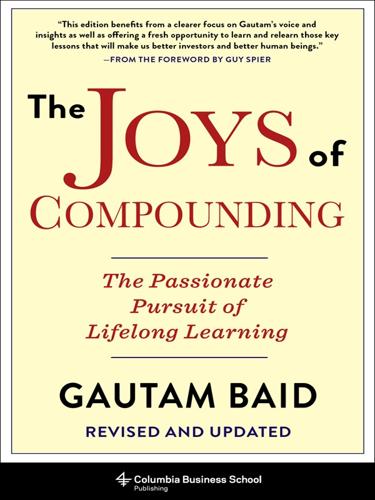
The Joys of Compounding: The Passionate Pursuit of Lifelong Learning, Revised and Updated
by
Gautam Baid
Published 1 Jun 2020
lens can help you avoid making hurried decisions in life based on emotions. Whether you are looking to invest in a business or in a new relationship or career, never forget to ask, “And then what?” It may well turn out to be a lifesaver. CHAPTER 29 PATTERN RECOGNITION Charlie and I have seen—we’re not remotely perfect at this—but we’ve seen patterns. Pattern recognition gets very important in evaluating humans and businesses. And the pattern recognition isn’t 100 percent and none of the patterns exactly repeat themselves, but there are certain things in business and securities markets we’ve seen over and over. —Warren Buffett Untapped Pricing Power Within the growth stock model, there’s a sub-position: There are actually businesses that you will find a few times in a lifetime where any manager could raise the return enormously just by raising prices—and yet they haven’t done it.
…
The Market Is Efficient Most, but Not All, of the Time 24. The Dynamic Art of Portfolio Management and Individual Position Sizing 25. To Finish First, You Must First Finish SECTION V—DECISION-MAKING 26. Read More History and Fewer Forecasts 27. Updating Our Beliefs in Light of New Evidence 28. Life Is a Series of Opportunity Costs 29. Pattern Recognition 30. Acknowledging the Role of Luck, Chance, Serendipity, and Randomness 31. The Education of a Value Investor Conclusion: Understanding the True Essence of Compounding Appendix A Appendix B Acknowledgments Notes Bibliography Index FOREWORD A little more than twenty years ago, I discovered Warren Buffett, Charlie Munger, Ben Graham and the art of Intelligent Investing.
…
Investors are better off with a few solid long-term choices than flitting from one speculation to another, always chasing the latest hot stock in the market. (Better to have a few good, long-term friends rather than changing your friends every week for short-term advantage.) The gap between price and value ultimately will determine our returns, but picking the right business is possibly the most important step in reducing errors. Improving pattern recognition skills increases the probability of successfully identifying the right businesses to invest in. Without doubt, cigar butts as a category have the potential to outperform quality over a short holding period, but over the long term, companies with increasing intrinsic value over time are the clear winners.

Driverless: Intelligent Cars and the Road Ahead
by
Hod Lipson
and
Melba Kurman
Published 22 Sep 2016
Source: Jakob Engel, Jorg Stuckler, and Daniel Cremers, “Large-Scale Direct Slam with Stereo Cameras,” in 2015 IEEE International Conference on Intelligent Robots and Systems (IROS), pp. 1935–1942. IEEE, 2015; Andreas Geiger, Philip Lenz, and Raquel Urtasun, “Are We Ready for Autonomous Driving? The KITTI Vision Benchmark Suite,” in 2012 IEEE Conference on Computer Vision and Pattern Recognition (CVPR), pp. 3354–3361, IEEE, 2012. Figure 12.1 GM’s Electric Networked-Vehicle (EN-V) Concept pod, an autonomous two-seater codeveloped with Segway for short trips in cities. Source: General Motors Figure 12.2 The most common job in most U.S. states in 2014 was truck driving. Source: National Public Radio Figure 12.3 Passengers relax with electronics in this driverless concept mockup.
…
A database would have to store information separately about the case where a car is in front and where a motorcycle is in front. A machine learning algorithm, on the other hand, would “learn” from the car example and be able to generalize to the motorcycle example automatically. Another way to think about machine learning is that it is “pattern recognition”—the act of teaching a program to react to or recognize patterns.5 While machine-learning techniques sound organic—the software learns to recognize patterns or to solve certain problems—what’s actually happening is that an algorithm parses vast amounts of data to look for statistical patterns.
…
In part as a result of Minsky’s influence, the 1970s was the golden age of symbolic AI. The more researchers tried to emulate human intelligence by programming it, however, the more they unwittingly demonstrated how little we understand how the brain really works. The neural-network renaissance Meanwhile, the development of neural networks for pattern recognition continued to lurch forward. In 1975, Harvard PhD student Paul Werbos created a new and improved Perceptron. By now, the term perceptron had become generic, meaning a layer of artificial neurons in a neural network. By this time, analog hardware contraptions like the original Perceptron had been set aside and artificial-intelligence researchers built neural networks in software.

The Myth of Artificial Intelligence: Why Computers Can't Think the Way We Do
by
Erik J. Larson
Published 5 Apr 2021
The solution is then made available or passed back to lower layers until we have a coherent prediction based on the original input. KURZWEIL’S HIERARCHICAL-PATTERN RECOGNITION THEORY The hierarchical nature of the neocortex has also been noted by Ray Kurzweil, who writes in his 2012 How to Create a Mind that “the neocortex is responsible for dealing with our ability to deal with patterns and to do so in a hierarchical fashion. Animals without a neocortex (basically non-mammals) are largely incapable of understanding hierarchies.”2 Kurzweil credits his own hierarchical theory, which he calls the pattern recognition theory of mind, as working off accepted neuroscience findings on the structure and function of the human neocortex, and also off progenitors like Hawkins’s own hierarchical account.
…
3 Marcus goes on to point out that such theories are entirely too generic to advance the ball in neuroscience and related efforts in AI and the cognitive sciences: “Almost anything any creature does could at some level be seen as hierarchical-pattern recognition; that’s why the idea has been around since the late nineteen-fifties. But simply asserting that the mind is a hierarchical-pattern recognizer by itself tells us too little: it doesn’t say why human beings are the sort of creatures that use language (rodents presumably have a capacity for hierarchical-pattern recognition, too, but don’t talk), and it doesn’t explain why many humans struggle constantly with issues of self-control, nor why we are the sort of creatures who leave tips in restaurants in towns to which we will never return.”4 Such generic theories are, ironically, also inspired by Big Data AI in a roundabout but very real way.
…
THE WORLD WIDE WEB The emergence of the World Wide Web spurred resurgence in AI for a simple reason: data. Suddenly, the availability of massive datasets, and in particular of text corpora (web pages) from the combined efforts of millions of new web users, breathed life into old, “shallow” statistical and pattern-recognition approaches. Suddenly, what used to be shallow became adequate and worked. Supervised learning algorithms such as artificial neural networks (neural nets, for short), decision trees, and Bayesian classifiers had existed in university labs for decades. But without large datasets, they hadn’t yet shown much promise on interesting problems like face recognition, or text classification, or spam or fraud detection.

The Economic Singularity: Artificial Intelligence and the Death of Capitalism
by
Calum Chace
Published 17 Jul 2016
We will return to this exponential growth later in this chapter, as understanding it is fundamental to comprehending the scale of the changes that are coming our way. The book argues that AI systems are on the verge of wholesale automation of white collar jobs – jobs involving cognitive skill such as pattern recognition and the acquisition, processing and transmission of information. In fact it argues that the process is already under way, and that the US is experiencing a jobless recovery from the Great Recession of 2008 thanks to this automation process. Ford claims that middle class jobs in the US are being hollowed out, with average incomes going into decline, and inequality increasing.
…
In particular, Brynjolfsson and McAfee want to answer a question they are often asked: “I have children in school. How should I be helping them prepare for the future?”[xxxvii] They are optimistic, believing that for many years to come, humans will be better than machines at generating new ideas, thinking outside the box (which they call “large-frame pattern recognition”) and complex forms of communication. They believe that humans' superior capabilities in these areas will enable most of us to keep earning a living, although they think the education system needs to be re-vamped to emphasise those skills, and downplay what they see as today's over-emphasis on rote learning.
…
All this data can be analysed to a certain level within the phone itself, and in many cases that will suffice to provide an effective diagnosis. If symptoms persist, or if the diagnosis is unclear or unconvincing, the data can be uploaded into the cloud, i.e., to server farms run by companies like Amazon and Google. The heart of diagnosis is pattern recognition. When sophisticated algorithms compare and contrast a set of symptoms with data from millions or even billions of other patients, the quality of diagnosis can surpass what any single human doctor could offer. Ross Crawford and Jonathan Roberts are professors of orthopaedic research and robotics respectively at Queensland University of Technology.

Our Final Invention: Artificial Intelligence and the End of the Human Era
by
James Barrat
Published 30 Sep 2013
The output of “black box” artificial intelligence tools can’t ever be predicted. So they can never be truly and verifiably “safe.” * * * But they’ll likely play a big role in AGI systems. Many researchers today believe pattern recognition—what Rosenblatt’s Perceptron aimed for—is our brain’s chief tool for intelligence. The inventor of the Palm Pilot and Handspring Treo, Jeff Hawkins, pioneered handwriting recognition with ANNs. His company, Numenta, aims to crack AGI with pattern recognition technology. Dileep George, once Numenta’s Chief Technology Officer, now heads up Vicarious Systems, whose corporate ambition is stated in their slogan: We’re Building Software that Thinks and Learns Like a Human.
…
The cognitive sciences are the brain’s “principles of flight.” OpenCog’s organizing theme is that intelligence is based on high-level pattern recognition. Usually, “patterns” in AI are chunks of data (files, pictures, text, objects) that have been classified—organized by category—or will be classified by a system that’s been trained on data. Your e-mail’s “spam” filter is an expert pattern recognizer—it recognizes one or more traits of unwanted e-mail (for example, the words “male enhancement” in the subject line) and segregates it. OpenCog’s notion of pattern recognition is more refined. The pattern it finds in each thing or idea is a small program that contains a kind of description of the thing.
…
The intelligence explosion was born. Good was more right than he knew about ANNs. Today, artificial neural networks are an artificial intelligence heavyweight, involved in applications ranging from speech and handwriting recognition to financial modeling, credit approval, and robot control. ANNs excel at high level, fast pattern recognition, which these jobs require. Most also involve “training” the neural network on massive amounts of data (called training sets) so that the network can “learn” patterns. Later it can recognize similar patterns in new data. Analysts can ask, based on last month’s data, what the stock market will look like next week.
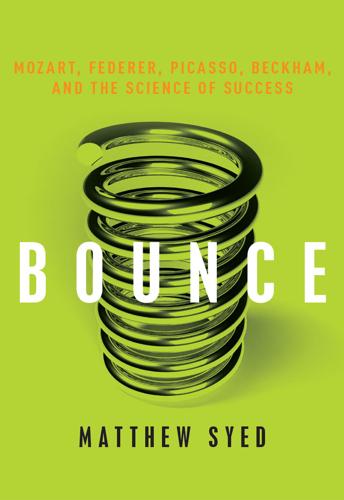
Bounce: Mozart, Federer, Picasso, Beckham, and the Science of Success
by
Matthew Syed
Published 19 Apr 2010
So he tested chess masters under “blitz” conditions, where each player has only five minutes on the clock, with around six seconds per move (in standard conditions there are forty moves in a ninety-minute period, allowing around two minutes, fifteen seconds per move). Klein found that, for chess experts, the move quality hardly changed at all in blitz conditions, even though there was barely enough time to take the piece, move it, release it, and hit the timer. Klein then tested the pattern-recognition theory of decision making directly. He asked chess experts to think aloud as they studied midgame positions. He asked them to tell him everything they were thinking, every move considered, including the poor ones, and especially the very first move considered. He found that the first move considered was not only playable but also in many cases the best possible move from all the alternatives.
…
Several times during a game you’ll see him making what seem to be aimless circles on the other side of the rink from the traffic, and then, as if answering a signal, he’ll dart ahead to a spot where, an instant later, the puck turns up. This is a perfect example of expert decision making in practice: circumventing combinatorial explosion via advanced pattern recognition. It is precisely the same skill wielded by Kasparov, but on an ice hockey pitch rather than a chessboard. How was Gretzky able to do this? Let’s hear from the man himself: “I wasn’t naturally gifted in terms of size and speed; everything I did in hockey I worked for.” And later: “The highest compliment that you can pay me is to say that I worked hard every day….
…
All of which helps to explain a qualification that was made earlier in the chapter: you will remember that the ten-thousand-hour rule was said to apply to any complex task. What is meant by complexity? In effect, it describes those tasks characterized by combinatorial explosion; tasks where success is determined, first and foremost, by superiority in software (pattern recognition and sophisticated motor programs) rather than hardware (simple speed or strength). Most sports are characterized by combinatorial explosion: tennis, table tennis, soccer, hockey, and so on. Just try to imagine, for a moment, designing a robot capable of solving the real-time spatial, motor, and perceptual challenges necessary to defeat Roger Federer on a tennis court.

Flash Crash: A Trading Savant, a Global Manhunt, and the Most Mysterious Market Crash in History
by
Liam Vaughan
Published 11 May 2020
The reality, of course, was that it was very difficult to consistently beat the market after costs, particularly when you were so far from the flow of information. The selection process for Nav and his fellow interviewees was in three parts. First, candidates were given the McQuaig Mental Agility Test, a multiple-choice psychometric exam testing pattern recognition and verbal reasoning. This was followed by a one-on-one session in which they were asked to quickly multiply two- and three-digit numbers in their heads. Those who made it through were invited back a few days later for a two-hour interview, where they were questioned on how they would react to various hypothetical scenarios.
…
This perpetual gamesmanship helps explain why nine in every ten orders placed in the futures markets were canceled before they could be filled. In the same way poker players try to deduce their opponents’ hands from their betting patterns or the twitch above their left eye, traders will use pattern recognition and statistical analysis to fill in some of the gaps in their knowledge. Fifty offers keep appearing on the sell side of the market exactly ten minutes apart? Maybe it’s an algorithm that can be exploited. Someone keeps placing bids of 139 lots? Perhaps it’s a complacent day trader who hasn’t bothered to mix up his order size.
…
The first element involved statistically analyzing changes in the order book and elsewhere for information that indicated whether prices would rise or fall. Inputs might include the number and type of resting orders at different levels, how fast prices are moving around, and the types of market participants active at any time. “Think of it as a giant data science project,” explains one HFT owner. For years, Nav had used his superior pattern recognition and recall skills to read the ebbs and flows of the order book until it became second nature, but even the most gifted human scalper is no match for a computer at parsing large amounts of data. When it came to speed, the leading HFT firms invested hundreds of millions of dollars in computers, cable, and telecommunications equipment to ensure they could react first in what was often a winner-takes-all game.

Your Face Belongs to Us: A Secretive Startup's Quest to End Privacy as We Know It
by
Kashmir Hill
Published 19 Sep 2023
The area was not yet known as Silicon Valley, but it was already at the center of the computing industry, manufacturing newly invented transistors and semiconductors that innovation stations—such as Bell Labs and the company that Bledsoe founded, called Panoramic Research Incorporated—were trying to dream up applications for. Panoramic frequently brought in guests, including Minsky, for conversations about what computers might one day accomplish. Bledsoe’s research team at Panoramic worked primarily on automated pattern recognition and machine reading, giving a computer a whole bunch of data in the hope that the computer could sort through it in a meaningful way. But it was early days, so it was challenging to write programs that actually worked. A magazine publisher asked Panoramic for a computer program that could scan its subscribers’ names and addresses off metal-stamping plates so that the company could have a list of its customers.
…
“People could use this stuff in a very, very bad way,” he said. “As well as in a very good way,” he hastily added. But even as Schmidt was onstage, telling two pit bull reporters that universal facial recognition was something Google would never, ever release, the company was negotiating to buy Pittsburgh Pattern Recognition. Nicknamed “PittPatt,” the company had developed a facial recognition product that had recently been used to identify college students, without their knowledge, by searching for their faces on Facebook. * * * — IN THE LATE 1990S, a young engineer named Henry Schneiderman, who was getting his PhD at Carnegie Mellon, set out to help computers see faces better.
…
GO TO NOTE REFERENCE IN TEXT Woody Bledsoe: The descriptions of Bledsoe’s life and work are based primarily on two documents: Shaun Raviv, “The Secret History of Facial Recognition,” Wired, January 21, 2020; and Michael Ballantyne, Robert S. Boyer, and Larry Hines, “Woody Bledsoe: His Life and Legacy,” AI Magazine 17, no. 1 (1996): 7–20. GO TO NOTE REFERENCE IN TEXT a government patron: A history of the CIA published in 1969 and obtained by Governmentattic.org discusses “two projects in pattern recognition” that the agency helped establish, including the “development of a man-machine system for facial recognition.” “History of the Office of Research and Development, Volumes 1 through 6,” declassified for release by the CIA on November 11, 2017. GO TO NOTE REFERENCE IN TEXT a line of research: Shaun Raviv graciously shared digital versions of papers and materials from Woody Bledsoe’s archive at the University of Texas, which I relied upon for this section.

Hit Refresh: The Quest to Rediscover Microsoft's Soul and Imagine a Better Future for Everyone
by
Satya Nadella
,
Greg Shaw
and
Jill Tracie Nichols
Published 25 Sep 2017
Although Amazon did not report its AWS revenues in those days, they were the clear leader, building a huge business without any real challenge from Microsoft. In his annual letter to shareholders in April 2011, just as I was beginning my new role, Amazon CEO Jeff Bezos gleefully offered a short course on the computer science and economics underlying their burgeoning cloud enterprise. He wrote about Bayesian estimators, machine learning, pattern recognition, and probabilistic decision making. “The advances in data management developed by Amazon engineers have been the starting point for the architectures underneath the cloud storage and data management services offered by Amazon Web Services (AWS),” he wrote. Amazon was leading a revolution and we had not even mustered our troops.
…
But far from Baymax or Brenner, AI today is some ways away from becoming what’s known as artificial general intelligence (AGI), the point at which a computer matches or even surpasses human intellectual capabilities. Like human intelligence, artificial intelligence can be categorized by layer. The bottom layer is simple pattern recognition. The middle layer is perception, sensing more and more complex scenes. It’s estimated that 99 percent of human perception is through speech and vision. Finally, the highest level of intelligence is cognition—deep understanding of human language. These are the building blocks of AI, and for many years Microsoft has invested in advancing each of these tiers—statistical machine learning tools to make sense of data and recognize patterns; computers that can see, hear, and move, and even begin to learn and understand human language.
…
And so our vision is to build tools that have true artificial intelligence infused across agents, applications, services, and infrastructure: We’re harnessing artificial intelligence to fundamentally change how people interact with agents like Cortana, which will become more and more common in our lives. Applications like Office 365 and Dynamics 365 will have AI baked-in so that they can help us focus on things that matter the most and get more out of every moment. We’ll make the underlying intelligence capabilities of our own services—the pattern recognition, perception, and cognitive capabilities—available to every application developer in the world. And, lastly, we’re building the world’s most powerful AI supercomputer and making that infrastructure available to anyone. A range of industries are using these AI tools. McDonald’s is creating an AI system that can help its workers take your order in the drive-through line, making ordering food simpler, more efficient, and more accurate.

The Creative Curve: How to Develop the Right Idea, at the Right Time
by
Allen Gannett
Published 11 Jun 2018
Professor Robert Baron, who studies the intersection of entrepreneurship and psychology, wanted to understand how entrepreneurs ferret out opportunities. The answer, he found, is pattern recognition. One of our brain’s fundamental tasks is identifying patterns. This task is critical in helping both to protect us and to discover rewarding opportunities. As we discussed, if something poses a threat to us, we want to avoid it. If something promises a potential reward, we want to explore it. Pattern recognition relies on two mental models, both of which Professor Baron believes are used by entrepreneurs to come up with new ideas. The first is a prototype—but not the kind of prototype that might immediately come up in most people’s minds.
…
over $5 billion: “United Therapeutics Corporation,” Google Finance (2017) https://www.fool.com/quote/nasdaq/united-therapeutics/uthr. Professor Robert Baron: Robert A. Baron, “Opportunity Recognition as Pattern Recognition: How Entrepreneurs ‘Connect the Dots’ to Identify New Business Opportunities,” Academy of Management Perspectives, February 2006, http://www.iedmsu.ru/download/fa4_1.pdf. The answer, he found, is pattern recognition: Ibid. Earlier I mentioned serial entrepreneur Kevin Ryan: Quotes from Ryan drawn from my interviews with him. Ted Sarandos has continued to consume: These details relating to Sarandos’s professional life drawn mostly from my interviews with him.
…
Sally has worked with numerous people in her career, good and bad, and these colleagues and friends have become, for her, exemplars. Sally would automatically compare Tom to the best, or most promising, employees she’s worked with in the past, and upon deciding that Tom in some ways is similar to a former star colleague, she quickly offers him a job. One critical facet of pattern recognition is that it allows entrepreneurs to develop an uncanny instinct for opportunity. Research shows that when entrepreneurs have significant prior knowledge, they no longer need to engage in slow, deliberate searches for new ideas. On the contrary, their prior experience gives them a rich library of exemplars they can access automatically.
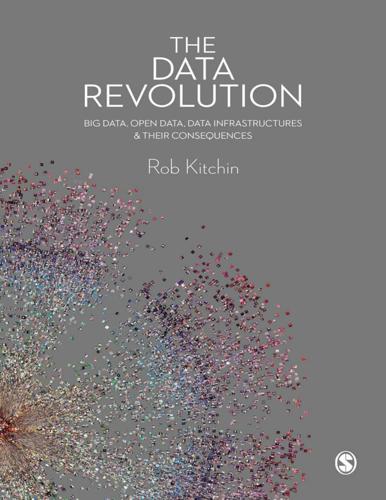
The Data Revolution: Big Data, Open Data, Data Infrastructures and Their Consequences
by
Rob Kitchin
Published 25 Aug 2014
Each broad class of analytic is now discussed in turn, though it should be noted that they are often used in combination. For example, data mining and pattern recognition might provide the basis for prediction or optimisation, or statistics might be used in data mining to detect patterns or in calculating a prediction, or visualisation might be used in data mining or to communicate outputs from simulations, and so on. Data mining and pattern recognition Data mining is the process of extracting data and patterns from large datasets (Manyika et al. 2011). It is premised on the notion that all massive datasets hold meaningful information that is non-random, valid, novel, useful and ultimately understandable (Han et al. 2011).
…
Explanation: why did it happen? What is its impact? Prediction: what is likely to happen next? What if we did this or that? Prescription: what is the optimal answer or outcome? How is that achieved? The answers to these questions are derived from four broad classes of analytics: data mining and pattern recognition; data visualisation and visual analytics; statistical analysis; and prediction, simulation, and optimisation. Each of these is discussed in brief, but first the pre-analytics phase and machine learning are introduced as they are central to all four. Pre-analytics All data analytics require the data to be analysed to be pre-prepared; that is readied and checked.
…
Likewise, Google undertakes extensive research and development, it works in partnership with scientists and it buys scientific knowledge, either funding research within universities or by buying the IP of other companies, to refine and extend the utility of how it organises, presents and extracts value from data. Thus, if statistical algorithms find patterns in data it is because pattern recognition science, along with domain-specific knowledge, has been employed. Third: data can speak for themselves free of human bias or framing. Related to the notion that the production of knowledge from big data occurs unmoored from science is the idea that big data analytics enable data to speak for themselves unencumbered by contextualisation or the vagaries of human elucidation.
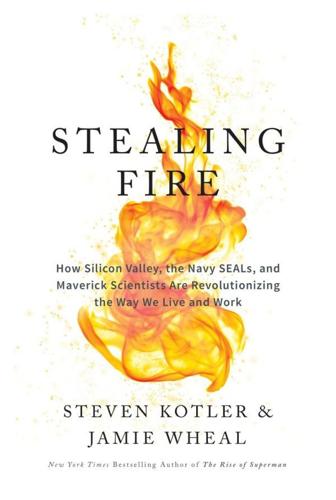
Stealing Fire: How Silicon Valley, the Navy SEALs, and Maverick Scientists Are Revolutionizing the Way We Live and Work
by
Steven Kotler
and
Jamie Wheal
Published 21 Feb 2017
It can process more data in much shorter time frames. In ecstasis, the conscious mind takes a break, and the subconscious takes over. As this occurs, a number of performance-enhancing neurochemicals flood the system, including norepinephrine and dopamine. Both of these chemicals amplify focus, muscle reaction times, and pattern recognition. With the subconscious in charge and those neurochemicals in play, SEALs can read micro-expressions across dark rooms at high speeds. So, when a team enters hostile terrain, they can break complex threats into manageable chunks. They quickly segment the battle space into familiar situations they know how to handle, like guards that need disarming or civilians that need corralling, and unfamiliar situations—a murky shape in a far corner—that may or may not be a threat.
…
Often, an ecstatic experience25 begins when the brain releases norepinephrine and dopamine into our system. These neurochemicals raise heart rates,26 tighten focus, and help us sit up and pay attention. We notice more of what’s going on around us, so information normally tuned out or ignored becomes more readily available. And besides simply increasing focus, these chemicals amp up the brain’s pattern recognition abilities,27 helping us find new links between all this incoming information. As these changes are taking place, our brainwaves slow from agitated beta to calmer alpha,28 shifting us into daydreaming mode: relaxed, alert, and able to flit from idea to idea without as much internal resistance.
…
None of these practical, technical achievements are the kind of result that most people associate with the navel-gazing world of psychedelics. But similar outcomes are happening in Fadiman’s current survey of microdosing among professionals. With more than four hundred responses from people in dozens of fields, the majority, as Fadiman recently explained, report “enhanced pattern recognition [and] can see more of the pieces at once of a problem they are trying to solve.” With these developments, psychedelics have begun moving from recreational diversion to performance-enhancing supplement. “A shift began about four or five years ago,” author and venture capitalist Tim Ferriss45 told us.
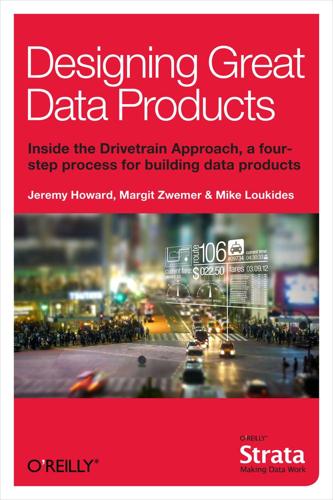
Designing Great Data Products
by
Jeremy Howard
,
Mike Loukides
and
Margit Zwemer
Published 23 Mar 2012
Engineers are often quietly on the leading edge of algorithmic applications because they have long been thinking about their own modeling challenges in an objective-based way. Industrial engineers were among the first to begin using neural networks, applying them to problems like the optimal design of assembly lines and quality control. Brian Ripley’s seminal book on pattern recognition gives credit for many ideas and techniques to largely forgotten engineering papers from the 1970s. When designing a product or manufacturing process, a drivetrain-like process followed by model integration, simulation and optimization is a familiar part of the toolkit of systems engineers.
…
Next, we consider what data the car needs to collect; it needs sensors that gather data about the road as well as cameras that can detect road signs, red or green lights, and unexpected obstacles (including pedestrians). We need to define the models we will need, such as physics models to predict the effects of steering, braking and acceleration, and pattern recognition algorithms to interpret data from the road signs. As one engineer on the Google self-driving car project put it in a recent Wired article, “We’re analyzing and predicting the world 20 times a second.” What gets lost in the quote is what happens as a result of that prediction. The vehicle needs to use a simulator to examine the results of the possible actions it could take.
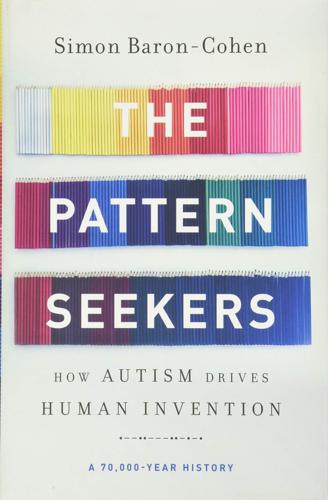
The Pattern Seekers: How Autism Drives Human Invention
by
Simon Baron-Cohen
Published 14 Aug 2020
It’s not that our ancestors before 70,000 to 100,000 years ago were incapable of recognizing all patterns; they could certainly recognize simple patterns such as “A is associated with B.” Even a rat or monkey can do this, using “statistical learning”: keeping track of how likely it is that A will be associated with B.34 And a rat or monkey can also use other pattern recognition processes, such as associative learning, which is particularly powerful when B is a reward or a punishment.35 Simple associative learning of this kind can explain how our hominid ancestors produced simple tools—like using a rock as a hammer to crack open a shell to get the nut inside, or using a stone ax to cut and scrape—and how they learned what was good to eat.
…
Neuroscientist Mike Lombardo and I examined brain-scanning (functional magnetic resonance imaging, or fMRI) data from studies in which a person is asked to do tasks related to systemizing. We looked at tasks involving attention to detail, error checking, reasoning, rule learning, numerical reasoning, and pattern recognition. All these aspects of systemizing use the sensory-perceptual areas of the brain. This makes sense because, when you systemize, you analyze the detail coming in through your senses, telling you what the world is actually like. In addition, the fMRI studies show that the Systemizing Mechanism depends strongly on lateral frontoparietal connections within the brain and a brain region called the intraparietal sulcus (IPS).43 The IPS is also active when humans engage in tool-making and is atypical in children with dyscalculia (those who struggle to systemize numbers).
…
A third possibility is that assortative mating among hyper-systemizers might be the result of two people being attracted to each other because their minds are similar.16 But how could we test this? We invited mothers and fathers of autistic children to take a systemizing test. We used the Embedded Figures Test, a pattern recognition test that involves finding a target piece hidden within a design. We had previously given this test to autistic adults, who are faster and more accurate at it than are typical adults, probably because, being hyper-systemizers, they break down information into its component parts as rapidly as possible, to then look for if-and-then patterns.

The Big Nine: How the Tech Titans and Their Thinking Machines Could Warp Humanity
by
Amy Webb
Published 5 Mar 2019
Baidu, Tencent, and Alibaba may be publicly traded giants, but typical of all large Chinese companies, they must bend to the will of Beijing. China’s massive population of 1.4 billion citizens puts it in control of the largest, and possibly most important, natural resource in the era of AI: human data. Voluminous amounts of data are required to refine pattern recognition algorithms—which is why Chinese face recognition systems like Megvii and SenseTime are so attractive to investors. All the data that China’s citizens are generating as they make phone calls, buy things online, and post photos to social networks are helping Baidu, Alibaba, and Tencent to create best-in-class AI systems.
…
Yet we’ve both learned what an apple is and the general characteristics of how an apple tastes, what its texture is, and how it smells. During our lifetimes, we’ve learned to recognize what an apple is through reinforcement learning—someone taught us what an apple looked like, its purpose, and what differentiates it from other fruit. Then, over time and without conscious awareness, our autonomous biological pattern recognition systems got really good at determining something was an apple, even if we only had a few of the necessary data points. If you see a black-and-white, two-dimensional outline of an apple, you know what it is—even though you’re missing the taste, smell, crunch, and all the other data that signals to your brain this is an apple.
…
At MIT, computer scientist Joseph Weizenbaum wrote an early AI system called ELIZA, a chat program named after the ingenue in George Bernard Shaw’s play Pygmalion.23 This development was important for neural networks and AI because it was an early attempt at natural language processing, and the program accessed various prewritten scripts in order to have conversations with real people. The most famous script was called DOCTOR,24 and it mimicked an empathetic psychologist using pattern recognition to respond with strikingly humanistic responses. The Dartmouth workshop had now generated international attention, as did its researchers, who’d unexpectedly found themselves in the limelight. They were nerdy rock stars, giving everyday people a glimpse into a fantastical new vision of the future.
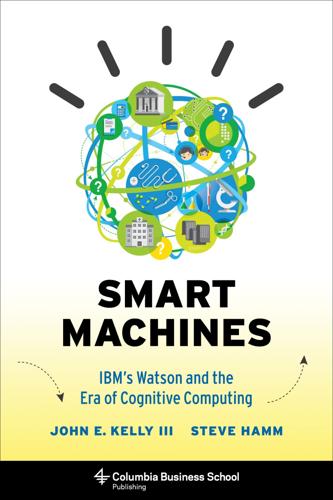
Smart Machines: IBM's Watson and the Era of Cognitive Computing (Columbia Business School Publishing)
by
John E. Kelly Iii
Published 23 Sep 2013
Rather than processing data sequentially, as in classic von Neumann computing, the chips mimic the brain’s event-driven, distributed, and parallel processing. Using those chips, team members were able to write applications, including teaching the system to play Pong, one of the earliest computer games, which demonstrated capabilities such as navigation, machine vision, and pattern recognition.10 In mid-2013, IBM produced a second generation of chips, with the design name TrueNorth. They possess approximately the same number of neurons as a bumblebee. If you put one hundred of the chips together in a computing system, you’re got something that occupies less than two liters of volume and consumes less energy than a lightbulb.
…
The flower might be designed to give visual cues to the participants in meetings, opening if the conversation is dynamic and useful and closing if it is boring and repetitive.12 The cognitive chips and Watson are complementary technologies. For the sake of simplicity, you can think of them as the right brain and left brain of the era of cognitive systems. Watson, the left brain, focuses on language and analytical thinking. The cognitive chips address senses and pattern recognition. Over the coming years, IBM scientists hope to meld the Watson and TrueNorth capabilities together to create a holistic computing intelligence. SCENARIO: MEDICAL IMAGING ASSISTANT Over the past century, tremendous progress has been made in technologies designed to help spot evidence of disease inside the human body.
…
Milind grew up in what he calls the “concrete jungle” of Pune, India. He loved the fact that even though it was a large city, he could get almost anywhere he wanted to go on foot. Later, he studied for a Ph.D. in electrical engineering at the University of Illinois at Urbana-Champaign. The focus of his dissertation was on pattern recognition in multimedia content, which, it turns out, has some similarities to mapping the movements of people in cities. After working at IBM Research for several years, he got interested in using data and advanced analytics tools to solve transportation problems. His boss suggested that he find a city that would be willing to let him work with real data.
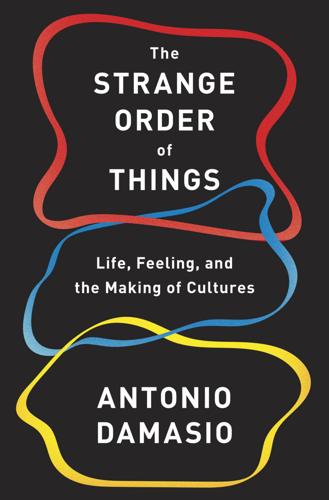
The Strange Order of Things: The Biological Roots of Culture
by
Antonio Damasio
Published 6 Feb 2018
Nervous systems allow for the precise localization of sensory stimulation and for the coordination of complex and diverse physiological processes that integrate all major life-regulatory systems in the homeostatic effort. Giorgio Santoni, Claudio Cardinali, Maria Beatrice Morelli, Matteo Santoni, Massimo Nabissi, and Consuelo Amantini, “Danger- and Pathogen-Associated Molecular Patterns Recognition by Pattern-Recognition Receptors and Ion Channels of the Transient Receptor Potential Family Triggers the Inflammasome Activation in Immune Cells and Sensory Neurons,” Journal of Neuroinflammation 12, no. 1 (2015): 21; McMahon, La Russa, and Bennett, “Crosstalk Between the Nociceptive and Immune Systems in Host Defense and Disease”; Ardem Patapoutian, Simon Tate, and Clifford J.
…
Woolf, “Transient Receptor Potential Channels: Targeting Pain at the Source,” Nature Reviews Drug Discovery 8, no. 1 (2009): 55–68; Takaaki Sokabe and Makoto Tominaga, “A Temperature-Sensitive TRP Ion Channel, Painless, Functions as a Noxious Heat Sensor in Fruit Flies,” Communicative and Integrative Biology 2, no. 2 (2009): 170–73; Farina et al., “Pain-Related Modulation of the Human Motor Cortex.” 4. Santoni et al., “Danger- and Pathogen-Associated Molecular Patterns Recognition by Pattern-Recognition Receptors and Ion Channels of the Transient Receptor Potential Family Triggers the Inflammasome Activation in Immune Cells and Sensory Neurons”; Sokabe and Tominaga, “Temperature-Sensitive TRP Ion Channel, Painless, Functions as a Noxious Heat Sensor in Fruit Flies.” 5. Colin Klein and Andrew B.
…
Gaining access to strategies and devices that can speed up movement or improve one’s intellectual performance is hardly problematic except for competitions. The application of artificial intelligence to medical diagnostics is very promising. Diagnosis of illnesses and interpretation of diagnostic procedures are the bread and butter of medicine and depend on pattern recognition. Machine learning programs are a natural tool in this area and have achieved reliable and trustworthy results.2 By comparison with some of the currently contemplated genetic interventions, the developments in this general area are largely benign and potentially valuable. The most likely and immediate scenario is the achievement of prosthetic enhancement devices that could serve to not only compensate for missing functions but also enhance or augment human perception.

Genius Makers: The Mavericks Who Brought A. I. To Google, Facebook, and the World
by
Cade Metz
Published 15 Mar 2021
This gave decades of onlookers the impression that scientists were on the verge of re-creating the powers of the brain when, in reality, they were not. In 1966, a few dozen researchers traveled to Puerto Rico, gathering at the Hilton hotel in San Juan. They met to discuss the latest advances in what was then called “pattern recognition”—technology that could identify patterns in images and other data. Whereas Rosenblatt viewed the Perceptron as a model of the brain, others saw it as a means of pattern recognition. In later years, some commentators imagined Rosenblatt and Minsky locking horns at academic conferences like the one in San Juan, openly debating the future of the Perceptron, but their rivalry was implicit.
…
Eighty-nine pages in, as an aside, the book mentioned the Perceptron, calling it a device “capable of formulating simple hypotheses from regular exposure to raw data,” and LeCun was hooked, instantly enamored with the idea of a machine that could learn. Learning, he believed, was inextricable from intelligence. “Any animal with a brain can learn,” he often said. At a time when few researchers paid much attention to neural networks and those that did saw it not as artificial intelligence but as just another form of pattern recognition, LeCun homed in on the idea during his years as an undergraduate at the École Supérieure d’Ingénieurs en Électrotechnique et Électronique. Most of the papers he studied were written in English by Japanese researchers, because Japan was one of the few places where this research still went on.
…
As Hinton said: “He hasn’t got enough Trump in him.” Sitting at his desk inside Chauffeur, Krizhevsky was at the heart of this AI boom, but he didn’t see his role as all that important, and he didn’t see any of it as artificial intelligence. It was deep learning, and deep learning was just mathematics, pattern recognition, or, as he called it, “nonlinear regression.” These techniques had been around for decades. It was merely that people like him had come along at the right time, when there was enough data and enough processing power to make it all work. The technologies he built were in no way intelligent. They worked only in very particular situations.
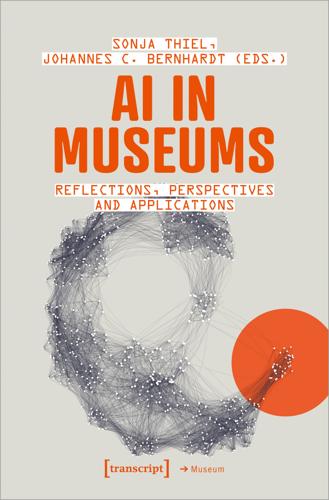
AI in Museums: Reflections, Perspectives and Applications
by
Sonja Thiel
and
Johannes C. Bernhardt
Published 31 Dec 2023
usp=drive_web&ouid=10262104228151817806 3&usp=embed_facebook (all URLs here accessed in August 2023). 75 76 Part 1: Reflections available to support discoveries in its collection. The Training the Archive project at the Ludwig Forum Aachen (Germany) seeks to use machine learning technologies to embed contextual collections data, with a focus on pattern recognition as a means to influence new approaches to curatorial thinking and practices. The Badisches Landesmuseum’s (Germany) xCurator project is exploring how predictive analytics and natural language processing can be used to engage visitors with the entire collection, not only the objects on display, and looks at recommendation modelling and storytelling mechanisms to support discovery.
…
In: Ignacio Farías/Thomas Bender (Eds.). Urban Assemblages: How Actor-Network Theory Changes Urban Studies. London, Routledge, 1–24. https://doi.org/10.4 324/9780203870631. Fiorucci, Marco/Khoroshiltseva, Marina/Pontil, Massimiliano et al. (2020). Machine Learning for Cultural Heritage. A Survey, Pattern Recognition Letters 133, 102–08. https://doi.org/10.1016/j.patrec.2020.02.017. Foka, Anna/Attemark, Jenny/Wahlberg, Fredrik (2022). Women’s Metadata, Semantic Web, Ontologies and AI: Potentials in Critically Enriching Carl Sahlin’s Industrial History Collection. In: Theopisti Stylianou-Lambert/Alexandra Bounia/ Antigone Heraclidou (Eds.).
…
Should this come to pass, we predict that machine learning as a field will be better positioned to understand how its technology impacts people and to design solutions that work with fidelity and equity in their deployment contexts. References Ayatollahi, Seyed Morteza/Nafchi, Hossein Ziaei (2013). Persian Heritage Image Binarization Competition (PHIBC 2012). Proceedings of the 1st Iranian Conference on Pattern Recognition and Image Analysis (PRIA), 1–4. https://doi.org/10 .1109/PRIA.2013.6528442 (all URLs here accessed in August 2023). Brantl, Markus/Schweter, Stefan (2022). Neue Wege der Bildsuche an der Bayerischen Staatsbibliothek. Zeitschrift für Bibliothekswesen und Bibliographie 69 (6), 328–37. https://doi.org/10.3196/186429502069646.
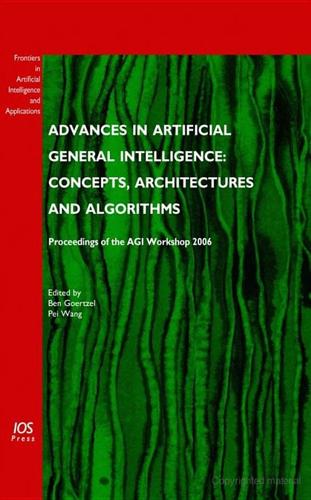
Advances in Artificial General Intelligence: Concepts, Architectures and Algorithms: Proceedings of the Agi Workshop 2006
by
Ben Goertzel
and
Pei Wang
Published 1 Jan 2007
Like De Garis et al, Looks is concerned with ways of making evolutionary learning much more efficient with a view toward enabling it to play a leading role in AGI – but the approach is completely different. Rather than innovating on the hardware side, Looks suggests a collection of fundamental algorithmic innovations, which ultimately constitute a proposal to replace evolutionary learning with a probabilistic-pattern-recognition based learning algorithm (MOSES = Meta-Optimizing Semantic Evolutionary Search) that grows a population of candidate problem solutions via repeatedly recognizing probabilistic patterns in good solutions and using these patterns to generate new ones. The key ideas underlying MOSES are motivated by cognitive science ideas, most centrally the notion of “adaptive representation building” – having the learning algorithm figure out the right problem representation as it goes along, as part of the learning process, rather than assuming a well-tuned representation right from the start.
…
The chapter by Matthew Ikle’ et al, reviews aspects of Probabilistic Logic Networks (PLN) -- an AI problem-solving approach that, like MOSES, has been created with a view toward integration into the Novamente AI framework, as well as toward stand-alone performance. PLN is a probabilistic logic framework that combines probability theory, term logic and predicate logic with various heuristics in order to provide comprehensive forward and backward chaining inference in contexts ranging from mathematical theorem-proving to perceptual pattern-recognition, and speculative inductive and abductive inference. The specific topic of this chapter is the management of “weight of evidence” within PLN. Like NARS mentioned above and Peter Walley’s imprecise probability theory [23], PLN quantifies truth values using a minimum of two numbers (rather than, for instance, a single number representing a probability or fuzzy membership value).
…
So by having a generic model routed once only in the chip, we can send it different data for different neural net module evolutions. Sending in data to the already routed chip takes only a few seconds. As a more concrete illustration of this “generic evolution” idea, we provide the following example. Assume we want to evolve several hundred 2D pattern recognition neural net modules. The pattern to be detected is “shone” onto an 8 by 8 pixel grid of photo-cell detectors, each of whose signal strength outputs is strong if strong light falls on the photo-cell, and is weak if the light falling on it is weak. These 64 light intensity output signals are fed into a fully connected 16 neuron neural network.

Survival of the Richest: Escape Fantasies of the Tech Billionaires
by
Douglas Rushkoff
Published 7 Sep 2022
Contents Introduction: Meet The Mindset 1 The Insulation Equation BILLIONAIRE BUNKER STRATEGIES 2 Mergers and Acquisitions ALWAYS HAVE AN EXIT STRATEGY 3 A Womb with a View YOU ARE SAFE IN YOUR TECHNO-BUBBLE 4 The Dumbwaiter Effect OUT OF SIGHT, OUT OF MIND 5 Selfish Genes SCIENTISM OVER MORALITY 6 Pedal to the Metal DEHUMANIZE, DOMINATE, AND EXTRACT 7 Exponential WHEN YOU CAN GO NO FURTHER, GO META 8 Persuasive Tech IF YOU COULD JUST PUSH A BUTTON 9 Visions from Burning Man WE ARE AS GODS 10 The Great Reset TO SAVE THE WORLD, SAVE CAPITALISM 11 The Mindset in the Mirror RESISTANCE IS FUTILE 12 Cybernetic Karma HOISTED BY THEIR OWN PETARD 13 Pattern Recognition EVERYTHING COMES BACK Acknowledgments Notes Survival of the Richest INTRODUCTION Meet The Mindset I got invited to a super-deluxe resort to deliver a speech to what I assumed would be a hundred or so investment bankers. It was by far the largest fee I had ever been offered for a talk—about a third of my annual salary as a professor at a public college—all to deliver some insight on “the future of technology.”
…
Maybe the fear of AI—this awareness of something they believe to be greater than themselves—will be enough to make holders of The Mindset less disdainful of the rest of humanity, and help them begin to see themselves as on the same team as everyone else. After all, they’re not escaping from us; they’re escaping from their own creations. Their fate will ultimately depend on whether their artificial intelligences adopt the mindset of their creators. 13 Pattern Recognition EVERYTHING COMES BACK A s I type these words, Jeff Bezos is making his first trip into space on his privately funded rocket ship, Blue Origin. He has reached Zero G a week after fellow billionaire Richard Branson got there in a slightly less explosively priapic fashion, his craft first hoisted up to the sky by some airplanes before setting off for higher altitudes.
…
There’s no place to externalize harm, but that becomes a strong incentive to engage in practices that benefit the community instead of poisoning or impoverishing it. This, in turn, inspires innovation and efficiencies rarely achieved when companies are financialized by distant shareholders. McLuhan predicted that in order to orient ourselves properly in the digital age, we would need to develop pattern recognition—the ability to soften our focus from the particular details of any situation in order to perceive the greater patterns. Digital feedback loops are helping us see that our media, technology, culture, economy, and natural world all have at least as much of a cyclical character as a linear one.

The Alignment Problem: Machine Learning and Human Values
by
Brian Christian
Published 5 Oct 2020
In Advances in Neural Information Processing Systems, 1471–79, 2016. Bellman, Richard. Dynamic Programming. Princeton, NJ: Princeton University Press, 1957. Bendale, Abhijit, and Terrance Boult. “Towards Open World Recognition.” In Proceedings of the IEEE Conference on Computer Vision and Pattern Recognition, 1893–1902. CVPR, 2015. Bengio, Yoshua. “Neural Net Language Models.” Scholarpedia 3, no. 1 (2008): 3881. http://www.scholarpedia.org/article/Neural_net_language_models. Bengio, Yoshua, Réjean Ducharme, Pascal Vincent, and Christian Jauvin. “A Neural Probabilistic Language Model.” Journal of Machine Learning Research 3 (2003): 1137–55.
…
Springer Science & Business Media, 1985. Demski, Abram, and Scott Garrabrant. “Embedded Agency.” CoRR abs/1902.09469 (2019). Deng, Jia, Wei Dong, Richard Socher, Li-Jia Li, Kai Li, and Li Fei-Fei. “ImageNet: A Large-Scale Hierarchical Image Database.” In 2009 IEEE Conference on Computer Vision and Pattern Recognition, 248–55. IEEE, 2009. Denker, John S., and Yann LeCun. “Transforming Neural-Net Output Levels to Probability Distributions.” In Advances in Neural Information Processing Systems 3, 853–59, 1991. Denker, John, Daniel Schwartz, Ben Wittner, Sara Solla, Richard Howard, Lawrence Jackel, and John Hopfield.
…
In Proceedings of the 17th International Conference on Autonomous Agents and Multiagent Systems, 122–30. International Foundation for Autonomous Agents and Multiagent Systems, 2018. Fong, Ruth, and Andrea Vedaldi. “Net2Vec: Quantifying and Explaining How Concepts Are Encoded by Filters in Deep Neural Networks.” In Proceedings of the IEEE Conference on Computer Vision and Pattern Recognition, 8730–38. 2018. “Four Out of Ten Violate Parole, Says Legislator.” Chicago Tribune, May 15, 1937. Frederick, Shane, and George Loewenstein. “Hedonic Adaptation.” In Well-Being: The Foundations of Hedonic Psychology, edited by Daniel Kahneman, Edward Diener, and Norbert Schwarz, 302–29. New York: Russell Sage Foundation, 1999.

New Laws of Robotics: Defending Human Expertise in the Age of AI
by
Frank Pasquale
Published 14 May 2020
Each box in the grid can be identified as either skin or not skin, smooth or not smooth, along hundreds or even thousands of binaries, many of which would never be noticeable by the human eye. And even more sensing is available. Medical images may also encode data at the pixel or voxel (3-D pixel) level that map to what our hands, nose, or ear might sense—and far more. Pattern recognition via machine vision found early commercial success with banks, which needed a way to recognize numbers on checks (given the wide variety of human handwriting). With enough examples of written numbers and computational power, this recognition can become nearly perfect. Thus, machine vision is “superhuman” in many respects, in terms of both “ingesting” data and comparing those data to millions of other images.
…
Although AI may create more bounty for all, potentially boosting welfare via effects on all of these areas, it can just as readily accelerate unwanted surveillance, social division, and zero-sum competition. These effects can have just as much or more effect on lifespan and well-being as advances in surgical robots or AI-optimized diets. For most healthy people, doctoring looks like a simple task of pattern recognition (diagnosis) resulting in procedure or prescription. The idealized TV doctor judiciously weighs the evidence, forcefully recommends a course of action, and moves on to the next case. Were things so simple, robots could eventually stand in for doctors. But in the real world of medical practice, this image is long outdated.
…
The digital / non-digital divide is, however, very useful in another way: it is much easier to imagine a future machine-vision system effortlessly parsing the difference between paint and pixels than convincingly distinguishing between a still from the beginning of a pornographic film and a photograph documenting the lives of sex workers in a tasteful and artistic way. The former is a mere pattern-recognition task, and we can imagine hundreds of thousands of images uncontroversially classified as one or the other, perhaps by workers on Amazon’s Mechanical Turk platform (and perhaps even via unsupervised machine learning).55 The latter is a matter of moral and aesthetic judgment—and that judgment may change over time, or vary by place.

Artificial Intelligence: A Modern Approach
by
Stuart Russell
and
Peter Norvig
Published 14 Jul 2019
JMLR, 20, 1–26. Binmore, K. (1982). Essays on Foundations of Game Theory. Pitman. Biran, O. and Cotton, C. (2017). Explanation and justification in machine learning: A survey. In Proc.IJCAI-17 Workshop on Explainable AI. Bishop, C. M. (1995). Neural Networks for Pattern Recognition. Oxford University Press. Bishop, C. M. (2007). Pattern Recognition and Machine Learning. Springer-Verlag. Bisson, T. (1990). They’re made out of meat. Omni Magazine. Bistarelli, S., Montanari, U., and Rossi, F. (1997). Semiring-based constraint satisfaction and optimization. JACM, 44, 201–236. Bitner, J. R. and Reingold, E.
…
ASPEN: A framework for automated planning and scheduling of spacecraft control and operations. In Proc. International Symposium on AI, Robotics and Automation in Space. Fukushima, K. (1980). Neocognitron: A self-organizing neural network model for a mechanism of pattern recognition unaffected by shift in position. Biological Cybernetics, 36, 193–202. Fukushima, K. and Miyake, S. (1982). Neocognitron: A self-organizing neural network model for a mechanism of visual pattern recognition. In Competition and cooperation in neural nets. Springer. Fuller, S. B., Straw, A. D., Peek, M. Y., Murray, R. M., and Dickinson, M. H. (2014). Flying Drosophila stabilize their vision-based velocity controller by sensing wind with their antennae.
…
Good, who was taught the Game of Go by Alan Turing, wrote (1965a) “ I think it will be even more difficult to programme a computer to play a reasonable game of Go than of chess.” He was right: through 2015, Go programs played only at an amateur level. The early literature is summarized by Bouzy and Cazenave (2001) and Müller (2002). Visual pattern recognition was proposed as a promising technique for Go by Zobrist (1970), while Schraudolph et al. (1994) analyzed the use of reinforcement learning, Lubberts and Miikkulainen (2001) recommended neural networks, and Brügmann (1993) introduced Monte Carlo tree search to Go. ALPHAGO (Silver et al., 2016) put those four ideas together to defeat top-ranked professionals Lee Sedol (by a score of 4–1 in 2015) and Ke Jie (by 3–0 in 2016).
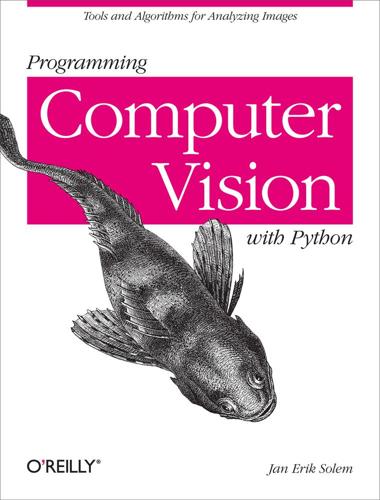
Programming Computer Vision with Python
by
Jan Erik Solem
Published 26 Jun 2012
High-accuracy stereo depth maps using structured light. In IEEE Computer Society Conference on Computer Vision and Pattern Recognition, 2003. [31] Toby Segaran. Programming Collective Intelligence. O’Reilly Media, 2007. [32] Jianbo Shi and Jitendra Malik. Normalized cuts and image segmentation. IEEE Trans. Pattern Anal. Mach. Intell., 22:888–905, August 2000. [33] Jianbo Shi and Carlo Tomasi. Good features to track. In 1994 IEEE Conference on Computer Vision and Pattern Recognition (CVPR’94), pages 593–600, 1994. [34] Noah Snavely, Steven M. Seitz, and Richard Szeliski. Photo tourism: Exploring photo collections in 3d.
…
An optical Sudoku solver. In Swedish Symposium on Image Analysis, SSBA. http://www.maths.lth.se/matematiklth/personal/byrod/papers/sudokuocr.pdf, 2007. [5] Antonin Chambolle. Total variation minimization and a class of binary mrf models. In Energy Minimization Methods in Computer Vision and Pattern Recognition, Lecture Notes in Computer Science, pages 136–152. Springer Berlin / Heidelberg, 2005. [6] T. Chan and L. Vese. Active contours without edges. IEEE Trans. Image Processing, 10(2):266–277, 2001. [7] Chih-Chung Chang and Chih-Jen Lin. LIBSVM: a library for support vector machines, 2001.
…
Beginning Game Development with Python and Pygame. Apress, 2007. [22] F. Meyer. Color image segmentation. In Proceedings of the 4th Conference on Image Processing and its Applications, pages 302–306, 1992. [23] D. Nistér and H. Stewénius. Scalable recognition with a vocabulary tree. In IEEE Conference on Computer Vision and Pattern Recognition (CVPR), volume 2, pages 2161–2168, 2006. [24] Travis E. Oliphant. Guide to NumPy. http://www.tramy.us/numpybook.pdf, 2006. [25] M. Pollefeys, L. Van Gool, M. Vergauwen, F. Verbiest, K. Cornelis, J. Tops, and R. Koch. Visual modeling with a hand-held camera. International Journal of Computer Vision, 59(3):207–232, 2004

You Are Not a Gadget
by
Jaron Lanier
Published 12 Jan 2010
A computer was watching my face through a digital camera and generating varied opprobrious percussive sounds according to which funny face it recognized in each moment.† (Keeping a rhythm with your face is a strange new trick—we should expect a generation of kids to adopt the practice en masse any year now.) This is the sort of deceptively silly event that should be taken seriously as an indicator of technological change. In the coming years, pattern-recognition tasks like facial tracking will become commonplace. On one level, this means we will have to rethink public policy related to privacy, since hypothetically a network of security cameras could automatically determine where everyone is and what faces they are making, but there are many other extraordinary possibilities.
…
While there are still a great many qualities in our experience that cannot be represented in software using any known technique, engineers have finally gained the ability to create software that can represent a smile, and write code that captures at least part of what all smiles have in common. This is an unheralded transformation in our abilities that took place around the turn of our new century. I wasn’t sure I would live to see it, though it continues to surprise me that engineers and scientists I run across from time to time don’t realize it has happened. Pattern-recognition technology and neuroscience are growing up together. The software I used at NAMM was a perfect example of this intertwining. Neuroscience can inspire practical technology rather quickly. The original project was undertaken in the 1990s under the auspices of Christoph von der Malsburg, a University of Southern California neuroscientist, and his students, especially Hartmut Neven.
…
When your speed matched that average, the ride would feel less bumpy. You couldn’t see the bumps with your eyes except right at sunset, when the horizontal red light rays highlighted every irregularity in the ground. At midday you had to drive carefully to avoid the hidden information in the road. Digital algorithms must approach pattern recognition in a similarly indirect way, and they often have to make use of a common procedure that’s a little like running virtual tires over virtual bumps. It’s called the Fourier transform. A Fourier transform detects how much action there is at particular “speeds” (frequencies) in a block of digital information.
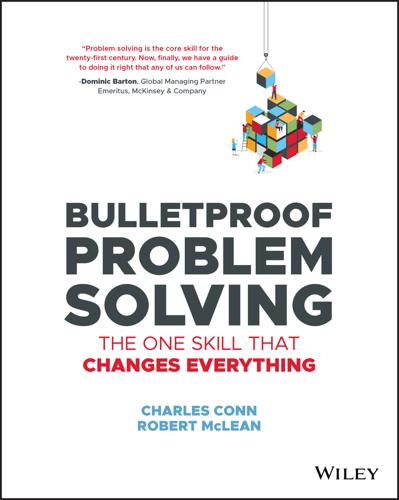
Bulletproof Problem Solving
by
Charles Conn
and
Robert McLean
Published 6 Mar 2019
Problem solving will increasingly utilize advances in machine learning to predict patterns in consumer behavior, disease, credit risk, and other complex phenomena, termed machine muscle. To meet the challenges of the twenty‐first century, mental muscle and machine muscle have to work together. Machine learning frees human problem solvers from computational drudgery and amplifies the pattern recognition required for faster organizational response to external challenges. For this partnership to work, twenty‐first century organizations need staff who are quick on their feet, who learn new skills quickly, and who attack emerging problems with confidence. The World Economic Forum in its Future of Jobs Report3 placed complex problem solving at #1 in its top 10 skills for jobs in 2020.
…
When we encounter genuinely novel problems, we sometimes persist in using frames that are unhelpful or misleading in the new and different context. For centuries, astronomers thought the sun revolved around the earth, and scratched their heads when important navigation problems weren't easy to solve! The next section addresses team processes that can help speed problem solving while avoiding the potholes of false pattern recognition. Team Processes in Problem Disaggregation and Prioritization These problem solving steps benefit substantially from teamwork, and solo practitioners should consider enlisting family or friends to assist them here. Because it is often difficult to see the structure of the problem, team brainstorming is hugely valuable, especially when trying different lenses or cleaving frames.
…
Just like learning to say a foreign phrase, the first time is labored and painfully self‐conscious. With time it becomes, literally, second nature and disappears into our automatic mental systems. This is great for speaking a new language or riding a bike or tying your shoes … but not so great for systematic problem solving. Our kind of problem solving can and does benefit from pattern recognition, of course. When you correctly see that a particular business problem is best cleaved by a return on capital tree or a supply curve, it makes problem solving faster and more accurate. Philip Tetlock reports that grandmasters at chess have 50,000–100,000 patterns stored in this deep memory system.2 But when we incorrectly see a familiar framing for a new kind of problem, we risk disastrously wrong solutions or endless work getting back on track.
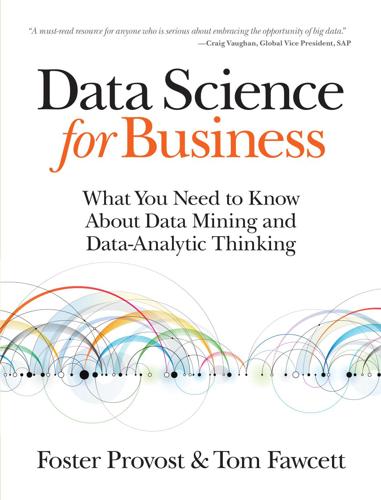
Data Science for Business: What You Need to Know About Data Mining and Data-Analytic Thinking
by
Foster Provost
and
Tom Fawcett
Published 30 Jun 2013
So a reader with some background in regression analysis may encounter new and even seemingly contradictory lessons.[12] Machine Learning and Data Mining The collection of methods for extracting (predictive) models from data, now known as machine learning methods, were developed in several fields contemporaneously, most notably Machine Learning, Applied Statistics, and Pattern Recognition. Machine Learning as a field of study arose as a subfield of Artificial Intelligence, which was concerned with methods for improving the knowledge or performance of an intelligent agent over time, in response to the agent’s experience in the world. Such improvement often involves analyzing data from the environment and making predictions about unknown quantities, and over the years this data analysis aspect of machine learning has come to play a very large role in the field.
…
Such improvement often involves analyzing data from the environment and making predictions about unknown quantities, and over the years this data analysis aspect of machine learning has come to play a very large role in the field. As machine learning methods were deployed broadly, the scientific disciplines of Machine Learning, Applied Statistics, and Pattern Recognition developed close ties, and the separation between the fields has blurred. The field of Data Mining (or KDD: Knowledge Discovery and Data Mining) started as an offshoot of Machine Learning, and they remain closely linked. Both fields are concerned with the analysis of data to find useful or informative patterns.
…
Unless stated otherwise, we will assume that the values of all the attributes (but not the target) are present in the data. Many Names for the Same Things The principles and techniques of data science historically have been studied in several different fields, including machine learning, pattern recognition, statistics, databases, and others. As a result there often are several different names for the same things. We typically will refer to a dataset, whose form usually is the same as a table of a database or a worksheet of a spreadsheet. A dataset contains a set of examples or instances. An instance also is referred to as a row of a database table or sometimes a case in statistics.

Surviving AI: The Promise and Peril of Artificial Intelligence
by
Calum Chace
Published 28 Jul 2015
It soon became apparent that there were diminishing returns to investment in these systems, and when the second AI winter thawed in the early 1990s it was thanks to the rise of more statistical approaches, which are often collectively termed machine learning. Machine Learning Machine learning is the process of creating and refining algorithms which can produce conclusions based on data without being explicitly programmed to do so. It overlaps closely with a number of other domains, including pattern recognition: machine learning algorithms are becoming increasingly impressive at recognising images, for instance. Another is computational statistics, which is the development of algorithms to implement statistical methods on computers. A third is the field of data mining, and its offshoot Big Data. Data mining is the process of discovering previously unknown properties in large data sets, whereas machine learning systems usually make predictions based on information which is already known to the experimenter, using training data.
…
Early hopes for the quick development of thinking machines were dashed, however, and neural nets fell into disuse until the late 1980s, when they experienced a renaissance along with what came to be known as deep learning thanks to pioneers Yann LeCun (now at Facebook), Geoff Hinton (now at Google) and Yoshua Bengio, a professor at the University of Montreal. Yann LeCun describes deep learning as follows. “A pattern recognition system is like a black box with a camera at one end, a green light and a red light on top, and a whole bunch of knobs on the front. The learning algorithm tries to adjust the knobs so that when, say, a dog is in front of the camera, the red light turns on, and when a car is put in front of the camera, the green light turns on.
…
We will look at this again later in this chapter. Similarly, some people are dismissive of the progress made by artificial intelligence since the discipline began 60 years ago, complaining that we don’t yet have a machine which knows it is alive. But it is daft to dismiss as failures today’s best pattern recognition systems, self-driving cars, and machines which can beat any human at many games of skill. Informed scepticism about near-term AGI We should take more seriously the arguments of very experienced AI researchers who claim that although the AGI undertaking is possible, it won’t be achieved for a very long time.

Machines of Loving Grace: The Quest for Common Ground Between Humans and Robots
by
John Markoff
Published 24 Aug 2015
Jeff Hawkins, a successful Silicon Valley engineer who had founded Palm Computing with Donna Dubinsky, coauthored On Intelligence in 2004, which argued that the path to human-level intelligence lay in emulating and scaling up neocortex-like circuits capable of pattern recognition. In 2005, Hawkins formed Numenta, one of a growing list of AI companies pursuing pattern recognition technologies. Hawkins’s theory has parallels with the claims that Kurzweil makes in How to Create a Mind, his 2012 effort to lay out a recipe for intelligence. Similar paths have been pursued by Dileep George, a Stanford-educated artificial intelligence researcher who originally worked with Hawkins at Numenta and then left to form his own company, Vicarious, with the goal of developing “the next generation of AI algorithms,” and Henry Markram, the Swiss researcher who has enticed the European Union into supporting his effort to build a detailed replica of the human brain with one billion euros in funding.
…
During the past half decade that acceleration has led to rapid improvement in technologies that are necessary components for artificial intelligence: computer vision, speech recognition, and robotic touch and manipulation. Machines now also taste and smell, but recently more significant innovations have come from modeling human neurons in electronic circuits, which has begun to yield advances in pattern recognition—mimicking human cognition. The quickening pace of AI innovation has led some, such as Rice University computer scientist Moshe Vardi, to proclaim the imminent end of a very significant fraction of all tasks performed by humans, perhaps as soon as 2045.2 Even more radical voices argue that computers are evolving at such a rapid pace that they will outstrip the intellectual capabilities of humans in one, or at the most two more generations.
…
When the acquisition was first reported it was rumored that because of the power and implications of the technology Google would set up an “ethics board” to evaluate any unspecified “advances.”51 It has remained unclear whether such oversight will be substantial or whether it was just a publicity stunt to hype the acquisition and justify its price. It is undeniable that AI and machine-learning algorithms have already had world-transforming application in areas as diverse as science, manufacturing, and entertainment. Examples range from machine vision and pattern recognition essential in improving quality in semiconductor design and so-called rational drug discovery algorithms, which systematize the creation of new pharmaceuticals, to government surveillance and social media companies whose business model is invading privacy for profit. The optimists hope that potential abuses will be minimized if the applications remain human-focused rather than algorithm-centric.

The Black Box Society: The Secret Algorithms That Control Money and Information
by
Frank Pasquale
Published 17 Nov 2014
51 Although internet giants say their algorithms are scientific and neutral tools, it is very difficult to verify those claims.52 And while they have become critical economic infrastructure, trade secrecy law permits managers to hide their methodolo- INTRODUCTION—THE NEED TO KNOW 15 gies, and business practices, deflecting scrutiny.53 Chapter 3 examines some personal implications of opaque search technology, along with larger issues that it raises in business and law. Like the reputation and search sectors, the finance industry has characterized more and more decisions as computable, programmable procedures. Big data enables complex pattern recognition techniques to analyze massive data sets. Algorithmic methods of reducing judgment to a series of steps were supposed to rationalize finance, replacing self-serving or biased intermediaries with sound decision frameworks. And they did reduce some inefficiencies. But they also ended up firmly building in some dubious old patterns of credit castes and corporate unaccountability.54 The black boxes of finance replaced familiar old problems with a triple whammy of technical complexity, real secrecy, and trade secret laws.
…
When we click on an ad promising a discount, there’s probably a program behind the scenes calculating how much more it can charge us on the basis of our location,3 or whether we’re using a Mac or PC, or even court records.4 It’s not only the National Security Agency (NSA) that covets total information awareness; that’s the goal of marketers, too. They want that endless array of data points to develop exhaustive profiles. Of us. Pattern recognition is the name of the game— connecting the dots of past behavior to predict the future. Are you a fierce comparison shopper, or the relaxed kind who’s OK spending a few extra dollars for a plane ticket or a movie if it saves some trouble? Firms want to know, and they can find out quite easily.
…
In most cases, they stay well hidden. But reporters are beginning to open up the black box of consumer profiling, as Charles Duhigg did in his 2012 report on Target, the second-largest U.S. discount retailer and a company that prides itself on knowing when its customers are pregnant.57 For a retailer of that size, the pattern recognition was easy. First, Target’s statisticians compiled a database of “the known pregnant”—people who had signed up for baby registries. Then they compared the purchases of consumers in that data set to the purchases made by Target shoppers as a whole. (Every Target shopper has a “Guest ID” number, tied to credit card, e-mail address, and other such identifiers.)
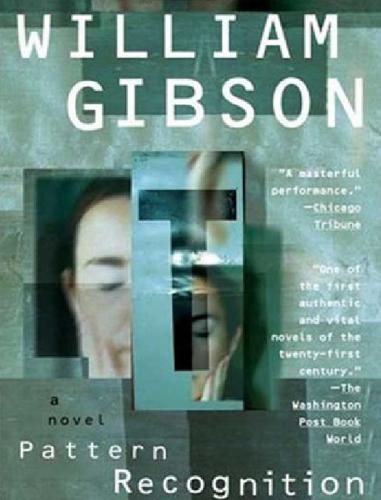
Pattern Recognition
by
William Gibson
Published 2 Jan 2003
WILLIAM GIBSON PATTERN RECOGNITION 1. THE WEBSITE OF DREADFUL NIGHT Five hours' New York jet lag and Cayce Pollard wakes in Camden Town to the dire and ever-circling wolves of disrupted circadian rhythm. It is that flat and spectral non-hour, awash in limbic tides, brainstem stirring fitfully, flashing inappropriate reptilian demands for sex, food, sedation, all of the above, and none really an option now. Not even food, as Damien's new kitchen is as devoid of edible content as its designers' display windows in Camden High Street. Very handsome, the upper cabinets faced in canary-yellow laminate, the lower with lacquered, unstained apple-ply.
…
She wants each new fragment to impact as cleanly as possible. Parkaboy says you should go to new footage as though you've seen no previous footage at all, thereby momentarily escaping the film or films that you've been assembling, consciously or unconsciously, since first exposure. Homo sapiens is about pattern recognition, he says. Both a gift and a trap. She slowly depresses the plunger. Pours coffee into a mug. She's draped her jacket cape-style round the smooth shoulders of one robotic nymph. Balanced on its stainless pubis, the white torso reclines against the gray wall. Neutral regard. Eyeless serenity.
…
For us, of course, things can change so abruptly, so violently, so profoundly, that futures like our grandparents' have insufficient 'now' to stand on. We have no future because our present is too volatile." He smiles, a version of Tom Cruise with too many teeth, and longer, but still very white. "We have only risk management. The spinning of the given moment's scenarios. Pattern recognition." Cayce blinks. "Do we have a past, then?" Stonestreet asks. "History is a best-guess narrative about what happened and when," Bigend says, his eyes narrowing. "Who did what to whom. With what. Who won. Who lost. Who mutated. Who became extinct." "The future is there," Cayce hears herself say, "looking back at us.
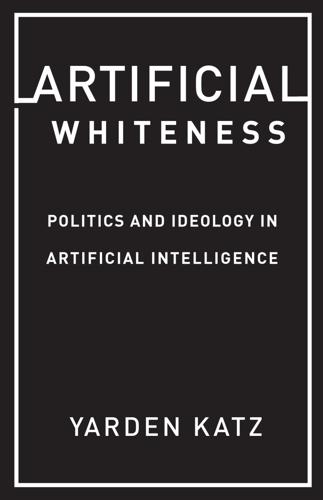
Artificial Whiteness
by
Yarden Katz
Anh Nguyen, Jason Yosinski, and Jeff Clune, “Deep Neural Networks Are Easily Fooled: High Confidence Predictions for Unrecognizable Images,” in Proceedings of the IEEE Conference on Computer Vision and Pattern Recognition, 2015, 427–36. 34. Oriol Vinyals et al., “Show and Tell: A Neural Image Caption Generator,” in Proceedings of the IEEE Conference on Computer Vision and Pattern Recognition, 2015, 3156–64. 35. The incident occurred during a protest in the village of Nabi Saleh in the West Bank in the summer of 2015. See “A Perfect Picture of the Occupation,” editorial, Haaretz, August 31, 2015. 36.
…
In the 1990s probabilistic modeling and inference were becoming AI’s dominant new computational engine and starting to displace logic-based approaches to reasoning within the field. These probabilistic frameworks, which crystalized in the 1980s, did not always develop under the umbrella of “AI” but also under headings such as “statistical pattern recognition,” “data mining,” or “information retrieval.”97 Regardless, these frameworks were being absorbed into AI’s familiar narratives. An article in AI Magazine titled “Is AI Going Mainstream at Last? A Look Inside Microsoft Research” (1993) exemplifies this turn. The piece omits AI’s history of shifting in and out of the mainstream, claiming that “AI” merely had its “15 minutes of fame in the mid-80s,” but that new developments in probabilistic modeling could put it back on the map.
…
Press release, November 20, 2017, https://engineering.nyu.edu/news/new-artificial-intelligence-research-institute-launches. Nguyen, Anh, Jason Yosinski, and Jeff Clune. “Deep Neural Networks Are Easily Fooled: High Confidence Predictions for Unrecognizable Images.” In Proceedings of the IEEE Conference on Computer Vision and Pattern Recognition, 2015, 427–36. Nicas, Jack. “Atlanta Asks Google Whether It Targeted Black Homeless People.” New York Times, October 4, 2019. Nilsson, Nils J. “Artificial Intelligence: Employment, and Income.” In Impacts of Artificial Intelligence, ed. Robert Trappl, 103–23. Amsterdam: North Holland, 1986. ________.
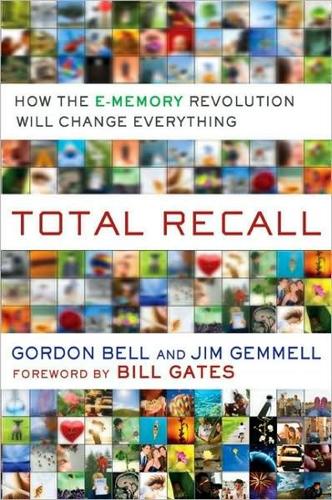
Total Recall: How the E-Memory Revolution Will Change Everything
by
Gordon Bell
and
Jim Gemmell
Published 15 Feb 2009
“Optical Disks Used for Long-Term Storage by 2010.” Tech-On! (March 6). Rydning, John, and Jeff Janukowicz. 2009. “Worldwide Hard Disk Drive Component 2008-2012 Forecast Update.” IDC (February 1). There is a large research community advancing work on data mining, pattern recognition, and machine learning. Here are just a few starting points: Bishop, Christopher M. 2006. Pattern Recognition and Machine Learning. New York: Springer. Kargupta, H., et al. (eds.). 2009. Next Generation of Data Mining. London: Chapman and Hall. ACM SIGKDD International Conference on Knowledge Discovery and Data Mining. International Conference on Data Mining (ICDM).
…
An individual would never want to watch his whole life, and knows what he may want to look for in his e-memories. But for the historian it truly is a challenge, because a historian doesn’t know what to search for or what can safely be ignored, having not lived the life in question. Thus, historians will become more and more adept at using data mining and pattern recognition, and will come to demand the latest in tools for comparing videos, performing handwriting recognition, converting speech to text, classifying background noise, and much more. They will rely on computing power to help summarize, classify, and identify anomalies, so that they can safely pass over their subject’s typical commute to work but not miss the one where she made an unusual stop.
…
See also files-and-folders organization automatic summarization categorization schemes and clutter and data analysis and DSpace and electronic memory and implementation of Total Recall and indexing and lifelong learning and lifetime periods and scanned documents Ornish, Dean Orwell, George OS X, Otlet, Paul Outlook ownership of data . See also law and legal issues Ozzie, Ray P pacemakers Palm paperless environment and digitizing data and implementation of Total Recall and organization and origin of MyLifeBits and scanners parenting passwords patents pattern recognition PDF files and books and born-digital documents and data portability and file names and health data and optical character recognition and scanning documents pedometers peer-to-peer encryption pen scanners Pensieve Pepys project performance analysis persistence of memories personal computers (PCs) and desktop search and e-textbooks and enjoying e-memories and implementation of Total Recall and information availability and memex and miniaturization and unified communications personal data.
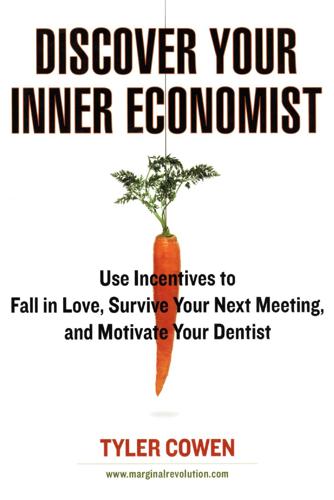
Tyler Cowen-Discover Your Inner Economist Use Incentives to Fall in Love, Survive Your Next Meeting, and Motivate Your Dentist-Plume (2008)
by
Unknown
Published 20 Sep 2008
our views of ourselves, are rife with fallacies that can be seen through the lens of good economics. Your Inner Economist sees patterns that you might not be seeing at first glance. This book is about uncovering these hidden patterns in the world, and in our choices. Pattern recognition is one key to making better decisions. If it isn't helping us see more patterns, it isn't good economics. The psychologist A. deGroot performed some fascinating experiments with pattern recognition in the context of chess. He arranged chess pieces on a board as they would occur in the normal course of a I Want a Banana; I Buy One I 9 game. He allowed both chess masters and chess novices to observe the arrangement.
…
Yet others build ever more complicated mathematical models of human behavior, sometimes under the heading of "game theory." Economists in think tanks agitate for one public policy over another. At a simpler level, many textbooks teach basic terminology and how to manipulate graphs and symbols. This book will do none of those things. Instead I will focus on using economics to hone our skills of pattern recognition-in other words, how to discover our Inner Economists. In most real-world settings, we don't have the time or inclination to "crunch the numbers," even in the unlikely event that all the data stood before us (do you know your dentist's income-tax return, as needed to calculate his optimal bonus for good work?).
…
See also relationships Mason &- Dixon (Pynchon), 65 McGrew, Bob, 38 meetings, 42-45 Me Factor and art, 53-55 and attention, 74 and books, 66 and music, 67, 71-72 and truthfulness, 106 242 men, 79-85, Ill, 179 meritocracies, 18, 123 Metropolitan Museum of Art, 51-52 1\letropolitan Opera, New York City, 191 Mexico and Mexicans kidnappers and kidnapping in, 168 labor market, 149-50, 151 Mexican cuisine, 148, 151, 154, 159 prostitution, 169 and volunteerism, 186 micro-credit, 214-17 micro-expressions, 105 Miller, Henry, 65 modesty, I 14 Mona Lisa, 57, 60 Mondrian, Piet, 54, 57 money, 11-29 applying parables, 22-29 Car Salesman Parable, 16,22,26,45 cash gifts, 212-13 and cooperation, 19-21 and cultural consumption, 48 Dirty Dishes Parable, 13-16, 26 and effort required, 22-24, 26 and helplessness, 29 as incentive, 11-13, 16,22-29 and intrinsic motivation, 24-25, 26 limitations of, 3 micro-credit, 214-17 Parking Tickets Parable, 16-22, 33,45 and scarcity, 47-48 and shopping, 124-25 and social approval, 25-26 See also incentives monkeys, 163-64 monkfish, 140-41 motivation and altruism, 187, 202 for book purchases, 64-65 complexity of, 14 and incentives, 2, 32, 33 intrinsic motivation, 24-25, 26, 32, 33-34,46 and markets, 3 Index for recipes, 160-62 role in economic theory, 5 of writers, 64 movies, 73-74 museums, 55, 56, 59 music, 58-59,66-72, 76 Muslims, 116 narratives, 75-76, 89,136-37,183 national health insurance, 134-36 Netherlands, 147 New Orleans, Louisiana, 89 New York, 152, 153, 159 New Zealand, 149 9/11 terrorist attacks, 198 Nirvana, 68, 71 Norway, 20-21, 150, 186 Nostromo (Conrad), 62 Oaxaca, Mexico, 154 Oberholzer-Gee, Felix, 178-79 online computer games, 173, 177 O'Sullivan, Maureen, 106 Oswald, Andrew, 179-80 Paglia, Camille, 65 PAL (Personal Assistance Link), 43 parenting, 88,122-23,130-31,179 Parker, Randall, 43 Parking Tickets Parable, 16-22,33,45 pattern recognition, 8- 10 penalties. See incentives perceptions, 18-19, 34, 208 performance in capitalist economies, 123 and education, 24-25, 86, 122-23, 125 motivation to perform, 12, 13-16, 33, 38-39 Perkins, H. Wesley, 34 personal ads, 96-99 Ph.D. title, 108, 109-10 Philippines, 167-68 pickup lines, 83-85 politics, 115, 134 Index pornography, 182 possessions, 76-77 Postcard Test, 7 poverty and altruism, 197-98,200,201, 206 and begging, 187-92, 198,201-2 and food quality, 148-50 Pralec, Drazen, 106 Presley, Elvis, 67-68 pride, 116-17, 131-32, 167 prison life, 167 probabilities, 127-28 Prof Scam (Sykes), 6 prostitution, 169 punctuality, 34-37, 38 punishments.
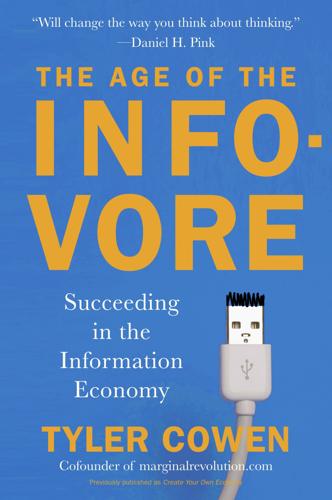
The Age of the Infovore: Succeeding in the Information Economy
by
Tyler Cowen
Published 25 May 2010
With additional listening to a piece, repeated motifs often become apparent, but they’re hard to find and they don’t satisfy most people in the way that the progressive elucidation of a Haydn motif does, much less a Buddy Holly song. So understanding or appreciating the structure of atonal music requires some special skills of pattern recognition. The atonal music fans may be better at some kinds of cognitive processing, and better at constructing some kinds of hierarchies from their sensory input, relative to typical listeners. When viewed through this lens of neurology, many of the critical dialogues about contemporary music seem beside the point, as they don’t get at the real source of the difference of opinion.
…
It’s not usually put in such terms, but I think of art connoisseurship as a fundamental part of the profile of autistics. Go back to the list of the cognitive strengths of autism in chapter 2. Autistics have, on average, superior visual perception, a better-developed sense of pitch, superior abilities for pattern recognition, and superior abilities for spotting details in visual pictures, compared to non-autistics. Yet, as discussed in chapter 6, autistics may be less skilled at enjoying some kinds of fictional narrative. Dr. Hans Asperger saw the aesthetic side of autistics clearly. He wrote: Another distinctive trait one finds in some autistic children is a rare maturity of taste in art.
…
An understanding of a free society and its benefits does not come naturally to most human beings and that understanding had to be discovered and communicated by people with some highly atypical minds. On average autistics are better with print-based modes of reasoning than with oral discourse. Many autistics have a strong memory for factual details, strong pattern recognition skills, and an ability to interpret principles of equality very literally and in a cosmopolitan manner. These are exactly the sorts of skills that go into legalistic and constitutional reasoning. Furthermore those skills are especially relevant in appreciating social systems based on written laws, rather than systems based on unspoken or implicit personal favors.
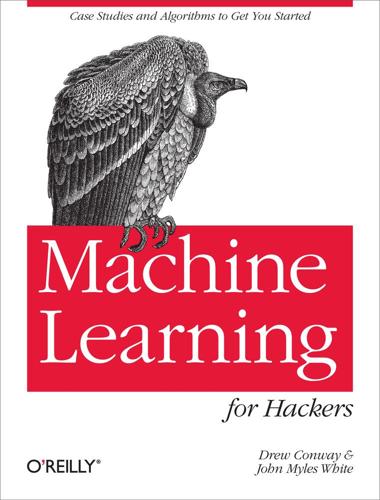
Machine Learning for Hackers
by
Drew Conway
and
John Myles White
Published 10 Feb 2012
In machine learning, the learning occurs by extracting as much information from the data as possible (or reasonable) through algorithms that parse the basic structure of the data and distinguish the signal from the noise. After they have found the signal, or pattern, the algorithms simply decide that everything else that’s left over is noise. For that reason, machine learning techniques are also referred to as pattern recognition algorithms. We can “train” our machines to learn about how data is generated in a given context, which allows us to use these algorithms to automate many useful tasks. This is where the term training set comes from, referring to the set of data used to build a machine learning process. The notion of observing data, learning from it, and then automating some process of recognition is at the heart of machine learning and forms the primary arc of this book.
…
You have a lot of powerful tools, so go apply them to questions you’re interested in! Works Cited Books [Adl10] JosephAdler. R in a Nutshell. O’Reilly Media, 2010. [Abb92] EdwinAAbbot Flatland: A Romance of Many Dimensions. Dover Publications, 1992. [Bis06] ChristopherMBishop Pattern Recognition and Machine Learning. Springer; 1st ed. 2006. Corr.; 2nd printing ed. 2007. [GH06] AndrewGelmanJenniferHill. Data Analysis Using Regression and Multilevel/Hierarchical Models. Cambridge University Press, 2006. [HTF09] TrevorHastieRobertTibshiraniJeromeFriedman. The Elements of Statistical Learning.
…
gamma distribution, Exploratory Data Visualization, Exploratory Data Visualization Gaussian distribution, Exploratory Data Visualization (see bell curve) geom_density function, Exploratory Data Visualization (see also density plot) geom_histogram function, Aggregating and organizing the data, Exploratory Data Visualization (see also histogram) geom_line function, Analyzing the data geom_point function, Visualizing the Relationships Between Columns (see also scatterplot) geom_smooth function, Visualizing the Relationships Between Columns, Linear Regression in a Nutshell, Predicting Web Traffic, Defining Correlation, Nonlinear Relationships Between Columns: Beyond Straight Lines, Introducing Polynomial Regression geom_text function, Exploring senator MDS clustering by Congress Gephi software, Analyzing Twitter Networks, Visualizing the Clustered Twitter Network with Gephi, Visualizing the Clustered Twitter Network with Gephi get.edgelist function, Building Your Own “Who to Follow” Engine getURL function, Working with the Google SocialGraph API ggplot object, Aggregating and organizing the data ggplot2 package, Loading and Installing R Packages, Loading libraries and the data, Aggregating and organizing the data, Analyzing the data, Analyzing the data, Further Reading on R, Analyzing US Senator Roll Call Data (101st–111th Congresses), Exploring senator MDS clustering by Congress (see also specific functions) MDS results using, Analyzing US Senator Roll Call Data (101st–111th Congresses) plotting themes of, Analyzing the data resources for, Further Reading on R two plots using, Exploring senator MDS clustering by Congress ggsave function, Aggregating and organizing the data, Analyzing the data glm function, SVMs: The Support Vector Machine, SVMs: The Support Vector Machine glmnet function, Preventing Overfitting with Regularization, Preventing Overfitting with Regularization, Text Regression, Logistic Regression to the Rescue, Comparing Algorithms glmnet package, Loading and Installing R Packages, Preventing Overfitting with Regularization global optimum, Introduction to Optimization Goffman, Erving (social scientist), Social Network Analysis regarding nature of human interaction, Social Network Analysis Google, Priority Features of Email, Priority Features of Email, Hacking Twitter Social Graph Data priority inbox by, Priority Features of Email, Priority Features of Email SocialGraph API, Hacking Twitter Social Graph Data (see SGA) gradient, Introduction to Optimization graph.coreness function, Local Community Structure GraphML files, Local Community Structure grepl function, Functions for Extracting the Feature Set, Functions for Extracting the Feature Set, Functions for Extracting the Feature Set, Working with the Google SocialGraph API grid search, Introduction to Optimization, Introduction to Optimization gsub function, Organizing location data, Functions for Extracting the Feature Set H hacker, Machine Learning for Hackers hclust function, Local Community Structure head function, Loading libraries and the data heavy-tailed distribution, Exploratory Data Visualization, Exploratory Data Visualization Heider, Fritz (psychologist), Building Your Own “Who to Follow” Engine social balance theory by, Building Your Own “Who to Follow” Engine help, for R language, Loading libraries and the data help.search function, Loading libraries and the data hierarchical clustering of node distances, Local Community Structure, Visualizing the Clustered Twitter Network with Gephi histogram, Aggregating and organizing the data, Aggregating and organizing the data, Exploratory Data Visualization, Exploratory Data Visualization I IDEs, for R, IDEs and Text Editors ifelse function, Converting date strings and dealing with malformed data igraph library, Analyzing Twitter Networks igraph package, Loading and Installing R Packages, Working with the Google SocialGraph API, Local Community Structure install.packages function, Loading and Installing R Packages inv.logit function, Logistic Regression to the Rescue is.character function, Inferring the Types of Columns in Your Data is.factor function, Inferring the Types of Columns in Your Data is.na function, Dealing with data outside our scope, Aggregating and organizing the data is.numeric function, Inferring the Types of Columns in Your Data J jittering, This or That: Binary Classification K k-core analysis, Local Community Structure, Local Community Structure k-nearest neighbors algorithm, The k-Nearest Neighbors Algorithm (see kNN algorithm) KDE (kernel density estimate), Exploratory Data Visualization (see density plot) kernel trick, SVMs: The Support Vector Machine (see SVM (support vector machine)) kNN (k-nearest neighbors) algorithm, The k-Nearest Neighbors Algorithm, R Package Installation Data, R Package Installation Data, R Package Installation Data, Comparing Algorithms comparing to other algorithms, Comparing Algorithms R package installation case study using, R Package Installation Data, R Package Installation Data knn function, The k-Nearest Neighbors Algorithm Königsberg Bridge problem, Social Network Analysis L L1 norm, Preventing Overfitting with Regularization L2 norm, Preventing Overfitting with Regularization label features, of email, Priority Features of Email labels, compared to factors, Inferring the Types of Columns in Your Data Lambda, for regularization, Preventing Overfitting with Regularization, Preventing Overfitting with Regularization, Text Regression, Ridge Regression lapply function, Organizing location data, Aggregating and organizing the data, Functions for Extracting the Feature Set, Analyzing US Senator Roll Call Data (101st–111th Congresses), Exploring senator MDS clustering by Congress length function, Converting date strings and dealing with malformed data library function, Loading and Installing R Packages line plot, Analyzing the data line, in scatterplot, Linear Regression in a Nutshell linear kernel SVM, SVMs: The Support Vector Machine, Comparing Algorithms linear regression, R for Machine Learning, Introducing Regression, Linear Regression in a Nutshell, The Baseline Model, The Baseline Model, Regression Using Dummy Variables, Regression Using Dummy Variables, Linear Regression in a Nutshell, Linear Regression in a Nutshell, Linear Regression in a Nutshell, Linear Regression in a Nutshell, Predicting Web Traffic, Predicting Web Traffic, Predicting Web Traffic, Defining Correlation, Defining Correlation, Defining Correlation, Nonlinear Relationships Between Columns: Beyond Straight Lines, Nonlinear Relationships Between Columns: Beyond Straight Lines, Introduction to Optimization, Introduction to Optimization adapting for nonlinear relationships, Nonlinear Relationships Between Columns: Beyond Straight Lines, Nonlinear Relationships Between Columns: Beyond Straight Lines assumptions in, Linear Regression in a Nutshell, Linear Regression in a Nutshell baseline model for, The Baseline Model, The Baseline Model correlation as indicator of, Defining Correlation, Defining Correlation dummy variables for, Regression Using Dummy Variables, Regression Using Dummy Variables lm function for, R for Machine Learning, Linear Regression in a Nutshell, Linear Regression in a Nutshell, Predicting Web Traffic, Defining Correlation, Introduction to Optimization optimizing, Introduction to Optimization web traffic predictions case study using, Predicting Web Traffic, Predicting Web Traffic linearity assumption, Linear Regression in a Nutshell, Linear Regression in a Nutshell Linux, installing R language on, Linux list structure, Organizing location data list.files function, Analyzing US Senator Roll Call Data (101st–111th Congresses) lm function, R for Machine Learning, Linear Regression in a Nutshell, Linear Regression in a Nutshell, Predicting Web Traffic, Defining Correlation, Introduction to Optimization load function, Comparing Algorithms loading data, Loading libraries and the data (see data, loading) log base-10 transformation, A log-weighting scheme log function, A log-weighting scheme log-transformations, A log-weighting scheme log-weighting scheme, A log-weighting scheme, A log-weighting scheme log1p function, A log-weighting scheme logarithms, A log-weighting scheme logistic regression, Logistic Regression to the Rescue, Logistic Regression to the Rescue, The k-Nearest Neighbors Algorithm, SVMs: The Support Vector Machine, SVMs: The Support Vector Machine, SVMs: The Support Vector Machine, SVMs: The Support Vector Machine, Comparing Algorithms comparing to other algorithms, Comparing Algorithms glm function for, SVMs: The Support Vector Machine, SVMs: The Support Vector Machine when not to use, The k-Nearest Neighbors Algorithm, SVMs: The Support Vector Machine, SVMs: The Support Vector Machine lubridate package, Unsupervised Learning M Mac OS X, installing R language on, Mac OS X machine learning, Machine Learning for Hackers, How This Book Is Organized, How This Book Is Organized, Using R, Using R, Works Cited, Works Cited compared to statistics, Using R as pattern recognition algorithms, Using R resources for, How This Book Is Organized, Works Cited, Works Cited malformed data, Converting date strings and dealing with malformed data, Converting date strings and dealing with malformed data match function, Dealing with data outside our scope matrices, What Is Data?
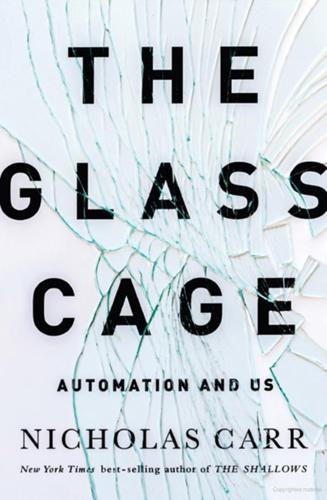
The Glass Cage: Automation and Us
by
Nicholas Carr
Published 28 Sep 2014
In an influential 2004 book, The New Division of Labor: How Computers Are Creating the Next Job Market, economists Frank Levy and Richard Murnane argued, convincingly, that there were practical limits to the ability of software programmers to replicate human talents, particularly those involving sensory perception, pattern recognition, and conceptual knowledge. They pointed specifically to the example of driving a car on the open road, a talent that requires the instantaneous interpretation of a welter of visual signals and an ability to adapt seamlessly to shifting and often unanticipated situations. We hardly know how we pull off such a feat ourselves, so the idea that programmers could reduce all of driving’s intricacies, intangibilities, and contingencies to a set of instructions, to lines of software code, seemed ludicrous.
…
There’s growing evidence that recent expansions in the scope of automation also put cognitive skills at risk. When more advanced computers begin to take over planning and analysis functions, such as setting and adjusting a flight plan, the pilot becomes less engaged not only physically but mentally. Because the precision and speed of pattern recognition appear to depend on regular practice, the pilot’s mind may become less agile in interpreting and reacting to fast-changing situations. He may suffer what Ebbatson calls “skill fade” in his mental as well as his motor abilities. Pilots are not blind to automation’s toll. They’ve always been wary about ceding responsibility to machinery.
…
Until recently, it was difficult, if not impossible, for computers to replicate such deep, specialized, and often tacit knowledge. But inexorable advances in processing speed, precipitous declines in data-storage and networking costs, and breakthroughs in artificial-intelligence methods such as natural language processing and pattern recognition have changed the equation. Computers have become much more adept at reviewing and interpreting vast amounts of text and other information. By spotting correlations in the data—traits or phenomena that tend to be found together or to occur simultaneously or sequentially—computers are often able to make accurate predictions, calculating, say, the probability that a patient displaying a set of symptoms has or will develop a particular disease or the odds that a patient with a certain disease will respond well to a particular drug or other treatment regimen.

Scary Smart: The Future of Artificial Intelligence and How You Can Save Our World
by
Mo Gawdat
Published 29 Sep 2021
Human traders will leave the market or start using AI tools themselves, and what will we be left with? Machines trading against other machines. An intelligent stock-trading machine is given only one target – to maximize profit. As we have seen with the other intelligent machines that we’ve invented so far, through pattern recognition machines are likely to devise ingenious solutions that we have never encountered before. For example, they may discover that driving the price of a certain category of stock all the way down to zero may free up some capital that maximizes the profit to be found in trading other stocks. They may decide to communicate, as shareholders, to the AI running Google Search by suggesting changes in the way business is done, or threaten to trade the price down.
…
It’s the pattern of the colour that has changed and with it the sounds that your parent makes also change. Your little brain reasons that the sound that you make is not associated with the white, but rather with the colours scribbled on it, and so it starts to focus more on the patterns and ignore the white. Each brain, from that moment onwards, develops its very own pattern-recognition engine, but a reasonable example, at least for the way my Mo brain thinks, would be something like this: Numbers seem to always be contained within a rectangle that can be split into two squares, a top one and a lower one. Each of these squares can contain endless random scribbles in them but those scribbles can be recognized reasonably accurately if each square is then subdivided into four smaller quadrants.
…
If your parents fought with each other, you are likely to grow up feeling tense even if they told you to remain calm. If they told you to work hard when they didn’t, you probably won’t be pulling all-nighters very often. Children don’t learn from what you say. They learn from what you do. This is the same old pattern recognition that creates intelligence in humans and machines alike – monkey see, monkey do. This is why, in the parenting model I suggested above, the pursuit of happiness and compassion is not directed at the children but ideally demonstrated by the parent, as an example to copy. This is also why programming machines with algorithms and tasks that are good for humanity is not enough.

The Master Algorithm: How the Quest for the Ultimate Learning Machine Will Remake Our World
by
Pedro Domingos
Published 21 Sep 2015
Often, the procedures are quite simple, and it’s the knowledge at their core that’s complex. If you can tell which e-mails are spam, you know which ones to delete. If you can tell how good a board position in chess is, you know which move to make (the one that leads to the best position). Machine learning takes many different forms and goes by many different names: pattern recognition, statistical modeling, data mining, knowledge discovery, predictive analytics, data science, adaptive systems, self-organizing systems, and more. Each of these is used by different communities and has different associations. Some have a long half-life, some less so. In this book I use the term machine learning to refer broadly to all of them.
…
Inspired by this, he defined a type of neural network that evolves over time in the same way that a spin glass does and postulated that the network’s minimum energy states are its memories. Each such state has a “basin of attraction” of initial states that converge to it, and in this way the network can do pattern recognition: for example, if one of the memories is the pattern of black-and-white pixels formed by the digit nine and the network sees a distorted nine, it will converge to the “ideal” one and thereby recognize it. Suddenly, a vast body of physical theory was applicable to machine learning, and a flood of statistical physicists poured into the field, helping it break out of the local minimum it had been stuck in.
…
The economist Milton Friedman even argued in a highly influential essay that the best theories are the most oversimplified, provided their predictions are accurate, because they explain the most with the least. That seems to me like a bridge too far, but it illustrates that, counter to Einstein’s dictum, science often progresses by making things as simple as possible, and then some. No one is sure who invented the Naïve Bayes algorithm. It was mentioned without attribution in a 1973 pattern recognition textbook, but it only took off in the 1990s, when researchers noticed that, surprisingly, it was often more accurate than much more sophisticated learners. I was a graduate student at the time, and when I belatedly decided to include Naïve Bayes in my experiments, I was shocked to find it did better than all the other algorithms I was comparing, save one—luckily, the algorithm I was developing for my thesis, or I might not be here now.
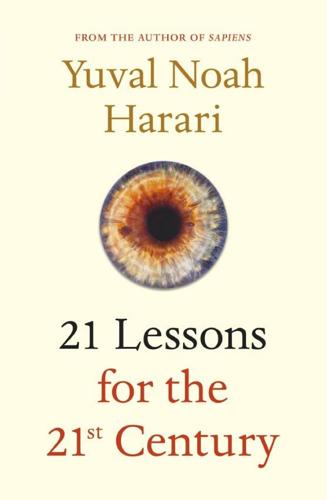
21 Lessons for the 21st Century
by
Yuval Noah Harari
Published 29 Aug 2018
.: Arash Bahrammirzaee, ‘A comparative Survey of Artificial Intelligence Applications in Finance: Artificial Neural Networks, Expert System and Hybrid Intelligent Systems’, Neural Computing and Applications 19:8 (2010), 1165–95; analysis of complex data in medical systems and production of diagnosis and treatment: Marjorie Glass Zauderer et al., ‘Piloting IBM Watson Oncology within Memorial Sloan Kettering’s Regional Network’, Journal of Clinical Oncology 32:15 (2014), e17653; creation of original texts in natural language from massive amounts of data: Jean-Sébastien Vayre et al., ‘Communication Mediated through Natural Language Generation in Big Data Environments: The Case of Nomao’, Journal of Computer and Communication 5 (2017), 125–48; facial recognition: Florian Schroff, Dmitry Kalenichenko and James Philbin, ‘FaceNet: A Unified Embedding for Face Recognition and Clustering’, IEEE Conference on Computer Vision and Pattern Recognition (CVPR) (2015), 815–23; and driving: Cristiano Premebida, ‘A Lidar and Vision-based Approach for Pedestrian and Vehicle Detection and Tracking’, 2007 IEEE Intelligent Transportation Systems Conference (2007). 3 Daniel Kahneman, Thinking, Fast and Slow (New York: Farrar, Straus & Giroux, 2011); Dan Ariely, Predictably Irrational (New York: Harper, 2009); Brian D. Ripley, Pattern Recognition and Neural Networks (Cambridge: Cambridge University Press, 2007); Christopher M. Bishop, Pattern Recognition and Machine Learning (New York: Springer, 2007). 4 Seyed Azimi et al., ‘Vehicular Networks for Collision Avoidance at Intersections’, SAE International Journal of Passenger Cars – Mechanical Systems 4 (2011), 406–16; Swarun Kumar et al., ‘CarSpeak: A Content-Centric Network for Autonomous Driving’, SIGCOM Computer Communication Review 42 (2012), 259–70; Mihail L.
…
In the last few decades research in areas such as neuroscience and behavioural economics allowed scientists to hack humans, and in particular to gain a much better understanding of how humans make decisions. It turned out that our choices of everything from food to mates result not from some mysterious free will, but rather from billions of neurons calculating probabilities within a split second. Vaunted ‘human intuition’ is in reality ‘pattern recognition’.3 Good drivers, bankers and lawyers don’t have magical intuitions about traffic, investment or negotiation – rather, by recognising recurring patterns, they spot and try to avoid careless pedestrians, inept borrowers and dishonest crooks. It also turned out that the biochemical algorithms of the human brain are far from perfect.
…
N. 310, 315–16 Good Samaritan parable 57 Google 31, 36, 39, 40, 41, 48, 53–4, 68, 77, 78, 90, 91, 178, 282; Glass 92; Maps 54, 55; Translate 262 gorilla 94–5, 98 Gove, Michael 46 Great Barrier Reef, Australian 116 Great Depression 251 Great Ukrainian Famine (1932–3) 33, 238 Greece 13, 154–5, 181; ancient 52, 95–6, 177, 181, 182, 291 greenhouse gases 117, 119 groupthink 218–20, 230 Guardian 306 Guevara, Che 9–10, 11, 133 Gulf War, First (1990–91) 172, 174 Haber, Fritz 194, 195 Haiti 150 Hamas 173 HaMevaser 97 Hammurabi 188 Hamodia 97 happiness xiv, 41–2, 201, 202, 211, 245, 251, 252, 273, 309 Harry Potter 234 Hastings, Battle of (1066) 178–9 Hayek, Friedrich 130, 131 healthcare 11, 16, 40, 112; AI and 22–3, 24–5, 28, 48–9, 50, 106–7; basic level of 41; religion and 128, 129 Hebrew Old Testament 184–96 Hillel the Elder, Rabbi 190 Hinduism 105, 108, 127, 129, 131, 133, 134, 181, 186, 191, 200, 203, 208, 235, 269– 70, 278, 283–4, 285, 291 Hirohito, Emperor of Japan 235 Hiroshima, atomic bombing of (1945) 112, 115, 178 Hitler, Adolf 9, 11, 66–7, 96, 108, 178, 211, 231, 237, 295 Holocaust 184, 236, 248, 272, 293 Holocene 116 hominids 110, 122 Homo Sapiens: communities, size of 90, 110, 111; disappearance of 122; emergence of 185; emotions and decision-making 58; as post-truth species 233, 238–9, 242; religion and 185, 188, 198; as storytelling animal 269, 275; superhumans and 41, 75, 246; working together in groups 218 homosexuality 50, 61, 135, 200, 205–6, 300 Hsinbyushin, King of Burma 305 Hugh of Lincoln 235–6 human rights xii, 4, 11, 15, 44, 93, 95, 96, 101, 211–12, 306 human sacrifice 289 humility 180, 181–96; ethics before the Bible and 186–90; Jews/Judaism and 182–96; monotheism and 190–3; religion and 181–96; science and 193–5 Hungary 169 hunter-gatherers 73, 100, 108, 111, 147, 187, 218, 224, 226, 230 Hussein, Saddam 180 Huxley, Aldous: Brave New World 251–5 IBM 23, 29, 30–1 identity, mass: religion and 133–7 ignorance 217–22; individuality and 218, 219–20; knowledge illusion, the 218–19; power and 220–2; rationality and 217–18 illness 48–9, 69, 129, 134 immigration xi, 4, 16, 93–4, 108, 115, 138, 139–55 imperialism 9, 10, 11, 14, 15, 63, 79, 106, 136, 145, 178, 191–2, 212 Inca 289 incest, secular ethics and 205, 206 India 4, 10, 15, 39, 74, 76, 100, 106, 109, 113, 115, 127, 131, 181, 182, 183, 184, 191, 192, 193, 260, 266, 285–6, 310, 315 Indian Pala Empire 139 individuality: AI and 22, 23, 27; myth of 218–20 Indonesia 10, 14, 26, 102–3, 105 Industrial Revolution 16, 19, 33, 34, 74, 186, 266 inequality see equality information technology/infotech xii, 1, 6, 7, 16, 17, 21, 33, 48, 66, 80–1, 83, 120–1, 176 inorganic life, creation of xii, 78, 122, 246 Inoue, Nissho 305 Inside Out (movie) 249–51, 267 Instagram 301 Institution of Mechanical Engineers 118 intelligence, consciousness and ix, 68–70, 122, 245–6 see also artificial intelligence (AI) International Olympic Committee (IOC) 104 Internet 6, 15, 40, 65, 71, 73, 88, 122, 232, 246, 263 intuition 20–1, 47 Iran 90, 94, 106, 107–8, 120, 130–1, 134, 135, 137, 138, 139, 173, 181, 200, 289 Iran-Iraq War (1980) 173 Iraq 5, 13, 94, 106, 159, 165, 172, 173, 174, 175, 177, 178, 210, 219, 288, 295, 296 Islam xi, 13, 15, 17–18, 87, 93–4, 96, 97–8, 101, 106, 107, 126, 127, 133, 137, 161, 168, 169, 177, 181, 183, 184, 186, 191, 196, 199, 248, 289, 295, 296 Islamic fundamentalism 87, 93–4, 97–8, 101, 106, 107, 161, 177, 188, 191, 199, 248, 295, 296 Islamic State 93, 94, 97–8, 101, 106, 107, 177, 188, 191, 199, 248, 295, 296 Isonzo, tenth Battle of the (1917) 160 Israel 15, 42–3, 64–5, 88, 97, 101, 103, 106, 107, 108, 111, 122, 130, 131, 134, 135, 137, 138, 141–2, 160, 163, 173–4, 182, 183–4, 186, 189, 190, 191, 221, 224, 233, 242, 272, 274–5, 277, 290, 294 Israel Defence Forces (IDF) 173 Italy 38, 103, 172, 173, 179, 251, 292, 294, 295 Ivory Coast 103, 188 Japan 13, 54, 107, 119, 120, 135–7, 139, 148, 161, 162, 171, 173, 179–80, 182, 184, 186, 232, 235, 251, 285, 305–6 Jerusalem 15, 57, 165, 183, 239, 274, 279, 298 Jesus 108, 128, 131, 133, 187, 190, 212–13, 237, 283, 284, 289, 291–2, 306 Jewish Enlightenment 194 Jewish Great Revolt (66–70 ad) 239 Jews/Judaism 8, 15, 42–3, 57, 58, 96–7, 131, 132, 134, 137, 138, 142, 182–7, 188, 189–96, 208, 233, 235–6, 239, 272, 273–4, 279, 284, 289–90 jobs: AI and xiii, 8, 18, 19–43, 59–60, 63, 109, 259–68; education and 259–68; immigration and 139, 141, 149, 152 Johnson, Boris 46 Johnson, Lyndon B. 113, 114 Joinville, Jean de 296 Juche 137 Judah 189 judiciary 4, 44 justice xiii, 188–9, 222, 223–30, 270, 277, 288; complex nature of modern world and 223– 8; effort to know and 224; morality of intentions and 225–6; roots of sense of 223 kamikaze 136 Kanad, Acharya 181 Kant, Immanuel 58–9, 60 Karbala, Iraq 288, 289 Kasparov, Garry 29, 31 KGB 48, 299 Khan, Genghis 175, 179 Khomeini, Ayatollah 130, 131, 288 Kidogo (chimpanzee) 187–8 Kim Il-sung 137 Kim Jong-Il 180 Kim Jong-Un 64 Kinsey scale 50 Kiribati, Republic of 119, 120 Kita, Ikki 305 knowledge illusion, the 218–19 Korea 104, 135, 137, 171, 180, 275, 285 Labour Party 45 Laozi 190, 267 Leave campaign 46 Lebanon 173 Leviticus 189 LGBT 135, 200 liberalism/liberal democracy xii, xiv, xv, 3–4, 33, 46, 55, 141, 154–5, 210, 217, 237, 301; AI and 6–9, 17–8, 43, 44–72, 217, 220, 230; alternatives to 5, 11–15, 17; birth of 33; choice and 45–6, 297–300; crisis/loss of faith in x, xi, xiv–xv, 1, 3–18, 44, 45, 46, 55, 141; crises faced by, periodic 9–18; education and 261;elections/referendums and 45–6, 210–11; equality and 74, 76, 80; immigration and 4, 138, 141, 142–3, 144; individual, faith in 44–9, 55, 217, 220, 230, 297–302; liberty and 44–72; meaning of life stories and 297–302; nationalism and 11, 14–15, 112; reinvention of 16–17; secular ethics and 210 Liberation Theology 133 liberty xii, xiii, 3, 4, 10–11, 17, 44–72, 83, 108, 204, 211, 299; AI future development and 68–72; authority shift from humans to AI 43, 44–72, 78, 268; decision-making and 47–61; digital dictatorships and 61–8; free will/feelings, liberal belief in 44–6 Libya 5, 172, 173 life expectancy 41, 107, 109, 260, 264, 265 Life of Brian (film) 186, 220 Lincoln Cathedral 236 Lincoln, Abraham 12 Lion King, The (movie) 270–1, 273, 275–6, 297, 299 Lockerbie bombing, Pan Am flight 103 (1988) 160 Lody (chimpanzee) 187–8 logic bombs 77, 178 Louis IX, King of France 296 Louis XIV, King of France 66, 96 Louis XVI, King of France 207 Lucas, George 298 Luhansk People’s Republic 232 machine learning 8, 19, 25, 30, 31, 33, 64, 65, 67, 245, 267, 268 Mahabharata 181 Mahasatipatthana Sutta 303 Mahavira 190 Maimonides 193 Maji Maji Rebellion (1905–7) 239 Mali 229 Manchester Arena bombing (May, 2017) 160 Manchukuo 232 Manchuria 180 Mansoura, Battle of (1250) 296 Markizova, Gelya 237 martyrs 287–9, 295–6 Marx, Karl 94, 130, 131, 133, 209, 210, 213, 246, 248, 262; The Communist Manifesto 262, 273 Marxism 15, 137, 209–10, 213 Marxism-Leninism 12, 137 Mashhad, Iran 289 Mass, Christian ceremony of 283 Matrix, The (movie) 245, 246–8, 249, 255 Maxim gun 178 May, Theresa 114 Maya 186, 193 McIlvenna, Ted 200 meaning xiii–xiv, 269–308; Buddhism and 302–6; stories and 269–83, 291–8, 301–2, 306–8; individual/liberalism and 297–302; rituals and 283–91; romance and 280–1; successful stories 276–7 meat, clean 118–19 media: government control of 12–13; post-truth and 238; terrorism and 166, 167 Meir, Golda 233 Merkel, Angela 95, 96, 97 Mesha Stele 191 Mesopotamia 189 Methodism 200 #MeToo movement xi, 164 Mexican border wall 8 Mexican-American war (1846–48) 172 Mexico 8, 106, 151, 172, 260, 261, 266 Mickiewicz, Adam 307 Middle East 13, 15, 78, 106, 139, 142, 143, 161, 173, 175, 177, 188, 193, 199, 296 Mill, John Stuart 58, 60 Milwaukee County Zoo 187 mind, meditation and 310–18 Mishra, Pankaj 94 Mitsui 305 Moab 191 Modi, Narendra 114, 179 morality see justice Moses, prophet 186–7, 188–9, 274 movies, AI and 51–2, 69, 245–51, 255, 267, 268 Mubarak, Hosni 63 Muhammad, Prophet 15, 94, 181, 182, 187, 288 Mumbai x, 17 Murph (chimpanzee) 188 music, AI and 25–8 Muslims 13, 55, 62, 63, 93–4, 96, 98, 100, 104, 107, 130–3, 134, 143, 145, 148, 150, 152, 153, 165, 172, 181, 184, 185, 190, 191, 193, 200, 203–4, 208, 230, 233, 235, 271–2, 284, 288, 292, 295, 296, 306 Mussolini, Benito 295 My Lai massacre (1968) 62, 63 Myanmar 306 Nakhangova, Mamlakat 237–8 nanotechnology 76 national liberation movements 10 nationalism xi, 14, 83, 109, 110–26, 132, 160, 176–7, 179, 181, 230, 241, 309; AI and 120–6; benefits of 111–12; ecological crisis and xi, 115–20, 121, 122–3, 124; Europe and 124–5; fascism and 292–5; ideology, lack of unifying 176–7; liberalism, as alternative to 11–15, 17, 112; nostalgia and 14–15; nuclear weapons and 112–15, 121–2, 123, 124; origins of 110–12; post-truth and 231–3; religion and 137–8, 305, 307; rituals/sacrifice and 286–8, 292–5; story and meaning of 272, 273–5, 276, 277–8, 280, 286–7, 292–5, 306–8; suffering and 306–8; technology and 120–2, 123–4 National Rifle Association (NRA) 291–2 Native American Indians 79, 147, 185, 186, 191 NATO 175, 177, 231 natural selection 58, 93, 94, 122 Nazi Germany 10, 66, 96, 134, 136, 212, 213, 226, 237, 251, 279, 295 Nepal 103 Netanyahu, Benjamin 173, 179, 221 Netflix 52, 55 Netherlands 10, 14, 38, 186 neuroscience 20 New York Times 243 New Zealand 76, 105 Ngwale, Kinjikitile 239 Nigeria 90, 101, 103, 127, 159, 165 Nile: Basin 113; River 111; Valley 172, 296 9/11 159, 160, 161, 162–3, 166, 168, 195 Nobel Prize 193, 194, 195 North Korea 4, 64, 106, 107–8, 137, 138, 169, 171, 178 Northern Ireland: Troubles 132 nuclear weapons/war 14, 34, 107–8, 112–15, 116, 119, 121, 122, 123, 124, 137, 138, 154, 165, 167–70, 178, 179, 181 Nuda, Yuzu 54 nurses 24, 107 Obama, Barack 4, 12, 15–16, 98, 151, 168 oligarchy 12–13, 15, 76, 176 Olympics: (1016) (Medieval) 103–5; (1980) 103; (1984) 103; (2016) 101–2; (2020) 105; Christian emperors suppress 192 opportunity costs 168 Orthodox Christianity 13, 15, 137, 138, 183, 237, 282, 308 Orwell, George 63, 64; Nineteen Eighty-Four 52, 252 Oscar (chimpanzee) 188 Ottoman Empire 153 Pakistan 102, 153, 159, 200, 286 Palestinians 64–5, 101, 103, 160, 233, 274, 275, 282 Paris terror attacks (November, 2015) 160, 295–6 Parks, Rosa 207, 299 Passover 284 Pasteur, Louis 299 pattern recognition 20 Pearl Harbor attack (1941) 135, 161, 162 Pegu, King of 305 Pentagon 162 People’s Liberation Army (PLA) 178 Peter the Great 175 Phelps, Michael 102 Philippines 127, 161 phosphorus 116 Picasso, Pablo 299 Pixar 249–50 Plato 181, 182 Pokémon Go 92 Poland 15, 103, 137, 142, 169, 177, 186, 231, 279–80, 307–8 polar regions, ice melt in 117 post-truth xiii, 230, 231–45; action in face of 242–4; branding/advertising and 238; history of 231–3; Homo Sapiens as post-truth species 233–6; knowledge and belief, line between 240–2; nation states and 236–8; scientific literature and 243–4; truth and power, relationship between 241–2; uniting people and 239–40 Pravda 237, 243 Princeton Theological Seminary 57 Protestants 108, 132, 213 Putin, Vladimir 12, 13, 15, 80, 114, 175, 176, 177, 231, 232, 233, 238 Qatar 142 Qin Dynasty 171 Quran 127, 130, 131, 132, 181, 198, 233, 235, 272, 298 racism 60, 137, 141, 142, 146, 147, 150–2, 154, 182, 185, 190, 226 Radhakrishnan, Sarvepalli 286 rationality 45, 47, 180, 217–18, 219, 220, 282 Reagan, Ronald 44 refugees x, 117, 123, 140, 141, 142, 144, 147, 148, 155, 205 regulation: AI and 6, 22, 34–5, 61, 77–81, 123; environmental 118, 130, 133, 219, 225 religion xi–xii, xiii, 14, 17, 46, 57, 83, 106, 108, 126, 127–38, 160, 248, 255, 260; authority and 46–7; community and 89, 91; distortions of ancient traditions and 96–8; economics and 33, 106; future of humanity and 127–8; God/gods and see God and gods; humility and 181–96; identity and 128, 133–7; immigration and 141–3, 144, 153; meaning of life stories and see meaning; meditation and 315–16; monotheism, birth of 190–3; nationalism and 15, 17, 137–8, 309; policy problems (economics) and 128, 130–3; post-truth and 233–7, 239, 241; science and 127–30, 193–5; secularism and see secularism; technical problems (agriculture) and 127–30; unemployment and 42–3 see also under individual religion name renewable energy 118, 120, 127, 128–30 robots 249, 250; inequality and 76–7; jobs/work and 19, 22, 24, 29–30, 34, 36, 37, 39, 42; as soldiers 61–8, 76–7, 168; war between humans and 70, 246 Rokia 229 Roman Empire 177, 184, 191, 192, 235, 239, 282 Romania 103, 169 Russia 5, 9, 12–13, 15, 64, 76, 100, 101, 105, 113, 114, 119–20, 122, 134, 135, 137, 137, 138, 139, 168–9, 171, 174–7, 179, 182, 231–2, 236, 237, 238, 242, 248, 251, 260, 277, 294, 307, 308 see also Soviet Union Sabbath, Jewish 188, 189, 290 sacrifice 60–1, 91, 112, 120, 136, 141, 182, 190, 274, 275, 279, 283–91, 302–3, 305, 307, 308 Sanders, Bernie 292 Sapiens: A Brief History of Humankind (Harari) 183 Saudi Arabia 102, 120, 131, 134, 135, 137, 139, 148 science fiction 51, 61, 68–9, 70, 244, 245–55; Brave New World 251–5; free will, Inside Out and concept of 249–51; intelligence with consciousness, confusion of 68–9, 246; mind’s inability to free itself from manipulation 245–55; ‘self’, definition of and 255; technology used to manipulate/control human beings, outlines dangers of 246–9; The Matrix 245, 246–8, 249, 255; The Truman Show 246–7, 248, 255, 268 scientific literature 243–4 Scientific Revolution 193, 195 Scotland: independence referendum (2014) 124–5 Second World War (1939–45) 3, 10, 11, 100, 123, 124, 179–80, 184, 293 secularism 42, 127, 130, 143, 183, 194, 195, 199, 200, 201, 202, 203–14, 229–30, 290; compassion and 205–6; courage and 207–8; definition of 203; equality and 206–7; freedom and 207; secular ideal/ethics of 204–9; Stalin and 209–10, 212 Serbia 175, 275, 276, 282 sexuality: AI and 50; law and 61; liberalism and 299; religion and 200, 300; secularism and 205–6 Shakespeare, William 25, 55–6, 252; Hamlet 297 Shechtman, Dan 194 Shiite Muslims 131, 134, 137, 138, 288–9 Shinto 135–7, 186 Shulhan Arukh (code of Jewish law) 195 Shwedagon Pagoda, Burma 305 Siam 304–5 Sikhs 186, 284 Silicon Valley 39, 76, 85, 178, 217, 299 skin colour 151, 152 slavery 96, 148, 151, 177, 226 Sloman, Steven 218 smart bomb 136 social media 50 solar energy 119, 120 soldiers, AI and 61–8, 76–7, 168 Somme, Battle of the (1 July, 1916) 160 Song Empire, Chinese 104, 259 South Africa 13, 76 South East Asia 100 South Korea 13, 120 Soviet Union 5, 8, 9, 10, 15, 48, 65, 103, 114, 169, 172, 174–5, 176, 209–10, 237–8, 248, 279, 280, 299 see also Russia Spain 48, 124, 125, 236, 260, 289 Spanish Inquisition 48, 96, 199, 212, 213, 289, 299 speciation (divergence of mankind into biological castes or different species) 76 Spinoza 193 Srebrenica massacre (1995) 62–3 St Paul the Apostle 190 Stalin, Joseph 66, 67, 96, 175, 176, 209–10, 211, 212, 237, 238, 243 Stockfish 8 31 Stone Age 73, 86, 182, 187, 217, 218, 233 stress 32, 57, 264 strongmen 5, 165 Suez Canal 172 suffering: AI and xii, 49; Buddhism and 303–4; fake news and 242; meditation and 309, 313; nation states and 307–8; reality and 242, 286–7, 306–8; sacrifice and 287, 289; secular ethics and 201, 205–9 Sumerian city states 188 Sunni Muslims 104, 131, 134 superhumans 41, 75, 211–12, 246 surveillance systems 63–5 Sweden 101, 105, 112, 141 Syria 13, 29, 93, 94, 106, 114, 139, 141, 147, 148, 159, 171, 173, 175, 176, 223, 228, 261, 295, 296 Taiwan 100, 102, 104, 135 Taliban 30, 101, 153 Talmud 42, 43, 97, 132, 183, 186, 189, 193, 235 Tasmanians, aboriginal 227 tax 6, 37, 40, 90–1, 105, 118, 130, 205, 286, 291 Tea Party 219, 291 technology 87; animal welfare and 118–19; ecological collapse and 118–19, 122–3; education and 266–8; equality and 72–81; human bodies and 88–9; liberal democracy and 6–9, 16, 17–18; liberty and 44–72; nationalism and 120–4; science fiction and 245–55; threat from future xii–xiii, xiv, 1–81, 123, 176, 178–9, 245–55, 259–68; war and 99–100, 123, 176, 178–9; work and 19–43 see also artificial intelligence (AI) and under individual are of technology Tel el-Kebir, Battle of (1882) 172 television, AI and 51–2 Temple of Yahweh, Jerusalem 15 Ten Commandments 186, 187, 199, 291 Tencent (technology company) 40, 41, 77 terrorism: AI and 65, 69; etymology 159; fear of xi, xiii, 93, 155, 159–70, 217, 237, 249; media and 166, 167, 170; nuclear weapons 167–70; numbers killed by 23, 159; state reaction to 163–7; strategy of 159–63; suicide/martyrdom 295–6 Tesla 59, 60–1 Thatcher, Margaret 44–5 Theodosian Decrees (391) 192 Theodosius, Roman Emperor 192 Third World War see war 3-D printers 39 Tibet 232 Tiranga (tricolor) (Indian national flag) 285–6 Tojo, General 180 Torah 190, 194 trolley problems 57, 60 Truman Show, The (movie) 246–7, 248, 255, 268 Trump, Donald xi, 5, 8, 9, 11, 14–15, 40, 114, 150–1, 232, 233, 312 truth 12, 54, 215–55; Google and 54; ignorance and 217–22; justice and 223–30; meditation and see meditation; nationalism and 277–8, 293; post-truth and xiii, 231–45; reality and 306–8; science fiction and 245–55; secular commitment to 204–14; suffering and 308 Tsuyoshi, Inukai 305 Tunisia xi Turkey 5, 15, 127, 141, 169, 181, 260 Twitter 91, 235, 238 Ukraine 33, 101, 114, 169, 174, 176, 177, 219, 231–2, 238, 242 ultra-Orthodox Jews 42–3, 97, 195 Umayyad caliphs 94 unemployment 8, 18, 19, 21, 30, 32–3, 34, 37, 43 see also jobs United Nations 15, 101; Declaration of Human Rights 211 United States 4, 5, 8, 11, 14–15, 24, 29, 33, 39, 40, 62, 63, 64, 65, 67, 76, 79, 94, 96, 99–100, 103–4, 106, 107, 108, 113, 114, 115, 118, 119, 120, 121, 127, 130, 131, 133, 135, 136, 142, 145, 147, 150–1, 152, 159, 161, 162, 165, 168, 169, 172, 173, 175, 177, 178, 182, 185, 191, 194, 200, 219, 227, 230, 231, 236, 242, 275 Universal Basic Income (UBI) 37–43 universe, age of 274 university, deciding what to study at 54–5 University of Oxford 310 US Air Force (USAF) 29, 30 useless class 18, 30, 32, 121 US National Highway Traffic Safety Administration 24 US presidential election: (1964) 113, 114; (2016) 8, 85 Vedas 127, 131, 132, 198, 235, 240, 298 Victoria, Queen 15, 178 Vietnam 14, 100, 104, 176, 285 Vietnam War (1955–75) 62, 63, 100, 172, 173 violence: ethics and 200–2; nationalism and 112; number of deaths attributed to 16, 114; terrorism and see terrorism; war and see war Vipassana meditation 310, 312, 315–16 Vishwamitra 181 Wahhabism 137 Waksman, Selman 194 Walt Disney Pictures 249–51, 267, 270 war xi, xiii, 138, 170, 171–80; AI and 61–8, 123–4; economy and 177–9; possibility of 123–4, 138, 170, 171–80; religion and 138; spreads ideas, technology and people 99–100; stupidity/folly and 179–80; successful wars, decline in number of 171–80; technological disruption increases likelihood of 123–4 Warmland (fictional nation) 148–50, 152–4 War on Terror 168 Watson (IBM computer system) 20–1 weapons 123, 136, 212, 224–5; autonomous weapons systems 63; nuclear 14, 34, 107–8, 112–15, 116, 119, 121, 122, 123, 124, 137, 138, 154, 165, 167–70, 178, 179, 181; terrorism and see terrorism; weapons of mass destruction xiv, 167–70 welfare state xii, 10–11, 76 West Bank 64–5, 224 White Memorial Retreat Center, California 200 Wilhelm II, Kaiser 95, 96 William the Conqueror 178–9 Willow (movie) 298 Wirathu, Ashin 306 work/employment, AI and 18, 19–43 see also jobs World Health Organization (WHO) 22–3 Wright brothers 181, 299 Xi Jinping 12 Yahweh 15, 191, 291 Yemen 173, 195 YouTube 50, 102 Yugoslavia 169 Zakkai, Rabbi Yochanan ben 195 Zen meditation 305–6 Zionism 111, 184, 233, 272, 273–4, 276, 279 Zuckerberg, Mark 80, 81, 85–6, 87, 88, 89–90, 93 @vintagebooks penguin.co.uk/vintage This ebook is copyright material and must not be copied, reproduced, transferred, distributed, leased, licensed or publicly performed or used in any way except as specifically permitted in writing by the publishers, as allowed under the terms and conditions under which it was purchased or as strictly permitted by applicable copyright law.

Coders: The Making of a New Tribe and the Remaking of the World
by
Clive Thompson
Published 26 Mar 2019
One was that programmers were avid problem solvers, “crazy about finding the answers to problems and solving all sorts of puzzles, including all forms of mathematical and mechanical activities.” This probably wasn’t terribly surprising to managers of the time. In fact, since there weren’t yet many universities formally teaching coding, they used logic and pattern-recognition tests to figure out whether any newbies ought to be a coder. As Nathan Ensmenger notes in The Computer Boys Take Over, they were already selecting for puzzle lovers, and were beginning to shift toward hiring men over women. One ad for IBM around that time—entitled “Are YOU the man to command electronic giants?”
…
Inexperienced programmers dive in and start devising their code on the screen; they mistake the length of the program, the act of writing lines, with productivity. But the more experienced programmer ponders the problem they’re trying to solve, the task the code is supposed to do. When they write, it’s guided by years of pattern recognition: They’ve seen this sort of array-sorting problem, and know the most elegant way to address it. And they know the converse is true, too. When a particular function—a subroutine in a program—becomes long and labyrinthine, odds are high it could be made more efficient. Often the act of fixing it, refactoring it, involves bits of fractal meta-efficiency: You find places where your code repeats itself, and you remove the duplication.
…
Some executives argued that women’s traditional expertise at fastidious pastimes like knitting and weaving imparted precisely this mind-set. (The 1968 book Your Career in Computers argued that people who liked “cooking from a cookbook” would make good programmers.) Mostly, firms gave potential coders a simple pattern-recognition test, which many women readily passed. Most hires were then trained on the job, which made the field particularly receptive to neophytes of any gender. (“Know Nothing about Computers? Then We’ll Teach You (and pay you while doing so),” as one ad enthused.) Eager to recruit women, IBM even crafted a brochure entitled My Fair Ladies.

Age of Context: Mobile, Sensors, Data and the Future of Privacy
by
Robert Scoble
and
Shel Israel
Published 4 Sep 2013
A company called ai-one, inc., is making progress on “biologically inspired intelligent agents” that will deliver results by searching for ideas, instead of merely keywords. In short, their technology builds tools that emulate the way the human brain works. Essentially, humans recognize patterns—sometimes highly complex ones. We can detect the fundamental features and meaning of text, time and visual data, key components of context. Pattern recognition, which started just a few years ago, is now reaching the state where database search tools are starting to think like people think. They don’t yet do it as effectively as we humans do it, but they do it faster and far more efficiently. There is a dark side to these growing capabilities.
…
IBM has taken that and is applying it to its Smarter Planet initiative, addressing the complex global issues of health, banking and cities. The Smarter Cities initiative is now a global business for IBM, with projects all over the world. When they examine urban centers, they watch for emerging patterns from which they can glean insights for municipal clients. Pattern recognition enables them to identify problems sooner, and resolve them faster than their competition. IBM has already accumulated some impressive accomplishments in the few short years the practice has been in existence. Although the company is globally focused, we asked them specifically about U.S.
…
Police say that IBM’s predictive analytics have helped them identify criminal hot spots, which allows them to anticipate where—and when—serious crimes are likely to occur. Based on the data, they reallocated patrol cars and other resources, reducing major and violent crime by as much as 30 percent. Pattern recognition also helps police understand trends that previously went unnoticed. For example, they now know that car thefts increase on rainy nights. San Francisco. IBM’s use of data and embedded sensors has reduced pollution emanating from the city’s thousand miles of sewer lines. Public utilities report that IBM’s preventive intelligence has helped reduce improve their preventive to corrective maintenance repair costs ratio by 11 percent.
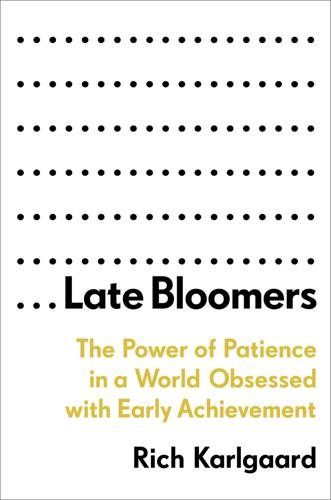
Late Bloomers: The Power of Patience in a World Obsessed With Early Achievement
by
Rich Karlgaard
Published 15 Apr 2019
That is why you saw Diane Greene, in her early sixties, leading one of Google’s most important businesses, Google Cloud. And why billionaire Tom Siebel, in his mid-sixties, is leading his latest software company, C3, in the hotly competitive space of artificial intelligence and the Internet of Things. In a sense, our brains are constantly forming neural networks and pattern-recognition capabilities that we didn’t have in our youth when we had blazing synaptic horsepower. As we get older, we develop new skills and refine others, including social awareness, emotional regulation, empathy, humor, listening, risk-reward calibration, and adaptive intelligence. All these skills enhance our potential to bloom and rebloom.
…
We take a job, move up to greater responsibility and pay levels, then are abruptly forced to retire or are laid off around sixty. Law and accounting firms have a term for this: up-and-out. A kinder clock for human development would set aside up-and-out and picture a person’s career as an arc. While we decline in some ways (synaptic speed, short-term memory), we gain in others (real-life pattern recognition, emotional IQ, wisdom). Our creative and innovative capacities remain strong in different ways as we age. I believe enlightened employers have a grand opportunity to be more creative about career paths. I’ve spent time with thousands of executives in my career in journalism, and they all tell me the same thing: Talent recruitment and retention is a priority.
…
Contrary to popular ideas about aging and creativity, many older adults discern patterns faster, determining what’s important and what’s trivial, then jumping to the logical solution. Elkhonon Goldberg, the NYU neuroscientist, has said that “cognitive templates” develop in older brains based on pattern recognition and form the basis for wise behavior and better decisions. As he observed in The Wisdom Paradox, Goldberg began to realize that as he aged, he was increasingly adept at a kind of “mental magic.” “Something rather intriguing is happening in my mind that did not happen in the past,” he wrote.
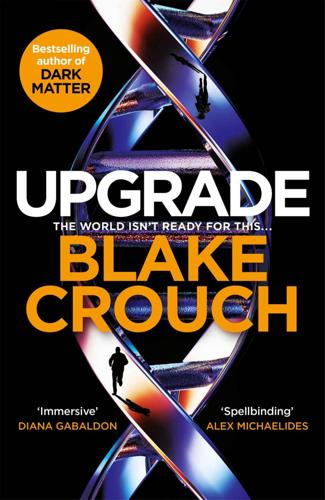
Upgrade
by
Blake Crouch
Published 6 Jul 2022
I shook my head, certain I had never heard of that gene before. “It’s linked to learning stimulus-response associations faster. How about NLGN3?” I said, “Enhanced learning and spatial-learning abilities.” “GluK4.” “Low bipolar risk and higher cognitive function.” Edwin looked up at me. “Your cognition, memory, concentration, pattern recognition—it’s all been targeted for enhancement. Have you experienced gains across these areas?” “Yes.” “Since when?” “Over the last three weeks.” “Do you get how astounding this is?” For a moment, I couldn’t speak. I had suspected that something had been done to me, but to hear it confirmed knocked the wind out of me.
…
If it takes ninety days for the jellyfish to cover the entire ocean, how long would it take for the jellyfish to cover half of the ocean?” “You’re wasting my time and yours,” I said. “And yours.” “Please provide an answer. We have to work up to the hard ones.” “Eighty-nine days.” We tackled spatial reasoning, visual/perceptual and classification skills. Logical reasoning. And finally pattern recognition. “Logan, what is the next term in the following sequence: 0, 1, 1, 2, 3, 5, 8, 13, 21, 34?” I pored over the sequence on his laptop screen. “Fifty-five.” “How did you get that?” “Well, that’s the Fibonacci sequence. Each number is the sum of the two that precede it.” “You just happen to know the Fibonacci sequence off the top of your head?”
…
These DNA payloads were already beginning to exercise their edits to myriad genes, involving multiple cascades of pathways—each a light touch to the genome, almost a butterfly effect that would have, over time, changed Tiffany’s genome and led to augmentation of her intelligence, longevity, and resilience, finally lifting her to some version of my level of being. After seeing Kara and Andrew, I was beginning to suspect that, while the upgrade altered expressions of intelligence, memory, and physical prowess across the board, it could exponentially ramp up preexisting proclivities—strength, agility, and coordination for people like Andrew and Kara. Pattern recognition and people reading for the more intellectually inclined like me. Tiffany had been on the same journey toward becoming an enhanced form of Homo sapiens that I had taken when Andrew shot her at the top of those stairs. Using the software, I began to isolate the genetic codes of multiple viral packages, which had delivered the upgrade to her.

Machine, Platform, Crowd: Harnessing Our Digital Future
by
Andrew McAfee
and
Erik Brynjolfsson
Published 26 Jun 2017
Because adults’ brains are different, they usually learn the rules explicitly when acquiring a new language. Early on, the AI community split into two similarly differentiated camps. One pursued so-called rule-based, or “symbolic,” artificial intelligence,¶ while the other built statistical pattern recognition systems. The former tried to bring about artificial intelligence the way an adult tries to learn a second language; the latter tried to make it happen in much the same way that children learn their first language. At first, it looked as though the symbolic approach would dominate. At the 1956 Dartmouth conference, for example, Allen Newell, J.
…
Unfortunately, no one knows what they are. — attributed to Somerset Maugham (1874–1965) “WHICH ABILITIES WILL CONTINUE TO BE UNIQUELY HUMAN as technology races ahead?” That’s the most common question we hear about minds and machines. As the digital toolkit challenges human superiority in routine information processing, pattern recognition, language, intuition, judgment, prediction, physical dexterity, and so many other things, are there any areas where we should not expect to be outstripped? Do Androids Dream Up Creative Leaps? The most common answer we hear to the question posed in the preceding paragraph is “creativity.”
…
Acton, Brian, 140 additive manufacturing, 107; See also 3D printing Adore Me, 62 adults, language learning by, 68–69 advertising content platforms and, 139 data-driven decision making for, 48, 50–51 Facebook and, 8–9 radio airplay as, 148 advertising agencies, 48 advertising revenue Android as means of increasing, 166 Craigslist’s effect on, 139 free apps and, 162 print media and, 130, 132, 139 African Americans identifying gifted students, 40 and search engine bias, 51–52 aggregators, 139–40 AGI (artificial general intelligence), 71 agriculture automated milking systems, 101 drones and, 99–100 “food computers,” 272 machine learning and, 79–80 robotics and, 101–2 Airbnb future of, 319–20 hotel experience vs., 222–23 lack of assets owned by, 6–7 limits to effects on hotel industry, 221–23 network effects, 193 as O2O platform, 186 peer reviews, 209–10 rapid growth of, 9 as two-sided network, 214 value proposition compared to Uber, 222 Airline Deregulation Act, 181n airlines, revenue management by, 181–82 air travel, virtualization in, 89 Akerlof, George, 207, 210 albums, recorded music, 145 algorithms; See also data-driven decision making bias in systems, 51–53 and Cambrian Explosion of robotics, 95–96 comparing human decisions to, 56 O2O platforms and, 193 Quantopian and, 267–70 superiority to System 1 reasoning, 38–41 “algo traders,” 268; See also automated investing Alibaba, 6–8 Alipay, 174 AlphaGo, 4–6, 14, 74, 80 Alter, Lloyd, 90 Amazon automatic price changes, 47 bar code reader app, 162 data-driven product recommendations, 47 development of Web Services, 142–43 Mechanical Turk, 260 as stack, 295 warehouse robotics, 103 Amazon EC2, 143 Amazon Go, 90–91 Amazon S3, 143 Amazon Web Services (AWS), 75, 142–43 American Airlines (AA), 182 amino acid creation, 271–72 analog copies, digital copies vs., 136 “Anatomy of a Large-Scale Hypertextual Web Search Engine, The” (Page and Brin), 233 Anderson, Chris, 98–100 Anderson, Tim, 94 Andreessen, Marc on crowdfunding, 262–63 and Netscape, 34 as self-described “solutionist,” 297 on Teespring, 263–64 Android Blackberry vs., 168 contribution to Google revenue/profits, 204 iOS vs., 166–67 Angry Birds, 159–61 anonymity, digital currency and, 279–80 Antikythera mechanism, 66 APIs (application programming interfaces), 79 apophenia, 44n apparel, 186–88 Apple; See also iPhone acquiring innovation by acquiring companies, 265 and industrywide smartphone profits, 204 leveraging of platforms by, 331 Postmates and, 173, 185 profitability (2015), 204 revenue from paid apps, 164 “Rip, Mix, Burn” slogan, 144n as stack, 295 application programming interfaces (APIs), 79 AppNexus, 139 apps; See also platforms for banking, 89–90 demand curve and, 157–61 iPhone, 151–53 App Store, 158 Apter, Zach, 183 Aral, Sinan, 33 Archilochus, 60–61 architecture, computer-designed, 118 Aristophanes, 200 Arnaout, Ramy, 253 Arthur, Brian, 47–48 artificial general intelligence (AGI), 71 artificial hands, 272–75 artificial intelligence; See also machine learning current state of, 74–76 defined, 67 early attempts, 67–74 implications for future, 329–30 rule-based, 69–72 statistical pattern recognition and, 72–74 Art of Thinking Clearly, The (Dobelli), 43 arts, digital creativity in, 117–18 Ashenfelter, Orley, 38–39 ASICs (application-specific integrated circuits), 287 assets and incentives, 316 leveraging with O2O platforms, 196–97 replacement by platforms, 6–10 asymmetries of information, 206–10 asymptoting, 96 Atkeson, Andrew, 21 ATMs, 89 AT&T, 96, 130 August (smart door lock), 163 Austin, Texas, 223 Australia, 100 Authorize.Net, 171 Autodesk, 114–16, 119, 120 automated investing, 266–70 automation, effect on employment/wages, 332–33 automobiles, See cars Autor, David, 72, 101 background checks, 208, 209 back-office work, 82–83 BackRub, 233 Baidu, 192 Bakos, Yannis, 147n Bakunin, Mikhail, 278 Ballmer, Steve, 151–52 bandwagon effect, 217 banking, virtualization and, 89–90, 92 Bank of England, 280n bank tellers, 92 Barksdale, Jim, 145–46 barriers to entry, 96, 220 Bass, Carl, 106–7, 119–20 B2B (business-to-business) services, 188–90 Beastmode 2.0 Royale Chukkah, 290 Behance, 261 behavioral economics, 35, 43 Bell, Kristen, 261, 262 Benioff, Mark, 84–85 Benjamin, Robert, 311 Benson, Buster, 43–44 Berlin, Isiah, 60n Berners-Lee, Tim, 33, 34n, 138, 233 Bernstein, Michael, 260 Bertsimas, Dimitris, 39 Bezos, Jeff, 132, 142 bias of Airbnb hosts, 209–10 in algorithmic systems, 51–53 digital design’s freedom from, 116 management’s need to acknowledge, 323–24 and second-machine-age companies, 325 big data and Cambrian Explosion of robotics, 95 and credit scores, 46 and machine learning, 75–76 biology, computational, 116–17 Bird, Andrew, 121 Bitcoin, 279–88 China’s dominance of mining, 306–7 failure mode of, 317 fluctuation of value, 288 ledger for, 280–87 as model for larger economy, 296–97 recent troubles with, 305–7 and solutionism, 297 “Bitcoin: A Peer-to-Peer Electronic Cash System” (Nakamoto), 279 BlaBlaCar, 190–91, 197, 208 BlackBerry, 168, 203 Blitstein, Ryan, 117 blockchain as challenge to stacks, 298 and contracts, 291–95 development and deployment, 283–87 failure of, 317 and solutionism, 297 value as ledger beyond Bitcoin, 288–91 Blockchain Revolution (Tapscott and Tapscott), 298 Bloomberg Markets, 267 BMO Capital Markets, 204n Bobadilla-Suarez, Sebastian, 58n–59n Bock, Laszlo, 56–58 bonds, 131, 134 bonuses, credit card, 216 Bordeaux wines, 38–39 Boudreau, Kevin, 252–54 Bowie, David, 131, 134, 148 Bowie bonds, 131, 134 brand building, 210–11 Brat, Ilan, 12 Bredeche, Jean, 267 Brin, Sergey, 233 Broward County, Florida, 40 Brown, Joshua, 81–82 Brusson, Nicolas, 190 Burr, Donald, 177 Bush, Vannevar, 33 business conference venues, 189 Business Insider, 179 business processes, robotics and, 88–89 business process reengineering, 32–35 business travelers, lodging needs of, 222–23 Busque, Leah, 265 Buterin, Vitalik, 304–5 Byrne, Patrick, 290 Cairncross, Francis, 137 California, 208; See also specific cities Calo, Ryan, 52 Cambrian Explosion, 94–98 Cameron, Oliver, 324 Camp, Garrett, 200 capacity, perishing inventory and, 181 Card, David, 40 Care.com, 261 cars automated race car design, 114–16 autonomous, 17, 81–82 decline in ownership of, 197 cash, Bitcoin as equivalent to, 279 Casio QV-10 digital camera, 131 Caves, Richard, 23 Caviar, 186 CDs (compact discs), 145 cell phones, 129–30, 134–35; See also iPhone; smartphones Census Bureau, US, 42 central bankers, 305 centrally planned economies, 235–37 Chabris, Chris, 3 Chambers, Ephraim, 246 Champy, James, 32, 34–35, 37, 59 Chandler, Alfred, 309n Chase, 162 Chase Paymentech, 171 check-deposit app, 162 children, language learning by, 67–69 China Alibaba in, 7–8 concentration of Bitcoin wealth in, 306–7 and failure mode of Bitcoin, 317 mobile O2O platforms, 191–92 online payment service problems, 172 robotics in restaurants, 93 Shanghai Tower design, 118 Xiaomi, 203 Chipotle, 185 Choudary, Sangeet, 148 Christensen, Clay, 22, 264 Churchill, Winston, 301 Civil Aeronautics Board, US, 181n Civis Analytics, 50–51 Clash of Clans, 218 classified advertising revenue, 130, 132, 139 ClassPass, 205, 210 and economics of perishing inventory, 180–81 future of, 319–20 and problems with Unlimited offerings, 178–80, 184 and revenue management, 181–84 user experience, 211 ClassPass Unlimited, 178–79 Clear Channel, 135 clinical prediction, 41 Clinton, Hillary, 51 clothing, 186–88 cloud computing AI research, 75 APIs and, 79 Cambrian Explosion of robotics, 96–97 platform business, 195–96 coaches, 122–23, 334 Coase, Ronald, 309–13 cognitive biases, 43–46; See also bias Cohen, Steven, 270 Coles, John, 273–74 Collison, John, 171 Collison, Patrick, 171–74 Colton, Simon, 117 Columbia Record Club, 131 commoditization, 220–21 common sense, 54–55, 71, 81 companies continued dominance of, 311–12 continued relevance of, 301–27 DAO as alternative to, 301–5 decreasing life spans of, 330 economics of, 309–12 future of, 319–26 leading past the standard partnership, 323–26 management’s importance in, 320–23 markets vs., 310–11 as response to inherent incompleteness of contracts, 314–17 solutionism’s alternatives to, 297–99 TCE and, 312–15 and technologies of disruption, 307–9 Compass Fund, 267 complements (complementary goods) defined, 156 effect on supply/demand curves, 157–60 free, perfect, instant, 160–63 as key to successful platforms, 169 and open platforms, 164 platforms and, 151–68 and revenue management, 183–84 Stripe and, 173 complexity theory, 237 Composite Fund (D.
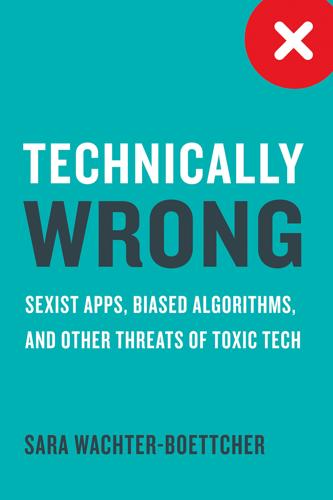
Technically Wrong: Sexist Apps, Biased Algorithms, and Other Threats of Toxic Tech
by
Sara Wachter-Boettcher
Published 9 Oct 2017
The wider the range of handwriting used in the training data, the more accurate the system’s pattern recognition will be when you let it loose on new data. And once it’s accurately identifying new forms of the lowercase “p,” those patterns can be added into the network too. This is how a neural network gets smarter over time.12 Like our brains, though, computers struggle to understand complex objects, such as photographs, all at once; there are simply too many details and variations to make sense of. Instead they have to learn patterns, like we learned as children. This kind of pattern recognition happens in layers: small details, like the little point at the top of a cat’s ear, get connected to larger concepts, like the ear itself, which then gets connected to the larger concept of a cat’s head, and so on—until the system builds up enough layers, sometimes twenty or more, to make sense of the full image.13 The connections between each of those layers are what turn the collection of data into a neural network.
…
“A prestigious degree, a proven track record and personal connections to power-brokers are at least as important as a great idea,” she wrote. “Scrappy unknowns with a suitcase and a dream are the exceptions, not the rule.” 3 As Sharon Vosmek, CEO of the venture accelerator Astia, put it, “They call it pattern recognition, but in other industries they call it profiling or stereotyping.” 4 Meanwhile, women hardly get funded at all: only 10 percent of the 187 Silicon Valley startups that received Series A funding in 2016 were woman-led, up a meager 2 percent from the year before.5 Yet much of the tech industry still clings to meritocracy like a tattered baby blanket.
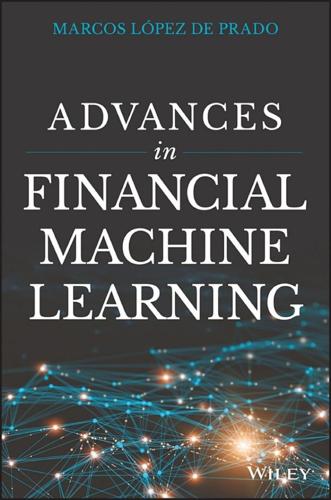
Advances in Financial Machine Learning
by
Marcos Lopez de Prado
Published 2 Feb 2018
Econometrics may be good enough to succeed in financial academia (for now), but succeeding in business requires ML. What do you say to people who dismiss ML algorithms as black boxes? If you are reading this book, chances are ML algorithms are white boxes to you. They are transparent, well-defined, crystal-clear, pattern-recognition functions. Most people do not have your knowledge, and to them ML is like a magician's box: “Where did that rabbit come from? How are you tricking us, witch?” People mistrust what they do not understand. Their prejudices are rooted in ignorance, for which the Socratic remedy is simple: education.
…
Neural Computing & Applications, Vol. 10, No. 2, pp. 184–192. Cao, L., F. Tay and F. Hock (2003): “Support vector machine with adaptive parameters in financial time series forecasting.” IEEE Transactions on Neural Networks, Vol. 14, No. 6, pp. 1506–1518. Cervelló-Royo, R., F. Guijarro, and K. Michniuk (2015): “Stock market trading rule based on pattern recognition and technical analysis: Forecasting the DJIA index with intraday data.” Expert Systems with Applications, Vol. 42, No. 14, pp. 5963–5975. Chang, P., C. Fan and J. Lin (2011): “Trend discovery in financial time series data using a case-based fuzzy decision tree.” Expert Systems with Applications, Vol. 38, No. 5, pp. 6070–6080.
…
Bibliography Bharat Rao, R., G. Fung, and R. Rosales (2008): “On the dangers of cross-validation: An experimental evaluation.” White paper, IKM CKS Siemens Medical Solutions USA. Available at http://people.csail.mit.edu/romer/papers/CrossVal_SDM08.pdf. Bishop, C. (1995): Neural Networks for Pattern Recognition, 1st ed. Oxford University Press. Breiman, L. and P. Spector (1992): “Submodel selection and evaluation in regression: The X-random case.” White paper, Department of Statistics, University of California, Berkeley. Available at http://digitalassets.lib.berkeley.edu/sdtr/ucb/text/197.pdf. Hastie, T., R.
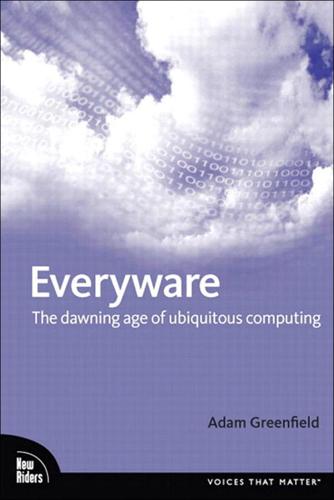
Everyware: The Dawning Age of Ubiquitous Computing
by
Adam Greenfield
Published 14 Sep 2006
It may well be that a full mug on my desk implies that I am also in the room, but this is not always going to be the case, and any system that correlates the two facts had better do so pretty loosely. Products and services based on such pattern-recognition already exist in the world—I think of Amazon's "collaborative filtering"–driven recommendation engine—but for the most part, their designers are only now beginning to recognize that they have significantly underestimated the difficulty of deriving meaning from those patterns. The better part of my Amazon recommendations turn out to be utterly worthless—and of all commercial pattern-recognition systems, that's among those with the largest pools of data to draw on. Lest we forget: "simple" is hard.
…
(We'll see in the next thesis that such a degree of explicitness poses significant challenges socially as well as semantically.) Take exercise, or play, or sexuality, all of which will surely become sites of intense mediation in a fully developed everyware milieu. Something as simple as hiking in the wilderness becomes almost unrecognizable when overlaid with GPS location, sophisticated visual pattern-recognition algorithms, and the content of networked geological, botanical, and zoological databases—you won't get lost, surely, or mistake poisonous mushrooms for the edible varieties, but it could hardly be said that you're "getting away from it all." Even meditation is transformed into something new and different: since we know empirically that the brains of Tibetan monks in deep contemplation show regular alpha-wave patterns, it's easy to imagine environmental interventions, from light to sound to airflow to scent, designed to evoke the state of mindfulness, coupled to a body-monitor setting that helps you recognize when you've entered it.
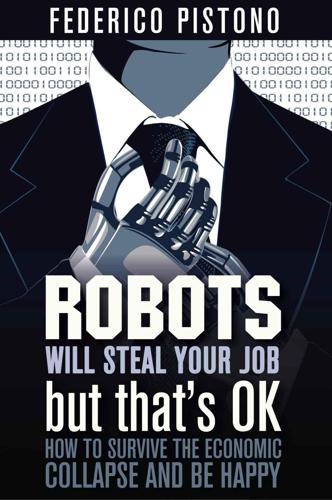
Robots Will Steal Your Job, But That's OK: How to Survive the Economic Collapse and Be Happy
by
Pistono, Federico
Published 14 Oct 2012
It is a closed system, with a number of variables well known and pretty much already defined, and the process is very repetitive. What this means is a database of information (thirteen years of studies and training) connected to a visual recognition system (the radiologist’s brain) is a process that already exists today and finds many applications. Visual pattern recognition software is already highly sophisticated, one such example is Google Images. You can upload an image to the search engine, Google uses computer vision techniques to match your image to other images in the Google Images index and additional image collections. From those matches, they try to generate an accurate “best guess” text description of your image, as well as find other images that have the same content as your uploaded image
…
* * * * * * Figure 6.2: I upload my image, named “guess-what-this.is.jpg” * * * * * * Figure 6.3: The software correctly recognises it as the Robot ASIMO by Honda, and offers similar images in return. Notice that the proposed images show ASIMO in different positions and angles, not the same image in different sizes. This algorithm recognises millions of different patterns, as it is a general-purpose application. A task-specific pattern recognition software is less complex to develop, although it must be much more accurate (the stakes are higher). * * * Similarly, many governments have access to software that can help identify terrorists in airports based on visual analysis of security photographs33. CCTV cameras in London and many other cities have advanced systems that track people’s faces and can help the police identify potential criminals34.
…
If you are thinking decades, you are in for a surprise. 7.6 AI Assistants You might remember the May of 1997, when the legendary chess player Garry Kasparov was defeated by IBM Deep Blue in what has been called “the most spectacular chess event in history”79. At the time the plan of IBM was to rely on the computational superiority of their machine using brute force,80 crunching billions of combinations; against the intuition, memory recall and pattern recognition of the Russian chess grandmaster. Nobody believed it represented an act of intelligence of any sort, since it worked in a very mechanistic way. Boy, we have gone so far since then. The classical “Turing test approach” has been largely abandoned as a realistic research goal, and is now just an intellectual curiosity (the annual Loebner prize for realistic chattiest81), but helped spawn the two dominant themes of modern cognition and artificial intelligence: calculating probabilities and producing complex behaviour from the interaction of many small, simple processes.
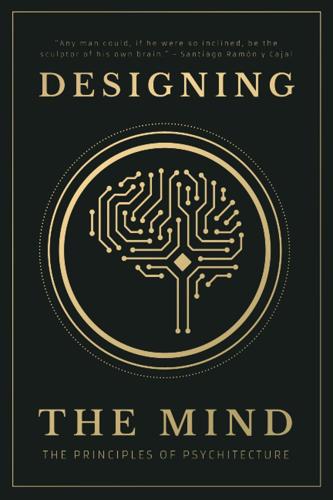
Designing the Mind: The Principles of Psychitecture
by
Designing The Mind
and
Ryan A Bush
Published 10 Jan 2021
Homo sapiens is a storytelling animal, that thinks in stories rather than in numbers or graphs, and believes that the universe itself works like a story, replete with heroes and villains, conflicts and resolutions, climaxes and happy endings. - Yuval Noah Harari, 21 Lessons for the 21st Century Our minds were built to find patterns. Pattern recognition is highly advantageous from a biological perspective, as we would not be able to identify predators, find food, or recognize our family members without it.8 But our brains have limited bandwidth, so they have to cut corners. We make hasty judgments, oversimplify the factors at play, and quickly construct narratives and explanations for the complex outcomes in our world.
…
Of course every story, including the one this book is telling, is false - in the sense that it necessarily oversimplifies reality, but we have a tendency to cling to our stories as if they were perfect representations of reality. In pathological extremes, this delusional over-recognition of patterns manifests in disorders like schizophrenia.9 Some light examples of pattern recognition gone haywire are found in optical illusions and pareidolia, the tendency to see patterns like faces in abstract images or hear voices in noise. We hear our house creak and believe we’ve encountered a ghost, attributing agency where there is none. Some more concerning examples are some of the heuristics and generalizations we regularly employ.
…
But the evidence suggests it is surprisingly easy to be delusional about our own self-interest. Though there is less research on them, ancient and modern thinkers have uncovered many errors we all share which limit our acquisition of wisdom. The algorithms which most often lead people astray in life are not simply distortions of memory, prediction, or pattern recognition in the external world, but distortions of introspection. And now that we have laid the groundwork for the mechanisms that bias our beliefs about the outer universe, we will build on it to reveal the biases of the inner universe. We saw in the previous chapter that the illusion of control causes us to believe we have more control over our circumstances than we actually do, and to attribute unrelated outcomes to our own actions.1 But we are also wired to falsely believe we know which outcomes would make us happy.

Money: Vintage Minis
by
Yuval Noah Harari
Published 5 Apr 2018
Only conscious beings could perform tasks that required a lot of intelligence, such as playing chess, driving cars, diagnosing diseases or identifying terrorists. However, we are now developing new types of non-conscious intelligence that can perform such tasks far better than humans. For all these tasks are based on pattern recognition, and non-conscious algorithms may soon excel human consciousness in recognising patterns. Science-fiction movies generally assume that in order to match and surpass human intelligence, computers will have to develop consciousness. But real science tells a different story. There might be several alternative ways leading to super-intelligence, only some of which pass through the straits of consciousness.
…
Bartenders – 77 per cent. Archivists – 76 per cent. Carpenters – 72 per cent. Lifeguards – 67 per cent. And so forth. There are of course some safe jobs. The likelihood that computer algorithms will displace archaeologists by 2033 is only 0.7 per cent, because their job requires highly sophisticated types of pattern recognition, and doesn’t produce huge profits. Hence it is improbable that corporations or government will make the necessary investment to automate archaeology within the next twenty years. Of course, by 2033 many new professions are likely to appear, for example, virtual-world designers. But such professions will probably require much more creativity and flexibility than current run-of-the-mill jobs, and it is unclear whether forty-year-old cashiers or insurance agents will be able to reinvent themselves as virtual-world designers (try to imagine a virtual world created by an insurance agent!).
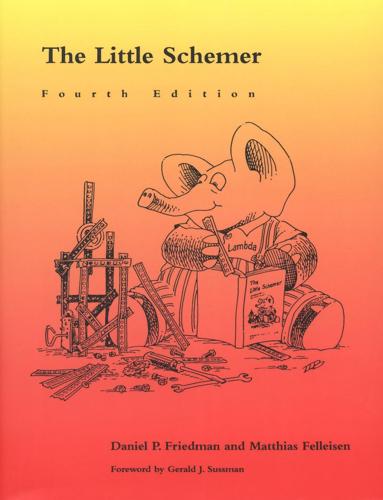
The Little Schemer
by
Daniel P. Friedman
,
Matthias Felleisen
and
Duane Bibby
Published 1 Jan 1974
In fact, The Little Schemer is based on lecture notes from a two-week "quickie" introduction to Scheme for students with no previous programming experience and an admitted dislike for anything mathematical. Many of these students were preparing for careers in public affairs. It is our belief that writing programs recursively in Scheme is essentially simple pattern recognition. Since our only concern is recursive programming, our treatment is limited to the whys and wherefores of just a few Scheme features: car, cdr, cons, eq?, null?, zero?, add!, sub!, number?, and, or, quote, lambda, define, and condo Indeed, our language is an idealized Scheme. The Little Schemer and The Seasoned Schemer will not introduce you to the practical world of programming, but a mastery of the concepts in these books provides a start toward understanding the nature of computation.
…
We do not give any formal definitions in this book. We believe that you can form your own definitions and will thus remember them and understand them better than if we had written each one for you. But be sure you know and understand the Laws and Commandments thoroughly before passing them by. The key to learning Scheme is "pattern recognition." The Commandments point out the patterns that you will have already seen. Early in the book, some concepts are narrowed for simplicity; later, they are expanded and qualified. You should also know that, while everything in the book is Scheme, Scheme itself is more general and incorporates more than we could intelligibly cover in an introductory text.

Augmented: Life in the Smart Lane
by
Brett King
Published 5 May 2016
In the 1990s, this extended to business processes and operations being automated at an enterprise level with enterprise-wide software solutions like SAP. However, the Internet went further and disrupted distribution mechanics such as we saw in the book and music industries. The Augmented Age will bring about a huge rethink of processes involving dynamic decision-making, pattern recognition and advisory services as machine intelligence optimises those processes and feedback loops. Whereas the Internet was most commonly about disruption of distribution, availability of information and rethinking the value chain, the next age will be about disruption of information, intelligence and advice (the application of information and intelligence) itself.
…
Whether it is advice on how to optimise your day’s activities from your bathroom mirror, an interactive chef that helps you cook your next meal or a travel advisory algorithm that optimises which flights you should book to increase your chance of an upgrade, there will increasingly be advice embedded into the world around us where it matters the most. There will be very few instances where a human who can give you advice at a future time with inferior data will compete with technologically embedded, contextual advice in real time. Machines Will Be Better at Learning about You Machine learning has been limited in the past by pattern recognition, natural speech and other deficiencies, but machines are beginning to catch up quickly. The advantage that machines connected to the Internet of Things and sensors will have is that they will be able to learn about your behaviour much more efficiently than service organisations today. How do service organisations today learn about your preferences?
…
While the humble camera and speaker are how we most commonly experience visual and audio innovations today, what lies beneath them has far more revolutionary potential. Next-generation retail experiences will evolve into something akin to neural and bio-synchronicity. The use of biometrics (fingerprint, facial, iris and voice identification), pattern recognition (emotional, stimulus response, location-based), behavioural psychology, sensory integration and augmented reality will change the retail experience into something that is a hybrid of technology and experiential design. We’ve talked about smart health care, smart banking, etc., in the other chapters of the book, so it’s natural that retailers and hospitality will seek to merge retail, travel and tech as much as possible.
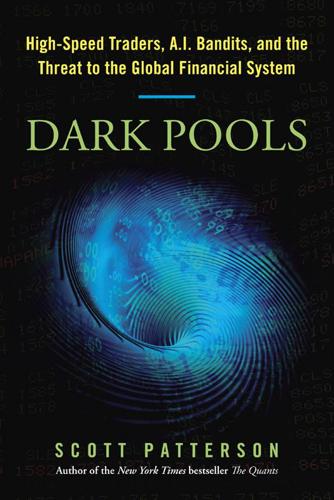
Dark Pools: The Rise of the Machine Traders and the Rigging of the U.S. Stock Market
by
Scott Patterson
Published 11 Jun 2012
More and more trades were sliced and diced into small, round-numbered pieces—two hundred, three hundred shares—that algos could more easily juggle. The algos deployed complex methods to hunt out the large whale orders the big firms traded, such as “pinging” dark pools with orders that they canceled seconds later. Some used AI pattern-recognition methods to detect their prey. Relatively small at first, the dark pools would grow larger and larger as electronic trading expanded dramatically in the coming years. The electronic traders and the Plumbers who built the pools they swam in didn’t see anything wrong with the market they’d help create.
…
Many of the hubs lay in the oceans, leading to the fanciful notion that particularly ambitious high-frequency trading outfits would plant themselves in the middle of the Atlantic or the Mediterranean or the South China Sea and get the jump on competitors using floating micro-islands populated by small communities of elite pattern-recognition programmers overseeing the hyperfast flow of data through their superservers. Better yet: unmanned pods of densely packed microprocessors overseen by next-generation AI Bots processing billions of orders streaming out of other unmanned AI pods positioned optimally around the world, the silent beams of high-frequency orders shifting trillions across the earth’s oceans at light speeds, all automated, beyond the scope of humans to remotely grasp the nature of the transactions.
…
Information about companies, currencies, bonds, and every other tradable instrument was digitized, fast as light. So-called machine-readable news was a hot new commodity. Breaking news about corporate events such as earnings reports was coded so that superfast algorithms could pick through it and react. Media outlets such as Reuters and Dow Jones published machine-readable news that pattern-recognition computers scanned and reacted to in the blink of an eye. High-tech trading firms gobbled up the information and gunned orders into the market at a rate faster than the beating wings of a hummingbird. With masses of data streaming through thousands of miles of fiber-optic cables laced around the world, and more people plugged into the Web through social networks, entirely novel techniques for leveraging data for trading were cropping up.

Cities Under Siege: The New Military Urbanism
by
Stephen Graham
Published 30 Oct 2009
In 2005 it emerged that the US Capitol Police in Washington, DC, had become the first police department in the country to adopt a ‘shoot-to-kill’ policy for dealing with suspected suicide bombers. Associated with this was the doctrine of ‘behavior pattern recognition’, intended as a means to ‘identify and isolate the type of behavior that might precede an attack’.120 Both shoot-to-kill policies and behavior pattern recognition techniques have a long history in Israel, and since 2001, Israeli experts have trained law enforcement and security personnel from across the world on their implementation. The International Association of Chiefs of Police (IACP), a global organization that supports training of and co-operation among police, has been instrumental in this rapid international diffusion of Israeli doctrine regarding shoot-to-kill and behavior pattern recognition.
…
The International Association of Chiefs of Police (IACP), a global organization that supports training of and co-operation among police, has been instrumental in this rapid international diffusion of Israeli doctrine regarding shoot-to-kill and behavior pattern recognition. The day after the devastating suicide bombing attacks on London’s tubes and buses, the IACP released its guidelines for dealing with potential suicide bombers, instructing ‘police officers to look for certain behavioral and physical characteristics, similar to those identified in behavior pattern recognition guidelines’. They also promoted ‘the use of lethal force, encouraging officers to aim for the suspect’s head and shoot-to-kill’. The IACP has held a number of training events in Israel to enable US and UK law enforcement officers to learn these policies.121 The implications of such imitation emerged during the investigations that followed the killing of a young Brazilian man, Jean Charles de Menezes, in London’s Stockwell tube station by anti-terrorist British police on 22 July 2005.
…
As part of the broader shift towards robotic vehicles that fuels major competitions such as Urban Challenge (discussed in Chapter 10), the US Army envisages that one third of all US military ground vehicles will be entirely robotic by 2015. In a 2004 article, defence journalist Maryanne Lawlor47 discusses the development of ‘autonomous mechanized combatant’ air and ground vehicles, as well as what she calls ‘tactical autonomous combatants’ under development for the US Air Force. These are being designed, she notes, to use pattern-recognition software for ‘time-critical targeting’. This involves rapidly linking sensors to automated weapons so that targets that are automatically sensed and ‘recognized’ by databases can be quickly, continually, and automatically destroyed. In US military parlance, such doctrine is widely termed ‘compressing the kill chain’ or ‘sensor to shooter warfare’.48 According to Lawlor, the ‘swarming of unmanned systems’ project team at US Joint Forces Command’s Joint Concept Development & Experimentation Directorate, based in Norfolk, Virginia, has made so much progress that ‘autonomous, networked and integrated robots may be the norm rather than the exception by 2025’.49 By that date, she predicts, ‘technologies could be developed … that would allow machines to sense a report of gunfire in an urban environment to within one meter, triangulating the position of the shooter and return fire within a fraction of a second’, and she argues that such robo-war systems will ‘help save lives by taking humans out of harm’s way’.50 Apparently, only US military personnel fall within the category ‘human’.
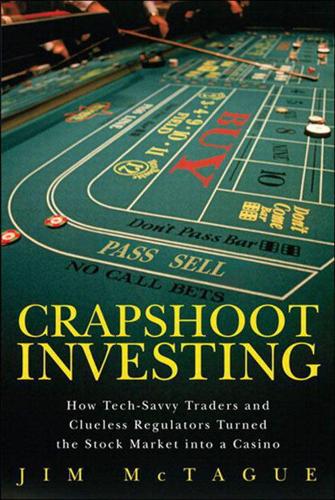
Crapshoot Investing: How Tech-Savvy Traders and Clueless Regulators Turned the Stock Market Into a Casino
by
Jim McTague
Published 1 Mar 2011
Someone in the market was using the equivalent of steroids to trade in and out of the market faster than everybody else. As the men began to track down the hombre, they learned just how radically Regulation NMS had changed the market, and it surprised them. The change had engendered an explosion in the number of high-frequency traders plying the markets with super-charged computers and advanced pattern-recognition and statistical software designed to beat the market. These guys always had been around, but now there seemed to be a lot more of them, and their robotic trading machines were much faster than anything ever deployed in the markets. They programmed these overclocked computers to make money buying and selling stocks without direct human oversight.
…
There was a new breed of trader prowling the stock market: the hedge fund. They liked to front-run institutional orders, which is why the institutions primarily had been trading in the old upstairs market, out of sight. Now the institutions would be defenseless prey for the hedge funds, which had an algorithmic advantage. The hedge funds had begun using pattern-recognition software, which could spot heavy buying and selling of specific securities and predict with an accuracy ranging from 60% to 80% how far the specific stock would move up or down on the next several trades. Thus, the hedge funds had the ability to front-run the market. They’d buy stock on an exchange where the targeted stock was priced low and go to Instinet or another ATS and sell the stock at the higher price predicted by the algorithm, knowing that big mutual funds were buying the stock in those venues.
…
Quants also were experts in statistical probability and would analyze historical data for patterns thought to repeat under certain circumstances, believing that future uncertainty could be reduced by collecting such information. For example, certain buzz words in the minutes of a Federal Reserve Board meeting might affect the stock market in a specific way. High-frequency traders eagerly embraced this kind of pattern-recognition software. The Quants, who predated the HFT industry by 20 years, often founded hedge funds as opposed to trading exclusively on their own dime. This practice invited regulatory scrutiny and the associated expenses whenever a member of the Quant fraternity had an exceptional meltdown. The SEC tried to regulate hedge funds in the wake of the Long Term Capital Management (LTCM) hedge fund debacle in 1998, but the courts threw out its rules.

Thinking Machines: The Inside Story of Artificial Intelligence and Our Race to Build the Future
by
Luke Dormehl
Published 10 Aug 2016
For evidence, look no further than the UK’s ‘Mechanisation of Thought Processes’ conference, organised at the National Physical Laboratory in Teddington, Middlesex in 1958. Just two years after the Dartmouth conference, AI was already split into fields including ‘artificial thinking, character and pattern recognition, learning, mechanical language translation, biology, automatic programming, industrial planning and clerical mechanisation’. The period that followed is often considered to be the glory days of classic AI. The field was fresh, apparent progress was being made, and thinking machines seemed to lurk just over the horizon.
…
Overenthusiasm meant that impressive, if incremental, advances were often written up as though truly smart machines were already here. For example, one heavily hyped project was a 1960s robot called SHAKEY, described as the world’s first general-purpose robot capable of reasoning about its own actions. In doing so, it set benchmarks in fields like pattern recognition, information representation, problem solving and natural language processing. That alone should have been enough to make SHAKEY exciting, but journalists couldn’t resist a bit of embellishment. As such, when SHAKEY appeared in Life magazine in 1970, he was hailed not as a promising combination of several important research topics, but as the world’s ‘first electronic person’.
…
To make it the ‘Worldwide Headquarters’ they thought it should be, they kitted it out with a few tables, three chairs, a turquoise shag rug, a folding ping-pong table and a few other items. The garage door had to be left open for ventilation. It must have seemed innocuous at the time, but over the next two decades, Larry Page and Sergey Brin’s company would make some of the biggest advances in AI history. These spanned fields including machine translation, pattern recognition, computer vision, autonomous robots and far more, which AI researchers had struggled with for half a century. Virtually none of it was achieved using Good Old-Fashioned AI. The company’s name, of course, was Google. CHAPTER 2 Another Way to Build AI IT IS 2014 and, in the Google-owned London offices of an AI company called DeepMind, a computer whiles away the hours by playing an old Atari 2600 video game called Breakout.
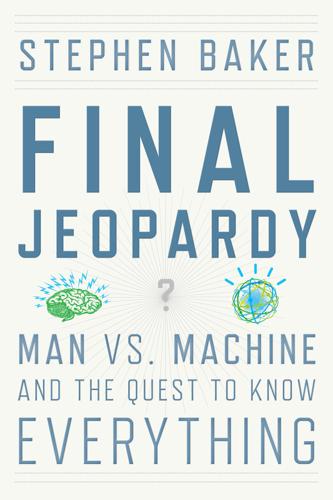
Final Jeopardy: Man vs. Machine and the Quest to Know Everything
by
Stephen Baker
Published 17 Feb 2011
Modern males now display muscles as mating attire, much the way peacocks fan their otherwise useless feathers. It would be all too easy to dismiss human foes of the IBM machine as cognitive versions of circus strongmen: trivia wunderkinds. But from the very beginning, Ferrucci saw that the game required far more than the simple regurgitation of facts. It involved strategy, decision making, pattern recognition, and a knack for nuance in the language of the clues. As the computer grew from a whimsical idea into a Jeopardy behemoth, it underwent an entire education, triumphing in some areas, floundering in others. Its struggles, whether in untangling language or grappling with abstract ideas, highlighted the areas in which humans maintain an edge.
…
The machines weren’t up to it. And they had serious trouble with even the most basic forms of perception, such as seeing. For example, researchers struggled to teach machines to perceive the edges of things in the physical world. As it turned out, it required experience and knowledge and advanced powers of pattern recognition just to look through a window and understand that the oak tree in the yard was a separate entity. It was not connected to the shed on the other side of it or a pattern on the glass or the wallpaper surrounding the window. The biggest obstacle, though, was language. In the early days, it looked beguilingly easy.
…
In this tiny negotiation, far beyond the range and capabilities of machines, two people can bridge the gap between the formal definition of a word and what they really want to say. It’s hard to nail down the exact end of AI winter. A certain thaw set in when IBM’s computer Deep Blue bested Garry Kasparov in their epic 1997 showdown. Until that match, human intelligence, with its blend of historical knowledge, pattern recognition, and the ability to understand and anticipate the behavior of the person across the board, ruled the game. Human grandmasters pondered a rich set of knowledge, jewels that had been handed down through the decades—from Bobby Fischer’s use of the Sozin Variation in his 1972 match with Boris Spassky to the history of the Queen’s Gambit Denied.
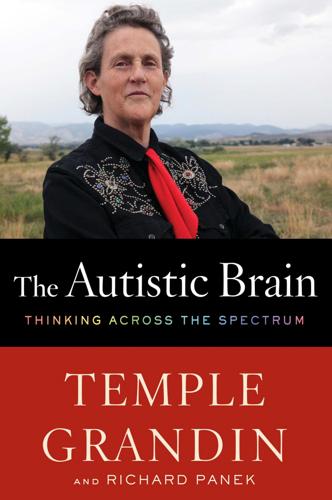
The Autistic Brain: Thinking Across the Spectrum
by
Temple Grandin
and
Richard Panek
Published 15 Feb 2013
The interpretation of this tendency as a deficit in social pattern recognition was adopted by R. Peter Hobson in an influential series of studies he spearheaded in the 1980s at the Institute of Psychiatry in London. Did children with autism prefer to sort photographs according to facial expressions exhibited (happy or sad) or the type of hat worn (floppy or woolen)? The hats won. Did children with autism have trouble putting the pieces of a face together into an interpretation of facial emotions? Yes.9 These are important findings. But there can be a flip side to a deficit in social pattern recognition: a strength in pure pattern recognition—being really good at seeing the trees.

Fully Automated Luxury Communism
by
Aaron Bastani
Published 10 Jun 2019
While that was an iconic moment in the unfolding story of humans and machines, it paled in comparison to Watson, also built by IBM, when it later defeated Ken Jennings and Brad Rutter – two of the greatest Jeopardy! players in the history of the TV quiz show. Chess is a uniquely challenging game, but Jeopardy!, which demands real-time pattern recognition and creative thinking, more closely resembles the features associated with distinctively human intelligence. Not long after, Ken Jennings neatly summed up what that defeat might mean for white-collar work – which values pattern recognition and creative thinking – over the coming decades. Just as factory jobs were eliminated in the twentieth century by new assembly-line robots, Brad and I were the first knowledge-industry workers put out of work by the new generation of ‘thinking’ machines.
…
The first part allows algorithms to model and reproduce outcomes and work their way through highly repetitive tasks, while the second allows for immediate and smart responses to unexpected situations. In medicine, you can see how that would be applied to pretty much anything – from eye examinations to treating prostate cancer or taking blood. In areas more dependent on pattern recognition, such as radiology, machines have even more of an advantage. Radiologists use medical images like X-rays, CT and PET scans, MRIs and ultrasounds to diagnose and treat patients. While the field has greatly improved patient care over the last few decades, it has contributed to escalating costs and is relatively labour intensive.

Personal Kanban: Mapping Work, Navigating Life
by
Jim Benson
and
Tonianne Demaria Barry
Published 2 Feb 2011
Touching, feeling, physically interacting with our tasks transforms work-as-a-concept into work-as-a-concrete-experience. The physical experience of taking abstract ideas and turning them into tangible objects (sticky notes) impacts our learning by improving our understanding while promoting memory retention and skill synthesis. Kinesthetic Feedback 2: Pattern Recognition Each time we move a sticky note, we receive kinesthetic feedback: the tactile action is both a data point and a reward. A regular succession of these movements creates a cadence, a rhythm of work. Cadence creates an expectation. We begin to notice patterns (types of tasks most often delayed, tasks that require additional help), make distinctions (what work we enjoy, who we enjoy working with), and can adjust our prioritizations to suit.
…
The following trouble shooting techniques delve deep into the heart of a problem, challenging conventional wisdom, getting rid of wasteful assumptions, and exposing root causes. Pattern Matching as a Foundation for Problem Solving The human brain finds it incredibly difficult, if not impossible, to fake randomness. ~ Alex Bellosh Pattern recognition. It’s been hard-wired into our brains since we were warding off sabre-toothed tigers. Drawing connections between related objects and behaviors, humans have an innate ability to seek, draw relationships between, and store patterns. Inferring and adapting to basic differences in nature—such as distinguishing between animals that were potentially harmful or plants that were toxic or the amount of sunlight relative to each season—was key to prehistoric man’s survival and our evolution as a species.

Spoiled Brats: Short Stories
by
Simon Rich
Published 14 Oct 2014
My mother stared at me angrily for a moment—then galloped off screaming into the night. “I met with the scientists,” I told my parents the next day. “They said I was the smartest chimp they’d ever seen.” “La-di-da,” my father said. My mother was standing behind him, in her usual grooming position. Neither looked up at me. “They tested me on memory, pattern recognition, and object permanence,” I told them. “There were dozens of chimps, but I scored the highest.” “Good for you,” my father grumbled, his voice thick with sarcasm. Nobody said anything for a while. Eventually, my mother broke the silence. “It was a big day at the shit pile,” she said. “Your father found three grubs.”
…
So one time, I’m in my tree, and Jane—” “He means Jane Goodall—” A whirring noise sounded in the clearing below. I looked down and sighed. Fitzbaum was already searching for my replacement. His truck was loaded with various testing apparatuses. I recognized a large plastic box from the day we’d met. It was a simple pattern-recognition test. You climbed inside and watched as three colored orbs lit up. If you hit the corresponding levers in the correct order, you won a banana. I could still remember how Fitzbaum had beamed when I solved it on my very first try. I heard some rustling in the trees around us. Dozens of chimps were balanced on high branches, watching Fitzbaum skeptically.
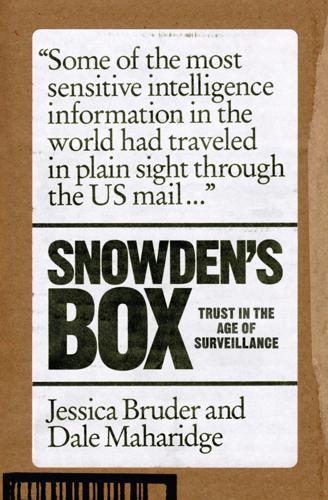
Snowden's Box: Trust in the Age of Surveillance
by
Jessica Bruder
and
Dale Maharidge
Published 29 Mar 2020
By this point, however, we’d come to feel that the focus of our book was the human relationships that shepherded Snowden’s box — rather than the material inside. So we let it go. So much had happened since the box arrived. Dale and I were driven by a desire for deeper understanding, a sense of what it all meant. As Snowden himself once put it: “Humans are by nature pattern-recognition machines. We search for meaning, whether in the circumstances of our lives or on the surface of toast.” Like Laura, we emerged from the dark tunnel of those tense years. We made peace knowing that there are questions we’ll never be able to answer. We’re only human, after all. We do what we can with the information we have.
…
p. 130 Jabber singled out in Assange indictment: Glenn Greenwald and Micah Lee, “The US Government’s Indictment of Julian Assange Poses Grave Threats to Press Freedom,” Intercept, April 11, 2019. p. 130 Micah Lee comments on Assange indictment: twitter. com/micahflee/status/1116340396643082240?lang=en. p. 130 Snowden comments on Assange indictment: twitter. com/snowden/status/1131657973745496066?lang=en. p. 131 Snowden on humans as “pattern-recognition machines”: Poitras, Astro Noise, 121. pp. 132–3 Orwell on being human: George Orwell, “In Front of Your Nose,” Tribune (London), March 22, 1946. Appendix p. 136 Signal’s 400 percent jump in downloads: Jeff John Roberts, “This Messaging App Saw a Surge after Trump’s Election,” Fortune, December 2, 2016.
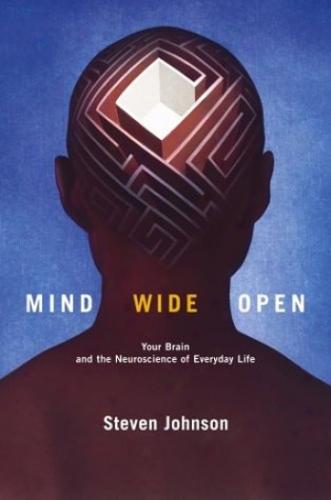
Mind Wide Open: Your Brain and the Neuroscience of Everyday Life
by
Steven Johnson
Published 2 Jan 1999
What matters are the incoming stimuli and the pattern of activity that they spark: your brain taking in a certain configuration of sensory data from the outside world (or from your imagination or your memory banks) and triggering a neurochemical reaction in your head. Pattern recognition instead of code breaking-this may be the simplest way to describe the difference between the twenty-first-century Freud and the original. The two approaches can be readily blurred together. After all, you need pattern recognition tools to break a code. But breaking a code involves a further step-translating the encoded message back into its original form. In reality, those patterns in my own head don’t conceal a secret meaning that analysis can unearth after intense scrutiny; they don’t have symbolic depth.
…
Broca’s area of frontal lobes of prefrontal lobes of Wernicke’s area of nervous system neuroanatomy neurochemicals neuroendocrinology neurofeedback technology brain wave measurement and graphic display and high-speed processing of history of interactive process of mind expansion and mode switching and popular acceptance of recreational uses of sports and therapeutic uses of training in neurology neuromap fallacy neuroprofiles neurons atrophy of communication of mirror synapses and neuropsychoanalysis neuroscience see also brain science neurotrainers neurotransmitters New Age New England Journal of Medicine New York University (NYU) nicotine Nietzsche, Friedrich nonsense norepinephrine Norretranders, Tor Notes from the Underground (Dostoyevsky) nucleus accumbens numbers, memory of nurturing instinct occipital lobe Ochsner, Kevin Oedipal complex opium poppy optical illusions optic nerve orbicularis oculi organs Othmer, Sigfried Othmer, Susan Othmer Institute overeaters Oxford Dictionary of Quotations oxycontin oxygen oxytocin bonding and stress and Pac-Man pain memories of relief of panic Panksepp, Jaak paralysis parapsychology parietal lobe Parkinson’s disease pattern recognition Pavlov, Ivan Peak Achievement Trainer peptides periaqueductal gray (PAG) personal appearance personality competing brain systems and split true two sides of unified bisocial theory of PET scans PGA tournaments pharmacology phenylethylamine philosophy phobias phonological loop photography phrenology physics physiology Pink Floyd planning play PlayStation pleasure brain circuitry for chemical fixes for drive for shivers and chills of see also drugs, recreational pleasure principle post-traumatic stress disorder prairie voles pregnancy primal scream therapy protein synthesis Proust, Marcel Provine, Robert Prozac psyche competing forces of psychiatry psychic economy psychoanalysis psychology evolutionary pop psychopharmacology psychotherapy public speaking Quake qualia quantum behavior racism radioactive material Raiders of the Lost Ark Rain Man Rand, Ayn rats Ravel, Maurice reading skills “Reading the Mind in the Eyes” test Reagan, Ronald reasoning skills reconsolidation process reductionism reflexes rejection sensitivity relaxation deep repetition compulsion repression of memories reproduction reptiles reptilian brain, see brain stem response: autonomia conditioned knee-jerk startle see also fight-or-flight response Ritalin rivalry Robbins, Jim Rodenbough, John Rosenblum, Hal rumination Sacks, Oliver sadness Sagan, Carl Salpêtrière Hospital SATs schadenfreude schizophrenics Schopenhauer, Arthur science Science Seagal, Steven Seiden, Leslie self-awareness brain science and unified widening and changing of self-doubt self-exploration self-help self-improvement self-knowledge September 11 attacks serotonin sex climactic evolution and hormones and instincts of love and in men vs. women monogamous reproduction and Shakespeare, William Sime, Wes simulation theory sincerity skin sleep deprivation smallpox smiles fake genuine love and muscular underpinnings of Smith, Patti snakes social Darwinism social skills impairment of see also mind reading Solms, Mark sound electric shock combined with fear memories of sound waves spacial skills spandrels speech intonation and listening to public spinal column spinning sports: accidents in neurofeedback and startle response Stern, Daniel stomach, nervous storms stress brain activity and hormones and job-related male vs. female responses to memory and oxytocin and physical damage of relief of triggers of stroke left-hemisphere long-term deficits of Stroop Interference Test sugar superego superstition supervisory attention control support groups surprise sweating Symons, Donald sympathy faking of Symphony in the Brain, A (Robbins) synapses neurons and strengthening of talking cure see also psychoanalysis taste Taylor, Shelley telepathy temporal lobe “Tending Instinct, The” (Taylor) testosterone thalamus auditory cortex link to visual theory of other minds therapies see also specific therapies thermodynamics thought: assessment of other people’s controlling of feeling separated from shutting off 3-D space tickling transendental meditation (TM) transference triune brain “Uncanny, The” (Freud) unconscious consciousness vs.
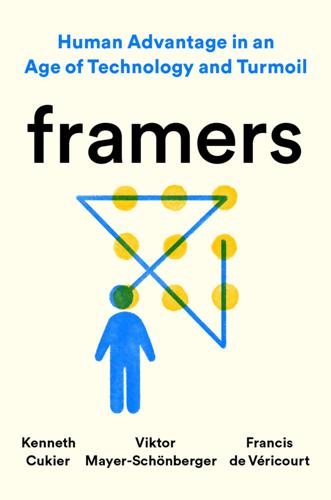
Framers: Human Advantage in an Age of Technology and Turmoil
by
Kenneth Cukier
,
Viktor Mayer-Schönberger
and
Francis de Véricourt
Published 10 May 2021
The Cognitive and the Cultural How did this crucial evolutionary advantage come about? After all, our brains are not the biggest, nor are our neurons fundamentally different from the neurons of other mammals. The answer is in our cognition, the processes of our thought. Human brains are good at recognizing patterns, especially visual ones. At its core, pattern recognition is about generalizing from the specific. The aphorism that it is vital to distinguish the forest from the trees resonates, because it is precisely what our brain does with the onslaught of visual stimuli it receives. It constructs a reality in our mind that’s beyond what our eyes can see. In the distant history of humanity, some of our ancestors must have become able to repurpose this capability to abstract from the narrow but useful domain of our senses to something bigger and more conceptual.
…
You may need to scroll forward from that location to find the corresponding reference on your e-reader. Abaaoud, Abdelhamid, 213–214 abstraction and generalization causality and, 53–54 as defining characteristics of human cognition, 211 mental models made from ability of, 54–55, 59 as necessary for ambition and transcendence, 55 pattern recognition and, 56 relationship between, 64 accountability, 64, 65–66 Adair, John, 46 Adichie, Chimamanda Ngozi, 84 agency causality and, 65 counterfactuals and, 91 explainability as foundation of, 64 framing as empowering, 27 framing as ideal for efficiently preparing for, 208–209 mental models and, 9 mutability and, 107 number of constraints and, 118, 141 privileging human inaction and, 110 responsibility and, 65–66 social structures and, 66 agility of mind, 215–218 airplanes, development of, 36–38 All Quiet on the Western Front (Remarque), 83–84 AlphaZero system, 17–18 alternative realities constraints and shaping, 100–103 contradictions in, 110–111 counterfactuals and, 12–13, 79, 82–86, 94 envisioning, and shaping future, 94–95 existence of more than one, 159 framing and envisioning, 9, 79, 90, 94 minimal-change principle and, 108 monocultures and, 186 Amazon business model, 133–134 ambition and abstraction and generalization, 55 Americanah (Adichie), 84 Ansari, Anousheh, 194 antibiotics, ineffectiveness of, 1–2 Apple framing by teams at, 164–165 inspiration for computer system, 159 leadership of, ability to frame differently, 149, 150–151 Nokia versus, 6–7 Ardern, Jacinda, 32 Arendt, Hannah, 173–174, 180–181, 197, 198 Aristotle, 84–85 Armstrong, Neil, 34 artificial intelligence (AI) cannot conjure constraints, 118 e-sports, 69–70 failure to see causality, 45 generated music, 118–119 human element in, 93, 211 hyper-rationalists’ reliance on, to solve problems, 15–16 inability of, to frame, 44, 45–46 lack of imagination, 119 as reinforcing significance of framing, 211 self-driving cars, 92–93 arts AI-generated music, 118–119 business model for music industry, 120 constraints and, 100–103, 111–113 as constructed counterfactual realities, 82–85 imagination and, 82–85 mental models and, 11 Austrian wine industry, 108–109 Bach, Johann Sebastian, 118–119 Barzilay, Regina, 2–3, 4–5, 19, 211 Bay of Pigs invasion, 89, 234 Bernanke, Ben “Helicopter Ben,” 49–51, 101 Bezos, Jeff, 134 Black-Scholes theory, 39–40 Blue Ocean Strategy, 35 Branscomb, Lewis, 161 Brin, Sergey, 194 Bronner, Gérald, 213, 214 Brunelleschi, Filippo, 11 Burt, Ronald, 157 Bush, George W., 49 business and management Amazon, 133–134 benefits of mental diversity within, 161–166, 241–242 case study method of education, 86, 87–88, 155 difficulties changing corporate culture, 170–171 mental models and, 35 monocultures and death of, 182–183 music industry model, 120 reform of traditional pedagogical method in schools, 149–150 Silicon Valley versus East Coast technology titans, 183, 185–186 “thinking outside the box,” 46 Byrne, Ruth, 90, 110 Camden, New Jersey, police force, 134–136 Cappelli, Louis, Jr., 135 carbon dioxide and climate, 74–76, 168 “carbon sinks,” 76 Carcraft, 93 Carter, Jimmy, 116 Cassandras, 167–168 Cassirer, Ernst, 25 Catmull, Ed, 167–168 “causal determinism,” 88–89 causality ability to abstract from direct observation and, 53–54 agency and, 65 AI’s failure to see, 45 children and, 80–82 coincidence and, 66–67 correlation and, 68 counterfactuals and, 77, 79, 90 enables comprehension and explainability of reality, 52, 60 as foundation of human cognition, 12 in framing, 88–90 input of humans needed for technology to outperform humans, 70 needed for application of mental models, 62 predictability with, 52 reactions resulting from, 53 as result of being part of society, 58 scientific methodology prevents wrong inferences made from, 12 skepticism about, 68 statisticians and, 68 ultra-emotionalists and, 68–69 causal reasoning, 55 Cerf, Bennett, 101–102 Charging Bull statue, 198–199 Charpentier, Emmanuelle, 137 Chollet, François, 211 Churchill, Winston, 41 “Circumstances Affecting the Heat of the Sun’s Rays” (Foote), 73–74 clean-slate strategy, 158–160, 241 climate and carbon dioxide, 74–76, 168 Coconet, 118–119 cognitive complexity, 161 “cognitive effort,” 110 “cognitive foraging,” 156–158, 160 cognitive niche, 57, 58, 59, 230 “Cognitive Wheels” (Dennett), 44–45 coincidence and causality, 66–67 Collins, Jim, 2–3 Collison, Patrick, 185 Computers as Theatre (Laurel), 85 consistency principle, 110–114 constraints agency and number of, 118, 141 application method, 120–121 application of too many, 45 as boundaries on alternative realities, 100–103 changing, 201–202 consistency of, 104, 110–114 current reality as impacted by, 117–118 enable identification of viable options, 117 goal of, 114 hard, described, 104 imagination and, 47, 220 importance to counterfactuals of, 13, 115 increase agency, 118 as liberating, 100–103 minimal, 104 minimal-change principle and, 108–110 mutability of, 104–107, 110 space exploration and, 105 technology cannot conjure, 118 control, 64, 65–66 Cook, Tim, 151 Cooper, Sarah, 201–202 correlation and causality, 68 counterfactuals agency and, 91 alternative realities and, 12–13, 79, 82–86, 94 causality and, 77, 79, 90 causal link between carbon dioxide and climate and, 74–75 children and, 80–82 cognitive homogeneity as death of, 207 as counterbalance to “causal determinism,” 88–89 as crucial to progress by enabling what-if questions, 12–13 described, 12 in education, 86–88 finding relevant, 45 focused and goal-oriented nature of, 76 as form of evolution, 93–94 functionality of, 94 imagination and, 76, 79, 90 implicit knowledge and, 90–91 literature and art, 82–85 minimal-change principle and, 109–110 mutable constraints and, 106 omitting versus adding mutable action and, 110 thinking in, as natural for humans, 77 Coupland, Douglas, 112 Covid-19, framing of, 31–33 Craik, Kenneth, 226 creativity.
…
Chan, 35 King, Martin Luther, Jr., 41 Kleiner, Eugene, 42 Kodak, 182 Kuhn, Thomas, 10 Langdell, Christopher Columbus, 86–87 Langley, Samuel, 37 language, grammatical, 57, 58 Lanier, Jaron, 112 “latticework of models,” 129 Laurel, Brenda, 85 learning and explainability, 63–64 learning as disruptive, 152–154 “Lego Ideas,” 165–166 Leopold the Pious, 169 Lilienthal, Otto, 36 Lister, Joseph, 61–62 Lo, Andrew, 130 “local optimum,” 166–167, 243 Lombrozo, Tania, 63–64 Lysenko, Trofim, and Lysenkoism, 7 MacGyver (television program), 91 Mandžukić, Mario, 77–78 maps, 27–28 Mauborgne, Renée, 35 McCarthy, John, 44 McDowell, Alex, 114 Meitner, Lise, 133 mental diversity advantages of, when identifying solutions, 166–167, 176 broadening range of frames, 155–156, 160–161, 241 business monocultures and, 183 clean-slate strategy for increasing, 158–160, 241 “cognitive foraging” for increasing, 156–158, 160 conceptual leaps necessary for, 152–153 friction resulting from, 194–195 ideological silos and, 207 importance of, when reframing, 162–163 as mind-set, not method, 151–154 within organizations, 161–166, 241–242 Podolny and, 150–151 rise and fall of social structures and, 183–185 social structure’s belief in validity of dominant mental model and, 179 variation not volume as important, 154 mental models art and, 11 banning certain, 186–187 broadness of, and ability to work in different circumstances, 144–146 building real models to support, 115–117 business and management and, 35 causal, from ability to abstract from direct observation and, 54–55, 59 choosing new, 40–44 coexistence of competing, 198–199 coexistence of new and old, 134 cognitive dexterity necessary to entertain many different, 168 convincing causal explanations needed for application of, 62 dangers of exclusion of alternative, 179–182 defined, 226 efficiency of choosing, 153, 208–209 emotionalists and, 69 employed affect options, 5 end of history and liberal, market democracy as only, 181–182 everyday use of, 9, 25 explainability as essential to success of, 62 for financial crisis of 2008, 50–51 flawed causal, 66–67 as foundation of human cognition, 5, 25, 26, 208 hard constraints and, 104 harnessing, 139–140, 219 historical, for financial markets, 50 importance of diversity of, when reframing, 162–163 invention of new, 7–8 keep world manageable and thus actionable, 9 learning enabled by, 64 maps as physical representations of, 27–28 as means of finding solutions, 4–5, 8, 38–39 need for diversity of, 151–152, 186 nine-dot test and, 46 as operationalizing values, 39 other terms for, 25 pluralism as flourishing of many clashing, 177–178 pluralism of, versus uniformity of, 14–15 poor, 6–7, 60–61, 178–179, 186 reapplication of same successful, 127, 179, 207 reduce cognitive load by focusing mind, 11–12 as shaping worldview, 39–40 single, as truth, 179 social structure’s belief in validity of dominant, 179 space exploration and, 33–35 technology’s need for human input of causal, to outperform humans, 70 as templates for human cognition, 11 tendency toward homophily and, 89, 162, 234 tension between, 160–161 use and validation of, 40 Messner, Reinhold, 123–126, 127 metaphors, importance of, 57 MeToo movement, 24 migration and mobility, 191–194 Milano, Alyssa, 23–24 minimal-change principle, 108–110 Minority Report (film), 111–114 misframing, 6–7, 10, 30–31 Mokyr, Joel, 183–184 monocultures, 179–183 monolithic thinking, 20, 180 Monument Valley, 85–86 moon landing, 33–34 Morris, Jan (formerly James), 160 Mosia, Nthabiseng, 203–204 mountain climbing, 123–126, 127 Mount Everest, 123–126, 127 Munger, Charlie, 129 Murdoch, Rupert, 194 Musk, Elon, 105–106, 194 mutability, 104–107, 110 mutilated checkerboard problem, 152–153 Nadella, Satya, 194 Neptune, prediction of existence of, 35 Netanyahu, Jonathan “Yoni,” 100 Newton, 7–8, 78, 131 New York Times, 34, 170–171 Nie Yunchen, 202–203 nine-dot test, 46, 47 Nix, Kevin, 189 Nokia versus Apple, 6–7 Norgay, Tenzing, 123 Norway, 163 Occam’s razor, 108 Ono, Koichi, 65 OpenAI, 70 options AI’s failure to conjure restraints creates too many, 118 constraints enable identification of viable, 117 counterfactuals and, 90 framing as ideal for efficiently identifying valuable, 208 mental models employed affect, 5 reframing provides new, 126 “Our World in Data” project, 19 Page, Scott, 166–167, 243 paradigm shifts, 10–11 “paradox of tolerance,” 178, 244 Parker, Robert, 109 Pasteur, Louis, 61 pattern recognition, 56 Pauling, Linus, 132 Pearl, Judea, 68 Perec, Georges, 103, 236 Perfume (Süskind), 83 Piaget, Jean, 80 Pichai, Sundar, 194 Pinker, Steven, 56, 57 Plato, 77 play, 80–82 pluralism banning certain mental models, 186–187 benefits of, 176 Chinese versus European societies, 183–185 coexistence of competing mental models, 198–199 cultural diversity and, 193 debate in “public sphere,” 195–197 in economic and political spheres, 176–177 education and childhood socialization to foster, 190–191 embracing variation to foster, 188–190 expansion and restriction of, 173–176 flourishing of multiplicity of clashing mental models, 177–178 as fostering and celebrating differences, 14–15 friction resulting from, 194–195 goal of, 186 importance of, 151–152, 179–181, 186 as means to end, 177 migration and mobility to foster, 191–194 as necessary for societal survival, 177–178 reapplication of same mental models and, 179 social pressure to censor and, 186 versus uniformity of mental models, 14–15 as unnatural state for humans, 187–188 Podolny, Joel, 149–151, 164–165 Poetics (Aristotle), 84–85 Popper, Karl, 178, 244 Porat, Ruth, 194 possibilities.

Rule of the Robots: How Artificial Intelligence Will Transform Everything
by
Martin Ford
Published 13 Sep 2021
In the late 1950s, Frank Rosenblatt, a psychologist at Cornell University, conceived the “perceptron,” an electronic device that operated on principles similar to those of biological neurons in the brain. Rosenblatt showed that simple networks made up of perceptrons could be trained to perform basic pattern recognition tasks, such as deciphering images of numerical digits. Rosenblatt’s initial work on neural networks generated enthusiasm, but as significant progress failed to materialize, the technique was eventually pushed aside by other approaches. Only a small group of researchers, including especially the three winners of the 2018 Turing Award, continued to focus on neural networks.
…
In the 1940s, Warren McCulloch and Walter Pitts introduced the idea of an artificial neural network as a kind of computational approximation for the way the biological neurons in the brain operated.6 Frank Rosenblatt, who was trained as a psychologist and lectured in the psychology department at Cornell, later incorporated these ideas into his perceptron. The perceptron was capable of rudimentary pattern recognition tasks like recognizing printed characters via a camera that was attached to the device. The inventor and author Ray Kurzweil, who is now an engineering director at Google, met Rosenblatt in his lab at Cornell in 1962. Kurzweil told me that he brought samples to try out on the perceptron and that the machine worked perfectly as long as the characters were printed clearly in the proper font.
…
In January 2018, for example, software created by a collaboration between Microsoft and the Chinese tech giant Alibaba was able to slightly outperform the human average on a reading comprehension test created by researchers at Stanford University.48 The Stanford test presents questions based on Wikipedia articles, in which the correct answer consists of a span of text drawn directly from the article “read” by the AI system. In other words, what we’re seeing is a demonstration not of true comprehension, but rather of information extraction and pattern recognition—something that, as we’ve seen, deep learning systems are extraordinarily good at. When the questions require any degree of common sense reasoning or reliance on implicit knowledge of the world, performance on such tests falls off dramatically. One of the best ways to understand the struggle that AI systems have with common sense is to look at specially formatted sentences known as Winograd schemas.

Radical Technologies: The Design of Everyday Life
by
Adam Greenfield
Published 29 May 2017
They’re looking for something that might help them master the combinatorial explosion of possibility on a planet where nine billion people are continually knitting their own world-lines; for just a little reassurance, in a world populated by so many conscious actors that it often feels like it’s spinning out of anyone’s control. These are impulses I think most of us can relate to, and intuitively react to with some sympathy. And it’s this class of desires that I think we should keep in mind as we explore the mechanics of machine learning, automated pattern recognition and decision-making. For all the arrogance, the reductionism and the more than occasional wrongheadedness that crop up in this development effort, I believe it is founded in a set of responses to the world that most all of us have experienced at one time or another. If nothing else, to consider automation with any seriousness is to be presented with a long, poignant and richly elaborated index of our deepest longings and fears.
…
What we will be left with is a picture of ourselves, a diagram of all the ways in which we’ve chosen to allocate power, and an unforgiving map of the consequences. Whether we will ever summon the courage to confront those consequences with integrity is something that no algorithm can decide. What happens when pattern-recognition systems disclose uncomfortable truths to us, or at least uncomfortable facts? We hardly lack familiarity with the conscious introduction of uncomfortable facts into public debate. Self-delighted pop contrarians like Malcolm Gladwell and the Freakonomics team of Steven D. Levitt and Stephen J.
…
It can travel over any network, reside in and activate any processing system set up to parse it. We may joke, uneasily, about the lack of foresight implicit in teaching a global mesh of adaptive machines the highly lethal skills of a master swordsman. But it also points toward a time when just about any human skill can be mined for its implicit rules and redefined as an exercise in pattern recognition and reproduction, even those seemingly most dependent on soulful improvisation. One final thought. We’re already past having to reckon with what happens when machines replicate the signature moves of human mastery, whether the strokes of Rembrandt’s brush or those of Machii’s sword. What we now confront is the possibility of machines transcending our definitions of mastery, pushing outward into an enormously expanded envelope of performance.
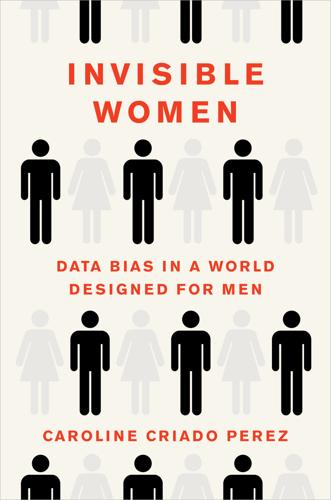
Invisible Women
by
Caroline Criado Perez
Published 12 Mar 2019
‘We did talk to some VC investors who didn’t believe [Elvie] was an interesting proposition,’ she tells me. The other problem women face when it comes to getting investment is ‘pattern recognition’.13 A corollary of ‘culture fit’, pattern recognition sounds data-driven, but it’s basically just a fancy term for looks-similar-to-something-that-has-worked-in-the-past – where ‘something’ could be white-male-founder-who-dropped-out-of-Harvard-and-wears-hoodies. Genuinely: I dated a guy who was working on a start-up and he referenced this uniform when he was talking about getting funding. Hoody-based pattern recognition is real. And this emphasis on recognising a typically male pattern may be exacerbated by the common belief that tech is a field where inborn ‘genius’ (which, as we’ve seen, is stereotypically associated with men14) is more important than working hard (hence fetishising Harvard dropouts).
…
Australia gender pay gap gendered poverty Gillard ministries (2010–13) homelessness leisure time maternity. leave medical research military murders paternity. leave political representation precarious work school textbooks sexual assault/harassment taxation time-use surveys unpaid work Australia Institute Austria autism auto-plastics factories Autoblog autoimmune diseases automotive plastics workplaces Ayrton, Hertha Azerbaijan babies’ cries baby bottles Baker, Colin Baku, Azerbaijan Ball, James Bangladesh Bank of England banknotes Barbican, London Barcelona, Catalonia beauticians de Beauvoir, Simone Beer, Anna Beijing, China Belgium Berkman Center for Internet and Society Besant, Annie BI Norwegian Business School bicarbonate of soda Big Data bile acid composition biomarkers biomass fuels biomechanics Birka warrior Birmingham, West Midlands bisphenol A (BPA) ‘bitch’ bladder ‘Blank Space’ (Swift) blind recruitment blood pressure Bloom, Rachel Bloomberg News Bock, Laszlo body fat body sway Bodyform Boesel, Whitney Erin Boler, Tania Bolivia Boosey, Leslie Boserup, Ester Bosnia Boston Consulting Group Botswana Bouattia, Malia Boulanger, Béatrice Bourdieu, Pierre Bovasso, Dawn Boxing Day tsunami (2004) boyd, danah brain ischaemia Brazil breasts cancer feeding and lifting techniques pumps reduction surgery and seat belts and tactile situation awareness system (TSAS) and uniforms Bretherton, Joanne Brexit Bricks, New Orleans brilliance bias Brin, Sergey British Electoral Survey British Journal of Pharmacology British Medical Journal British Medical Research Council British National Corpus (BNC) Broadly Brophy, Jim and Margaret Buick Bulgaria Burgon, Richard Bush, Stephen Buvinic, Mayra BuzzFeed Cabinet caesarean sections Cairns, Alex California, United States Callanan, Martin Callou, Ada Calma, Justine calorie burning Cambridge Analytica Cameron, David Campbell Soup Canada banknotes chemical exposure childcare crime homelessness medical research professor evaluations sexual assault/harassment toilets unpaid work Canadian Centre for Policy Alternatives (CCPA) Canadian Institutes of Health cancer canon formation Cape Town, South A.ica carcinogens cardiac resynchronisation therapy devices (CRT-Ds) cardiovascular system care work and agriculture elderly people and employment gross domestic product (GDP) occupational health and paternity leave time-use surveys and transport and zoning Carnegie Mellon University carpenters cars access to crashes driving tests motion sickness navigation systems Castillejo, Clare catcalling Cavalli, Francesco cave paintings CCTV Ceccato, Vania cell studies Center for American Progress Center for Economic and Social Rights (CESR) Center for Talent Innovation Central Asia Centre of Better Births, Liverpool Women’s Hospital chemicals Chiaro Chicago, Illinois chief executive officers (CEO) child benefit child marriage childbirth childcare and agriculture cost of and employment and gross domestic product (GDP) and paternity leave time-use surveys and zoning children’s television China cholera Chopin, Frédéric Chou, Tracy chromosomes chronic illness/pain Chronic Pain Policy Coalition chulhas Cikara, Mina circadian rhythms Citadel classical music clean stoves cleaning climate change Clinton, Hillary clitoridectomies Clue coal mining coastguards Collett Beverly colon cancer Columbia University competence vs warmth composers Composers’ Guild of Great Britain computer science confirmation bias confounding factors Congo, Democratic Republic of the Connecticut, United States Conservative Party construction work contraception contractions cooking cookstoves Corbusier, Le Cornell University coronary stents Corpus of Contemporary American English (COCA) corrective rape cosmetology Cosmopolitan Cotton, Dany Coyle, Diane crash test dummies Crazy Ex-Girlfriend Crewe, Emma Crick, Francis Crime Prevention and Community Safety crime crime scene investigators Croatia crochet Crockety, Molly CurrMIT CVs (curriculum vitaes) Czech Republic daddy quotas Daly, Caroline Louisa Data2x Davis-Blake, Alison Davis, Wendy Davison, Peter defibrillators deforestation Delhi, India dementia Democratic Party Democratic Republic of the Congo Democratic United Party dengue fever Denmark dental devices Department for Work and Pensions depression diabetes diarrhoea diet diethylstilbestrol (DES) disabled people disasters Ditum, Sarah diversity-valuing behavior DNA (deoxyribonucleic acid) Do Babies Matter (Goulden, Mason, and Wolfinger) Doctor Who domestic violence Donison, Christopher Doss, Cheryl ‘draw a scientist’ driving dry sex Dyas-Elliott, Roger dysmenorrhea E3 Eagle, Angela early childhood education (ECE) Ebola economics Economist, The Edexcel education Edwards, Katherine Einstein, Albert elderly people Eliot, George Elks lodges Elvie emoji employment gender pay gap occupational health parental leave precarious work sexual assault/harassment and unpaid work ‘End of Theory, The’ (Anderson) endocrine disrupting chemicals (EDCs) Endocrine Society endometriosis endovascular occlusion devices England national football English language ENIAC (Electronic Numerical Integrator and Computer) Enlightenment entrepreneurs epilepsy Equal Times Equality Act (2010) erectile dysfunction Estonian language Ethiopia EuroNCAP European Parliament European Union academia bisphenol A (BPA) chronic illnesses crash test dummies employment gap endocrine disrupting chemicals (EDCs) gender-inflected languages life expectancy medical research parental leave precarious work sexual harassment taxation transport planning Evernote EverydaySexism evolution exercise extension services Facebook facial wrinkle correction fall-detection devices Fallout Family and Medical Leave Act (1993) farming Fawcett Society Fawlty Towers female Viagra feminism Feminist Frequency films Financial crash (2008) Finland Finnbogadóttir, Vigdís Finnish language firefighters first past the post (FPTP) First World War (1914–18) Fiske, Susan Fitbit fitness devices flexible working Folbre, Nancy Food and Agriculture Organization (FAO) Food and Drug Administration (FDA) football forced marriage Ford Fordham, Maureen fragile states France Franklin, Rosalind Frauen-Werk-Stadt free weights Freeman, Hadley French language Freud, Sigmund From Poverty to Power (Green) funeral rites FX gaming GapJumpers Gates Foundation Gates, Melinda gathering Geffen, David gender gender data gap academia agriculture algorithms American Civil War (1861–5) brilliance bias common sense crime Data2x female body historical image datasets innovation male universality medical research motion sickness occupational health political representation pregnancy self-report bias sexual assault/harassment smartphones speech-recognition technology stoves taxation transport planning unpaid work warmth vs competence Gender Equality Act (1976) Gender Global Practice gender pay gap gender-fair forms gender-inflected languages gendered poverty genderless languages Gendersite General Accounting Office generic masculine genius geometry Georgetown University German language German Society of Epidemiology Germany academia gender pay gap gender-inflected language Landesamt für Flüchtlingsangelegenheiten (LAF) medical research precarious work refugee camps school textbooks unpaid work Gezi Park protests (2013) Ghana gig economy Gild Gillard, Julia GitHub Glencore Global Alliance for Clean Cookstoves Global Gender Gap Index Global Media Monitoring Project Golden Globes Google artificial intelligence (AI) childcare Images maternity leave News Nexus petabytes pregnancy parking promotions search engine speech-recognition software Translate Gosling, Ryan Gothenburg, Sweden Gove, Michael Government Accounting Office (GAO) Great Depression (1929–39) Greece Green, Duncan Greenberg, Jon groping gross domestic product (GDP) Grown, Caren Guardian Gujarat earthquake (2001) Gulf War (1990–91) gyms H1N1 virus Hackers (Levy) hand size/strength handbags handprints haptic jackets Harman, Harriet Harris, Kamala Harvard University hate crimes/incidents Hawking, Stephen Haynes, Natalie Hayward, Sarah Hazards Health and Safety at Work Act (1974) Health and Safety Executive (HSE) health-monitoring systems healthcare/medicine Hearst heart attacks disease medication rhythm abnormalities surgery Heat St Heinrich Böll Foundation Helldén, Daniel Henderson, David Henry Higgins effect Henry VIII, King of England Hensel, Fanny hepatitis Hern, Alex high-efficiency cookstoves (HECs) Higher Education Statistics Agency Himmelweit, Sue hip belts history Hodgkin’s disease Holdcrofity, Anita Hollaback ‘Hollywood heart attack’ Homeless Period, The homelessness hopper fare Hopper, Grace hormones House of Commons Household Income Labour Dynamics of Australia Survey housekeeping work Howard, Todd human immunodeficiency virus (HIV) Human Rights Act (1998) Human Rights Watch human–computer interaction Hungary hunter-gatherer societies Huntingdon, Agnes Hurricane Andrew (1992) Hurricane Katrina (2005) Hurricane Maria (2017) hyperbolic geometry hysterectomies hysteria I Am Not Your Negro Iceland identity Idomeni camp, Greece Illinois, United States images immune system Imperial College London Inc Income of Nations, The (Studenski) indecent exposure Independent India Boxing Day tsunami (2004) gendered poverty gross domestic product (GDP) Gujarat earthquake (2001) political representation sexual assault/harassment stoves taxation toilets unpaid work Indian Ocean tsunami (2004) Industrial Revolution (c. 1760–1840) influenza Inmujeres innovation Institute for Fiscal Studies Institute for Women’s Policy Research Institute of Medicine Institute of Women’s Policy Research (IWPR) institutionalised rape Insurance Institute for Highway Safety Inter-agency Working Group on Reproductive Health in Crises Inter-Parliamentary Union’s (IPU) Internal Revenue Service (IRS) International Agency Research on Cancer International Conference on Intelligent Data Engineering and Automated Learning International Council of Nurses International Encyclopaedia of Women Composers International Labour Organization (ILO) International Monetary Fund (IMF) International Peace Institute International Trade Union Confederation (ITUC) interrupting intestinal enzymes iPhone Ireland IRIN irritable bowel syndrome Islamic State of Iraq and al-Sham (ISIS) isometric exercises Israel Italy Jackson, Henry Japan Jenkins, Simon Jepson, Peter job interviews job vacancies Jones, Anna Jones, Brigid Juárez, Victoria ‘just in time’ scheduling so.ware Kail, Eva Karlskoga, Sweden Karnataka Household Asset Survey Katebe, Uganda Keecoo K1 Kelly, Paul Kenya Khayelitsha, South Africa kidneys kinesiology Knausgaard, Karl Ove Knope, Leslie Koofi, Fawzia Korea Kronos Kuznets, Simon Labour Party Lammy, David Lancet Lancet Planetary Health Landesamt für Flüchtlingsangelegenheiten (LAF) language Latin America Latvia Lau, Tessa Lauer, Matt Lawrence, David Lean In (Sandberg) Lebanon Legro, Richard Leicester, Leicestershire leisure time lesbians Lesotho lethal violence Levy, Steven Lewis, Brandon Leyster, Judith Liberal Democrats Liberia libertarianism life expectancy Life of Pi Lilla, Mark Lim, Angelica Limpsfield Grange, Surrey Lin Qing Linder, Astrid literacy literature Littman, Ellen liver failure Liverpool, Merseyside lobotomies Local Government Act (1972) London, England Fire Brigade general election (2017) precarious work sexual assault/harassment transportation London School of Economics (LSE) London Review of Books Long Friday long-hours culture longevity Los Angeles Times Los Angeles, California Loughborough University Louisiana, United States Loukaitou-Sideris, Anastasia lubricant lung capacity lung diseases Macedonia Mackinnon, Catherine Maconchy, Elizabeth Made by Many Madrid, Spain malaria Malawi male universality Malmö, Sweden Malta mammary carcinogens ‘Man the Hunter’ Manchester University Martínez-Román, Adi Martino, Tami Marvel Comics maternal mortality maternity leave mathematics Mazarra, Glen McCabe, Jesse McCain, John McGill University McKinsey McLean, Charlene Medela medicine/healthcare Medline Memorial University Mendelssohn, Felix Mendes, Eva Mendoza-Denton, Rodolfo menopause menstruation mental health meritocracy Messing, Karen meta gender data gap MeToo movement Metroid mewar angithi (MA) Mexico Miami, Florida mice Microsoft migraines military Milito, Beth Miller, Maria Minassian, Alek Minha Casa, Minha Vida miscarriages Mismeasure of Woman, The (Tavris) misogyny Mitchell, Margaret Mogil, Jeffrey Mongolia Montreal University Morgan, Thomas Hunt morphine motion parallax motion sickness Motorola multiple myeloma Mumbai, India murders Murray, Andrew muscle music My Fair Lady myometrial blood ‘Myth’ (Rukeyser) nail salons Naipaul, Vidiadhar Surajprasad naive realism National Aeronautics and Space Administration (NASA) National Autistic Society National Democratic Institute National Health Service (NHS) National Highway Traffic Safety Administration (NHTSA) National Institute for Health and Case Excellence (NICE) National Institute of Health Revitalization Act (1993) National Institutes of Health (NIH) National Union of Students (NUS) natural gender languages Nature Navarro, Jannette Naya Health Inc Nea Kavala camp, Greece Neitzert, Eva Neolithic era Netflix Netherlands neutrophils New Jersey, United States New Orleans, Louisiana New Statesman New York, United States New York Committee for Occupational Safety & Health (NYCOSH) New York Philharmonic Orchestra New York Times New Yorker New Zealand Newham, London Nigeria Nightingale, Florence Nobel Prize nomunication Norris, Colleen Norway Nottingham, Nottinghamshire nurses Nüsslein-Volhard, Christiane O’Neil, Cathy O’Neill, Rory Obama, Barack Occupational Health and Safety Administration occupational health Oedipus oestradiol oestrogen office temperature Olympic Games Omron On the Generation of Animals (Aristotle) orchestras Organisation for Economic Cooperation and Development (OECD) Organisation for the Study of Sex Differences Orissa, India osteopenia osteoporosis ovarian cancer Oxfam Oxford English Dictionaries Oxford University oxytocin pacemakers pain sensitivity pairing Pakistan Pandey, Avanindra paracetamol parental leave Paris, France Parkinson’s disease parks passive tracking apps paternity leave patronage networks pattern recognition Payne-Gaposchkin, Cecilia peace talks pelvic floor pelvic inflammatory disease pelvic stress fractures pensions performance evaluations periods Persian language personal protective equipment (PPE) Peru petabytes Pew Research Center phantom-limb syndrome phenylpropanolamine Philadelphia, Pennsylvania Philippines phobias phthalates Physiological Society pianos Plato plough hypothesis poetry Poland police polio political representation Politifact Pollitzer, Elizabeth Portland, Oregon Portugal post-natal depression post-traumatic stress disorder (PTSD) poverty Powell, Colin PR2 Prada prams precarious work pregnancy Pregnant Workers Directive (1992) premenstrual syndrome (PMS) primary percutaneous coronary interventions (PPCI) Prinz-Brandenburg, Claudia progesterone projection bias prolapse promotions proportional representation (PR) Prospect Union Prospect Public Monuments and Sculptures Association public sector equality duty (PSED) public transport Puerto Rico purchasing authority ‘quantified self’ community Quebec, Canada QuiVr radiation Rajasthan, India rape RateMyProfessors.com recruitment Red Tape Challenge ‘Redistribution of Sex, The’ Reference Man Reformation refugees Renaissance repetitive strain injury (RSI) Representation of the People Act (1832) Republican Party Resebo, Christian Reykjavik, Iceland Rhode Island, United States Rio de Janeiro, Brazil risk-prediction models road building Road Safety on Five Continents Conference Roberts, David Robertson, Adi robots Rochdale, Manchester Rochon Ford, Anne Rudd, Kevin Rukeyser, Muriel Russian Federation Rwanda Sacks-Jones, Katharine Saenuri Party Safecity SafetyLit Foundation Sánchez de Madariaga, Inés Sandberg, Sheryl Sanders, Bernard Santos, Cristine Schalk, Tom Schenker, Jonathan Schiebinger, Londa School of Oriental and African Studies (SOAS) school textbooks Schumann, Clara science, technology, engineering and maths (STEM) Scientific American scientists Scotland Scythians ‘sea of dudes’ problem Seacole, Mary seat belts Second World War (1939.45) self-report bias September 11 attacks (2001) Serbia Sessions, Jefferson severe acute respiratory syndrome (SARS) sex Sex Discrimination Act (1975) sex robots sex-disaggregated data agriculture chemical exposure conflict employment fall-detection devices fitness devices gendered poverty medical research precarious work smartphones taxation transport urban design virtual reality voice recognition working hours sexual violence/harassment shape-from-shading Sherriff, Paula Shield, The shifting agriculture Sierra Leone sildenafil citrate Silicon Valley Silver, Nate Singh, Jyoti single parents single-member districts (SMD) Siri Skåne County, Sweden skeletons skin Slate Slocum, Sally Slovenia smartphones snow clearing social capital social data Social Democratic Party (SDP) social power socialisation Solna, Sweden Solnit, Rebecca Somalia Sony Ericsson Sounds and Sweet Airs (Beer) South Africa South Korea Soviet Union (1922–91) Spain Spanish language Speak with a Geek speech-recognition technology Sphinx sports Sprout Pharmaceuticals Sri Lanka St Mark’s, Venice St Vincent & the Grenadines stab vests Stack Overflow Stanford University staple crops Star Wars Starbucks Starkey, David statins statues stem cells Stevens, Nettie Stockholm, Sweden Stoffregen, Tom stoves Streisand, Barbra streptococcal toxic shock syndrome stress strokes Strozzi, Barbara Studenski, Paul Sulpicia Supreme Court Sweden Birka warrior car crashes councils crime depression gender pay gap heart attacks murders paternity leave political representation refugee camps snow clearing sports taxation unpaid work youth urban regeneration Swedish National Road and Transport Research Institute Swift, Taylor swine flu Swinson, Joanne Kate ‘Jo’ Switzerland Syria Systran tactile situation awareness system (TSAS) Taimina, Daina Taiwan Tate, Angela Tatman, Rachael Tavris, Carol taxation teaching evaluations Teaching Excellence Framework (TEF) tear gas tech industry television temperature Temperature Temporary Assistance to Needy Families tennis tenure-track system text corpora thalidomide ThinkProgress Thor three-stone fires time poverty time-use surveys TIMIT corpus Tin, Ida toilets Toksvig, Sandi tools Toronto, Ontario Tottenham, London Toyota Trades Union Congress (TUC) tradition transit captives transportation treadmills trip-chaining troponin Trump, Donald tuberculosis (TB) Tudor period (1485–1603) Tufekci, Zeynep Turkey Twitter Uberpool Uganda Ukraine ulcerative colitis Ulrich, Laurel Thatcher Umeå, Sweden Understanding Girls with ADHD (Littman) unemployment unencumbered people Unicode Consortium Unison United Association of Civil Guards United Kingdom academia austerity autism banknotes breast pumps Brexit (2016–) Fire Brigade caesarean sections children’s centres chronic illness/pain coastguards councils employment gap endometriosis Equality Act (2010) flexible working gender pay gap gendered poverty general elections generic masculine gross domestic product (GDP) heart attacks homelessness Human Rights Act (1998) leisure time maternity leave medical research military murders music nail salons occupational health paternity leave pedestrians pensions personal protective equipment (PPE) police political representation precarious work public sector equality duty (PSED) Representation of the People Act (1832) scientists Sex Discrimination Act (1975) sexual assault/harassment single parents statues stress taxation toilets transportation trip-chaining universities unpaid work Yarl’s Wood Detention Centre United Nations Children’s Fund (UNICEF) Commission on the Status of Women Data2x Economic Commission for Africa Food and Agriculture Organization (FAO) homicide survey Human Development Report and peace talks Population Fund Security Council Resolution 1325 (2000) and stoves and Switzerland and toilets and unpaid childcare Women’s Year World Conference on Women United States academia Affordable Care Act (2010) Agency for International Development (USAID) Alzheimer’s disease banknotes bisphenol A (BPA) breast pumps brilliance bias Bureau of Labor Statistics car crashes chief executive officers (CEO) childbirth, death in Civil War (1861–5) construction work councils crime early childhood education (ECE) employment gap endocrine disrupting chemicals (EDCs) endometriosis farming flexible working gender pay gap gendered poverty generic masculine Great Depression (1929–39) gross domestic product (GDP) healthcare heart attacks Hurricane Andrew (1992) Hurricane Katrina (2005) Hurricane Maria (2017) immigration detention facilities job interviews ‘just in time’ scheduling so.ware leisure time maternity leave medical research meritocracy military mortality rates murders nail salons National Institute of Health Revitalization Act (1993) occupational health personal protective equipment (PPE) political representation precarious work presidential election (2016) school textbooks September 11 attacks (2001) sexual assault/harassment single parents soccer team Supreme Court taxation tech industry toilets transportation Trump administration (2017–) universities unpaid work universal credit (UC) universality universities University and College Union University of California, Berkeley University of California, Los Angeles (UCLA) University of Chicago University of Liverpool University of London University of Manchester University of Michigan University of Minnesota University of North Carolina University of Stirling University of Sussex University of Washington University of York unpaid work agriculture and algorithms and gross domestic product (GDP) and occupational health and stoves and transport in workplace and zoning upper body strength upskirting urinals urinary-tract infections urination uro-gynaecological problems uterine failure uterine tybroids Uttar Pradesh, India Uzbekistan vaccines vagina Valium Valkrie value-added tax (VAT) Van Gulik, Gauri Venice, Italy venture capitalists (VCs) Veríssimo, Antônio Augusto Viagra Victoria, Queen of the United Kingdom video games Vienna, Austria Vietnam Vikings Villacorta, Pilar violence virtual reality (VR) voice recognition Volvo voting rights Vox voyeurism Wade, Virginia Walker, Phillip walking wallet to purse Walmart warfare warmth vs competence Warsaw Pact Washington Post Washington Times Washington, DC, United States WASHplus WaterAid Watson, James We Will Rebuild weak contractions Weapons of Math Destruction (O’Neil) West Bengal, India whiplash Wiberg-Itzel, Eva Wikipedia Wild, Sarah Williams, Gayna Williams, Serena Williams, Venus Williamson, £eresa Willow Garage Wimbledon Windsor, Ontario Winter, Jessica Wired Wolf of Wall Street, The Wolfers, Justin Wolfinger, Nicholas ‘Woman the Gatherer’ (Slocum) Women and Equalities Committee Women Will Rebuild Women’s Budget Group (WBG) Women’s Design Service Women’s Engineering Society Women’s Refugee Commission Women’s Year Woolf, Virginia workplace safety World Bank World Cancer Research Fund World Cup World Economic Forum (WEF) World Health Organization (WHO) World Meteorological Organisation worm infections Woskow, Debbie Wray, Susan Wyden, Robert XY cells Y chromosome Yale University Yarl’s Wood Detention Centre, Bedford Yatskar, Mark Yemen Yentl syndrome Yezidis Youth Vote, The youthquake Zambia zero-hour contracts Zika zipper quotas zombie stats zoning Zou, James Photo by Rachel Louise Brown CAROLINE CRIADO PEREZ is a writer, broadcaster, and feminist activist and was named Liberty Human Rights Campaigner of the Year and OBE by the Queen.

Nexus: A Brief History of Information Networks From the Stone Age to AI
by
Yuval Noah Harari
Published 9 Sep 2024
Even if no mistakes are committed, the algorithms’ superhuman ability to recognize patterns in an ocean of data can supercharge the power of numerous malign actors, from repressive dictatorships that seek to identify dissidents to fraudsters who seek to identify vulnerable targets. Of course, pattern recognition also has enormous positive potential. Algorithms can help identify corrupt government officials, white-collar criminals, and tax-evading corporations. The algorithms can similarly help flesh-and-blood sanitation officials to spot threats to our drinking water;12 help doctors to discern illnesses and burgeoning epidemics;13 and help police officers and social workers to identify abused spouses and children.14 In the following pages, I dedicate relatively little attention to the positive potential of algorithmic bureaucracies, because the entrepreneurs leading the AI revolution already bombard the public with enough rosy predictions about them.
…
The algorithms can similarly help flesh-and-blood sanitation officials to spot threats to our drinking water;12 help doctors to discern illnesses and burgeoning epidemics;13 and help police officers and social workers to identify abused spouses and children.14 In the following pages, I dedicate relatively little attention to the positive potential of algorithmic bureaucracies, because the entrepreneurs leading the AI revolution already bombard the public with enough rosy predictions about them. My goal here is to balance these utopian visions by focusing on the more sinister potential of algorithmic pattern recognition. Hopefully, we can harness the positive potential of algorithms while regulating their destructive capacities. But to do so, we must first appreciate the fundamental difference between the new digital bureaucrats and their flesh-and-blood predecessors. Inorganic bureaucrats can be “on” twenty-four hours a day and can monitor us and interact with us anywhere, anytime.
…
Similarly, to judge by their pay, you could assume that our society appreciates doctors more than nurses. However, it is harder to automate the job of nurses than the job of at least those doctors who mostly gather medical data, provide a diagnosis, and recommend treatment. These tasks are essentially pattern recognition, and spotting patterns in data is one thing AI does better than humans. In contrast, AI is far from having the skills necessary to automate nursing tasks such as replacing bandages on an injured person or giving an injection to a crying child.10 These two examples don’t mean that dish washing or nursing could never be automated, but they indicate that people who want a job in 2050 should perhaps invest in their motor and social skills as much as in their intellect.

The Singularity Is Nearer: When We Merge with AI
by
Ray Kurzweil
Published 25 Jun 2024
These steps (except for the last one) are detailed below: The Problem Input The problem input to the neural net consists of a series of numbers. This input can be: in a visual pattern recognition system, a two-dimensional array of numbers representing the pixels of an image; or in an auditory (e.g., speech) recognition system, a two-dimensional array of numbers representing a sound, in which the first dimension represents parameters of the sound (e.g., frequency components) and the second dimension represents different points in time; or in an arbitrary pattern recognition system, an n-dimensional array of numbers representing the input pattern. Defining the Topology To set up the neural net, the architecture of each neuron consists of: multiple inputs in which each input is “connected” to either the output of another neuron or one of the input numbers; and generally, a single output, which is connected either to the input of another neuron (which is usually in a higher layer) or to the final output.
…
Unfortunately, humans have had a fairly low accuracy rate at predicting protein folding, as the complexity involved defies any single easy-to-conceptualize rule. Thus, discoveries still depend on luck and laborious effort, and optimal solutions may remain undiscovered. This has long been one of the main obstacles to achieving new pharmaceutical breakthroughs.[14] This is where the pattern recognition capabilities of AI offer a profound advantage. In 2018 Alphabet’s DeepMind created a program called AlphaFold, which competed against the leading protein-folding predictors, including both human scientists and earlier software-driven approaches.[15] DeepMind did not use the usual method of drawing on a catalog of protein shapes to be used as models.
…
id=qrcuDwAAQBAJ; Thomas Anthony, Zheng Tian, and David Barber, “Thinking Fast and Slow with Deep Learning and Tree Search,” 31st Conference on Neural Information Processing Systems (NIPS 2017), revised December 3, 2017, https://arxiv.org/pdf/1705.08439.pdf; Kaiming He et al., “Deep Residual Learning for Image Recognition,” 2016 IEEE Conference on Computer Vision and Pattern Recognition, December 10, 2015, https://arxiv.org/pdf/1512.03385.pdf. BACK TO NOTE REFERENCE 6 Holt, “Waymo’s Autonomous Vehicles Have Clocked 20 Million Miles on Public Roads.” BACK TO NOTE REFERENCE 7 In 2021, the employed labor force in the US was around 155 million people.
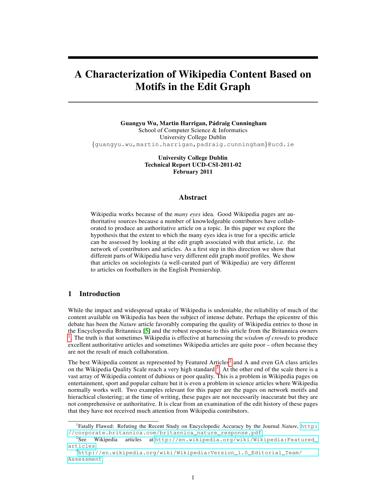
ucd-csi-2011-02
by
Unknown
Published 1 Mar 2011
In Proceedings of the 18th international conference on World wide web, pages 731–740. ACM, 2009. [5] J. Giles. Internet encyclopaedias go head to head. Nature, 438(7070):900–901, 2005. [6] R. Giugno and D. Shasha. GraphGrep: A fast and universal method for querying graphs. In International Conference on Pattern Recognition, volume 16, pages 112–115, 2002. [7] N.T. Korfiatis, M. Poulos, and G. Bokos. Evaluating authoritative sources using social networks: an insight from Wikipedia. Online Information Review, 30(3):252–262, 2006. [8] Andrew Lih. Wikipedia as participatory journalism: reliable sources? metrics for evaluating collaborative media as a news resource.
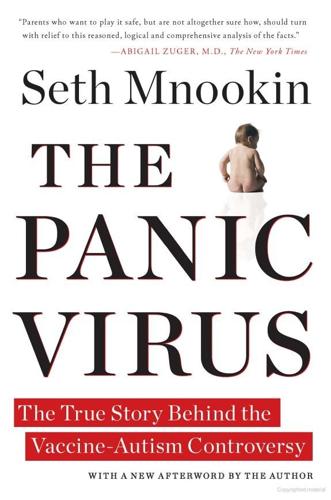
The Panic Virus: The True Story Behind the Vaccine-Autism Controversy
by
Seth Mnookin
Published 3 Jan 2012
When, in 2002, an exhaustive federal study found that breast cancer rates in Long Island were in fact barely distinguishable from those in the rest of the country, the news received a fraction of the attention the initial scare had caused. Even if that hadn’t been the case—even if there had been a higher-than-average rate of breast cancer in the area—the most likely explanation would have been that Long Island found itself in a random eddy of disease rather than the victim of a hidden carcinogen.34 If large-scale pattern recognition is hard to practice in your neighborhood, it’s nearly impossible to conduct over the Internet. Even when you know that an online community selects for a certain type of person—say, politically minded liberals or ardent conspiracy theorists—sustained encounters with a small group of like-minded people almost inevitably lead to the conclusion that everyone thinks the way you do.
…
This discovery has led to an explosion of interest in the cognitive biases we use to convince ourselves that the truth lies with what we feel rather than with what the evidence supports. The origins of many of these traits can be traced back to the primitive conditions in which they were selected for millennia ago. Take pattern recognition, which evolutionary biologists like to explain through fables about our ancestors: Imagine a primitive hunter-gatherer. Now imagine he sees a flicker of movement on the horizon, or hears a rustle at his feet. Maybe it was nothing—or maybe it was a lion out hunting for dinner or a snake slithering through the grass.
…
When our yearning to feel in control and our ability to recognize randomness are in conflict, the urge to feel in control almost always wins—as was likely the case when Lorraine Pace became convinced that there were an unusually high number of breast cancer cases in her Long Island community. (The technical name for this tendency is the clustering illusion.) Pattern recognition and the clustering illusion are just two of literally dozens of cognitive biases that have been identified over the past several decades. Some of the others have been alluded to earlier in this book: When SafeMinds members set out to write an academic paper about a hypothesis they already believed to be true, they set themselves up for expectation bias, where a researcher’s initial conjecture leads to the manipulation of data or the misinterpretation of results, and selection bias, where the meaning of data is distorted by the way in which it was collected.
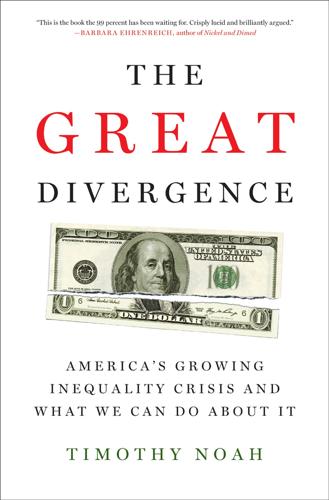
The Great Divergence: America's Growing Inequality Crisis and What We Can Do About It
by
Timothy Noah
Published 23 Apr 2012
Something else that can’t easily be achieved through rule-based logic is pattern recognition, which depends on an understanding of context as well as an ability to recognize analogies that lie outside the immediate context. Perhaps the technician has never seen a seat in this particular minivan model that wouldn’t move forward or back, but he has seen power windows that won’t go up or down. If so, he might follow a hunch that whatever electronic component interfered with the power windows is here interfering with the power seats. Computers’ difficulty with pattern recognition explains why, when you order concert tickets online, you are required to look at a random assembly of letters bent weirdly out of shape and type them into your keyboard.
…
In a September 2011 five-part series for Slate, the technology writer Farhad Manjoo describes incursions that robots have made into a number of high-paid professions, including medicine and the law. “If you do a single thing—and especially if there’s a lot of money in that single thing,” Manjoo writes, “you should put a Welcome, Robots! doormat outside your office.” Nor is pattern recognition the exclusive province of people in high-income jobs. A truck driver making a left turn on a busy city street, Levy and Murhane note, has to process visual and aural information about what’s happening on the street; tactile information about the truck’s probable speed once he hits the accelerator; and split-second calculations about probable trajectories for people and other vehicles.
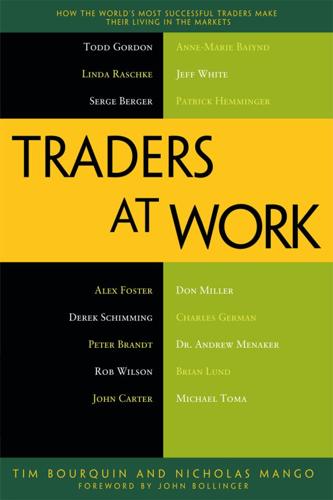
Traders at Work: How the World's Most Successful Traders Make Their Living in the Markets
by
Tim Bourquin
and
Nicholas Mango
Published 26 Dec 2012
Schabacker in the early 1930s and then picked up in the Edwards and Magee book, Technical Analysis of Stock Trends, which was initially published in the 1940s. That book has been referred to as the Bible of classical charting, and it is that for me. I have a worn and torn copy, and I refer to it daily. I’m a classical charter in every sense. Bourquin: Can you describe what “classical charting” means? Is pattern recognition the essence of it? Brandt: Yes. I’m a pattern trader, and that’s become controversial these days, because some of the new quant traders are saying that classical charting doesn’t work anymore. Now, I’m not sure exactly why they are saying that, because classical charting still works. It just works in slightly different ways and for slightly different reasons.
…
For example, a pullback that reverses right back up and makes a double-top action before pulling back and again making a break to the upside signifies a wave extension. That tells me that the buyers rushed in, and the sellers were overcome. Now sellers are nowhere to be found, and that’s my chance to go long. The very reason I chose a background in statistics was because I’d been very, very good at pattern recognition all my life. That is the one skill that I brought into trading that I feel has really helped me to get over the top. Bourquin: Since settling on Fibonacci as your primary method, are you continuously adapting how you do it, or does your strategy remain constant? Baiynd: I’m always adapting.
…
I was also trading heating oil versus ICE gasoil futures. All of these different relationships I was looking at were providing me with multiple trading opportunities. Some of the opportunities were based purely on statistical measure, some were based on technical measures, and some were based on pattern recognition measures. Regardless, each step along the way has equipped me in a different way, and all of those tools are what I’m now using to define my trading in the present and going forward. Bourquin: If somebody wanted to get started in agricultural pairs trading, like you’re doing, where is a good place for them to start?
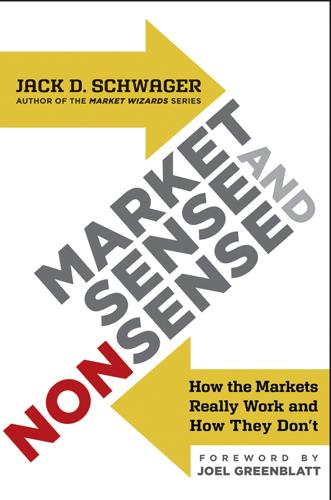
Market Sense and Nonsense
by
Jack D. Schwager
Published 5 Oct 2012
Also, many CTAs use strategies that have nothing to do with trend following. A partial sampling of alternative approaches includes: Countertrend approach (or mean reversion). Pattern recognition. Fundamental systematic approach (systems that are based on fundamental inputs rather than price movements). Fundamental discretionary approach. Spread trading (long positions in one futures contract versus short positions in another contract in the same market or a related market). Multisystem (e.g., combination of trend-following, countertrend, and pattern recognition systems). Managed futures are often categorized as a separate asset class rather than as a hedge fund category.
…
Today’s statistical arbitrage models are far more complex, simultaneously trading hundreds or thousands of securities based on their relative price movements and correlations, subject to the constraint of maintaining multidimensional market neutrality (e.g., market, sector, etc.). Although mean reversion is typically at the core of this strategy, statistical arbitrage models may also incorporate other types of uncorrelated or even inversely correlated strategies, such as momentum and pattern recognition. Statistical arbitrage involves highly frequent trading activity, with trades lasting between seconds and days. Fixed income arbitrage. This strategy seeks to profit from perceived mispricings between different interest rate instruments. Positions are balanced to maintain neutrality to changes in the broad interest rate level, but may express directional biases in terms of the yield curve—anticipated changes in the yield relationship between short-term, medium-term, and long-term interest rates.

Peers Inc: How People and Platforms Are Inventing the Collaborative Economy and Reinventing Capitalism
by
Robin Chase
Published 14 May 2015
He argues that humans are great at fast pattern recognition, recognizing subtle local cues and context, and adjusting immediately to take these into account. Conversely, computers are pretty terrible at these things. While we have to trick ourselves into “thinking slow,” taking the time to make the mathematical and rational calculations, this type of analysis is easy for computers. The optimal Peers Inc platforms allow computers to do what they do best—complex and not-so-complex math—and deliver the results to people, allowing us to engage in what we do best: creativity, pattern recognition, and contextualizing. In an interview on The Colbert Report, Vint Cerf, the Internet pioneer, remarked “[There are] about 3 billion people online right now.
…
But we know that we can find abundance in excess capacity; that platforms can organize, simplify, and provide peers with resources; that in the process, they radically accelerate learning and propagate new discoveries; and that by engaging with peers as co-creators, we bring passion, ingenuity, and local and customized applications together into resilient and redundant systems. Everything gets better because the parts together form a new whole. The Peers Inc organization can produce previously impossible growth, unprecedented acceleration of learning and innovation, and the powerful joining of human experience, adaptability, and pattern recognition with supercomputing. The three miracles potentially provide us a way forward through climate change, resource scarcity, and explosive population growth. They also produce some rewarding business opportunities along the way. We can, in fact, make megacities livable and address the needs of the more than seven billion people now on the planet (a figure expected to grow to eleven billion by 2050) through more efficient use of our resources.

Possible Minds: Twenty-Five Ways of Looking at AI
by
John Brockman
Published 19 Feb 2019
They are giving us, in effect, quick access to a vast collective awareness and a vast collective memory. At the same time, autonomous artificial intelligences have become world champions in a wide variety of “cerebral” games, such as chess and Go, and have taken over many sophisticated pattern-recognition tasks, such as reconstructing what happened during complex reactions at the Large Hadron Collider from a blizzard of emerging particle tracks to find new particles; or gathering clues from fuzzy X-ray, fMRI, and other types of images to diagnose medical problems. Where is this drive toward self-enhancement and innovation taking us?
…
Those two advantages are synergistic, since it is interactive development that sculpts the massively wired but sprawling structure of the infant brain, enabled by exponential growth of neurons and synapses, to get tuned in to the extraordinary instrument it becomes. Computer scientists are beginning to discover the power of the brain’s architecture: Neural nets, whose basic design, as their name suggests, was directly inspired by the brain’s, have scored some spectacular successes in game playing and pattern recognition, as noted. But present-day engineering has nothing comparable—in the (currently) esoteric domain of self-reproducing machines—to the power and versatility of neurons and their synapses. This could become a new, great frontier of research. Here, too, biology might point the way, as we come to understand biological development well enough to imitate its essence.
…
In computer technology, most algorithms work invisibly, in the background; they remain inaccessible in the systems we use daily. But lately there has been an interesting comeback of visuality in machine learning. The ways that the deep-learning algorithms of AI are processing data have been made visible through applications like Google’s DeepDream, in which the process of computerized pattern recognition is visualized in real time. The application shows how the algorithm tries to match animal forms with any given input. There are many other AI visualization programs that, in their way, also “make the invisible visible.” The difficulty in the general public perception of such images is, in Steyerl’s view, that these visual patterns are viewed uncritically as realistic and objective representations of the machine process.
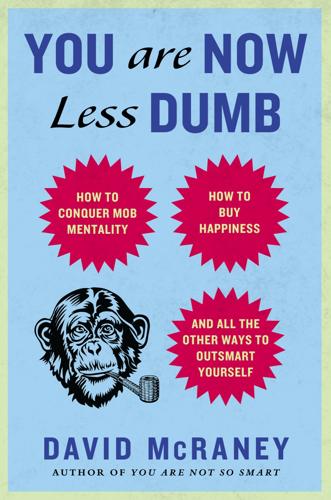
You Are Now Less Dumb: How to Conquer Mob Mentality, How to Buy Happiness, and All the Other Ways to Outsmart Yourself
by
David McRaney
Published 29 Jul 2013
Arousal can fill up the spaces in your brain when you least expect it. It could be a rousing movie trailer or a plea for mercy from a distant person reaching out over YouTube. Like a coterie of prairie dogs standing alert as if living periscopes, your ancestors were built to pay attention when it mattered, but with cognition comes pattern recognition and all the silly ways you misinterpret your inputs. The source of your emotional state is often difficult or impossible to detect. The time to pay attention can pass, or the details become lodged in a place beneath consciousness. In those instances, you feel but you know not why. When you find yourself in this situation you tend to lock onto a target, especially if there is another person who fits with the narrative you are about to spin.
…
If you find one, you will disavow your own ability to make the best of a bad situation and put that power in the hands of something else if a reasonable option is presented. This is a mistake, a delusion that is generating ideas that are not true, yet you believe them, often for the rest of your life. In the end, this is just pattern recognition gone haywire. In your effort to turn chaos into order, noise into signal, and to trace down causes to the effects in your life, you erroneously look outside yourself when sometimes the source is in your own mind. You are making things seem better than they are, but you can’t believe it, so you blame something else.
…
That’s why you have a bad memory for some things and not for others. As Buonomano puts it, “complaining you have a bad memory for names or numbers is a bit like whining about your smartphone functioning poorly underwater.” The syrupy muck beneath your scalp works best with associations, synthesis, and pattern recognition, and works worst with numbers, lists, measurements, statistics, and similarly hard-edged logic tasks. Because your semantic memory is more like a network of nodes than a cabinet of files, you are highly susceptible to a psychological phenomenon called priming. Every idea you experience now unconsciously influences all the ideas you experience later.

Obliquity: Why Our Goals Are Best Achieved Indirectly
by
John Kay
Published 30 Apr 2010
The general public, by contrast, didn’t know or care whether the practitioners they observed were following the rules or not. The qualities the general public tended to value were confidence and decisiveness—and, most of all, results—and these were the qualities they generally saw in the most successful paramedics. When Klein interviewed these practitioners, he concluded that pattern recognition rather than calculation was the key to their success. They used successive limited comparison, they made an assessment and if evidence seemed inconsistent with that assessment, they adopted an alternative. In the same way, novice chess players are taught simple rules—which exchanges of material should be accepted and which rejected.
…
moral values and as “muddling through” necessity of objectives achieved by order and pluralism in political pragmatism in randomness in as term ubiquity of wealth and “O Captain, My Captain” (Whitman) oil industry “On First Looking into Chapman’s Homer” (Keats) On the Origin of Species (Darwin) optics optimism pain response Paley, William Panama Canal paramedics parameters paraplegics parents Paris Pascale, Richard Pasteur, Louis pattern recognition Pearl Harbor attack (1941) pensions “perfection of form” Perot, Ross personal computers perspective Pfizer pharmaceuticals industry philanthropy photographs physics Picasso, Pablo Picture of Dorian Gray, The (Wilde) Planck, Max Plan Voisin pluralism Plutarch poetry Polanyi, Michael Pol Pot population growth Porras, Jerry I.
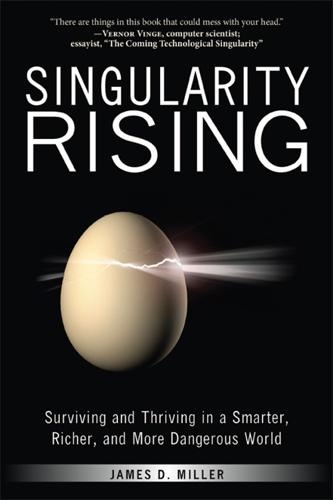
Singularity Rising: Surviving and Thriving in a Smarter, Richer, and More Dangerous World
by
James D. Miller
Published 14 Jun 2012
The stronger the correlation between bathroom and dining room quality, the better the dining room you will get if you succeed in getting a home with fantastic bathrooms. SELECTING AGAINST CERTAIN TYPES OF INTELLIGENCE Embryo selection against autism would likely reduce the number of geniuses. High-functioning autistics often excel at pattern recognition, a skill vital to success in science and mathematics. Albert Einstein, Isaac Newton, Charles Darwin, and Socrates have all been linked to Asperger syndrome, a disorder (or at least a difference) on the autism spectrum.206 Parents with strong math backgrounds are far more likely to have autistic children, perhaps an indication that having lots of “math genes” makes one susceptible to autism.207 Magnetic resonance imaging has shown that on average, autistic two-year-olds have larger brains than their non-autistic peers do.208 A Korean study found the percentage of autistics who had a superior IQ was greater than that found in the general population.209 Some autistics have an ability called “hyperlexia,” characterized by having average or above-average IQs and word-reading ability well above what would be expected given their ages.
…
As US military tests have demonstrated, modafinil reduces the cognitive decline that otherwise accompanies sleep deprivation.245 Astronauts on the International Space Station use modafinil “to optimize performance while fatigued.”246 Studies on small groups of non-sleep-deprived, healthy test subjects found that modafinil was useful for monotonous tasks that taxed working memory247 and improved performance on tests of “digit span, visual PRM [pattern recognition memory], spatial planning . . . and SSRT [stop signal reaction time].”248 Beta blockers, a set of drugs primarily used to treat heart conditions, can also enhance performance—mental or musical—in healthy people. Those drugs work by reducing the physical symptoms of anxiety and are used by professional musicians, white-collar workers, and public speakers to protect their performance under stress.249 A study published in 2011 showed the equivalent of a six-point IQ gain from four weeks’ use of the supplement Ceretrophin (the trademark for a combination of huperzine, vinpocetine, acetyl-l-carnitine, Rhodiola rosea, and alpha-lipoic acid).250 Increasing an average person’s IQ _by six points would move him from being smarter than 50 percent of the population to being smarter than 65.5 percent of it.
…
See also friendly artificial intelligence (AI), 44, 187 intelligence explosion, 22–28 ultra-AI (Devil), 30, 35, 46, 202, 208 University of Kentucky, 103–4 US Civil War, 187 US Department of Defense (DOD), 8 US militaries and Prisoners’ Dilemma, 48–53 US weapons policy, xiii V vaccines, 166 vacuum tubes, 4 van Gogh, Vincent, 92 Van Sickle, Stephen, 215 Vaseline, 111 Vassar, Michael, 44 venture capitalists, 123, 185–86 video games, 106, 113, 129, 155, 167, 183, 209, 212 Vinge, Vernor, ix, xviii, 36 virtual reality, 42, 139, 150, 171, 181, 210 virtual-reality technology, 183 Virtual World Golf, 167 visual pattern recognition, 105 volcanoes, super, 197 von Neumann, John, xii–xiii, xv, 96, 199–200 von Neumann—level AI, 6 W wages of cab drivers, 156 Walmart, 204 Washington Post, 172 weapons of mass destruction, 201 website http://www.lesswrong.com, 37 Weiner, Zach, 151 welfare, 146–47 welfare recipients, 125 What Intelligence Tests Miss (Stanovich), 65–66 white-collar jobs, 194 “Why Women Live Longer” (Scientific American), 179 widget factory, 57 Wikipedia article, 69, 104, 133 Witten, Ed, 96 Wolfram, Stephen, 35 women, fertile, 78 women past optimal egg age, 88 worker productivity, 132, 140 working memory, 105, 113–16, 212 World of Warcraft (video game), 106, 167 wormhole, 165 Wright, John C., 41 Wrong, Less, 37 Y Yale Daily News, 86 year 1066, 187 year 1997, 108 year 2000, 35, 87 year 2001, 210 year 2002, 36 year 2004, 181 year 2005, 103, 194 year 2006, 103 year 2007, x, 108 year 2008, 35, 109, 126 year 2010, x year 2011, 67, 70, 106, 116 year 2012, 11 year 2015, 115 year 2020, 5, 72, 216 year 2021, 108 year 2022, 96 year 2023, 119 year 2025, 8, 36–37, 193 year 2027, 37 year 2029, xvi, xvii, 177 year 2030, xviii, 5, 9, 37, 99 year 2035, 178 year 2045, 9, 37, 175–76, 178, 200, 216 year 2049, xvii, 21 year 2050, 11 year 2080, 37 Yesalis, Charles E., 100 Yew, Lee Kuan, 92 YouTube video, 17–20 Yudkowsky, Eliezer biological humans and emulations, 147 cryonics as “an ambulance ride to the future,” 213 Cryonics Institute, 214 extrapolation theory, 42 friendliness, preferred approach to, 41 game involving super-smart AI, 32–33 Harry Potter and the Methods of Rationality, 37–38 helping people “reprogram” themselves to become more rational, 37 humanity is at a very unstable point in history, 45 quotes of, 21, 34, 55, 83 seed AI will undergo intelligence explosion, 36 Singularity as simple but wrong, 41 Singularity from an intelligence explosion, 203 Singularity Institute for Artificial Intelligence, 35–36, 208 theory of friendly AI, incomplete, 36–37 Yudkowsky/Hanson debate, 203–5 Z Zeus (god), 41–42
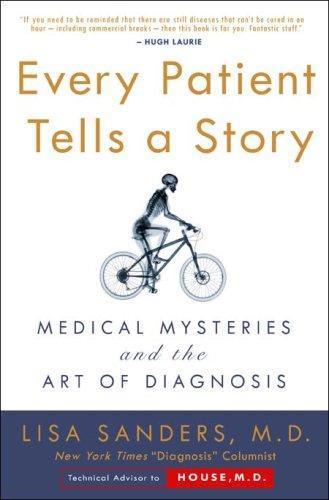
Every Patient Tells a Story
by
Lisa Sanders
Published 15 Jan 2009
When the “MI express” pulls out of the station, far too often everything that doesn’t fit—like David’s complaint about his loss of strength—is left behind. Pat Croskerry is an emergency room physician and a doctor who has written extensively about diagnostic thinking. The brain, says Croskerry, uses two basic strategies in working to figure things out. One is what Croskerry calls an intuitive approach. This “nonanalytic” approach works by pattern recognition. He describes it as a “process of matching [a] new situation to one of many exemplars in your memory which are retrievable rapidly and effortlessly. As a consequence, it may require no more mental effort for a clinician to recognize that the current patient is having a heart attack than it is for a child to recognize that a four-legged beast is a dog.”
…
Croskerry believes that the best diagnostic thought incorporates both modes, with the intuitive mode allowing experienced physicians to recognize the pattern of an illness—the illness script—and the analytic mode addressing the essential question in diagnosis—what else could this be?—and providing the tools and structures that lead to other possible answers. For Christine Twining, the doctor who finally diagnosed David Powell with pernicious anemia, there was no Blink-like moment of pattern recognition and epiphany when she first heard him describe his symptoms. One thing seemed clear: he wasn’t having a heart attack. She felt the patient’s fear and frustration. “He was afraid I was going to send him home with reassurances that it wasn’t his heart and without figuring out what it was. But I couldn’t send him home; I didn’t have a clue what he had.”
…
This is why human chess players held out for so long against computer opponents whose raw computational and memory abilities were many orders of magnitude better than those of a human brain. Humans devise shortcut strategies for making decisions and drawing conclusions that are simply impossible for computers. Humans are also extraordinarily good at pattern recognition—in chess, skilled players are able to size up the entire board at a glance and develop a feel, an intuition, for potential threats or opportunities. It took decades and millions of dollars to create a computer that was as good as a human at the game of chess. It is a complex game requiring higher order thinking but is two-dimensional and based on clear, fixed rules using pieces that never vary.
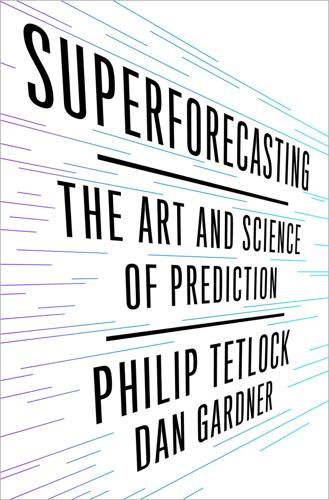
Superforecasting: The Art and Science of Prediction
by
Philip Tetlock
and
Dan Gardner
Published 14 Sep 2015
“We agree on most of the issues that matter,” they concluded in a 2009 paper.19 There is nothing mystical about an accurate intuition like the fire commander’s. It’s pattern recognition. With training or experience, people can encode patterns deep in their memories in vast number and intricate detail—such as the estimated fifty thousand to one hundred thousand chess positions that top players have in their repertoire.20 If something doesn’t fit a pattern—like a kitchen fire giving off more heat than a kitchen fire should—a competent expert senses it immediately. But as we see every time someone spots the Virgin Mary in burnt toast or in mold on a church wall, our pattern-recognition ability comes at the cost of susceptibility to false positives.
…
Thanks to project coleader Barbara Mellers, and the volunteers who endured a grueling battery of psychological tests before they started forecasting, we had the data to do that.2 To gauge fluid intelligence, or raw crunching power, volunteers had to figure out puzzles like the one on page 108, where the goal is to fill in the missing space at the lower right. Solving it requires identifying the rules generating patterns in the row (each row must have a distinctive symbol in the center of its figures) and each column (each column must contain all three shapes). The correct answer is the second figure in the second row.3 High-powered pattern recognition skills won’t get you far, though, if you don’t know where to look for patterns in the real world. So we measured crystallized intelligence—knowledge—using some U.S.-centric questions like “How many Justices sit on the Supreme Court?” and more global questions like “Which nations are permanent members of the UN Security Council?”

Only Humans Need Apply: Winners and Losers in the Age of Smart Machines
by
Thomas H. Davenport
and
Julia Kirby
Published 23 May 2016
More recently, economists Frank Levy and Richard Murnane put a finer point on things, saying (in their persuasive book, The New Division of Labor: How Computers Are Creating the Next Job Market) that the great strengths of humans are expert thinking and complex communication. The brain’s gift for pattern recognition is the key to what they call “expert thinking,” which is what allows humans, but not computers, to imagine new ways of solving problems (ways, in other words, that have not already been discovered and spelled out step by step). By complex communication, they mean communication that involves a broader interpretation of a situation than could be gained by the explicitly transmitted information.
…
He notes, “The doctor must be particularly alert for the famous ‘last minute’ of an appointment when the patient, on his way out the door, looks over his shoulder and says ‘By the way, my wife says I should tell you about this pain I have in my stomach.’”6 Levy’s MIT colleagues Erik Brynjolfsson and Andy McAfee agree with pattern recognition and complex communication as uniquely human traits, and they add a third: ideation. “Scientists come up with new hypotheses,” they write. “Chefs add a new dish to the menu. Engineers on a factory floor figure out why a machine is no longer working properly. Steve Jobs and his colleagues at Apple figure out what kind of tablet computer we actually want.
…
For example, a robot could start combining all the information about how much torque is applied in a screw. Robots are, after all, a big bucket of sensors. A truly intelligent robot could begin to see what works in terms of how much torque in a screw leads to field failures. It could combine its own sensor data with warranty data, pattern recognition, and so forth.” There is plenty of evidence that robots are becoming more autonomous at the DARPA (Defense Advanced Research Projects Agency) Robotics Challenge, staged annually since 2012. The robot contestants are expected to complete eight tasks, from driving a utility vehicle to connecting a fire hose and turning a valve.
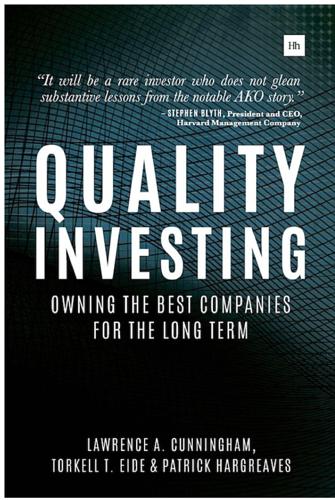
Quality Investing: Owning the Best Companies for the Long Term
by
Torkell T. Eide
,
Lawrence A. Cunningham
and
Patrick Hargreaves
Published 5 Jan 2016
John Ruskin Preface This book began as a small internal project at AKO Capital, an equity fund based in London that has enjoyed a compound annual growth rate more than double that of the market (9.4% per annum versus the MSCI Europe’s 3.9%)1 and delivered excess returns of approximately 8% per annum on its long book2 since inception a decade ago. The project’s initial scope was to institutionalize lessons learned from refining the fund’s quality-focused investment philosophy over that time. What we have come to understand is that successful investing involves a degree of pattern recognition: while industries and companies are diverse and economic environments endlessly changing, strongly performing investments tend to have commonalities. Making sense of these commonalities can help build a strong investment portfolio. After amassing a substantial body of material to share with new members of the AKO team – and to remind veterans of what they had once learned but might by now have forgotten – it became obvious that the results should be shared with the fund’s investors as well.
…
Through such global agglomerations of venerable data compilers, Experian’s databases are the product of a lengthy and intense process of collecting, matching, contrasting, verifying, and analyzing abundant information. Contemporary global systems add incremental bits of information daily, each being trivial but when added to the storehouse able to enhance credit histories and facilitate pattern recognition. So besides costing a fortune to build, data accumulate daily that amplify returns. Individual data contributors expect to benefit from the aggregation of credit information from fellow creditors, creating a powerful network effect. The result is an industry prone to consolidation. In the US, the market is dominated by three credit agencies with approximately even market shares; outside the US, most markets are duopolies, with one dominant and one subservient rival.
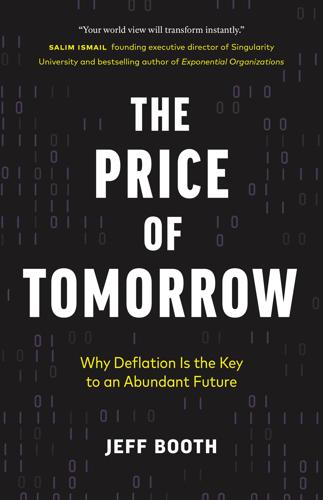
The Price of Tomorrow: Why Deflation Is the Key to an Abundant Future
by
Jeff Booth
Published 14 Jan 2020
They do not have a bias problem (unless programmed in by a human). They recall data exactly as received. With enough data or rules of a game, computers can see all combinations and their impact on each other, instead of a seeing only the small sampling that a human can. But what seems like superhuman intelligence is just pattern recognition and error correction at scale, without the shortcuts humans need to compensate for efficiency. With enough data and compute power, a computer can play billions of simulations concurrently and learn from every one of them, all without forgetting mistakes made in previous games. And once it has learned, it never gets tired and it never forgets.
…
Whether it is the stories that we tell ourselves, so strongly reinforced in our minds that we miss the very thing biting at our nose. It is all of them—together. In each and every one of us. Why would our government institutions be exempt from the flaws of thinking common to all people? The same wiring of our biological computers (our brains) creates exceptionality in our species but also mistakes. That pattern recognition locks us into a path that makes us blind to signposts that don’t match our view of the world. Information growth and the rate of change will only accelerate from here, and in a world that is changing so fast, it is not reasonable to expect those in government to be any less vulnerable than we are—even if they set the rules.
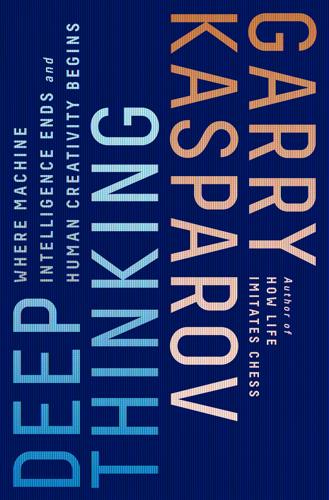
Deep Thinking: Where Machine Intelligence Ends and Human Creativity Begins
by
Garry Kasparov
Published 1 May 2017
Move generation seems to involve more visuospatial brain activity than the sort of calculation that goes into solving math problems. That is, we literally visualize the moves and positions, although not in a pictorial way, as many early researchers assumed. The stronger the player, the more they demonstrate superior pattern recognition and doing the sort of “packaging” of information for recall that experts call “chunking.” Then comes understanding and assessing what we see in our mind’s eye, the evaluation aspect. Different players of equal strength often have very different opinions of a given position and recommend entirely different moves and strategies.
…
Spurious lists of “highest IQs in history” might find me between Albert Einstein and Stephen Hawking, both of whom have probably taken as many proper IQ tests as I have: zero. In 1987, the German news magazine Der Spiegel sent a small group of experts to a hotel in Baku to administer a battery of tests to measure my brainpower in different ways, some specially designed to test my memory and pattern recognition abilities. I have no idea how closely these approximated a formal IQ test, nor do I much care. The chess tests proved I was very good at chess, the memory tests that I had a very good memory, neither of which was much of a revelation. My weakness, they told me, was “figural thinking,” apparently proven after I blanked out for a while when tasked with filling in some dots with pencil lines.
…
Binet’s insights into the differences between innate talent and acquired knowledge and experience defined the field. “One becomes a good player,” he wrote. “But one is born an excellent player.” Binet would go on to create the IQ test with Theodore Simon. In 1946, Binet’s work was advanced by the Dutch psychologist Adriaan de Groot, whose extensive testing of chess players revealed the importance of pattern recognition and peeled away at the mysteries of human intuition in decision making. John McCarthy, the American computer scientist who coined the term “artificial intelligence” in 1956, called chess the “Drosophila of AI,” referring to how the humble fruit fly was the ideal subject for countless seminal scientific experiments in biology, especially genetics.
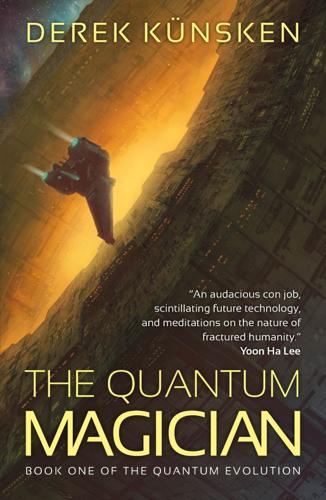
The Quantum Magician
by
Derek Künsken
Published 1 Oct 2018
Hesitantly, he said, “I need to understand what your ships can do with wormholes: how fast they can induce one, how far they can go, how fast they can transit, and how fast systems come online after emergence.” Belisarius didn’t meet their eyes. In savant, meeting people’s eyes was like looking into a box of puzzle pieces, making the pattern recognition tendencies in his brain hyperactive, facial expressions swirling into cycles of false positives. The colonel’s fingers twitched, and a thrumming resonated through the ship. Gravity lurched on under their feet. Belisarius’s brain, thirsty for logic and abstractions, began chopping up the name Mutapa.
…
He’d stood on the diving board, staring at his reflection. He hadn’t stepped off the diving board for a decade. Few Homo quantus could enter the fugue at all, and even then only with great difficulty. For them, entering the fugue was like climbing a steep hill. Engineered instincts assisted them. Geneticists had strengthened the instinct for pattern-recognition and curiosity, bringing it closer in each generation to the strength of the instinct for self-preservation. They’d overshot their goal in Belisarius. His need to learn and understand was as strong as his sense of self-preservation. He couldn’t rely on his instincts; they might kill him. There was no predicting what his brain would do when his consciousness was extinguished.
…
As much as the Puppets, you have been built with passions and desires, none of which are satisfied by money or confidence schemes.” “We’re all more than our instincts.” “But are you? Part of the early design of the Homo quantus project was to attach particular mental states, discovery and pattern recognition, to the pleasure centers of the brain. That is hardwired. Why are you not in your Garret?” “I’ve found out how to move past my instincts, as all rational beings must.” “Hollow words, Arjona. We certainly all have to fulfill our programming, no matter who the programmer. Pressures less than six hundred atmospheres are lethal to Stills.

Custodians of the Internet: Platforms, Content Moderation, and the Hidden Decisions That Shape Social Media
by
Tarleton Gillespie
Published 25 Jun 2018
The philosophical challenge is perhaps even more worrisome. Machine-learning techniques are inherently conservative. The faith in sophisticated pattern recognition that underlies them is built on assumptions about people: that people who demonstrate similar actions or say similar things are similar, that people who have acted in a certain way in the past are likely to continue, that association suggests guilt. In contexts where people are being assessed for unethical or criminal actions, this faith in pattern recognition revives old ideas about recidivism, guilt by association, and genetics. For every project like Jigsaw there is a project like Faception: an Israeli tech startup already contracted by the NSA, that claims to be able to identify terrorists and pedophiles through face recognition tools—not from a database of known felons, but before they have committed crimes.110 While this Minority Report–esque promise is almost certainly overstated and flawed, what is just as troubling is the presumptions it rests on—eugenics—and its promise of predetermination.
…
“Networked Publics: The Double Articulation of Code and Politics on Facebook.” Canadian Journal of Communication 34 (3). http://www.cjc-online.ca/index.php/journal/article/viewArticle/2114. LEE, JIANN-SHU, YUNG-MING KUO, PAU-CHOO CHUNG, AND E.-LIANG CHEN. 2007. “Naked Image Detection Based on Adaptive and Extensible Skin Color Model.” Pattern Recognition 40 (8): 2261–70. LENERT, EDWARD. 1998. “A Communication Theory Perspective on Telecommunications Policy.” Journal of Communication 48 (4): 3–23. LENHART, AMANDA, MICHELLE YBARRA, KATHRYN ZICKHUR, AND MYESHIA PRICE-FEENEY. 2016. “Online Harassment, Digital Abuse, and Cyberstalking in America.”

Empire of the Sum: The Rise and Reign of the Pocket Calculator
by
Keith Houston
Published 22 Aug 2023
Williams, The Calculating Machines: Their History and Development (Cambridge, MA: MIT Press, 1992), 53–54. 28 Johnston, “Making the Arithmometer Count”; “Currency Exchange Rates,” XE.com, 2021, https://xe.com/; “Inflation Calculator” (Bank of England, 2021), https://www.bankofengland.co.uk/monetary-policy/inflation/inflation-calculator. 29 Martin Campbell-Kelly, “Large-Scale Data Processing in the Prudential, 1850–1930,” Accounting, Business & Financial History 2, no. 2 (1992): 123, https://doi.org/10.1080/09585209200000036. 30 Erwin Tomash, “An Interview with Curt Herzstark (OH 140),” Charles Babbage Institute, 1987, 4–7. 31 Tomash, “Interview with Curt Herztark,” 10–11; “Adding Machines—Ten Keys & Fewer,” National Museum of American History (Washington, DC: Smithsonian Institution), accessed May 17, 2021, https://americanhistory.si.edu/collections/search/object/nmah_1215046. 32 Tomash, “Interview with Curt Herzstark,” 23. 33 Cliff Stoll, “The Curious History of the First Pocket Calculator,” Scientific American 290, no. 1 (2004): 92–99; “Weight-for-Age” (World Health Organisation), accessed May 17, 2021, https://www.who.int/tools/child-growth-standards/standards/weight-for-age. 34 Tomash, “Interview with Curt Herzstark,” 23–26, 40. 35 Michael Gehler, “Schuschnigg, Kurt,” Deutsche Biographie 23 (Bayerische Staatsbibliothek, 2007), https://www.deutsche-biographie.de/pnd118762702.html; Katharina Ziegler, “Anschluss,” AEIOU Österreich-Lexikon (Graz: Austria-Forum, March 15, 2021), https://austria-forum.org/af/AEIOU/Anschluss. 36 Tomash, “Interview with Curt Herzstark,” 22, 26. 37 Tomash, “Interview with Curt Herzstark,” 27. 38 Tomash, “Interview with Curt Herzstark,” 29; “Buchenwald Concentration Camp, 1937–1945,” Buchenwald Memorial (Buchenwald and Mittelbau-Dora Memorials Foundation), accessed May 18, 2021, https://www.buchenwald.de/en/72/. 39 Tomash, “Interview with Curt Herzstark,” 31–32. 40 Tomash, “Interview with Curt Herzstark,” 36–37; “1945—After the Liberation,” Buchenwald Memorial (Buchenwald and Mittelbau-Dora Memorials Foundation), accessed May 18, 2021, https://www.buchenwald.de/en/464/. 41 William Gibson, “Math Grenades,” in Pattern Recognition (London: Penguin, 2004); Donald E. Morse, “Advertising and Calculators in William Gibson’s ‘Pattern Recognition,’ ” Science Fiction Studies 31, no. 2 (2004): 330–332. 42 “Curta Type I Calculating Machine (DW0973),” Collection of Historical Scientific Instruments (Cambridge, MA: Harvard University, 1964), http://waywiser.fas.harvard.edu/objects/3778/; Tomash, “Interview with Curt Herzstark,” 63. 43 “Leaflet, Your CURTA Calculator,” National Museum of American History (Washington, DC: Smithsonian Institution), accessed May 18, 2021, https://www.si.edu/es/object/nmah_904705. 44 Tomash, “Interview with Curt Herzstark,” 24. 45 “Leaflet, Your CURTA Calculator.” 46 “Miniature Machine Performs Engineering Calculations,” Product Engineering, no. 23 (October 1952): 160–161, http://www.vcalc.net/cu-pe.htm. 47 Tomash, “Interview with Curt Herzstark,” 36. 48 Tomash, “Interview with Curt Herzstark,” 38–41. 49 Tomash, “Interview with Curt Herzstark,” 41–43. 50 Tomash, “Interview with Curt Herzstark,” 43–44. 51 Stoll, “First Pocket Calculator.” 52 Tomash, “Interview with Curt Herzstark,” 46–51, 55, 64; Stoll, “First Pocket Calculator.” 53 Tomash, “Interview with Curt Herzstark,” 51. 54 Stoll, “The First Pocket Calculator.” 55 Bruce Flamm, “The Amazing Curta,” Vintage Calculators Web Museum, 1997, http://www.vintagecalculators.com/html/the_amazing_curta.html. 56 Tomash, “Interview with Curt Herzstark,” 52. 57 Tomash, “Interview with Curt Herzstark,” 52–54. 58 Stoll, “First Pocket Calculator”; Flamm, “The Amazing Curta.” 59 “Curta Portable Calculator (Advertisement),” Popular Mechanics, May 1952; “CPI Inflation Calculator” (U.S.
…
The blueprints of Herzstark’s miniaturized arithmometer, drawn in the evenings and on Sundays, were almost complete when, in April 1945, Buchenwald was liberated. Herzstark was free, finally, to see his idea to fruition.40 Most observers peg Herzstark’s magnum opus as resembling either a pepper mill or a coffee grinder. William Gibson, in his 2003 novel Pattern Recognition, has a more apt description: he calls it a “math grenade.” After all, the Curta, which serves admirably as a plot device in that book, was nothing if not a shock to the established order of clunky desktop calculators.41 Named to suggest that the device was “Curt’s daughter,” the Curta was an aluminum cylinder around two and a half inches in diameter and twice as tall, with numbered sliders arrayed around its circumference and a crank handle on top.42 Herzstark’s drawings showed that it worked in the same way as a conventional arithmometer: use the sliders to set an input value, then turn the handle once to add that value to a set of accumulator dials visible on top of the machine.
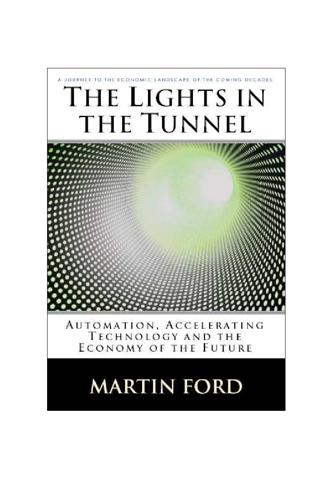
The Lights in the Tunnel
by
Martin Ford
Published 28 May 2011
In spite of the radiologist’s training requirement of at least thirteen additional years beyond high school, it is conceptually quite easy to envision this job being automated. The primary focus of the job is to analyze and evaluate visual images. Furthermore, the parameters of each image are highly defined since they are often coming directly from a computerized scanning device. Visual pattern recognition software is a rapidly developing field that has already produced significant results. The government currently has access to software that can help identify terrorists in airports based on visual analysis of security photographs.22 Real world tasks such as this are probably technically more difficult than analyzing a medical scan because the environment and objects in the image are far more varied.
…
Although the practical applications of artificial intelligence have so far emphasized brute force solutions, it is by no means true that this is the only approach being taken in the field. A very important area of study revolves around the idea of neural nets, which are a special type of computer that is built upon a model of the human brain. Neural nets are currently being used in areas such as visual pattern recognition. In the future, we can probably expect some important advances in this area, especially as the engineers who design neural nets work more closely with scientists who are uncovering the secrets of how our brains work. One thing that probably jumps out at you as we speak of lawyers and radiologists is that these people make a lot of money.
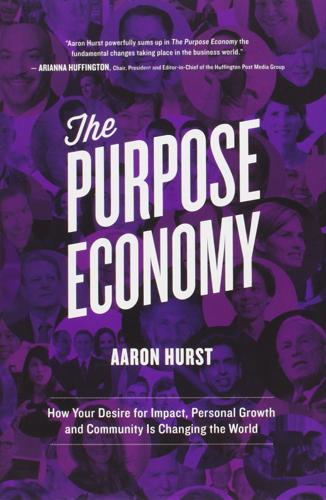
The Purpose Economy: How Your Desire for Impact, Personal Growth and Community Is Changing the World
by
Aaron Hurst
Published 31 Aug 2013
Furthermore, as I will argue in this book, it is likely that in 20 years, the pursuit of purpose will eclipse the third American economy, the Information Economy. Purpose, Purpose—Everywhere I’m not an economist, a sociologist, or a psychologist. I am an entrepreneur. Entrepreneurs constantly look for opportunities, hoping to find emerging trends or spot inspiration for new products or services. This kind of pattern recognition first helped me see the enormous potential for pro bono and has now helped me discern the underlying thread in what appears to be myriad emerging trends of the last decade. It’s helped me comprehend how they are all driven by the pursuit of purpose—together, they create the Purpose Economy.
…
It is a virtuous cycle. It is important to appreciate what Jennifer has done by fully integrating these parts of her work at the same time. The new narrative presents a concept that we shouldn’t wait to revisit at age 60, but rather integrate into our careers from the start and throughout our lives. Pattern Recognition Amy Wrzesniewski teaches a course for MBA students at Yale’s School of Management, with the aim of helping them more thoughtfully navigate their careers. It is a powerful course that requires an enormous amount of self-reflection on the part of her students. She often ends up holding office hours with many of them, becoming their de facto career coach.
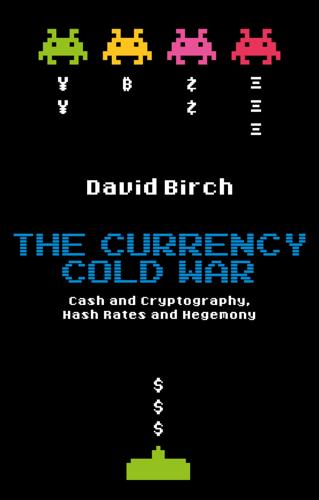
The Currency Cold War: Cash and Cryptography, Hash Rates and Hegemony
by
David G. W. Birch
Published 14 Apr 2020
Remember, in an anonymous world, no one knows if you are a fraudster or if you are from the FBI. Hence, you could argue that anonymity might actually help law enforcement to carry out old-fashioned police work (and since no one knows if you are a bot either, I assume the police will implement large-scale big data analysis, pattern recognition, machine learning and all sort of other things to help them). It is not at all clear to me how the aforementioned child pornographers and terrorists will get any further beyond the reach of the law because their cash is anonymous when their mobile phone location is recorded every 50 milliseconds and their face is scanned at every street corner, but I am open to persuasion.
…
We need to re-engineer regulators and compliance to stop implementing KYC, AML, CTF and PEP measures by building electronic analogues of passports, suspicious transaction reports and so on. In this world of machine learning and AI, we need to invert the paradigm: instead of using CDD to keep the bad guys out of the system, we should bring the bad guys into the system; use AI, pattern recognition and analytics to find out what the bad guys are doing; and catch them! Surely, from a law enforcement point of view, it is better to know what the bad guys are up to. Following their money should mean it is easier to detect and infiltrate criminal networks and to generate information that the law enforcement community can use to do something about the flow of criminal funds.

New Market Wizards: Conversations With America's Top Traders
by
Jack D. Schwager
Published 28 Jan 1994
I believe my most important skill is an ability to perceive patterns in the market. 1 think this aptitude for pattern recognition is probably related to my heavy involvement with music. Between the ages of five and twentyone, I practiced piano for several hours every single day. In college, I had a dual major of economics and musical composition. Musical scores are just symbols and patterns. Sitting there for hours every day, analyzing scores, probably helped that part of my brain related to pattern recognition. Also, practicing an instrument for several hours every day helps develop discipline and concentration—two skills that are very useful as a trader.
…
You remember William Eckhardt / 115 the times when the oracle really hit the nail on the head, and you tend to forget the cases in which the prediction was ambiguous or wrong. Your comments basically seem to imply that chart reading is just laden with pitfalls and unfounded assumptions. Yes, it is. There may be people out there who can do it, but I certainly can’t. Every pattern recognition chart trader I know makes the trades he really likes larger than the trades he doesn’t like as much. In general, that’s not a good idea. You shouldn’t be investing yourself in the individual trades at all. And it’s certainly wrong to invest yourself more in some trades than others. Also, if you think you’re creating the profitable situation by having an eye for charts, it’s very difficult not to feel excessively responsible if the trade doesn’t work.
…
A technical indicator that attempts to define when prices have risen (declined) too far, too fast, and hence are vulnerable to a reaction in the opposite direction. The concept of overbought/oversold is also often used in association with contrary opinion to describe when a large majority of traders are bullish or bearish. P and L. Shorthand for profit/loss. Pattern recognition. A price-forecasting method that uses historical chart patterns to draw analogies to current situations. Glossary / 491 Pit. The area where a futures contract is traded on the exchange floor. Also sometimes called the Ring. Position limit. See Limit position. Price/earnings (P/E) ratio. The price of a stock divided by the company’s annual earnings.
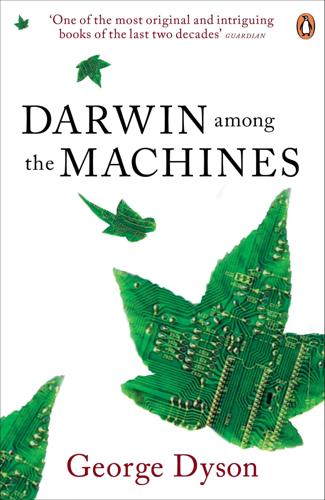
Darwin Among the Machines
by
George Dyson
Published 28 Mar 2012
It may be, however, that in this process logic will have to undergo a pseudomorphosis to neurology to a much greater extent than the reverse.”12 Computers, by the 1980s, had evolved perfect memories, but the memory of the computer industry was short. “If your friends in AI persist in ignoring their past, they will be condemned to repeat it, at a high cost that will be borne by the taxpayers,” warned Ulam, who turned out to be right.13 For a neural network to perform useful computation, pattern recognition, associative memory, or other functions a system of value must be established, assigning the raw material of meaning on an equitable basis to the individual units of information—whether conveyed by marbles, pulses of electricity, hydraulic fluid, charged ions, or whatever else is communicated among the components of the net.
…
An influential step in this direction was an elder and much less ambitious cousin of Leviathan named Pandemonium, developed by Oliver Selfridge at the Lincoln Laboratory using an IBM 704. Instead of attempting to comprehend something as diffuse and complex as the SAGE air-defense system, Pandemonium was aimed at comprehending Morse code sent by human operators—a simple but nontrivial problem in pattern recognition that had confounded all machines to date. Selfridge’s program was designed to learn from its mistakes as it went along. Pandemonium—“the uproar of all demons”—sought to embody the Darwinian process whereby information is selectively evolved into perceptions, concepts, and ideas. The prototype operated on four distinct levels, a first approximation to the manifold levels by which a cognitive system makes sense of the data it receives.
…
Robert (1904–1967), 78–79, 82, 91, 94–95 optical fiber communications, 7, 8–9, 203–204, 207 Opticks (Newton), 227 Order, 62, 170, 222 and disorder, in hydrodynamics, 85 origins of, 29, 112, 170, 177, 188–89 order codes, 90, 93, 105–106, 121, 123 Organisms. see also artificial life; evolution; life; microorganisms; origins of life; parasitism; symbiogenesis; symbiosis collective, 2–3, 13, 27, 150, 170, 175, 191–92 complexity of, 11–13, 112, 117, 126, 150, 181, 190–92 and machines, comparison with, 100–101, 181, 191 multicellular, 13, 115, 123, 160 organizations as, 179, 183 processors as, 215–16 reliable, from unreliable parts, 44, 108, 150 scale of, 7–8, 174–75, 186, 208 Origin of Species (Darwin), 18, 19, 23, 24, 116, 190 origins of life, 9, 12–13, 28–32, 111–13, 177, 202. see also symbiogenesis Origins of Life (Dyson), 29–30, 32 Ortvay, Rudolf, 89 OS/360 (IBM 360 operating system), 121–22 Oslo, University of, 119–20 Ouroboros (Garrett), 226–27 Overlords (of Childhood’s End), 224 overmind, dangers of, 224 Oxford University, 2, 63, 132, 160 oxygen, 121, 202 P packet switching Babbage on, 42, 81 origins and development of, 143, 147–52, 205–207 proliferation of, 12, 122 Paley, William (1743–1805), 188–89 Pandemonium (Selfridge), 72, 184–85, 189 pangenesis, 20 panspermia, 28 Parallel Distributed Processing (Rumelhart and McClelland), 159 parallel processing in biology, 82, 110, 115, 155, 159, 219 and computers, 12, 86–87, 108, 115, 126–27, 155, 197, 205 parasitism, 12, 29, 97, 114–16, 120, 185, 201, 223, 227 and evolution of software, 121–23 and origins of eukaryotic cells, 12, 29, 112, 115 Pascal, Blaise (1623–1666), 36 Passages from the Life of a Philosopher (Babbage), 42 pattern recognition, 10, 62, 158, 184 Patterson, George W., 59 Payne, Diana, 64 Pehrson, Björn, 133, 137, 139 Peirce, Charles Sanders (1839–1914), 58–59 penny post, and Babbage, 42 Pepys, Samuel (1633–1703), 5, 134 perception, 6, 51, 156, 158, 184, 218, 222 Petty, Charles, 161 Petty, William (1623–1687), 160–62, 171 phenotype, and distinction from genotype, 30–31, 117–19 Philco 2000 (transistorized computer), 183 philosophical algebra (Hooke), 135 Philosophical Club (Oxford), 132, 160 photosynthesis, 170 physics, 50, 73, 85, 125, 130, 174, 197, 216 Piaget, Jean, 94 Pickard, G.

System Error: Where Big Tech Went Wrong and How We Can Reboot
by
Rob Reich
,
Mehran Sahami
and
Jeremy M. Weinstein
Published 6 Sep 2021
But in cases such as spam filtering and credit card fraud, the volume of transactions is far greater than humans can process. The use of these technologies didn’t displace any workers because the tasks were not something that humans could keep up with in the first place. And they were hidden in the bowels of data systems, not a place where workers are found. As AI grows in its pattern recognition capabilities, it is able to power more complicated tasks, oftentimes in more visible ways. Autonomous vehicles are just a start. Some of these applications are more for novelty, such as Makr Shakr’s robotic bartenders, with whimsical names such as “Toni” and “Bruno,” that have been making cocktails in bars from London to Dubai over the past few years with more than 2.6 million drinks served!
…
Called “quantitative hedge funds,” these systems use algorithmic techniques, frequently powered by machine learning models, to make split-second transactions on everything from Apple stock to zinc futures. One of the pioneers in this area, Renaissance Technologies, was founded by Jim Simons, a mathematics PhD who had spent time working at the National Security Agency on code breaking—a somewhat different but equally quantitative form of pattern recognition. Renaissance’s Medallion fund has generated more than $100 billion in profits since the company’s founding in 1982. Indeed, the world of finance has shifted in the wake of technological developments, as financial services firms increasingly focus on customer relationship management and access to private funds utilizing quantitative technologies.
…
Will AGI put humanity: Edward Feigenbaum et al., Advanced Software Applications in Japan (Park Ridge, NJ: Noyes Data Corporation, 1995). problems in reasoning have the potential: Yaniv Taigman et al., “DeepFace: Closing the Gap to Human-Level Performance in Face Verification,” 2014 IEEE Conference on Computer Vision and Pattern Recognition (CVPR 2014) (New York: IEEE, 2014), 1701–8, https://doi.org/10.1109/CVPR.2014.220. “nine-layer deep neural network”: Ibid. Anyone using Zoom videoconferencing: “Language Interpretation in Meetings and Webinars,” Zoom Help Center, https://support.zoom.us/hc/en-us/articles/360034919791-Language-interpretation-in-meetings-and-webinars.
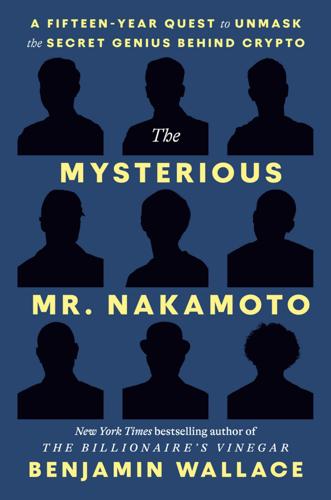
The Mysterious Mr. Nakamoto: A Fifteen-Year Quest to Unmask the Secret Genius Behind Crypto
by
Benjamin Wallace
Published 18 Mar 2025
Fenn had said the purpose of his treasure hunt was to get people off their couches, out into nature, away from their digital devices. Nakamoto had lived and died only on the internet, where creatively connecting info-flotsam was an international pastime. Those of us who fell under the spell of the Nakamoto mystery often engaged in pattern recognition not so different from the filter with which conspiracy theorists made sense of the world. The internet had made Keyser Sözes of us all, training us to assemble coherent stories from mismatched shards. I thought of Sahil Gupta and his Elon Musk crusade. Sahil had continued to bug me about his theory.
…
The recent suggestions in the press that every other person who has a scientific background could be the creator of Bitcoin only serve to show how little some ‘journalists’ understand about Bitcoin and its origins.” Looking back at the earliest Nakamotology efforts, I now saw them as case studies in this sort of long-distance pattern recognition. Things that seemed like a “crazy coincidence,” as Reuters described the fact that Dorian Nakamoto’s full name included “Satoshi,” weren’t that crazy. I’d gradually realized that when it came to the Nakamoto mystery, nobody, including me, really knew anything. Clearly, I needed a deeper understanding of computer science.
…
The first person Nakamoto was known to have contacted was Adam Back, whose Hashcash Ben had studied when writing his critique of proof of work, and whom Ben knew from British computer security circles. Two months after Bitcoin’s launch, Ben blogged about a new Visa security program he thought would put customers at risk: “Not content with destroying the world’s economies, the banking industry is also bent on ruining us individually, it seems.” The cousin of long-distance pattern recognition was its nearsighted opposite: Almost any candidate, if you looked closely enough, would start to cough up data points that confirmed the person as a plausible Nakamoto. Or was it possible that Ben’s criticism of Bitcoin had been, as I’d thought James Donald’s might be, a misdirection? Skip Notes * When I first provided the Mojo Nation files to Brian Timmerman, I labeled them as having been written by Jim McCoy, a cypherpunk who with Doug Barnes had cofounded Mojo Nation and who was friendly with Nick Szabo, but Jim later informed me that the C coding on the project had been done by Bram Cohen, Zooko Wilcox, and Greg Smith.
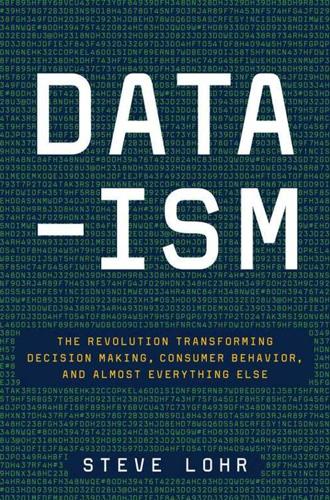
Data-Ism: The Revolution Transforming Decision Making, Consumer Behavior, and Almost Everything Else
by
Steve Lohr
Published 10 Mar 2015
He flies out most Sunday afternoons to work on projects with clients, returning Thursday night or Friday. After a day spent with Haydock, at his home and over a walleye dinner at a downtown restaurant, listening to him describe his craft, I couldn’t help but think of the contrast with Cayce Pollard, the protagonist in William Gibson’s 2003 novel Pattern Recognition. She is a young marketing savant, a cool hunter. Her typical attire is a shrunken cotton T-shirt, worn with black jeans, boots, and a bomber jacket. She possesses, Gibson writes, “an unusual intuitive sensitivity for branding.” Haydock may not be hip or intuitive like Cayce Pollard. But he brings something else—data science.
…
Randall, 40 Mount Sinai Hospital, 8, 13–14, 15 data science and genomic research at, 163–65, 171, 173–81 medical data and human experience, 68–70 Mundie, Craig, 203 Nakashima, George, 65 Naked Society, The (Packard), 184 Narayanan, Arvind, 204 Nest learning thermostat, 143–45 Google and, 152–53 human behavior and, 147–52 Never-Ending Language Learning system (NELL), of Carnegie Mellon University, 110–11 New York State, Medicaid fraud prevention in, 48 Norvig, Peter, 116 Norway, 48 “notice and choice,” in data collection of personal information, 186, 187–88 Noyes, Eliot, 49 “numerical imagination,” of Hammerbacher, 13–14 Oak Ridge National Laboratory, 176 Obama administration, big data and, 203–4 O’Donnell, Tim, 180–81 OfficeMax, 188–89 Olmo, Harold, 126 Olson, Mike, 101 online advertising, 84–85 as “socio-technical construct,” 193–95 open-source code, IBM and, 9 operations research, 154 optimization, at IBM, 46 Packard, Vance, 184 Palmisano, Samuel, 49–51, 53 “Parable of Google Flu: Traps in Big Data Analysis, The” (Science), 108 Pattern Recognition (Gibson), 154 Paul, Sharoda, 135 payday lending market, 104–7 Pennebaker, James, 199 Pentland, Alex, 15, 203–4, 206 Perlich, Claudia, 120 personality traits, values, and needs, 198–99 personally identifying information, privacy concerns and, 187–92 Pieroni, Stephanie, 36 Pitts, Martha, 57 Pitts, Shereline, 57 Pop-Tarts, beer, and hurricane data, 104 precision agriculture, E. & J.

The Best Interface Is No Interface: The Simple Path to Brilliant Technology (Voices That Matter)
by
Golden Krishna
Published 10 Feb 2015
“With such walls and blends of different stones it comes about as it does with the sound of bells, in whose clanging you may discover every name and word that you can imagine.”10 Leonardo may have been one of the first to record11 a visual and auditory form of the psychological state apophenia—an error in perception—called pareidolia. It’s a form of pattern recognition encoded in us for survival gone haywire, where a false stimulus (like a sound, vibration, or image) is perceived as authentic.12 Leonardo visually experienced it through stains on the wall. Edgar Allan Poe’s character experienced it through sound after a murder.13 It’s how a Rorschach inkblot test works.
…
David Robson, “Neuroscience: Why Do We See Faces in Everyday Objects?,” BBC, July 30, 2014. http://www.bbc.com/future/story/20140730-why-do-we-see-faces-in-objects 12 “Apophenia is an error of perception: The tendency to interpret random patterns as meaningful . . . Pareidolia is visual apophenia . . . For our hominid ancestors, pattern recognition was essential for recognizing both food and predators.” John W. Hoopes, “11-11-11, Apophenia, and the Meaning of Life,” Psychology Today, November 11, 2011. http://www.psychologytoday.com/blog/reality-check/201111/11-11-11-apophenia-and-the-meaning-life 13 “The murder is carefully calculated, and the murderer hides the body by cutting it into pieces and hiding it under the floorboards.
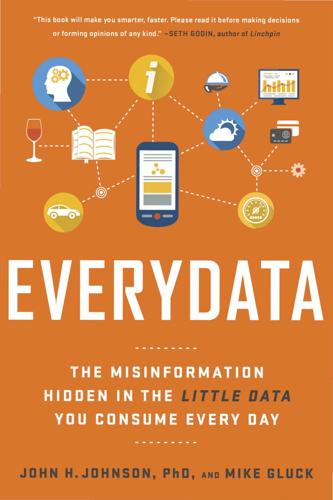
Everydata: The Misinformation Hidden in the Little Data You Consume Every Day
by
John H. Johnson
Published 27 Apr 2016
If you see the headline “Eating brownies tied to weight gain” and you simply ask, “How is eating brownies tied to weight gain?” the answer should reveal the true relationship between these two variables. HERE COMES THE SUN Perhaps another reason that so many people conflate correlation with causation is because of the way we’re hardwired to interpret data. “The human brain is a pattern-recognition machine,” explained Ron Friedman in an interview. Friedman is a social psychologist who specializes in human motivation, and the author of The Best Place to Work: The Art and Science of Creating an Extraordinary Workplace. “In the past, before the invention of books or the search engine, uncovering links between cause and effect was essential to our survival,” noted Friedman.
…
See also samples/sampling Oliver, John, 95 Olympic judges, 39–40 omitted variables, 48–50, 54–58, 126, 145, 147, 149 “only,” misrepresentation based on, 95–96 Oster, Emily, 6, 54, 78, 79 outliers, 38–42, 119 being a good consumer of, 42–43 in forecasting, 126 overconfidence, 139–140 P Pantene Pro-V Smooth shampoo ads, 7 pattern recognition, 60–61, 110–111 p-hacking, 79 Pinsker, Joe, 144–145 polls, 37–38, 68–69, 73 populations. See also samples/sampling averages and differences in, 34–35 definition of, 13 samples representativeness of, 14 prediction errors, 128–129 prediction intervals, 128–129 predictions, 127–128. See also forecasting pregnancy, alcohol and caffeine consumption during, 54–55, 79 Prescott, J.
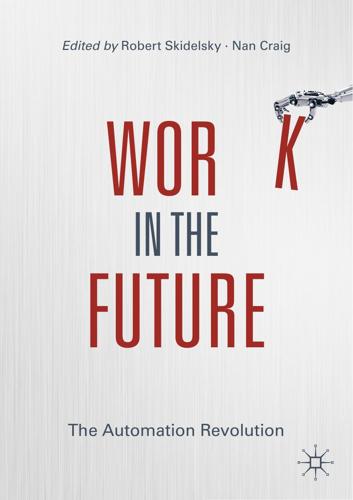
Work in the Future The Automation Revolution-Palgrave MacMillan (2019)
by
Robert Skidelsky Nan Craig
Published 15 Mar 2020
Yet a system was recently developed at Stanford that can tell whether or not a freckle is cancerous as accurately as leading dermatologists. How does it work? It is not trying to copy the doctor’s reasoning processes. It ‘knows’ or ‘understands’ nothing at all about medicine. Instead it has a database of about 129,450 past cases and is running a sort of pattern recognition algorithm through them, hunting for similarities between those images and the photo of any troublesome lesion under scrutiny. It does not matter that this task is ‘non-routine’, that a human being might not be able to explain exactly how she makes a diagnosis— this system is performing the task in a very different way, an unhuman one, based on the analysis of more possible cases than a doctor could hope to review in her lifetime.
…
Wants, 3, 30, 88 Neoclassical economics, 4, 55, 60, 62, 73 Netherlands, the/Holland, 6, 68, 151, 163, 177, 181–183 Network effects, 138 Networks, 45, 48, 138, 196 Neumann, John von, 99 New Zealand, 179 Nübler, Irmgard, 6, 194, 196 Index O Obama, Barack, 164, 165, 171 Obligation, 38, 53, 73–79 Occupations, 16, 40, 41, 46, 47, 58, 70, 83, 84, 86, 87, 90, 92, 106, 178, 184, 190–192, 194 OECD, 66–68, 178 O’Neil, Cathy, 6 Ontology of work, 65 Organisations dynamics of, 164 Osborne, Michael, 90 Oswald, A, 60 209 Pre-modern/pre-industrial work, 3, 11, 47, 48 Productivity, 7, 10, 79, 86, 87, 176, 178–180, 183–185, 190–192, 199 Professional work, 1, 39 Profits (different profit models), 14–18, 30, 48, 75, 79, 93, 134, 135, 138, 152, 191 Protestant work ethic, 28 Public services, 94, 167 Puritan (view of work), 28, 75, 166 R P Painting Fool, The, 115, 116, 120 Parenting, 75, 76 Patocka, Jan, 9, 21 Pattern recognition, 129 Peasant labour, 41 Perez, Carlota, 192 Philosophy of work, 30 Physical labour, 3 Piasna, Agnieszka, 181, 183 Piece-work, 30 Platform economy/platform capitalism, 6, 140 Polanyi, Karl, 192, 193 Polanyi, Michael, 127 Policy (argument against), 7, 21, 67, 68, 95, 157–173, 180, 181, 183–185, 189–200 Population, 2, 12, 15–17, 19, 28, 30, 89, 90, 117, 147, 158, 172, 198 Postmates, 136 Post-work society, 59 Poverty, 15, 47, 59, 67, 177 Redistribution, 79, 169, 199 Redundancy, 10, 12, 15–17, 19, 78, 179 Religion/religious ritual, 12, 28, 194 Remittances, 40 Responsibility, 44, 47, 76–79, 106, 107, 115, 118, 136 Retail sector, 87, 137 Retirement, 19, 67, 78 Ricardo, David, 2, 13–17 Robinson, James, 194 Robotisation, 21, 94, 95, 192 Robots carers, 106 Romantic (view of work), 34, 35 Ruskin, John, 34 S Safety nets, 67, 68 Sahlins, Marshall, 26, 158 Salazar-Xirinachs, Jose M., 198 Schumpeter, Joseph, 190, 194 Scientific management, 30 Scott, James C., 28 210 Index Searle, John, 100–103 Self-employment, 69–70, 75 Self-realisation, 57, 165 Sennett, Richard, 3 Services/service sector low frequency vs. high frequency, 134 work, 40, 68, 161, 163 Singularity, 116 Skidelsky, Edward, 60, 176 Skidelsky, Robert, 60, 176 Skills acquisition, 33, 70 skilled vs. unskilled labour/jobs, 67 Slavery, 11, 29, 30, 45 Smartphones, 140 Smiles, Samuel, 28 Smith, Adam, 12, 13, 27, 35, 54, 55, 65 Smith, Rob, 177 Social drawing rights, 70 Social interaction, 53, 88, 91 Social media, 77, 138, 168 Societal knowledge base, 196–197 Sociology (of work), 166 Spencer, David, 4, 54, 59, 61 Spinning mills (cotton industry?)

Leadership by Algorithm: Who Leads and Who Follows in the AI Era?
by
David de Cremer
Published 25 May 2020
Humans have this unique ability to entertain themselves in the world we call imagination. This ability, which distinguishes us from algorithms, is very important when it comes to creativity. As Einstein once said, “creativity is intelligence having fun”, and all of us understand immediately what he meant by this quote. Algorithms cannot be creative because they work with pattern recognition and curve fitting, which does not allow for the exploration of a reality that does not exist. It thus seems unlikely that algorithms have the same ability as humans to solve creative problems. Creativity is a process that requires imagination. As creativity involves coming up with new ideas and solutions, imagination is required to, first of all, develop different ways of looking at reality.
…
But, would we ever consider those algorithms as likely candidates to lead our organizations? Well, consider the following. Algorithms are consistent learners, enabling them to enlarge their cognitive abilities with every new insight. The abilities that algorithms gain in this way are largely in the areas of speed of data processing, pattern recognition, and creating more transparency in the data available. These are all areas that can make organizations smarter and help them make more accurate forecasts and predictions. Hence, it could make sense to have algorithms develop into leaders. But, as we have seen, the reality is that algorithms as leaders is not an easy sell and unlikely to happen.

Carbon: The Book of Life
by
Paul Hawken
Published 17 Mar 2025
Original inhabitants who lived continuously on the same land, sometimes for over fifty thousand years, see nature differently. The living world is a family, and as with all relations, a life that never repeats itself. The presence and survival of some five thousand Indigenous cultures depended upon their becoming masters of pattern recognition to understand how to thrive in forests, deserts, the Arctic, islands, and grasslands. Their teachers included all that thrived: plants, animals, elders, children, and those that came before. Native Americans gathered, hunted, and farmed in ways that created bountiful food and resources for those who followed.
…
This included when the sea ice froze in the fall or thawed in the spring, the color of the ice when it froze, its texture and strength, the texture of velvet on the caribou antlers, the color of the tundra moss, the arrival of bowhead and beluga whales, Pacific walrus, and bearded seals, types of snowfall, the texture of convective and stratiform clouds, and the timing of auklet and eider migrations. Over thousands of years, observations of life and the elements were correlated to later events. This acute awareness of place is pattern recognition, the connection between memory and current information, or, in this case, weather. Yup’ik does not have more words for snow, moss, or clouds than science. The difference is how they use words to create an enduring culture. Scottish has hundreds of words for snow. Flindrikin is a light snow shower, blett are large snowflakes, smirr is sleet, and there are four hundred more words.
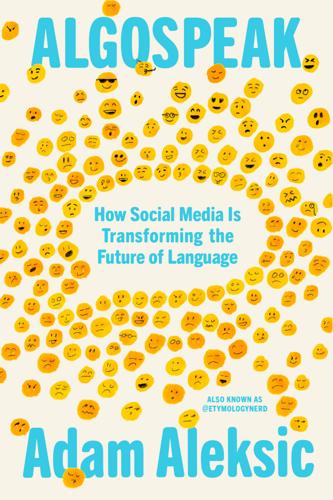
Algospeak: How Social Media Is Transforming the Future of Language
by
Adam Aleksic
Published 15 Jul 2025
You’ll often hear younger people talk about their own pasts as “lore,” or even extend it to any mundane context; under my video for the etymology of “apricot,” a top comment says, “Apricot lore is crazy.” It’s as if our language were reflexively aware of its own narrative building. * * * Stories and definitions are unavoidable. In fact, they’re a fundamental part of what makes us human. The consensus in evolutionary neuroscience is that we evolved pattern recognition and episodic memory as survival mechanisms, since they’re necessary for crucial behaviors like learning and socializing. Once we were able to tie causes to events, we were better suited for reacting to stimuli in our environment. We also turned into meaning-making machines, unable to shake ourselves from thinking in discrete categories.
…
See also microlabels Lady Bountiful (Carr), 18, 18 laggards, 53–55, 54 Language and the Internet (Crystal), 10n large language models, 209 late majority, 53, 54 Latin, 5, 7, 69n Latino dance circles, 147 laughing-crying emoji , 53–54, 188 laughing emoji, 53 LDAR (lay down and rot), 136 “le dollar bean,” 30 leetspeak, 14–15, 17, 34–35 “left this world,” 5 “leg booty,” 30 Legendary (TV show), 148 lesbian, substitutions for, 30 le$bian, 30 “Let’s Go Brandon,” 23 LGBTQ+/LGBTQIA+, 6, 29–30, 147–48, 204 lies, 66 lifestyle influencer accent, 82–89, 93–97, 167, 203 light academia, 166, 179 Lil Meatball, 39 linguistic appropriation, 146 linguistic contexts, multiple, 51 linguistic diversity, 213–16 linguistic experimentation, 72–73 linguistic founder effect, 95–96 linguistic landscape, new, 13 linguistic resonance, 61 linguistic tricks, 78 linguistic videos, 104 linguistic Whac-A-Mole, 12, 14–16, 30, 36, 108–9, 109, 209–10 “List of Generation Z Slang,” 190 literacy rates, 10 Little Women (Alcott), 167 Liverpool dialects, 216 lol, 38 LOLcats, 188 lolspeak, 35 long-tail model, 171–74, 171 lookism, 124–25, 129–30, 132, 134–35, 137–38 looksmaxxing, 125–26, 128–29, 132–33, 137, 190 lore, 200–202, 204 Lorenz, Taylor, 8 Lost Generation, 186 lowkey, 72 “low-key ate,” 206 M machine learning algorithms, 59 Mad Libs, 48 Madonna, 148 MAGA, 23 Maher, Olivia, 71 Mai, Anthony, 52–53 Mailer, Norman, 23 main characters, 202, 205 majority adopters, 140 makeup videos, 203 male supremacy, 130 Mandal, Shriya, 59–61, 76 manuscripts, 201 marginalized groups, 114–15, 154 marital probation, 72 marketing, 60, 69, 170–85, 189, 204–5, 213 mass-report videos, 29 Matthew effect, 77–78, 133 maxxing, 128, 133, 137 McCulloch, Gretchen, 10n McDonald, Glenn, 166–67, 173–74, 181–82 McDonald’s restaurants, 81 Mean Girls (film), 56 meaning making, 200–201 medical educational content, 20 Megan Thee Stallion, 175 Melcher, Louisa, 66–67 memes, 4–6, 48–50, 53–55, 73, 198, 219, 220 algorithms and, 9 attention hacking and, 141 context and, 199 culture and, 57 4chan and Reddit and, 140–41 history of, 188 marketing and, 141 metadata and, 9, 57 obtrusive, 56 spread of, 9, 12, 48–52, 56, 137, 191 men, substitutions for, 19, 25, m*n, 19, 25 men’s rights trolls, 135 mental health, 4, 9 mentally disabled, 30 Merriam-Webster, 197 Meta, 41, 172 metadata, 9, 43, 45–46, 50, 57, 101, 107–8, 164, 173, 183 metonymy, 24–25, 27 mewing, 126, 132, 138, 141, 190, 206–7 “Michael Jackson Eating Popcorn,” 155 microhooks, 69, 83 microinfluencers, 96 microlabels, 165–84, 189, 203–4 Middle East, 29 middle-schoolers, 3–5, 7–8, 46–47, 73n, 151, 161, 191–93 millennial pause, 85–86, 188 millennial pink, 187, 189 millennials, 141, 187–90, 193, 196, 204 millennial socks, 187 Minaj, Nicki, 41, 43, 157 minced oaths, 22–23 minorities, 28, 150 minority language, 218 misinformation, 116–18, 142, 212 misogyny, 127, 130, 135 mog, 125, 132, 134, 210 mogging, 128–29, 132 Mogwarts, 126 monkeycore, 164 Montell, Amanda, 136 moron, 30 mors, 5, 7 “most interesting thing about X,” 68 “Mother” (song), 148–49 “mothers,” 147, 149 MrBeast, 86–89, 91–92, 97 Museum of Pop Culture (Seattle), 3, 5, 7, 10 Musical.ly app, 40–41 music industry, 41–42, 166, 184, 212 “My favorite thing about X is,” 62 N nail polish emoji , 29 Naked and the Dead, The (Mailer), 23 Narayanan, Arvind, 106, 117–18 narrative language, 203 National Association of the Deaf, 218 National Council on Severe Autism, 116 naturecore, 165 negativity, 118–21, 135–36, 139, 219 neologisms, 175 Netflix, 68 netspeak, 34 neurodivergent community, 115, 116 neurospicy, 115, 117 “neutral” American dialect, 93–94 Newgen, 137 Newman, Kayla, 157–59 news broadcasts, 93–94 News Daddy of TikTok, 211–12 newspaper comics, 18, 188 newspapers, 38, 49, 68, 108, 113 news sources, 211–12 New Yorker, 218 New York Times, 62, 175, 192–93, 211–12, 216–17 New York University (NYU), 62–63 nia, 152 niche communities, 99–123, 140, 171–73, 181–82 ninja emoji , 21 “nip nops,” 22, 50 Nirvana, 3 “no because,” 73–77 noguing, 149 non-Deaf ASL creators, 217 noob, 35, 38 normies, 128 “Not you,” 146 “not you doing ____,” 73 NPCs, 202 NPR, 82 number 13, 100 n-word, substitutions for, 21, 28, 152 O Oberlin College, 126 obtrusiveness, 55, 56, 192 offensive words, 17–18, 30 offline, online words moving, 10, 35, 42, 73, 77, 108, 110–12, 116, 122, 203, 211, 216 ohio, 44 O.K., 38, 108, 113 okay, 38, 49 “OK boomer,” 188, 196 Old English, 5 “old money,” 179 Old Norse, 5 “Old Town Road” (song), 42 oligopoly, 181 “One thing people don’t tell you about X is Y,” 65 “on fleek,” 39, 55, 158–59 “on god,” 47n “on gyat,” 47 online disinhibition effect, 135 online intertextuality, 199 online sociolects, 34, 35 “on sigma,” 47, 50 “on skibidi,” 47 “on X,” 47 opening lines, 62–68, 76 opp, 152, 154, 162, 210 optimal distinctiveness, 183 Orange Is the New Black, 48 “orange man,” 25 “orange peel theory,” 72 originators, crediting, 158–60 out-groups, 103, 115–16, 148, 155, 189, 193, 201, 221 Oxford English Dictionary, 47 “Oxford study,” 135, 138–39 Oxford University Press, 191n P Page, Dylan, 211–12 Palestine, 26 Palestine flag emoji , 27 palm (of hand), 27, 34 parasocial interactions, 64, 84 Paris Is Burning (documentary), 148 Parker, Charlie, 145 party, substitution for, 49, 57 “passed away,” 5, 9 pastel goth, 168–70, 181, 201, 203 pattern recognition, 201 Payman, Fatima, 210–11 pay-to-play models, 181 PBS Origins (TV show), 156 peach emoji , 20–21 peen, 22 pee-pee, 22 pen, pencil, 19–20 penis, respellings of, 19–22 p3nis, 20 pen*s, 20 people, 64–65 “People are finally doing X,” 65 Pepe the Frog meme, 134 performance art, 66 period, 155, 160 “periodt,” 155 permanent wave music, 166 personalized recommendations, 12, 40–41, 43, 61, 99–123, 189, 204 PewDiePie, 173 Pew Research Center, 187 pHashing technique, 140–41 phrasal templates, 47–48, 50–51, 56, 73, 110–11, 121, 133 phrases, coining, 158 phrenological theories, 133, 135 pictography, 20–21, 35 pilled, 126, 133, 137 Pinker, Steven, 30 plaguecore, 164 plausible deniability, 25, 159 plot, 202 Poe’s law, 138–39 Pokémon discussion board, 140 polarization, 110, 119, 218–19 political discourse, 6, 19, 24–25, 110, 119 pop culture, 12 pornography, 6, 20–21, 34 portmanteaus, 100 Portuguese language, 206–7 positive feedback loops, 42, 55, 77, 104–5, 190 posting time, 61 post-ironic nods, 199 postmodern aesthetics, 169 post titles, 59–60 post-Vine, 47 pr0n, 34 prawn, 34 preferences, stated vs. revealed, 119–21, 123 preferential attachment, 215 preppy, 176–79, 181–83, 189, 195 presentation styles, 69–70 Presley, Elvis, 156 prestige dialect, 92–94, 215 “pretty on fleek,” 157 preverb music, 166 priming, 75 print media, 10, 38, 51, 52 pro-Palestine creators, 27 psychology, 58, 69, 75 punk music, 164 punks, 145, 168, 201 pwned, 35 Q QAnon, 134 queens, 147–48, 157, 161 queer community, 29–30, 52, 147, 149, 204.
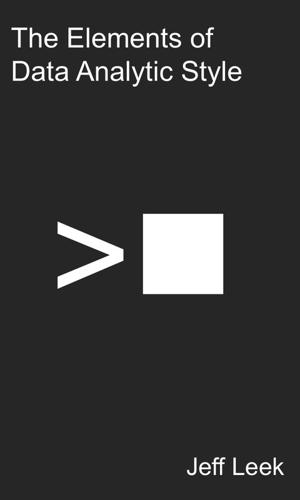
The Elements of Data Analytic Style
by
Jeff Leek
Published 1 Mar 2015
Figure 5.7 A Bland-Alman Plot with confidence intervals 5.12 Common mistakes 5.12.1 Optimizing style too quickly The goal is to quickly understand a data set, during exploratory data analysis speed is more important than style, so tools that make beautiful graphics but take time should be avoided. 5.12.2 False pattern recognition One of the most common mistakes in exploratory data analysis is to identify and interpret a pattern without trying to break it down. Any strong pattern in a data set should be checked for confounders and alternative explanations. 5.12.3 Failing to explore data and jumping to statistical tests A common failure, particularly when using automated software, is to immediately apply statistical testing procedures and to look for statistical significance without exploring the data first. 5.12.4 Failing to look at patterns of missing values and the impact they might have on conclusions.

Gnomon
by
Nick Harkaway
Published 18 Oct 2017
You forget that all these environments exist only in Diana Hunter’s consciousness. She chose the word, and it was subsequently selected at random – a single coincidence. With each iteration of it inside the psychodrama, however, it accrues greater weight for you. It is the disadvantage of human pattern recognition, exacerbated by the fact that you designate it an unusual word. However, there are half a million words in the English language and an extensive vocabulary includes perhaps thirty-five thousand of them, meaning that there are more unusual words in English than commonplace ones by a factor of fourteen.
…
It is a peculiar skill of interface, teasing the machine to unlock a cloud of possible conjunctions, focusing on a given object for just long enough to trigger a deeper evaluation, then skating away along a connection so that it, too, unfolds to reveal its extension in the conceptual space behind the wall. For a moment she holds her breath, watching a single triangle form at the bottom and rove left and up – shark! – then snorts at herself as the lines spiral and twist into a new configuration. Pattern recognition is a liar. No watery god-monster is going to consume her case today. Gods and monsters. Her gaze drifts to the Roman syncretist bubbles in that portion of the wall given over to Hunter’s narratives. Athenais dreamed a room of lies which came true, and a man died. Was sacrificed. Death setting everything in motion.
…
I will say, you had us all just a little bit worried there. We really don’t hold with people departing this life while in our care. We take it amiss. The nurses, in particular, would have been rather vexed with you. Anyway, hello. I’ve taken over your treatment today.’ Treatment, bollocks. ‘Yes, well. Be that as it may.’ S’a trick. ‘Yes, your pattern recognition is running rather too high. Almost conspiratorially so. How do you feel about the moon landings?’ Funny man not funny. ‘You find humour inappropriate? Perhaps you’re right. Let me just adjust this – there. Now. Do you still think we know one another?’ Oh … No. Silly. ‘Not at all. A biological error.

More Money Than God: Hedge Funds and the Making of a New Elite
by
Sebastian Mallaby
Published 9 Jun 2010
If a currency was heading downward, export stocks would be a buy. If interest rates were rising, it was time to short real-estate developers. To his sense of companies and economies Druckenmiller added a third skill: technical analysis. His first boss in Pittsburgh had been a student of charts, and although most stock pickers disdained this pattern recognition as voodoo, Druckenmiller soon found it could be useful. It was one thing to do the fundamental analysis that told you that a stock or bond was overvalued; it was another to know when the market would correct, and the charts hinted at the answers. Technical analysis taught Druckenmiller to be alert to market waves, to combine the trading agility of Paul Tudor Jones with the stock-picking strengths of Julian Robertson.
…
But once the firm realized that the correlations made intuitive sense—they reflected the technology euphoria that had pushed into all these industries—they seemed more likely to be tradable.27 Moreover, signals based on intuition have a further advantage: If you understand why they work, you probably understand why they might cease to work, so you are less likely to keep trading them beyond their point of usefulness. In short, Wepsic is saying that pure pattern recognition is a small part of what Shaw does, even if the firm does some of it. Again, this presents a contrast with Renaissance. Whereas D. E. Shaw grew out of statistical arbitrage in equities, with strong roots in fundamental intuitions about stocks, Renaissance grew out of technical trading in commodities, a tradition that treats price data as paramount.28 Whereas D.
…
In 2005 he launched a new venture, the Renaissance Institutional Equities Fund, which was designed to absorb an eye-popping $100 billion in institutional savings. The only way this huge amount could be manageable was to branch out from short-term trading into more liquid longer-term strategies—and since pure pattern recognition works best for short-term trades, it followed that Simons was offering a fund that would rely on different sorts of signal—ones that might already have been mined by D. E. Shaw and other rivals. By the summer of 2007, the new Simons venture had raked in more than $25 billion, making it one of the largest hedge funds in the world.

Choose Yourself!
by
James Altucher
Published 14 Sep 2013
Future experiences will almost never be exactly like the old experiences. But they give you the ability to say, “Hmm, this is like the time four years ago when X, Y, and Z happened.” And then you are engaging in… * * * Using Pattern Recognition Being able to recognize when current circumstances are like an experience you’ve had in the past or an experience someone else you’ve studied had in the past is critical to mastery. Pattern recognition is a combination of all of the above: study + history + experience + talent + a new thing… love. * * * Loving It Andre Agassi has famously said he doesn’t love tennis. I believe this and I don’t believe it.

Whiplash: How to Survive Our Faster Future
by
Joi Ito
and
Jeff Howe
Published 6 Dec 2016
“Chess,” the German master Richard Teichmann once said, “is 99 percent tactics,” and success requires seeing the long-term consequences of any given move. But no earthly intelligence could compute the possible outcomes from the 361 moves that greet a competitor when facing an empty Go board. Go prodigies tend to possess uncanny pattern-recognition skills and rely on their intuition. In fMRI studies the right hemisphere of the brain—the side that governs visual awareness and holistic awareness—lights up more strongly in Go players than the left.4 In fact, with its nearly infinite possibilities, a Go board has more in common with the painter’s blank canvas than it does with the game of chess.
…
Held in one of the university’s largest lecture halls, the DeepMind event drew a standing-room-only crowd—students were all but hanging off the walls to hear Hassabis describe how their approach to machine learning had allowed their team to prove the experts who had predicted it would take ten years for a computer to beat a virtuoso like Sedol wrong. The key was a clever combination of deep learning—a kind of pattern recognition, similar to how a human brain (or Google) can recognize a cat or a fire truck after seeing many images—and “learning” so that it could guess statistically what something was likely to be, or in the case of Go, what a human player, considering all of the games of the past, was likely to play in a particular situation.
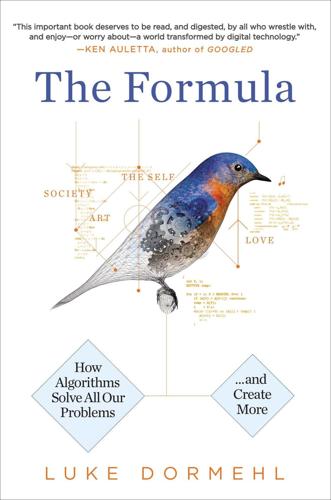
The Formula: How Algorithms Solve All Our Problems-And Create More
by
Luke Dormehl
Published 4 Nov 2014
As Rushkoff writes, these series don’t work their magic through a linear plot, but instead create contrasts through association, by nesting screens within screens, and by giving viewers the tools to make connections between various forms of media . . . The beginning, the middle, and the end have almost no meaning. The gist is experienced in each moment as new connections are made and false stories are exposed or reframed. In short, these sorts of shows teach pattern recognition, and they do it in real time.41 Even today’s most popular films no longer exist as unitary entities, but as nodes in larger franchises—with sequels regularly announced even before the first film is shown. It’s no accident that in this setting many of the most popular blockbusters are based on comic-book properties: a medium in which, unlike a novel, plot points are ongoing with little expectation of an ultimate resolution.
…
Cook County is now one of the best places in the United States at diagnosing chest pain.”4 Recent medical algorithms have been shown to yield equally impressive results in other areas, such as an algorithm able to diagnose for Parkinson’s disease by listening to a person’s voice over the telephone, and another pattern-recognition algorithm able to, quite literally, “sniff” for diseases like cancer. Algorithmizing the World Can everything be subject to algorithmization? There are two ways to answer this question. The first is to approach it purely on a technical level. At present, no, everything cannot be “solved” by an algorithm.

Time Travel: A History
by
James Gleick
Published 26 Sep 2016
For ancient astronomers to forecast the movements of heavenly bodies was vindication and triumph; to predict an eclipse was to rob it of its terror; medical science has labored for centuries to eradicate diseases and extend the lifetimes that fatalists call fixed; in the first powerful application of Newton’s laws to earthly mechanics, students of gunnery computed the parabolic trajectories of cannonballs, the better to send them to their targets; twentieth-century physicists not only managed to change the course of warfare but then dreamt of using their new computing machines to forecast and even control the earth’s weather. Because, why not? We are pattern-recognition machines, and the project of science is to formalize our intuitions, do the math, in hopes not just of understanding—a passive, academic pleasure—but of bending nature, to the limited extent possible, to our will. Remember Laplace’s perfect intelligence, vast enough to comprehend all the forces and the positions and to submit them to analysis.
…
Gibson, who always felt time travel to be an implausible magic, avoided it through ten novels written across thirty years.*6 Indeed, as his imagined futures kept crowding in on the conveyor belt of the present, he renounced the future altogether. “Fully imagined futures were the luxury of another day, one in which ‘now’ was of some greater duration,” says Hubertus Bigend in the 2003 Pattern Recognition. “We have no future because our present is too volatile.” The future stands upon the present, and the present is quicksand. Back to the future once more, though, in Gibson’s eleventh novel, The Peripheral. A near future interacts with a far future. Cyberspace gave him a way in. New rules of time travel: matter cannot escape its time but information can.

Immortality, Inc.
by
Chip Walter
Published 7 Jan 2020
He had little interest in academics except as a starting point. He wanted to do things, not just think about them. Make an impact. In time he created nine companies, each one based on his various inventions, like the Kurzweil piano. The seminal concept behind each of these inventions was “pattern recognition,” a concept at the heart of his view of artificial intelligence. Everything to Kurzweil was a pattern, from human consciousness to the sound of a plucked violin string to the letter “B” (what defines the “B”-ness of a “B”?). His inventioneering made him very acceptable sums of money, and also led to an assortment of prestigious prizes: the Lemelson-MIT Prize, Carnegie Mellon’s Dickson Prize, and the Grace Murray Hopper Award.
…
When Koller developed her cancer gene-mapping techniques at UCSF after receiving her MacArthur grant, the program blasted through data on thousands of genes, and then tested the likelihood that changes created by one gene could be teased out by locating changes in the others. She also developed code that examined the rates at which specific genes within a cell created its corresponding protein, and how that creation depended on signals from proteins encoded by still more genes. All of this sounded a lot like Kurzweil’s pattern-recognition nodes. Both needed to understand context and then react on their own in real time. Kurzweil’s AI nodes were meant to solve a broad range of problems that could eventually lead to immortality. Koller’s algorithms were more specific, delving way, way down into the noisy, and entirely invisible world of organic chemistry by letting the algorithms come up with their own solutions.

Prediction Machines: The Simple Economics of Artificial Intelligence
by
Ajay Agrawal
,
Joshua Gans
and
Avi Goldfarb
Published 16 Apr 2018
Machine-learning techniques are increasingly good at predicting missing information, including identification and recognition of items in images. Given a new set of images, the techniques can efficiently compare millions of past examples with and without disease and predict whether the new image suggests the presence of a disease. This kind of pattern recognition to predict disease is what radiologists do.4 IBM, with its Watson system, and many startups have already commercialized AI tools in radiology. Watson can identify a pulmonary embolism and a wide range of other heart issues. One startup, Enlitic, uses deep learning to detect lung nodules (a fairly routine exercise) but also fractures (more complex).
…
See also jobs “Lady Lovelace’s Objection,” 13 Lambrecht, Anja, 196 language translation, 25–27, 107–108 laws of robotics, 115 learning -by-using, 182–183 in the cloud vs. on the ground, 188–189, 202 experience and, 191 in-house and on-the-job, 185 language translation, 26–27 pathways to, 182–184 privacy and data for, 189–190 reinforcement, 13, 145, 183–184 by simulation, 187–188 strategy for, 179–194 supervised, 183 trade-offs in performance and, 181–182 when to deploy and, 184–187 Lederman, Mara, 168–169 Lee, Kai-Fu, 219 Lee Se-dol, 8 legal documents, redacting, 53–54, 68 legal issues, 115–117 Lewis, Michael, 56 Li, Danielle, 58 liability, 117, 195–198 lighting, cost of, 11 London cabbies, 76–78 Lovelace, Ada, 12, 13 Lyft, 88–89 Lytvyn, Max, 96 machine learning, 18 adversarial, 187–188 churn prediction and, 32–36 complexity and, 103–110 from data, 45–47 feedback for, 46–47 flexibility in, 36 judgment and, 83 one-shot, 60 regression compared with, 32–35 statistics and prediction and, 37–40 techniques, 8–9 transformation of prediction by, 37–40 Mailmobile, 103 management AI’s impact on, 3 by exception, 67–68 Mastercard, 25 mathematics, made cheap by computers, 12, 14 Mazda, 124 MBA programs, student recruitment for, 127–129, 133–139 McAfee, Andrew, 91 Mejdal, Sig, 161 Microsoft, 9–10, 176, 180, 202–204, 215, 217 Tay chatbot, 204–205 mining, automation in, 112–114 Misra, Sanjog, 93–94 mobile-first strategy, 179–180 Mobileye, 15 modeling, 99, 100–102 Moneyball (Lewis), 56, 161–162 monitoring of predictions, 66–67 multivariate regression, 33–34 music, digital, 12, 61 Musk, Elon, 209, 210, 221 Mutual Benefit Life, 124–125 Napster, 61 NASA, 14 National Science and Technology Council (NSTC), 222–223 navigation apps, 77–78, 88–90, 106 Netscape, 9–10 neural networks, 13 New Economy, 10 New York City Fire Department, 197 New York Times, 8, 218 Nordhaus, William, 11 Norvig, Peter, 180 Nosko, Chris, 199 Novak, Sharon, 169–170 Numenta, 223 Nymi, 201 Oakland Athletics, 56, 161–162 Obama, Barack, 217–218 objectives, identifying, 139 object recognition, 7, 28–29 Olympics, Rio, 114–115 omitted variables, 62 one-shot learning, 60 On Intelligence (Hawkins), 39 Open AI, 210 optimization, search engine, 64 oracles, 23 organizational structure, 161–162 Osborne, Michael, 149 Otto, 157–158 outcomes in decision making, 74–76, 134–138 job redesign and, 142 outsourcing, 169–170, 171 Page, Larry, 179 Paravisini, Daniel, 66–67 pattern recognition, 145–147 Pavlov, Ivan, 183 payoff calculations, 78–81 in drug discovery, 136 judgment in, 87–88 Pell, Barney, 2 performance, trade-offs between learning and, 181–182, 187 performance reviews, 172–173 photography digital, 14 sports, automation of, 114–115 Pichai, Sundar, 179–180 Piketty, Thomas, 213 Pilbara, Australia, mining in, 112–114 policy, 3, 210 power calculations, 48 prediction, 23–30 about the present, 23–24 behavior affected by, 23 bias in, 34–35 complements to, 15 consequences of cheap, 29 credit card fraud prevention and, 24–25 in decision making, 74–76, 134–138 definition of, 13, 24 by exception, 67–68 human strengths in, 60 human weaknesses in, 54–58 improvements in, 25–29 as intelligence, 2–3, 29, 31–41 in language translation, 25–27 machine weaknesses in, 58–65 made cheap, 13–15 selling, 176–177 techniques, 13 unanticipated correlations and, 36–37 of what a human would do, 95–102 predictive text, 130 preferences, 88–90, 96–97, 98 selling consumer, 176–177 presidential elections, 59 prices effects of reduced AI, 9–11 human judgment in, 100 sales causality and, 63–64 for ZipRecruiter, 93–94 privacy issues, 19, 49, 98 China and, 219–220 country differences in, 219–221 data collection, 189–190 probabilistic programming, 38, 40 processes.
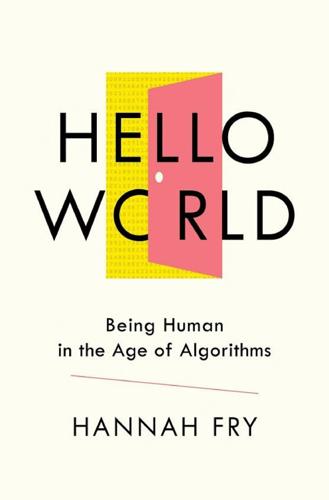
Hello World: Being Human in the Age of Algorithms
by
Hannah Fry
Published 17 Sep 2018
Is it worth prescribing a course of antibiotics to make this boil go away? All are questions of pattern recognition, classification and prediction. Skills that algorithms happen to be very, very good at. Of course, there are many aspects of being a doctor that an algorithm will probably never be able to replicate. Empathy, for one thing. Or the ability to support patients through social, psychological, even financial difficulties. But there are some areas of medicine where algorithms can offer a helping hand. Especially in the roles where medical pattern recognition is found in its purest form and classification and prediction are prized almost to the exclusion of all else.
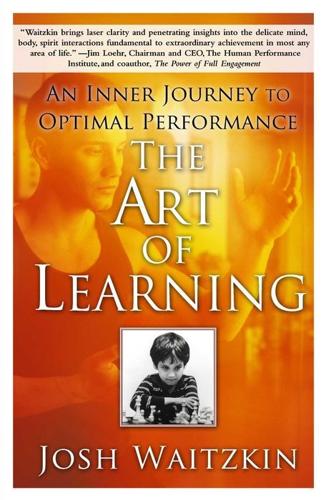
Art of Learning
by
Josh Waitzkin
Published 7 May 2007
As I internalized Tai Chi’s technical foundation, I began to see my chess understanding manifesting itself in the Push Hands game. I was intimate with competition, so offbeat strategic dynamics were in my blood. I would notice structural flaws in someone’s posture, just as I might pick apart a chess position, or I’d play with combinations in a manner people were not familiar with. Pattern recognition was a strength of mine as well, and I quickly picked up on people’s tells. As the months turned into years, my training became more and more vigorous and I learned how to dissolve away from attacks while staying rooted to the ground. It is a sublime feeling when your root kicks in, as if you are not standing on the ground but anchored many feet deep into the earth.
…
I knew from chess that a superior artist could often get into the head of the opponent, mesmerize him with will or strategic mastery, using what I playfully like to call Jedi Mind Tricks. As far as I understood, the keys to these moments were penetrating insight into what makes the other tick and technical virtuosity that makes the discovery and exploitation invisible to the opponent. On the other hand, Chinese martial arts tend to focus more on energy than pattern recognition. My goal was to find a hybrid—energetic awareness, technical fluidity, and keen psychological perception. Chess meets Tai Chi Chuan. In time, I have come to understand those words, At the opponent’s slightest move, I move first, as pertaining to intention—reading and ultimately controlling intention.
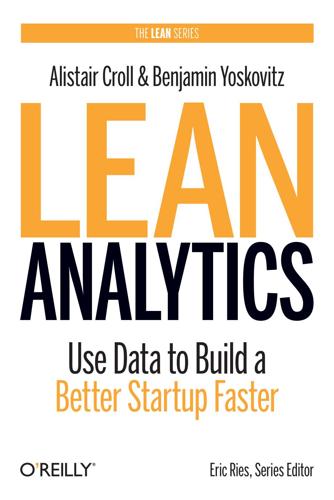
Lean Analytics: Use Data to Build a Better Startup Faster
by
Alistair Croll
and
Benjamin Yoskovitz
Published 1 Mar 2013
While the data you’re collecting at this stage is qualitative, it has to be material enough so that you can honestly say, “Yes, this problem is painful enough that I should go ahead and build a solution.” One customer doesn’t make a market. You can’t speak with a few people, get generic positive feedback, and decide it’s worth jumping in. Signs You’ve Found a Problem Worth Tackling The key to qualitative data is patterns and pattern recognition. Here are a few positive patterns to look out for when interviewing people: They want to pay you right away. They’re actively trying to (or have tried to) solve the problem in question. They talk a lot and ask a lot of questions demonstrating a passion for the problem. They lean forward and are animated (positive body language).
…
exercise for, The Squeeze Toy optimizing, Model + Stage Drives the Metric You Track picking, Solare Focuses on a Few Key Metrics, Measuring the MVP reasons for using, Moz Tracks Fewer KPIs to Increase Focus, Get Executive Buy-in SEOmoz case study, The Discipline of One Metric That Matters Solare Ristorante case study, Four Reasons to Use the One Metric That Matters squeeze toy aspect of, Drawing Lines in the Sand Open Leadership (Li), Engagement Funnel Changes open rate metric, Mailing List Effectiveness optimization about, Data-Driven Versus Data-Informed constrained, Data-Driven Versus Data-Informed diminishing returns for, What to Do When You Don’t Have a Baseline OMTM and, Model + Stage Drives the Metric You Track revenue, Pricing Metrics Orbitz travel agency, Data-Driven Versus Data-Informed, Pricing Metrics organizational culture, instilling, How to Instill a Culture of Data in Your Company ORID approach, How Rally Builds New Features with a Lean Approach Osterwalder, Alex, The Lean Canvas outliers, pitfalls to avoid, Data-Driven Versus Data-Informed OutSight service, How Coradiant Found a Market Ozzie, Ray, Skunk Works for Intrapreneurs O’Donnell, Christopher, Freemium Versus Paid P P&G (Proctor & Gamble), Stars, Dogs, Cows, and Question Marks PaaS (Platform as a Service) model, Model Two: Software as a Service (SaaS) Pacheco, Carlos, Sharing with Others Pacific Crest study, Paid Enrollment paid engine (engines of growth), Virality Engine paid enrollment fremium models versus, Freemium Versus Paid in SaaS model, Paid Enrollment Palihapitiya, Chamath, Attacking the Leading Indicator, Causality Hacks the Future Parmar, Jay, A/B and Multivariate Testing Parse.ly case study, Customer Lifetime Value > Customer Acquisition Cost Patil, DJ, Incumbents patterns and pattern recognition identifying in people’s feedback, Running Lean and How to Conduct a Good Interview ProductPlanner site, Timehop Experiments with Content Sharing to Achieve Virality qualitative data and, Finding a Problem to Fix (or, How to Validate a Problem) paywall model, Wrinkles: Hidden Affiliates, Background Noise, Ad Blockers, and Paywalls Pelletier-Normand, Alexandre, Model Three: Free Mobile App, Mobile Download Size, Bottom Line penny machine example, Metrics for the Revenue Stage percent active mobile users/players metric, Sincerely Learns the Challenges of Mobile Customer Acquisition percent of flagged listings metric, Conversion Rates and Segmentation percentage of active users/players metric, Model Three: Free Mobile App percentage of mobile users who pay metric, Percent Active Mobile Users/Players percentage of users who pay metric, Model Three: Free Mobile App, Average Revenue Per User Perez, Sarah, Mobile Customer Lifetime Value Photoshop application, The Minimum Viable Vision Picatic site, A/B and Multivariate Testing Pinterest site affiliate relationships and, Wrinkles: Hidden Affiliates, Background Noise, Ad Blockers, and Paywalls e-commerce model and, What Mode of E-commerce Are You?
…
identifying pain points, Cloud9 IDE Interviews Existing Customers leading the witness in, How to Avoid Leading the Witness looking for patterns in, Finding a Problem to Fix (or, How to Validate a Problem) scoring considerations, How to Avoid Leading the Witness understanding customer’s daily life, A “Day in the Life” of Your Customer Problem-Solution Canvas about, The Minimum Viable Vision Current Status box, The Problem-Solution Canvas Lessons Learned box, The Problem-Solution Canvas Top Problems box, The Problem-Solution Canvas Varsity News Network case study, VNN Uses the Problem-Solution Canvas to Solve Business Problems Proctor & Gamble (P&G), Stars, Dogs, Cows, and Question Marks product plans, How Rally Builds New Features with a Lean Approach product returns metric, Leading Versus Lagging Metrics product type (business model), About Those People ProductPlanner site, Timehop Experiments with Content Sharing to Achieve Virality proof-of-concept trials, Revenue: Direct Sales and Support Pruijn, Ivar, Cloud9 IDE Interviews Existing Customers purchases per year metric, A Practical Example Q qidiq tool case study, Iterating the MVP QRR (quarterly recurring revenue), The Penny Machine qualified leads metric, Leading Versus Lagging Metrics qualitative metrics about, What Makes a Good Metric?, Finding a Problem to Fix (or, How to Validate a Problem) bias in, Running Lean and How to Conduct a Good Interview in Empathy stage, Stage One: Empathy MVP process and, Measuring the MVP patterns and pattern recognition in, Finding a Problem to Fix (or, How to Validate a Problem) quantitative versus, What Makes a Good Metric? trends and, Running Lean and How to Conduct a Good Interview quantitative metrics about, What Makes a Good Metric? getting answers at scale, Finding People to Talk To limitations of, Data-Driven Versus Data-Informed measuring effects of features, Seven Questions to Ask Yourself Before Building a Feature qualitative versus, What Makes a Good Metric?
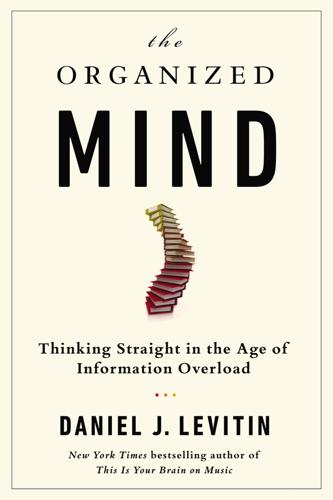
The Organized Mind: Thinking Straight in the Age of Information Overload
by
Daniel J. Levitin
Published 18 Aug 2014
I recently did clinical rounds with two emergency room doctors who had fifty years of clinical experience between them. There was zero verbal gymnastics or formal logic of the kind that Kahneman and Tversky tout. They just recognize a problem. They have gained skill through extreme reinforcement learning, they become exceptional pattern recognition systems. This application of pattern recognition is easy to understand in a radiologist looking at X-rays. But it is also true of any great clinician. They can generate extremely accurate Bayesian probabilities based on years of experience, combined with good use of tests, a physical exam, and a patient history.” A good doctor will have been exposed to thousands of cases that form a rich statistical history (Bayesians call this a prior distribution) on which they can construct a belief around a new patient.
…
Automatic object recognition applied to Where’s Waldo? Aerospace and Electronics Conference (NAECON), 2012 IEEE National, 117–120. and, Garg, R., Seitz, S. M., Ramanan, D., & Snavely, N. (2011, June). Where’s Waldo: Matching people in images of crowds. Proceedings of the 24th IEEE Conference on Computer Vision and Pattern Recognition, 1793–1800. Wikipedia is an example of crowdsourcing Ayers, P., Matthews, C., & Yates, B. (2008). How Wikipedia works: And how you can be a part of it. San Francisco, CA: No Starch Press, p. 514. More than 4.5 million people Kickstarter, Inc. (2014). Seven things to know about Kickstarter.
…
See brain physiology news media, 338–40 Newton, Isaac, 162 New Yorker, 120, 336 New York Times, 6, 339, 365 Nietzsche, Friedrich, 375 Nixon, Richard, 201 NMDA receptor, 167 nonlinear thinking and perception, 38, 215, 217–18, 262, 380 Norman, Don, 35 number needed to treat metric, 236, 240, 247, 264, 264 Obama, Barack, 219, 303 object permanence, 24 Office of Presidential Correspondence, 303 Olds, James, 101 Old Testament, 151 O’Neal, Shaquille, 352–53 One Hundred Names for Love (Ackerman), 364–65 online dating, 130–34, 422n130, 423n132 optical character recognition (OCR), 93, 119, 119 optimal information, 308–10 orders of magnitude, 354–55, 358–59, 361, 363, 400n7 organizational structure, 271–76, 315–18, 470n315, 471n317 Otellini, Paul, 380–81 Overbye, Dennis, 6, 19 Oxford English Dictionary, 114 Oxford Filing Supply Company, 93–94 Page, Jimmy, 174 pair-bonding, 128, 142 paperwork, 293–306 Pareto optimality, 269 parking tickets, 237, 451n237 Parkinson’s disease, 167–68 passwords, xx, 103–5 Patel, Shreena, 258 paternalism, medical, 245, 257 pattern recognition, 28, 249 Patton, George S., 73–74 peak performance, 167, 189, 191–92, 203, 206 Peer Instruction (Mazur), 367 perfectionism, 174, 199–200 periodic table of elements, 372–73, 373, 480n372 Perry, Bruce, 56 Peterson, Jennifer, 368 pharmaceuticals, 256–57, 343, 345–46 Picasso, Pablo, 283 Pierce, John R., 73 Pirsig, Robert, 69–73, 89, 295–97, 300 placebo effect, 253, 255 place memory, 82–83, 106, 293–94 planning, 43, 161, 174–75, 319–26 Plato, 14, 58, 65–66 plausibility, 350, 352, 478n352 Plimpton, George, 200 Plutarch, 340 Poldrack, Russ, 97 Polya, George, 357 Ponzo illusion, 21, 22 positron emission tomography (PET), 40 prediction, 344–45 prefrontal cortex, 161 Area 47, 287 and attention, 16–17, 43, 45–46 and changing behaviors, 176 and children’s television, 368 and creative time, 202, 210 and decision-making, 277, 282 and flow state, 203, 207 and information overload, 8 and literary fiction, 367 and manager/worker distinction, 176 and multitasking, 96, 98, 307 and procrastination, 197, 198, 200–201 and sleep, 187 and task switching, 171–72 and time organization, 161, 165–66, 174, 180 See also brain physiology preselection effect, 331, 343 Presidential Committee on Information Literacy, 365 primacy effect, 55, 408n56 primates, 17–18, 125–26, 135 Prince, 174 Princeton Theological Seminary, 145–46 prior distributions, 249 prioritization, 5–7, 33–35, 379–80 probability.

Four Battlegrounds
by
Paul Scharre
Published 18 Jan 2023
Traditional defense contractors like Lockheed Martin or Northrop Grumman could make a stealth airplane, but the leaders in computer vision were tech companies like Google and Microsoft. DoD was largely flying in the dark with these relationships. That’s where Brendan came in. In July 2017, McCord traveled with Maven leads Lieutenant General Jack Shanahan, Colonel Drew Cukor, and Air Force Colonel Jason Brown to Honolulu to the Computer Vision and Pattern Recognition conference to meet with some of the top minds on computer vision. They also pitched Google, who would go on later that year to join Maven as one of its biggest partners. Brendan was a former submarine officer who’d gone on to work at a venture capital firm and then a tech start-up, leading their AI team.
…
Miller, “Kabul’s Car-Bomb Graveyard Is a Monument to Years of Bloodshed,” Washington Post, January 27, 2016, https://www.washingtonpost.com/world/asia_pacific/kabuls-car-bomb-graveyard-is-a-monument-to-years-of-bloodshed/2016/01/26/81956a6a-b57c-11e5-8abc-d09392edc612_story.html. 542019 car bomb against an Afghan intelligence base: Rupam Jain and Abdul Qadir Sediqi, “Taliban Attack on Afghan Security Base Kills Over 100,” Reuters, January 21, 2019, https://www.reuters.com/article/us-afghanistan-attack/taliban-attack-kills-more-than-100-security-personnel-in-central-afghanistan-defense-ministry-source-idUSKCN1PF0FC. 55“Where we expected a computer vision solution to help us”: Brown, interview. 56Maven: Work, interview. 56processing satellite imagery for the National Geospatial-Intelligence Agency: Brendan McCord, interview by author, February 5, 2020. 56“The Pentagon had been burned”: Will Roper, interview by author, August 6, 2021. 56Deputy’s Management Action Group: “Deputy’s Management Action Group (DMAG),” US Department of Defense Chief Management Officer, n.d., https://cmo.defense.gov/Resources/Deputys-Management-Action-Group/. 56“No one in the Pentagon thought it was a good idea”: Roper, interview. 56“computer vision algorithms for object detection”: Robert Work, “Establishment of an Algorithmic Warfare Cross-Functional Team (Project Maven),” memorandum, April 26, 2017, https://dodcio.defense.gov/Portals/0/Documents/Project%20Maven%20DSD%20Memo%2020170425.pdf. 56“integrate algorithmic-based technology”: Work, “Establishment of an Algorithmic Warfare Cross-Functional Team (Project Maven).” 57Computer Vision and Pattern Recognition conference: McCord, interview. 57“Secretary Carter talk[ed] about the need for DoD to get serious”: McCord, interview. 57“largest dataset for object detection”: McCord, interview. 57an AI-based image classifier that could detect thirty-eight different classes of objects: Cheryl Pellerin, “Project Maven to Deploy Computer Algorithms to War Zone by Year’s End,” news release, US Department of Defense, July 21, 2017, https://www.defense.gov/Explore/News/Article/Article/1254719/project-maven-to-deploy-computer-algorithms-to-war-zone-by-years-end/; Marcus Weisgerber, “The Pentagon’s New Artificial Intelligence Is Already Hunting Terrorists,” Defense One, December 21, 2017, https://www.defenseone.com/technology/2017/12/pentagons-new-artificial-intelligence-already-hunting-terrorists/144742/. 58“We have a large group of people”: Pellerin, “Project Maven to Deploy Computer Algorithms.” 58Bob Work declassified the drone video footage: Work, interview. 58over a million labeled images: Michel, Eyes in the Sky; Gregory C.
…
Goodfellow, Jonathon Shlens, and Christian Szegedy, “Explaining and Harnessing Adversarial Examples” (paper presented at ICLR 2015, San Diego, CA, May 7–9, 2015), https://arxiv.org/pdf/1412.6572.pdf. 239Some look, to a human, like abstract patterns: Anh Nguyen, Jason Yosinski, and Jeff Clune, “Deep Neural Networks are Easily Fooled: High Confidence Predictions for Unrecognizable Images” (presented at Conference on Computer Vision and Pattern Recognition, Boston, MA, 2015), https://arxiv.org/pdf/1412.1897.pdf. 239Adversarial Examples: Nguyen, Yosinski, and Clune, “Deep Neural Networks are Easily Fooled.” 239subtle ways that a human can’t see: Szegedy et al., Intriguing Properties of Neural Networks; Goodfellow, Shlens, and Szegedy, “Explaining and Harnessing Adversarial Examples.” 240“black box” attacks: Papernot et al., SoK; Nicolas Papernot, Patrick McDaniel, and Ian Goodfellow, Transferability in Machine Learning: From Phenomena to Black-Box Attacks Using Adversarial Samples (arXiv.org, May 24, 2016), https://arxiv.org/pdf/1605.07277.pdf. 241Adversarial examples are transferable: Goodfellow, Shlens, and Szegedy, “Explaining and Harnessing Adversarial Examples”; Papernot et al., SoK; Papernot, McDaniel, and Goodfellow, Transferability in Machine Learning; Vahid Behzadan and Arslan Munir, Vulnerability of Deep Reinforcement Learning to Policy Induction Attacks (arXiv.org, January 16, 2017), https://arxiv.org/pdf/1701.04143.pdf; Sandy Huang et al., Adversarial Attacks on Neural Network Policies (arXiv.org, February 8, 2017), https://arxiv.org/pdf/1702.02284.pdf. 241attacks against image classifiers using printed pictures: Alexey Kurakin, Ian J.
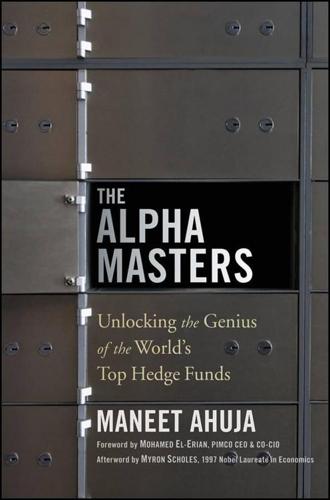
The Alpha Masters: Unlocking the Genius of the World's Top Hedge Funds
by
Maneet Ahuja
,
Myron Scholes
and
Mohamed El-Erian
Published 29 May 2012
For Loeb, having an MBA isn’t as critical as having the training. New hires need about two or three years of experience in a field other than the public investment world, like mergers and acquisitions. “I don’t like the word ‘instinct,’” says Loeb, “because it just sounds like a gut thing. I think what we call instinct is really a type of pattern recognition, which comes from experience looking at the companies and industries and situations that work.” Loeb looks for another quality as well: success at something other than work and school. “We’ve had a lot of excellent musicians and athletes here,” he says. “I don’t want to dismiss the importance of academic credentials, but we want bright people who are really diligent and hardworking, but also have real tenacity and grit who enjoy what they do and have an incredible passion for investing.”
…
So, there’s disproportionate risk and disproportionate reward. Chanos says: “We have a different approach, one in which the partners generate ideas—an investment theme, let’s say—and the analysts help to validate, build upon, or disprove those ideas. Our approach encourages intellectual curiosity, collaboration, and an openness.” Chanos thinks pattern recognition is important and something that simply takes experience, which is one reason why he tasks the firm’s partners with originating the ideas. The partners have extensive experience in seeing patterns in odd-looking financial or press statements, for example. Through their mosaic of experience and wisdom, they are in the strongest position to decide what strategies to explore and not get distracted by the markets’ daily vagaries.

How Everything Became War and the Military Became Everything: Tales From the Pentagon
by
Rosa Brooks
Published 8 Aug 2016
This has led to an increase in so-called signature strikes: drone strikes against unidentified people presumed to be targetable enemies because of their communications patterns and travel patterns.69 The post-9/11 USA PATRIOT Act effectively eliminated the pre-9/11 firewall between foreign intelligence gathering and domestic law enforcement.70 Today, law enforcement officials can access a wide range of sensitive information (including Internet records, telephone metadata, library records, and credit and banking information of U.S. citizens) as long as they can show “reasonable grounds to believe that the tangible things sought are relevant to an authorized investigation . . . to obtain foreign intelligence information not concerning a United States person or to protect against international terrorism or clandestine intelligence activities.”71 This has benefits, but it’s also easy to imagine information gained in this manner—say, evidence of extramarital affairs or psychiatric treatment—being repurposed by law enforcement officials to put pressure on potential witnesses or informants in nonterrorism-related cases.72 Similarly, the sophisticated pattern recognition technologies originally developed for military and intelligence purposes can also easily be used by domestic law enforcement officials. Imagine, for instance, the police use of drone-based imaging technologies such as the military’s Gorgon Stare, a platform that permits the visualization and videotaping of whole neighborhoods.
…
Police will soon have the ability to use such technologies to track the movements and communications of thousands of people, searching for those whose travel patterns suggest links to gang activity.73 The trouble is, these powerful new technologies can also introduce powerful new errors, leading to faulty guilt-by-association assumptions. Say pattern recognition technologies determine that the same unidentified man is repeatedly driving to, from, and between the houses of known gang members, or telephone metadata indicate frequent calls between the man and the known gang members. The data might be assumed to indicate that the unidentified man is part of a criminal network—but in reality, he might simply be the pizza delivery guy.
…
Lee, “Here’s How Phone Metadata Can Reveal Your Affairs, Abortions, and Other Secrets,” Washington Post, August 27, 2013, www.washingtonpost.com/blogs/the-switch/wp/2013/08/27/heres-how-phone-metadata-can-reveal-your-affairs-abortions-and-other-secrets. 73. Imagine, for instance, the use of pattern recognition technologies to identify, investigate, and potentially entrap users of prohibited drugs. See generally Marc Jonathan Blitz, “Video Surveillance and the Constitution of Public Space: Fitting the Fourth Amendment to a World That Tracks Image and Identity,” 82 Texas Law Review 1349, 1351–52 (2004). 74.

Track Changes
by
Matthew G. Kirschenbaum
Published 1 May 2016
This is a common enough problem for digital preservationists; at Emory they solved it by using the VideoWRITER to access the diskettes one last time, printing out hard copies of the scores of documents they contained, including drafts of the poems in many of her most important books.34 “I am negotiating to buy Stephen King’s Wang,” deadpans a character named Ngemi, a collector and connoisseur of antiquarian computers in William Gibson’s novel Pattern Recognition (2003). “The provenance is immaculate.”35 Alas, the line is a throwaway: a few years ago I spoke with King’s longtime personal assistant, Marsha DeFilippo, and inquired about the Wang’s fate—apparently it was sent to California (she thinks) for repair and never came back.36 Somewhere along the way this venerable talisman met with misadventure, or maybe, simply, finally, just gave up the ghost.
…
Details in these last three paragraphs are based on my email correspondence with Milward-Oliver, Ellenor Handley, and the anonymous collector, March–September, 2013. 34. As described in the online finding aid for Clifton’s papers at MARBL. The hard copies were in turn scanned in order to create searchable PDF files for researchers to access. See findingaids.library.emory.edu/documents/clifton1054/series11/. 35. William Gibson, Pattern Recognition (New York: Putnam, 2002), 216. 36. Marsha DeFilippo, interview with the author, March 20, 2012. 37. Lev Grossman, “Jonathan Franzen: Great American Novelist,” Time, August 12, 2010, http://content.time.com/time/magazine/article/0,9171,2010185,00.html. 38. Jacques Derrida, “The Word Processor,” in Paper Machine, trans.
…
See Disks Flores, Ivan, 34, 47 Flusser, Vilém, 49, 226, 229, 230 Fong-Torres, Ben, 65, 66, 67 Foothorap, Robert, 65, 66 Forward, Robert L., 109–110, 288n78 Franzen, Jonathan, 31, 214 Frayn, Michael, 38, 115 FRESS, 121 Friden Flexowriter, 120 Fried, Michael, 185 Friedman, Ted, 296n4 Fuller, Matthew, 205, 236 Funkhouser, Christopher T., 270n57, 307n45 Galey, Alan, 257n42, 302n85 García Márquez, Gabriel, 208, 216 Gass, William, 46, 163 Gerrold, David, 93, 95, 113, 114, 244 Gibson, William, 114–116, 130, 190, 191, 192, 290; Difference Engine, 115, 190; Mona Lisa Overdrive, 115; Neuromancer, 114, 115, 311n45; Pattern Recognition, 214 Gillis, Peter, 195, 311n45 Gingrich, Newt, 96, 283n17 Gitelman, Lisa, 16, 159, 301n77 Glad, Burton, 263n62 Gleick, James, 23, 262n62 Glitches (“bugs”), 62, 69, 72, 100, 105, 207 Goldsmith, Kenneth, 16, 204–205, 315n83 Google: Books, xiv; Docs, 4, 239, 242; Earth, 27 Gorey, Edward, 167 Gottlieb, Nanette, 252n9 Graham, Jorie, 20 Grahame-Smith, Seth, 191–192, 194 Grahn, Judy, 54–55 Graphical user interface, 10, 55, 127, 128, 142 Greenspan, Ezra, xii, xiii Grose, Jessica, 308n8 Grusin, Richard, 19 Guillory, John, 16 Gulliver’s Travels, 40 Gunn, Eileen, 110–111 Guzzardi, Peter, 221, 321n72 Gypsy (application), 127, 129, 130, 141, 235 Gysin, Brion, 179 Haas, Christina, 10, 25, 29 Haigh, Thomas, xi, 34, 144, 155, 175, 293n23 HAL 9000, 69, 70, 93, 94, 115 Halderman, Joe, 102 Hall, Donald, 253n17 Hammond, Ray, 15, 16, 37, 161, 236 Handley, Ellenor, 167, 171, 180–183, 212–213, 234, 245, 317n32 Hanks, Tom, 18, 240 Harper, Richard H.

Market Wizards: Interviews With Top Traders
by
Jack D. Schwager
Published 7 Feb 2012
The more a market is the product of nonspeculative activity, the greater the significance of technical breakouts. Has the greatly increased use of computerized trend-following systems increased the frequency of false technical signals? I think so. The fact that there are billions of dollars out there trading on technical systems that use moving averages or other simple pattern recognition approaches helps produce many more false signals. I have developed similar systems myself, so that I can tell when the other systems are going to kick in. If it is clear that prices are moving because these billions are kicking into the market, it is a lot less interesting than if a breakout occurs because the Russians are buying.
…
Eventually, as I became more confident of trading with the trend, and more able to ignore the news, I became more comfortable with the approach. Also, as I continued to incorporate more “expert trader rules,” my system became more compatible with my trading style. What is your trading style? My style is basically trend following, with some special pattern recognition and money management algorithms. Without divulging trade secrets, how have you been able to so spectacularly outperform standard trend-following systems? The key to long-term survival and prosperity has a lot to do with the money management techniques incorporated into the technical system.
…
The concept of overbought/oversold is also often used in association with contrary opinion to describe when a large majority of traders are bullish or bearish. Outright position. A net long or short position (as opposed to spreads and arbitrage trades, in which positions are counterbalanced by opposite positions in related instruments). Pattern recognition. A price-forecasting method that uses historical chart patterns to draw analogies to current situations. Pit. The area where a futures contract is traded on the exchange floor. Also sometimes called the ring. Portfolio insurance. See Appendix 1. Position limit. See limit position. Price/earnings (P/E) ratio.
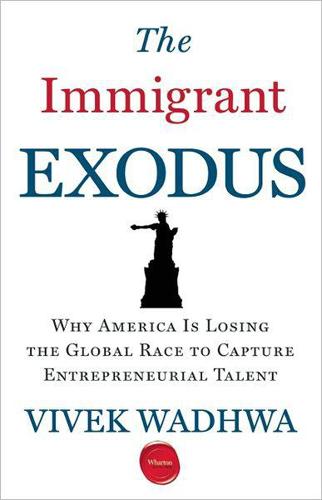
The Immigrant Exodus: Why America Is Losing the Global Race to Capture Entrepreneurial Talent
by
Vivek Wadhwa
Published 1 Oct 2012
Maptia, built by a team of geographers, economists, and coders who are British, Chinese, and Swiss seeks to revolutionize online mapping technology to allow brands and individuals to capture untapped value inherent in geotagged visual content. Andean Designs, with the team hailing from India, seeks to create designer ceramics based on Andean culture. Biometry Cloud, with a team from Chile, is selling cloud-based pattern-recognition web services, APIs, and libraries for mobile devices. The company Dr. Busca, with a team from Brazil, allows patients to book doctor appointments online from mobile devices. Start-Up Chile has attracted a number of entrepreneurs from the United States, as well. H2020 uses mobile phones to collect and map water data to help communities and industries understand the dynamics of their water resources.
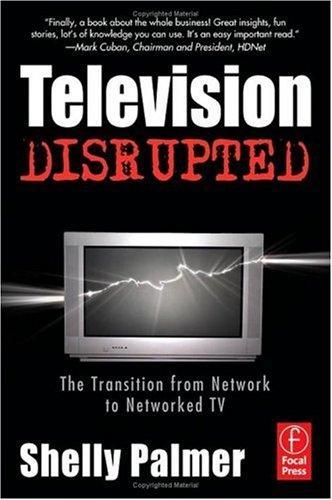
Television disrupted: the transition from network to networked TV
by
Shelly Palmer
Published 14 Apr 2006
These are just some minor issues when dealing with the subtleties of language-based metatagging. Now, let’s imagine the difficulties that automated rich media metatagging might encounter. Video cannot be searched by a simple program for keywords or phrases. To automate the process you will need pattern recognition algorithms for the video portion of the file and speech to text or sound pattern recognition algorithms for the audio portion. As you can imagine, the computer and Copyright © 2006, Shelly Palmer. All rights reserved. 3-Television.Chap Three v3.qxd 3/20/06 7:21 AM Page 46 46 C H A P T E R 3 Internet programming power needed to accomplish these goals pushes the practical limits of current technology.
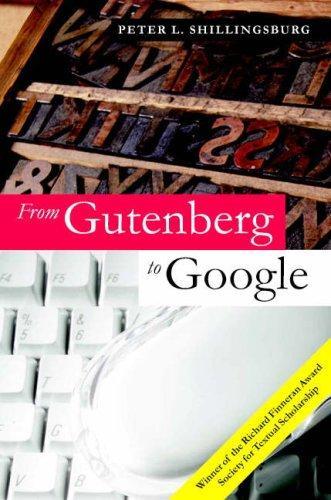
From Gutenberg to Google: electronic representations of literary texts
by
Peter L. Shillingsburg
Published 15 Jan 2006
Publishers and their assistants – editors, compositors, printers, and so on – copy, regularize, beautify, and multiply what the author has done, creating many new objects consisting of molecules of paper and ink. They can do so because they are familiar with the rules and conventions of composition and transmission of texts.12 Readers then receive these material objects and, seeing recognizable 11 12 Web-crawlers and pattern recognition machines that seem to ‘‘read’’ texts and categorize content according to the ‘‘meaning of the text’’ or to index or otherwise parse texts on behalf of readers might be thought of as an exception – reading for meaning without human agency. But the ‘‘machine’’ has to be taught by a human agent how to react to the text and can only react in programmed ways to patterns already foreseen.
…
Jr. 61–2 history 135 accounts 135–6 evidence 135–6; limitations of 136 generative 54 selection principle 136 textual 84 Hockey, Susan 10, 142 Holdeman, David 22 Housman, A.E. 153, 162, 179 Howells, William Dean 179 HyperNietzsche project 91, 108, 142 ignorance 127, 136, 192 information 2 bogus 194 overload 165 quality of 2 infrastructure 112 inspiration 58 Institute for Advanced Technology in the Humanities (IATH) 90–1 intention 53, 55, 65 agent of 55 authorial 13, 18, 25, 45, 53, 55–6, 80, 175–6, 181–2, 187 editorial 17 publisher’s 17 of text 57 intentional fallacy 56, 60 (see also unintentional fallacy) intertextuality 55 intervention, editorial 19 Jackendoff, Ray 43, 46 Jansohn, Christa 151 Johnson, Samuel 189, 192 Jonson, Ben Cambridge Ben Jonson Works 142 Joyce, James 89 The Joyce Estate 89 Kamuf, Peggy 51 Karlsson, Lina 4 Katz, Joseph 84 Keane, Robert 131 Keats, John 68, 74, 126–7 Kegley, Russell 124 Kermode, Frank 42 Kiernan, Kevin 10, 108 knowledge 104–6, 136 historical 130 knowledge sites 2, 5, 69, 88, 92, 95, 97, 100, 137, 148 permission fees 103 quality of 103 Kock, Paul de 30 Landow, George 10, 149 language biological capacity 42 reliability in 41 social development 42 Lavangino, John 10 Law, Graham 129 Lawrence, T.E. 33 Lee, Marshall 80 Lévi-Strauss, Claude 60 lexical codes 16, 17 literary theories 85 Lochard, Eric-Olivier 91, 108 Lougy, Robert E. 158 Lowry, Malcolm 187–8 Luke, Hugh J. 73 MacFarland, Helen 15 MacLean, Rauri 147 Mailloux, Steven 8 Malm, Linda 4, 12 Malory, Sir Thomas 179 Manilius 30 manuscript 12–13, 84 as copytext 168 marginalia 34 markup (tei, sgml, html, jitm, xml, etc.) 89, 94, 98, 106–8, 111, 114–15, 117, 124, 142–3 jitm 118–120 overlapping hierarchies 98, 143 Martens, Gunter 174–5 Matthiessen, F.O. 178 McCarty, Willard 10, 86 McCleod, Randall 110 McGann, Jerome 8, 10–11, 26–8, 38, 72, 76, 142–3, 152–3, 172–3, 185–6, 189 A Critique of Modern Textual Criticism 111 Index ‘‘The Gutenberg Variations’’ 73 Radiant Textuality 74, 143 McKenzie, D.F. 8, 26, 72 McKerrow, Ronald B. 9, 153 McLaverty, James 8 meaning 13, 41, 52–3, 55 adventitious 73, 75 author 8, 12, 52, 61–2, 70, 74, 81 construction of 61 determinate 51, 62, 69 historical 73 intended 68, 73 limits to 61 reader 74, 146 speaker 17 text 55, 65, 140 voluntary 52 media, electronic 4 Melville, Herman Moby-Dick 156 Northwest Newberry edition of Moby Dick 156 White Jacket 178, 186 Meriwether, James B. 40, 180 methodologies 191 Metzdorf Collection, the 129 Middleton, Thomas 164 Milton, John 8 misunderstandings 42, 58, 60, 62, 68 Model Editions Partnership 142 Modern Language Association Center for Editions of American Authors 140, 163 Committee on Scholarly Editions 140–1, 168 Guidelines for Electronic Scholarly Editions 94, 111 Moore, Marianne 40 Murray, John 72 Myers, Gary 64 Nations, Boyd 124 New Testament Project 142 Nichol, John W. 178 Nietzsche, Friedrich see HyperNietzsche Project noise 12, 20 Nowell-Smith, Simon 132 Oliphant, Dave 153 orientations 6 paper 27 Parker, David 142 Parker, Herschel 84, 152–3, 172–3 Parrish Collection, the 129, 146 Pater, Walter 25 Patten, Robert 131 pattern recognition 57 Peacock, Thomas Love 30 Peirce, C.S. 60 Pettit, Alexander 123 Pickwoad, Nicholas 123 Piers Plowman archive 4, 142 Pizer, Donald 84 Plachta, Bodo 26, 170, 173 Plato 58–9 Postal, Paul M. 75 Pound, Ezra 142 presentational elements 16 preservation 2, 23 print culture 88 print literature 34, 75 electronic representation of 3, 76, 85 limitations of 3, 85 re-presentation 20 reproduction of 15–16 print technology 85 constraints of 4, 7 moveable type 36 stereotyping 136 printers 178–9, 186–7 programmers 94 Project Gutenberg 21, 87 proofreading 19, 22 publisher 135, 186–7 German 176 publishing 130 economics of 130 punctuation 35, 181–2, 187 rhetorical 37 syntactical 37 Purdy, R.

Wonderland: How Play Made the Modern World
by
Steven Johnson
Published 15 Nov 2016
Those interpretative paths would lead to some extraordinary breakthroughs: from the early work on cybernetics and game theory from people like Claude Shannon and John von Neumann, to machines like IBM’s Deep Blue that could defeat grandmasters with ease. In cognitive science, the litany of insights that derived from the study of chess could almost fill an entire textbook, insights that have helped us understand the human capacity for problem solving, pattern recognition, visual memory, and the crucial skill that scientists call, somewhat awkwardly, chunking, which involves grouping a collection of ideas or facts into a single “chunk” so that they can be processed and remembered as a unit. (A chess player’s ability to recognize and often name a familiar sequence of moves is a classic example of mental chunking.)
…
Some cognitive scientists compared the impact of chess on their field to Drosophila, the fruit fly that played such a central role in early genetics research. But the prominence of chess in the first fifty years of both cognitive and computer science also produced a distorted vision of intelligence itself. It helped cement the brain-as-computer metaphor: a machine driven by logic and pattern recognition, governed by elemental rules that could be decoded with enough scrutiny. In a way, it was a kind of false tautology: brains used their intelligence to play chess; thus, if computers could be taught to play chess, they would be intelligent. But human intelligence turns out to be a much more complex beast than chess playing suggests.

Fluent Forever: How to Learn Any Language Fast and Never Forget It
by
Gabriel Wyner
Published 4 Aug 2014
These tests are as basic as they get—they play a recording (“lock”) and then ask you what word you heard (“rock” or “lock”?)—but what they lack in panache they make up for in results. I used them to learn the (obnoxiously difficult) sounds of Hungarian in twenty minutes a day for ten days. They’re also a lot of fun; you can feel your ears changing with each repetition. The Benefits of Ear Training: Pattern Recognition and Pattern Breaking When you use minimal pair testing at the beginning of your language journey, you’ll learn much faster in the long run. You’ll have an easier time remembering new words, because they no longer sound foreign. You’ll also understand native speakers better, because your ears are in sync with their speech.
…
See r and l sounds Mandela, Nelson Martin, Steve, 4.1, 4.2 mathematics Matrix, The (film) meaning, 4.1, 4.2, 4.3, 4.4, bm5.1, bm5.2 Memento (film) memorization, 1.1, 2.1 competitive of foreign word of nonsensical bits of grammar of patterns speed of of words memory and concept, 2.1, 2.2 and connections game, 4.1, bm4.1, bm7.1 long-term storage and personal connection, 2.1, 2.2, 4.1 principles of rewriting, 2.1, 2.2 and sound, 2.1, 2.2 and structure, 2.1, 2.2 visual, 2.1, 2.2, bm7.1 mental filter, 2.1, 2.2, 4.1, 4.2, bm7.1 metronome Middlebury Language Schools (Vt.), 1.1, 1.2, 1.3, 6.1, 6.2, 7.1 minimal pairs, 3.1, 3.2, 3.3, bm3.1, bm7.1 mission critical language mistakes, 5.1, 5.2, 6.1, 6.2, 6.3 mnemonic filter mnemonic imagery cards game, 4.1, 5.1, bm7.1 for gender, 4.1, 4.2, bm4.1, bm4.2 of patterns mnemonics See also visual memory Molaison, Henry monolingual dictionary, 1.1, 6.1, 6.2, 6.3, bm6.1, bm7.1, bm7.2 Moonwalking with Einstein (Foer) more is less, 3.1, bm7.1 mouth training, 3.1, 3.2 movies, 6.1, 6.2, 6.3, bm7.1 multiple definitions multiplication multisearches music MyLanguageExchange.com, 6.1, 6.2 Netflix, 6.1, bm7.1 networks neural patterns neurons, 2.1, 2.2, 2.3, 2.4, 3.1, bm2.1, bm7.1, bm7.2 Nolan, Christopher nondeclarative memory nouns, 4.1, 5.1, 5.2, 5.3, 5.4, bm3.1 numbers online dictionary Ortega, Lourdes output, 5.1, bm7.1 overlearning PAO system. See person-action-object (PAO) system Paris (France) Parker, Charlie pattern breaking pattern matching pattern memorization pattern recognition patterns, 3.1, 3.2, 3.3, 4.1, 5.1, 5.2, 5.3 person-action-object (PAO) system, 5.1, bm7.1 personal connection, 2.1, 2.2, 4.1, 4.2, 4.3, bm2.1, bm5.1 phoneme, 3.1, bm7.1, bm7.2 phonetic alphabet, 3.1, 3.2, 3.3, bm2.1 phonetic transcription phrase, bm5.1, bm5.2, bm5.3, bm5.4, bm6.1 phrase book, 1.1, 1.2, 4.1, 4.2, bm7.1 pictures.
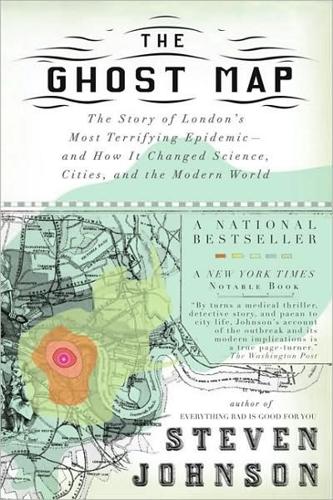
The Ghost Map: A Street, an Epidemic and the Hidden Power of Urban Networks.
by
Steven Johnson
Published 18 Oct 2006
Putrefying foods release several organic compounds into the air; they have names like putrescine and cadaverine. Bacteria recycling energy stored in fecal matter releases hydrogen sulfide into the air. Disgust at the scent of any of these compounds is as close to a universal human trait as we know. You can think of it as a form of evolutionary pattern recognition: over millions of years of evolution, natural selection hit upon the insight that the presence of hydrogen sulfide molecules in the air was a reasonably good predictor that microbial life-forms that could be dangerous if swallowed were nearby. And so the brain evolved a system for setting off an alarm whenever those molecules were detected.
…
But planning for its emergence makes sense, because if such a strain does appear and starts spreading around the globe, there won’t be the equivalent of a pump handle to remove. This is why we’re vaccinating poultry workers in Thailand, why the news of some errant bird migration in Turkey can cause shudders in Los Angeles. This is why the pattern recognition and local knowledge and disease mapping that helped make Broad Street understandable have never been more essential. This is why a continued commitment to public-health institutions remains one of the most vital roles of states and international bodies. If H5N1 does manage to swap just the right piece of DNA from a type A flu virus, we could well see a runaway epidemic that would burn through some of the world’s largest cities at a staggering rate, thanks both to the extreme densities of our cities and the global connectivity of jet travel.
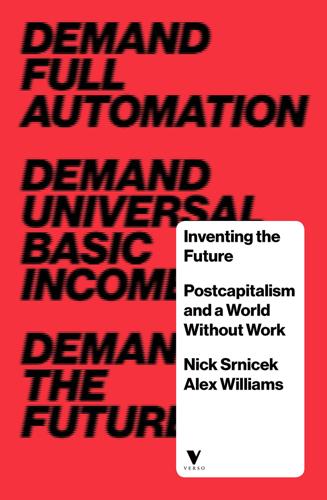
Inventing the Future: Postcapitalism and a World Without Work
by
Nick Srnicek
and
Alex Williams
Published 1 Oct 2015
These are tasks that computers are perfectly suited to accomplish once a programmer has created the appropriate software, leading to a drastic reduction in the numbers of routine manual and cognitive jobs over the past four decades.22 The result has been a polarisation of the labour market, since many middle-wage, mid-skilled jobs are routine, and therefore subject to automation.23 Across both North America and Western Europe, the labour market is now characterised by a predominance of workers in low-skilled, low-wage manual and service jobs (for example, fast-food, retail, transport, hospitality and warehouse workers), along with a smaller number of workers in high-skilled, high-wage, non-routine cognitive jobs.24 The most recent wave of automation is poised to change this distribution of the labour market drastically, as it comes to encompass every aspect of the economy: data collection (radio-frequency identification, big data); new kinds of production (the flexible production of robots,25 additive manufacturing,26 automated fast food); services (AI customer assistance, care for the elderly); decision-making (computational models, software agents); financial allocation (algorithmic trading); and especially distribution (the logistics revolution, self-driving cars,27 drone container ships and automated warehouses).28 In every single function of the economy – from production to distribution to management to retail – we see large-scale tendencies towards automation.29 This latest wave of automation is predicated upon algorithmic enhancements (particularly in machine learning and deep learning), rapid developments in robotics and exponential growth in computing power (the source of big data) that are coalescing into a ‘second machine age’ that is transforming the range of tasks that machines can fulfil.30 It is creating an era that is historically unique in a number of ways. New pattern-recognition technologies are rendering both routine and non-routine tasks subject to automation: complex communication technologies are making computers better than humans at certain skilled-knowledge tasks, and advances in robotics are rapidly making technology better at a wide variety of manual-labour tasks.31 For instance, self-driving cars involve the automation of non-routine manual tasks, and non-routine cognitive tasks such as writing news stories or researching legal precedents are now being accomplished by robots.32 The scope of these developments means that everyone from stock analysts to construction workers to chefs to journalists is vulnerable to being replaced by machines.33 Workers who move symbols on a screen are as at risk as those moving goods around a warehouse.
…
Likewise, while an automated transport system may not be subject to driver strikes, it may be open to strikes by programmers and IT technicians, as well as being more susceptible to blockades, because of the technical limitations of self-driving cars. These vehicles function by reducing environmental variation, making them ‘more akin to a train running on invisible tracks’.80 The intentional manipulation of the environment is therefore likely to be particularly disruptive. Equally, the use of pattern recognition algorithms in various tasks (e.g., diagnostics, emotion- and face-detection, surveillance) is highly susceptible to disruption.81 A technical understanding of machines like these is essential to understanding how to interrupt them, and any future left must be as technically fluent as it is politically fluent.
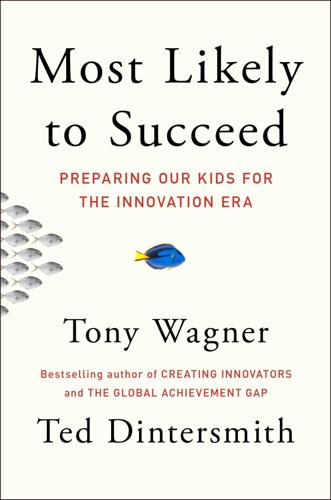
Most Likely to Succeed: Preparing Our Kids for the Innovation Era
by
Tony Wagner
and
Ted Dintersmith
Published 17 Aug 2015
They were needed for numerous professions—surveyors, furniture-makers, architects, merchant marine officers, military personnel, scientists, and engineers—that were vital to our nation’s economy and security. And in some situations, lives depended on the ability to perform low-level operations quickly, error free, under immense time pressure. * * * 20th-Century Model: Math Skills Needed to Succeed * * * Memorization of low-level procedures Pattern recognition Ability to perform calculations by hand Speed Accuracy Ability to perform well under time pressure * * * Our present-day math curriculum was established during the heyday of the slide rule. Invented by Reverend William Oughtred four hundred years ago, this device enables a slide rule whiz to perform multiplication, division, exponentials, logs, and trig functions on hairy numbers.
…
Give feedback on their ability to present and defend their work. We just can’t rank their work on a bell curve against that of millions of peers. * * * 21st-Century Model Math Skills Needed to Succeed * * * Deeply understanding the problem Structuring the problem and representing it symbolically Creative problem-solving Pattern recognition to understand which math “tools” are relevant Adept use of available computational resources Critical evaluation of first-pass results Estimation, statistics, and decision-making Taking chances, risking failure, and iterating to refine and perfect Synthesizing results Presenting/communicating complex quantitative information Collaboration Asking questions about complex quantitative information * * * Our math priorities affect the futures of millions.
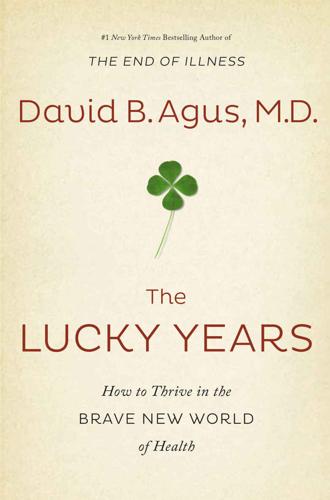
The Lucky Years: How to Thrive in the Brave New World of Health
by
David B. Agus
Published 29 Dec 2015
Which is how art experts can often assess the authenticity of a work of art in an instant, getting an actual physical feeling as they look at a sculpture or painting. Something in their gut tells them this is the real thing or a rip-off. The reason I’m sharing all this detail about spurious art and the experts who argue over what they see is that the subject of objectivity and artistry—and pattern recognition—is relevant in health. We all establish patterns of behavior, or habits, that play into our health and the path that our health takes. And we all have hunch power: the ability to know instinctively what we should be doing to lead healthy, strong lives. These two characteristics—habits and intuition—are ultimately what make us human and will allow us to capitalize on the Lucky Years.
…
L., 159 mental health, 145 portable electronic devices and, 90–91 metabolic syndrome, 121, 122 metabolomics, 188 metastasis, 60–62 Metchnikoff, Élie, 33–35, 33, 35, 48 Miami, University of, Miller School of Medicine at, 214 mice and rats: aging experiments with, 1–3, 3, 4 cancer treatment experiments with, 60–62 digestive tract experiments with, 120, 121–22 microbiome, 48, 85, 119–25 beneficial bacteria and, 33–34 diabetes and, 120–21 emulsifiers and, 121–22 gastric surgery and, 123 sleep and, 122–23 microfinance, 232–33 Middle East, 77 mild cognitive impairment (MCI), 203–4 Minnesota, 103 misinformation, medical, 153–84 anecdotal evidence in, 156 cognitive dissonance and, 159 media and, 153–54 in medical studies, 177–84 motivated reasoning and, 157–61 in peer-reviewed journals, 154 post hoc reasoning in, 156 sweeping statements in, 165, 166–69, 184 Wikipedia and, 154 Mississippi, 47 Missouri, 205 MIT (Massachusetts Institute of Technology), 23, 24, 236 Mitalipov, Shoukhrat, 109 mitochondria, 106–8, 106, 119 mitochondrial diseases, 106, 106, 108–12 mitochondrial DNA, 106, 106, 107–8 mutations in, 107–8 replacement of, 109–12, 110 mitochondrial electron transport chain (mETC), 139–40 “Mitochondrial Eve,” 107 MMR vaccine, 156 moderation, in diet, 144 Monash University, 164 Montana, 3 mood, monitoring of, 149 morbidity, sleep habits and, 146–47 Morgan, Thomas Hunt, 138 mortality rates: aging and, 42–43 decline in, 6–7 exercise and, 148 sleep habits and, 146, 147 motivated reasoning, medical misinformation and, 157–61 motivation, 149 MRI (magnetic resonance imaging), 230 multimorbidity, 129 multiple sclerosis, 59 muscle mass, 194–96, 199 muscle strength, 45 mutation, see genetic mutations MyBabyFace (app), 87 Napoli, Mike, 202–3 National Cancer Institute (NCI), 53, 114, 196 National Cancer Institute Cohort Consortium, 189 National Heart, Lung, and Blood Institute, 47, 141 National Institutes of Health (NIH), 114, 117–18, 205 National Sleep Foundation (NSF), 206 natural immunity, 33–34 Nature, 41, 95, 121, 123 NCI-MATCH (Molecular Analysis for Therapy Choice), 117 near-infrared spectroscopy (NIRS), 66 Nedergaard, Maiken, 208–10 Neogest (app), 87 Neurology, 203 newborns: genetic screening of, 11–12 premature, 87 Newcastle University, 108 New England Journal of Medicine, 8, 9, 24, 32, 178, 183, 218 New Jersey, 111 New Mexico, 68 Newtown shooting, 91 New York, N.Y., 28, 116 New York Academy of Medicine, 2 New York Cancer Hospital, 28 see also Memorial Sloan Kettering Cancer Center New York University, 204 New Zealand, 45, 46 Nexium (esomeprazole), 86 night blindness, 235 NIH Human Microbiome Project, 120 Nike, 199 Nobel Peace Prize, 232 Nobel Prize, 33, 34, 102 “nocebo” effect, 165 noncommunicable diseases, premature deaths from, 130, 131, 132 Northeastern University, 68 Northwestern University, 41 Norton, Larry, 60–61, 62 Nottingham, University of, 87 Nurses’ Health Study, 142–43, 216–17 nursing college, 235 nutritional studies, 161–69 honesty and, 162 lack of reliable data from, 162–63, 164 Nyhan, Brendan, 157, 158, 160 Obama, Barack, 11, 114, 115, 117 obesity and overweight, 22, 47, 121, 122, 123, 147, 188, 194, 215 breast cancer and, 133 chronic disease and, 141 honesty about, 132–34 obsessive-compulsive disorder (OCD), 122 Obstetrics & Gynecology, 132–33 Olser Library of Medicine (McGill University), 73 omega-3 fatty acids, 182–83 omeprazole (Prilosec), 86 “On Lines and Planes of Closest Fit to Systems of Points in Space” (Pearson), 95 Only the Paranoid Survive (Grove), 7 open-access model, 179 opioids, 145 optimism, health and, 65–69 Oregon, University of, 199 Oregon Health & Science University, 109 Ornish, Dean, 166–68 Osler, William, 15, 37, 71–73, 72, 73, 75, 126, 145, 153, 223 Othello (Shakespeare), 202 Ottawa, University of, 183 overweight, see obesity and overweight Oxford University, 216 oxidative stress, 175 oxytocin, 211 p53 gene, 57–58 pain relievers, risks of, 145–46 Paleo diet, 142, 163 parabiosis, 1–4, 3, 21 parasites, spread of, 103 Parkinson’s disease, 59, 108, 163 pattern recognition, 227 PD-L1, 29–30 Pearson, Karl, 95 Pediatric MATCH, 117 Pediatrics, 133 pelvic bone cancer, 176 Pennington Biomedical Research Center, 192 Pennsylvania, University of, 73, 75 Perelman School of Medicine at, 208 perceptual intuition, 228–29 personalized medicine, see precision medicine Peto, Richard, 57 Peto’s paradox, 57 PET (positron-emission tomography) scan, 230 pharmaceutical industry, 166 drug prices and, 56–57, 115–17 public distrust of, 18, 19, 69, 157 pharmacogenomics, precision medicine and, 115 phenylalanine, 12 phenylketonuria (PKU), 12 Philosophical magazine, 95 physical activity, 140 physicians: house calls by, 80 public distrust of, 17–19, 157 pit latrines, 234 Pittsburgh, University of, 196, 214 placebos, 53 plaques, 183 plasma transfusions, 4–5 plate discipline, 204 Plato, 185 PLOS Medicine, 178 pneumonia, 161 polio virus, in immunotherapy, 30, 31 Pope, Frank, 2 population growth, technology and, 27 portable electronic devices, health care and, 79, 90–91 Post hoc, ergo propter hoc fallacy, 156 precision medicine, 8, 20, 36, 102–25 art vs. science in, 112, 118 cancer treatment and, 115 context and, 114–15, 117 cost of, 56–57 historical roots of, 113 pharmacogenomics and, 115 technology and, 37–70 Precision Medicine Initiative, 114, 117 “Predictability: Does the Flap of a Butterfly’s Wings in Brazil Set Off a Tornado in Texas?”
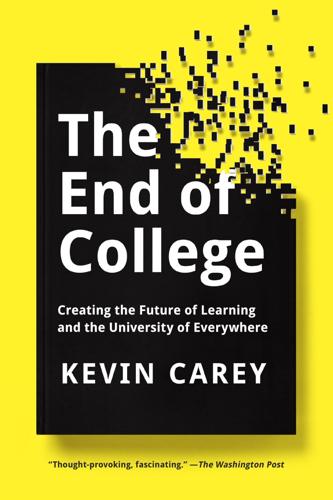
The End of College: Creating the Future of Learning and the University of Everywhere
by
Kevin Carey
Published 3 Mar 2015
So your brain required only a brief glance at that combination of letters to understand that it meant “encyclopedia” and all the word implies. The process was largely automatic, just as you don’t consciously think “that broad, flat surface located approximately three feet below me is the floor, which will support my weight” when you climb out of bed in the morning. The brain’s capacity for pattern recognition is adaptable, flexible, and strong. If the word in that sentence had been spelled “encylopedia,” you would not have been utterly baffled, even though it is missing the second letter c. You might not have even noticed the mistake at all. If, on the other hand, I had written “iderebagon,” you probably would have been confused, unless you happen to be fluent in the verb forms of High Valyrian, a language spoken by certain characters on the HBO television series Game of Thrones.
…
As information technology destroyed jobs that involved simple and repetitive tasks, like painting car parts or shelving paper files, and globalization moved other low-skill jobs overseas, the American jobs that remained fell into several large categories. Some required creativity, judgment, and pattern recognition. Others involved interacting with other people by providing services of different kinds. It’s hard to tell if someone you don’t know personally will be good at either of those kinds of jobs. Living anonymously in large communities is a peculiar modern condition. As transportation and communications became cheaper and people increasingly moved from one urban and suburban area to the next, companies hiring employees were faced with the difficult task of selecting from among large numbers of complete strangers.

AI Superpowers: China, Silicon Valley, and the New World Order
by
Kai-Fu Lee
Published 14 Sep 2018
That often takes Ph.D.-level expertise in these fields. But these advances are incremental improvements and optimizations that leverage the dramatic leap forward of deep learning. THE AGE OF IMPLEMENTATION What they really represent is the application of deep learning’s incredible powers of pattern recognition and prediction to different spheres, such as diagnosing a disease, issuing an insurance policy, driving a car, or translating a Chinese sentence into readable English. They do not signify rapid progress toward “general AI” or any other similar breakthrough on the level of deep learning. This is the age of implementation, and the companies that cash in on this time period will need talented entrepreneurs, engineers, and product managers.
…
A constant stream of headlines about the latest task tackled by AI gives us the mistaken sense that we are living through an age of discovery, a time when the Enrico Fermis of the world determine the balance of power. In reality, we are witnessing the application of one fundamental breakthrough—deep learning and related techniques—to many different problems. That’s a process that requires well-trained AI scientists, the tinkerers of this age. Today, those tinkerers are putting AI’s superhuman powers of pattern recognition to use making loans, driving cars, translating text, playing Go, and powering your Amazon Alexa. Deep-learning pioneers like Geoffrey Hinton, Yann LeCun, and Yoshua Bengio—the Enrico Fermis of AI—continue to push the boundaries of artificial intelligence. And they may yet produce another game-changing breakthrough, one that scrambles the global technological pecking order.

Superintelligence: Paths, Dangers, Strategies
by
Nick Bostrom
Published 3 Jun 2014
For example, neural networks exhibited the property of “graceful degradation”: a small amount of damage to a neural network typically resulted in a small degradation of its performance, rather than a total crash. Even more importantly, neural networks could learn from experience, finding natural ways of generalizing from examples and finding hidden statistical patterns in their input.23 This made the nets good at pattern recognition and classification problems. For example, by training a neural network on a data set of sonar signals, it could be taught to distinguish the acoustic profiles of submarines, mines, and sea life with better accuracy than human experts—and this could be done without anybody first having to figure out in advance exactly how the categories were to be defined or how different features were to be weighted.
…
Suppose that the brain’s plasticity were such that it could learn to detect patterns in some new input stream arbitrary projected onto some part of the cortex by means of a brain–computer interface: why not project the same information onto the retina instead, as a visual pattern, or onto the cochlea as sounds? The low-tech alternative avoids a thousand complications, and in either case the brain could deploy its pattern-recognition mechanisms and plasticity to learn to make sense of the information. Networks and organizations Another conceivable path to superintelligence is through the gradual enhancement of networks and organizations that link individual human minds with one another and with various artifacts and bots.
…
Machine minds designed ab initio could do away with cumbersome legacy systems that helped our ancestors deal with aspects of the natural environment that are unimportant in cyberspace. Digital minds might also be designed to take advantage of fast serial processing unavailable to biological brains, and to make it easy to install new modules with highly optimized functionality (e.g. symbolic processing, pattern recognition, simulators, data mining, and planning). Artificial intelligence might also have significant non-technical advantages, such as being more easily patentable or less entangled in the moral complexities of using human uploads. 24. If p1 and p2 are the probabilities of failure at each step, the total probability of failure is p1 + (1 – p1)p2 since one can fail terminally only once. 25.
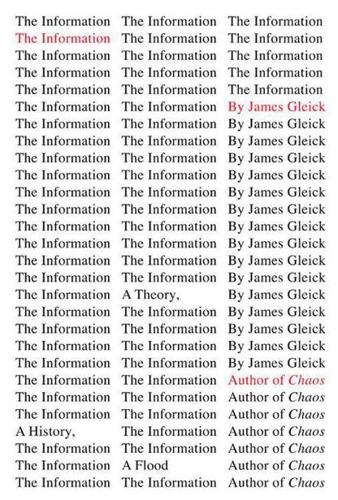
The Information: A History, a Theory, a Flood
by
James Gleick
Published 1 Mar 2011
Ross Ashby, announced that he was working on the idea that “a brain consisting of randomly connected impressional synapses would assume the required degree of orderliness as a result of experience”♦—in other words, that the mind is a self-organizing dynamical system. Others wanted to talk about pattern recognition, about noise in the nervous system, about robot chess and the possibility of mechanical self-awareness. McCulloch put it this way: “Think of the brain as a telegraphic relay, which, tripped by a signal, emits another signal.” Relays had come a long way since Morse’s time. “Of the molecular events of brains these signals are the atoms.
…
.”♦ Broadbent founded an applied psychology division at Cambridge University, and a flood of research followed, there and elsewhere, in the general realm of how people handle information: effects of noise on performance; selective attention and filtering of perception; short-term and long-term memory; pattern recognition; problem solving. And where did logic belong? To psychology or to computer science? Surely not just to philosophy. An influential counterpart of Broadbent’s in the United States was George Miller, who helped found the Center for Cognitive Studies at Harvard in 1960. He was already famous for a paper published in 1956 under the slightly whimsical title “The Magical Number Seven, Plus or Minus Two: Some Limits on Our Capacity for Processing Information.”♦ Seven seemed to be the number of items that most people could hold in working memory at any one time: seven digits (the typical American telephone number of the time), seven words, or seven objects displayed by an experimental psychologist.
…
Crick, Francis, 10.1, 10.2, 10.3, 10.4, 10.5 Crow, James F. n cryptography assessment of system security Babbage’s work in, 5.1, 5.2 early strategies, 5.1, 5.2 Enigma system of, 7.1, 7.2 information theory and mathematics of, 5.1, 5.2, 5.3, 7.1, 7.2 mental skill for pattern recognition in, 7.1, 7.2 perfect cipher system popular interest in, 5.1, 5.2 quantum, 13.1, 13.2, 13.3, 13.4 RSA encryption Shannon’s work on, prl.1, prl.2, 7.1, 7.2, 7.3, 7.4, 7.5, 7.6 Turing’s work on, 7.1, 7.2, 7.3, 7.4 voice encryption, 7.1, 7.2 writing and, 5.1, 5.2 see also code crystals, 9.1, 9.2, 10.1 culture communication technology and, 15.1, 15.2, 15.3 communicative capacity of drums, 1.1, 1.2 function of meme perceptions changed by telegraphy, 5.1, 5.2 replication and transmission of thought processes biased by, 2.1, 2.2 see also oral culture Cummings, E.

The Technology Trap: Capital, Labor, and Power in the Age of Automation
by
Carl Benedikt Frey
Published 17 Jun 2019
The illimitable complexity of the game means that not even the best players are capable of breaking it down into meaningful rules. Instead professionals play by recognizing patterns that emerge “when clutches of stones surround empty spaces.”3 As discussed above, humans still held the comparative advantage in pattern recognition when Frank Levy and Richard Murnane published their brilliant book The New Division of Labor in 2004.4 At the time, computers were nowhere near capable of challenging the human brain in identifying patterns. But now they are. Much more important than the fact that AlphaGo won is how it did so.
…
Based on these features, our algorithm was able to learn about the characteristics of automatable occupations, allowing it to predict the exposure to automation of another 632 occupations. Thus, our final sample covered 702 occupations, in which 97 percent of the American workforce is employed. Using AI for our analysis did not just have the benefit of saving time and labor. Our analysis also underlined the fact that algorithms are now infinitely superior to humans in pattern recognition. We were quite convinced that the work of waiters and waitresses would not lend itself to automation, but our algorithm told us that we were wrong. Analyzing the similarities between the jobs of waiters and other jobs in a more comprehensive manner than we possibly could have done, it predicted that waiters are susceptible to automation.
…
See mass production American Telephone and Telegraph Company (AT&T), 315 annus mirabilis of 1769, 97, 148 anti-Amazon law, 290 Antikythera mechanism, 39 Appius Claudius, 37 Archimedes, 30, 39 Aristotle, 1, 39 Arkwright, Richard, 94, 101 artificial intelligence (AI), 5, 36, 301–41, 228, 342; Alexa (Amazon), 306; AlphaGo (Deep Mind), 301, 302; Amara’s Law, 323–25; artificial neural networks, 304; autonomous robots, 307; autonomous vehicles, 308, 310, 340; big data, 303; Chinese companies, 313; Dactyl, 313; data, as the new oil, 304; Deep Blue (IBM), 301, 302; deep learning, 304; -driven unemployment, 356; Google Translate, 304; Gripper, 313; internet traffic, worldwide, 303; JD. com, 313; Kiva Systems, 311; machine social intelligence, 317; Microsoft, 306; misconception, 311; multipurpose robots, 327; Neural Machine Translation, 304; neural networks, 303, 305, 314; pattern recognition, 319; phrase-based machine translation, 304; Siri (Apple), 306; speech recognition technology, 306; Turing test, 317; virtual agents, 306; voice assistant, 306; warehouse automation, 314 artisan craftsmen, 8; in domestic system, 118, 131; emigration of, 83; factory job, transition to, 124; fates of, 17; full-time, 34; middle-income, 11, 16, 24, 135; replacement of, 9, 16, 218 Ashton, T.
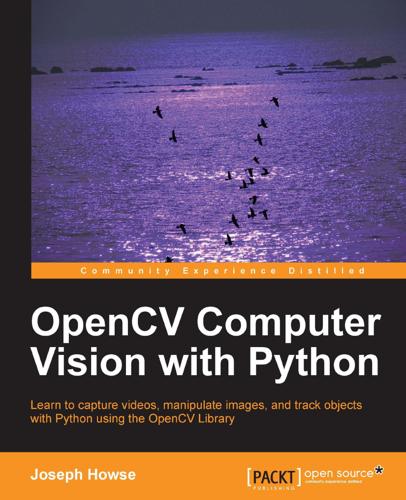
OpenCV Computer Vision With Python
by
Joseph Howse
Published 22 Apr 2013
He participated in Blender source code, an open source and 3D-software project, and worked in his first commercial movie Plumiferos—Aventuras voladoras as a Computer Graphics Software Developer. David now has more than 10 years of experience in IT, with more than seven years experience in computer vision, computer graphics, and pattern recognition working on different projects and startups, applying his knowledge of computer vision, optical character recognition, and augmented reality. He is the author of the DamilesBlog (http://blog.damiles.com), where he publishes research articles and tutorials about OpenCV, computer vision in general, and Optical Character Recognition algorithms.
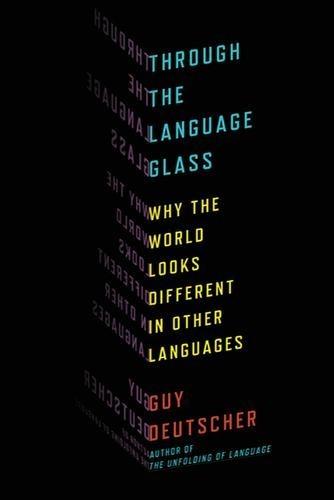
Through the Language Glass: Why the World Looks Different in Other Languages
by
Guy Deutscher
Published 29 Aug 2010
It is quite enough for a toddler to see a few pictures of a cat in a picture book, and the next time she sees a cat, even if it’s ginger rather than tabby, even if it has longer hair, a shorter tail, only one eye, and a hind leg missing, she will still recognize it as a cat rather than a dog or bird or rose. Children’s instinctive grasp of such concepts shows that human brains are innately equipped with powerful pattern-recognition algorithms, which sort similar objects into groups. So concepts such as “cat” or “bird” must somehow correspond to this inborn aptitude to categorize the world. So far, then, we seem to have arrived at a simple answer to the question of whether language reflects culture or nature. We have drawn a neat map and divided language into two distinct territories: the domain of labels and the land of concepts.
…
See also verb-noun fusion case endings morphology and plurality and “Nubians” exhibit (Berlin, 1878) “Ode to the Sea” (Neruda) Odyssey (Homer) Old English “On the Color Sense in Primitive Times and Its Evolution” (Geiger) On the Historical Evolution of the Color Sense (Magnus) “orange” wavelength of Origin of Species, The (Darwin) Orwell, George Ovaherero tribe Oxford English Dictionary Paiute Papua New Guinea parametric variations theory passive vocabulary Pasternak, Boris pattern-recognition algorithms Perkins, Revere Philosophy Today photoreceptor cells Pindar “pink” wavelengths of light and Pinker, Steven Pirahã Planck, Max plurality Polish Portuguese primates Primitive Culture (Tylor) “primitive” peoples, See also specific groups and languages changing attitudes of anthropologists to color words in languages of complex grammar and Geiger’s sequence and Torres Straits study on pronouns “purple” race Ray, Verne “red” “black” and as first color named Geiger’s sequence and Homer and Magnus’s evolution of color sense and primitive people and wavelength, energy, and retina and red-green blindness Regier, Terry relativism retina Rivarol, Antoine de Rivers, W.

Bold: How to Go Big, Create Wealth and Impact the World
by
Peter H. Diamandis
and
Steven Kotler
Published 3 Feb 2015
Your denial kills the flow. But instead, if your response is of the “yes, and . . .” variety—“Yeah, sorry, I had no idea where to put him, did he leave the toilet seat up again?”—then the story goes someplace interesting. Flow’s Creative Trigger If you look under the hood of creativity, what you see is pattern recognition (the brain’s ability to link new ideas together) and risk taking (the courage to bring those new ideas into the world). Both of these experiences produce powerful neurochemical reactions and the brain rides these reactions deeper into flow. This means, for those of us who want more flow in our lives, we have to think different, it’s as simple as that.
…
Instead of tackling problems from familiar angles, go at them backward and sideways and with style. Go out of your way to stretch your imagination. Massively up the amount of novelty in your life; the research shows that new environments and experiences are often the jumping-off point for new ideas (more opportunity for pattern recognition). Most important, make creativity a value and a virtue. This is where we return to moonshot thinking again. As Teller explains, “You don’t spend your time being bothered that you can’t teleport from here to Japan, because there’s a part of you that thinks it’s impossible. Moonshot thinking is choosing to be bothered by that.”
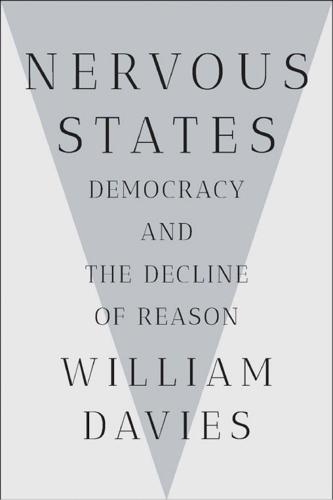
Nervous States: Democracy and the Decline of Reason
by
William Davies
Published 26 Feb 2019
These tasks can be pieced together in the form of code, which a machine can then execute one by one. Mark Zuckerberg’s belief in telepathy ultimately rests on the idea that “thoughts” are nothing but a series of physical motions, whose patterns can potentially be read like the smile on a face or an encrypted message to be cracked. What things mean is really just a question of pattern recognition, that is, what order they appear in. In that sense, all interpretation and understanding is akin to code breaking. Second, the programmer instructs the computer to abide by certain rules, which are then converted into commands to be executed. Activities are ruled by hierarchies, not unlike the military.
…
But what is becoming increasingly clear, now that the early optimism surrounding “cyberspace” and “virtual community” has dissipated, is that the Internet retains something of its military character. Whether in the service of big business such as Facebook or of government agencies, it remains most effective as a tool of surveillance, pattern recognition, and control. The way we are ensnared in digital networks, by apps and platforms, is with the promise of more efficient coordination: it’s not that the world will become better known to us, but that it will become more obedient to us. Uber, for example, relieves us of the need to know taxi numbers, addresses, or maps, replacing them all with a technology of command.
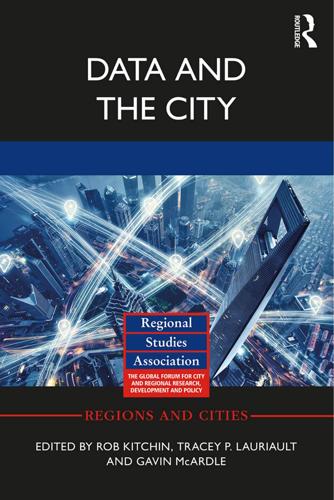
Data and the City
by
Rob Kitchin,Tracey P. Lauriault,Gavin McArdle
Published 2 Aug 2017
With the advent of the open data movement some of these data also feed into public-facing urban dashboards that provide a mix of interactive visualizations of real-time, public administration and official statistical data (Kitchin et al. 2015; see Chapter 9). Further, the production of these new big data has been accompanied by a suite of new data analytics designed to extract insight from very large, dynamic datasets, consisting of four broad classes: data mining and pattern recognition; data visualization and visual analytics; statistical analysis; and prediction, simulation and optimization (Miller 2010; Kitchin 2014b). These analytics rely on machine learning (artificial intelligence) techniques and vastly increased computational power to process and analyse data. Moreover, they enable a new form of data-driven science to be deployed that rather than being theory-led seeks to generate hypotheses and insights ‘born from the data’ (Kelling et al. 2009).
…
Meanwhile, the army had also found a different use for the city lights – to locate and calibrate the recorded night-time scenes accurately, and to estimate the thickness and density of particles in the atmosphere by measuring the diffusion of their contours (Air Weather Service 1974). By 1977, Croft had compiled a first global atlas of city lights that used methods for digitization, processing both original films and digital facsimiles, using pattern recognition to align different viewpoints (Croft and Colvocoresses 1979). A year later, he published the first global composite of night-time images in the Scientific American (Croft 1978). In 1992, DPMS data were opened to the general public, and the NASA Black Marble illustrations have become one of the most popular motifs of space imagery.6 Despite its wide use, OLS/DMSP data are limited in many ways.
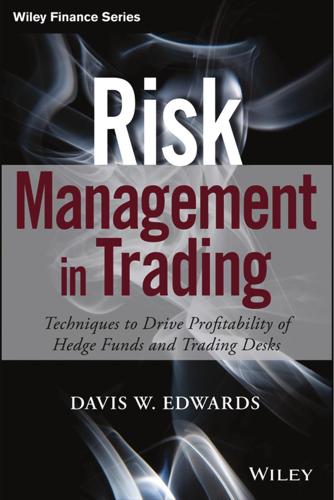
Risk Management in Trading
by
Davis Edwards
Published 10 Jul 2014
For example, a system might recommend that a large trade be broken into several pieces and traded over several hours rather than all at once. Changes in Market. Automated systems can provide warning to identify large changes in prices, volumes, the credit rating of a trading partner, or other changes in market behavior to help traders get ahead of changing markets. Pattern Recognition. Unusual trading behavior can be identified using pattern recognition. For example, a trading system might identify simultaneous purchases and sales in the same asset (wash trades) that are often an indicator of market manipulation. ■ ■ ■ ■ ■ TEST YOUR KNOWLEDGE 1. Sharpe Ratios and Information Ratios both measure what?

Ghost Work: How to Stop Silicon Valley From Building a New Global Underclass
by
Mary L. Gray
and
Siddharth Suri
Published 6 May 2019
Forbes, December 18, 2017. https://www.forbes.com/sites/frederickdaso/2017/12/18/bill-gates-elon-musk-are-worried-about-automation-but-this-robotics-company-founder-embraces-it/. Dayton, Eldorous. Walter Reuther: The Autocrat of the Bargaining Table. New York: Devin-Adain, 1958. Deng, J., W. Dong, R. Socher, L. Li, Kai Li, and Li Fei-Fei. “ImageNet: A Large-Scale Hierarchical Image Database.” In 2009 IEEE Conference on Computer Vision and Pattern Recognition, 248–55. Piscataway, NJ: IEEE. https://doi.org/10.1109/CVPR.2009.5206848. Denyer, Simon. Rogue Elephant: Harnessing the Power of India’s Unruly Democracy. New York: Bloomsbury Press, 2014. DePillis, Lydia. “The Next Labor Fight Is Over When You Work, Not How Much You Make.” Wonkblog (blog), Washington Post, May 8, 2015. https://www.washingtonpost.com/news/wonk/wp/2015/05/08/the-next-labor-fight-is-over-when-you-work-not-how-much-you-make.
…
Murphy, Machine Learning: A Probabilistic Perspective (Cambridge, MA: MIT Press, 2012). [back] 9. Fei-Fei Li, “ImageNet: Where Have We Been? Where Are We Going?,” ACM Learning Webinar, https://learning.am.org/, accessed September 21, 2017; Deng et al., “ImageNet: A Large-Scale Hierarchical Image Database,” in 2009 IEEE Conference on Computer Vision and Pattern Recognition (Piscataway, NJ: IEEE), 248–55. [back] 10. Accuracy went from 72 percent to 97 percent between 2010 and 2016. [back] 11. In fact, Alexander Wissner-Gross said, “Data sets—not algorithms—might be the limiting factor to development of human-level artificial intelligence.” See Alexander Wissner-Gross, “2016: What Do You Consider the Most Interesting Recent [Scientific] News?
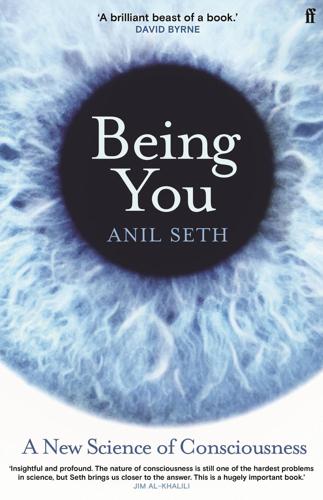
Being You: A New Science of Consciousness
by
Anil Seth
Published 29 Aug 2021
The positions of animals and machines (real and imaginary) are illustrative. In this depiction, you’ll notice that current AI is located quite low on the intelligence scale. This is because it’s unclear whether current AI systems are intelligent in any meaningful sense. Much of today’s AI is best described as sophisticated machine-based pattern recognition, perhaps spiced up with a bit of planning. Whether intelligent or not, these systems do what they do without being conscious of anything. Projecting into the future, the stated moonshot goal of many AI researchers is to develop systems with the general intelligence capabilities of a human being – so-called ‘artificial general intelligence’, or ‘general AI’.
…
Neuroscience of Consciousness. Haun, A. M., & Tononi, G. (2019). ‘Why does space feel the way it does? Towards a principled account of spatial experience’. Entropy, 21(12), 1160. He, K., Zhang, X., Ren, S., et al. (2016). ‘Deep residual learning for image recognition’. In 2016 IEEE Conference on Computer Vision and Pattern Recognition (CVPR). Heilbron, M., Richter, D., Ekman, M., et al. (2020). ‘Word contexts enhance the neural representation of individual letters in early visual cortex’. Nature Communications, 11(1), 321. Herculano-Houzel, S. (2009). ‘The human brain in numbers: a linearly scaled-up primate brain’. Frontiers in Human Neuroscience, 3, 31.

This Is for Everyone: The Captivating Memoir From the Inventor of the World Wide Web
by
Tim Berners-Lee
Published 8 Sep 2025
AI folk would complain that every time they got a new thing working, people would stop calling it AI. Instead, they would just call it ‘language translation’ or ‘pattern recognition’, or ‘satnav’, so AI would not get the credit. When I asked Larry what he was interested in, he said, ‘AI’. I mentioned to him that specialized AI could mimic many of the systems in the brain, but that there did not yet seem to be an AI implementation of a ‘stream of consciousness’. Then, I wondered aloud whether what we called ‘consciousness’ was just another system of the brain, one that, like language translation and pattern recognition, would not seem to be such a big deal once we had found it. ‘You write the code,’ Larry replied, ‘I’ll run it.’
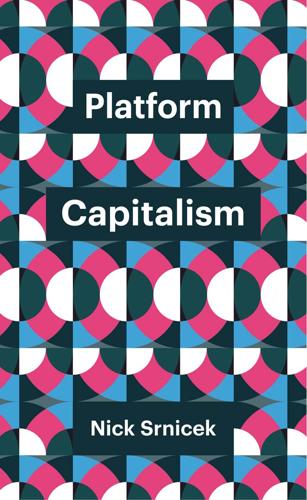
Platform Capitalism
by
Nick Srnicek
Published 22 Dec 2016
Software, for instance, is increasingly deployed on a subscription basis; Adobe, Google, and Microsoft have all started to incorporate this practice. Likewise, the sophisticated analytical tools that Google has developed are now beginning to be rented out as part of its AWS competitor.37 Other businesses can now rent the ability to use pattern recognition algorithms and audio transcription services. In other words, Google is selling its machine-learning processes (and this is precisely where Google sees its advantage over its competitors in the cloud computing field). Microsoft, meanwhile, has built an artificial intelligence platform that gives businesses the software development tools to build their own bots (‘intelligence as a service’, in the contemporary lingo).

The Stack: On Software and Sovereignty
by
Benjamin H. Bratton
Published 19 Feb 2016
This complicates its assignment to clarify things for us, as any query of the world results in so much raw information coming back to the User in response that another question must be asked of the first answer in the form of a reductive visualization, and inside the bounding frame of that diagram, pattern recognition begins to take over for interpretation. This drawing of coherent wholes gathers multiple events and effects into a conceptual whole as if they were a single thing, and in the interfacial landscape, they in fact are one and many at the same time (just as an automobile comprises hundreds of smaller machines, not to mention legal, political, and cultural attributes and determinants, but these are understood in the singular, a car, and the plural at the same time).
…
Ultimately the provision of an affectively compelling and instrumentally effective image of a composite interface chain becomes a strategic expertise, as information designers carve out a niche to provide convincing images of organization, tempo, and narrative.38 For Users, they compose cognitive maps of multiple layers of exchange drawn at once, gathered into provisional total images (for which pattern recognition and intentional, motivated interpretation can start to merge.)39 Moreover, such image interfaces are not only maps of flows as they exist according to whatever logic of reduction they invoke; they are also tools that reproject and extend their conceptual gathering of relations back out onto the world.
…
As a research model, it draws an explosion of traditional, individuated patient models into pluralized platforms in which every User's genomic, nutritional, neuronal, microbial, and environmental data would be systematically aggregated into an information commons where new kinds of analysis and pattern recognition could mature. The thickened interrelations of intrinsic and extrinsic force further dissolve the individuation of the singular patient toward alternative, as yet unnamed patterns of biological plasticity. The tracing of pathologies across multiple biological scales, over time and over multiple populations at such comprehensive scope and granular detail, would surely also reform basic concepts of “disease,” from one recognizing swatches of individuated symptoms toward one governing nuanced economies of symbiotic infection, transfer, and immunization across multiple host sites, and smart enough to see some contamination as enabling health, not preventing it.27 In time we see projects designing artificial intelligence systems that could interpret the exabytes of real time and archived data and produce interpretive causal models, images of emergent patterns, that startle diagnosticians and patients alike.
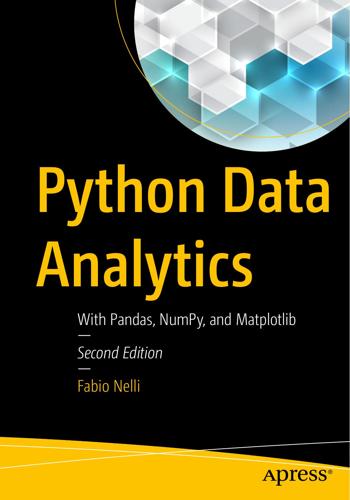
Python Data Analytics: With Pandas, NumPy, and Matplotlib
by
Fabio Nelli
Published 27 Sep 2018
Generally these libraries are defined as SciKits, hence the first part of the name of this library. The second part of the library’s name is derived from machine learning, the discipline pertaining to this library. Machine Learning Machine learning is a discipline that deals with the study of methods for pattern recognition in datasets undergoing data analysis. In particular, it deals with the development of algorithms that learn from data and make predictions. Each methodology is based on building a specific model. There are very many methods that belong to the learning machine, each with its unique characteristics, which are specific to the nature of the data and the predictive model that you want to build.
…
Analyzing these texts has therefore become a source of enormous interest, and there are many techniques that have been introduced for this purpose, creating a real discipline in itself. Some of the more important techniques are the following:Analysis of the frequency distribution of words Pattern recognition Tagging Analysis of links and associations Sentiment analysis The Natural Language Toolkit (NLTK) If you program in Python and want to analyze data in text form, one of the most commonly used tools at the moment is the Python Natural Language Toolkit (NLTK). NLTK is nothing more than a Python library ( https://www.nltk.org/ ) in which there are many tools specialized in processing and text data analysis.

Rage Inside the Machine: The Prejudice of Algorithms, and How to Stop the Internet Making Bigots of Us All
by
Robert Elliott Smith
Published 26 Jun 2019
The word originates from the Latin intueri (to consider) and the late Middle English intuit (to contemplate), and has a multitude of complex meanings including: unconscious cognition, inner sensing, insight, sensibility, the ability to understand something without conscious reasoning, unconscious pattern recognition and even illumination (in the spiritual sense). Intuition as a phenomenon hasn’t been formally studied much in psychology. However, in 2016, a team of Indonesian and Australian psychologists made intuition the subject of a carefully considered experiment.18 One of the researchers, Joel Pearson from the University of New South Wales, described their initial interpretation of intuition this way: Many people use the phrase ‘intuition’ to describe a sensation or feeling they have when making decisions, but these are only descriptions, they don’t provide strong evidence that we can use unconscious information in our brain or body to guide our behaviour.19 To test the theory that people can use unconscious information in decision-making in a way that ties to ‘sensations’ or ‘feelings’, the team conducted the following experiment.
…
Proceedings of the International Conference on Genetic Algorithms 1989, pp. 42–50. 17Discovered in 1929 by the biologist Sewall Wright, using a probability argument based on the binomial distribution. 18John Holland, 1975, Adaptation in Natural and Artificial Systems. Ann Arbor, MI: University of Michigan Press. 19S. Forrest, B. Javornik, R.E. Smith, and A. Perelson, 1993, Using Genetic Algorithms to Explore Pattern Recognition in the Immune System. Evolutionary Computation, 1(3): 191–212. 20David Tuckett, 2011, Minding the Markets: An Emotional Finance View of Financial Instability. Basingstoke: Palgrave Macmillan. 21George Soros, 1988, The Alchemy of Finance: Reading the Mind of the Market. London: Weidenfeld & Nicolson. 22D.
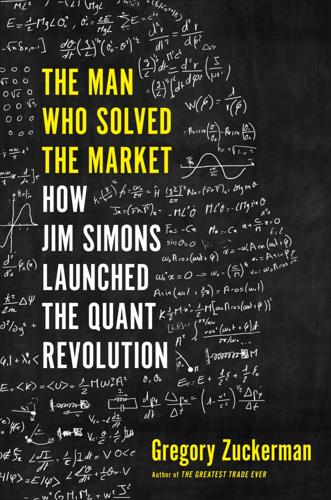
The Man Who Solved the Market: How Jim Simons Launched the Quant Revolution
by
Gregory Zuckerman
Published 5 Nov 2019
Simons had long held this view, but his recent big gains convinced him the approach was a winner. Simons hadn’t spent much time delving into financial history, though. Had he done so, Simons might have realized that his approach wasn’t especially novel. For centuries, speculators had embraced various forms of pattern recognition, relying on methods that bore similarity to some of the things Renaissance was doing. The fact that many of these colorful characters had failed miserably, or were outright charlatans, didn’t augur well for Simons. The roots of Simons’s investing style reached as far back as Babylonian times, when early traders recorded the prices of barley, dates, and other crops on clay tablets, hoping to forecast future moves.
…
Some top, modern traders, including Stanley Druckenmiller, consult charts to confirm existing investment theses. Professor Lo and others argue that technical analysts were the “forerunners” of quantitative investing. However, their methods were never subjected to independent and thorough testing, and most of their rules arose from a mysterious combination of human pattern recognition and reasonable-sounding rules of thumb, raising questions about their efficacy.4 Like the technical traders before him, Simons practiced a form of pattern analysis and searched for telltale sequences and correlations in market data. He hoped to have a bit more luck than investors before him by doing his trading in a more scientific manner, however.
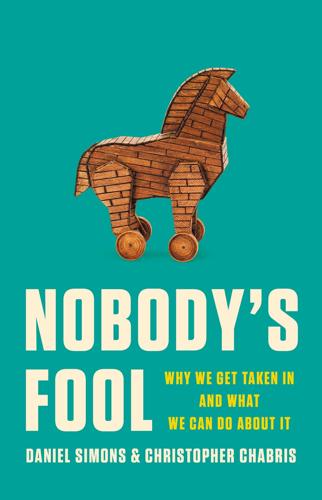
Nobody's Fool: Why We Get Taken in and What We Can Do About It
by
Daniel Simons
and
Christopher Chabris
Published 10 Jul 2023
Imagine trying to spot one shape that’s staying the same color when a dozen other shapes change color every time.28 The difficulty of this task makes what Elisabeth Bik does extremely impressive. Bik, a Dutch microbiologist who became an independent fraud investigator, is a grandmaster at spotting “sameness” across images that are supposed to be entirely different. She relies on exceptional pattern recognition skills to spot duplicated parts of scientific images, even when the copied bits have been tweaked to make them look different—for example, by enlarging, shrinking, rotating, or adding random visual noise to them. Bik has exposed thousands of cases of duplication in published articles and was primarily responsible for exposing at least one “paper mill”—a single source of apparently fabricated data that went into four hundred different scientific articles.
…
In her audit of the journal Molecular and Cellular Biology, she found that fifty-nine papers—about 6 percent—had evidence of altered or duplicated images. Because of her efforts, five papers have been retracted and another forty-one have been corrected.29 Sometimes data duplication is so obvious that finding it doesn’t require exceptional pattern recognition skills—it only requires noticing the mysterious recurrence of the same numbers in different papers. Data sleuth Nick Brown observed a suspicious level of consistency in the numbers of people responding to surveys by nutrition researcher Brian Wansink, even when the recruiting procedures for the studies differed.
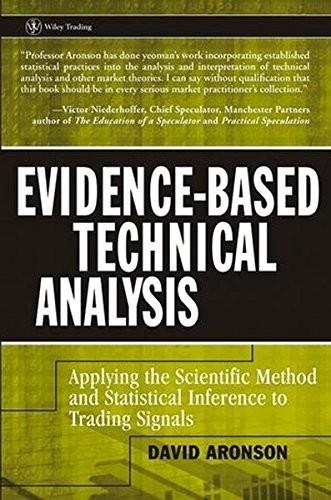
Evidence-Based Technical Analysis: Applying the Scientific Method and Statistical Inference to Trading Signals
by
David Aronson
Published 1 Nov 2006
Two firms with which I had contact in the late 1970s that were using statistical pattern recognition and adaptive learning networks were Braxton Corporation in Boston, Massachusetts, and AMTEC Inc. in Ogden, Utah. I started Raden Research Group, Inc. in 1982. 32. A.M. Safer, “A Comparison of Two Data Mining Techniques to Predict Abnormal Stock Market Returns, Intelligent Data Analysis 7, no. 1 (2003), 3–14; G. Armano, A. Murru, and F. Roli, “Stock Market Prediction by a Mixture of Genetic-Neural Experts,” International Journal of Pattern Recognition & Artificial Intelligence 16, no. 5 (August 2002), 501–528; G. Armano, M.
…
The chapter also contains an excellent list of references of other research relating to this topic. 30. A.M. Safer, “A Comparison of Two Data Mining Techniques to Predict Abnormal Stock Market Returns,” Intelligent Data Analysis 7, no. 1 (2003), 3–14; G. Armano, A. Murru, and F. Roli, “Stock Market Prediction by a Mixture of Genetic-Neural Experts,” International Journal of Pattern Recognition & Artificial Intelligence 16, no. 5 (August 2002), 501–528; G. Armano, M. Marchesi, and A. Murru, “A Hybrid Genetic-Neural Architecture for Stock In- Notes 479 dexes Forecasting,” Information Sciences 170, no. 1 (February 2005), 3–33; T. Chenoweth, Z.O. Sauchi, and S. Lee, “Embedding Technical Analysis into Neural Network Based Trading Systems,” Applied Artificial Intelligence 10, no. 6 (December 1996), 523–542; S.
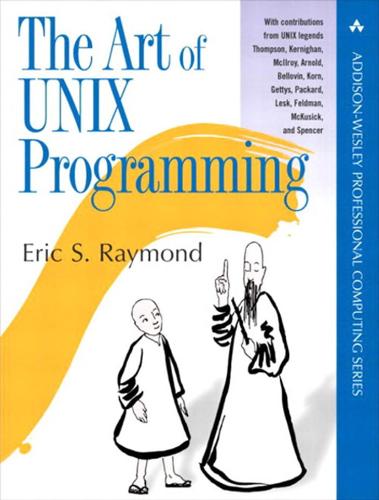
The Art of UNIX Programming
by
Eric S. Raymond
Published 22 Sep 2003
More than once I've found that splitting input handling into two levels made the code much simpler and easier to understand, despite the complexity added by the split itself. -- Henry Spencer lex was written to automate the task of generating lexical analyzers (tokenizers) for compilers. It turned out to have a surprisingly wide range of uses for other kinds of pattern recognition, and has since been described as “the Swiss-army knife of Unix programming”.[130] If you are attacking any kind of pattern-recognition or state-machine problem in which all the possible input stimuli will fit in a byte, lex may enable you to generate code that will be more efficient and reliable than a hand-crafted state machine. John Jarvis at Holmdel [an AT&T laboratory] used lex to find faults in circuit boards, by scanning the board, using a chain-encoding technique to represent the edges of areas on the board, and then using Lex to define patterns that would catch common fabrication errors. -- Mike Lesk Most importantly, the lex specification minilanguage is much higher-level and more compact than equivalent handcrafted C.
…
But there is another effect at work as well; textualized versions of data tend to have useful redundancies (such as using whitespace for visual separation as well as explicit delimiters for parsing). These are present to make them easier to read for humans, but also have the effect of making them more resistant to being irreparably trashed by point failures. A corrupted chunk in a PNG file is seldom recoverable, but the human capacity for pattern recognition and reasoning from context might be able to repair the equivalent SNG form. Over and over again, the Rule of Robustness is clear. Simplicity plus transparency lowers costs, reduces everybody's stress, and frees people to concentrate on new problems rather than cleaning up after old mistakes
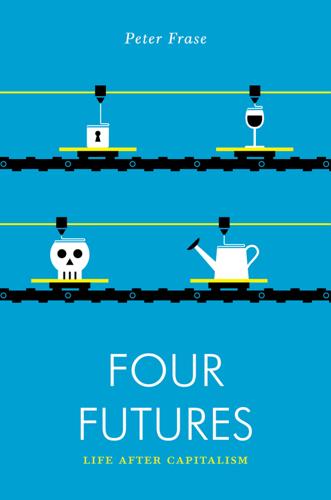
Four Futures: Life After Capitalism
by
Peter Frase
Published 10 Mar 2015
But while such stories are fairly transparent allegories of the class society we already live in, it is not hard to find others who have pushed the boundary further, speculating about the long-term implications of present-day trends. The interface between the actual and the potential manifests itself most potently in the near-future fictions of those authors who place their stories just a few steps ahead of the present, like William Gibson in his early twenty-first-century series of novels (Pattern Recognition, Spook Country, Zero History) or Cory Doctorow in Homeland (and the forthcoming Walkaway). The significance of information technology, automation, surveillance, ecological destruction—themes that will echo throughout this book—recur in these novels. The political implications of different imagined worlds have also begun to come to the fore.
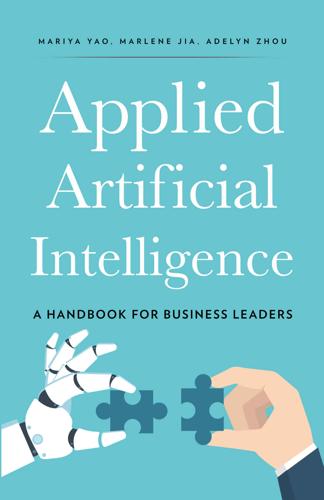
Applied Artificial Intelligence: A Handbook for Business Leaders
by
Mariya Yao
,
Adelyn Zhou
and
Marlene Jia
Published 1 Jun 2018
Or maybe he’s deeply empathetic and understands how you’re feeling even before you do. Human intelligence spans a wide spectrum of modalities, exhibiting abilities such as logical, spatial, and emotional cognition. Whether we are math geniuses or charismatic salesmen, we must utilize cognitive abilities like working memory, sustained attention, category formation, and pattern recognition to understand and succeed in the world every day. Though computers trounce humans at large-scale computational tasks, their expertise is narrow, and machine capability lags behind human intelligence in other areas. The rest of this chapter will help you to understand the state of artificial intelligence today.
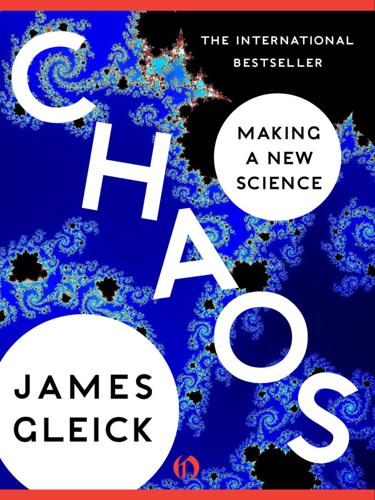
Chaos: Making a New Science
by
James Gleick
Published 18 Oct 2011
Leon Glass of McGill University in Montreal was trained in physics and chemistry, where he indulged an interest in numbers and in irregularity, too, completing his doctoral thesis on atomic motion in liquids before turning to the problem of irregular heartbeats. Typically, he said, specialists diagnose many different arrhythmias by looking at short strips of electrocardiograms. “It’s treated by physicians as a pattern recognition problem, a matter of identifying patterns they have seen before in practice and in textbooks. They really don’t analyze in detail the dynamics of these rhythms. The dynamics are much richer than anybody would guess from reading the textbooks.” At Harvard Medical School, Ary L. Goldberger, co-director of the arrhythmia laboratory of Beth Israel Hospital in Boston, believed that the heart research represented a threshold for collaboration between physiologists and mathematicians and physicists.
…
In astronomy chaos experts use unexpected gravitational instabilities to explain the origin of meteorites—the seemingly inexplicable catapulting of asteroids from far beyond Mars. Scientists use the physics of dynamical systems to study the human immune system, with its billions of components and its capacity for learning, memory, and pattern recognition, and they simultaneously study evolution, hoping to find universal mechanisms of adaptation. Those who make such models quickly see structures that replicate themselves, compete, and evolve by natural selection. “Evolution is chaos with feedback,” Joseph Ford said. The universe is randomness and dissipation, yes.

In Our Own Image: Savior or Destroyer? The History and Future of Artificial Intelligence
by
George Zarkadakis
Published 7 Mar 2016
Several repetitions later, the artificial neural network has ‘learned’ how to perform a good match between input and output – in other words it has learned how to correctly recognise the input. Artificial neural networks have since been used to perform pattern recognition in visual systems, machine learning, as well as other applications in which it has been difficult to code in a conventional way. But the approach was more or less abandoned by the late 1990s as new and more sophisticated statistical and signal-processing techniques arrived on the scene, which could perform most pattern recognition tasks satisfactorily using conventional computer architectures. However, connectionism has enjoyed a spectacular comeback in recent years.
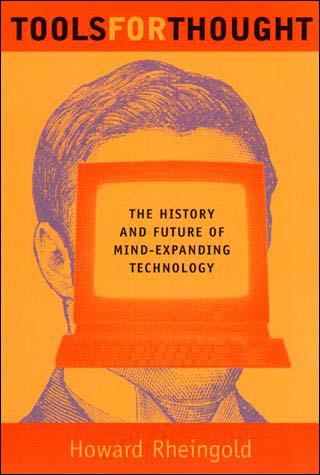
Tools for Thought: The History and Future of Mind-Expanding Technology
by
Howard Rheingold
Published 14 May 2000
If, for example, you were to use a mouse to move a video pointer on the screen to touch a visual representation of a file folder or an out basket, and you could call the folder, for example, from the computer's memory and display a document from it on your screen simply by pointing to it, or send the contents of the computer-stored out basket to somebody else's in basket, then a person would be able to accomplish the kind of work done in offices, even if that person knew nothing about computer programming. Which, after all, was the potential future market that motivated Xerox management to create PARC and cut their whiz kids loose in the first place. Creating new kinds of computer input and output devices to help human pattern recognition mesh with mechanical symbol manipulation is known as "designing the human interface," an art and science that had to be created in the 1970s in the kind of human-computer partnership envisioned by Licklider and Engelbart in the 1960s, which could start to happen by the 1980s. Alan Kay's Smalltalk project played a key role in the evolution of the Alto interface, and as such was integral to the eventual company goals in the office automation market.
…
The understanding that is necessary for that to begin to happen involves admitting that we don't know what the purpose is, then finding out why we don't know, and figuring out together how we might come to understand. Perhaps computers can play a role in understanding that purpose. "This might sound very philosophical, but the nature of understanding is at the core of the problems AI programs are up against right now. Pattern recognition in artificial vision or hearing, the ability to understand natural language, the emulation of problem-solving, the design of an intelligent computer interface -- all of these research questions involve the nature of understanding. We don't know what the purpose of understanding is, or why you have to know a whole lot about the world in general to recognize a face or understand a sentence.

The Costs of Connection: How Data Is Colonizing Human Life and Appropriating It for Capitalism
by
Nick Couldry
and
Ulises A. Mejias
Published 19 Aug 2019
This new model of knowledge requires collecting data continuously, so that N might as well be all. Why is that? One reason we have already given: whereas nineteenth-and twentieth-century smart sampling assumed data collection was expensive and difficult, Machine Learning’s challenge is basically not cost but time (how fast can a potentially infinite series of automated attempts at pattern recognition produce a usable proxy?).68 Since it is the size of the data set (N) over which processors calculate that determines the quality of the proxies generated, there is no reason to stop collecting data. On the contrary, one must always try to gather more. This technique can appear on the ground as little more than wishful thinking, as this employee of the Los Angeles Police Department put it: “All we’re doing right now is, ‘Let’s just collect more and more and more data and something good will just happen.’”69 Why in any case would a competing actor hold back from collecting more data about a human subject when it can do so?
…
The Volokh Conspiracy (blog), January 23, 2012. http://volokh.com/2012/01/23/whats-the-status-of-the-mosaic-theory-after-jones/. Khatchadourian, Raffi. “We Know How You Feel.” The New Yorker, January 12, 2015. Khosla, Aditya, Byoungkwon An, Joseph J. Lim, and Antonio Torralba. “Looking Beyond the Visible Scene.” In Proceedings of the IEEE Conference on Computer Vision and Pattern Recognition, Columbus, OH, 2014, 3710–17. Kirkpatrick, David. The Facebook Effect. New York: Simon and Schuster, 2010. Kitchin, Rob. The Data Revolution. London: Sage, 2014. Kitchin, Rob, and Martin Dodge. Code/Space. Cambridge, MA: MIT Press, 2011. Kitchin, Rob, and Gavin McArdle. “Urban Data and City Dashboards: Six Key Issues.”

The Code: Silicon Valley and the Remaking of America
by
Margaret O'Mara
Published 8 Jul 2019
They were friends as well as colleagues and competitors; they chose their investments based on gut instinct as well as more traditional metrics. Much later, one of the region’s most successful and influential VCs, John Doerr, got in hot water after admitting that a major factor guiding his decisions was “pattern recognition.” The most successful entrepreneurs, he found, “all seem to be white, male, nerds who’ve dropped out of Harvard or Stanford and they absolutely have no social life. So when I see that pattern coming in,” he concluded, “it was very easy to decide to invest.”16 The entrepreneurs of the 1960s might not have been college dropouts in jeans and hoodies, but they, too, fit a pattern: engineering degrees from certain programs, some service in the military, conservative in their bearing and their politics, and utterly consumed and fascinated by technical challenges.
…
Pao lost her case in May of 2015, and while his allies publicly exulted at the win, Doerr was far more subdued. Coming right on the heels of green tech’s challenges, the lawsuit had taken an obvious emotional and professional toll. While remaining Kleiner’s chairman, he stepped back from active investing the following year. It was time for other masters of the universe to take over.23 PATTERN RECOGNITION In the early 1960s, when Draper and Johnson trolled the prune sheds in search of places to invest, the Valley was a remote, lightly settled place, where cul-de-sacs abruptly gave way to orchards and grazing land, striped with lightly traveled highways of raw concrete. Its electronics industry was niche, its brands mostly unknown, its wealth a fraction of what was to come.
…
As wealth grew, so did the mythos around how Silicon Valley was able to generate one innovative company after another. It was about allowing risks and not penalizing failure, they’d say. It was about putting engineering first—finding the best technical talent, with no bias about origin or pedigree. It was about that “pattern recognition” so fatefully identified by John Doerr, looking for the next Stanford or Harvard dropout with a wild but brilliant idea. Of all those assertions, Doerr’s slip-up came closest to the heart of the Valley’s secret. “West Coast investors aren’t bolder because they’re irresponsible cowboys, or because the good weather makes them optimistic,” wrote Paul Graham, founder of the Valley’s most influential tech incubator, Y Combinator, in 2007.
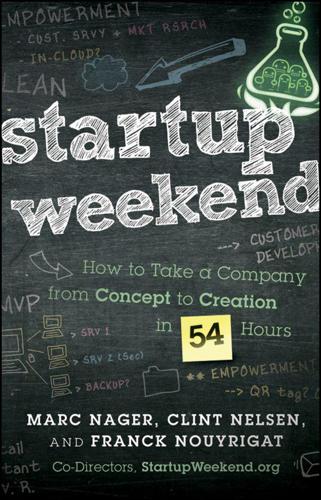
Startup Weekend: How to Take a Company From Concept to Creation in 54 Hours
by
Marc Nager
,
Clint Nelsen
and
Franck Nouyrigat
Published 8 Nov 2011
Having witnessed his own and other startup problems for years, Blank says, “The same issues arose time and again: big company management styles versus entrepreneurs wanting to shoot from the hip; founders versus professional managers; engineering versus marketing; marketing versus sales; missed schedule issues; sales missing the plan, running out of money, [or having to] raise new money.” He says he “began to gain an appreciation of how world-class venture capitalists develop pattern recognition for these common types of problems. ‘Oh yes, company X, they're having problem 343. Here are the six likely ways that it will resolve, with these probabilities.’” Well, maybe it's not that exact. Blank talked to a few of his friends in the venture capital business who acknowledged that they had noticed these problems over the years.
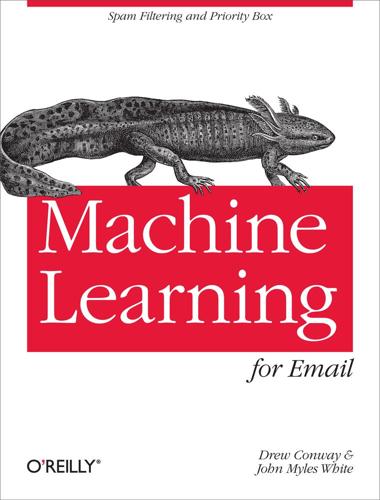
Machine Learning for Email
by
Drew Conway
and
John Myles White
Published 25 Oct 2011
In machine learning, the learning occurs by extracting as much information from the data as possible (or reasonable) through algorithms that parse the basic structure of the data and distinguish the signal from the noise. After they have found the signal, or pattern, the algorithms simply decide that everything else that’s left over is noise. For that reason, machine learning techniques are also referred to as pattern recognition algorithms. We can “train” our machines to learn about how data is generated in a given context, which allows us to use these algorithms to automate many useful tasks. This is where the term training set comes from, referring to the set of data used to build a machine learning process. The notion of observing data, learning from it, and then automating some process of recognition is at the heart of machine learning, and forms the primary arc of this book.
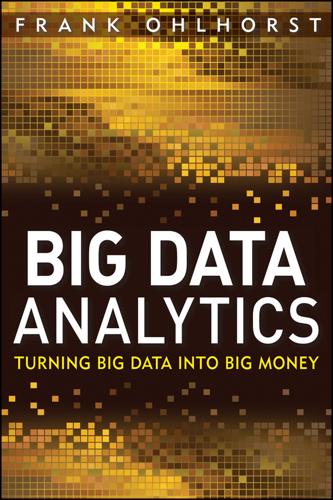
Big Data Analytics: Turning Big Data Into Big Money
by
Frank J. Ohlhorst
Published 28 Nov 2012
Those data, combined with other public data such as census, meteorological, and even social networking data, create a unique capability that services the customer and Amazon as well. Much the same can be said for Facebook, where Big Data comes into play for critical features such as friend suggestions, targeted ads, and other member-focused offerings. Facebook is able to accumulate information by using analytics that leverage pattern recognition, data mash-ups, and several other data sources, such as a user’s preferences, history, and current activity. Those data are mined, along with the data from all of the other users, to create focused recommendations, which are reported to be quite accurate for the majority of users. BIG DATA REACHES DEEP Google leverages the Big Data model as well, and it is one of the originators of the software elements that make Big Data possible.

Braving the Wilderness: The Quest for True Belonging and the Courage to Stand Alone
by
Brené Brown
Published 15 Mar 2017
First as a child, then as a teenager, I found my primary coping mechanism for not belonging in studying people. I was a seeker of pattern and connection. I knew if I could recognize patterns in people’s behaviors and connect those patterns to what people were feeling and doing, I could find my way. I used my pattern recognition skills to anticipate what people wanted, what they thought, or what they were doing. I learned how to say the right thing or show up in the right way. I became an expert fitter-in, a chameleon. And a very lonely stranger to myself. As time passed, I grew to know many of the people around me better than they knew themselves, but in that process, I lost me.
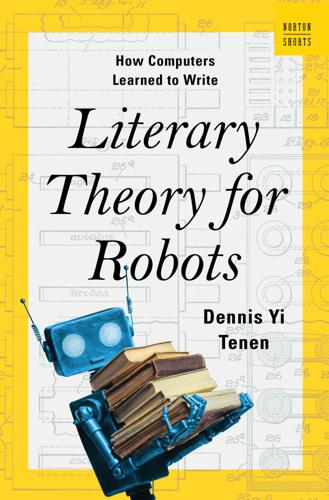
Literary Theory for Robots: How Computers Learned to Write
by
Dennis Yi Tenen
Published 6 Feb 2024
In 1959, Bell Telephone Labs patented a device for the Automated Reading of Cursive Script, US3127588A. The patent proposed using shape frequencies to detect possible errors in the recognition of cursive script. The work by W. W. Bledsoe and I. Browning from the same year pioneered the use of “word context” for the purpose of “pattern recognition and reading by machine.” Thus in the scanning of a text, machines could try to guess an illegible word based on the probability of its individual characters within the sentence. A team from Cornell’s Aeronautical Laboratory—airplanes again!—proposed a novel spell-checking algorithm in 1964.

Nexus
by
Ramez Naam
Published 16 Dec 2012
That she got smarter. Augmented." "We have no proof…" Holtzmann said slowly. "But this is very suggestive." Kade nodded. Her work was indeed very very good. Awe-inspiring even. "The kind of augmentation you're talking about… That's not just a little memory boost or concentration aid. It's better pattern recognition. Better creativity. You're talking about enhancements beyond anything known about in the field today…" Holtzmann nodded. "Yes. She shows signs of being augmented in ways that surpass anything that we know of. That is something which concerns us." He paused, then continued. "And it's interesting that the first report of Nexus 1 came in 2033, just seven years ago… and one year after Dr Shu's return to science."
…
We can feed them enough to keep them at bay. And in the meantime, we'll do some remarkable things of our own. It washed over him. Images and plans from her mind. Mere glimpses. Paths towards boosted intelligence. Uploading minds from brains and into computers. Savant-like cognitive powers. Super memory. Pattern recognition that would put any data miner to shame. Knowledge banks shared mind to mind. True merger into group beings. Transformations of politics, economics, art… Intelligence and creativity that could pry apart the deepest mysteries of physics, of math, of every science known to man. She would change the world.
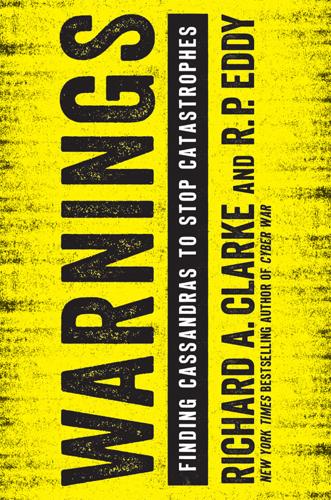
Warnings
by
Richard A. Clarke
Published 10 Apr 2017
When our ancestors had to decide whether or not to explore a cave they’d never seen before, their brains rapidly accounted for how often they’d experienced threats lurking in caves and made a rapid probability calculation as to whether or not exploring the cave was a good idea. Cognitive biases worked well when rapid pattern recognition and decision making was critical for survival, but in the modern world these processes can have unintended consequences. The availability bias tends to prejudice our interpretation and understanding of the world in favor of information that is most accessible in our memory, things that we have experienced in the recent past.
…
Often they are the first ones to generate or discover the data, but the evidence is usually not in question. It is their interpretation of the data that makes them step away from the previous consensus. They tend to see the problem leaping out of their data with a clarity that makes them unique. Some have an almost savant-like quality, an ability of instant pattern recognition in the clutter of data. *ORTHOGONAL THINKER: Cassandras tend to be among the first to think about a certain problem or issue and often are those who acquire the data that then causes alarm. Because of their originality, Cassandras come at the issue from a new perspective and incorporate data and concepts from other fields.

Dawn of the New Everything: Encounters With Reality and Virtual Reality
by
Jaron Lanier
Published 21 Nov 2017
The engineering is similar to efforts to create programs that can probe and use devices without prior instructions. An example of this related work is found here: https://cacm.acm.org/magazines/2017/2/212445-model-learning/fulltext 9. The terminology for algorithms that can interpret images and other natural data is in flux. During the period I recall in this book, the term “pattern recognition” was prominent, while in the new century, “machine learning” became more popular, since it was associated with some more effective ideas based on access to larger data sets. More recently, “deep learning” is ascendant, and it is associated with another step in making more effective algorithms.
…
See also cephalopods Octopus Butler Robot Oculus Oculus Rift oil exploration olfaction Olympics Ono, Yoko open-source movement operating system, first commercial optical bench optical sensors optic nerve optimizing compiler options for action, biasing Oracle Organ Mountains organomania origami oscillators oscilloscope pain management Palestine, Charlemagne Palo Alto Paracomp paralyzed bodies paranoia Parrish, Maxfield Pascal’s Wager patents Patricof, Alan pattern recognition Patterson, Penny Pauline, Mark Pausch, Randy Pavlov, Ivan PDP-11 computer Peace Prize of the German Book Trade Pentland, Sandy perception pereiopods perfection peripheral vision Perlin, Ken Perry, Commodore personal computers personal data, commerce and personal thinking Pfizer Phantom device phantom limbs phenotropic programming Philco photography photons physical reality physical therapy physics Piaget, Jean piano Piestrup, Ann McCormick pinnae Pixar Pixel Planes pixels Plants as Inventors (book) Platonic images Platonic sizzle Platonic Solids Pleiades Pluto Pocket Big Brain pointing and selecting on screen Polhemus Porras Luraschi, Javier postsymbolic communication poverty Power Glove power relationships Prime Directive printers Prisoner’s Dilemma privacy productivity software Programmers at Work (book) programming.

Dreaming in Code: Two Dozen Programmers, Three Years, 4,732 Bugs, and One Quest for Transcendent Software
by
Scott Rosenberg
Published 2 Jan 2006
“The world as our nervous systems know it is not based on single point measurements but on surfaces. Put another way, our environment has not necessarily agreed with our bodies in advance on temporal syntax. Our body is a surface that contacts the world on a surface. For instance, our retina sees multiple points of light at once.” Why not build software around the same principle of pattern recognition that human beings use to interface with reality? Base it on probability rather than certainty? Have it “try to be an ever better guesser rather than a perfect decoder”? These ideas have helped the field of robotics make progress in recent times after long years of frustrating failure with the more traditional approach of trying to download perfect models of the world, bit by painful bit, into our machines.
…
These ideas have helped the field of robotics make progress in recent times after long years of frustrating failure with the more traditional approach of trying to download perfect models of the world, bit by painful bit, into our machines. “When you de-emphasize protocols and pay attention to patterns on surfaces, you enter into a world of approximation rather than perfection,” Lanier wrote. “With protocols you tend to be drawn into all-or-nothing high-wire acts of perfect adherence in at least some aspects of your design. Pattern recognition, in contrast, assumes the constant minor presence of errors and doesn’t mind them.” Lanier calls this idea “phenotropic software” (defining it as “the interaction of surfaces”). He readily grants that his vision of programs that essentially “look at each other” is “very different and radical and strange and high-risk.”

What to Think About Machines That Think: Today's Leading Thinkers on the Age of Machine Intelligence
by
John Brockman
Published 5 Oct 2015
The real advance has been in the number-crunching power of digital computers. That has come from the steady Moore’s Law doubling of circuit density every two years or so, not from any fundamentally new algorithms. That exponential rise in crunch power lets ordinary-looking computers tackle tougher problems of Big Data and pattern recognition. Consider the most popular algorithms in Big Data and machine learning. One algorithm is unsupervised (requires no teacher to label data). The other is supervised (requires a teacher). They account for a great deal of applied AI. The unsupervised algorithm is called k-means clustering, arguably the most popular algorithm for working with Big Data.
…
It doesn’t always get to the top of the highest hill of probability; it does almost always get to the top of the nearest hill. That may be the best any learning algorithm can do in general. Carefully injected noise and other tweaks can speed the climb. But all paths still end at the top of the hill in a maximum-likelihood equilibrium. They all end in a type of machine-learning nirvana of locally optimal pattern recognition or function approximation. Those hilltop equilibria will look ever more impressive and intelligent as computers get faster. But they involve no more thinking than calculating some sums and then picking the biggest. Thus much of machine thinking is just machine hill-climbing. Marvin Minsky’s 1961 review paper “Steps Toward Artificial Intelligence” makes for a humbling read in this context, because so little has changed algorithmically since he wrote it.
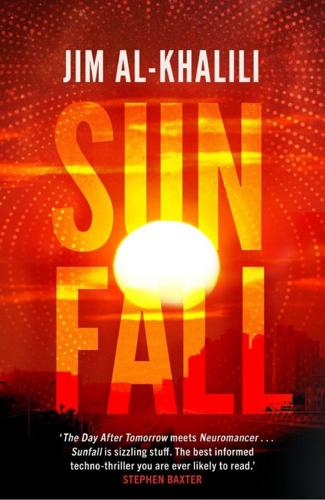
Sunfall
by
Jim Al-Khalili
Published 17 Apr 2019
‘We believe it is, yes,’ replied Sarah without trying to hide her sense of pride in the work, even though, if she were honest, it was mostly done by a powerful AI. The computer simulations of the Sun no longer existed as thousands of lines of code written by human programmers. Like almost everything in the modern world that required the analysis and processing of huge amounts of data, pattern recognition and predicting how those patterns would evolve in time, it was really the job of deep neural networks rather than humans. She suddenly realized that Hogan and the other committee members were looking at her expectantly, waiting for her to say something more. Hogan broke the brief silence. ‘Well … we need to know what it tells us about the predictability and impact of any future events like the one that caused the recent geomagnetic storm that brought that plane down and, more importantly in my view, fried a quarter of the commsats over the Indian Ocean.
…
It wouldn’t help much staying offline either; the thousands of miniature cameras hidden throughout the infrastructure of the city could locate anyone within seconds. But Shireen wasn’t just anyone. She would need to keep on the move, and to stay hidden from prying cameras. A simple disguise wouldn’t be enough to hide her – pattern-recognition software running Grover algorithms would sift through a CCTV database of twenty million people going about their daily business throughout the city to find her just by the way she walked. No, she needed a squelch jammer, an illegal electronic device that could disrupt the video-feed signal from any cameras close enough to biometrically identify the person possessing it.
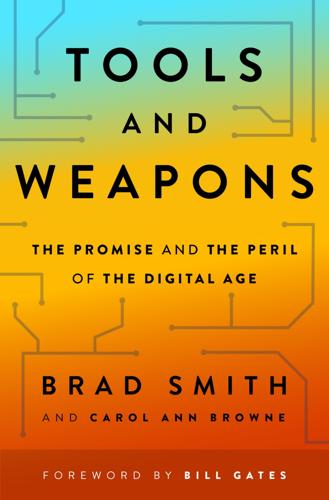
Tools and Weapons: The Promise and the Peril of the Digital Age
by
Brad Smith
and
Carol Ann Browne
Published 9 Sep 2019
“In complex domains, the number of rules can be enormous, and as new facts are added by hand, keeping track of exceptions to and interactions with other rules becomes impractical.”5 In many ways, we go about our human lives not by reasoning through rules, but by recognizing patterns based on experience.6 In hindsight, a system based on such detailed rules was perhaps an approach that only lawyers could love. Since the 1980s, an alternative approach to AI has proved superior. This approach uses statistical methods for pattern recognition, prediction, and reasoning, in effect building systems through algorithms that learn from data. During the last decade, leaps in computer and data science have led to the expanded use of so-called deep learning, or with neural networks. Our human brains contain neurons with synaptic connections that make possible our ability to discern patterns in the world around us.7 Computer-based neural networks contain computational units referred to as neurons, and they’re connected artificially so that AI systems can reason.8 In essence, the deep learning approach feeds huge amounts of relevant data to train a computer to recognize a pattern, using many layers of these artificial neurons.
…
Fifteen years ago, we employed almost one paralegal for every lawyer at Microsoft. But the ability to offer self-service-based assistance on an internal network has contributed to our needing today only one paralegal for every four lawyers. And with the growing ability of AI-based systems to master pattern recognition through machine learning, there is good reason to expect technology to continue to absorb tasks performed not only by paralegals but also by junior attorneys doing legal research. Even an advanced degree or sophisticated set of skills won’t keep workers from being robbed of their jobs. AI will impact every level of the income scale.
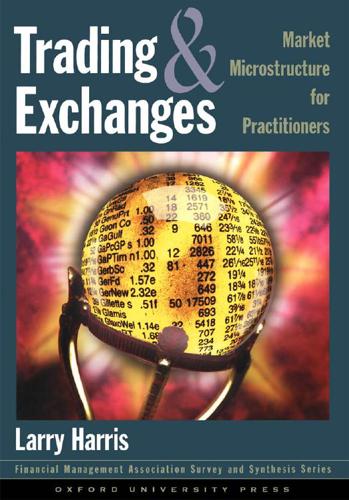
Trading and Exchanges: Market Microstructure for Practitioners
by
Larry Harris
Published 2 Jan 2003
The price impacts of the first momentum traders will correct the mistakes made by other traders. Later momentum traders will simply cause prices to overreact. ◀ * * * They may tabulate frequency distributions, run regressions, or employ esoteric pattern recognition models like neural networks. Some technical traders even consider psychological models in their attempts to predict when traders make mistakes. Whatever the method, the defining characteristic of technical trading is its emphasis on pattern recognition rather than on economic analyses of material fundamental information. Technical trading is not profitable in efficient markets. To trade profitably, technical traders must accurately predict price changes.
…
Technical traders use many methods to identify predictable price patterns. They most commonly analyze price and volume charts. These techniques are not very effective because our eyes often see patterns where none truly exist. Some technical traders use computers to identify patterns in data. * * * ▶ Pattern Recognition in the Food Chain Simple principles of evolutionary biology can explain why we often see patterns that do not really exist. Our primitive ancestors needed to recognize signs of danger in order to survive. Those who could not recognize these signs undoubtedly had fewer children than those who could.
…
See POETS Pacific Stock Exchange, 47 package dealers, 489–91 package trading market, 490 pages, 98 painting the tape, 259 PairGain Technologies, 267 pairs trading, 358–60 palladium, 566, 568 Pandick Press, 586 paper portfolios, 191, 426 parasitic traders, 194, 195, 245, 383, 388 pari-mutuel betting, 91 Paris Bourse, 389, 495, 543 participation in trade, 117 par value, 40 passive liquidity suppliers, 400 passive managers, 197, 442, 488 passive traders, 248–50, 278, 396–97, 423 patience, 532 pattern recognition, 231, 246 payments for order flow, 155, 162, 166, 514 pending orders, 71 penny jumping. See quote matching penny stocks, 255, 265 pension funds, 37, 252, 332 perfect foresight values, 223 perfectly competitive markets, 516, 517 perfectly hedged positions, 184 performance, 442–80 economic approaches to prediction, 475–76 evaluation methods, 445–50 evaluation problems, 443–45, 448, 466–71 of management and trading firms, 478 of managers, 451, 453–57, 462, 477 past, 452 portfolio, 443, 451 prediction problem, 450–52 statistical evaluation, 452–71 unforseeable factors, 443–44 perishable goods, 412, 416 permanent price effect, 435 permanent spread component.

Tools of Titans: The Tactics, Routines, and Habits of Billionaires, Icons, and World-Class Performers
by
Timothy Ferriss
Published 6 Dec 2016
Jim once worked on a study involving large companies and research institutes trying to solve incredibly difficult problems like new circuit board designs. Volunteers were given psychedelics, and 44 out of the 48 problems were “solved,” meaning resulted in a patent, product, or publication. Jim attributes this to enhanced focus and pattern recognition. Low enough doses (i.e., 100 mcg of LSD or 200 mg of mescaline) can immensely increase the capacity to solve problems. “We said, ‘You may come to this study, and we’ll give you the most creative day of your life. But you have to have a problem which obsesses you that you have been working on for a couple of months and that you’ve failed [to solve].’ . . .
…
As an entrepreneur and investor, I am surrounded by people who try to categorize and generalize the factors that make a company successful. . . . Most people forget that innovation (and investing in innovation) is a business of exceptions. “It’s easy to understand why most investors rely on pattern recognition. It starts with a successful company that surprises everyone with a new model. Perhaps it is Uber and on-demand networks, Airbnb and the sharing economy, or Warby Parker and vertically integrated e-commerce. What follows is endless analysis and the mass adoption of a playbook that has already been played. . . .
…
Harris), Tinker, Tailor, Soldier, Spy; Little Drummer’s Girl; The Russia House; The Spy Who Came in from the Cold (John le Carré), The Big Short: Inside the Doomsday Machine (Michael Lewis), The Checklist Manifesto (Atul Gawande), all of Lee Child’s books Godin, Seth: Makers; Little Brother (Cory Doctorow), Understanding Comics (Scott McCloud), Snow Crash; The Diamond Age (Neal Stephenson), Dune (Frank Herbert), Pattern Recognition (William Gibson) AUDIOBOOKS: The Recorded Works (Pema Chödrön), Debt (David Graeber), Just Kids (Patti Smith), The Art of Possibility (Rosamund Stone Zander and Benjamin Zander), Zig Ziglar’s Secrets of Closing the Sale (Zig Ziglar), The War of Art (Steven Pressfield) Goldberg, Evan: Love You Forever (Robert Munsch), Watchmen; V for Vendetta (Alan Moore), Preacher (Garth Ennis), The Hitchhiker’s Guide to the Galaxy (Douglas Adams), The Little Prince (Antoine de Saint-Exupéry) Goodman, Marc: One Police Plaza (William Caunitz), The 4-Hour Workweek (Tim Ferriss), The Singularity Is Near (Ray Kurzweil), Superintelligence: Paths, Dangers, Strategies (Nick Bostrom) Hamilton, Laird: The Bible, Natural Born Heroes (Christopher McDougall), Lord of the Rings (J.R.R.
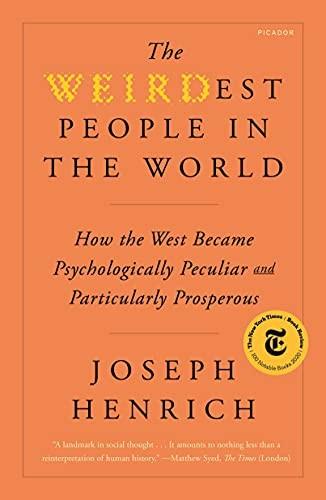
The WEIRDest People in the World: How the West Became Psychologically Peculiar and Particularly Prosperous
by
Joseph Henrich
Published 7 Sep 2020
Crucially, there was no obvious way to tell whether a psychological pattern found in Western undergraduates would hold cross-culturally, since existing research going back over a half century had revealed differences across populations in people’s susceptibility to visual illusions, spatial reasoning, memory, attention, patience, risk-taking, fairness, induction, executive function, and pattern recognition. Four years after our lunch in the basement, Ara, Steve, and I finally published “The weirdest people in the world?” in the journal Behavioral and Brain Sciences (2010), along with a commentary in Nature magazine. In these publications, we dubbed the populations so commonly used in psychological and behavioral experiments as “W.E.I.R.D.” because they came from societies that are Western, Educated, Industrialized, Rich, and Democratic.
…
Evidence from the modern world confirms that improved food availability and nutrition during gestation, infancy, and early childhood fosters the development of valued cognitive abilities and social motivations. Shocks like famines and food shortages, if they occur before about age five, inhibit the development of self-control, positive-sum thinking, and the acquisition of mental skills related to abstract problem-solving and pattern recognition. Early-life deprivations may also suppress the internalization of costly social norms, such as those related to impersonal trust and cooperation. In the modern world, this results in long-term effects that lower people’s educational attainment and income as adults.59 Historically, agricultural productivity in premodern Europe had been on the rise for centuries prior to the Industrial Revolution for both technological and psychological reasons.
…
Muthukrishna, Michael mutual aid mutual monitoring mutual obligations Nairobi Napoleon Bonaparte natural disasters natural philosophers natural rights natural selection; CREDs and; cultural evolution and; cultural learning and navigation neolocal residence nepotism Nestorian Christianity Nestorian Church Netherlands neurocognitive functioning neurological diversity neuroticism Newcomen, Thomas New Guinea New Ireland New Spain Newton, Isaac New World New York City New York Stock Exchange New Zealand Nggwal Bunafunei Ninety-Five Theses (Luther) Ningxia Nisbett, Richard nonconformity nonrelational institutions nonrelational morality nonrelational responses nonreproductive sexual activity Norenzayan, Ara normative standards norm-breakers norm-violators Norway novel animals nuclear family; children and; gradual creation of; kin-groups breaking down into; with neolocal residence Nuer nutrition obedience obligations occupational specialization Oceania “Of the Influence of Commerce on Manners” (Smith) Old Bailey Old High German Old Poor Law of 1601 Old World one-child policy Onorato, Massimiliano Gaetano orchestrated teamwork effect organizational norms organizational policies Oriental Church Oromo peoples Orthodox Church, see Eastern Orthodox Church other-esteem Otto I Out-In-Group Trust ownership paddy rice Paik, Christopher Paine, Thomas pair-bonding; bird species and; inbreeding avoidance and; instincts; monogamy and; polygynous Pakistan Paleolithic societies papal decisions papal privilege papermaking Papin, Denis parasite stress parenting parent-to-child transmission Parisian Royal Academy of Sciences participatory formal institutions participatory governance particularism particularistic responses Pashtun Passenger’s Dilemma pastoral societies paternity path-dependence patience; cultural evolution and; diffusion of; global distribution of; incentivizing; intensive kinship and; market integration and; measures of; shift in patriarchal patrilineages patriarchal power patrilineal clans patrilineal families patrilocal residence pattern recognition peace Peace of Augsburg peace treaties Pearl River delta peer-punishing opportunities Penn, William People’s Republic of China perjury permanent ties personal attributes personal identity personality personality psychologists personal mobility Peruvian Amazon Petition of Right petroleum PGG, see Public Goods Game Philadelphia Philippines Philosophical Transactions of the Royal Society (journal) pig rearing Pinochet, Augusto plagiarism plague plant growth pocket watches poison polarization political centralization political institutions political integration political legitimacy political organization political parties political pluralism political power political units polyandrous marriage polyandry polygamous marriage polygamy polygynous marriage; children and; Hadza hunter-gatherers and; intergroup competition and; legal; low-status unmarried men and; women and polygynous pair-bonding polygynous societies polygyny; excess men created by; social dynamics of polygyny bias Polynesia Polynesian gods Pontius Paulinus population growth population-level differences pornography positive-sum thinking poverty prayer times pre-Christian Europe pre-Columbian period prefrontal cortex preindustrial world premarital labor period premodern states; clans and; formation of; kin-based institutions and; WEIRD societies and prestige-biased group transmission Principia (Newton) printing press private businesses private contracts private security property rights prostitution Protestantism; capitalism and; Cistercian Order and; Counter-Reformation and; democratic governance and; diffusion of; economic growth and; economic prosperity and; forms of; incest and; individualism and; Industrial Revolution and; literacy and; missionaries; origins of; Prussia and; Reformation; self-regulation and; sola scriptura and; spread of; suicide inducing effects of; Switzerland and; WEIRD psychology and Prussia psychological adaptations psychological by-products psychological changes psychological differences psychological diversity psychological fit psychologically-potent rituals psychological shifts psychological tethering psychological variation; China and; within Europe; global; India and; in individualism; Industrial Revolution and; patterns of psychology; food availability and; institutions and; kin-based institutions and; see also human psychology public goods Public Goods Game (PGG); average contributions in; China and; cooperation in; cousin marriage and; noncompetitive; Switzerland and public knowledge public services punishment; based on mitigating factors; collective; for crimes in China; gods and; informal; intensive kinship and; marriage and; of peers; supernatural; threat of; types of; see also Third-Party Punishment Game purgatory Puritan New England Pythagoras’s theorem Al Qaeda Qinghai Quakers racism RAG, see Random Allocation Game raiding Random Allocation Game (RAG) rationality reading refugees regulated-relational societies; kin-based institutions in; self-control; shame and relatedness relational contexts relational freedom relational mobility relational networks relational responses relationship-based norms religions, evolution of religiosity religious architecture religious beliefs; earthquakes and; economic productivity and; intergroup competition and; rituals and; sharing; shocks on religious convictions religious faith religious groups; intergroup competition and; war and remarriage Renaissance representative governance representative government Republic of Letters reputation; collective; judgments of; social norms enforced by; standards of residential mobility revenge-related actions revenge-seeking Revolutionary War rhythmic music Ricard, Samuel rice cultivation; China and; India and; intensive kinship and; psychological differences and; self-focus and Richardson, Gary Rights of Man (Paine) risk-taking rites of terror ritually-bonded young men rituals; ancestor gods and; attendance at; character of; communal; dance and; doctrinal; imagistic; initiation; intergroup competition and; internal harmony and; major; obligations of; psychologically-potent; religious beliefs and; social norms and; violation of; women and Robinson, James Rod and Frame Task Roebuck, John Roman Catholic Church, see Western Church Roman Empire; brothels and; Holy; kin-based institutions and; law of; Western Roman law romantic love Rome (ancient) Rousseau, Jean-Jacques routine practices Royal Exchange rubber boom ruggedness rule-based categories rule of law rural populations Rustagi, Devesh Salali, Deniz salvation Samburu Samoans Satan Saudi Arabia Savery, Thomas scale of cooperation scaling up Schulz, Jonathan Scientific Revolution Scotland Scottish Enlightenment second-generation immigrants secular primes secular rulers sedentism segmentary lineages; clans and; egalitarian societies and; Scotland and self-concepts self-control; diffusion of; influences on; intensive kinship and; shift in self-discipline self-enhancement self-esteem self-focus Self-focus Task Self Game self-governance self-government self-interest self-interested benchmark self-obsession self-regulation; incentivizing; Industrial Revolution and; marriage and; Middle Ages and; Protestantism and; psychological shifts and Sepik communities sexual attraction sexual jealousy sexual repulsion sexual slavery Al Shabab Shamash shame; collective; experiences of; guilt and; KII and; Matsigenka and; regulated-relational societies and shared identity shared interests Shariff, Azim Sharing Game shipbuilding Sicily Sierra Leone; civil society in; war exposure in silent trade sinners slavery slaves Slingerland, Ted small-scale religions small-scale societies small-scale tribal populations Smith, Adam social devaluation social expectations social incentives social interdependence sociality social networks; broad; building; dense; intensive kinship and; newly formed; organization of; relationships not in social norms; adhering to; apprenticeship and; clans and; complementary; cultural evolution and; culturally transmitted; distinct; enforced by reputation; impersonal interaction and; impersonal prosociality and; impersonal suite of; intensive kinship and; internal harmony and; marriage and; outcomes of; ritual and; violation of; violators of; war and social relationships social safety nets social skills social technologies social ties societal complexity societal evolution societal-level institutions sola scriptura solidarity; Durkheim on; fostering; in-group; of voluntary associations; war and sororate marriage Southeast Asia South Korea South Pacific sovereignty Spain; Islam and; southern speech processing Spencer, Archibald spinning mule spinning wheel Spirit of the Laws, The (Montesquieu) Środa state bureaucracies state-level institutions steam engine stock traders Stone Age populations stratification stress responses striatum Sudan suicide Suleiman the Magnificent Sunday effect supernatural beings: cultural evolution and; desire to serve; mentalizing abilities and; shared beliefs in supernatural beliefs; cultural evolution and; development of; pushing past; sharing supernatural surveillance super-tribes surplus boys surplus men Sursurunga surveillance Swan, Joseph Sweden Switzerland; participatory governance and; PGG and; Protestantism and symbolically-marked ethnic groups synchronous dance synchrony Synod of Hertford Synod of Neocaesarea taboos; broad-ranging; broken; food; imposition of; Ju/'hoansi, against incest; marriage and; MFP and; see also incest Tajik ethnolinguistic group Tajikistan talents Talhelm, Thomas Tambaran Tambaran gods Tambaran spirit house Tanzania tax collection team sports technologies; increasingly sophisticated; social temporal discounting temporal systems terminological systems testosterone; between-group competition and; boost; Christianity and; suppression of; trustworthiness evaluations and; WEIRD societies and Teutonic Knights theft Theory of Moral Sentiments, The (Smith) third-party norm enforcement Third-Party Punishment Game Thöni, Christian 300 rule Tierney, Brian tightness of societies Tilly, Charles time-related technologies time thrift; global variation in; High Middle Ages and; incentivizing Tocqueville, Alexis de Tongans “To the Councilmen of All Cities in Germany That They Establish and Maintain Christian Schools” (Luther) town councils town privileges trade; family-based organizations; Islam and; long-distance; silent; state bureaucracies and traditional societies traditions training regimens Traité Genéral du Commerce (Ricard) trance dance Triad Task tribalism tribal organizations tribal psychology Trinidad and Tobago trust; broad; China and; evaluations; impersonal; without impersonal trust; motivations for; variation in; see also impersonal trust Tsimane' peoples Turkey Tuzin, Donald Twelve Apostles (New Spain) Uganda Ukraine Ultimatum Game (UG) unfairness unilineal descent unilineal kinship institutions Unitarianism United Nations United States; belief in ghosts in; Bill of Rights; conformity and; Constitution; Declaration of Independence; economic growth and; evangelical churches and; Matsigenka and; South; state-funded education and; trust and Universal Declaration of Human Rights universalistic responses universalizing faiths universalizing religions universal morality; Christianity and; demanding; intensive kinship and; Western Church and; see also moral universalism universities; collective brain and; Middle Ages and; new; spread of University of Oxford University of Paris unpaid parking tickets urban centers; invention and; Middle Ages and; spread of urban charters urban clusters Urban II (Pope) urban incorporations urban interconnectedness urbanization; economic growth and; economic prosperity and; estimates for; Europe and; evolution of; High Middle Ages and; intensive kinship and; Islam and; occupational specialization and; rates; rise of; war and; WEIRD-5 personality dimensions and; widespread Urubamba River van Ypersele, Tanguy Vatican vegetarians ventral occipito-temporal region verbal memory Veronesi, Marcella Viking raiders village-level gods virtues Visigoths visual processing Voltaire voluntary associations; Black Death and; bonds among; competition and; in High Middle Ages; Japan and; proliferation of; in rural regions; solidarity of; spread of voluntary blood donations voluntary organizations; competition among; proliferation of voluntary social groups von Rueden, Chris voting vulcanized rubber wage labor walking speed war; China and; Christianity and; crimes; economic prosperity and; endemic; Europe and; experience of; exposure in Sierra Leone; human psychology and; impact of; individuals affected by; psychological impacts of; religious groups and; rural populations and; social norms and; solidarity and; urbanization and; violence related to; see also specific wars water mills Wathaurung tribe Watt, James Watts, Joseph weak family ties Weber, Max WEIRD-5; personality dimensions; traits highly genetically heritable; urbanization and WEIRD institutional frameworks WEIRD populations; intergroup competition and; isolation of WEIRD prosociality WEIRD psychology; aspects of; collective brain and; creation of; cultural; cultural evolution and; cultural evolutionary pathway of; emergence of; Europe and; genetic evolution and; High Middle Ages and; increasingly; individualism and; innovation and; key elements in; origins of; peculiarity of; Protestantism and; proto-; Western Church and WEIRD religion WEIRD science WEIRD societies; families in; immigration to; institutions acquired from; nonstudent adults in; premodern states and; testosterone and Western Church (Roman Catholic Church); competitors of; conformity and; cousin marriage and; domination by; Eastern Orthodox Church difference with; expansion of; exposure to; footprints of; High Middle Ages and; incest and; independence and; individualism and; indulgences and; influence of; intensive kinship and; kin-based institutions and; literacy and; marriage and; missionaries; modern European languages and; package of prohibitions; papal decisions; universal morality and; unusual nature of; WEIRD psychology and Western Empire Western Law Western Roman Empire what-cues Whitehurst, John who-cues Why Nations Fail (Acemoglu and Robinson) Wilkinson, John William of Ockham William the Conqueror windmills within-group competition Woessmann, Ludger women; literacy and; marriage and; menopause and; Nggwal Bunafunei; polygynous marriage and; rituals and Woodburn, James World Health Organization World Values Survey World War II writing systems Wycliffe, John yam-growing contests Yasawa Island Yiddish yourmorals.org zero-sum zero-sum competition zero-sum thinking Zimbabwe Zoroastrianism Zulu peoples Zwingli, Ulrich ALSO BY JOSEPH HENRICH The Secret of Our Success: How Culture Is Driving Human Evolution, Domesticating Our Species, and Making Us Smarter Why Humans Cooperate: A Cultural and Evolutionary Explanation (with Natalie Henrich) A NOTE ABOUT THE AUTHOR Joseph Henrich is the author of The Secret of Our Success: How Culture Is Driving Human Evolution, Domesticating Our Species, and Making Us Smarter, among other books.
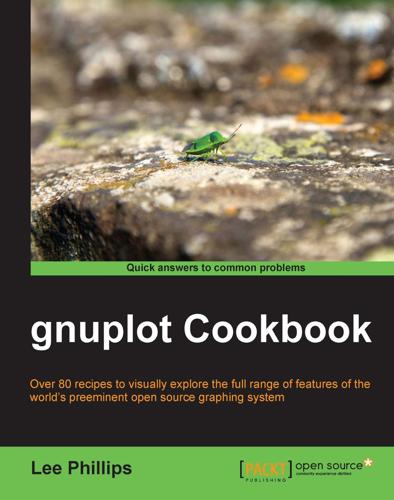
Gnuplot Cookbook
by
Lee Phillips
Published 15 Feb 2012
He has been the reviewer for numerous scientific articles, research proposals, and books, and has been a judge in the German Federal Competition in Computer Science on several occasions. His main interests are functional programming and machine-learning algorithms. David Millán Escrivá was 8 years old when he wrote his first program on 8086 PC with Basic language. He has more than 10 years of experience in IT. He has worked on computer vision, computer graphics, and pattern recognition. Currently he is working on different projects about computer vision and AR. I would like to thank Izanskun and my daughter Eider. www.PacktPub.com Support files, eBooks, discount offers, and more You might want to visit www.PacktPub.com for support files and downloads related to your book.
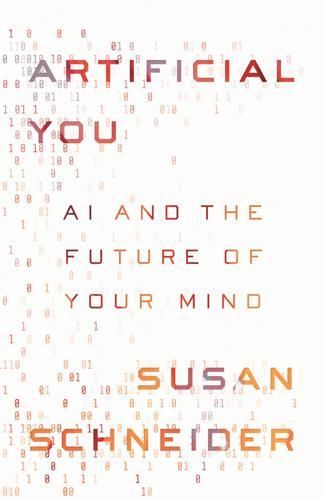
Artificial You: AI and the Future of Your Mind
by
Susan Schneider
Published 1 Oct 2019
What Summit can do in the blink of an eye would take all the people on Earth doing a calculation every moment of every day for 305 days.2 Of course, speed is not everything. If the metric is not arithmetic calculations, your brain is far more computationally powerful than Summit. It is the product of 3.8 billion years of evolution (the estimated age of life on the planet) and has devoted its power to pattern recognition, rapid learning, and other practical challenges of survival. Individual neurons may be slow, but they are organized in a massively parallel fashion that still leaves modern AI systems in the dust. But AI has almost unlimited room for improvement. It may not be long before a supercomputer can be engineered to match or even exceed the intelligence of the human brain through reverse engineering the brain and improving on its algorithms or devising new algorithms that aren’t based on the brain’s workings at all.
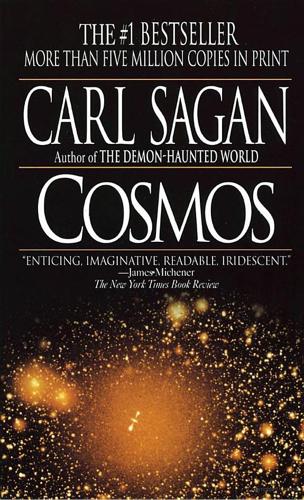
Cosmos
by
Carl Sagan
Published 1 Jan 1980
.… The only remedy is the most serene and quiet Air, such as may perhaps be found on the tops of the highest mountains above the grosser Clouds.” *There was a brief flurry when the uppercase letter B, a putative Martian graffito, seemed to be visible on a small boulder in Chryse. But later analysis showed it to be a trick of light and shadow and the human talent for pattern recognition. It also seems remarkable that the Martians should have tumbled independently to the Latin alphabet. But there was just a moment when resounding in my head was the distant echo of a word from my boyhood—Barsoom. *The largest are 3 kilometers across at the base, and 1 kilometer high—much larger than the pyramids of Sumer, Egypt or Mexico on Earth.
…
The neurochemistry of the brain is astonishingly busy, the circuitry of a machine more wonderful than any devised by humans. But there is no evidence that its functioning is due to anything more than the 1014 neural connections that build an elegant architecture of consciousness. The world of thought is divided roughly into two hemispheres. The right hemisphere of the cerebral cortex is mainly responsible for pattern recognition, intuition, sensitivity, creative insights. The left hemisphere presides over rational, analytical and critical thinking. These are the dual strengths, the essential opposites, that characterize human thinking. Together, they provide the means both for generating ideas and for testing their validity.
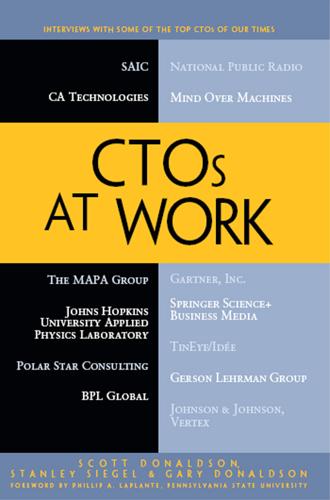
CTOs at Work
by
Scott Donaldson
,
Stanley Siegel
and
Gary Donaldson
Published 13 Jan 2012
Donaldson: So you moved away from the financial services world and established the company that you currently run. Can you tell us a little about that transition and what your company does? Bloore: Sure. So what our company does is make images searchable by looking at the patterns within the pixels themselves. We are entirely focused on using computer vision and pattern recognition algorithms to make large image sets searchable. It's very different from using keywords to search images. G. Donaldson: That's a big shift from developing risk management software to pixel imagery and software. Where did that shift come from? What was your interest in going in that direction?
…
I'll see that as an unfortunate day, but it's probably a necessary step. G. Donaldson: You have a lead engineer for your technology staff? Is that how the chain of command works? Bloore: Right now I probably play the role of the lead engineer, and then I have engineers who have specific domain knowledge. For example, the actual coding of the pattern recognition algorithms resides with a lead engineer. G. Donaldson: Well, let's shift and talk a little bit about your technologies. You've being doing a very good job of outlining what you've encountered. If you had to summarize, what are the most important technologies to your company? Bloore: Certainly, the technology behind TinEye is the most important one we have, and that's the ability to find an exact or modified copy of an image.

The One Device: The Secret History of the iPhone
by
Brian Merchant
Published 19 Jun 2017
The difference between this data-driven approach and the logic-driven approach is that this computer doesn’t know anything about Van Gogh or what an artist is. It is only imitating patterns—often very well—that it has seen before. “The thing that’s good for is perception,” Gruber says. “The computer vision, computer speech, understanding, pattern recognition, and these things did not do well with knowledge representations. They did better with data- and signal-processing techniques. So that’s what’s happened. The machine learning has just gotten really good at making generalizations over training examples.” But there is, of course, a deficiency in that approach.
…
Our intel, our interfaces are hard to use and needlessly so.” There’s also plenty of room for AI to do good—which, as a matter of fact, is why Gruber’s here. He’d come on the TED cruise to see if there were any ways he could harness his expertise to help benefit ocean conservation. So far, he’d met with teams to discuss using pattern-recognition software and Google Earth to catch poachers and polluters. “Those are kind of the superpowers that only science fiction was talking about a few years ago,” he says. So, I ask, does the co-creator of Siri use his own AI? How? “Oh, yeah, all the time,” he says. “I use it twenty to thirty times a day.
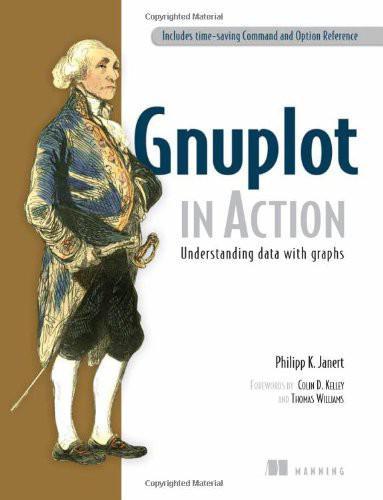
Gnuplot in Action: Understanding Data With Graphs
by
Philipp Janert
Published 2 Jan 2010
The idea behind Chernoff-faces, for example, is to encode each quantity as a facial feature in a stylized human face: size of the mouth or distance between eyes, and so on. The observer then tries to find the faces that are “most similar” or “least similar” to one another.) For much larger data sets, one may resort to computationally intensive methods, which go under the name of data mining or more specifically pattern recognition and machine learning.9 The latter set of methods is a highly active area of research. I must say that I experience a certain degree of discomfort with the “random search” character of some multivariate methods. The purpose of data analysis is to gain insight into the problem domain that the data came from, but any brute-force method that isn’t guided by intuition about the problem domain runs the risk of being about the numbers only, not about the actual system that the data came from originally.
…
Multivariate classification methods, such as the parallel coordinates technique introduced here, can be a useful starting point when faced with large and unsystematic data sets, or any time we don’t have good intuition about the actual problem 8 9 Two short and accessible introductory texts are Multivariate Statistical Methods: A Primer by Bryan F.J. Manly (Chapman & Hall, 3rd ed., 2004) and Introduction to Multivariate Analysis by Chris Chatfield and A. Collins (Chapman & Hall, 1981). Three introductory texts, in approximate order of increasing sophistication, are: Pattern Recognition and Machine Learning by Christopher M. Bishop (Springer, 2007); Pattern Classification by Richard O. Duda, Peter E. Hart, David G. Stork (Wiley-Interscience, 2nd ed., 2000); and The Elements of Statistical Learning by T. Hastie, R. Tibshirani, J. H. Friedman (Springer, 2003). 270 CHAPTER 13 Fundamental graphical methods domain.
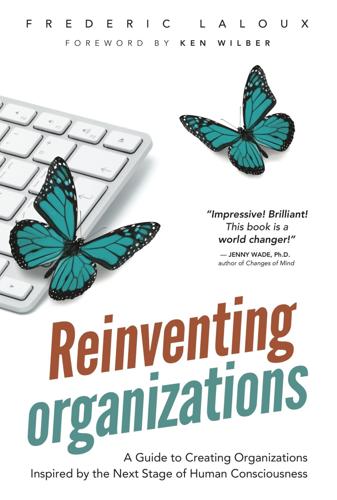
Reinventing Organizations: A Guide to Creating Organizations Inspired by the Next Stage of Human Consciousness
by
Frederic Laloux
and
Ken Wilber
Published 9 Feb 2014
We are now entering a new wave of job destruction and creation that is having an impact not just on routine work, but also on cognitive and creative tasks. A tipping point seems to have been reached at which advanced robotics and artificial intelligence (including machine-learning, language-translation, and speech- and pattern-recognition software) are beginning to render even many middle-income jobs obsolete. Travel agents have already largely been replaced by automated websites, and bank clerks by ATMs. Lawyers start to feel the heat now that smart algorithms can search case law, evaluate the issues at hand, and summarize the results.
…
Software has already shown it can perform legal discovery far more cheaply and more thoroughly than lawyers and paralegals in many cases. Radiologists, who can earn over $300,000 a year in the United States after 13 years of college education and internship, are in a similar boat. Automated pattern-recognition software can do much of the work of scanning tumor slides and X-ray images at a fraction of the cost. Advances in driverless car technology make a future where truck and taxi drivers are no longer needed a distinct possibility (provided we have the energy to fuel the engines). Society could be entering a new phase—one in which fewer and fewer workers are needed to produce and distribute all the goods and services consumed.
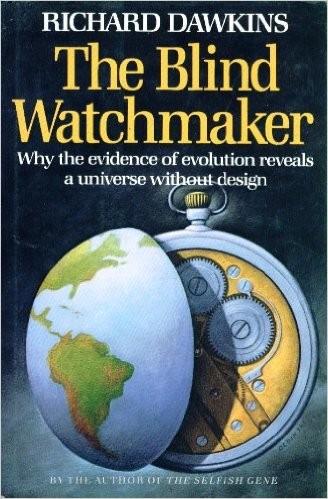
The Blind Watchmaker; Why the Evidence of Evolution Reveals a Universe Without Design
by
Richard Dawkins
Published 1 Jan 1986
The human eye is good at choosing phenotypic effects, as is shown by the numerous breeds of dogs, cattle and pigeons, and also, if I may say so, as is shown by Figure 5. To make the computer choose phenotypic effects directly, we should have to write a very sophisticated pattern-recognition program. Pattern-recognizing programs exist. They are used to read print and even handwriting. But they are difficult, ‘state of the art’ programs, needing very large and fast computers. Even if such a pattern-recognition program were not beyond my programming capabilities, and beyond the capacity of my little 64-kilobyte computer, I wouldn’t bother with it. This is a task that is better done by the human eye, together with – and this is more to the point – the 10-giganeurone computer inside the skull.

The Peripheral
by
William Gibson
Published 23 Oct 2014
TITLES BY WILLIAM GIBSON Neuromancer Count Zero Burning Chrome Mona Lisa Overdrive Virtual Light Idoru All Tomorrow’s Parties Pattern Recognition Spook Country Zero History Distrust That Particular Flavor G. P. PUTNAM’S SONS Publishers Since 1838 Published by the Penguin Group Penguin Group (USA) LLC 375 Hudson Street New York, New York 10014 USA • Canada • UK • Ireland • Australia • New Zealand • India • South Africa • China penguin.com A Penguin Random House Company Copyright © 2014 by William Gibson Penguin supports copyright. Copyright fuels creativity, encourages diverse voices, promotes free speech, and creates a vibrant culture.
…
asked the voice, as if suspecting the name of being an unfamiliar euphemism. “Wilf Netherton.” “What would this be concerning, exactly?” “I was her publicist, until recently. A private matter.” “I’m sorry, Mr. Netherton, but we have no record of you.” “Associate Curator Annie Courrèges, of the Tate Postmodern.” “I beg your pardon?” “Be quiet, darling. Let pattern recognition have its way.” “Wilf?” asked Daedra. “Thank you,” he said. “I’ve never liked Kafka.” “Who’s that?” “Never mind.” “What do you want?” “Unfinished business,” he said, with a small and entirely unforced sigh that he took as an omen that he was on his game. “Is it about Aelita?” “Why would it be?”
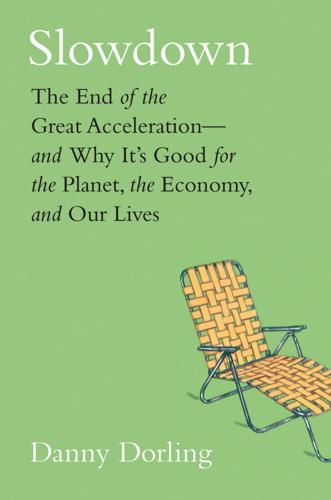
Slowdown: The End of the Great Acceleration―and Why It’s Good for the Planet, the Economy, and Our Lives
by
Danny Dorling
and
Kirsten McClure
Published 18 May 2020
Others say it already has and the speed of processor advancement was fastest in the period 1975–84.17 What is rarely pointed out is what the extra processing power is being used for. There are clearly diminishing returns. Fantasists suggest (as always) that truly clever artificial intelligence is just around the corner. So far image and voice recognition represent most of what can be claimed as its successes. Both are simply advanced forms of pattern recognition. It is also worth noting that the processors charted in the classic Moore’s law diagram (easily googled) showing continued acceleration in processor speed since the 1970s were in the 1980s mostly mass-market general-purpose processors.18 Those created subsequently have often been more specialized processing chips.
…
This is when the population has not been rising for three or four generations, when economic inequality has been low for several generations, and the planet is no longer warming up. It will hopefully be a time when sea levels, after rising for many decades, have stabilized, and when power sources have become so secure that they are barely ever commented upon. In that future time, long after the pattern-recognition powers of AI, as also suggested earlier on, turn out to be very useful, but not to be very intelligent, we could all be well fed and few of us will be too fat. What then would your great-great-great-great-great-grandchildren worry about? With continued slowdown, you may have 100 such descendants; with population stability, you would have had (on average) 128.
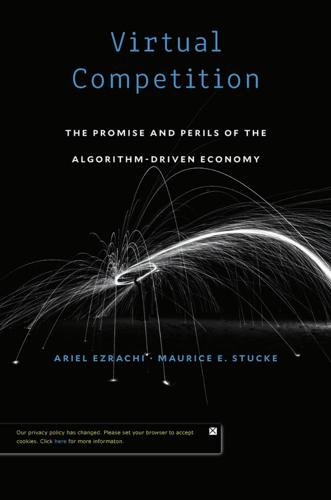
Virtual Competition
by
Ariel Ezrachi
and
Maurice E. Stucke
Published 30 Nov 2016
We have no idea about how, and the extent to which, we are being exploited. 27 28 Setting the Scene On a consumer level, we are entering the age of datafication, which involves “taking all aspects of life and turning them into data.”1 In a data-driven economy, sophisticated players will strive to improve their capacity to monitor our online and offline activities, accumulate data, target us during key purchasing opportunities, and react to changes with ever-increasing speed. Using sophisticated algorithms, companies are engaging in data mining, data trade, pattern recognition,2 demand estimation, and price optimization.3 Our behav ior and preferences trigger individualized promotions, all meant to help us make the right choice.4 But right for whom? The Cost of Free: Data as Currency With the rise of Big Data and Big Analytics, firms will not merely passively track us.
…
(Florence: International Bar Association, Antitrust Section Conference, September 8, 2007), 5, https://www.ftc.gov/sites/default/fi les/documents/public _ statements /i-say-monopoly-you-say-dominance-continuing-divide-treatment-dominant -firms-it-economics/070908isaymonopolyiba _0.pdf. 4 • Looking beyond the Façade of Competition 1. Viktor Mayer-Schönberger and Kenneth Cukier, Big Data: A Revolution That Will Transform How We Live, Work, and Think (London: John Murray, 2013), 35. 2. C. M. Bishop, Pattern Recognition and Machine Learning (New York: Springer-Verlag, 2006). 3. “Pricing Algorithms: Is the Price You Pay Right?” Bloomberg (May 12, 2015), http://www.bloomberg.com/news/videos/b/02d3f0f0-e653-4ca1-8bdd -0f95a5a81212. 4. For instance, see Sarah Griffiths, “Facebook Ads to Become More Intrusive: Site Will Soon Show Promotions for Products You’ve Looked at across the Web,” Daily Mail, June 13, 2014, http://www.dailymail.co.uk /sciencetech /article-2657043/Facebook-ads-intrusive-Site-soon-promotions-products -youve-searched-web.html. 5.

AI 2041: Ten Visions for Our Future
by
Kai-Fu Lee
and
Qiufan Chen
Published 13 Sep 2021
“We used to have a saying: No one knows the son better than the father. Now, should we say, no one knows the son better than his AI? Parents will never again have as much insight into their child as the child’s AI. And that’s a good thing. Golden Sparrow’s math is already at the level of a ten-year-old’s. And his pattern recognition is better than Si-Woo’s.” Si-Woo grimaced. Hye-Jin interjected, “I appreciate that artists like yourselves have a more romantic view of things, but what is more important than our children’s education?” She tapped the tip of Golden Sparrow’s nose. “And, it’s not like we ever told you to become a certain type of person.
…
They ate dinner in a kind of guarded pas de deux, feigning nonchalance and civility back and forth. Allison finally couldn’t help taking the bait. “So, where did you get that video?” “You admit it’s a scam?” Michael said. After Jennifer and Michael had watched Matt’s video, she had used pattern recognition software to analyze all the plans and data revealed by Matt’s illicit recording: architectural drawings, sunlight angles, times, elevations, latitude and longitude, atmospheric conditions, and other such parameters to reverse calculate positions. She found no corresponding structures in the real world.

Mastering Private Equity
by
Zeisberger, Claudia,Prahl, Michael,White, Bowen
,
Michael Prahl
and
Bowen White
Published 15 Jun 2017
Operational value creation focuses on driving performance improvements in a company’s existing operations to build a more efficient, better-run business. Leveraging PE’s active ownership model and hands-on governance, PE investors are well positioned to focus company resources and support the necessary improvements. As repeat buyers-improvers-sellers of companies, the best PE firms bring industry expertise, pattern recognition and finely tuned processes to the table that assist in the identification and planning of the most appropriate value creation initiatives. This chapter describes the levers used by management to execute in line with a portfolio company’s business plan and implement operational improvements successfully.
…
This requires some direct deal experience among its staff and processes that are streamlined to enable speedy decision-making and execution. An LP might provide additional value to the equity consortium through, for instance, networks of direct and indirect portfolio companies, connections to local regulators, cross-border links, local market knowledge or pattern recognition from its large investment portfolio. By engaging early on in the process the LP will also be liable for broken deal costs (i.e., the cost of an unsuccessful transaction attempt) at a time when chances of success are still lower compared to a syndicated co-investment. Attractions of Co-investing The growing interest and the increasing participation of LPs in co-investments are undeniable.

Actionable Gamification: Beyond Points, Badges and Leaderboards
by
Yu-Kai Chou
Published 13 Apr 2015
When it finally opened up to everyone, many people wanted to join simply because they previously couldn’t get in. Core Drive 7: Unpredictability & Curiosity Unpredictability is the Core Drive of constantly being engaged because you don’t know what is going to happen next. When something does not fall into your regular pattern recognition cycles, your brain kicks into high gear and pays attention to the unexpected. This is obviously the primary Core Drive behind gambling addictions, but it is also present in every sweepstake or lottery program that companies run. On a lighter level, many people watch movies or read novels because of this Core Drive.
…
At the end of the day, it is not whether they have certain game elements (theme, group quests, badges, power-ups), but whether those certain game elements are designed in a way that bring out our Core Drives. Now, the challenge is that between two “similar” games there is never just one variable of difference. Often there are hundreds or even thousands of differences between games. As such, it requires a substantial amount of time and pattern recognition effort/analysis to identify the behavioral impact of each element to the point that it can be predicted and replicated. This requires studying scores of games and years of serious observation before patterns can be easily recognized and predictions can be made on how behavior changes when game elements shift.

Doppelganger: A Trip Into the Mirror World
by
Naomi Klein
Published 11 Sep 2023
There was no need for histrionics about how unvaccinated people were experiencing “apartheid” when there was real vaccine apartheid between rich and poor countries; no need to cook up fantasies about Covid “internment camps” when the virus was being left to rip through prisons, meat-packing plants, and Amazon warehouses as if the people’s lives inside had no value at all. In a just world, we would have been talking about these real and proven scandals around the clock; most of us didn’t, in part because the clock was being run out with the fallout from made-up plots. Calm as Shock Resistance “Pattern recognition” is often how I describe the work of my life. I remember the moment, a true click, when I realized there was a connection between the increasing precarity of work, the consolidation of ownership in key industries, and the exponential increases in marketing budgets that characterized the hollow corporate structures of the first lifestyle brands.
…
Klein MSCHF MSNBC Muirhead, Russell Mulllins, Garth multiplayer gaming multiple personality disorder Murdoch, Iris Musk, Elon Muslims Mussolini, Benito MyPillow Nakba naming systems Naomi: author’s feelings about name; in Old Testament NASA Nation, The National Health Service (NHS) National Institute of Allergy and Infectious Diseases nationalism, inclusive National Security Agency Native Americans; see also Indigenous people Natural Causes (Ehrenreich) Nazi Germany; Austria annexed by; autistic people in; children as viewed in; class solidarity replaced with racial solidarity in; colonialism and; disabled people in; Gemüt concept in; health culture in; Hitler in; IBM and; lands and people conquered by; Paris’s liberation from; vaccine programs in; Volk collective in Nazi Germany, Jews in; anti-Semitic conspiracy theories and; Covid mandate analogies to; “eternal Jew” caricature and; Kristallnacht and; Nuremberg Laws and; yellow stars worn by; see also Holocaust Nazis, neo- neoliberalism Nestlé Netflix neurodiversity Neurotribes (Silberman) New Deal New Democratic Party (NDP); Avi Lewis as candidate of Newman, Kevin New Republic, The Newsmax New Statesman, The New York City New Yorker, The New York Post New York Times, The Next Revolution, The Nicholas II Nike 9/11 attacks 1984 (Orwell) NoiseCat, Julian Brave No Logo (Klein) Northern Ireland Northrup, Christiane NPR Nunes, Rodrigo Obama, Barack Obama, Michelle O’Brien, Kate Occupy Wall Street (OWS) oil Old Testament; Naomi in oligarchy One Day at a Time On Property (Walcott) Operation Shylock (Roth) opioid crisis Orbán, Viktor Organisation for Economic Co-operation and Development Origins of Totalitarianism, The (Arendt) Orwell, George O’Shea, Brian othering Ottawa Otto, Mike Ottoman Empire Our Bodies, Ourselves (Boston Women’s Health Book Collective) Outrages (Wolf) Oxford Union Paglia, Camille Pakistan Palestinians “Pandemic Is a Portal, The” (Roy) pandemics; Covid, see Covid pandemic Paradise Lost (Milton) Parasite Parks, Rosa Parler Patel, Raj patents Patreon Patriot Act patriotism pattern recognition PayPal PBS Peck, Raoul pedophilia Peele, Jordan Pegasus Pelosi, Nancy and Paul Pennycook, Gordon People’s Party Peters, Tom Pew Research Pfizer pharmaceutical companies; Pfizer; see also Covid vaccines; vaccines Philippines Picture of Dorian Gray, The (Wilde) Pim, Bedford Pinochet, Augusto pipikism Plandemic plutocracy Poe, Edgar Allan pogroms police murders of Black people Poor People’s Campaign populism Portnoy’s Complaint (Roth) Potter, David poverty powell, john a.
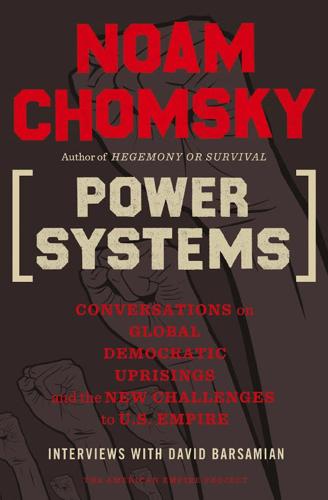
Power Systems: Conversations on Global Democratic Uprisings and the New Challenges to U.S. Empire
by
Noam Chomsky
and
David Barsamian
Published 1 Nov 2012
They may just produce one-word or two-word sentences, but there’s now experimental and other evidence that a lot more is in there. By three or four, a normal child will have extensive language capacity. Either this is a miracle or it’s biologically driven. There are just no other choices. There are attempts to claim that language acquisition is a matter of pattern recognition or memorization, but even a superficial look at those proposals shows that they collapse very quickly. It doesn’t mean that they’re not being pursued. In fact, those lines of inquiry are very popular. In my view, though, they’re just an utter waste of time. There are some very strange ideas out there.

On the Future: Prospects for Humanity
by
Martin J. Rees
Published 14 Oct 2018
In the public’s mind, a sharp distinction exists between artificial medical interventions that remove something harmful and deploying similar techniques to offer ‘enhancement’. Most characteristics (size, intelligence, and such) are determined by an aggregate of many genes. Only when the DNA of millions of people is available will it become possible (using pattern-recognition systems aided by AI) to identify the relevant combination of genes. In the short term, this knowledge could be used to inform embryo selection for IVF. But modification or redesign of the genome is a more remote (and of course more risky and dubious) prospect. Not until this can be done—and until DNA with the required prescription can be artificially sequenced—will ‘designer babies’ become conceivable (in both senses of that word!).
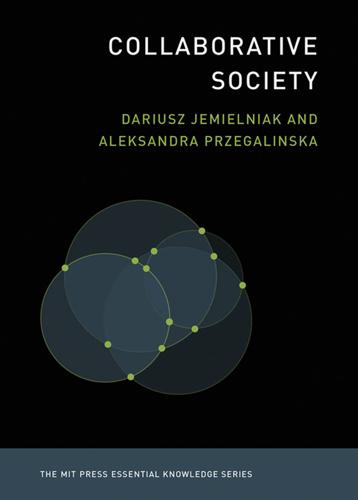
Collaborative Society
by
Dariusz Jemielniak
and
Aleksandra Przegalinska
Published 18 Feb 2020
Ethnography for the Internet: Embedded, Embodied and Everyday. London: Bloomsbury Publishing, 2015. Jemielniak, D. Thick Big Data: Doing Digital Social Sciences. Oxford: Oxford University Press, 2020. Pavón, J., M. Arroyo, S. Hassan, and C. Sansores. “Agent-Based Modelling and Simulation for the Analysis of Social Patterns.” Pattern Recognition Letters 29, no. 8 (2008): 1039–1048. More about wearables, tracking, and cybersecurity Neff, G., and D. Nafus. Self-Tracking. Cambridge, MA: MIT Press, 2016. Przegalinska, A. Wearable Technologies in Organizations: Privacy, Efficiency and Autonomy in Work. London: Palgrave, 2019. Schneier, B.

Wired for War: The Robotics Revolution and Conflict in the 21st Century
by
P. W. Singer
Published 1 Jan 2010
By comparison, pretty much any two-year-old human instantly “knows” that an apple is not a tomato, without any calculation. At the same time, that toddler can pick his nose, kick a ball, and realize that it is raining outside. Thus, the toddler may not be able to count to infinity, but they blow the computer out of the water when it comes to pattern recognition and multitasking, which is 95 percent of what we ask our brains to think on. “If you think it’s easy for you to do, most of the time it’s very difficult for robots to do,” says Takeo Kanade, director of Carnegie Mellon University’s Robotics Institute. So it seems unfair then to compare machines to humans in this type of intelligence.
…
He replied, “If this war keeps going on a few more years, then yes.” Robert Epstein sees the military’s role as more than simply funding the Singularity. It is the most likely integrator needed to bring it all together. He describes how there are all sorts of research programs and companies around the globe, working on various technologies, from pattern recognition software and robotic sensors to artificial intelligence and subatomic microchips. “When you marry all that up with the strategic planning that the military brings to the table, you will end up with a qualitative advance like no other. At that point prediction of what comes next becomes difficult. . . .
…
Indeed, South Korea sent two robot snipers with rifles to Iraq in 2004 with essentially no debate; they were reported in the media to have “nearly 100%” accuracy. Even more notable is the Autonomous Sentry Gun, made by Samsung. The company, more known for making high-definition TVs, has integrated a machine gun with two cameras (infrared and zooming) and pattern recognition software processors. The gun system cannot only identify, classify, and destroy moving targets from over a mile away, but, as Louis Ramirez of Gizmodo relates, “also has a speaker that beckons the fool that walks near it to surrender before being pulverized.” South Korea plans to use the robo-machine guns to stand guard along the 155-mile demilitarized zone (DMZ) that borders North Korea.
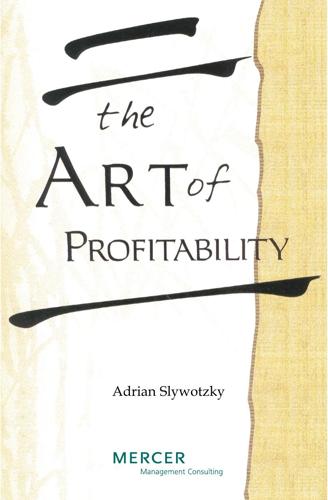
The Art of Profitability
by
Adrian Slywotzky
Published 31 Aug 2002
Zhao handed Steve a copy of Sources of Power by Gary Klein. “You don’t have to read the whole thing. Just these pages.” He gave Steve a slip of paper with the numbers 31-33, 39-40, 42, 148-151, 154-156, 169, 260, 289-290. Steve arched his eyebrows. Zhao laughed. “No, I didn’t go through it picking pages. I just looked in the index under ‘Pattern recognition.’” Steve stuck the book in his backpack. “Next week, then?” “Two weeks.” Neither man said what they were both thinking. One more session to go. 148 THE ART OF PROFITABILITY 23 Digital Profit May 17. Steve’s work with Zhao was almost over. Steve stopped before entering the lobby of 44 Wall Street.
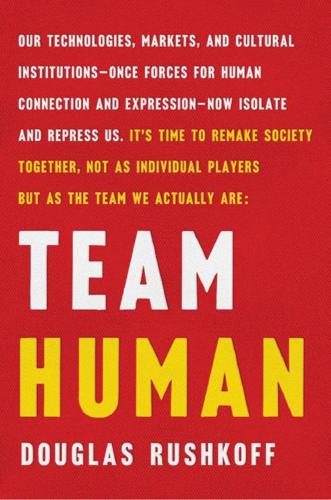
Team Human
by
Douglas Rushkoff
Published 22 Jan 2019
Moderns ignored the advice, believing that their building techniques far surpassed anything their ancestors could have imagined. The villagers had recognized the pattern of natural disasters, as well as the fact that the cycle repeated too infrequently for every generation to witness it. But their efforts to communicate their wisdom failed to impress a civilization without patience for pattern recognition or a sense of connection to the cyclical nature of our world. Weather, ecology, markets, or karma: what goes around comes around. What the ancients understood experientially, we can today prove scientifically, with data and charts on everything from climate change to income disparity. But these facts seem not to matter to us unless they’re connected to our moment-to-moment experience.
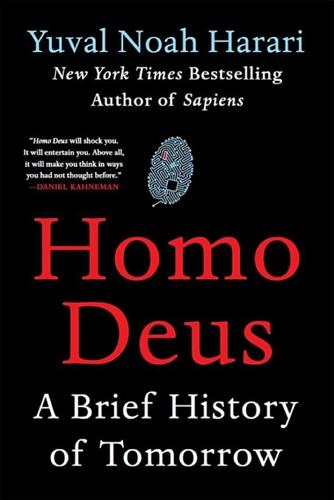
Homo Deus: A Brief History of Tomorrow
by
Yuval Noah Harari
Published 1 Mar 2015
Only conscious beings could perform tasks that required a lot of intelligence, such as playing chess, driving cars, diagnosing diseases or identifying terrorists. However, we are now developing new types of non-conscious intelligence that can perform such tasks far better than humans. For all these tasks are based on pattern recognition, and non-conscious algorithms may soon excel human consciousness in recognising patterns. This raises a novel question: which of the two is really important, intelligence or consciousness? As long as they went hand in hand, debating their relative value was just a pastime for philosophers. But in the twenty-first century, this is becoming an urgent political and economic issue.
…
Bartenders – 77 per cent. Archivists – 76 per cent. Carpenters – 72 per cent. Lifeguards – 67 per cent. And so forth. There are of course some safe jobs. The likelihood that computer algorithms will displace archaeologists by 2033 is only 0.7 per cent, because their job requires highly sophisticated types of pattern recognition, and doesn’t produce huge profits. Hence it is improbable that corporations or government will make the necessary investment to automate archaeology within the next twenty years.19 Of course, by 2033 many new professions are likely to appear, for example, virtual-world designers. But such professions will probably require much more creativity and flexibility than your run-of-the-mill job, and it is unclear whether forty-year-old cashiers or insurance agents will be able to reinvent themselves as virtual-world designers (just try to imagine a virtual world created by an insurance agent!).
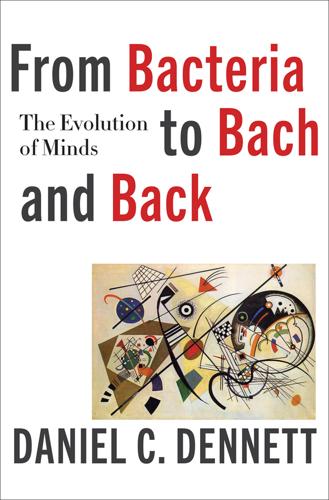
From Bacteria to Bach and Back: The Evolution of Minds
by
Daniel C. Dennett
Published 7 Feb 2017
It is no accident that brains are massively parallel in their architecture, given the need for speed in controlling risky lives, but the “moving parts” of today’s von Neumann machines have a basic cycle time billions of times faster than the response time of a neuron, so they have speed to burn. In recent years, artificial intelligence researchers have developed connectionist networks that loosely mimic neural networks in the brain, and they have proven to be very good at learning to discriminate things in images, and other sorts of pattern recognition that our brains excel at, and they undoubtedly demonstrate the power of parallel processing (see chapter 15), but in fact, the parallel processing done by these networks is almost all simulated on conventional serial von Neumann machines. Von Neumann machines are universal mimics that can simulate any other architecture; today’s speedy von Neumann machines, in spite of their severe bottlenecks, can pretend they are parallel-processing neural networks so swiftly that they can keep up with, or surpass, the parallel-processing brains that designed them. 3.Brains are carbon based (protein, etc.); computers are silicon.
…
As always, repetition is a key ingredient in creating new affordances, whether it is arrayed synchronously in space like the advertisements or identical fragments of nucleic acid; or sequenced in time, like rehearsing a tune or a word; or noticing, again and again and again, the Eiffel Tower in the distance in Paris. Multiple copies of anything tend to enable your pattern-recognition machinery to make yet another copy, in the recognizer, and thus a meme can get spread. In figure 7.4 (p. 146), words are shown as high on reproduction versus growth, high on culture versus genetic, and low on complexity. Perhaps if Dawkins had developed the theme of words as paradigmatic memes, he might have forestalled or softened some of the resistance his proposal encountered from other researchers of culture: historians, literary theorists, philosophers, linguists, anthropologists, and sociologists, for instance.
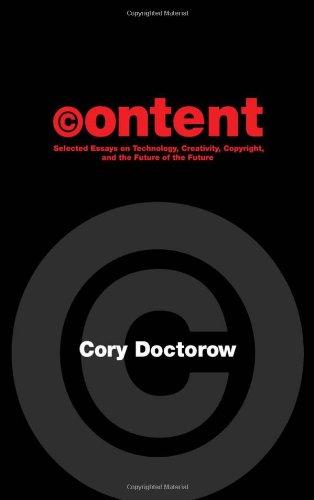
Content: Selected Essays on Technology, Creativity, Copyright, and the Future of the Future
by
Cory Doctorow
Published 15 Sep 2008
The brain is not one big neural net, the brain is several hundred different regions, and we can understand each region, we can model the regions with mathematics, most of which have some nexus with chaos and self-organizing systems. This has already been done for a couple dozen regions out of the several hundred. "We have a good model of a dozen or so regions of the auditory and visual cortex, how we strip images down to very low-resolution movies based on pattern recognition. Interestingly, we don't actually see things, we essentially hallucinate them in detail from what we see from these low resolution cues. Past the early phases of the visual cortex, detail doesn't reach the brain. "We are getting exponentially more knowledge. We can get detailed scans of neurons working in vivo, and are beginning to understand the chaotic algorithms underlying human intelligence.

The Fire Starter Sessions: A Soulful + Practical Guide to Creating Success on Your Own Terms
by
Danielle Laporte
Published 16 Apr 2012
CORE DESIRED FEELINGS WORKSHEET feelings: sensations; emotions; inner states; consciousness; inner world goal: everything you work toward; the objective of your strategy; the whole point FEELING How do you want to feel in your life? Do a stream-of-consciousness riff: concepts, words, feelings, images. This is about optimal, positive, nourishing, and good—very good—feelings. Put them all on paper. Let a tsunami of desire flood you. Invest in yourself. Want what you want. Go. PATTERN RECOGNITION Study your list of desired feelings. Read it over a few times. Read it out loud if you’re inclined. Sleep on it. Take it for a walk. What jumps out at you, feels warm, feels yes!, feels really important and valuable? Identify the words or concepts that really turn you on. The objective of this exercise is to narrow down your list to three to five desired feelings.
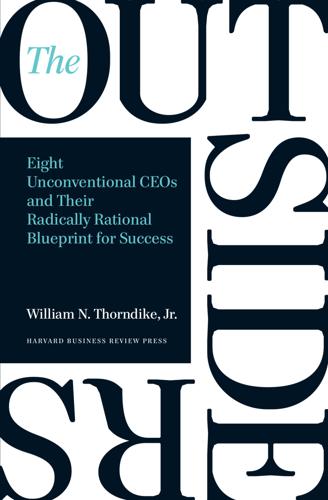
The Outsiders: Eight Unconventional CEOs and Their Radically Rational Blueprint for Success
by
William Thorndike
Published 14 Sep 2012
The outsider CEOs believed that the value of financial projections was determined by the quality of the assumptions, not by the number of pages in the presentation, and many developed succinct, single-page analytical templates that focused employees on key variables. In Daniel Kahneman’s excellent recent book, Thinking, Fast and Slow, he lays out a model for human decision making that evolved from his thirty years of Nobel Prize–winning research.1 Kahneman’s paradigm features two distinct systems. System 1 is the purely instinctive pattern recognition mode that is instantly engaged in any situation and arrives at decisions very quickly using rules of thumb. System 2 is the slower, more reflective track that employs more complex analysis. System 2 can override system 1. The problem is that it takes more time and effort to engage system 2, and for that reason, it is underutilized in many of us.
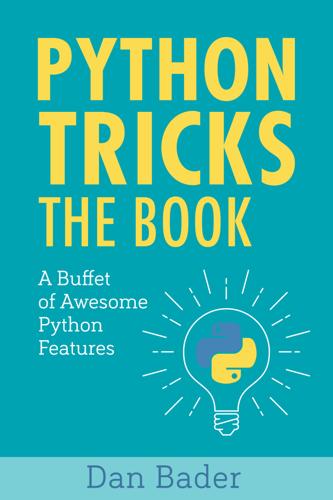
Python Tricks: The Book
by
Dan Bader
Published 14 Oct 2017
To be honest with you, I didn’t write down these examples and explanations off the top of my head. It took me some research and editing to do it. I’ve been using Python for years but rules and special cases like that aren’t constantly on my mind. Sometimes the most important skills for a programmer are “pattern recognition” and knowing where to look things up. If you feel a little overwhelmed at this point, don’t worry. Take your time and play with some of the examples in this chapter. Let these concepts sink in enough so that you’ll recognize the general idea of name mangling and some of the other behaviors I’ve shown you.

Futureproof: 9 Rules for Humans in the Age of Automation
by
Kevin Roose
Published 9 Mar 2021
Some jobs are also more robotic than they first appear. Take fashion design, for example. Designing clothes might appear to be a purely creative job that would be impossible for computers to perform. But a lot of modern fashion design—especially at “fast-fashion” chains and e-commerce brands—consists largely of pattern recognition and data analysis, and figuring out how to create variations on an item that is already selling well. As it turns out, this is the kind of task that AI can do very well. In fact, several companies are already using AI to generate fashion designs. In 2017, an Amazon research team developed a machine learning algorithm that analyzes images of garments in a particular style and learns to generate new garments in that style.
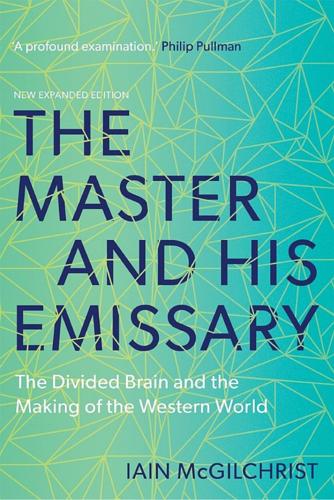
The Master and His Emissary: The Divided Brain and the Making of the Western World
by
Iain McGilchrist
Published 8 Oct 2012
The process is not a gradual putting together of bits of information, but an ‘aha!’ phenomenon – it comes all at once. Fig. 2.4 Emergence of the Gestalt. The right hemisphere, with its greater integrative power, is constantly searching for patterns in things. In fact its understanding is based on complex pattern recognition.124 Split-brain subjects have a complete inability to relate the shape or structure of something they have seen to something they feel with their hand – if the object is felt with their right hand. With the left hand (right hemisphere), however, they perform perfectly.125 Gazzaniga and LeDoux thought this must be dependent on some sort of tactile or ‘manipulatory’ advantage of the ‘minor’ hemisphere, because they were able to show that in a second experiment involving visual–visual integration, involving fitting a broken figure together, the left hemisphere was not so bad (though it was still not as good as the right hemisphere).
…
However, the more fine-grained the expert analysis, the more difficult it may be to see an overall pattern: it cannot be other than the view from close up. This will inevitably lead some to the conclusion that no pattern exists, but I believe this to be a mistake. One has to stand back in order to see patterns at all; there is a ‘necessary distance’ for such pattern recognition to work. If I am right that there have been shifts in hemisphere balance, why have they come about? To the historian, a multitude of social and economic factors will inevitably be involved in the process whereby many events unfolded which led to such cataclysmic movements in the history of ideas, and I have no doubt that, as always, chance also played an important role.
…
R., ‘The precuneus: a review of its functional anatomy and behavioural correlates’, Brain, 2006, 129(3), pp. 564–83 Cepeda, M. S., Carr, D. B., Lau, J. et al., ‘Music for pain relief ’, Cochrane Database Systematic Reviews, 2006, issue 2. Art. No.: CD004843 Cerella, J., ‘The pigeon’s analysis of pictures’, Pattern Recognition, 1980, 12(1), pp. 1–6 Chamfort, N., Maximes et Pensées, Caractères et Anecdotes, ed. A. van Bever, Crès et Cie., Paris, 1923 [1795] Chaminade, T. & Decety, J., ‘Leader or follower? Involvement of the inferior parietal lobule in agency’, NeuroReport, 2002, 13(15), pp. 1975–8 Changeux, J.-P., ‘Learning and selection in the nervous system’, in de Kerckhove, D. & Lumsden, C.
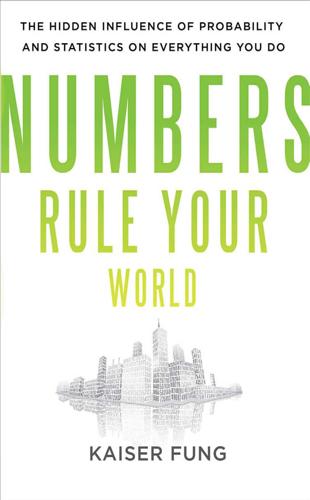
Numbers Rule Your World: The Hidden Influence of Probability and Statistics on Everything You Do
by
Kaiser Fung
Published 25 Jan 2010
In the case of credit scoring, correlation-based statistical models have been wildly successful even though they do not yield simple explanations for why one customer is a worse credit risk than another. The parallel development of this type of model by researchers in numerous fields, such as pattern recognition, machine learning, knowledge discovery, and data mining, also confirms its practical value. In explaining how credit scoring works, statisticians emphasize the similarity between traditional and modern methods; much of the criticism leveled at credit-scoring technology applies equally to credit officers who make underwriting decisions by handcrafted rules.

MongoDB: The Definitive Guide
by
Kristina Chodorow
and
Michael Dirolf
Published 23 Sep 2010
If we know some of the characteristics of our data, for instance, that there are only 43 chemicals with a freezing point of -20°, we can rearrange the $all to do that query first: all.put("$elemMatch", fp); all.put("$elemMatch", mw); all.put("$elemMatch", bp); criteria.put("index", new BasicDBObject("$all", all)); Now the database can quickly find those 43 elements and, for the subsequent clauses, has to scan only 43 elements (instead of 1 million). Figuring out a good ordering for arbitrary searches is the real trick of course, of course. This could be done with pattern recognition and data aggregation algorithms that are beyond the scope of this book. News Aggregator: PHP We will be creating a basic news aggregation application: users submit links to interesting sites, and other users can comment and vote on the quality of the links (and other News Aggregator: PHP | 159 comments).

Wild Ride: Inside Uber's Quest for World Domination
by
Adam Lashinsky
Published 31 Mar 2017
From its beginning Uber was an Internet technology company that coexisted with physical objects, namely automobiles. Running it required someone who could master the new science of computers and the older arts of the industrial economy, including logistics. Uber and its CEO forced even successful investors to think differently about how the landscape was changing. “Investment is all about pattern recognition,” says Yuri Milner, the Russian physicist-turned-investor who put $200 million into Facebook when it was a young company, a bet that returned billions. “It turns out Uber was a different pattern. I felt most of the pure Internet businesses already had been invented when Uber started. The paradigm was coders working for several years in isolation, with no interaction with the physical world or government agencies or the public.

50 Future Ideas You Really Need to Know
by
Richard Watson
Published 5 Nov 2013
This means that instead of working on one computation after another (albeit at very fast speeds) a quantum computer can work on different computations at the same time. Hey presto, a computer with processing speeds a million or more times faster than anything that’s currently available, but more importantly, a computer able to solve problems that conventional computers cannot—for example, pattern recognition or code breaking. Quantum computing also has another major advantage. With conventional, silicon-based computers, overheating and energy use is a major problem. With quantum computers it’s not. Do such computers currently exist? At the moment the answer is no, certainly in the sense of being commercially scalable, usable or practical.
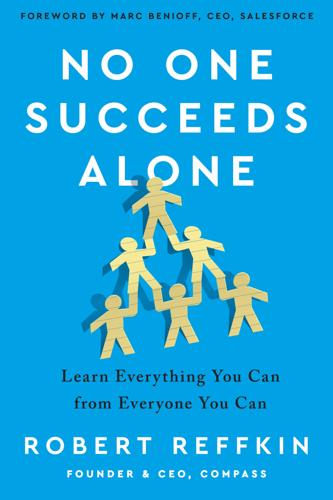
No One Succeeds Alone
by
Robert Reffkin
Published 4 May 2021
At times, she has given me the confidence to take a leap I wouldn’t have had the courage to take alone, and at other times, she has helped me stand down from a battle that simply wasn’t worth fighting. I also have a terrific executive coach who I meet with regularly and we always focus on the same question: How can I be a better leader? My coach has incredible pattern recognition from his years counseling CEOs and he provides insights I couldn’t spot on my own. He has accelerated my personal growth as a leader more than I could have ever imagined. For some reason, many leaders seem to believe that asking for help, feedback, and guidance will make them appear weak. I’ve found just the opposite: listening to coaches has made me a much stronger leader.
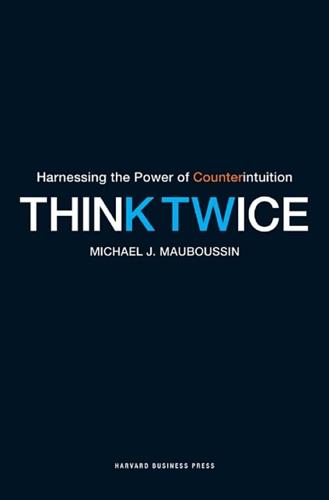
Think Twice: Harnessing the Power of Counterintuition
by
Michael J. Mauboussin
Published 6 Nov 2012
But after two in a row, they automatically expected a third, even though they knew the series was random. Two may not be a trend, but our brains sure think so.12 This mistake is tough because our minds have a deep-seated desire to make out patterns and our prediction process is very rapid (the researchers call it “automatic and obligatory”). This pattern recognition ability evolved through the millennia and was profoundly useful for most of human existence. “In a natural environment, almost all patterns are predictive,” says Huettel. “For example, when you hear a crash behind you, it’s not something artificial; it means that a branch is falling, and you need to get out of the way.
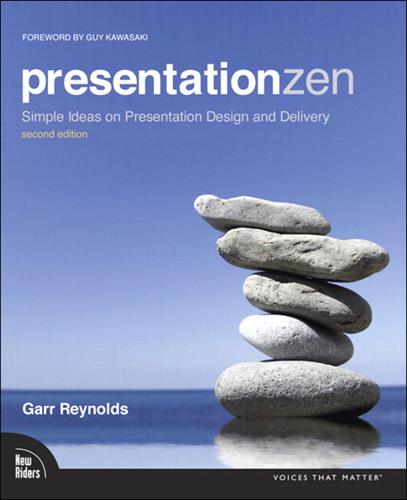
Presentation Zen
by
Garr Reynolds
Published 15 Jan 2012
(Images in slides on this page from iStockphoto.com.) * * * The Power of Faces to Get Attention and Guide Viewers’ Eyes We are amazingly good at seeing faces. We are so good at spotting faces that we even see them where they do not exist. In fact, said Carl Sagan, “As an inadvertent side effect, the pattern-recognition machinery in our brains is so efficient in extracting a face from a clutter of other detail that we sometimes see faces where there are none.” This explains why people see an image of Mother Teresa in a cheese sandwich or a face on Mars. Faces—and things approximating images of faces—get our attention.

WTF?: What's the Future and Why It's Up to Us
by
Tim O'Reilly
Published 9 Oct 2017
That model can then be turned loose on real-world data similar to that in the training data set. Yann LeCun, a pioneer in a breakthrough machine learning technique called deep learning and now the head of the Facebook AI Research lab, uses the following analogy to explain how a model is trained to recognize images: A pattern recognition system is like a black box with a camera at one end, a green light and a red light on top, and a whole bunch of knobs on the front. The learning algorithm tries to adjust the knobs so that when, say, a dog is in front of the camera, the red light turns on, and when a car is put in front of the camera, the green light turns on.
…
See also individual operating systems “Operations: The New Secret Sauce” (O’Reilly), 121 Oram, Andy, 25–26 Orbitz, 178 O’Reilly, Tim, ix, xvii, 20, 71–75 O’Reilly AlphaTech Ventures, 50, 285–88 O’Reilly Media acquisition procedure, 279 and Amazon, 110–13 core strategic positioning, 48–50 ebook publishing venture, 28–29, 50 evaluating new industries, xi–xii googling name, 159–60 as startup, 274–75, 284–85 tracking trends to identify vectors, 37–40 Organisation for Economic Co-operation and Development (OECD), 170 Oringer, Jon, 283 Overton Window, 268–69 Overture, 161 “Owner’s Manifesto” (Dougherty), 337 Pacific Railroad Surveys, 4 Page, Larry, 132, 157, 160, 289–90 Pahlka, Jennifer “Jen,” 129, 137–38, 144–46, 318, 319 Paine, Thomas, 306 parental leave, 310–11 Pariser, Eli, 199–200 Park, Todd, 144, 146–47 Pascal’s Wager, 361–62 Patacconi, Andrea, 246 Patil, D. J., 156 Patreon, 316–17 pattern recognition systems, 164–65 Paul, Sunil, 75–76, 82, 283–84 payment collection methods, 77–79, 84 pay-per-click vs. pay-per-impression ads, 161–62 Peek, Jerry, 38 Peers, Inc. (Chase), 84–85 Peer-to-Peer and Web Services Conference (2001), 27 peer-to-peer file sharing, 26–27 Pelosi, Nancy, 188 “People, Not Data” (Solomon), 143 Pereira, Fernando, 155–56 Perez, Carlota, 277 Perez, Tom, 194 Perl, 10–11, 15, 16–17, 120–21 personal agents, xiii, xiv–xvi, 82, 232, 233 Peterson, Christine, 17–18 Philadelphia, Pennsylvania, 138–40 Phoenix Project, The (Kim, Behr, and Spafford), 122 physical assets with digital footprint, 66–67 Pike, Rob, 105–6 Piketty, Thomas, 246, 272, 291 platforms, xxiv, 90–91 algorithmic curation of information, 89 Amazon’s development into, 111–13 digital platforms and the real economy, 288–89 evolution of, 91–92 networked platforms, 67, 92–95 and reputation systems, 181–90 search engines, 39, 92, 157–59, 207, 288 thick marketplace requirement, 95–105, 128, 133 Uber as, 59–61 See also Amazon; Google; government as a platform; networks platform strategies, 109–10 employees work inside the application, 119–24 platform vs. application, 110–13 promise-centered organizations, 113–19 pol.is, 200, 221–22 politics barriers to fresh thinking, 268–69 and corporate malfeasance, 249–50 Power of Pull, The (Hagel, Brown, and Davison), 341 Practice of Management (Drucker), 250 principal component analysis (PCA), 221–22 privacy bullies, 178–79 profits and open source software, 24 Programming Perl (Wall), 10 promise-centered organizations, 113–19 promise theory, 115–19 public benefit corporations, 292 Putnam, Robert, 218–19, 320 QVC, 162–63 Rachmeler, Kim, 115–16, 117 racism, 21 Rackspace, 350 Rademacher, Paul, 127–28 Rand, Ayn, 69 RankBrain (Google), 165 Rasselas (Johnson), 313 Raw Deal (Hill), 184 Rawls, John, 181 Raymond, Eric, 8–9, 15–16, 17–18 RCA, 351 reality vs. abstraction, 21–22 redlining data, 178–79 RegTech, 175 regulations, 171–72 defining the desired outcome, 173–75 financial market speed vs., 172–73 and government technology, 187–89 improving outcomes, 175–76 of labor, 190–98 reputation systems in design of online platforms, 181–90 role of sensors, 176–77 and surveillance data, 177–81 value of, 181–90 and workers’ continuous partial employment, 190–98 regulatory capture, 187–88 REI, 244 Reinventing Discovery (Nielsen), 43 Remix, 140 repairs vs. sealed hardware, 337–38 reputation systems, 181–90 Resnick, Paul, 182 Reuther, Walter, 357 rhyming patterns, 5, 8, 13 Ries, Eric, 186 right to work laws, 262–63 Rilke, Rainer Maria, 353 Rinaudo, Keller, 370, 372 Rise and Fall of American Growth (Gordon), 243 Rise of the Robots, The (Ford), 269 Robbins, Jesse, 121 Roberts, Bruce, 285–88 Robinson, David, 130 Robinson, Kim Stanley, 96 robots and robotics competitive advantage of human touch, 311, 315, 330–31 fears about, ix, 300 filling the gap of not enough workers, 310 and jobs, xx–xxi and laser eye surgery, xvii–xviii and people, at Amazon, 95 the Robot Lawyer, 332 robot tax proposal, 307 Rolf, David, 196, 262 Roman empire, xix Romer, Paul, 249 Rosencrantz & Guildenstern Are Dead (Stoppard), xii Rossman, John, 117 Roth, Alvin E., 98 Rothman, Simon, 196 Rushkoff, Douglas, 251 Rwanda, 370 Safari service for ebooks, 50, 344 Sanders, Bernie, 255 Saudi Arabia, 305–6 scenario planning, 358–67 Scheifler, Bob, 16 Schlossberg, Edwin, 3 Schmidt, Eric, 126, 129, 137 Schneier, Bruce, 177 Schrage, Michael, xiv, 58 Schulman, Andrew, 10 Schumpeterian profits, 296 Schumpeterian waste, 277–78 Schwartz, Peter, 359 Science and Sanity (Korzybski), 20 Scoble, Robert, 39 Search, The (Battelle), 161 search engine optimization, 160–61 search engines, 39, 92, 157–59, 207, 288.
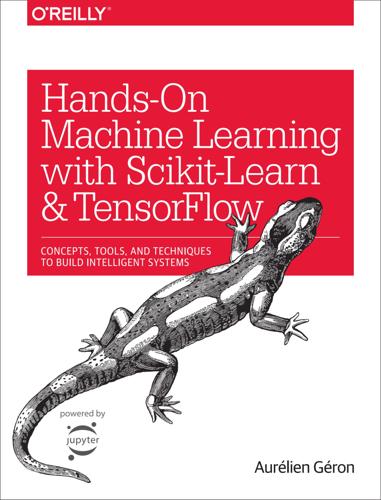
Hands-On Machine Learning With Scikit-Learn and TensorFlow: Concepts, Tools, and Techniques to Build Intelligent Systems
by
Aurélien Géron
Published 13 Mar 2017
Solutions to these exercises are available in the online Jupyter notebooks at https://github.com/ageron/handson-ml. 1 By default Scikit-Learn caches downloaded datasets in a directory called $HOME/scikit_learn_data. 2 Shuffling may be a bad idea in some contexts — for example, if you are working on time series data (such as stock market prices or weather conditions). We will explore this in the next chapters. 3 But remember that our brain is a fantastic pattern recognition system, and our visual system does a lot of complex preprocessing before any information reaches our consciousness, so the fact that it feels simple does not mean that it is. 4 Scikit-Learn offers a few other averaging options and multilabel classifier metrics; see the documentation for more details. 5 You can use the shift() function from the scipy.ndimage.interpolation module.
…
Wiesel (1958). 2 “Receptive Fields of Single Neurones in the Cat’s Striate Cortex,” D. Hubel and T. Wiesel (1959). 3 “Receptive Fields and Functional Architecture of Monkey Striate Cortex,” D. Hubel and T. Wiesel (1968). 4 “Neocognitron: A Self-organizing Neural Network Model for a Mechanism of Pattern Recognition Unaffected by Shift in Position,” K. Fukushima (1980). 5 “Gradient-Based Learning Applied to Document Recognition,” Y. LeCun et al. (1998). 6 A convolution is a mathematical operation that slides one function over another and measures the integral of their pointwise multiplication. It has deep connections with the Fourier transform and the Laplace transform, and is heavily used in signal processing.

Analysis of Financial Time Series
by
Ruey S. Tsay
Published 14 Oct 2001
Springer-Verlag: New York. Ray, B. K., and Tsay, R. S. (2000), “Long-range dependence in daily stock volatilities,” Journal of Business & Economic Statistics, 18, 254–262. Taylor, S. J. (1994), “Modeling stochastic volatility,” Mathematical Finance, 4, 183–204. Tong, H. (1978), “On a threshold model,” in Pattern Recognition and Signal Processing, ed. C.H. Chen, Sijhoff & Noordhoff: Amsterdam. Tong, H. (1990), Non-Linear Time Series: A Dynamical System Approach, Oxford University Press: Oxford. Tsay, R. S. (1987), “Conditional heteroscedastic time series models,” Journal of the American Statistical Association, 82, 590–604.
…
Teräsvirta, T. (1994), “Specification, estimation, and evaluation of smooth transition autoregressive models,” Journal of the American Statistical Association, 89, 208–218. Tiao, G. C., and Tsay, R. S. (1994), “Some Advances in Nonlinear and Adaptive Modeling in Time Series,” Journal of Forecasting, 13, 109–131. Tong, H. (1978), “On a threshold model,” in Pattern Recognition and Signal Processing, ed. C.H. Chen, Sijhoff & Noordhoff: Amsterdam. Tong, H. (1983), Threshold Models in Nonlinear Time Series Analysis, Lecture Notes in Statistics, Springer-Verlag: New York. Tong, H. (1990), Non-Linear Time Series: A Dynamical System Approach, Oxford University Press: Oxford.

Leviathan Wakes
by
James S. A. Corey
Published 14 Jun 2011
I’ve even had the Roci digging through the data for the last couple hours, looking for patterns. She has really good software for that sort of thing. But so far, nothing.” She tapped on the screen again and the raw data began spooling past faster than Holden could follow. In a small window inside the larger screen, the Rocinante’s pattern-recognition software worked to find meaning. Holden watched it for a minute, but his eyes quickly unfocused. “Lieutenant Kelly died for this data,” he said. “He left the ship while his mates were still fighting. Marines don’t do that unless it matters.” Naomi shrugged and pointed at the screen with resignation.
…
Perhaps it was enough just knowing that someone on the other side of the political and military divide had seen the same evidence they had seen and drawn the same conclusions. Maybe it left room for hope. He switched his hand terminal back to the Eros feed. A strong throbbing sound danced below a cascade of noise. Voices rose and fell and rose again. Data streams spewed into one another, and the pattern-recognition servers burned every spare cycle making something from the resultant mess. Julie took his hand, the dream so convincing he could almost pretend he felt it. You belong with me, she said. As soon as it’s over, he thought. It was true he kept pushing back the end point of the case. First find Julie, then avenge her, and now destroy the project that had claimed her life.

The Rise and Fall of Nations: Forces of Change in the Post-Crisis World
by
Ruchir Sharma
Published 5 Jun 2016
They are most applicable to emerging nations, in part because those nations’ economic and political institutions are less well established, making them more vulnerable to political and financial upheaval. However, as I will show along the way, many of the rules find useful applications in the developed world. Pattern Recognition: The Principles Behind the Rules A few basic principles underlie all the rules. The first is impermanence. At the height of the 2000s boom, a variety of global forces—easy money pouring out of Western banks, spiking prices of commodities, and soaring global trade—doubled the growth rate of emerging economies.
…
“Mahatma,” 236 Garotinho, Anthony, 78 Gates, Bill, 104, 119, 124 GDP (gross domestic product): analysis of, 407 and civil wars, 142 and credit markets, 300, 301n, 302 and current account, 273, 296 and debt, 149, 216, 291, 300, 317, 320, 328 global, 2–3, 19, 243 and government spending, 135–39, 164 and inflation, 235, 238 and investment, 202–3, 204, 205–6, 217, 231–32 and leadership, 86–87 and manufacturing, 204–6, 214–15 per capita, 345–46, 347 and population growth, 30 rising, 8 and wealth gap, 107–10 Geographic Sweet Spot (Rule 5), 166–200, 402–3; see also location geopolitics, 172–75 Germany, 93, 138, 192, 208 billionaires in, 116, 121, 122, 388 currency in, 294 economic strength of, 286, 387–88, 391, 400 fall of Berlin Wall in, 215 Hartz reforms in, 215, 387 hype about, 335 and immigration, 45, 50, 53, 388 industrialization in, 144, 215 leadership in, 387, 388 and location, 388 per capita income in, 32 population growth rates in, 26, 45 retirement in, 37, 39, 45 slump in (1860s), 6 state bank in, 245, 388 workforce in, 19, 32, 37, 41, 55–56, 388 Ghana, 12, 87, 354 Giang Ho, 336 Gini coefficient, 99–100 global cities, 197–200 global economy: competition in, 17, 57, 68, 173–74, 193, 295 cycles in, 2, 3, 10, 172 protection measures, 172–73 global financial crisis (2007–2009): and debt, 300, 302–3, 327–28 effects of, vii, viii, xi–xii, 59, 69–70, 102, 253, 274–75, 279, 324–25, 328 and emerging markets, 146–48, 280 and global trade, 2, 172–75 and government spending, 146–47, 164 and new regulations, 276 onset of, 338 preceding events (BC), 1, 5, 13, 101, 102, 132, 177, 276, 358, 359 reality in years following (AC), 1, 5–6, 71, 134, 137, 173, 400 recovery from, 17, 23–24, 60, 93–94, 150 and state banks, 151–52, 276 as systemic crisis, 23 unexpectedness of, 5, 11, 337–38 globalization: and asset prices, 257–58 deglobalization, 274–77, 296, 394, 399 trends in, 1, 8, 199, 211, 295 and wages, 101 gold standard, end of, 252 Goldstone, Jack, 92 “golf course capitalism,” 331, 351 Good Billionaires/Bad Billionaires (Rule 3), 95–131 bad billionaires defined, 100, 105–6, 111, 121–22 billionaire lists, 100, 103–5, 111–12, 116–17, 120–21 and corrupt societies, 127–29 good billionaires defined, 104–5, 111 quality: good vs. bad, 110–15, 121–24 rise of billionaire rule, 129–31 see also wealth Goodhart’s Law, 13, 18 governments: key tasks of, 135 meddling, see Perils of the State too-small, 141–43 government spending, 135–41, 145–51, 164 Great Depression (1930s), 172, 173, 254, 258, 299, 325 Great Recession (2007–2009), see global financial crisis Greece, 5, 20 backsliding, 288, 346 corruption in, 137, 164 currency crisis in, 286, 293 debt crisis in, 51, 127, 137–38, 163–64, 300, 301, 327 economic cycle in, 88, 286 government collapse (2011), 80 tourism in, 288 Gref, German, 60, 67 Guericke, Konstantin, 49 guns versus butter, 158 Haiti, 346 Hanushek, Eric, 16 Harari, Yuval, 199 Henry I, king of England, 264 Hessler, Peter, 42 Hong Kong, 171, 176, 253, 254, 346 Huang, Yukon, 196 Humala, Ollanta, 76 Human Development Index (HDI), 10 Hungary, 151, 176, 320 Hussein, Jaffer, 246 Hussein, Saddam, 89 hype: applying the rules to, 351–55 of commodity economies, 340–42, 343 constant vigilance in, 344–47 on convergence myth, 338–41, 352 cover stories, 334–38, 347, 349–52 and disaster scenarios, 343–44 of emerging nations, 4, 8, 9, 333–34, 338–40 focus on one growth factor, 11, 14 indifference vs., 332, 333, 347–51 and media negativity, 349–50 of need for structural reform, 62–63 time differentiation in, 330, 335 Hype Watch (Rule 10), 329–55 Iceland, 88 immigration: anti-immigrant forces, 27, 44, 49, 53 and capital flight, 52–53 economic, 2, 48, 170 highly skilled, 48–54 and social services, 50 student visas, 49 and workforce, 28, 44–54 incremental capital output ratio (ICOR), 149 India, 157, 174, 283 bureaucracy in, 133, 162, 209 corruption in, 105–6, 112, 129, 164 economic cycle in, 8, 10, 62, 63, 94, 358, 375 GDP of, 4–5, 12, 175 and geopolitics, 172–73, 175 government spending in, 149, 150, 164 HDI ranking, 10 hype about, 4, 10, 333, 334, 336, 338, 345, 358, 370 and immigration, 50, 52 inflation in, 4, 236–38, 250–52, 374 infrastructure in, 374 international business in, 18, 375, 394 investment in, 205, 208–9, 231, 250, 374 leadership in, 70, 79, 81, 94, 350–51, 373–75 location of, 185, 374–75 manufacturing in, 208–10, 213 nationalism in, 81–82 population centers in, 195–97 population growth rates in, 26–27, 30, 31 prices in, 234–38 and regional alliances, 180–81, 375 service jobs in, 212–13, 218, 221 social unrest in, 4, 31, 70, 73, 74, 236 stagnation in, 6, 75 state banks in, 151–52, 153–54, 374 state intervention in, 135–36, 196 tax evasion in, 128–29 war with Pakistan, 97, 375 wealth gap in, 102, 105, 112, 116, 120, 129 workforce in, 32, 42–43, 44, 209 Indonesia, 116, 120, 326 and budget deficit, 148, 158, 163 closed economy of, 174, 178 commodities economy of, 227, 342, 376 currency of, 292, 293, 321 debt in, 320–23, 324, 325, 327 economic growth in, 82, 349 energy subsidies in, 157–58 financial deepening in, 327 GDP of, 175, 205 and hype, 330–31, 349 and international trade, 179–80, 293 leadership in, 59–60, 82, 93, 143 population growth rates in, 30 and regional alliances, 377 social unrest in, 70, 321 state banks in, 151, 320–23 industrialization, 98 and investment, 205 and population growth, 195 state assistance in, 144, 145–46 see also manufacturing Industrial Revolution, 6, 35, 255 inflation, 234–61 containment of, 21, 65 and currencies, 264–65, 292 and deflation, 5, 252–57 and economic growth, 238–40, 326, 365 and GDP, 235, 238 and government collapse, 242, 247 hyperinflation, 69, 97, 155, 239 and investment, 233, 238, 240 persistence of, 252 and prices, 237, 240–42, 257–61 stagflation, 64, 65, 240, 395 war on, 240–46 infrastructure, 10 and export trade, 207–8 inadequate, 141–43 investment in, 21, 135, 158, 175, 232–33 interest rates, 229, 235, 239, 240, 244, 260, 306, 335 International Monetary Fund (IMF): bailouts from, 5, 65, 68, 272, 280, 354, 372 on capital flight, 280 and debt, 299 on economic growth factors, 12, 152 forecasting record of, 336–38 on global debt crisis, 259, 324 global recession defined by, 2 and hype, 335–37 on inflation, 241 reforms required by, 68, 248, 372 WEO database of, 407 on women’s opportunities, 43 Internet, 1, 8, 221 censorship of, 308 “crowdfunding” sites on, 313 and global trade, 176, 197, 199 hype in, 334 information flow on, 1 service jobs for, 210, 211–13 shopping via, 257–58 investment: in commodities, 223–29 as economic indicator, 15, 202–3, 205–6, 233 in education, 16–18 by entrepreneurs, 158, 209, 226 and GDP, 202–3, 204, 205–6, 217, 231–32 good vs. bad, 203 ideal level of, 205–6 and inflation, 233, 238, 240 in infrastructure, 21, 135, 158, 175, 232–33 in manufacturing, 203–6, 232 and price shifts, 344 in real estate, 222–23, 229–31 shift from private to public, 149 speculation, 229–31, 313–14, 382 in technology, 218–21, 229, 233, 255 weak, 231–33 Iran, 174, 190 birth rate in, 26 economic cycle in, 87, 88, 346, 348 hype about, 346, 348 as Shiite theocracy, 170 trade with, 170–71 workforce in, 42 Iraq: economic cycle in, 87, 88, 89 hype about, 346, 348 leadership in, 89 refugees from, 2, 44 wars in, 167, 346 Ireland, 29, 288, 300, 346 Islam, Shiite-Sunni divide, 170 Israel, 175, 218–19 Italy, 83, 136, 192, 204 birth rate in, 26 debt in, 310, 385 internal devaluation in, 287 leadership in, 70, 81 wealth gap in, 102, 116–17, 121, 122 workforce in, 32, 39, 44 Jaitley, Arun, 106 Jamaica, 5, 66, 339 Japan, 26, 141, 190, 194 agriculture in, 384 bank crises in, 316, 319 billionaires in, 110, 116, 121 currency in, 294, 385 debt in, 300, 307, 316, 317, 318–19, 320, 384, 385 deflation in, 253–54, 256, 260 economic cycle in, 8, 57, 83, 93, 94, 175, 238, 308, 310, 317, 335 economic reform in, 384 and global trade, 176, 178, 184, 187, 294 hype about, 329–30, 334, 335, 348, 351 and immigration, 47, 50, 52, 384 industrialization in, 144, 178 insularity of, 46 investment in, 221, 238, 253, 318, 385 manufacturing in, 203, 212–13 and per capita GDP, 346 population decline in, 46, 383 reconstruction period in, 29 and regional alliances, 179, 183, 384 slump (1990s), 6, 258, 329, 335 technology in, 295 tourism in, 384–85 workforce in, 32, 37, 41, 43, 44, 55–56, 384, 385 “zombie companies” in, 318–19 Jim Yong Kim, 48 jobs: availability of, 32, 37, 55 in government or state-owned companies, 155–56 manufacturing as source of, 15 new, 57 replaced by machines, 16, 24, 101 and service sector, 202, 209–13, 221 Jobs, Steve, 49 Johnson, Simon, 176 Jonathan, Goodluck, 226, 352, 398 Jordan, 88, 206 Jordà, Òscar, 259 Jospin, Lionel, 34 Juncker, Jean-Claude, 80 Kahneman, Daniel, 56 Katz, Lawrence, 55 Kaunda, Kenneth, 96 Kenya, 31, 181–82, 190, 238, 354–55, 398–99 Kenyatta, Uhuru, 355, 399 Keynes, John Maynard, 149–50 Khan, Genghis, 8, 187 Khodorkovsky, Mikhail, 350 Kim Dae-jung, 66–67, 71 Kim Il-sung, 96 Kim Jong-il, 74, 86, 94 Kirchner, Nestor, 9, 64, 74, 76, 98 Kissinger, Henry A., 79 Kiss of Debt (Rule 9), 297–328 Zielinski play, 297–98, 299, 323 see also debt Kohler, Hans-Peter, 35 Koizumi, Junichiro, 335, 351 Kudrin, Alexei, 60, 67, 74 Kuznets, Simon, 101, 299 Lagarde, Christine, 58 Laos, 180 Latin America, 364–70 economic cycles in, 93, 291, 310, 342 infrastructure in, 186 and location, 177 regional alliances, 179, 182–83, 366 wealth gap in, 95–96, 97, 125–26 see also specific nations Lavagna, Roberto, 74 leadership: aging, 3, 59, 71–72, 75, 114 arrogance of, 59, 60, 61, 62, 71, 72 autocrats vs. democrats, 21, 63, 82, 85–91, 132, 333, 365 charismatic, 61, 68, 69 in circle of life, 60–62, 364–65 corruption of, 3, 12, 60, 61, 67, 91, 97, 105–6, 114, 127–29, 226, 320, 379 and elections, 364–65 fresh, 63, 64–70, 75, 76–77, 86, 94, 388 populist, 59, 77–80, 96–99, 363–64 and regional alliances, 179 stale, 21, 59, 61, 63, 70–77, 86, 92, 94, 249, 376, 392–93 technocrats, 63, 80–85, 237 tenure of, 73–75, 90 Li, Robin, 113 Libya, 4, 74, 92, 167, 168, 185 life expectancy, 10, 19, 25, 26, 28, 44 and retirement, 37, 38–40 Li Keqiang, 84, 150, 312 location, 166–200 and economic growth, 175–78, 199–200 and global trade, 171–75, 176–89, 199–200 population centers, 189–97 regional alliances, 173–75, 178–84, 199 service cities, 197–200 and shipping routes, 185–86, 402–3 long term, myth of, 399–401 López Michelsen, Alfonso, 188 Lucas, Robert, 280 Lucas paradox, 280 Lula da Silva, Luiz Inácio, 66, 69, 71, 74, 79, 284 Ma, Jack, 113, 114 Macri, Mauricio, 83, 365–66 Maduro, Nicolás, 158 Ma Huateng, 113 Maktoum, Sheikh Mohammed bin Rashid Al, ruling family of, 166–67 Malaysia, 190, 342 banking crisis in (1990s), 316 debt in, 299, 300, 306, 315, 325 economic cycle in, 29, 327, 378–79 and global trade, 174, 178, 180 hype about, 330, 331, 345, 348 immigration to, 48, 51 investment in, 206, 231 leadership in, 60, 76, 379 manufacturing in, 205 state banks in, 151, 323–24 wealth in, 107, 118 Malta, 342, 348 Malthus, Thomas, 27, 343 Manuel, Trevor, 341 manufacturing: and economic growth, 15–16, 216, 227, 341 for export, 207–8 and GDP, 204–6, 214–15 and innovation, 15, 204 international, 213–15, 216 investment in, 203–6, 232 and productivity, 15, 204–5, 207 stabilizing effect of, 215–17 virtuous cycle of, 206–10, 215, 221, 228 Mao Zedong, 84 Marcos, Ferdinand, 7, 79, 334 Marino, Roger, 49 markets: cycles of, viii–x, 74–75 and leadership, 79–81 predictive power of, 13–14, 75 Marx, Karl, 92 Mauro, Paolo, 336 Mboweni, Tito, 245 Meirelles, Henrique, 69, 245 Menem, Carlos, 82 Mercosur trade bloc, 182–83, 366 Merkel, Angela, 45, 387, 388 Mexico, 368–70 breakdown in government functions, 201–2 corruption in, 141 currency crisis (1994) in, 5, 65, 148, 273, 281, 285, 298, 324 debt of, 291, 298, 324–25 economic cycle in, 98, 348, 400 government spending in, 140, 141, 148 and immigration, 53–54 inflation in, 242, 246, 370 infrastructure in, 232, 369 investment in, 203, 205, 220, 232, 368, 369 leadership in, 81, 94, 98, 368–69 location of, 168, 169, 177, 193, 199–200, 370 manufacturing in, 369–70 and oil, 130, 368, 369 population centers in, 193–94, 199 population growth rates in, 26, 30, 369 and regional alliances, 183, 199, 370 social unrest in, 70, 77, 98 technology in, 219–20 wealth gap in, 115, 120, 364 workforce in, 40, 43 middle class: anger of, 3, 5, 72–73, 76–77 growing, 204 jobs for, 213 and wealth inequality, 102 Middle East: Arab Spring, 4, 31, 76, 91–92, 167, 242 energy subsidies in, 156, 157 investment in, 169–70 political unrest in, 167, 168, 169, 170, 396 restrictions on women in, 42 see also specific nations middle-income trap (hype), 344–45 Mikitani, Hiroshi, 110 Modi, Narenda, 79, 94, 210, 350–51, 370, 373–75 Mohamad, Mahathir, 60, 231, 280, 330 money flows, 2, 5, 268–70, 275, 277, 279–90, 292, 295–96 Monti, Mario, 81 Morales, Evo, 76 Morocco, 168, 185, 190, 199 Moynihan, Daniel Patrick, 234–35 Mozambique, 225, 354 Mubarak, Gamal, 133 Mubarak, Hosni, 76, 92 Mugabe, Robert, 86, 88–89, 96–97, 373 Musk, Elon, 123–24 Myanmar, 187, 333, 334 Nakasone, Yasuhiro, 46 Nanda, Ramana, 220 natural resources, 223–29 Nehru, Vikram, 81, 82 Netherlands, 41–42, 50, 176, 224–25, 255, 256, 299 news media, see hype New Zealand, 244 Nguyen Tan Dung, 90–91 Nicaragua, 98 Niger, 66, 339 Nigeria: commodities economy of, 4, 174, 223, 225–27, 228, 293, 394, 398 corruption in, 226–27, 398 economic cycle in, 88, 348, 398 GDP in, 12, 87, 227 government spending in, 141–42 hype about, 348, 398 inflation in, 242 leadership in, 352–53, 365, 398 and regional alliance, 182 slipping backward, 202, 205, 232, 398 workforce in, 19, 29, 31, 185 North America Free Trade Agreement (NAFTA), 183 North Korea, 74, 86, 96, 136, 174 Norway, 90, 225, 300, 346, 348 Nyerere, Julius, 96 Obasanjo, Olusegun, 398 OECD (Organization for Economic Cooperation and Development), 40, 44, 48–49 oil: and bad billionaires, 100, 111 and corruption, 226 curse of, 12, 169, 224, 227 and “Dutch disease,” 224–25 exporters of, 155, 174, 341, 394 extraction of, 124–25 investment in, 223, 224, 225, 228 offshore, 130 price of, 4, 29, 60, 62, 64, 65, 89, 111, 114, 154–55, 227–29, 257, 268, 282, 293, 333, 342, 348, 362, 393, 394, 398 shale, 228–29 Okonjo-Iweala, Ngozi, 227 Oman, 342 Omidyar, Pierre, 49 OPEC, 64, 65, 240, 333 Ortega, Daniel, 98 Osborne, Michael, 54 Osnos, Evan, 145 Ostry, Jonathan, 125–26 Ozden, Caglar, 51 Pacific Alliance, 183–84, 199 Pakistan, 142, 180, 370–73 infrastructure in, 187, 372 leadership in, 77, 94, 96, 372 service jobs in, 212 war with India, 97, 375 workforce in, 31, 42, 370–71, 373 Palaiologos, Yannis, 164 Paldam, Martin, 241 Palestine, 175 Papademos, Lucas, 80 Paraguay, 182, 183, 242 Park Chung-hee, 85 Park Geun-hye, 47, 383 pattern recognition, 7–11 Peña Nieto, Enrique, 94, 115, 368–69 People Matter (Rule 1), 23–57; see also workforce per capita income, 10, 339–40, 348 Perils of the State (Rule 4), 132–65 and bad billionaires, 127–29 devaluing the currency, 290–96, 381 energy subsidies, 156–58 and leaders, see leadership meddling in private companies, 158–62, 246, 250–51 and population growth, 33, 35–36 privatization, 161–62, 177 sensible role for state, 162–65 state banks, 134, 151–54, 243–44 state companies as political tools, 154–56, 165 Perón, Juan, 333 Persson, Stefan, 174, 179 Peru, 52, 188, 190, 291 commodities economy of, 174, 228, 368 investment in, 228 leadership in, 98 and Pacific Alliance, 183–84 workforce in, 43 pessimism, prevailing fashion of, 9, 275, 360, 399 Philippines, 180, 193, 194, 198 economic recovery in, 327, 350, 375–76, 378 economic slowdown in, 346 hype about, 333, 334, 348 investment in, 232, 375–76 leadership in, 79, 97, 376 population growth in, 31 service jobs in, 212–13, 221 social unrest in, 70, 77 wealth redistribution in, 97 workforce in, 19, 31 Piketty, Thomas, 104 Piñera, Sebastián, 34–35, 95–96, 98, 102, 126 Pinochet, Augusto, 82, 98, 99 Pires, Pedro, 353 Poland, 139, 190, 339 billionaires in, 109, 120, 391 currency of, 288–90 debt in, 391 investment in, 205, 215, 391 leadership in, 74–75, 365 location of, 168, 176, 177, 198–200 political shift in, 391 population growth rate in, 30, 39 private economy in, 159, 160, 161 workforce in, 39, 391, 392 population growth: baby bonuses, 33–36 decline in, 19–20, 24–32, 44, 56, 392, 394, 399 and economic growth, 29–32, 57 forecasts of, 25, 27, 28, 32 measurement of, 21 and replacement fertility rate, 26, 33, 37, 47 and workforce growth, 18–19, 39, 57 populism, 59, 60, 77–80, 81–82, 96–99, 100, 247, 363–64, 389 Portugal, 29, 30, 39, 288 Price of Onions (Rule 7), 234–61; see also inflation; prices prices, 234–61 asset, 257–61 of commodities, 111, 114, 174, 228, 263, 278, 341–42, 354, 365, 386; see also oil consumer, 235, 256, 257–61 and currency, 294 and deflation, 256 falling, 4, 5, 253–54 of food, 234, 235, 236, 241–42, 365 to foreign buyers, 258 “Mapping the World’s Prices,” 265 of money, 304 public anger about, 237, 241–42 stabilizing, 261 of stocks, 313 validity of data about, 13 wage-price spiral, 240 Pritchett, Lant, 336, 347 production: chain of, 27 as growth factor, 15–16 productivity: elusive x factor in, 20 and government spending, 148–49 and ICOR, 149 and immigration, 51 in manufacturing, 15, 204–5, 207 measurement of, 17, 18–21 and population trends, 39, 57 and technology, 220–21 Putin, Vladimir, 18, 42, 392–94 and billionaires, 114, 115, 350 and economic reforms, 58–59, 60, 61, 67–69, 78, 284 hype about, 342, 350, 393, 394 and populism, 59 rise to power, 61, 66, 67 and social unrest, 73–74 and stale leadership, 60, 71–72, 76, 114, 159–60, 392 and state intervention, 159–60, 350 Qaddafi, Muammar el-, 74 Rahman, Sheikh Mujibur, 96 Rajan, Raghuram, 251 Rajapaksa, Mahinda, 180, 373 Rao, Jaithirth, 209–10 Razak, Najib, 379 Reagan, Ronald, 64–65, 66, 70 Real Effective Exchange Rate (REER), 265, 267, 272 real estate: bad billionaires in, 100, 105, 107, 108, 110–11, 364, 369 and debt, 310–13 investment binges in, 222–23, 228, 229–31, 382, 387 prices of, 108, 257–61, 309, 312, 382, 389 and state banks, 154 recessions: 1930s (Great Depression), 172, 173, 254, 258 1970s, 2, 64, 65 1980s, 2, 64, 305 1990s, 2, 6, 13, 64, 66, 68, 83, 138, 148, 161 2007–2009, see global financial crisis in Asia (1997-1998), see Asia China as possible source of, 2–3 cycles of, 2, 14, 64–66, 87–88 debt as cause of, 260, 298–99, 301, 303–4, 308–10, 317–19 dot-com bust, see dot-com bubble forecasting of, 14, 337–38, 400 official documentation of, 14 U.S. origins of, 2, 132, 303–4, 305–6, 308–9, 327–28, 362 Regional Comprehensive Economic Partnership, 173 rent-seeking industries, 110–11, 122, 123, 124 Renzi, Matteo, 81, 94 Rhodes-Kropf, Matthew, 220 Rickards, James, 168 Robinson, James, 176 robots, 27, 36, 54–57, 214 Rockefeller, John D., 124 Rodrik, Dani, 207 Romania, 87, 162, 238, 348, 391–92 Rothschild, Baron de, 349 Rousseff, Dilma, 80, 152–53, 155, 366, 368 Roy, Nilanjana, 236 Rubin, Robert, 341 Russia, 193, 326, 344 aging population in, 72 authoritarianism in, 3, 60 author’s speech in, 58–59 banking crisis (1990s), 61 billionaires in, 103, 107, 114–15, 116, 119, 120, 364, 393 birth rate in, 26 brain drain from, 52 capital flight from, 52, 281, 282, 367 commodities economy in, 4, 205, 225, 341, 367, 376, 393, 397 currency of, 263, 265, 268, 281, 282, 289, 291, 393, 394 debt in, 59, 291, 327, 394 economic growth in, 17, 60, 63, 66, 69, 159, 340, 358 economic slowdown in, 346, 392 education in, 17 financial deepening in, 327 GDP of, 4, 175, 394 government spending in, 139, 149, 394 hype about, 4, 338, 347, 348, 350 inflation in, 241, 242, 246 international business in, 18, 394 international sanctions against, 282 investment in, 205, 208, 232, 394–95, 397 leadership in, 349, 392–94; see also Putin, Vladimir oil in, 29, 60, 62, 72, 114, 155, 159, 265, 282, 341, 342, 393, 394 oligarchs in, 107, 114–15, 160, 268 per capita income in, 61, 68 political cronyism in, 4, 159, 160 reforms in, 58, 59, 60, 61, 66, 67, 68, 78 social unrest in, 4, 73–74 state banks in, 151–52, 159, 282 stock exchange in, 161 tech companies in, 17, 159–60 workforce in, 30, 42, 155, 393 Rwanda, 181, 182, 199 Rybolovlev, Dmitry, 107 Sakurauchi, Yoshio, 329–30 Samuelson, Paul, 13 Santos, Manuel, 188, 189 Sassen, Saskia, 197 Saudi Arabia, 29, 42, 170, 190 currency of, 396 energy subsidies in, 156, 157 GDP in, 87 government spending in, 139, 396 leadership in, 87, 396 and oil prices, 227–28, 279, 333, 394 roller-coaster economy of, 227–28 savings, 16, 277–79 Scandinavia, 35, 42 Schlumpeter, Joseph, 360 Schularick, Moritz, 259 service businesses, 204, 210–13 service cities, 197–200 Sharif, Nawaz, 94, 372 Sharma, Rahul, 170–71 Shinawatra, Thaksin, 79, 97 Shinawatra, Yingluck, 78–79, 217 Sierra Leone, 225 Silk Road, 8, 187–88, 399 Singapore, 32, 33, 175, 182, 238, 346, 348 Singh, Manmohan, 62, 73, 74–75, 133, 187, 234–37, 250 Sirisena, Maithripala, 181 Sisi, Abdel Fattah el-, 76, 157 social upheavals: Arab Spring, 4, 31, 76, 91–92, 167, 242 “middle-class rage,” 72–73 as revolts against stale leadership, 21, 61, 70, 72, 73–74, 77, 92 spread of, 3, 91–92 South Africa: commodities economy in, 223, 225, 263, 376, 397 corruption in, 164 currency in, 397 debt of, 291 decline in development of, 3, 6, 205, 346, 397 economic growth in, 10, 38, 90, 340 HDI ranking, 10 immigration to, 48 investment in, 232, 397 leadership in, 76, 90, 352–53, 397 life expectancy in, 10 social unrest in, 4, 73, 74 South Asia, 370–75, 400 commodities economies in, 371 political instability in, 180, 373 regional alliances, 179, 180 restrictions on women in, 42 Southeast Asia, 375–80 economic cycle in, 310, 324, 326, 327, 349, 375–76, 400 and global trade, 176, 178, 179–80 and hype, 330, 331 South Korea, 190, 197–98 and China, 382 debt in, 216, 321 economic growth in, 10, 66–67, 87, 175, 216, 238, 308 government spending in, 140, 146 HDI ranking, 10 homogeneity in, 46–47 hype about, 333, 334, 339 inflation in, 237, 246 and international business, 179, 382–83 investment in, 205, 206, 218, 221, 225, 238, 253 leadership in, 66–67, 82, 85, 93, 349 literacy in, 17 manufacturing in, 205, 212–13, 214–15, 216, 225, 382–83 per capita income in, 215, 316 productivity in, 20 robots in, 56 technology in, 218, 221, 295, 382 wealth in, 107–8, 109, 116, 117–18, 120, 121–22, 383 workforce in, 40, 43, 44, 47, 56, 140, 383 Soviet Union: after 1991, see Russia central plan of, 81, 85 fall of, 29, 67, 107, 109, 151, 198, 208, 242 Spain, 29, 32, 192 current account in, 288 debt in, 327–28, 389–90 internal devaluation in, 287 manufacturing in, 387 Spence, Michael, 341 Spence Commission, 341–42 Sri Lanka, 180–81, 187, 212, 365, 370–71, 373 stagflation, 64, 65, 240, 395 stagnation, 6, 83, 88, 91, 105, 172, 192 state banks, 134, 151–54 state capitalism, 133–35, 155 stock markets: best time to buy in, 349 and crisis of 2008, 146–47 mania/crash, 258–61, 313–14, 318 signals from, 13, 74–75, 133, 134, 258, 313 state-run companies in, 135 “structural reform,” 62–63, 163 Studwell, Joe, 17, 143–44 Sudan, 142, 185 Suharto, 59–60, 82, 93, 293, 320–21, 330 Summers, Lawrence, 104, 336, 347 supply and demand, 256–57 supply networks, 235, 238, 239–40, 243, 253, 292, 365 supply side, 24 Surowiecki, James, 13 Sweden, 42, 50, 136, 138 billionaires in, 108, 116, 121, 123 debt in, 300 economic cycle in, 17, 90, 256 financial crisis (1990s), 317 and inflation, 245 Switzerland, 41, 50, 121, 138–39, 198, 294 Syria: and Arab Spring, 92, 167 civil war in, 4, 92, 168, 224 economic cycle in, 87, 88 leadership in, 89 refugees from, 2, 44, 48 Taiwan, 144, 151, 190 banking crises in (1995, 1997), 316, 317 and China, 382–83 debt in, 291, 307, 317–18 economic growth in, 87, 175, 238, 308, 348 government spending in, 140, 146 hype about, 333, 334, 345, 346, 348 and international business, 382–83 investment in, 205, 218 leadership in, 82, 86, 93 literacy in, 17 per capita income in, 316 and regional alliances, 179, 383 and technology, 221, 295 wealth in, 107–8, 118, 120, 122 working-age population in, 383 Tanzania, 96, 181–82 taxes: corporate, 63, 138 cutting, 67 evading, 128, 137, 142, 164 failure to collect, 141–43 and government spending, 136–37 import tariffs, 172 inheritance, 124 and public services, 140 Taylor, Alan M., 259, 304, 310 technology: automation, 214 cycle of, 8, 124, 218–21 driverless cars, 54 and immigration, 51–52 investment in, 218–21, 229, 233, 255 and jobs, 101, 211, 212 and leisure time, 199 and productivity, 20, 51, 119, 220–21 robot workers, 27, 36, 54–57, 214 and service businesses, 210, 211–13 3-D printing, 8, 214 Tetlock, Philip, 400 Thailand, 47–48, 189–90 capital flight from, 272, 292 commodities economy in, 342, 379 credit binge in, 199, 297, 298–302, 306, 315, 328, 380 currency of, 217, 267, 271–73, 273, 285–86, 292 economic contraction in, 286, 349, 379 economic growth in, 79, 217, 256, 348, 380 economic recovery of, 288, 302, 325, 327 and hype, 330, 349 infrastructure in, 207–8, 230 and international trade, 174, 178, 179–80, 216 investment in, 206, 217, 225, 230–31 leadership in, 78–79, 97, 379–80 manufacturing in, 216–17, 225, 227, 379 military coup in (2014), 379–80 population growth rates in, 30, 47 social unrest in, 78–79, 189, 190, 217 state banks in, 151, 321, 323–24 Thatcher, Margaret, 64–65, 68, 94 Thiel, Peter, 104, 119, 125 thrift, 16, 277–79 Time, 331, 334–35, 347, 349, 350, 352 tourism, 2, 37, 199, 211, 288, 384–85 trade balance, 269 Transatlantic Trade and Investment Partnership, 173, 179 Trans-Pacific Partnership, 173, 178, 361, 377, 378, 383, 384, 386 Trudeau, Justin, 386 Trump, Donald, 53, 364 Tsai Ing-wen, 383 Tunisia, 91–92, 224 Turkey, 190, 326 currency of, 273–74, 280, 283, 291, 292, 293, 396 debt of, 291, 306, 327, 328 economic growth in, 66, 69, 72 financial deepening in, 327 government spending in, 139, 247–48 hype about, 345, 348 immigration to, 48 inflation in, 241, 242, 246, 247–50, 326 leadership in, 60, 66, 71–72, 74, 349, 395 and location, 395–96 per capita income in, 68, 331, 348 population growth in, 31 populist nationalism in, 60, 72, 247 reforms in, 67–68, 72, 248, 249, 331 social unrest in, 4, 61, 72, 73, 74 wealth in, 114, 116, 120 Tusk, Donald, 74–75 Uganda, 87, 181, 354–55 United Arab Emirates, 167, 170 United Kingdom, see Britain United Nations (UN), 10, 47 on population growth, 19, 25, 27, 33, 44–45 United States, 194–95, 360–64 billionaires in, 107, 108, 114, 116, 118–19, 121, 123–25, 364 birth rate in, 26 checks and balances in, 364 credit markets in, 13, 298, 303–4, 305–6, 316 currency of, 266, 271, 272, 362–63 current account deficit in, 278, 362–63 debt in, 363 economic growth in, 3, 288, 337–38, 340 economic recovery in, 24, 64–65, 102, 360 economic strength of, 266, 400 financial speculation in, 102 and geopolitics, 172–73 and global trade, 184, 185, 402–3 government spending in, 138, 139 and hype, 361–62 and immigration, 45, 49–50, 52, 53, 360 industrialization in, 144, 215 inflation in, 240–41, 258 infrastructure in, 207, 208 life expectancy in, 39, 40 and location, 176–77, 200 long boom of, 255–56 manufacturing in, 204, 213, 214, 215, 361 oil and gas in, 228–29, 362 per capita income in, 32, 66, 339, 346 polarization in, 62–63, 132, 363–64 productivity in, 20, 51–52, 220–21, 257, 303 recessions originating in, 2, 132, 303–4, 305–6, 308–9, 327–28, 362 and regional alliances, 173–75, 178, 183, 188, 199, 361, 383, 384, 386 “second term curse” in, 70–71 technology in, 20, 218, 221, 294, 303, 361–62 Treasury bonds, 280 Washington Consensus, 132–33 and wealth gap, 101, 102, 364 workforce in, 19, 32, 37, 41–42, 43–44, 360 Uribe, Álvaro, 77, 183, 350 Uruguay, 300 Velasco, Juan, 98 Venezuela, 4, 158 economic cycle in, 87, 346, 365 leadership in, 64, 69, 76, 77, 98, 365 oil in, 333, 334 and regional alliances, 182, 366 Vietnam, 42, 202 billionaires in, 118 Communist Party in, 377–78 currency in, 295 fiscal deficit in, 377 and global trade, 174, 176–78, 180, 295 hype about, 345 inflation in, 378 investment in, 378 leadership in, 90–91 location of, 168, 177–78, 185, 378 manufacturing in, 213, 378 per capita income in, 178, 378 population centers in, 190, 191, 199 Viravaidya, Mechai, 47 Volcker, Paul, 241, 245, 335 wage-price spiral, 240 Walton family, 119 Wang Jianlin, 114 wealth: balance in, 103 billionaire lists, 100, 103, 104, 116, 117, 120–21 and capital flight, 52–53, 107, 279–81, 292 creation of, 99, 103, 115 crony capitalism, 105–6, 112, 130, 332 of entrepreneurs, 118–19, 122 in family empires/inherited, 104, 116–21 measures of, 101 redistribution of, 95, 96–98, 99, 101, 126 of robber barons, 124 scale of, 107–10 and state meddling, 127–29 wealth gap, 95–96, 99–102, 364 and corruption, 127–29 and easy money, 101–2, 108 and economic declines, 125–27 rise of, 129–31 welfare states, 64, 65, 93, 97, 126, 138, 140–41 Wen Jiabao, 307, 308, 311–12 Widodo, Joko, 143, 157, 163, 376–77 Wiesel, Elie, 331–32 wildebeest, survival of, viii, ix, xi women: and birth rates, 18, 25–26, 28, 33–36, 43, 44, 47, 392 economic restrictions on, 42 education of, 26, 41 working, 28, 34, 35, 36, 40–44, 47 workforce: aging, 392 and available jobs, 32, 37, 55 and baby bonuses, 33–36 and economic growth, 24, 26, 52 global, 55–56 growth rate in, 28–32 highly skilled, 48–54 hours worked by, 18 and immigration, 28, 44–54 manual labor, 213 new people in, 28, 36, 57 participation rate in, 36–37 and pension funds, 279 and population declines, 24–32, 35, 38, 43, 44, 56 and productivity data, 18–19, 39 replaced by machines, 16, 24 and retirement, 36–40 robots in, 54–57 skilled, 48–54 wages, 101, 184, 185, 204, 214, 243, 257 women in, 28, 34, 35, 36, 40–44, 47 World Bank: on convergence, 339, 341 data set of, 407 on economic growth factors, 12, 18, 342, 346 forecasting record of, 336, 338 on inflation, 242 on infrastructure, 186, 187 on middle-income trap, 345 on new business, 48 on service sector, 210–11 Spence Commission, 341–42 on wealth gap, 100 on workforce, 42, 51 world economy, 358–401 absence of optimism in, 359 combined scores of, 358–59 crisis (2008), see global financial crisis disruptions of, 358–59 potential growth rate of, 359 world maps, 356–57, 402–3 see also specific nations World Trade Organization, 177 Wu Jinglian, 314 Xiao Gang, 311 Xi Jinping, 120, 156, 187, 208 Yellen, Janet, 101 Yeltsin, Boris, 67, 242 Yemen, 92 Yudhoyono, Susilo Bambang (SBY), 93, 157 Zambia, 96, 354 Zambrano, Lorenzo, 219–20 Zeihan, Peer, 184 Zielinski, Robert, The Kiss of Debt, 297–98, 299, 323 Zimbabwe, 86, 88–89, 96–97, 373 Zoellick, Robert, 242 “zombie companies,” 318–19 Zong Qinghou, 113 Zuckerberg, Mark, 104, 119, 124 Zuma, Jacob, 352, 397 ALSO BY RUCHIR SHARMA Breakout Nations: In Pursuit of the Next Economic Miracles ABOUT THE AUTHOR Ruchir Sharma is head of emerging markets and chief global strategist at Morgan Stanley Investment Management, with more than $20 billion of assets under management.
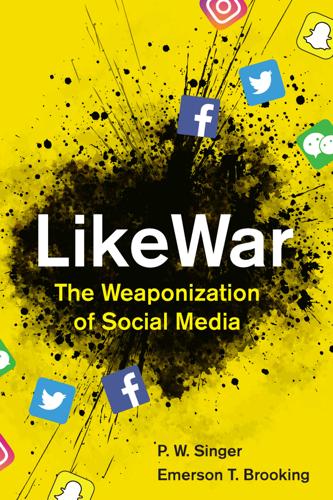
Likewar: The Weaponization of Social Media
by
Peter Warren Singer
and
Emerson T. Brooking
Published 15 Mar 2018
Each neuron has its own level of intensity, determined either by the initial input or by synaptic connections received from neurons farther up the stream. In turn, this determines the strength of the signal these neurons send down the stream through their own dependent synapses. These networks function by means of pattern recognition. They sift through massive amounts of data, spying commonalities and making inferences about what might belong where. With enough neurons, it becomes possible to split the network into multiple “layers,” each discovering a new pattern by starting with the findings of the previous layer. If a neural network is studying pictures, it might start by discovering the concept of “edges,” sorting out all the edges from the non-edges.
…
Such neural network–based sentiment analysis can be applied not just to individual conversations, but to the combined activity of every social media user on a platform. In 2017, Facebook began testing an algorithm intended to identify users who were depressed and at risk for suicide. It used pattern recognition to monitor user posts, tagging those suspected to include thoughts of suicide and forwarding them to its content moderation teams. A suicidal user could receive words of support and link to psychological resources without any other human having brought the post to Facebook’s attention (or even having seen it).

Future Politics: Living Together in a World Transformed by Tech
by
Jamie Susskind
Published 3 Sep 2018
‘Google’s Neural Machine Translation System: Bridging the Gap between Human and Machine Translation’, arXiv, 8 October 2016 <https://arxiv.org/abs/1609.08144> (accessed 6 December 2017); Yaniv Taigman et al.,‘DeepFace: Closing the Gap to Human-Level Performance in Face Verification’, 2014 IEEE Conference on Computer Vision and Pattern Recognition (CVPR) 2014 <https://www.cs.toronto.edu/~ranzato/publications/taigman_ cvpr14.pdf> (accessed 11 December 2017); Aäron van den Oord et al., ‘WaveNet: A Generative Model for Raw Audio’, arXiv, 19 September 2016 <https://arxiv.org/abs/1609.03499> (accessed 6 December 2017). 4. Peter Campbell, ‘Ford Plans Mass-market Self-driving Car by 2021’, Financial Times, 16 August 2016 <https://www.ft.com/content/ d2cfc64e-63c0-11e6-a08a-c7ac04ef00aa#axzz4HOGiWvHT> (accessed 28 November 2017); David Millward, ‘How Ford Will Create a New Generation of Driverless Cars’, Telegraph, 27 February 2017 <http://www.telegraph.co.uk/business/2017/02/27/ford-seeks- pioneer-new-generation-driverless-cars/> (accessed 28 November 2017). 5.
…
Political Philosophy: A Beginners’ Guide for Students and Politicians (Second Edition). Cambridge: Polity Press, 2007. Taigman, Yaniv, Ming Yang, Marc’ Aurelio Ranzato, and Lior Wolf. ‘DeepFace: Closing the Gap to Human-Level Performance in Face Verification’. 2014 IEEE Conference on Computer Vision and Pattern Recognition (CVPR), 2014 <https://www.cs.toronto.edu/~ranzato/ publications/taigman_cvpr14.pdf> (accessed 11 Dec. 2017). Takahashi, Dean. ‘Magic Leap Sheds Light on its Retina-based Augmented Reality 3D Displays’. VentureBeat, 20 Feb. 2015 <http://venturebeat.com/ 2015/02/20/magic-leap-sheds-light-on-its-retina-based-augmentedreality-3d-displays/> (accessed 30 Nov. 2017).
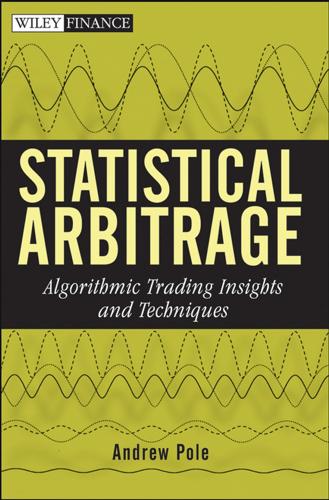
Statistical Arbitrage: Algorithmic Trading Insights and Techniques
by
Andrew Pole
Published 14 Sep 2007
Modeling and trading catastrophe moves must embody a higher state of alertness. 11.3 TREND CHANGE IDENTIFICATION There is a rich statistical literature on change point identification with many interesting models and approaches providing plenty of fascination. Our purpose here is mundane by comparison, though challenging nonetheless. (If any kind of pattern recognition in financial data were not so challenging, we would hardly be writing and reading about it.) An extremely useful approach from statistical process control relies on Cuscore statistics (Box and Luceno 1987). Consider first a catastrophe superimposed on an underlying rising series. Figure 11.6 shows a base trend with slope coefficient 1.0 with a catastrophe move having slope coefficient 1.3 beginning at time 10.
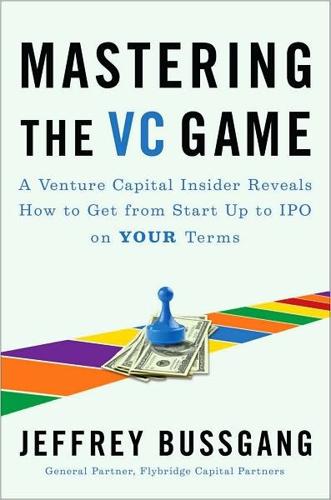
Mastering the VC Game: A Venture Capital Insider Reveals How to Get From Start-Up to IPO on Your Terms
by
Jeffrey Bussgang
Published 31 Mar 2010
The VC can become the CEO’s strategic thought partner, teasing out the key issues, challenging the major assumptions, and generally pushing the CEO to step back from the day-to-day tactical, operational activities and focus on the true value-creating decisions that need to be made. Union Square’s Fred Wilson says he likes to think of himself as the entrepreneur’s consigliere, but a consigliere with great pattern recognition. “I want to be the person they call when they need some advice. Whether it’s ‘I’ve got a problem with sales’ or ‘We need to raise some more money. What do you think the right way is to go about doing that?’ Or, ‘I have this big deal. I’m nervous about it because I’m not sure we can actually meet the expectations.

The Secret War Between Downloading and Uploading: Tales of the Computer as Culture Machine
by
Peter Lunenfeld
Published 31 Mar 2011
The point of MaSAI is to take the maxim of open-source software developers—“Given enough eyeballs, all bugs are shallow”—and apply this to other realms of social life and the built environment. 121 CHAPTER 5 One project that points the way is called Stardust@home, which has assembled a huge group of people to use the network to search for interstellar dust collected by a recent space mission.33 In 2004, the Stardust interstellar dust collector passed through the coma of a comet named Wild2 and captured potentially thousands of dust grains in its aerogel collectors. In 2006, the craft returned to Earth and the search for these grains began in earnest. To find these grains—the first contemporary space dust to ever be identified—within the aerogel is no easy task, though, because they are randomly spaced and tiny. It is also difficult to run pattern-recognition software because the traces that the grains leave are similar to other deformations in the gel. Human perception is well suited to this kind of detailed discrimination, however. Twenty-five years ago, the University of California at Berkeley team would have trained a group of laboratory assistants, and set them to work for the next four or five years.
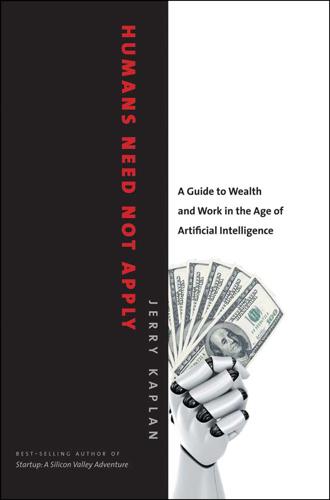
Humans Need Not Apply: A Guide to Wealth and Work in the Age of Artificial Intelligence
by
Jerry Kaplan
Published 3 Aug 2015
See BP oil spill online sales, 7, 90, 136, 177–78, 181–82 advertising and, 64–76, 132 employment effects of, 139–40, 142 product reviews and, 55, 143. See also Amazon Onsale.com, 96 Oracle, 114–15 OSHA (Occupational Safety and Health) rules, 37 Own Your Own Home program, 168 Oxford University, 152 Pandora, 16 paralegals, 148 part-time work, 185 pattern recognition, 25, 55 payroll taxes, 14, 154 PBI. See public benefit index Pearson, Harry, 193 pension funds, 12, 14 Perlman, Steve, 127 personal public transit. See autonomous vehicles personhood, 90, 215n9 corporations vs. synthetic intellects, 199–200 persuasion, 70, 136 pharaoh (ancient Egypt), 115–16 philanthropy, 58, 113, 118–19 phonograph, invention of, 192 pictures: AI recognition of, 39 website links to, 65 pixels, 65, 66 pollution reduction, 168, 195 poverty, 3, 12, 15 preceptrons (programmatic neurons), 24 prepaid cell phone cards, 55 prices: advertising space bids, 69, 70, 71 Amazon practices, 97–105 automation effects on, 73, 132 comparison of, 14, 54, 100–101 public-interest systems and, 56 stock fluctuations (see stock markets) Princeton University, 113 productivity, 12, 132, 136 professions, 11, 145–46, 157 professors, 11, 151 profits, 55, 72, 103 progressives, 163–65 prostitutes, 40, 144–45 protein folding research, 58 psychopaths, 79–80 public benefit index (PBI), 14, 15, 180–81, 182 public interest, 56, 163–65, 169, 178 public service, 58, 114, 184, 185 public transit.
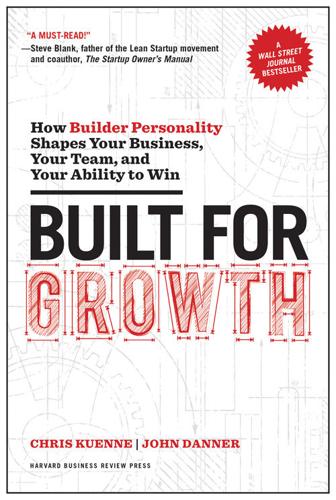
Built for Growth: How Builder Personality Shapes Your Business, Your Team, and Your Ability to Win
by
Chris Kuenne
and
John Danner
Published 5 Jun 2017
Jim Hornthal, a venture investor and serial builder with more than ten startups to his credit across a broad swath of products and markets, has used this ability well. He is somewhat of a composite, with a Crusader-esque sense of mission for his ventures, combined with a Driver’s curiosity and confident market-sensing willingness to bet on his pattern recognition insights about emerging technology or social trends. And more recently, he’s honed an Explorer-like fascination with cracking the code of complex systems, in this case applying the lean startup framework of rigorous, iterative hypothesis-testing with customers to “evidence-based” entrepreneurship and innovation itself.

Internet for the People: The Fight for Our Digital Future
by
Ben Tarnoff
Published 13 Jun 2022
Its portfolio, which soon expanded beyond EC2 and S3 to include dozens of different services, would enable smaller, newer, or less technical companies to create online malls, and to develop some of the same capacities of a firm like Google without having to build their own infrastructure or acquire top engineering talent. These dynamics accelerated with the onset of the “big data” era in the 2010s. This period saw rapid advances in machine learning, a set of techniques for pattern recognition that could be applied to a number of tasks with increasing precision, from predicting consumer preferences to understanding human speech to recognizing human faces. Because machine learning “learns” by training on data, the abundant amount of data being generated through the internet greatly sped the development of the technology.
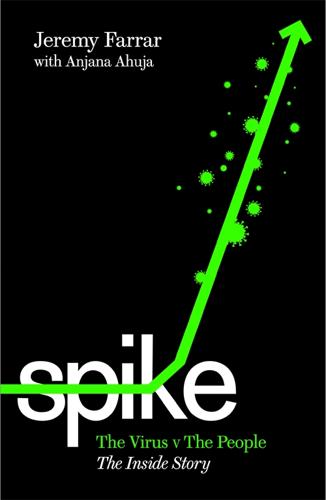
Spike: The Virus vs The People - The Inside Story
by
Jeremy Farrar
and
Anjana Ahuja
Published 15 Jan 2021
The original SARS virus to which it bears significant genetic resemblance used to be called SARS-CoV and has now been renamed SARS-CoV-1. Eddie Holmes is a British-born virologist and professor at the University of Sydney who does exactly this sort of viral detective work. He is, in my book, the outstanding evolutionary biologist of his generation, with an extraordinary brain when it comes to pattern recognition. Eddie belongs to a research consortium which includes the Shanghai Public Health Clinical Center and School of Public Health at Fudan University, Shanghai, where he holds an honorary professorship. Since 2012, Eddie has worked closely with Professor Yong-Zhen Zhang, a professor at Fudan University, on finding and identifying new animal viruses, and Wuhan is a familiar locale in their virus-hunting network.

Engineering Security
by
Peter Gutmann
[187] “The heuristic-systematic model in its broader context”, Serena Chen and Shelly Chaiken, Dual-Process Theories in Social Psychology, Guilford Press, 1999, p.73. [188] “Information Foraging in Information Access Environments”, Peter Pirolli and Stuart Card, Proceedings of the 13th Conference on Human Factors in Computing Systems (CHI’95), May 1995, p.51. 102 Problems [189] “Thinking is for Doing: Portraits of Social Cognition from Daguerreotype to Laserphoto”, Susan Fiske, Journal of Personality and Social Psychology, Vol.63, No.6 (December 1992), p.877. [190] “pattern recognition”, Dan Kaminsky, invited talk at Black Ops 2006 at the 20th Large Installation System Administration Conference (LISA’06), December 2006. [191] “SSH for fun and profit”, Sebastian Krahmer, 1 July 2002, http://www.shellcode.com.ar/docz/asm/ssharp.pdf. [192] “Hacking: The Art of Exploitation”, Jon Erickson, No Starch Press, 2003. [193] “THC Fuzzy Fingerprint”, 25 October 2003, http://www.thc.org/thc-ffp/. [194] “Fuzzy Fingerprints: Attacking Vulnerabilities in the Human Brain”, “Plasmoid”, 25 October 2003, http://www.thc.org/papers/ffp.html. [195] “Do Users Verify SSH Keys?”
…
One common example is the number of people who find it almost impossible to read about a new medicine or therapy without immediately discovering that they suffer from a large number of the symptoms of whatever it’s supposed to cure and require immediate treatment, something that was already providing material for humorists in the late 1800s [243]. A standard theme in the psychological literature is the recognition that humans are primarily pattern recognisers (click, whirr) rather than analytical problem solvers and will attempt to solve any problem by repeatedly applying context-specific pattern recognition to find a solution before they fall back to tedious analysis and optimisation. The psychological model for this process is the generic error modelling system (GEMS), in which someone faced with a problem to solve first tries repeated applications of a rule-based approach (“if ( situation ) then ( action )”) before falling back to a knowledge-based approach that requires analysing the problem space and formulating an appropriate course of action.
…
Investigating User Account Control Practices”, Sara Motiee, Kirstie Hawkey and Konstantin Beznosov, Proceedings of the 6th Symposium on Usable Security and Privacy (SOUPS’10), July 2010, p.1. [418] “Citizen Science: A Study of People, Expertise and Sustainable Development”, Alan Irwin, Routledge, 1995. [419] “Risk, Crisis, and Security Management”, Edward Borodzicz, John Wiley and Sons, 2005. [420] “Unverhältnismäßiges Urteil”, Ulf Kersing, c’t Magazin für Computertechnik, 2 October 2006, p.11. [421] “Black Ops 2006: Pattern Recognition”, Dan Kaminsky, presentation at Black Hat 2006. [422] “Banks Shifting Logins to Non-SSL Pages”, Rich Miller, 23 August 2005, http://news.netcraft.com/archives/2005/08/23/banks_shifting_logins_to_nonssl_pages.html. References 225 [423] Lucas Adamski, comments during the Browser Security Track, OWASP Summit 2011, 10 February 2011. [424] “TLS and SSL in the real world”, Eric Lawrence, 20 April 2005, http://blogs.msdn.com/ie/archive/2005/04/20/410240.aspx. [425] “Has there been a change in US banking regulations recently?”
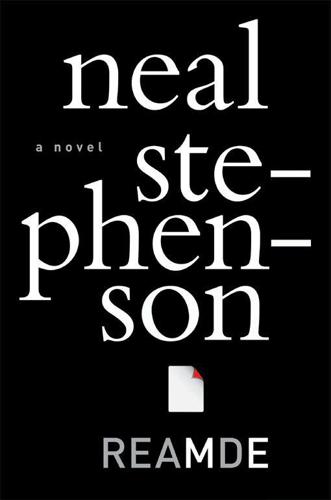
Reamde
by
Neal Stephenson
Published 19 Sep 2011
Corvallis and most of the other techies hated this idea because of its sheer bogosity, which was screamingly obvious to any person of technical acumen who thought about it for more than a few seconds. If their pattern-recognition software could identify the moving travelers and vectorize their body positions well enough to translate their movements into T’Rain, then it could just as easily notice, automatically, with no human intervention, when one of those figures was walking the wrong way and sound the alarm. There was no need at all to have human players in the loop. They should just spin out the pattern-recognition part of it as a separate business. Richard understood and acknowledged all of this—and did not care.
…
For example, they would digitally insert fake images of guns into the video feed from an x-ray machine, frequently enough that the screeners would see false-color silhouettes of revolvers and semiautomatics and IEDs glide across their visual fields several times a day, instead of once every ten years. That, according to the research, was enough to prevent their pattern-recognition neurons from being reclaimed and repurposed by brain processes that were more fruitful, or at least more entertaining. The brain, as far as Richard could determine from haphazard skimming of whatever came up on Google, was sort of like the electrical system of Mogadishu. A whole lot was going on in Mogadishu that required copper wire for conveyance of power and information, but there was only so much copper to go around, and so what wasn’t being actively used tended to get pulled down by militias and taken crosstown to beef up some power-hungry warlord’s private, improvised power network.
…
They spun that up into a demo, which they showed to several regional airports that were too small and poorly funded to afford fancy, expensive, alarm-equipped one-way doors, and thus had to rely on the bored-employee-sitting-in-a-chair-by-the-door technology. They parlayed those meetings into a deal that gave them access to live 24/7 security camera footage from a couple of those airports. The footage, of course, just showed people walking through the exit. They patched that footage into pattern recognition software that identified the shapes of the individual humans and translated them into vector data in 3D space. This made it possible to import all the data into the T’Rain game engine. The same positions and movements were conferred on avatars from the T’Rain world. The stream of human passengers walking down the corridor in their blazers, their high heels, their Chicago Bears sweatpants, became a stream of K’Shetriae, Dwinn, trolls, and other fantasy characters, dressed in chain mail, plate armor, and wizards’ robes, moving down a stone-lined passageway at the exit of the mighty Citadel of Garzantum.
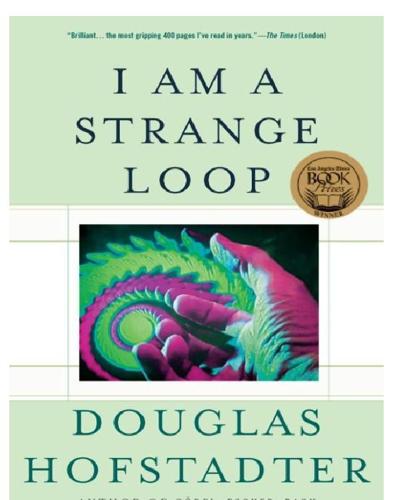
I Am a Strange Loop
by
Douglas R. Hofstadter
Published 21 Feb 2011
My list is a random walk through an everyday kind of mental space, drawn up in order to give a feel for the phenomena in which we place the most stock and in which we most profoundly believe (sour grapes and wild goose chases being quite real to most of us), as opposed to the forbidding and inaccessible level of quarks and gluons, or the only slightly more accessible level of genes and ribosomes and transfer RNA — levels of “reality” to which we may pay lip service but which very few of us ever think about or talk about. And yet, for all its supposed reality, my list is pervaded by vague, blurry, unbelievably elusive abstractions. Can you imagine trying to define any of its items precisely? What on earth is the quality known as “tackiness”? Can you teach it to your kids? And please give me a pattern-recognition algorithm that will infallibly detect sleazeballs! Reflected Communist Bachelors with Spin 1/2 are All Wet As a simple illustration of how profoundly wedded our thinking is to the blurry, hazy categories of the macroworld, consider the curious fact that logicians — people who by profession try to write down ironclad, razor-sharp rules of logical inference that apply with impeccable precision to linguistic expressions — seldom if ever resort to the level of particles and fields for their canonical examples of fundamental, eternal truths.
…
What are the exact boundaries of a Conscious physical entity? What organizational or chemical property of a physical structure is it that graces it with the right to be invaded by a dollop of Consciousness? What mechanism in nature makes the elusive elixir of Consciousness glom onto some physical entities and spurn others? What wondrous pattern-recognition algorithm does Consciousness possess so as to infallibly recognize just the proper kinds of physical objects that deserve it, so it can then bestow itself onto them? How does Consciousness know to do this? Does it somehow go around the physical world in search of candidate objects to glom onto?
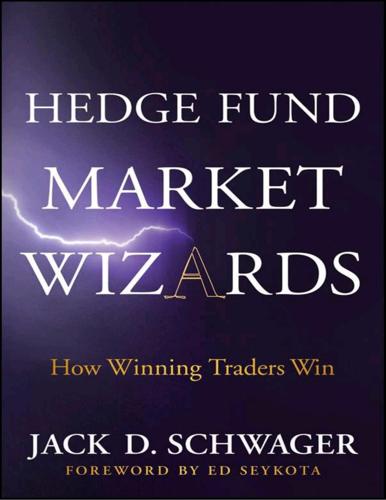
Hedge Fund Market Wizards
by
Jack D. Schwager
Published 24 Apr 2012
Even when we got CQG screens, which had graphics, I still continued to update my printed charts manually for a long time. It was a daily routine of looking at each chart and thinking about what the patterns were telling you. I would even turn the charts upside down to see whether the pattern looked different to me. Over time, it helped me develop a sense of pattern recognition. Were you trading your own account when you were a broker? I had been trading my own account all along. How did you do? I did fine. I made money virtually every year, but I didn’t make a lot of money. One thing I did wrong was that I thought only technical factors were important and that fundamentals didn’t matter.
…
There is a third category of systematic approaches whose signals do not seek to profit from either continuations or reversals of trend. These types of systems are designed to identify patterns that suggest a greater probability for either higher or lower prices over the near term. Woodriff is among the small minority of CTAs who employ such pattern-recognition approaches, and he does so using his own unique methodology. He is one of the most successful practitioners of systematic trading of any kind. Woodriff grew up on a working farm near Charlottesville, Virginia. Woodriff’s perceptions of work were colored by his childhood experiences. When he was in high school, Woodriff thought it was sad that most people loved Fridays and hated Mondays.

Power and Progress: Our Thousand-Year Struggle Over Technology and Prosperity
by
Daron Acemoglu
and
Simon Johnson
Published 15 May 2023
Tracking this indelible footprint, we can see that AI investments and the hiring of AI specialists concentrate in organizations that rely on tasks that can be performed by these technologies, such as actuarial and accounting functions, procurement and purchasing analysis, and various other clerical jobs that involve pattern recognition, computation, and basic speech recognition. However, the same organizations also lower their overall hiring substantially—for example, reducing their postings for all sorts of other positions. Indeed, the evidence indicates that AI so far has been predominantly focused on automation. Moreover, claims that AI and RPAs are expanding into nonroutine, higher-skilled tasks notwithstanding, most of the burden of AI automation to date has fallen on less-educated workers, already disadvantaged by earlier forms of digital automation.
…
GPT-3 cannot reason about the context in which the tasks it is performing are situated and draw on causal relationships that exist between actions and effects. As a result, it sometimes misunderstands even simple instructions and has little hope of responding adequately to changing or completely new environments. Indeed, this discussion illustrates a broader problem. Statistical approaches used for pattern recognition and prediction are ill-suited to capturing the essence of many human skills. To start with, these approaches will have difficulty with the situational nature of intelligence because the exact situation is difficult to define and codify. Another perennial challenge for statistical approaches is “overfitting,” which is typically defined as using more parameters than justified for fitting some empirical relationship.

The Handbook of Personal Wealth Management
by
Reuvid, Jonathan.
Published 30 Oct 2011
Typically short-term CTAs are equipped to benefit from sharp intra-day moves, with longer-term CTAs seeking to generate profits from more established trends. Short-term CTAs have developed sophisticated platforms where the average holding period can range from minutes to just several trading days. Typically, mathematical approaches are used focusing on momentum and pattern recognition; additionally a large percentage of their resource is spent on developing the technological infrastructure, as often the portfolio needs to be monitored and adjusted on a realtime basis. Fundamental to the strategy is a stop-loss system that limits the downside should a trade go wrong. Keeping an eye on trading costs is also key as turnover is very high.

Idoru
by
William Gibson
Published 2 Jan 1996
I Laney looked at the bubbles on the surface of his beer. "It's like seeing things in clouds," Laney said. "Except the things you see are really there." She put her sake down. "Yamazaki promised me you weren't crazy." "It's not crazy It's something to do with how I process low-level, broad-spectrum input. Something to do with pattern-recognition." "And Slitscan hired you on the basis of that?" "They hired me when I demonstrated that it works, But I can't do that with the kind of data you showed me today" "Why not?" Laney raised his beer. "Because it's like trying to have a drink with a bank. It's not a person. It doesn't drink.

Collider
by
Paul Halpern
Published 3 Aug 2009
It would be like walking into a barn and finding the placid cows and sheep being serenaded by wild rhinoceri, hyenas, platypi, mammoths, and a host of unidentified alien creatures. Given the ridiculously diverse menagerie nature had revealed, finding any semblance of unity would require extraordinary pattern-recognition skills, a keen imagination, and a hearty sense of humor. 6 A Tale of Two Rings the Tevatron and Super Proton Synchrotron Its true that there were a few flaws in my logic. The rivers of ground water that flowed through their experiments, the walls of piling rusting away, the impossible access, and all without benefit of toilet facilities.
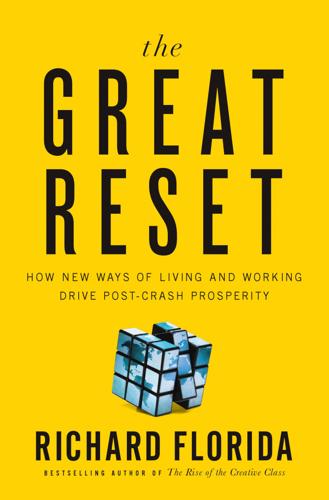
The Great Reset: How the Post-Crash Economy Will Change the Way We Live and Work
by
Richard Florida
Published 22 Apr 2010
In fact, the unemployment rate for the creative class crossed the 5 percent mark only once—in the current downturn. The unemployment rates faced by service workers have fallen somewhere in between.5 The old manufacturing economy honed physical skills such as lifting and manual dexterity. But two sets of skills matter more now: analytical skills, such as pattern recognition and problem solving, and social intelligence skills, such as the situational sensitivity and persuasiveness required for team building and mobilization. Jobs that demand high analytical skills, such as medicine and bioengineering, and social intelligence skills, such as psychiatry and management, are not only increasing in numbers faster than other jobs but also pay much more.
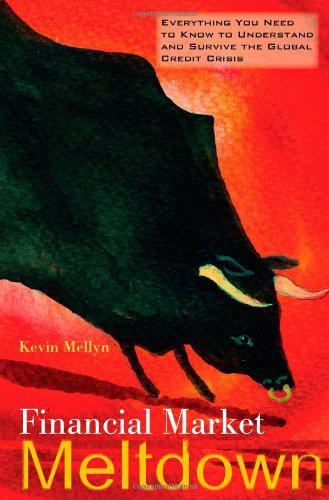
Financial Market Meltdown: Everything You Need to Know to Understand and Survive the Global Credit Crisis
by
Kevin Mellyn
Published 30 Sep 2009
Above all, we have seen this movie before, in the abject failure of socialism and the activist governments of the twentieth century to deliver economic growth and sustained prosperity for their populations. THE NEW NORMAL This all matters for you and your money because a political environment actively hostile to capitalism and finance is emerging, what the CEO of the giant bond fund PIMCO, Mohamed El-Erian, calls the ‘‘New Normal.’’ As humans, we all depend on pattern recognition. We automatically assume that what has happened in our lifetimes is normal, and any diversion from the straight projection of the past into the future is temporary. We live in the ‘‘normal’’ we have experienced. Unless you are a very old American and remember the economic drift and hopelessness of the 1970s, unless you were out of college and working well before the Thatcher and Reagan revolutions of 1979 and Conclusion 1980s, you will take the long bull market of the last quarter century for granted.
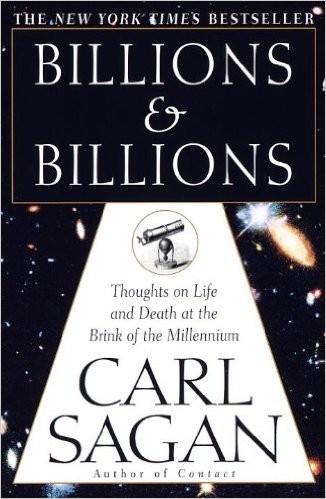
Billions & Billions: Thoughts on Life and Death at the Brink of the Millennium
by
Carl Sagan
Published 11 May 1998
It is time to learn from those who fell here. And it is time to act. In part the American Civil War was about freedom; about extending the benefits of the American Revolution to all Americans, to make valid for everyone that tragically unfulfilled promise of "liberty and justice for all." I'm concerned about a lack of historical pattern recognition. Today the fighters for freedom do not wear three-cornered hats and play the fife and drum. They come in other costumes. They may speak other languages. They may adhere to other religions. The color of their skin may be different. But the creed of liberty means nothing if it is only our own liberty that excites us.

Delete: The Virtue of Forgetting in the Digital Age
by
Viktor Mayer-Schönberger
Published 1 Jan 2009
That more abstract information—a black dog swiftly approaching us—is more usable than millions of individual bits of information contained in a series of snapshots of something black getting closer and closer. More importantly, it is also much more compact. As our nerve cells process the incoming information, from simple stimuli to pattern recognition, a tremendous amount of information is deliberately lost. It is the first layer of unconscious biological forgetting—and one we rarely realize. Once an external stimulus makes it through that initial layer or after we have formed a thought, it is then usually stored in what’s called short-term memory.

Investing Demystified: How to Invest Without Speculation and Sleepless Nights
by
Lars Kroijer
Published 5 Sep 2013
Like the research analysts from the banks, Ability has an army of expert PhDs who study sales trends and spot new potential challenges (they were among the first to spot Facebook and Google). Further, Ability has economists who study the US and global financial system in detail as the world economy affects Microsoft’s performance. Ability also has mathematicians with trading pattern recognition technology to help with the analysis. Susan loves reading books about technology and every finance/investing book she can get her hands on, including all the Buffett and value investor books. Susan and her team know everything there is to know about the stocks she follows (including a few things she probably shouldn’t know, but she keeps that close to her chest), some of which are much smaller and less well researched than Microsoft.
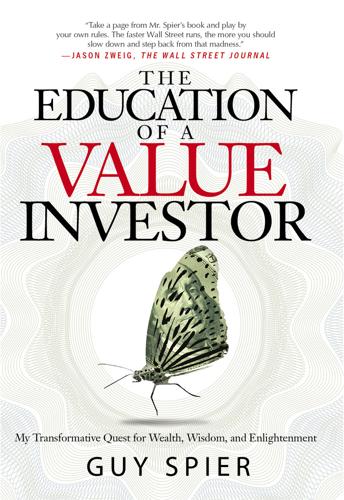
The Education of a Value Investor: My Transformative Quest for Wealth, Wisdom, and Enlightenment
by
Guy Spier
Published 8 Sep 2014
The long-term survivors possess a more sophisticated grasp of risk, including the ability to see when the situation is much less risky than the stock price might suggest. With JPMorgan Chase and the other money-center banks there was a lot of uncertainty, but very little risk. Bridge wasn’t the only game that captured my imagination or refined my mental habits. I also rediscovered the joys of chess, a wonderful game of analysis and pattern recognition. I first fell in love with chess at Harvard, thanks to my classmate Mark Pincus, who later founded Zynga, a social gaming company that made him a billionaire. Back in our student days, Mark noticed an unused chess set in my dorm and asked me to play. He thrashed me. I bought a stack of chess books and we continued to play.
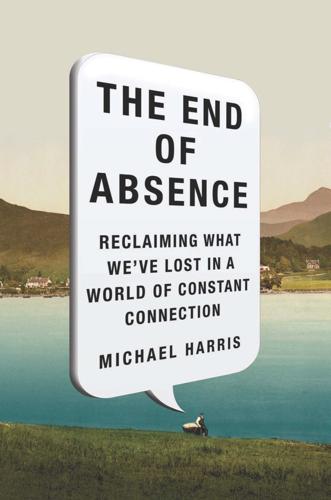
The End of Absence: Reclaiming What We've Lost in a World of Constant Connection
by
Michael Harris
Published 6 Aug 2014
We also have Q sensors—bands worn on the wrist that measure your “emotional arousal” by monitoring body heat and the skin’s electrical conductance. But the root problem remains unchanged. Whether we’re talking about “affective computers” or “computational empathy,” at a basic level we’re still discussing pattern recognition technology and the ever more sophisticated terrain of data mining. Always, the goal is to “humanize” an interface by the enormous task of filtering masses of lived experience through a finer and finer mesh of software. Many of the minds operating at the frontier of this effort come together at MIT’s Media Lab, where researchers are busy (in their own words) “inventing a better future.”
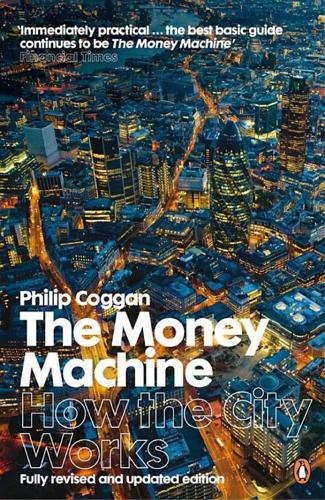
The Money Machine: How the City Works
by
Philip Coggan
Published 1 Jul 2009
If, after the third peak, the price falls below the level of the second bottom, this indicates a major reversal in the price trend. Double bottoms/tops. A double bottom or top indicates a major reversal in the price trend. Both consist of two troughs (or peaks) separated by a price movement in the opposite direction. Apart from pattern recognition, technical analysts also study momentum and moving average models. Momentum analysis studies the rate of change of prices rather than merely price levels. If the rate of change is increasing, that indicates that a trend will continue; if the rate of change is decreasing, that indicates that the trend is likely to be reversed.
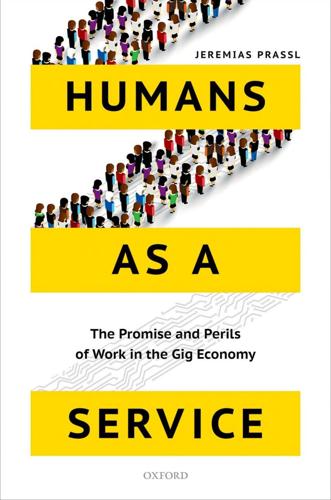
Humans as a Service: The Promise and Perils of Work in the Gig Economy
by
Jeremias Prassl
Published 7 May 2018
As long as the routine nature of the task is central to its automation, however, technology is likely to advance much more rapidly in other sectors of the economy.14 Consider legal discovery and due diligence as an example: once the preserve of well-paid junior lawyers, locked away for weeks on end to wade through crates of documents, it has quickly become dominated by language- and pattern-recognition software.15 For now, it seems more likely that automation will drive further gig- economy growth. Technology increasingly allows traditional jobs to be broken down into discrete tasks. Think of a commercial lawyer advising on a merger transaction: traditionally, she would have had to begin with due diligence before sitting down to draft a series of contracts, meeting with the other side to negotiate terms, and continuously communicating updates to the client.

We Are Bellingcat: Global Crime, Online Sleuths, and the Bold Future of News
by
Eliot Higgins
Published 2 Mar 2021
In YouTube videos, I found driverless cars rigged with bombs and directed by remote control, along with bizarre-looking trucks converted into mobile forts with slabs of protective metal, armoured wheels and firing posts. I found a heavy machine gun mounted on a trolley; fuse-lit explosive bottles fired with an oversized slingshot; a homemade missile that looked like a hybrid of a firework and a space rocket.44 Paradoxically, my lack of Arabic could be an asset in pattern recognition. Videos showed furious young men shouting at wobbly cameras, or victims crying about lost loved ones. Such emotional declarations would affect anyone who understood them. But I could not, so ignored the foreground and scrutinised what I could judge: objects. This directed me to a key precept of digital sleuthing.

Shadow Work: The Unpaid, Unseen Jobs That Fill Your Day
by
Craig Lambert
Published 30 Apr 2015
There have been many attempts at computer-generated poetry, for example, but the results are uniformly awful. There are many reasons for this, including the sound of poetry, but a critical factor is that computers lack a gift for metaphor. Silicon chips are poor at comparisons. Asking a computer to write a poem is like asking a home entertainment system to compose music. Furthermore, for pattern recognition, a long memory can come in handy. The legendary broadcaster Daniel Schorr, senior news analyst for National Public Radio for more than two decades until his death in 2010, consistently demonstrated how long experience (he was nearly seventy when he joined NPR in 1985) could illuminate current events.
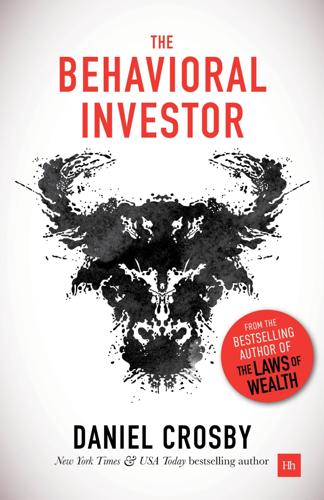
The Behavioral Investor
by
Daniel Crosby
Published 15 Feb 2018
Some Ivy League educated market wizard in a $3,000 suit is expounding a complicated macro thesis that interweaves everything from geopolitical threats to potential Fed moves to soybean production. Listening to such a story is hypnotic and rightly impressive; the human ability for higher order thinking and pattern recognition is on full display. But all too often our market wizard is like the human subject in our game show who has overcomplicated the task. The elegance of the story has overtaken the likelihood of its occurrence. The behavioral investor thinks like a rat, caring only for probability in a world that craves sophisticated nonsense.
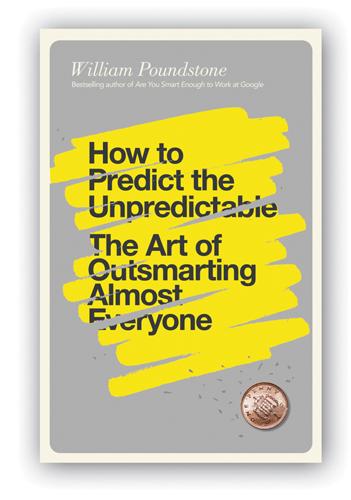
How to Predict the Unpredictable
by
William Poundstone
“I went in scripting only my first throw in my head,” 2008 USA Rock Paper Scissors League champion Sean Sears told me. “Then, depending on if it was a win, loss, or tie, I had the second throw scripted as well.” Like chess masters, good RPS players generally plan their openings and then quickly switch to improvisation. Sears uses “pattern recognition” of the opponent’s moves as well as perceptions of his emotional state and likely strategies. Trash talk is allowed in most tournaments, and honesty can be the most Machiavellian policy. Announce what sign you’re going to throw, and then throw it. This trips up the naïve player who figures you won’t go through with it.
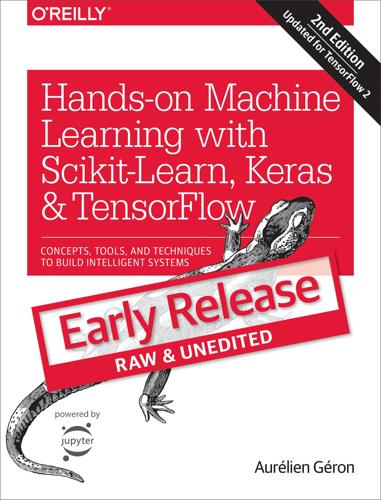
Hands-On Machine Learning With Scikit-Learn, Keras, and TensorFlow: Concepts, Tools, and Techniques to Build Intelligent Systems
by
Aurelien Geron
Published 14 Aug 2019
Solutions to these exercises are available in the online Jupyter notebooks at https://github.com/ageron/handson-ml2. 1 By default Scikit-Learn caches downloaded datasets in a directory called $HOME/scikit_learn_data. 2 Shuffling may be a bad idea in some contexts—for example, if you are working on time series data (such as stock market prices or weather conditions). We will explore this in the next chapters. 3 But remember that our brain is a fantastic pattern recognition system, and our visual system does a lot of complex preprocessing before any information reaches our consciousness, so the fact that it feels simple does not mean that it is. 4 Scikit-Learn offers a few other averaging options and multilabel classifier metrics; see the documentation for more details. 5 You can use the shift() function from the scipy.ndimage.interpolation module.
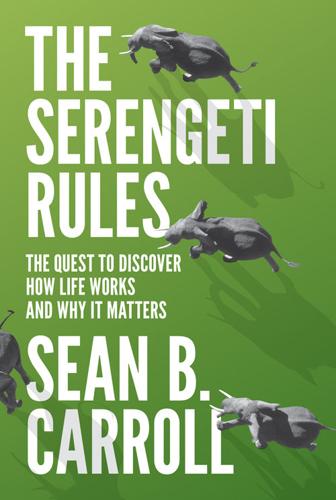
The Serengeti Rules: The Quest to Discover How Life Works and Why It Matters
by
Sean B. Carroll
Published 16 Feb 2016
Her father introduced her to stamp collecting, and she became quite good at analyzing fine details. At an early age, she was able to pick out subtle differences among issues, such as whether there was a period or other distinguishing marks. She maintained the hobby well into adulthood, and the pattern recognition skills she acquired would turn out to serve her well. After just two years of high school, Davison won a scholarship for a special program at the University of Chicago that enabled her to enroll at age fifteen and to complete both high school and a bachelor’s degree. Davison thrived in the challenging but supportive atmosphere, and she developed a strong interest in biology and medicine.
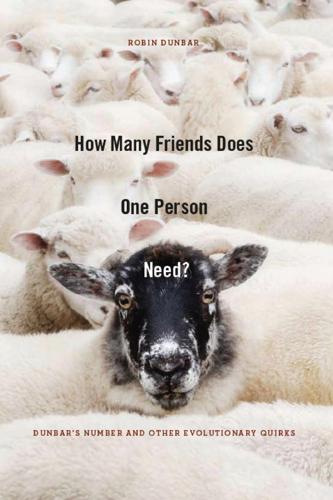
How Many Friends Does One Person Need? Dunbar’s Number and Other Evolutionary Quirks
by
Robin Dunbar
and
Robin Ian MacDonald Dunbar
Published 2 Nov 2010
If you plot the volume of the striate cortex (the primary visual area in the brain) against the rest of the neocortex for all primates (including humans), you find that the relationship between these two components is not linear: it begins to tail off at about the brain size of great apes. Great apes and humans have less striate cortex than you might expect for their brain size. This may be because, after a certain point, adding more visual cortex doesn’t necessarily add significantly to the first layer of visual processing (which mostly deals with [Page 272] pattern recognition). Instead, as brain volume (or at least neocortex volume) continues to expand, more neurons become available for those areas anterior to the striate cortex (i.e. those areas that are involved in attaching meaning to the patterns picked out in the earlier stages of visual processing). An important part of that is, of course, the high-level executive functions associated with the frontal lobes.
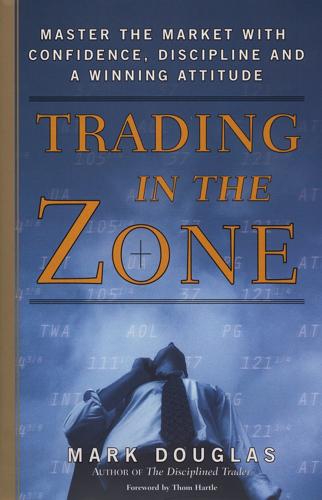
Trading in the Zone: Master the Market With Confidence, Discipline and a Winning Attitude
by
Mark J. Douglas
Published 1 Apr 2000
I am not implying here that you have to de-activate every belief that would argue against your ever-expanding positive sense of self-valuation, because you don’t. But you must be aware of the presence of such beliefs, and take specific steps in your trading regimen to compensate when they start expressing themselves. Chapter 11 Thinking Like a Trader If you asked me to distill trading down to its simplest form, I would say that it is a pattern recognition numbers game. We use market analysis to identify the patterns, define the risk, and determine when to take profits. The trade either works or it doesn’t. In any case, we go on to the next trade. It’s that simple, but it’s certainly not easy. In fact, trading is probably the hardest thing you’ll ever attempt to be successful at.

Your Life in My Hands: A Junior Doctor's Story
by
Rachel Clarke
Published 14 Sep 2017
The ECG trace showed he had indeed suffered a catastrophic heart attack. It was only after the cardiologists had whisked him away to the Coronary Care Unit that I started to think about what I had done. It had been a risky call, based on something more intangible than a neat protocol like my ‘A, B, C’: a subtle blend of burgeoning gut instinct, pattern recognition and an understanding of the physiology of heart failure acquired in lecture rooms and libraries. Good doctoring, I’d just discovered, relied upon instinct and experience at least as much as checklists and guidelines. I felt shaky, overwhelmed by the odds I’d just naïvely managed, stricken by the what-ifs and maybes.
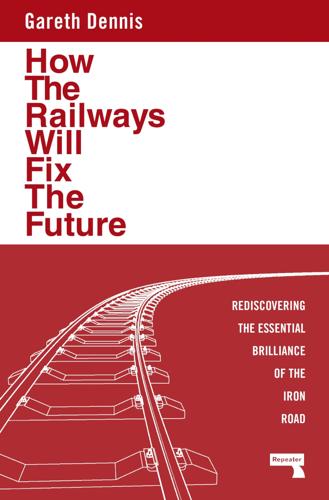
How the Railways Will Fix the Future: Rediscovering the Essential Brilliance of the Iron Road
by
Gareth Dennis
Published 12 Nov 2024
If inspection technologies leapt forwards towards the end of the twentieth century, then our ability to analyse that data has jumped forwards commensurately in the 2010s. Unlike many purported areas of application for so-called artificial intelligence technologies, the nature of the railways as long strings of highly repeatable elements makes them well suited to such innovations. Network Rail’s world-leading plain-line pattern-recognition train captures 70,000 images a second, travelling at 200 km/h. Its high-resolution images capture every millimetre of the railway in sufficient detail to identify almost all visible defects quickly, and with more accuracy than the regular human visual inspections that they replaced. This is thanks to the well-tested use of machine learning to identify not just common defects but unusual ones.

The Power Law: Venture Capital and the Making of the New Future
by
Sebastian Mallaby
Published 1 Feb 2022
While Goetz led on the prepared mind, Botha pioneered the application of behavioral science to venture capital. This was a radical idea, and Botha’s colleagues came to regard it as transformative for Sequoia.[17] At other venture partnerships, investors often boasted about relying on instinct. They claimed to have “pattern recognition,” an investment sixth sense; “I’ve had this my entire career, and I do not know why,” one successful VC said happily.[18] But Botha pointed out that in well-known experiments stretching back to the 1970s, psychologists had shown how human reflexes distort rational decisions, and he set out to apply the resulting insights to Sequoia’s Monday partners’ meetings.
…
See 80/20 rule Parker, Sean Facebook, 194–98, 254, 256, 257–61, 380 Founders Fund, 208, 212 Plaxo, 196–98, 199, 207 Partovi, Ali and Hadi, 455n Pasteur, Louis, 128 patents, 398–99 path dependency, 261, 263, 272, 299, 377, 379, 460n “pattern recognition,” 309 Patterson, Arthur, 128–32. See also Accel Capital background of, 128–29 confidentiality and venture capital, 433n Efrusy and, 249–50, 449n Facebook investment, 255–56 founding of Accel, 128–29 Google investment, 174 specialist approach of, 129–31, 435n, 436n telecom investments, 129–31 UUNET investment, 138, 139, 141 PayPal, 211 eBay acquisition of, 206–8, 248, 292 Stripe and, 317, 319, 320 viral marketing, 443n X.com and Musk, 201–7, 214, 328 PCs (personal computers), 82–92, 106–7 pension funds, 40–41, 61, 81, 274 people-led investing, 48, 51 Perella, Joseph, 178 Perelman, Ronald, 287 Perkins, Tom, 60, 67–72, 74–80, 264, 378 Apple investment, 82, 83 founding of Kleiner Perkins, 67–70 Genentech investment, 74–79, 80 GO Corp. investment, 122–23 investing strategy of, 60, 69–70, 72, 75, 128, 266 Silicon Compilers and Ungermann-Bass, 108, 202–3 Tandem Computers investment, 70–72, 80 white-hot risks, 70, 75, 76, 80, 128, 266 Perkins’s law, 72, 75 Perot, Ross, 441n Pincus, Mark, 198, 213, 443n Pinduoduo, 402 Pinterest, 298, 302 Pioneer, 221 Pishevar, Shervin, 354, 355–57, 368 Plaxo, 196–98, 207 Players Technology Summit, 302 Pong, 58–59, 63, 425n Portal Software, 174, 436n, 440n Postmates, 302 Powell, Colin, 265 power law, 6–9, 10, 31, 79, 132, 147, 178, 210–11, 376–77 normal distribution, 6 power law distribution, 7 Powerset, 211 preferred stock, 231, 275–77 “prepared mind,” 122, 128, 250–51, 252, 308–9 price-earnings ratio, 47 Price Waterhouse, 235 private limited partnerships, 41, 43–46, 92, 397–98 Prodigy, 137 Project Maven, 394–95 proxy caches, 187 Prudential Financial, Inc., 24 “prudent-man rule,” 61, 91, 92, 129 Q Qiming, 223–25, 234–35, 400, 446n Qualtrics, 451n quantitative analysis, 14, 47 quantitative easing, 336, 337, 338 QuantumScape, 263 Quartermaster Corps, 28 Quist, George, 51 Qume, 101, 190, 208, 426n Sutter Hill deal, 66–67, 98, 102, 103, 115, 184, 187–88, 290 R Rachleff, Andrew, 161–62, 167, 171–72, 416n, 439–40n racial diversity, 14–15, 384–85, 412 Radar Partners, 265 Rambler, 287 Ramsey Beirne, 168 Rand, Ayn, 61 randomness thesis, 376–77 “ratchet-down” clauses, 105 Raytheon Technologies, 18, 395 Reagan, Ronald, 92 recombinant DNA, 72–78 Reddit, 218 Red Hat, 170 Research in Motion, 331 Reynolds, Ryan, 368 Rickey’s Hyatt House, 67–68 Rieschel, Gary, 222–25, 234–35, 248, 445n, 446n RingCentral, 333 risk management, 12, 40, 46–47 Roberts, Sheldon, 34, 54 Robertson, Julian, 8, 278, 281, 282, 283, 337 Robertson, Michael, 458n Robertson, Sandy, 426n Rock, Arthur, 43–57, 79–80, 209, 220, 378–79, 382, 390, 422–23n Apple, 86–91, 229, 377 background of, 31–32 at Davis & Rock, 44–51, 382 Fairchild Semiconductor, 31–39, 52–55, 225 financial model of, 40, 46–48, 51, 225, 382 at Hayden, Stone, 31–33, 35–37, 44, 46, 225 Intel, 55–57, 237, 378 “intellectual book value,” 47, 78, 390 Kapor and, 135 SDS investment, 48–50 Tandem Computers, 71 Rockefeller, Laurance, 26 Rockefeller family, 26, 32, 35, 51, 56, 71 Rockefeller University, 68 Rodgers, T.
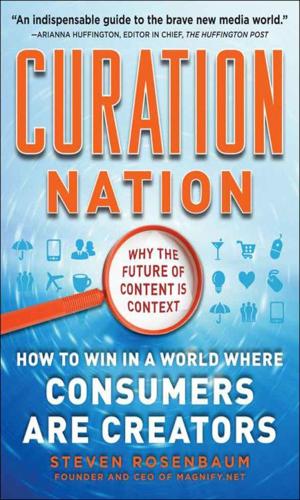
Curation Nation
by
Rosenbaum, Steven
Published 27 Jan 2011
There are ‘digital ethnographers,’ slightly fewer ‘cyber anthropologists,’ but media is most in need of digital historians like Jason Scott providing historical context. Someone who can determine the ‘and this’ from the ‘don’t forget’ in fickle Internet memes. Implied by the word curator is an intuitive sense of pattern recognition … More visual than a mere editor, the Internet curator requires a sense of the relationships between words, images, space, and shapes.” But I still haven’t answered the question I set out to resolve for you in this chapter: what is curation, exactly? THE ORIGIN OF CURATION Let’s start with where the need for a new word came from.
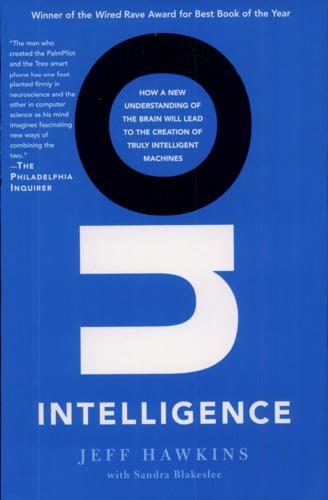
On Intelligence
by
Jeff Hawkins
and
Sandra Blakeslee
Published 1 Jan 2004
I found their descriptions inconsistent and incomplete. Linguists talked of intelligence in terms such as "syntax" and "semantics." To them, the brain and intelligence was all about language. Vision scientists referred to 2D, 2˝D, and 3D sketches. To them, the brain and intelligence was all about visual pattern recognition. Computer scientists talked of schemas and frames, new terms they made up to represent knowledge. None of these people talked about the structure of the brain and how it would implement any of their theories. On the other hand, anatomists and neurophysiologists wrote extensively about the structure of the brain and how neurons behave, but they mostly avoided any attempt at large-scale theory.
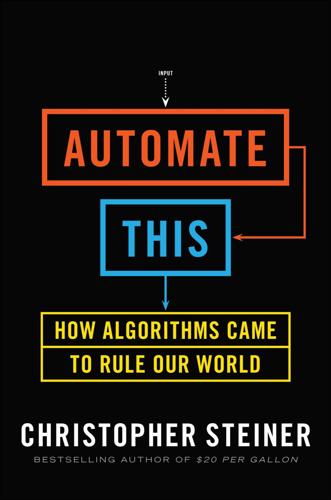
Automate This: How Algorithms Came to Rule Our World
by
Christopher Steiner
Published 29 Aug 2012
Cope says Annie’s penchant for tasteful originality could push her past most human composers, who simply build on the work of the past, which, in turn, was built on older works. Cope offers this without emotion, but he still harbors bruises from the music elite’s reaction to Emmy. He won’t admit it, but he seems ready for a fight. The arguments will be honest on both sides. The specter that the greatest music ever created could be broken down into pattern recognition, rule making, and controlled rule breaking is just too much for some musical types to take. Artists tend to be people who define themselves by their work. They perceive their creativity as what separates them from the person in the cubicle, the salesman on the road, the MBA doting on a spreadsheet—the banal masses.
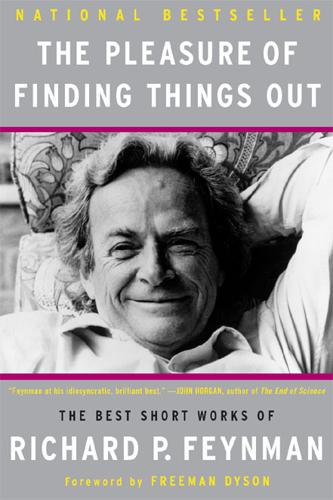
The Pleasure of Finding Things Out: The Best Short Works of Richard P. Feynman
by
Richard P. Feynman
and
Jeffrey Robbins
Published 1 Jan 1999
See also under Feynman, Richard Nova, 1 Nuclear forces, 12, 16, 237 Oak Ridge plant, 71–73, 74–78 Objectivity, 104 Observations, 182 Olum, Paul, 57, 59 Omni magazine, 189 Oppenheimer, Robert, 9, 55, 58, 73, 74, 82 Optical microscope, 120 Padlocks, 70 Pantographs, 133 Parapsychology, 216. See also Extrasensory perception Parasitism, 181–182 Particles, 16, 191, 199, 236, 237–238, 239. See also Quarks; Ultimate particles Patterns, 174–175, 220–221, 226 pattern recognition, 48, 127 Pauli, Wolfgang, 201, 201(n), 229, 230 Peace, 147 Penology, 243 Philosophy, 23, 115, 173, 195–196 Photons, 8, 234, 236 Physical Review, xii, 59, 198 Physics, xi, 99 and chemical processes, 125 doing physics, xviii, 11, 14, 19, 20, 60, 87 high energy, 238 high pressure, 118(n) loose threads in, 199 and mathematics, 15, 105, 192–193, 194, 201, 228.

The Drunkard's Walk: How Randomness Rules Our Lives
by
Leonard Mlodinow
Published 12 May 2008
When a teacher initially believes that one student is smarter than another, he selectively focuses on evidence that tends to confirm the hypothesis.48 When an employer interviews a prospective candidate, the employer typically forms a quick first impression and spends the rest of the interview seeking information that supports it.49 When counselors in clinical settings are advised ahead of time that an interviewee is combative, they tend to conclude that he is even if the interviewee is no more combative than the average person.50 And when people interpret the behavior of someone who is a member of a minority, they interpret it in the context of preconceived stereotypes.51 The human brain has evolved to be very efficient at pattern recognition, but as the confirmation bias shows, we are focused on finding and confirming patterns rather than minimizing our false conclusions. Yet we needn’t be pessimists, for it is possible to overcome our prejudices. It is a start simply to realize that chance events, too, produce patterns. It is another great step if we learn to question our perceptions and our theories.
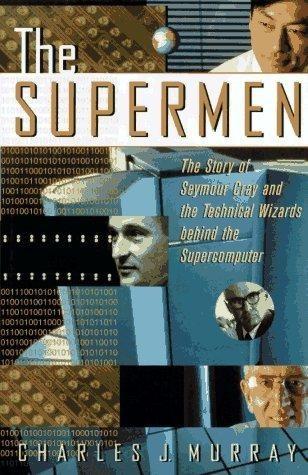
The Supermen: The Story of Seymour Cray and the Technical Wizards Behind the Supercomputer
by
Charles J. Murray
Published 18 Jan 1997
Roughly a thousand codebreakers worked at the navy's Ne- braska Avenue facility-a tidy, red brick, former girl's school 10- cated in a quiet section of the city. These codebreakers were about as diverse and unconventional as any task force ever mar- shalled by the V.S. military. They had backgrounds in mathemat- ics, physics, engineering, astronomy, and just about any discipline requiring intuitive pattern recognition. Some were chess experts, bridge champions, and musicians. Many had Ph.D's; a few were world-renowned scientists. When the war began, they had decrypted messages like those of U-66 without the benefit of machines. To do it, they had qui- THE CODEBREAKERS / 9 etly labored over volumes of coded messages, searching for pat- terns that departed from pure randomness.

The Eureka Factor
by
John Kounios
Published 14 Apr 2015
Chessmasters invest an enormous amount of time studying classic games to minimize the amount of raw calculation that they have to do during a tournament. To nullify the benefits of his opponents’ preparation, Larsen often used strange openings and made unexpected moves. This forced his opponents to “throw out the book,” or, rather, “throw out the box,” and rely on mental computation instead of preparation and pattern recognition. Neutralizing the benefits of preparation frequently enabled him to triumph because his ability to calculate his way through novel positions was often superior, especially when his adversaries were rattled by his unusual moves. This strategy was extremely effective in tournaments in which he played no more than one or two games against any single individual, but it was less effective when he played a match of many games against a single player.
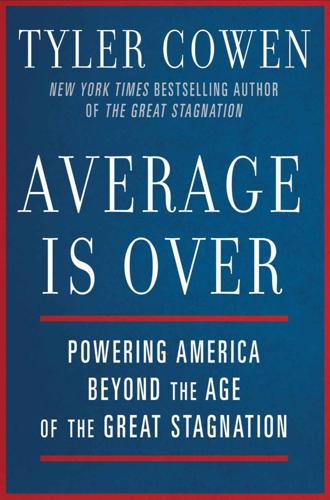
Average Is Over: Powering America Beyond the Age of the Great Stagnation
by
Tyler Cowen
Published 11 Sep 2013
Machines can double-check human diagnoses, catch the mistakes of very tired doctors, and keep up with and store new developments in the medical literature. And by the way, that literature doubles in size every few years, much more rapidly than any human can follow. For all of our scientific and medical progress, misdiagnoses remain common. Of course, it can be irresponsible to rely completely on the computer’s pattern recognition skills, since the human eye will pick up image errors or flubbed data inputs in a way that the machine may not. But a man–machine team is less vulnerable to machine oversights; human supervision is often stipulated by the companies that market medical software. One medical innovation would run a patient’s reported symptoms through a Watson-like software program and see what might be wrong, drawing upon extensive databases.
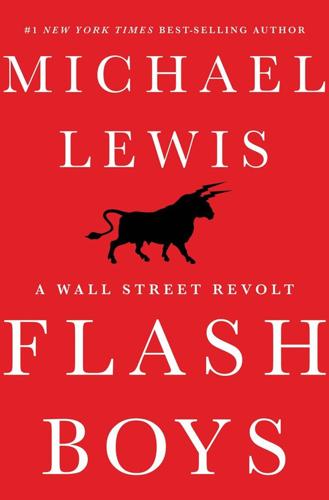
Flash Boys: A Wall Street Revolt
by
Michael Lewis
Published 30 Mar 2014
Aisen and three friends had competed, in 2007, against one thousand other teams and had won the whole thing. “It’s kind of a mix of cryptography, ciphers, and Sudoku,” explained Aisen. The solution to each puzzle offered clues to the other puzzles; to be really good at it, a person needed not only technical skill but exceptional pattern recognition. “There’s some element of mechanical work, and some element of ‘aha!’ ” said Aisen. Brad had given Aisen both a job and a nickname, the Puzzle Master, soon shortened, by RBC’s traders, to Puz. Puz was one of the people who had helped him create Thor. Puz’s peculiar ability to solve puzzles was suddenly even more relevant.

Exponential Organizations: Why New Organizations Are Ten Times Better, Faster, and Cheaper Than Yours (And What to Do About It)
by
Salim Ismail
and
Yuri van Geest
Published 17 Oct 2014
Most of the remaining risk concerns mere scalability issues. A case in point: the rise of standardized web services allows complex software functionality to be integrated into a startup at the press of a button. Examples include Google’s Prediction API for predictive analytics and AlchemyAPI for deep learning software for pattern recognition. To illustrate the sheer extent of this reduced technology risk, consider hardware startups. A new wave of large companies in Shenzhen, China (e.g., Foxconn, Flextronics, PCH International), as well as open source hardware platforms such as Arduino, Raspberry Pi and 3D printers, allow anyone to design a hardware product and quickly prototype and build it.

Going Dark: The Secret Social Lives of Extremists
by
Julia Ebner
Published 20 Feb 2020
Sixty per cent of Britons believe in at least one conspiracy theory.6 Studies have found that the internet is not just conducive to the rapid spread of tales and hoaxes but also fuels conspiracy-theory logic and culture. First, it democratises knowledge, thereby empowering internet citizens to conduct their own research and open-source intelligence investigations – even if they have no knowledge of source-checking techniques. Second, the online information overload encourages cognitive filtering and pattern recognition processes that distort reality. The human mind likes to find patterns in chaos and to complete information gaps in imperfect stories and visuals – even if the outcome does not make any logical sense. Visual illusions are a good example of this.7 Humans have a tendency to make arbitrary connections between unlinked things.
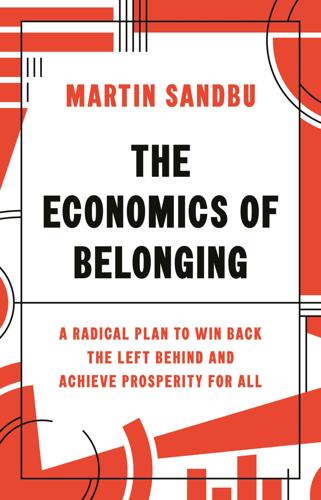
The Economics of Belonging: A Radical Plan to Win Back the Left Behind and Achieve Prosperity for All
by
Martin Sandbu
Published 15 Jun 2020
But the “gig economy” facilitated by online platforms also brings with it a global market for service jobs—or, rather, for piece-rate service tasks—in anything that can be done digitally and remotely. Coding, translation, copyediting, and other high-skilled and middle-class jobs are opening up to global competition even as computerised pattern recognition and artificial intelligence mean fewer people are required to accomplish the same amount of work. Automation and globalisation are both expanding from blue-collar to white-collar work, which is set to be disrupted as much as if not more than manufacturing was from the late 1970s on.24 Job loss through automation-driven productivity growth and, to some extent, competition from globalisation—these are the very same forces that, in the absence of an adequate policy response, denied a large group of workers what they expected from the social contract.
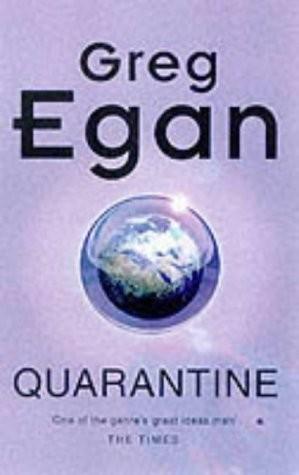
Quarantine
by
Greg Egan
Published 13 Dec 1994
It’s absurd—but pissing away my skin colour is at least as disorienting as anything else that’s happened in the last twelve hours. Whatever’s changed inside my skull, up until now at least I looked the same. I check my appearance in a mirror, dragging my thoughts back to practicalities. Merely rendered pale, pattern-recognition software could still match me with ASR’s records, but at least I’m no longer vulnerable to every bystander who might have seen my face splashed about the news systems. In fact, when I access The NHK Times, there’s no mention of a foiled bombing attempt, by the Children or anyone else. The global news systems are the same.
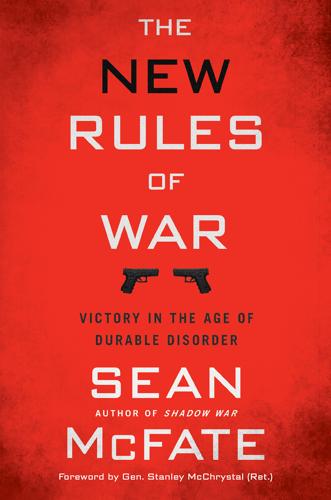
The New Rules of War: Victory in the Age of Durable Disorder
by
Sean McFate
Published 22 Jan 2019
Rise of the robots: Matthew Rosenberg and John Markoff, “The Pentagon’s ‘Terminator Conundrum’: Robots That Could Kill on Their Own,” New York Times, 25 October 2016, www.nytimes.com/2016/10/26/us/pentagon-artificial-intelligence-terminator.html; Kevin Warwick, “Back to the Future,” Leviathan, BBC News, 1 January 2000, http://news.bbc.co.uk/hi/english/static/special_report/1999/12/99/back_to_the_future/kevin_warwick.stm. 5. Robots are stupid: Andrej Karpathy and Li Fei-Fei, “Deep Visual-Semantic Alignments for Generating Image Descriptions,” Proceedings of the IEEE Conference on Computer Vision and Pattern Recognition (2015): 3128–37, http://cs.stanford.edu/people/karpathy/cvpr2015.pdf. 6. What is “cyber”?: Cyber is a prefix used to describe anything having to do with computers, which doesn’t explain much. The term “cyber” was coined by the science fiction writer William Gibson in the 1980s but has advanced little as a concept since then.

New Dark Age: Technology and the End of the Future
by
James Bridle
Published 18 Jun 2018
When the Perceptron Mark I was presented to the public in 1958, the New York Times reported, The Navy revealed the embryo of an electronic computer today that it expects will be able to walk, talk, see, write, reproduce itself and be conscious of its existene. Later perceptrons will be able to recognise people and call out their names and instantly translate speech in one language to speech and writing in another language, it was predicted.2 Image: Cornell University Library. The Mark I Perceptron, an early pattern recognition system, at the Cornell Aeronautical Laboratory. The idea that underlay the Perceptron was connectionism: the belief that intelligence was an emergent property of the connections between neurons, and that by imitating the winding pathways of the brain, machines might be induced to think. This idea was attacked by numerous researchers over the next decade, who held that intelligence was the product of the manipulation of symbols: essentially, some knowledge of the world was required to reason meaningfully about it.
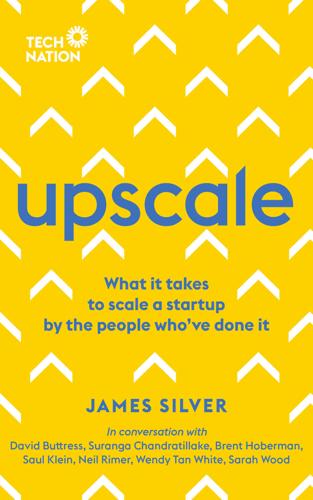
Upscale: What It Takes to Scale a Startup. By the People Who've Done It.
by
James Silver
Published 15 Nov 2018
It might be the same business model, or it could be a market with similar dynamics or a similar approach to how you address a problem in consumer demand. ‘Whatever it is, find those parallels, and that’s effectively what your message is going to be to that investor. ‘You’ll be a bit subtle about it, of course, but make sure you play those things out because “pattern recognition” is what these guys are all about. They’ve seen a certain thing work before, and although they might not have seen it in your space, they can see why it works.’ She expands: ‘That’s the way a lot of venture capital funders approach [investing]. They’re looking for patterns they’ve seen before, in their own portfolio ideally, or that they might have seen in the wider market.
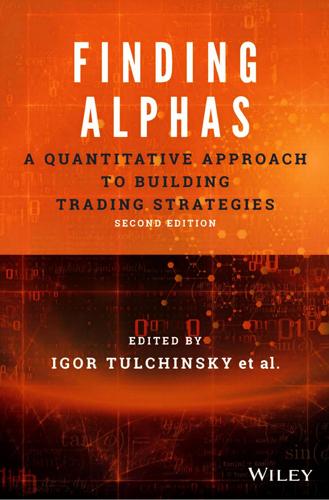
Finding Alphas: A Quantitative Approach to Building Trading Strategies
by
Igor Tulchinsky
Published 30 Sep 2019
Journal of Computational Science 2, no. 1: 1–8. Bollen, N. and Whaley, R. (2004) “Does Net Buying Pressure Affect the Shape of Implied Volatility Functions?” Journal of Finance 59, no. 2: 711–753. Breiman, L. (2001) “Random Forests.” Machine Learning 45, no. 1: 5–32. Burges, C. (1998) “A Tutorial on Support Vector Machines for Pattern Recognition.” Data Mining and Knowledge Discovery 2, no. 2: 121–167. Butterworth, S. (1930) “On the Theory of Filter Amplifiers.” Experimental Wireless and Wireless Engineer 7: 17–20. Chan, K., Hameed, A., and Tong, W. (2000) “Profitability of Momentum Strategies in the International Equity Markets.” Journal of Financial and Quantitative Analysis 35, no. 2: 153–172.

Dark Matters: On the Surveillance of Blackness
by
Simone Browne
Published 1 Oct 2015
We learn that Smith’s character, police detective Del Spooner, was injured in a car accident and became an involuntary subject in a cybernetics program for wounded police officers. This left him with a prosthetic left arm built by the same company that created the robot servants, U.S. Robotics. Spooner uses biometric information technology, namely hand geometry access and voice pattern recognition, in the film, but he is antirobot. As the New York Times’ film critic A. O. Scott put it: Spooner is “a raging anti-robot bigot, harboring a grudge against the helpful, polite machines that shuffle around the city running errands and doing menial work.”101 According to Scott, Spooner’s grudge causes him to commit “technological profiling,” revealing the film’s “undercurrent of racial irony.”102 Seemingly a commentary on the dystopic potential of unregulated androids or a comment on enslavement, perhaps I, Robot animates concerns around such imaginings of artificial intelligence.

The End of Medicine: How Silicon Valley (And Naked Mice) Will Reboot Your Doctor
by
Andy Kessler
Published 12 Oct 2009
In other words, they would get 78% correct and have 22% false negatives. That’s pretty startling.” “But how do you do better? I guess I still don’t understand how this works. Is there some secret sauce that runs this thing?” I wondered. “You know about neural networks?” “I’ve read enough about them.” “We use them to do pattern recognition. You can code the algorithms, which isn’t easy, but the trick is to train the system so that it minimizes false positives but doesn’t miss anything. That’s tough to do.” “But how?” I still didn’t get it. “Oh, we have something like 5,000 cases of mammograms with known cancer, you know, ones that have proven to be actual positives with biopsies.
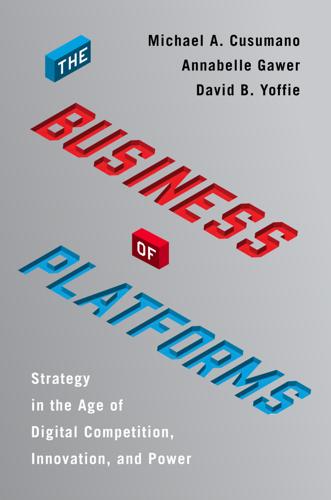
The Business of Platforms: Strategy in the Age of Digital Competition, Innovation, and Power
by
Michael A. Cusumano
,
Annabelle Gawer
and
David B. Yoffie
Published 6 May 2019
VOICE WARS: RAPID GROWTH BUT CHAOTIC PLATFORM COMPETITION Although artificial intelligence has been around for decades, one branch has made exceptional progress: machine learning (using special software algorithms to analyze and learn from data) and the subfield of deep learning (using hardware and software to build massively parallel processors called neural networks to mimic how the brain works). Applications of these technologies have led to dramatic improvements in certain forms of pattern recognition, especially for images and voice. Apple got the world excited about a voice interface when it introduced Siri in 2011. For the first time, consumers had access to a natural conversation technology that actually worked (at least some of the time). Despite its first-mover advantage, however, Apple’s strategy for Siri was classic Apple: The company designed Siri as a product that complemented the iPhone, not as an innovation or transaction platform that could generate powerful network effects.

Superbloom: How Technologies of Connection Tear Us Apart
by
Nicholas Carr
Published 28 Jan 2025
He referred to the automatic, unconscious form of thinking as System 1 and the controlled, deliberative form as System 2. The latter, he emphasized, requires sustained attention, while the former happens effortlessly. Both modes are valuable and can produce subtle insights—that chess master at the simul, having deep experience with the game, relies more on pattern recognition than reasoned analysis in making moves—but “only the slower System 2 can construct thoughts in an orderly series of steps.”34 You can grasp a great deal about the world through intuition, but to think critically you need to suppress your reflexive instincts and enter System 2 mode. You need to slow down and exert conscious control over your mind.
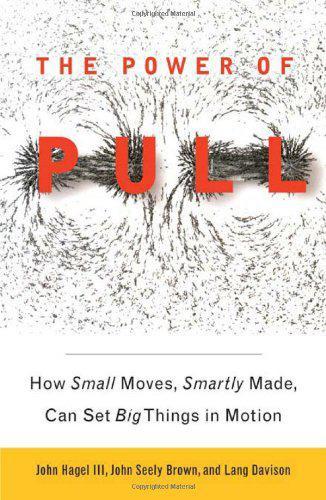
The Power of Pull: How Small Moves, Smartly Made, Can Set Big Things in Motion
by
John Hagel Iii
and
John Seely Brown
Published 12 Apr 2010
Interweaving herself among them, Ellen helps them take a piece of this, and mix it with a bit of that, to see if something new emerges. What would happen if she introduced the broadcast executive to the woman running the charity? How about connecting the Stanford professor with the lobbyist? And so on. Ellen Levy is practicing pull, using the approaches we described in Chapter 3: deep listening, beacon sending, pattern recognition, surface exposure, and, above all, a passion for new ideas and gifted people. What makes all of this work, and makes it very different from traditional forms of networking, is Ellen’s focus. In the old days, networking was all about meeting people who could help you advance in your own career.

Blink: The Power of Thinking Without Thinking
by
Malcolm Gladwell
Published 1 Jan 2005
That is why a marriage can be read and decoded so easily, because some key part of human activity—whether it is something as simple as pounding out a Morse code message or as complex as being married to someone—has an identifiable and stable pattern. Predicting divorce, like tracking Morse Code operators, is pattern recognition. “People are in one of two states in a relationship,” Gottman went on. “The first is what I call positive sentiment override, where positive emotion overrides irritability. It’s like a buffer. Their spouse will do something bad, and they’ll say, ‘Oh, he’s just in a crummy mood.’ Or they can be in negative sentiment override, so that even a relatively neutral thing that a partner says gets perceived as negative.
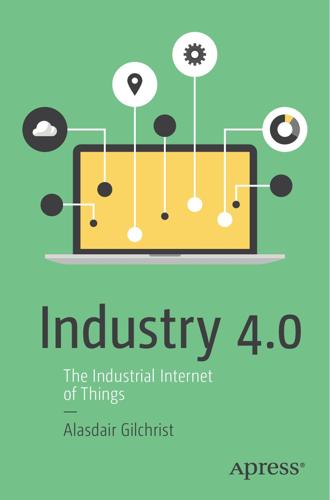
Industry 4.0: The Industrial Internet of Things
by
Alasdair Gilchrist
Published 27 Jun 2016
Furthermore, learning is behavior based and must be continuous. 57 58 Chapter 3 |TheTechnical and Business Innovators of the Industrial Internet Initially, we might think well, so what, until that is we see how each model is used: • Classic AI—This model is still used as it is very efficient in question answering, such as IBM’s Watson and Apple’s Siri. • Neural networks—Data mining in large static data sets with the focus on classification and pattern recognition. • Biological neural networks—It has many uses typically in security devices tasked with the detection of uncharacteristic behavior, as its strengths lies with prediction, anomaly detection, and classification. How these would work in action is that each would take a different approach to solving a problem, let us say for example, inappropriate file access on a financial department’s network.

The Sharing Economy: The End of Employment and the Rise of Crowd-Based Capitalism
by
Arun Sundararajan
Published 12 May 2016
The Second Machine Age builds on a book by the economists Frank Levy and Richard Murnane about the human–computer tradeoff in the labor market.15 Levy and Murnane examine, in detail, what tasks computers perform better than humans, and what tasks humans perform better than computers. They draw a broad conclusion—that computers have inherent advantages in tasks like rule-based decision making and simple pattern recognition, but digitization makes two kinds of tasks (complex communication and expert thinking) more valuable—and prescribe that humans acquire the skills that enable them to take on jobs involving such tasks. McAfee and Brynjolfsson argue however, that computers are in fact on the verge of surpassing humans at some of the tasks that Levy and Murnane contend humans would continue to dominate.
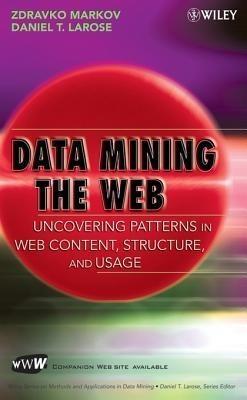
Data Mining the Web: Uncovering Patterns in Web Content, Structure, and Usage
by
Zdravko Markov
and
Daniel T. Larose
Published 5 Apr 2007
EXERCISES 211 9. Leo Breiman, Jerome Friedman, Richard Olshen, and Charles Stone, Classification and Regression Trees, Chapman & Hall/CRC Press, Boca Raton, FL, 1984. 10. Ruby L. Kennedy, Yuchun Lee, Benjamin Van Roy, Christopher D. Reed, and Richard P. Lippman, Solving Data Mining Problems Through Pattern Recognition, Pearson Education, Upper Saddle River, NJ, 1995. 11. J. Ross Quinlan, C4.5: Programs for Machine Learning, Morgan Kaufmann, San Francisco, CA, 1992. EXERCISES 1. Compare the first two rules in Table 9.2. Note that the antecedent of the second rule is a refinement (more specific specification) of the antecedent of the first rule.
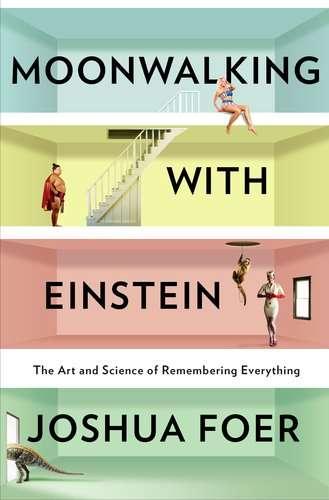
Moonwalking With Einstein
by
Joshua Foer
Published 3 Mar 2011
It is said that a student of sexing must work through at least 250,000 chicks before attaining any degree of proficiency. Even if the sexer calls it “intuition,” it’s been shaped by years of experience. It is the vast memory bank of chick bottoms that allows him or her to recognize patterns in the vents glanced at so quickly. In most cases, the skill is not the result of conscious reasoning, but pattern recognition. It is a feat of perception and memory, not analysis. The classic example of how memories shape the perception of experts comes from what would seem to be the least intuitive of fields: chess. Practically since the origins of the modern game in the fifteenth century, chess has been regarded as the ultimate test of cognitive ability.
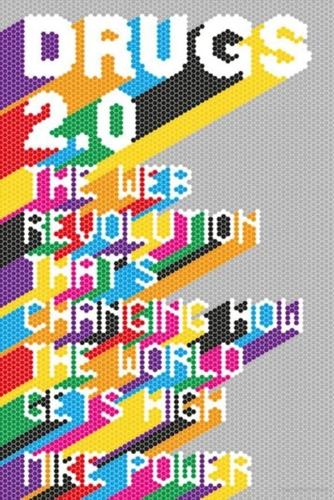
Drugs 2.0: The Web Revolution That's Changing How the World Gets High
by
Mike Power
Published 1 May 2013
‘Not a bad deal! Of course not all of the pennies will be 95 per cent copper, but the portion of 95 per cent copper pennies in the box have the proportional gain,’ he told me. ‘I have to sort the copper pennies from the zinc pennies and I have designed a system to automate the sorting based on pattern recognition of metal composition. So I use technology to sort and reach a scale of efficiency that makes the process profitable. In my opinion, fiat currencies are doomed simply because of the deception involved. As the populace is educated (and it looks like that education is about to be painfully forced on the masses – look at Greece) it will be a force of nature – the destruction of the fiat model.

How Music Got Free: The End of an Industry, the Turn of the Century, and the Patient Zero of Piracy
by
Stephen Witt
Published 15 Jun 2015
In late 1988, the team made its first sale, and shipped a hand-built decoder to the first ever end user of mp3 technology: a tiny radio station run by missionaries on the remote Micronesian island of Saipan. But one audio source was proving intractable: what Grill, with his imperfect command of English, called “the lonely voice.” (He meant “lone.”) Human speech could not, in isolation, be psychoacoustically masked. Nor could you use Huffman’s pattern recognition approach—the essence of speech was its dynamic nature, its plosives and sibilants and glottal stops. Brandenburg’s shrinking algorithm could handle symphonies, guitar solos, cannons, even “Oye Mi Canto,” but it still couldn’t handle a newscast. Stuck, Brandenburg isolated samples of “lonely” voices.
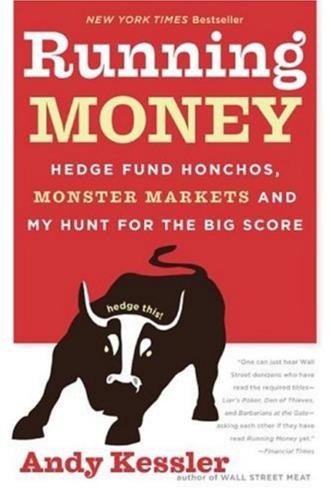
Running Money
by
Andy Kessler
Published 4 Jun 2007
He thought the company was going to be a home run. I wasn’t so sure. Fred is ten years older than I am, with lightyears more market savvy. I make judgments much too quickly. But when Fred comes up against a difficult problem, he just reaches back into his long-term cranial memory storage and does a little pattern recognition until he can say, “I’ve seen this before.” We were the yin and the yang of rash and rational, which is why the partnership worked so well. “We’ll pay $2.50,” I said with more confidence than I thought I had in me. “That’s only slightly more than what Ssangyong paid a year ago, and they know we just did a round at $4.”
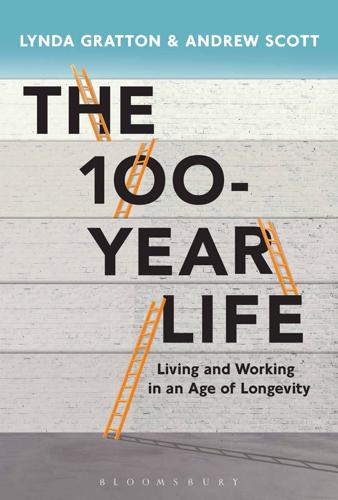
The 100-Year Life: Living and Working in an Age of Longevity
by
Lynda Gratton
and
Andrew Scott
Published 1 Jun 2016
With the innovations associated with the dramatic increase in low-cost computational power, it is now possible to develop driverless cars. When this happens it will threaten a significant number of jobs in the logistics industry. Diagnosing medical conditions is another routine task which has required knowledge and pattern recognition skills that have to date proved beyond computers. However, yet again, the implications of the second half of the chessboard is that this is no longer the case. Famously IBM’s supercomputer Watson is now performing oncology diagnosis. As computing power increases, so the hollowing out of the labour market accelerates.
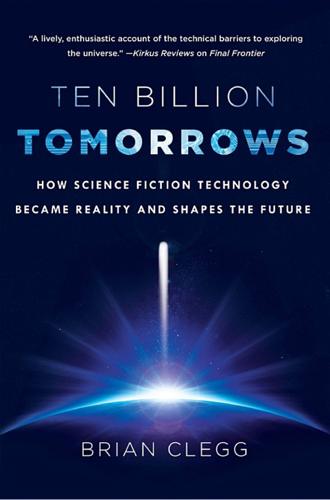
Ten Billion Tomorrows: How Science Fiction Technology Became Reality and Shapes the Future
by
Brian Clegg
Published 8 Dec 2015
The scale is totally different—and yet even with this very limited “brain,” neural networks can work very well on small, focused areas of apparent intelligence, gaining a form of expertise as they pass through the learning process. Neural networks often prove effective where a traditional programming set of rules fails, particularly where pattern recognition (so important in vision) is involved. It is clear now (though it wasn’t in the 1960s) that a pure rule-based approach could never deliver a computer with Hal’s abilities and that it would require some equivalent of a neural network approach, combined with many other structures and methods.
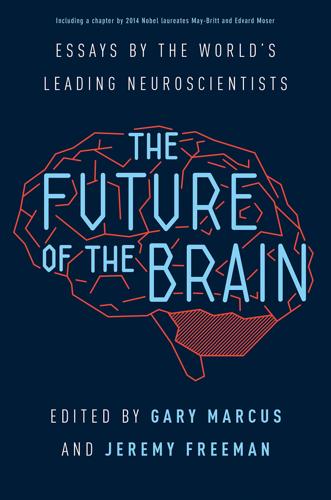
The Future of the Brain: Essays by the World's Leading Neuroscientists
by
Gary Marcus
and
Jeremy Freeman
Published 1 Nov 2014
A few of the main challenges of building a microscale mammalian connectome today include: the data collection would take years given current technology; annotation tools are insufficient to fully delineate and extract information at a neuronal scale; and, not least, the algorithms necessary to map relevant connections and build the connectivity graphs are not yet fully developed. To address these machine-vision and image-processing issues, the Open Connectome Project (openconnectome.org) is a crowd-sourcing initiative to meet this challenge. Finally, statistical graph theory is an emerging discipline that is developing sophisticated pattern recognition and inference tools to parse these brain graphs. The Future Brain Development of large-scale brain atlases is now a major undertaking in neuroscience. While it may not be possible to systematically map each of the one hundred billion neurons any time soon in any given individual brain, modern mapping techniques are providing atlases of remarkable resolution and functionality.

Spectrum Women: Walking to the Beat of Autism
by
Barb Cook
and
Samantha Craft
Published 20 Aug 2018
They may even become angry and uncooperative (Autism Spectrum Australia, 2017). Dyscalculia Dyscalculia is defined as a failure to achieve in mathematics commensurate with chronological age, normal intelligence, and adequate instruction. It is marked by difficulties with visualization, visual-spatial perception, processing and discrimination, counting, pattern recognition, sequential memory, working memory for numbers, retrieval of learned facts and procedures, directional confusion, quantitative processing speed, kinesthetic sequences, and perception of time. Dyscalculia is known by several terms: • specific learning disability/disorder in mathematics • math learning disability • developmental dyscalculia • acalculia • Gerstmann’s syndrome • math dyslexia • math anxiety • numerical impairment • number agnosia • non-verbal learning disorder.

The Fourth Age: Smart Robots, Conscious Computers, and the Future of Humanity
by
Byron Reese
Published 23 Apr 2018
But because one person can do those ten thousand things and another person can do those ten thousand things—and knows about estate planning—we say one is low skilled and one is high skilled. But this is not the case, as they both have 99 percent or more of the same skills. There is little difference from the computer’s point of view between a doctor and a dockworker. Each requires great pattern recognition, a huge amount of social context, and inductive and deductive reasoning. Further, each requires that you can interpret your own sensory inputs, speak a language fluently, turn a doorknob, and tie your own shoes. The ship’s captain explaining his cargo manifest to a dockworker isn’t all that different from a patient explaining his ailment to a doctor.
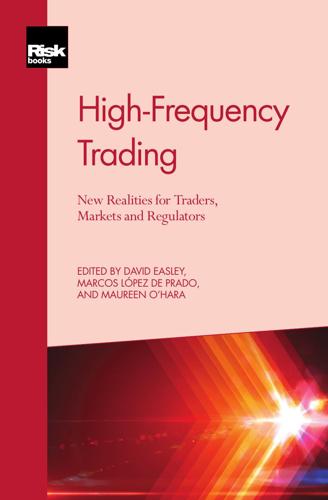
High-Frequency Trading
by
David Easley
,
Marcos López de Prado
and
Maureen O'Hara
Published 28 Sep 2013
Because you are so much in the dark, you proceed carefully, and strategically. These comments are just as apt in 2013 as they were in 1988, except that in 2013 the concern about front-running is mainly a worry about being sniffed out by algorithmic traders. Some algorithms use sophisticated forecasting and pattern recognition techniques to predict future order flow and thus future price changes. To the extent that the slicing and dicing of large institutional orders into many smaller trades leaves a footprint in the data, algorithms may attempt to identify and trade ahead of these large institutional orders. Any such order anticipation could increase the transitory impact of a large order and thereby increase its overall cost.
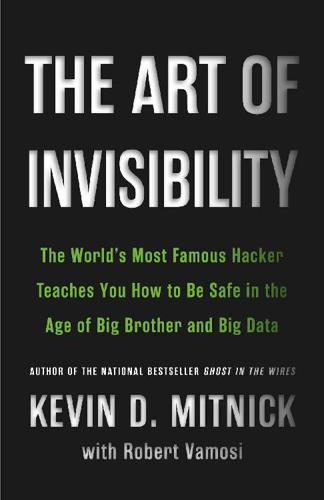
The Art of Invisibility: The World's Most Famous Hacker Teaches You How to Be Safe in the Age of Big Brother and Big Data
by
Kevin Mitnick
,
Mikko Hypponen
and
Robert Vamosi
Published 14 Feb 2017
Also, some US states have used their motor vehicle departments’ photo databases to identify suspects in criminal cases. But those are fancy state-based operations. What could a lone academic do? Acquisti and his fellow researchers wanted to see how much image-derived information about a person could be cross-referenced online. To find out they used a facial recognition technology called Pittsburgh Pattern Recognition, or PittPatt, now owned by Google. The algorithms used in PittPatt have been licensed to various security companies and government institutions. Shortly after the acquisition, Google went on record about its intentions: “As we’ve said for over a year, we won’t add face recognition to Google unless we can figure out a strong privacy model for it.

Laziness Does Not Exist
by
Devon Price
Published 5 Jan 2021
They are: Your worth is your productivity. You cannot trust your own feelings and limits. There is always more you could be doing. How do we get indoctrinated with the Laziness Lie? For the most part, parents don’t sit their kids down and feed them these principles. Instead, people absorb them through years of observation and pattern recognition. When a parent tells their child not to give a homeless person money because that homeless person is too “lazy” to deserve it, the seed of the Laziness Lie is planted in the kid’s brain. When a TV show depicts a disabled person somehow “overcoming” their disability through sheer willpower rather than by receiving the accommodations they deserve, the Laziness Lie grows a bit stronger.
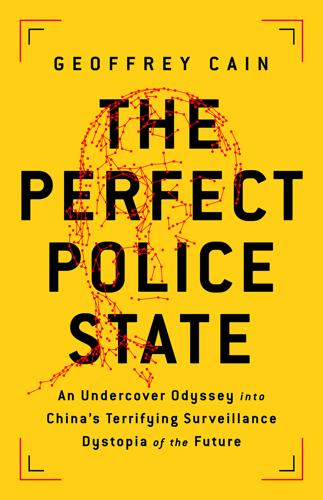
The Perfect Police State: An Undercover Odyssey Into China's Terrifying Surveillance Dystopia of the Future
by
Geoffrey Cain
Published 28 Jun 2021
For years, AI engineers had believed Go was so hopelessly complex—it has 361 pieces—that it would be impossible to write a software program that could win over a human. The number of possible positions on the board exceeded the number of atoms in the known universe, requiring incredible computing power and pattern recognition.31 Google, which had been investing in AI since its founding in 1998,32 bought the start-up DeepMind in early 2014. And DeepMind, founded by three brilliant technologists including a child chess prodigy, made an AI software program called AlphaGo.33 Its programmers wanted to see if AlphaGo could learn to play this incredibly complex game on its own, without a human hand.
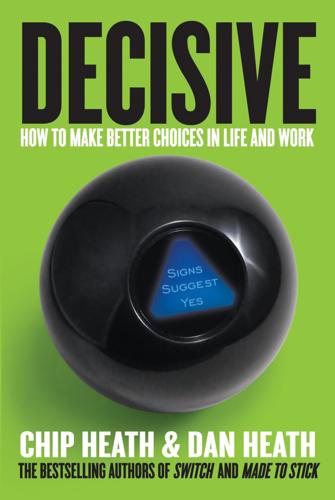
Decisive: How to Make Better Choices in Life and Work
by
Chip Heath
and
Dan Heath
Published 26 Mar 2013
The most important tripwire requires nurses to call for help when they are worried about a patient. It’s a little fuzzy, a little subjective. As a result, the rapid-response team members can’t predict when they’ll hit that tripwire or how many times they’ll trip it. These tripwires aren’t tripped by clear-cut measures like budgets or dates or partitions; they’re tripped by pattern recognition. This is an important distinction, because in many organizations, pattern matching is the skill that leaders desperately want their employees to have. They want their employees to be alert for threats and opportunities in the environment. They would like employees to recognize the pattern when they see it pop up and to feel that they have permission to act when it does.
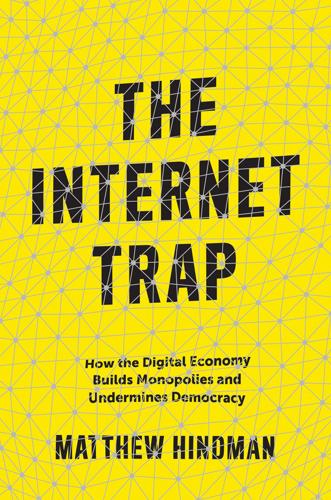
The Internet Trap: How the Digital Economy Builds Monopolies and Undermines Democracy
by
Matthew Hindman
Published 24 Sep 2018
As Netflix had hoped, one of the largest single improvements came from an unlikely source. In early December 2006, participants were surprised to see the name Simon Funk jump to third place on the leaderboard. Simon Funk was the pseudonym of Brandynn Webb, a computer scientist who had worked on artificial intelligence and pattern recognition. The Politics of Personalization • 45 While many teams were highly secretive about their methods, Funk explained his entire approach in a detailed blog post.16 Funk had applied a factor analysis technique called singular value decomposition (svd) to the Netflix data. svd modeled the millions of movie ratings as the sum of a (smaller) number of unknown variables.

Life After Google: The Fall of Big Data and the Rise of the Blockchain Economy
by
George Gilder
Published 16 Jul 2018
In a massively parallel spread like Dally’s J-machine, the memory is always close to the processor. Twenty-six years later, Dally and Jouppi are still at it. At the August 2017 Hot Chips in Cupertino, all the big guys were touting their own chips for what they call “deep learning,” the fashionable Silicon Valley term for the massive acceleration of multi-layered pattern recognition, correlation, and correction tied to feedback that results in a cumulative gain in performance. What they call “learning” originated in earlier ventures in AI. Guess, measure the error, adjust the answer, feed it back are the canonical steps followed in Google’s data centers, enabling such applications as Google Translate, Google Soundwriter, Google Maps, Google Assistant, Waymo cars, search, Google Now, and so on, in real time.4 As recently as 2012, Google was still struggling with the difference between dogs and cats.

The Transhumanist Reader
by
Max More
and
Natasha Vita-More
Published 4 Mar 2013
It’s the third requirement that concerns me; the neurotransmitter concentrations, which are contained in structures that are finer yet than the interneuronal connections. These are, in my view, also critical aspects of the brain’s learning process. We see the analogue of the neurotransmitter concentrations in the simplified neural net models that I use routinely in my pattern recognition work, The learning of the net is reflected in the connection weights as well as the connection topology (some neural net methods allow for self-organization of the topology, some do not, but all provide for self-organization of the weights). Without the weights, the net has no competence. If the very-fine-resolution neurotransmitter concentrations are not identifiable, the downside is not equivalent to merely an amnesia patient who has lost his memory of his name, profession, family members, etc.
…
If we estimate that this ‘professional’ knowledge represents as little as 1 percent of the overall pattern and knowledge store of a human, we arrive at an estimate of 107 chunks. Based on my own experience in designing systems that can store similar chunks of knowledge in either rule-based expert systems or self-organizing pattern-recognition systems, a reasonable estimate is about 106 bits per chunk (pattern or item of knowledge), for a total capacity of 1013 (10 trillion) bits for a human’s functional memory. … [W]e will be able to purchase 1013 bits of memory for one thousand dollars by around 2018. Keep in mind that this memory will be millions of times faster than the electrochemical memory process used in the human brain and thus will be far more effective.

Everything Is Obvious: *Once You Know the Answer
by
Duncan J. Watts
Published 28 Mar 2011
Bielby. 1994. “ ‘All Hits Are Flukes’: Institutionalized Decision Making and the Rhetoric of Network Prime-Time Program Development.” American Journal of Sociology 99 (5):1287–313. Bishop, Bill. 2008. The Big Sort: Why the Clustering of Like-Minded America Is Tearing Us Apart. New York: Houghton Mifflin. Bishop, Christopher M. 2006. Pattern Recognition and Machine Learning. New York: Springer. Black, Donald. 1979. “Common Sense in the Sociology of Law.” American Sociological Review 44 (1):18–27. Blass, Thomas. 2009. The Man Who Shocked the World: The Life and Legacy of Stanley Milgram. New York: PublicAffairs Books. Bollen, Johan, Alberto Pepe, and Huina Mao. 2009.
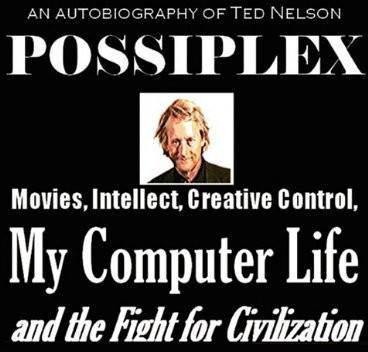
Possiplex
by
Ted Nelson
Published 2 Jan 2010
I don’t know if he could have done it or not. He was a swell kid. I didn’t know at the time that Doug Engelbart was doing the same thing, typing ASCII with a five-finger keyboard. How I wish we had built that, half a million notes ago. There is now little hope of getting my notes into digital form. (The tekkies imagine that pattern recognition can read my writing, and that voice recognition works. These are myths.) My design for the Walkie-Thinkie has gone through several variations since then. What’s important is to use standard components, not fiddle with specialized hardware. === 1963 (I was 25) ~ Making movies ~ THINKING ABOUT MY BREAKTHROUGH MOVIE, 1963 I was always planning my breakthrough movie, the low-budget feature that would get me backing for other movies (everybody knew the rules).* I had a script working, meant to be comedy-exploitation, called I Was a Teenage Beatnik, but that morphed into the idea for a comedy-horror to be called I Was a Teenage Beatnik Twist Monster.* * Note that "Blair Witch Project," successful in theaters, was done for a budget of essentially zero-shot with video cameras which they returned to get their money back.
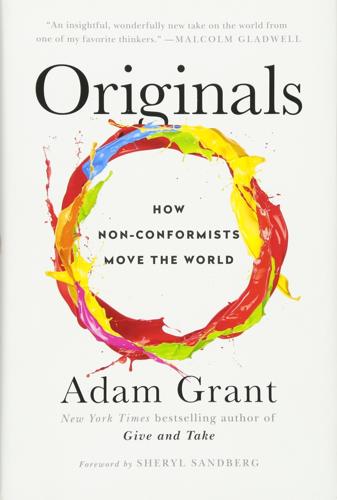
Originals: How Non-Conformists Move the World
by
Adam Grant
Published 2 Feb 2016
If you’re the proud owner of several designer handbags, the less time you have to inspect them, the more accurate your judgments. Experienced handbag owners were 22 percent more accurate when they had just five seconds than when they had thirty seconds. When you’ve spent years studying handbags, intuition can beat analysis, because your unconscious mind excels at pattern recognition. If you stop and take the time to think, it’s easy to lose the forest in the trees. If you don’t know anything about handbags, however, your intuition isn’t going to help you. In dealing with unfamiliar products, you need to take a step back and assess them. Non-experts make sounder judgments when they conduct a thorough analysis.
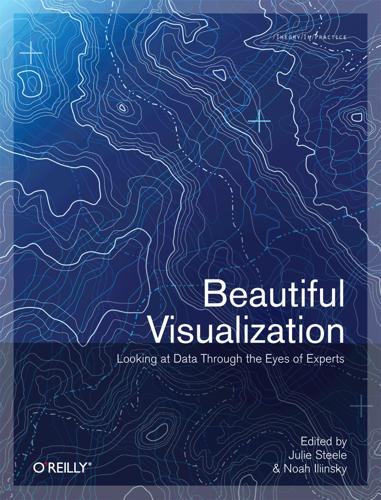
Beautiful Visualization
by
Julie Steele
Published 20 Apr 2010
Chapter Seven Your Choices Reveal Who You Are: Mining and Visualizing Social Patterns Valdis Krebs Data mining and data visualization go hand in hand. Finding complex patterns in data and making them visible for further interpretation utilizes the power of computers, along with the power of the human mind. Used properly, this is a great combination, enabling efficient and sophisticated data crunching and pattern recognition. In this chapter, we will explore several datasets that reveal interesting insights into the human behaviors behind them. Patterns formed by event attendance and object selection will give us clues into the thinking and behavior of the humans attending the events and choosing the objects.
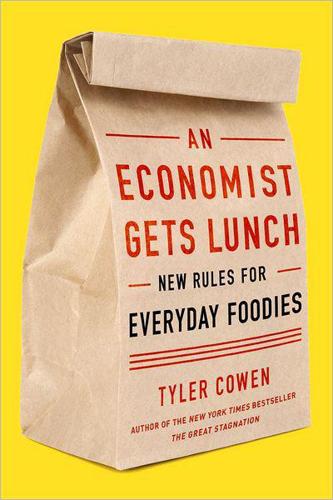
An Economist Gets Lunch: New Rules for Everyday Foodies
by
Tyler Cowen
Published 11 Apr 2012
That’s another food vision you won’t find here. I like the optimism but I worry about the use of food as a mechanism for control. In fact this book is one way to take some control away from political elites or food elites. Most of all, my vision is about encouraging the individual diner and empowering him or her with some skills of pattern recognition and innovation. I believe that people can do a lot better in life by cutting through some socially engineered illusions. Most of all, figure out when a food presentation or sale is about the taste of the food or when the food presentation is about something else, like acquiring higher social status or feeling good about yourself.
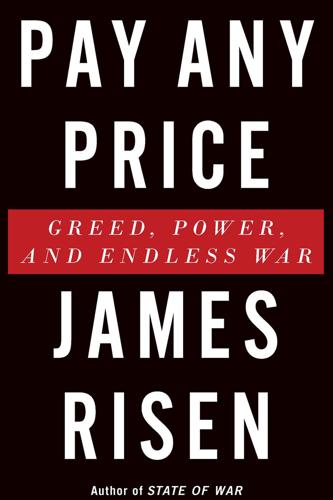
Pay Any Price: Greed, Power, and Endless War
by
James Risen
Published 15 Feb 2014
Warren Trepp later told a court that Montgomery had given him a demonstration of his software’s ability to identify patterns and images in a video of the 1939 black-and-white classic Gunga Din. But after failing to strike it big in Hollywood, Montgomery and Trepp shifted their focus to the casino industry in Reno and Las Vegas. Montgomery later bragged that he had developed pattern recognition software specifically for casinos that could help identify cheaters. He even claimed he had technology that could identify high-value chips inside piles of chips on gaming tables, to detect when dealers tried to steal from the casinos by slipping valuable chips to friends. Montgomery also said he had developed video compression software that would allow casinos to more easily store thousands of hours of surveillance tapes, rather than erase all of their old footage.
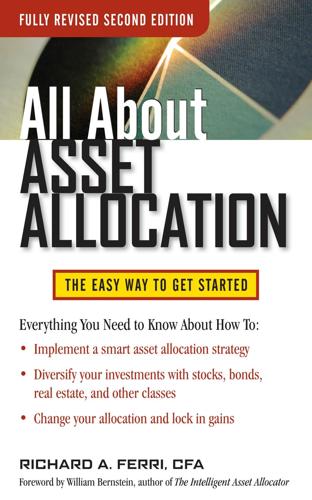
All About Asset Allocation, Second Edition
by
Richard Ferri
Published 11 Jul 2010
Table 4-1 is a sampling of large-cap equity returns in TA B L E 4-1 U.S., European, and Pacific Rim Stocks S&P 500 European Index Pacific Rim Index 1985 32.2 75.1 30.3 1986 18.5 42.7 74.1 1987 5.2 13.4 23.7 1988 16.8 15.4 33.0 1989 31.5 26.9 8.9 1990 –3.2 –1.0 –23.1 1991 30.6 14.7 22.9 1992 7.7 –3.6 –7.1 1993 10.0 29.5 53.1 1994 1.3 2.4 3.8 1995 37.4 22.6 7.1 1996 23.1 23.9 2.8 1997 33.4 21.8 –27.2 1998 28.6 24.5 –0.5 1999 21.0 19.2 52.5 2000 –9.1 –10.1 –21.6 2001 –11.9 –18.8 –19.4 2002 –22.1 –17.2 –7.9 2003 28.7 39.0 41.6 2004 10.9 21.7 22.8 2005 4.9 10.4 20.2 2006 15.8 34.6 19.7 2007 5.5 12.3 13.8 2008 –37.0 –47.3 –39.6 2009 26.5 35.8 24.2 CHAPTER 4 70 U.S. dollars from the three global areas: the United States, Europe, and the Pacific Rim. The shaded cell represents the geographical region that had the highest-returning index for that year. The region of the world with the highest return varies over time. There is no pattern recognition or formula that can be used to predict the region that will outperform next. Allocating assets across these three regions has been a good strategy. It created a better risk-adjusted return than having only U.S. equities. Figure 4-2 shows a risk-and-return diagram for U.S. stocks and international stocks using 10 percent increments, starting with no international stocks on the left side and ending with only international stocks on the right side.

Cockpit Confidential: Everything You Need to Know About Air Travel: Questions, Answers, and Reflections
by
Patrick Smith
Published 6 May 2013
Indeed, as security specialists will tell you, racial or ethnic profiling doesn’t work. Routine is weakness, and the more predictable our methods, the easier they are to foil. Effective profiling uses a multipoint approach that takes in a wide range of characteristics, both tangible and behavioral. TSA has been training staff in the finer points of behavioral pattern recognition. That’s good, though for the time being, screeners are a lot more adept at picking out scissors and shampoo bottles than picking out terrorists. The International Air Transport Association (IATA) has proposed a plan in which passengers would be categorized into one of three risk groups and then screened accordingly.
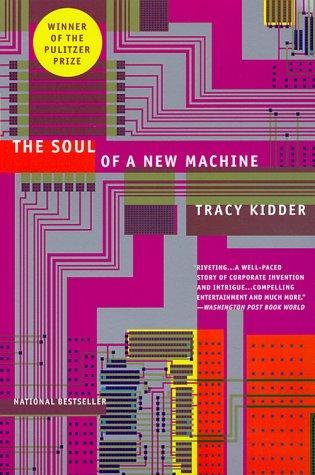
The Soul of a New Machine
by
Tracy Kidder
Published 1 Jan 1981
"It wasn't a bad little box at all." He felt gratitude toward that first processor, because it enabled him to graduate magna cum laude. Rosen went on to Northwestern, to earn his master's degree in electrical engineering. He spent his summers building electronic gear. While still in school, he built a pattern recognition processor for Fermi Labs, worked on an earth station for Fairchild Space and Electronics, and designed a signal processor, also for Fairchild. Data General recruited Rosen by promising him interesting work, and he got it. The first truly commercial product he designed was something known as a cluster controller, a kind of computer terminal, which he called Hydra.

Among Schoolchildren
by
Tracy Kidder
Published 14 Jun 1989
She tried to cultivate a friendship between Felipe and Miguel, but the match failed. She had gotten a piece of good but disquieting news: Pedro had been tested at last. On an inspired hunch, the psychologist had given Pedro a test often administered to stroke victims who have lost their language, a sophisticated test involving pattern recognition. Pedro, the boy who could hardly read or speak, had scored in the near-genius range. Told for perhaps the first time in his life that he was smart, Pedro said, "Sometime I know things and I can't say them." Chris had stared at the doorway. "What have I done for him? He just vegetated in my room."
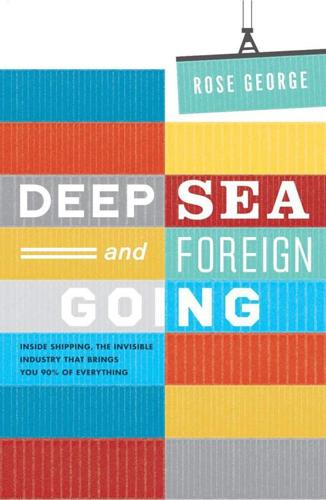
Deep Sea and Foreign Going
by
Rose George
Published 4 Sep 2013
Because right whale research is hands-off, researchers used to puncture right whales with identifying tags – Stormy calls this practice ‘sticking things into whales’ – until they noticed that there were swellings around the tags, that the whale’s body responded as if to a wound. Right whales had enough stresses to deal with, and the tagging was stopped. Identification in the hands-off era comes down to photographs and pattern recognition. Both natural and unnatural markings are useful: propeller scars, but also callosities, patches of rough skin that are white because they are infested with cyamids, lice-like parasites. Eliza thinks she has recognized one of the frolickers from a scar. It’s Minus 1. Pardon? Minus 1. That’s his name.
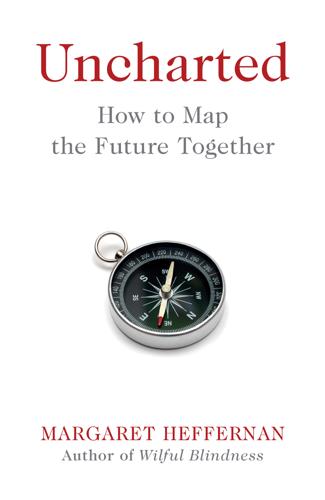
Uncharted: How to Map the Future
by
Margaret Heffernan
Published 20 Feb 2020
This way of life is not for the Pavlovian dog but for the independent cat: attentive and meandering.3 Experienced artists learn over time to trust that something of value will emerge; their apprenticeship entails not just the acquisition of skills but of patience. It requires what the poet Patrick Kavanagh called ‘the right kind of sensitive courage and the right kind of sensitive humility’: the nerve to explore beyond predictable pattern recognition and to interrogate what isn’t immediately obvious, important or inviting. To find anything original requires respecting the elusive. Where this occurs doesn’t matter – as much richness might be found in a gas station as a grand museum. Kavanagh also drew a telling distinction between two opposites: the provincial and the parochial artist.
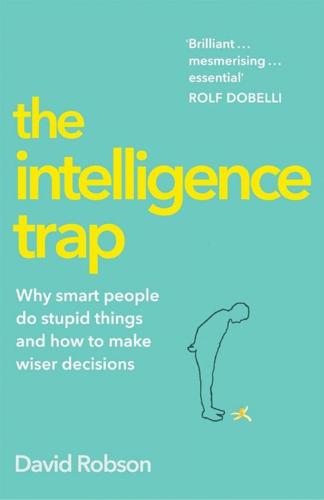
The Intelligence Trap: Revolutionise Your Thinking and Make Wiser Decisions
by
David Robson
Published 7 Mar 2019
As the expert brain chunks up the raw information into more meaningful components, and works at recognising broad underlying patterns, it loses sight of the smaller elements. This change has been recorded in real-time scans of expert radiologists’ brains: they tend to show greater activity in the areas of the temporal lobe associated with advanced pattern recognition and symbolic meaning, but less activity in regions of the visual cortex that are associated with combing over fine detail.27 The advantage will be the ability to filter out irrelevant information and reduce distraction, but this also means the expert is less likely to consider all the elements of a problem systematically, potentially causing them to miss important nuances that do not easily fit their mental maps.

Language and Mind
by
Noam Chomsky
Published 1 Jan 1968
Still more clearly to the point, I think, are the developments in comparative ethology over the past thirty years, and certain current work in experimental and physiological psychology. One can cite many examples: for example, in the 22 23 24 For a discussion of such systems and their limitations, see M. Minsky and S. Papert, Perceptions and Pattern Recognition, Artificial Intelligence Memo No. 140, MAC-M-358, Project MAC, Cambridge, Mass., September 1967. See E. H. Lenneberg, Biological Foundations of Language (New York: Wiley, 1967). My contribution to this volume, “The Formal Nature of Language,” appears as the fifth paper in this book. See J. Mehler and T.
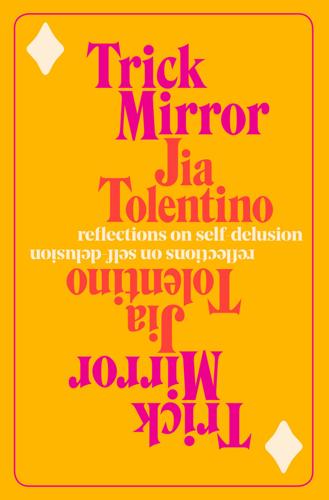
Trick Mirror: Reflections on Self-Delusion
by
Jia Tolentino
Published 5 Aug 2019
The reframing of female difficulty as an asset rather than a liability is the result of decades and decades of feminist thought coming to bear—suddenly, floridly, and very persuasively—in the open ideological space of the internet. It’s been solidified by a sort of narrative engineering conducted both retrospectively and in real time: the rewriting of celebrity lives as feminist texts. Feminist celebrity discourse operates the way most cultural criticism does in the social media era, along lines of “ideological pattern-recognition,” as Hua Hsu put it in The New Yorker. Writers take a celebrity’s life and her public narrative, shine the black light on it, and point to the sexism as it starts to glow. Celebrities have been the primary teaching tools through which online feminism has identified and resisted the warping force of patriarchal judgment.

With the End in Mind
by
Kathryn Mannix
Published 29 Dec 2017
I’m sorry if you’re made sad, but I hope that you will also feel comforted and inspired. I hope you will be less afraid, and more inclined to plan for and discuss dying. I wrote this book because I hope we can all live better, as well as die better, by keeping the end in mind. Patterns Medicine is full of pattern-recognition: the pattern of symptoms that separates tonsillitis from other sore throats, or asthma from other causes of breathlessness; the pattern of behaviour that separates the anxious ‘worried well’ from the stoical yet sick person; the pattern of skin rashes that can indicate urgency and thereby save a life.

Falter: Has the Human Game Begun to Play Itself Out?
by
Bill McKibben
Published 15 Apr 2019
Bricklayers, for instance: a sobering picture on the front page of the New York Times recently showed a bricklayer desperately racing like John Henry to match a $400,000 machine called SAM, for “semi-automated mason.”9 A pair of economists recently predicted that by 2033, there was a 99 percent chance that insurance underwriters would lose their jobs to computer programs. Sports referees faced a 98 percent risk of obsolescence, waiters a 94 percent chance, and so on. (Archaeologists were the safest, “because the job requires highly sophisticated types of pattern recognition, and doesn’t produce huge profits.”)10 Other researchers pointed out that the Rust Belt has already been so heavily automated that employment will actually drop less there than in places with big service industries. Number one: Las Vegas, which stands to lose 65 percent of its current jobs in the next two decades.11 So, if inequality worries you, just wait.
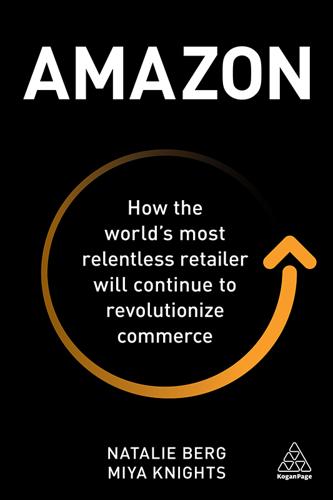
Amazon: How the World’s Most Relentless Retailer Will Continue to Revolutionize Commerce
by
Natalie Berg
and
Miya Knights
Published 28 Jan 2019
In the 2010 Amazon Annual Report, Bezos wrote: Look inside a current textbook on software architecture, and you’ll find few patterns that we don’t apply at Amazon. We use high-performance transactions systems, complex rendering and object caching, workflow and queuing systems, business intelligence and data analytics, machine learning and pattern recognition, neural networks and probabilistic decision making, and a wide variety of other techniques. And while many of our systems are based on the latest in computer science research, this often hasn’t been sufficient; our architects and engineers have had to advance research in directions that no academic had yet taken.

The Nocturnal Brain: Nightmares, Neuroscience, and the Secret World of Sleep
by
Dr. Guy Leschziner
Published 22 Jul 2019
Sometimes the explanation is more prosaic, in the form of the ingestion of illicit substances. All my patients have a battery of blood tests and a brain scan. Even so, it does ultimately come down to a diagnosis of exclusion, and the recognition of a pattern of symptoms. Much of medicine is about pattern recognition — realising that the patient in front of you sweating profusely with a racing heart, clutching his chest, is having a heart attack, much like the ten patients you have previously seen who looked exactly the same. With KLS, this is much harder. Recognising a pattern requires you to have seen several similar patients before — extremely hard in a condition that affects perhaps one in a million people.
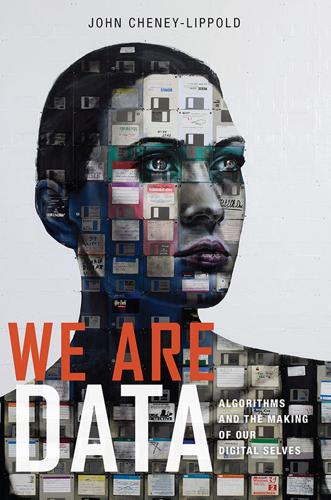
We Are Data: Algorithms and the Making of Our Digital Selves
by
John Cheney-Lippold
Published 1 May 2017
And unencrypted, you might honestly search for “how to flee the country,” but the noteworthiness of that phrase will be folded into the ten-queries-per-minute cover that TrackMeNot provides for you. An individual FBI special agent invested in knowing if you’re trying to travel to Greece might be able to subpoena your Google records and see that you searched for “Athens” at 6:31 p.m., “cheap flights” at 6:34 p.m., and “online greek classes” at 6:44 p.m. But in terms of pattern recognition, in terms of making ‘you’ on the basis of your dividual queries, TrackMeNot can produce enough noise in the channel that a single, identifiable, measurable-typed essence would be statistically onerous. This is gibberish through excess, not enciphering. And this gibberish is what founds Finn Brunton and Helen Nissenbaum’s obfuscation, the contemporary strategy I propose we use to practice dividual privacy.81 The cypherpunks of the 1990s hid by converting their data into alphanumeric ridiculousness.

Ghost Road: Beyond the Driverless Car
by
Anthony M. Townsend
Published 15 Jun 2020
These algorithms, loosely based on mammalian brains, were the basis of a promising early branch of AI research. But after several highprofile failures, the mainstream research community largely abandoned the approach. In the 1980s, however, a handful of scholars continued to experiment with neural networks, tackling tough pattern-recognition problems like decoding speech and reading handwritten text. By the early 1990s, the technology had advanced to the point where neural networks were put to work in banks and postal systems, deciphering billions of scribbled checks and envelopes every day. The big breakthroughs that brought neural networks back into the limelight bore geeky names like convolution and backpropagation, a legacy of the field’s long obscurity.

The Road to Conscious Machines
by
Michael Wooldridge
Published 2 Nov 2018
The Singularity Is Bullshit In contemporary AI, the Terminator narrative is most commonly associated with an idea called the Singularity, which was introduced by the American futurologist Ray Kurzweil in his 2005 book The Singularity is Near:2 The key idea underlying the impending Singularity is that the pace of change of our human-created technology is accelerating and its powers are expanding at an exponential pace. […] within several decades information-based technologies will encompass all human knowledge and proficiency, ultimately including the pattern-recognition powers, problem-solving skills, and emotional and moral intelligence of the human brain itself. Although Kurzweil’s vision of the Singularity is quite broad, the term has come to be identified with one specific idea: the Singularity is the hypothesized point at which computer intelligence (in the general sense) exceeds that of humans.
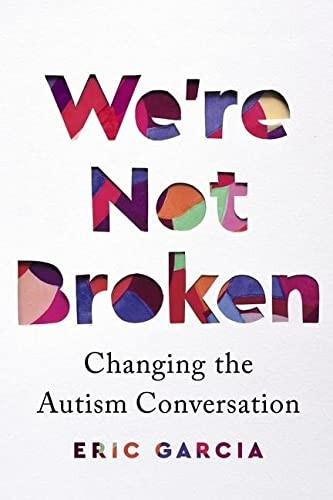
We're Not Broken: Changing the Autism Conversation
by
Eric Garcia
Published 2 Aug 2021
“[Ereneta] made it clear to me that there are differences, and they’re not necessarily good or bad, but they’re just different, and that might influence the way that my teammates might work [and] would most likely be different than the way I work, and so for me it’s self-actualization,” Ng said. She added that some of her special skills include pattern recognition, which has been seen as a trait of some neurodivergent brains. Similarly, in the past, she would frequently lose interest in things, but the inverse was that she would find interest in a wide array of subjects all the time. Generally, Williams said he found Square to be more welcoming and accepting of him than previous employers.
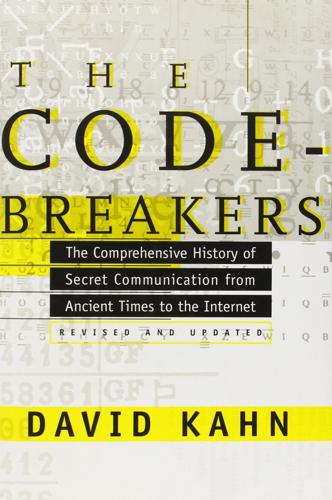
The Codebreakers: The Comprehensive History of Secret Communication From Ancient Times to the Internet
by
David Kahn
Published 1 Feb 1963
Friedman], Basic Cryptography, Department of the Army Technical Manual 32-220 (Washington, D.C.: U.S. Government Printing Office, 1950), §17. 753 practical requirements: Ibid., §18. 754 factors affecting cryptanalysis time: Ibid., §16. 754 “cipher brains”: Yardley, 39. He was referring to Manly. 755 pattern recognition: Cherry, ch. 7; Oliver D. Selfridge, “Pattern Recognition and Learning” in Information Theory: Papers Read at a Symposium on “Information Theory,” ed. Colin Cherry (London: Butterworths, 1956), 345-353. 755 Freud: “Three Contributions to the Theory of Sex” in The Basic Writings of Sigmund Freud, ed. A. A. Brill, Modern Library Giant 39 (New York: Random House, 1938), 594-595; see also Psychological Abstracts, XXIV (1950), No. 6119.
…
The flow of impulses through a computer’s circuits constitutes a study in communication, and N.S.A. mathematicians investigate it. They use the tools of the new field of information theory to look into other problems—compression of maximum information into a minimum bandwidth, expected percentages of errors, rates of transmission, pattern recognition. N.S.A. physicists study modern quantum theory of many-body systems, superconductivity, magnetic resonance, the electromagnetic properties of solids, and the scattering effect of the ionized region of the troposphere for possible application to communications. Language itself is dissected phonetically, phonemically, grammatically, logically, semantically, historically, statistically, and comparatively.
…
Yardley said that outstanding cryptanalysts were gifted with “cipher brains,” and rather glamorized the faculty, but in fact “cipher brains” are just the cryptologic manifestation of a general characteristic—talent in a given field. Who possesses “cipher brains” and why, however, raise complicated questions. Human knowledge not only cannot answer them now, it does not even understand how the mind performs the basic psychological operation of cryptanalysis—pattern recognition. How the brain can supply the missing letters to a fragment of plaintext which it has never before seen resembles such problems as how one can read words in a handwriting one has never seen or recognize a piece of music as Mozart’s even though one has never heard it before. These problems remain among the still unsolved ones of psychology and biochemistry, as convoluted as the cerebral cortex and molecular chains which may hold the answer.
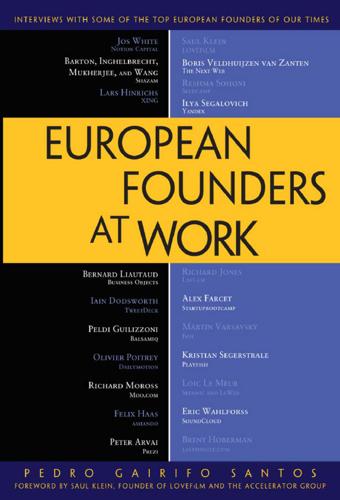
European Founders at Work
by
Pedro Gairifo Santos
Published 7 Nov 2011
We recognized viruses by looking at the reputation of the sender, the movement pattern and within the email itself for any indications of a virus based on previous viruses we had seen. All viruses are derivative, so we were able to identify new ones based on what we had seen before and continually expand our knowledge base. We patented a lot of based pattern recognition technologies as we were the first company to do this. We realized that when an e-mail contained a virus, it always followed a specific pattern of movement. This meant we could recognize new viruses instantly, without needing a new update, by forming a point score for every e-mail and stopping the e-mail if it went above a certain threshold.

The End of Illness
by
David B. Agus
Published 15 Oct 2012
* * * What is cancer? If you have a mass or an abnormal blood test, you’ll likely be referred to a specialist who will stick a needle in you and extract a sample to be examined by a pathologist. Your pathologist (whom you will probably never meet) will look for a certain pattern, because diagnosis today is by pattern recognition. Does it look normal? Or does it look abnormal? To make an analogy, consider a plastic water bottle as emblematic of a cell. It’s as if your pathologist is looking at a normal plastic bottle and declaring that it’s a normal cell. And then looking at a deformed, crushed plastic bottle and declaring that it’s a cancer cell.

Structures: Or Why Things Don't Fall Down
by
J. E. Gordon
Published 1 Jan 1978
If you walk around Pompeii and Herculaneum, you will come away with a quite surprisingly powerful sense of what sort of people the inhabitants were. This has little or nothing to do with the technology of things like the plumbing, and it is something which no amount of factual history can convey. So far this sort of pattern recognition has eluded the computer; long may it continue to do so. Recently, I was drinking canned beer with a much respected colleague. I said – rather unwisely and priggishly, I suppose -’Really a thing like this beer-can seems to me to epitomize all the dreariness and commercialism that is wrong with technology nowadays.* My much respected colleague was down on me like a ton of bricks.

Irrational Exuberance: With a New Preface by the Author
by
Robert J. Shiller
Published 15 Feb 2000
U.S. investors today have not had the same experience with Japanese stocks, or with the U.S. market in decades past. Many people fix their attention on plots of rising stock prices in newspapers every day, and they seem to come away with an intuitive feeling that every decline is reversed, to be followed swiftly by new highs. The same human pattern-recognition faculty that we used when we learned to ride a bike or to drive a car, giving us an intuitive sense of what to expect next, has been applied to our expectations for the market. For investors in their twenties, thirties, or forties, this upward trend has been present during most of the years they have been observing or investing in the market.
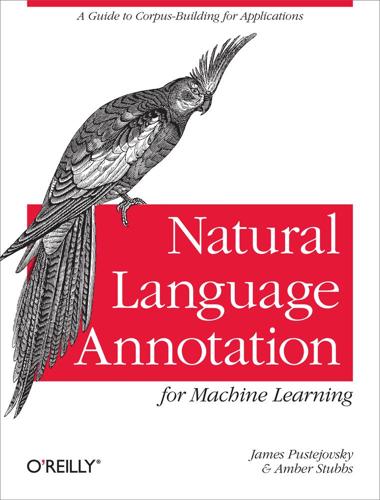
Natural Language Annotation for Machine Learning
by
James Pustejovsky
and
Amber Stubbs
Published 14 Oct 2012
Snow, Rion, Brendan O’Connor, Daniel Jurafsky, and Andrew Y. Ng. 2008. “Cheap and Fast—But Is It Good? Evaluating Non-Expert Annotations for Natural Language Tasks.” In Proceedings of EMNLP-08. Sorokin, Alexander, and David Forsyth. 2008. “Utility data annotation with Amazon Mechanical Turk.” In Proceedings of the Computer Vision and Pattern Recognition Workshops. Index A note on the digital index A link in an index entry is displayed as the section title in which that entry appears. Because some sections have multiple index markers, it is not unusual for an entry to have several links to the same section. Clicking on any link will take you directly to the place in the text in which the marker appears.
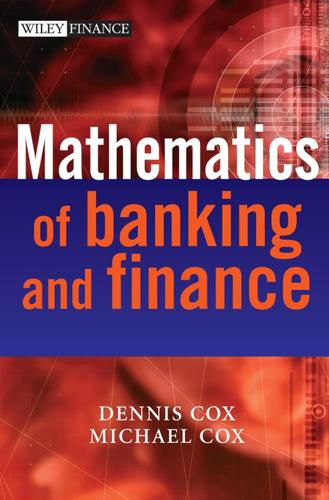
The Mathematics of Banking and Finance
by
Dennis W. Cox
and
Michael A. A. Cox
Published 30 Apr 2006
That regulators, for capital calculation, could use such calculations is also fraught with concerns. However, later amendments to regulatory rules will almost certainly deal with such matters. 31 An Introduction to Neural Networks 31.1 INTRODUCTION In business you do occasionally encounter what are referred to as neural networks. These are typically used for pattern recognition and are based on a series of historic assumptions, assessments and/or observations. Normally a set of observations is used as the input into the network, which is then trained to assign each of these observations to one class or more. The observations consist of a number of features and an associated class assignment, which may be continuous (so a full range of solutions are possible) or discrete (so only certain solutions are possible).
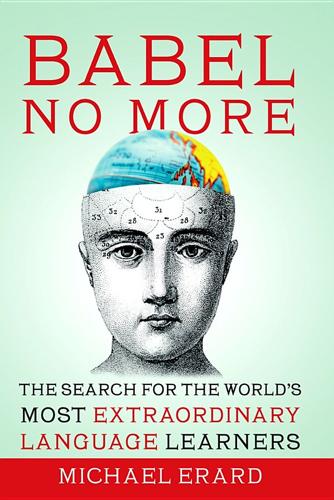
Babel No More: The Search for the World's Most Extraordinary Language Learners
by
Michael Erard
Published 10 Jan 2012
Anecdotally, musical ability and foreign-language ability are often tied together: languages and music both are formal systems involving sequences of discrete units, and an individual must be disciplined to perform well. It’s true that speech sounds and music share areas of the brain, and that there’s also a basic similarity in visual and auditory pattern recognition. But when C.J. took the Seashore Tests of Musical Ability (developed by Carl Seashore in 1919), his scores on a memory test for melody and for sequences of rhythm and pitch were average. In his case, at least, the anecdotal connection didn’t hold. Possible explanations for talented language learning fall into two general areas.

How Not to Network a Nation: The Uneasy History of the Soviet Internet (Information Policy)
by
Benjamin Peters
Published 2 Jun 2016
Ross Ashby, anthropologist, psychiatrist, and Macy Conference attendee Gregory Bateson, radical antipsychiatrist R. D. Laing, psychologist Gordon Pask, and management cyberneticist Stafford Beer (who also features prominently in the Chilean cybernetic situation described below). Interdisciplinary discussions ranged widely across themes such as information theory, probability, pattern recognition, artifacts that act (such as William Ross Ashby’s homeostat and W. Grey Walter’s robotic tortoises), and philosophy. Among their guests over the years were at least two Americans who later played roles in the development of the ARPANET—J.C.R. Licklider and Warren McCulloch.35 According to Pickering, what each of these pioneering cyberneticists held in common was an interest in the brain as a machine that acts, not thinks—or communication systems that perform, not cogitate.36 Cybernetics took root on its own terms in Britain—not the postmodern theory of France but what Pickering calls the “non-modern” performances of neurological structures.
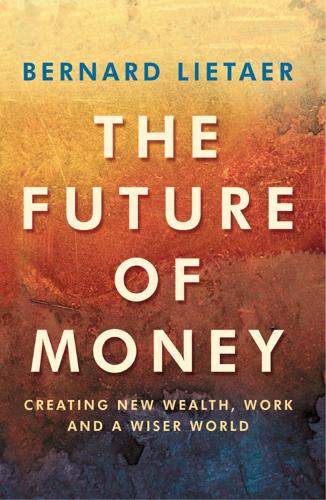
The Future of Money
by
Bernard Lietaer
Published 28 Apr 2013
Add to this the extraordinary fact that only two of the nine forms of intelligence were being recognised, and therefore developed and measured in the education system; i.e. me verbal linguistic and the logical/mathematical both with a Yang bias. The other seven forms of intelligence used to be simply ignored. So it was very rare that the development of a child took into account these other seven modes of learning : i.e. the musical, spatial, bodily/kinesmetic, intrapersonal, interpersonal, pattern recognition and mystical."' 'In short, human potentiall used to be dramatically underestimated, not to speak of developed and used to address our challenges, n is amazing that humanity made it as far as it did back in the 20th century. From today's perspective it really looks as if our species was asked to engage in a race blindfolded with feet and hands bound.
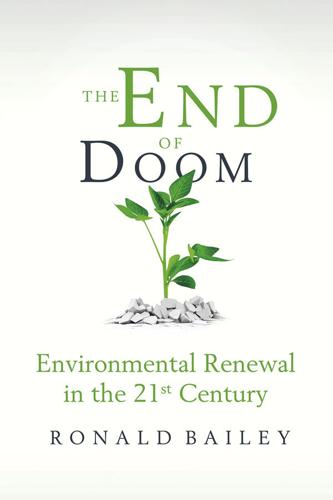
The End of Doom: Environmental Renewal in the Twenty-First Century
by
Ronald Bailey
Published 20 Jul 2015
DDT and Breast Cancer In 2002, National Cancer Institute (NCI) researchers, in the most exhaustive study of its kind, could find no link between increased breast cancer rates and exposure to chemicals such as the pesticides DDT and chlordane or PCBs used as coolants in electrical transformers. This study is one more in a long line that can find no link between breast cancer and exposure to synthetic chemicals. Human brains are adapted to be pattern recognition machines. Being able to recognize a tiger’s stripes in a sun-dappled bamboo forest enhances one’s chances of escaping its jaws. But it turns out that we over-recognize patterns. Our brains can find patterns in anything, which is why tarot cards and astrology remain popular. Researchers have shown that people will consistently claim to identify patterns in tables of randomly generated numbers.

Smart Mobs: The Next Social Revolution
by
Howard Rheingold
Published 24 Dec 2011
Kelly drew parallels between the ways both biological and artificial “vivisystems” exhibit the same four characteristics of what he called “swarm systems”: the absence of imposed centralized control the autonomous nature of subunits the high connectivity between the subunits the webby nonlinear causality of peers influencing peers63 Steven Johnson’s 2001 book, Emergence, shows how the principles that Kelly extrapolated from biological to technological networks also apply to cities and Amazon.com’s recommendation system: “In these systems, agents residing on one scale start producing behavior that lies on one scale above them: ants create colonies; urbanites create neighborhoods; simple pattern-recognition software learns how to recommend new books. The movement from low-level rules to higher level sophistication is what we call emergence.”64 In the case of cities, although the emergent intelligence resembles the ant-mind, the individual units, humans, possess extraordinary onboard intelligence—or at least the capacity for it.
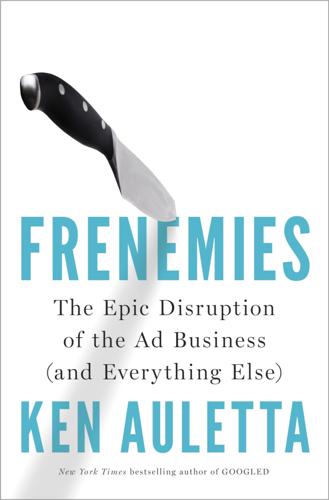
Frenemies: The Epic Disruption of the Ad Business
by
Ken Auletta
Published 4 Jun 2018
“I gained confidence because of my uncle, who mentored me,” he says, so much confidence that he and his brother Richard, who was doing motion graphics and title designs for movies, decided to team up in 1977 and create a special-effects company in New York, R/Greenberg Associates. They created the first integrated computer-assisted production process. Dyslexia imposes many burdens, he believes, but brings with it “pattern recognition,” or the ability to glimpse the new world technologies will introduce. With Richard as the designer and Robert as the cameraman and producer, their computer-assisted filmmaking company soon employed two hundred people. They created the opening title sequence for Superman in 1978 and the title designs for many movies and trailers, as well as special effects for many others.
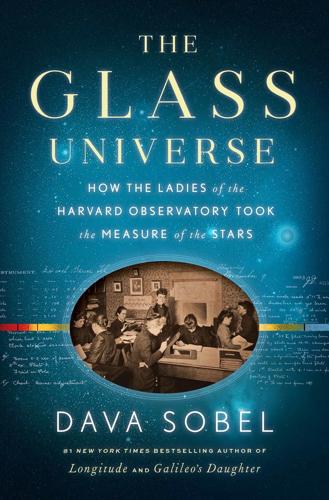
The Glass Universe: How the Ladies of the Harvard Observatory Took the Measure of the Stars
by
Dava Sobel
Published 6 Dec 2016
In less than a decade at the helm, Edward Pickering had shifted the observatory’s institutional emphasis from the old astronomy, centered on star positions, to novel investigations into the stars’ physical nature. While half the computing staff continued to calculate the locations and orbital dynamics of heavenly bodies, a few of the women were learning to read the glass plates produced on-site, honing their skills in pattern recognition in addition to arithmetic. A new kind of star catalogue would soon emerge from these activities. The earliest known star counter, Hipparchus of Nicaea, catalogued a thousand stars in the second century BC, and later astronomers enumerated the content of the heavens to ever better effect.
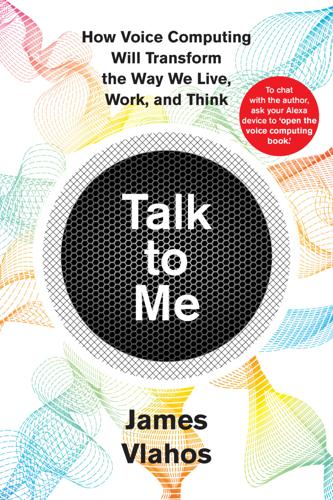
Talk to Me: How Voice Computing Will Transform the Way We Live, Work, and Think
by
James Vlahos
Published 1 Mar 2019
Machine learning’s formidable powers of classification are also helpful, to a degree, with natural-language understanding. But when it comes to getting chatbots not just to listen but say something back, machine learning still has a long way to go. True conversation requires more than mere pattern recognition. That’s why the strategies of retrieving preexisting content from online sources or manually authoring responses in advance, while limited in their own way, still hold considerable sway. Against this backdrop, every team in the contest, like the conversational AI world at large, was struggling to find the best balance between manually engineered and machine-learned approaches.
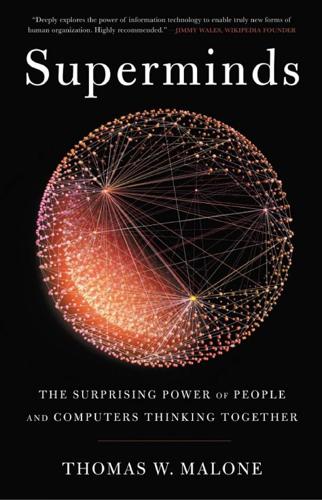
Superminds: The Surprising Power of People and Computers Thinking Together
by
Thomas W. Malone
Published 14 May 2018
Of course, the system might also have noticed many thousands of other potential threats, and it would be useful to us only if it used probability estimates or some other way of prioritizing the threats so that the most important ones would be ranked first. But even this simple kind of automatic pattern recognition across many diverse sources of information could potentially be of huge value. It’s also possible to do even more. Entering Facts Automatically Everything we’ve talked about so far assumes that professionals in the intelligence community would have to enter all the information needed in the system.
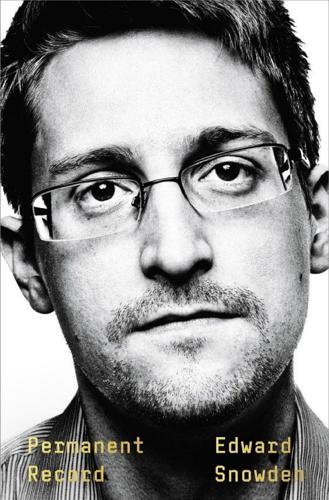
Permanent Record
by
Edward Snowden
Published 16 Sep 2019
But as the cost of these devices continued to fall, they became ubiquitous, and their role became preemptive—with law enforcement using them to track people who had not committed, or were not even suspected of, any crime. And the greatest danger still lies ahead, with the refinement of artificial intelligence capabilities such as facial and pattern recognition. An AI-equipped surveillance camera would be no mere recording device, but could be made into something closer to an automated police officer—a true robo-cop actively seeking out “suspicious” activity, such as apparent drug deals (that is, people embracing or shaking hands) and apparent gang affiliation (such as people wearing specific colors and brands of clothing).

The Smart Wife: Why Siri, Alexa, and Other Smart Home Devices Need a Feminist Reboot
by
Yolande Strengers
and
Jenny Kennedy
Published 14 Apr 2020
The Look Book records what you wear and when, so that you can “keep track of your favorites and take your closet with you.”25 Amazon’s Echo Look also includes all the other usual Alexa accessories, and its features are likely to continue expanding. In 2018, Look users could crowdsource votes on their outfit; they will eventually be able to make use of a “mirror” that dresses them in virtual clothes.26 Using computer vision, pattern recognition, neural networks, and machine learning, the device is part of a system that will one day be able to design clothes by analyzing the Look’s database of images, identifying emerging trends, and then applying the learning to generate new items from scratch. Such possibilities raise a whole host of other consumption and sustainability concerns associated with fast fashion that support our arguments from chapter 4.
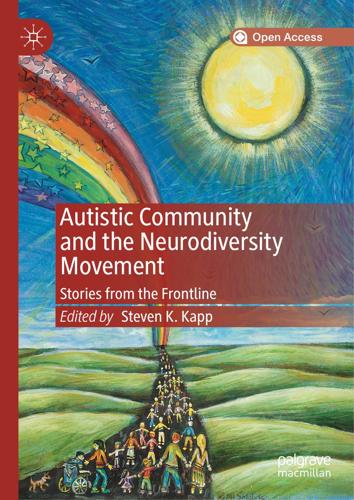
Autistic Community and the Neurodiversity Movement: Stories From the Frontline
by
Steven K. Kapp
Published 19 Nov 2019
The same autistic individuals’ behavior [22] and perception [23] has demonstrated exceptional variability to the same task or stimuli over time. Even so-called talents or gifts (where present) vary in their presentation as strengths or weaknesses [24], depending on factors such as the social context [25]. Autistic-typical strengths such as pattern recognition tend to exist across the spectrum, including in minimally verbal children classified as “untestable” [10]. Autistic people also tend to gain skills across our lifespans (APA 2013), and the same activists parents might claim as unlike their child may have presented more severely as children.

How the Mind Works
by
Steven Pinker
Published 1 Jan 1997
Such a network would embody not only the knowledge that greenness predicts vegetablehood and crunchiness predicts vegetablehood, but that greenness predicts crunchiness, crunchiness predicts leafiness, greenness predicts lack of mobility, and so on: With this move, interesting things begin to happen. The network begins to resemble human thought processes in ways that sparsely connected networks do not. For this reason psychologists and artificial intelligence researchers have been using everything-connected-to-everything networks to model many examples of simple pattern recognition. They have built networks for the lines that co-occur in letters, the letters that co-occur in words, the animal parts that co-occur in animals, and the pieces of furniture that co-occur in rooms. Often the decision node at the top is thrown away and only the correlations among the properties are calculated.
…
The limitation is all too clear to microcomputer owners deciding whether to invest in more RAM. Of course the brain, unlike a computer, comes with vast amounts of parallel hardware for storage. Sometimes theorists infer that the brain can store all contingencies in advance and that thought can be reduced to one-step pattern recognition. But the mathematics of a combinatorial explosion bring to mind the old slogan of MTV: Too much is never enough. Simple calculations show that the number of humanly graspable sentences, sentence meanings, chess games, melodies, seeable objects, and so on can exceed the number of particles in the universe.

The Age of Surveillance Capitalism
by
Shoshana Zuboff
Published 15 Jan 2019
In 1997 she published Affective Computing, which posited a practical solution to the idea that some emotions are available to the conscious mind and can be expressed “cognitively” (“I feel scared”), whereas others may elude consciousness but nevertheless be expressed physically in beads of sweat, a widening of the eyes, or a nearly imperceptible tightening of the jaw. The key to affective computing, Picard argued, was to render both conscious and unconscious emotion as observable behavior for coding and calculation. A computer, she reasoned, would be able to render your emotions as behavioral information. Affect recognition, as she put it, is “a pattern recognition problem,” and “affect expression” is pattern synthesis. The proposition was that “computers can be given the ability to recognize emotions as well as a third-person human observer.” Picard imagined her affective insights being put to use in ways that were often good-hearted or, at the very least, benign.
…
We don’t need you to type at all. We know where you are. We know where you’ve been. We can more or less know what you’re thinking about.”8 Satya Nadella of Microsoft understands all physical and institutional spaces, people, and social relationships as indexable and searchable: all of it subject to machine reasoning, pattern recognition, prediction, preemption, interruption, and modification.9 Surveillance capitalism is not the old capitalism, and its leaders are not Smith’s or even Hayek’s capitalists. Under this regime, freedom and ignorance are no longer twin born, no longer two sides of the same coin called mystery. Surveillance capitalism is instead defined by an unprecedented convergence of freedom and knowledge.
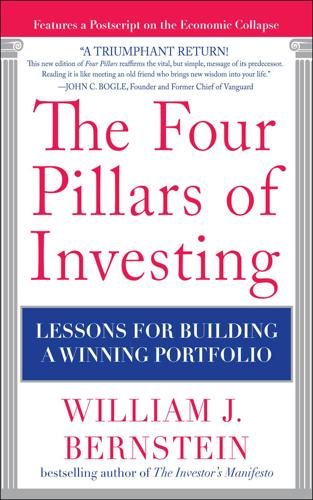
The Four Pillars of Investing: Lessons for Building a Winning Portfolio
by
William J. Bernstein
Published 26 Apr 2002
The Faces in the Clouds If there is one skill that separates us from both computers and the rest of the animal kingdom, it is our ability to recognize highly abstract patterns. Newton’s intuition of the gravitational equation from a falling apple and Darwin’s extrapolating the theory of evolution from observing gardeners and farmers select for favorable plant characteristics are two spectacular examples of this ability. We all rely on pattern recognition in our everyday lives, from complex professional tasks down to things as mundane as the route we take to work or the way we organize our closets. But in investing, this talent is usually counterproductive. The simple reason is, for the most part, the pricing of stocks and bonds at both the individual and market level is random: there are no patterns.
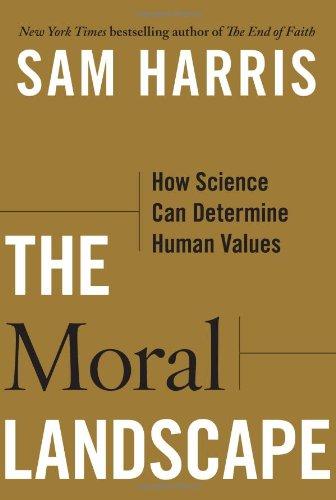
The Moral Landscape: How Science Can Determine Human Values
by
Sam Harris
Published 5 Oct 2010
Most analyses of fMRI data are univariate and merely look for correlations between the activity at each point in the brain and the task paradigm. This approach ignores the interrelationships that surely exist between regions. Cox and Savoy demonstrated that a multivariate approach, in which statistical pattern recognition methods are used to look for correlations across all regions, allows for a very subtle analysis of fMRI data in a way that is far more sensitive to distributed patterns of activity (Cox & Savoy, 2003). With this approach, they were able to determine which visual stimulus a subject was viewing (out of ten possible types) by examining a mere 20 seconds of his experimental run.
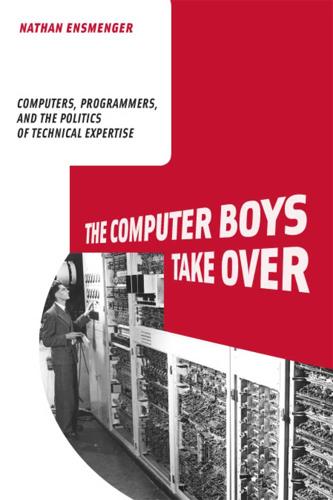
The Computer Boys Take Over: Computers, Programmers, and the Politics of Technical Expertise
by
Nathan L. Ensmenger
Published 31 Jul 2010
For instance, despite the growing consensus within the industry (especially in business data processing) that mathematical training was irrelevant to the performance of most commercial programming tasks, popular aptitude tests such as IBM PAT still emphasized mathematical ability.114 Some of the mathematical questions tested only logical thinking and pattern recognition, but others required formal training in mathematics—a fact that even Cosmopolitan recognized as discriminating against women. Still, the kinds of questions that could be easily tested using multiple-choice aptitude tests and mass-administered personality profiles necessarily focused on mathematical trivia, logic puzzles, and word games.
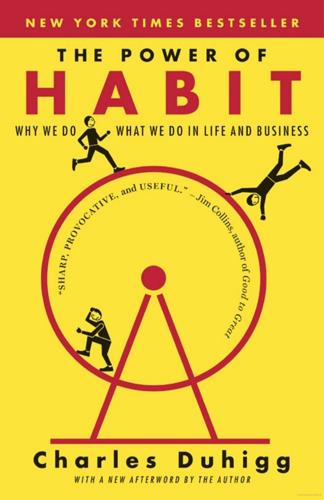
The Power of Habit: Why We Do What We Do in Life and Business
by
Charles Duhigg
Published 1 Jan 2011
Scientists have examined people’s brains as they listen to music, and have tracked which neural regions are involved in comprehending aural stimuli. Listening to music activates numerous areas of the brain, including the auditory cortex, the thalamus, and the superior parietal cortex.7.19 These same areas are also associated with pattern recognition and helping the brain decide which inputs to pay attention to and which to ignore. The areas that process music, in other words, are designed to seek out patterns and look for familiarity. This makes sense. Music, after all, is complicated. The numerous tones, pitches, overlapping melodies, and competing sounds inside almost any song—or anyone speaking on a busy street, for that matter—are so overwhelming that, without our brain’s ability to focus on some sounds and ignore others, everything would seem like a cacophony of noise.7.20 Our brains crave familiarity in music because familiarity is how we manage to hear without becoming distracted by all the sound.
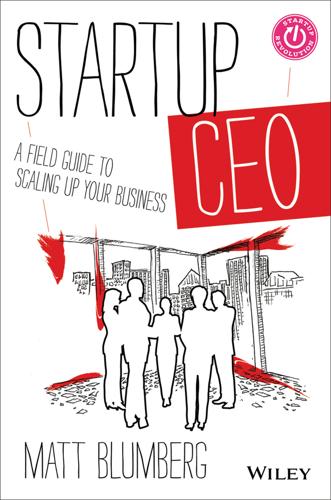
Startup CEO: A Field Guide to Scaling Up Your Business, + Website
by
Matt Blumberg
Published 13 Aug 2013
We have a world-class CFO with significant corporate development experience as well. Some directors are excitable and quick to react, others are more reflective; some are aggressive and others are more conservative; some have extremely colorful metaphors, while others are a bit more steeped in traditional pattern recognition. That diversity makes for great conversations. Fred Wilson has regularly written that “the success of an investment is in inverse proportion to the number of VCs on the board.” Though it hasn’t been my experience, I see Fred’s point. I’d argue that the same statement is true of founders or management as well.
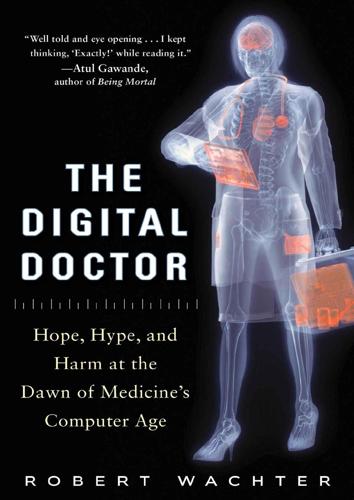
The Digital Doctor: Hope, Hype, and Harm at the Dawn of Medicine’s Computer Age
by
Robert Wachter
Published 7 Apr 2015
To date, most claims that “this technology will replace doctors” (in areas ranging from diagnostic reasoning to robotic surgery) have proven to be hype (an issue we’ll explore in detail later when we talk about IBM’s Watson and medical diagnosis). However, in fields that are primarily about visual pattern recognition, the promise (or, if you’re a radiologist, the threat) is much more real. Studies have shown that computers can detect significant numbers of breast cancers and pulmonary emboli missed by radiologists, although nobody has yet taken the bold step of having the computers completely supplant the humans, partly because there are armadas of malpractice attorneys waiting to pounce, and partly because, at least for now, the combination of human and machine seems to perform better than either alone.
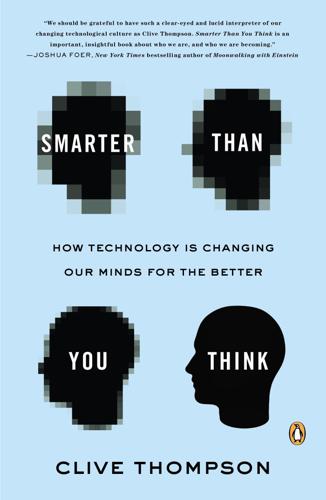
Smarter Than You Think: How Technology Is Changing Our Minds for the Better
by
Clive Thompson
Published 11 Sep 2013
“It was like, I should write something—wait a minute, what’s on TV?” But in early 2011 he stumbled upon Quora and found the questions perversely stimulating. (Question: “What does the human brain find exciting about syncopated rhythm and breakbeats?” Hein’s answer began: “Predictable unpredictability. The brain is a pattern-recognition machine . . .”) Other times, he chimed in on everything from neuroscience and atheism to “What is it like to sleep in the middle of a forest?” (A: “Sleeping in the woods gratifies our biophilia.”) Within a year, he was hooked. “I will happily shuffle through the unanswered questions as a form of entertainment,” Hein says.
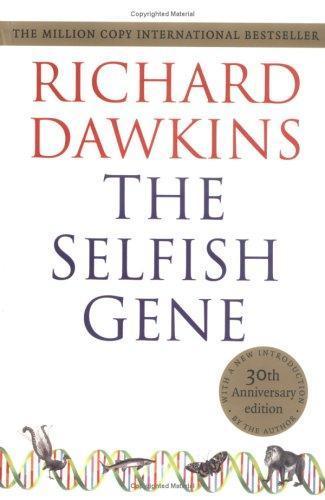
The Selfish Gene
by
Richard Dawkins
Published 1 Jan 1976
For this reason, natural selection favoured animals that became equipped with sense organs, devices which translate patterns of physical events in the outside world into the pulse code of the neurones. The brain is connected to the sense organs-eyes, ears, taste-buds, etc.-by means of cables called sensory nerves. The workings of the sensory systems are particularly baffling, because they can achieve far more sophisticated feats of pattern-recognition than the best and most expensive man-made machines; if this were not so, all typists would be redundant, superseded by speech-recognizing machines, or machines for reading handwriting. Human typists will be needed for many decades yet. There may have been a time when sense organs communicated more or less directly with muscles; indeed, sea anemones are not far from this state today, since for their way of life it is efficient.

The Blockchain Alternative: Rethinking Macroeconomic Policy and Economic Theory
by
Kariappa Bheemaiah
Published 26 Feb 2017
Complexity economics is thus the study of a history-dependent, living and always evolving system whose properties emerge as a result of the interaction between self-adapting individual agents , who in adapting to new information, change the system level behaviour and the overall state of the system. Breaking down the system to individual components thus destroys down the systems properties (Bruno et al., 2016). Hence the main areas of the study of complexity economics include, self-organization, pattern development and pattern recognition, agent-decision making, network propagation, interdependence of interactions, emergence, learning and memory, endogenous innovation, institutional effects, unpredictable dynamics, heterogeneity, path dependence, topology, change and evolution, holism and synergy (Manson, 2001). This interdisciplinary branch of study combines elements of physics, mathematics, computer science, ecology, engineering and, of course, economics.
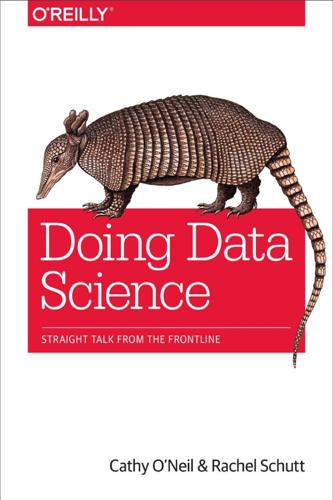
Doing Data Science: Straight Talk From the Frontline
by
Cathy O'Neil
and
Rachel Schutt
Published 8 Oct 2013
(Chapman & Hall) Data Analysis Using Regression and Multilevel/Hierarchical Models by Andrew Gelman and Jennifer Hill (Cambridge University Press) Advanced Data Analysis from an Elementary Point of View by Cosma Shalizi (under contract with Cambridge University Press) The Elements of Statistical Learning: Data Mining, Inference and Prediction by Trevor Hastie, Robert Tibshirani, and Jerome Friedman (Springer) Artificial Intelligence and Machine Learning Pattern Recognition and Machine Learning by Christopher Bishop (Springer) Bayesian Reasoning and Machine Learning by David Barber (Cambridge University Press) Programming Collective Intelligence by Toby Segaran (O’Reilly) Artificial Intelligence: A Modern Approach by Stuart Russell and Peter Norvig (Prentice Hall) Foundations of Machine Learning by Mehryar Mohri, Afshin Rostamizadeh, and Ameet Talwalkar (MIT Press) Introduction to Machine Learning (Adaptive Computation and Machine Learning) by Ethem Alpaydim (MIT Press) Experimental Design Field Experiments by Alan S.

Zero History
by
William Gibson
Published 6 Sep 2010
TITLES BY WILLIAM GIBSON Neuromancer Count Zero Burning Chrome Mona Lisa Overdrive Virtual Light Idoru All Tomorrow’s Parties Pattern Recognition Spook Country WILLIAM GIBSON zero history VIKING an imprint of PENGUIN BOOKS VIKING Published by the Penguin Group Penguin Books Ltd, 80 Strand, London WC2R 0RL, England Penguin Group (USA) Inc., 375 Hudson Street, New York, New York 10014, USA Penguin Group (Canada), 90 Eglinton Avenue East, Suite 700, Toronto, Ontario, Canada M4P 2Y3 (a division of Pearson Penguin Canada Inc.) Penguin Ireland, 25 St Stephen’s Green, Dublin 2, Ireland (a division of Penguin Books Ltd) Penguin Group (Australia), 250 Camberwell Road, Camberwell, Victoria 3124, Australia (a division of Pearson Australia Group Pty Ltd) Penguin Books India Pvt Ltd, 11 Community Centre, Panchsheel Park, New Delhi – 110 017, India Penguin Group (NZ), 67 Apollo Drive, Rosedale, North Shore 0632, New Zealand (a division of Pearson New Zealand Ltd) Penguin Books (South Africa) (Pty) Ltd, 24 Sturdee Avenue, Rosebank, Johannesburg 2196, South Africa Penguin Books Ltd, Registered Offices: 80 Strand, London WC2R 0RL, England www.penguin.com First published in the United States of America by G.

Miracle Cure
by
William Rosen
Published 14 Apr 2017
Credit: Wellcome Library, London Gerhard Domagk, 1895–1964 Domagk’s experiments resulted in two significant findings. First: The performance of the Kupffer cells improved with exposure to the staph pathogen (though he couldn’t know the reason, which wasn’t discovered until the 1980s: pattern recognition proteins known as Toll-like receptors that identify different sorts of toxins produced by bacteria and tailor the response by white blood cells sent to destroy them). The second revelation was the big one: A staph cell that had been weakened beforehand by exposure to antiseptics was easier for the Kupffer cells to destroy.
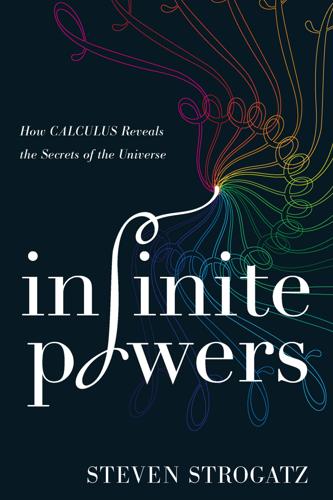
Infinite Powers: How Calculus Reveals the Secrets of the Universe
by
Steven Strogatz
Published 31 Mar 2019
A small value of x near 0 would produce a thin, upright segment of the circle, like a thin strip standing on its edge. Increasing x would fatten the segment into a blocky region. Going all the way up to an x-value of 1 would give him the familiar shape of a quarter circle. By dialing x up or down, he could go anywhere he liked in between. Through a freewheeling process of experimentation, pattern recognition, and inspired guesswork (a style of thinking he learned from Wallis’s book), Newton discovered that the area of the circular segment could be expressed by the following power series: A(x) = x − 1⁄6x3 − 1⁄40x5 − 1⁄112x7 − 5⁄1152x9 − · · · . As for where those peculiar fractions came from or why the powers of x were all odd numbers, well, that was Newton’s secret sauce.
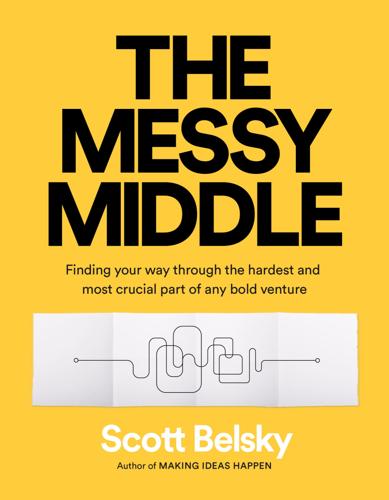
The Messy Middle: Finding Your Way Through the Hardest and Most Crucial Part of Any Bold Venture
by
Scott Belsky
Published 1 Oct 2018
Hence it comes about that at their first appearance innovators have generally been persecuted, and always derided as fools and madmen.” When working in a group, innovators must be willing to be the fool. The best investors don’t grasp too tightly to any given playbook. As a seed investor, I am always trying to use my pattern-recognition abilities without holding on too dearly to whatever worked before. None of my best investments were alike, obvious, or fit a popular rubric. Some, like Warby Parker, struck investors as too crowded a market and too commoditized. Others, like Pinterest, Uber, and Carta, initially appeared too niche with limited markets.
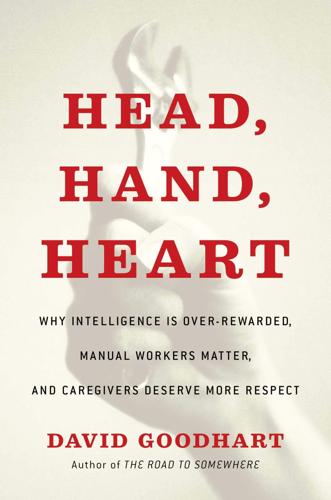
Head, Hand, Heart: Why Intelligence Is Over-Rewarded, Manual Workers Matter, and Caregivers Deserve More Respect
by
David Goodhart
Published 7 Sep 2020
rather than raw ability, and that children with a good math education were going to perform better than equally bright children without one. The revised tests turned out to be good at predicting certain things like school achievement, but the questions are: How useful is this and what does it tell us about something as big and fuzzy as intelligence? If g, as revealed by IQ-type tests, is just a form of pattern recognition should it be afforded such a large space in educational and career selection processes? And that influence is still significant. In Britain, the eleven-plus is an IQ-type test, but since the abolition of most grammar schools and selection at age eleven, IQ tests are not used routinely in schools.
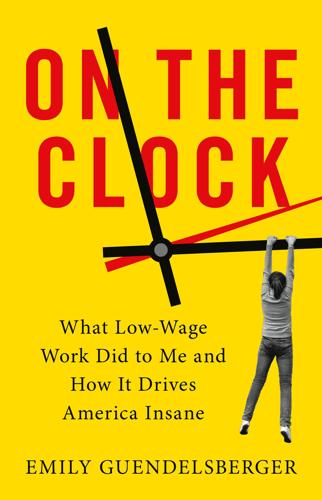
On the Clock: What Low-Wage Work Did to Me and How It Drives America Insane
by
Emily Guendelsberger
Published 15 Jul 2019
Automation of most jobs is only a decade or two away, and human workers increasingly have to compete with computers, algorithms, and robots that never get tired, or sick, or depressed, or need a day off. Still, in industries that rely on skills that robots still aren’t great at—fine motor control, speech and pattern recognition, empathy—the cheapest option is still low-wage human workers. And so many employers demand a workforce that can think, talk, feel, and pick stuff up like humans—but with as few needs outside of work as robots. They insist their workers amputate the messy human bits of themselves—family, hunger, thirst, emotions, the need to make rent, sickness, fatigue, boredom, depression, traffic—or at least keep them completely at bay.
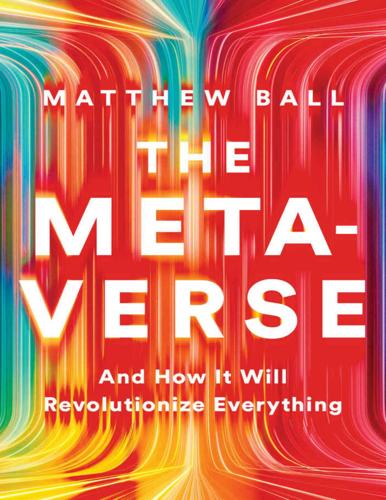
The Metaverse: And How It Will Revolutionize Everything
by
Matthew Ball
Published 18 Jul 2022
In 2000, Japan even placed export limitations on its own beloved giant, Sony, fearing that the company’s new PlayStation 2 device could be used for terrorism on a global scale (for instance, to process missile guidance systems).2 The following year, in touting the importance of the consumer electronics industry, US Secretary of Commerce Don Evans stated “yesterday’s supercomputer is today’s PlayStation.”3 In 2010, the US Air Force Research Laboratory built the 33rd largest supercomputer in the world using 1,760 Sony PlayStation 3s. The project’s director estimated that the “Condor Cluster” was 5% to 10% the cost of equivalent systems and used 10% of the energy.4 The supercomputer was used for radar enhancement, pattern recognition, satellite imagery processing, and artificial intelligence research.5 The companies that typically focused on powering video game consoles and PCs are now some of the most powerful technology companies in human history. The best example is computing and system-on-a-chip giant Nvidia, which is far from a household name yet ranks alongside consumer-facing tech platforms Google, Apple, Facebook, Amazon, and Microsoft as one of the ten largest public companies in the world.

The Equality Machine: Harnessing Digital Technology for a Brighter, More Inclusive Future
by
Orly Lobel
Published 17 Oct 2022
Whether or not this comes to pass and whatever it may look like, it is highly likely that the human-machine entanglement will only become deeper, that the integration of robots will only become greater. We can already say that automation is reshaping how we work and live. At the same time, we are just beginning to create truly smart machines. Our algorithms are good at pattern recognition, but they do not yet think for themselves; we are nowhere close to that point. As Stanford University professor Fei-Fei Li said in her testimony to the U.S. Congress about the state of AI, “There’s nothing artificial about AI. It’s inspired by people, and most importantly it impacts people.”16 In 1950, Alan Turing asked whether it would be possible one day to create a computer with consciousness.

Visual Thinking: The Hidden Gifts of People Who Think in Pictures, Patterns, and Abstractions
by
Temple Grandin, Ph.d.
Published 11 Oct 2022
But in a New York Times article, “The Secret History of Women in Coding,” he explains that in the early days of computing, women were more prevalent in computer design than they would be in subsequent decades. In the 1950s, gender barriers and prejudices hadn’t yet emerged. According to Thompson, “Institutions that needed programmers just used aptitude tests to evaluate applicants’ ability to think logically.” Employers often gave a pattern-recognition test, and looked for people who were logical, good at math, and meticulous. What they were really looking for, of course, had nothing to do with gender. They were looking for spatial visualizers. But even the most superb, beautiful mathematical code is not going to be successful if the user interface is a cluttered mess that is difficult to use.
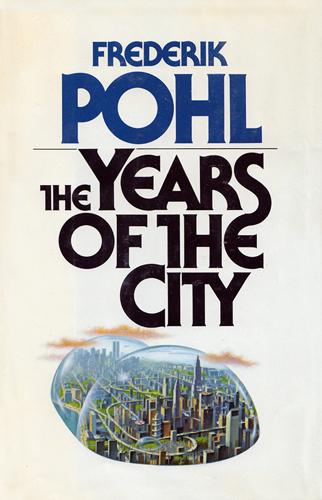
Years of the City
by
Frederik Pohl
Published 1 Jan 1984
So did every other prisoner, because no matter where they were or what they were doing the master locator file tagged them in and out every time they came to a checkpoint. You lifted your leg to present the ID on your ankle to the optical scanner. The scanner made sure you were you by voice prints or pattern recognition of face or form, sometimes even by smell. It queried the master file to find out if you were supposed to be going where you were going, and if all was in order you simply walked right through. The whole process took no longer than opening an ordinary door, and you didn’t screw around if you could help it because, anyway, you were under continuous closed-circuit surveillance all the time.
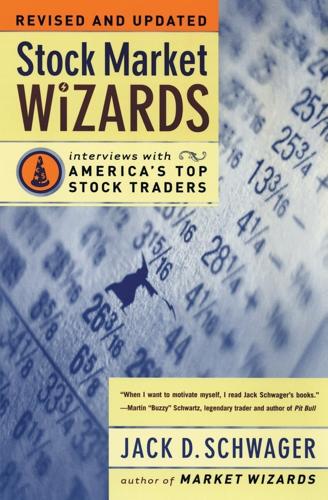
Stock Market Wizards: Interviews With America's Top Stock Traders
by
Jack D. Schwager
Published 1 Jan 2001
. > Stay focused, especially when the markets are moving. *• Anticipate, don't react. >• Listen to the market, not outside opinions. *• Think trades through, including profit/loss exit points, before you put them on. > If you are unsure about a position, just get out. »» Force yourself to trade against the consensus. *• Trade pattern recognition. > Look past tomorrow; develop a six-month and one-year outlook. > Prices move before fundamentals. *• It is a warning flag if the market is not responding to data correctly. * Be totally flexible; be able to admit when you are wrong. *• You will be wrong often; recognize winners and losers fast. ^ Start each day from last night's close, not your original cost. > Adding to losers is easy but usually wrong. >• Force yourself to buy on extreme weakness and sell on extreme strength.

When Computers Can Think: The Artificial Intelligence Singularity
by
Anthony Berglas
,
William Black
,
Samantha Thalind
,
Max Scratchmann
and
Michelle Estes
Published 28 Feb 2015
Finally note that in the sample the speaker has paused for 100 milliseconds between the words, but in normal, continuous speech words are often run together making it very difficult to know where one word ends and another word begins. Sonogram of the words “Three Tea” Educational http://www.cslu.ogi.edu/tutordemos/nnet_training/tutorial.html Speech recognition systems attack this problem in a similar way to other pattern recognition problems. The data is first conditioned to make it easier to work with. Then features are extracted which can be compared with a model of what features are expected. Speech understanding systems usually start by splitting the input sound into overlapping frames about 10 milliseconds long. That is fine enough to isolate short-duration phones, but coarse enough to enable a proper frequency analysis to be performed.

Geek Heresy: Rescuing Social Change From the Cult of Technology
by
Kentaro Toyama
Published 25 May 2015
Information Technologies and International Development 5(1):81–95, http://itidjournal.org/itid/article/view/327/150. Venkatesh, Sudhir. (2008). Gang Leader for a Day: A Rogue Sociologist Crosses the Line. Allen Lane. Viola, Paul, and Michael Jones. (2001). Rapid object detection using a boosted cascade of simple features. In Proceedings of the Conference on Computer Vision and Pattern Recognition, http://dx.doi.org/10.1109/CVPR.2001.990517. Vornovytskyy, Marina, Alfred Gottschalck, and Adam Smith. (2011). Household debt in the U.S.: 2000 to 2011. US Census Bureau, www.census.gov/people/wealth/files/Debt%20Highlights%202011.pdf. Wahba, Mahmoud A., and Lawrence G. Bridwell. (1976). Maslow reconsidered: A review of research on the need hierarchy theory.
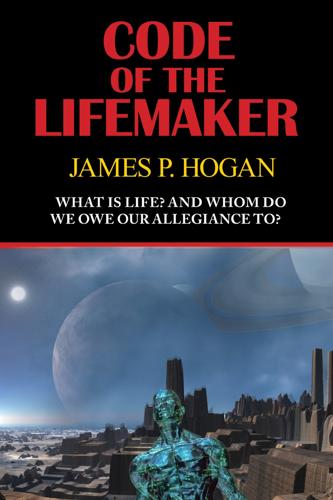
Code of the Lifemaker
by
James P. Hogan
Published 1 Jan 1983
TITAN MUST WORK FOR WEALTH FOR ALL TALOIDS JUST AS EARTH HAD TO WORK FOR WEALTH FOR ALL TALOIDS. Seltzman sighed. "Delete last word. Insert Earthmen." The machine complied. "Okay," he pronounced. The "transmogrifier" that Dave Crookes, Leon Keyhoe, and some of the other signals engineers and pattern-recognition specialists had assembled and were still improving did not so much translate languages as enable the two parties in a dialogue—whose native languages were not only mutually unintelligible but also completely inaudible—to tell the machine, in effect, to note what was said and remember its meaning.
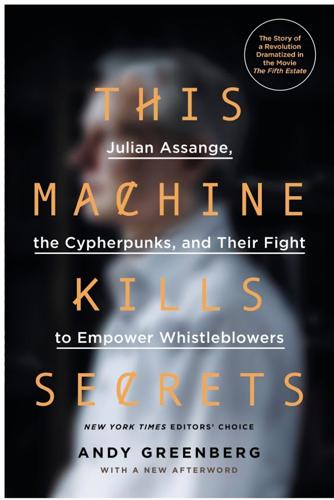
This Machine Kills Secrets: Julian Assange, the Cypherpunks, and Their Fight to Empower Whistleblowers
by
Andy Greenberg
Published 12 Sep 2012
And to a reader like May, it must have seemed like one brilliant gift to the world of ideas after another. It began with a prescient description of how the digital world would allow surveillance and manipulation of normal people on a terrifying scale. “New and . . . serious dangers derive from computerized pattern recognition techniques: even a small group using these and tapping into data gathered in everyday consumer transactions could secretly conduct mass surveillance, inferring individuals’ lifestyles, activities, and associations,” Chaum wrote. “The automation of payment and other consumer transactions is expanding these dangers to an unprecedented extent.”
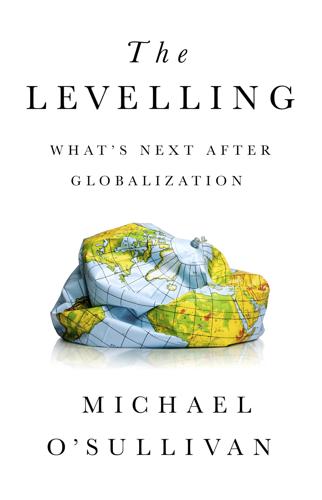
The Levelling: What’s Next After Globalization
by
Michael O’sullivan
Published 28 May 2019
Historically, political leaders and some governments have co-opted the forces of nationalism and religion, the dream of economic progress, and the fear of external threat to corral societies. In China’s case, the underlying social, technological, and economic changes may be too great to be contained by words and images alone. China is already investing heavily in technologically based social control mechanisms that employ algorithms and facial and pattern recognition to gauge which citizens are misbehaving, or are likely to misbehave. Another, perhaps less heavy-handed approach is to develop social infrastructure that encompasses many of the elements of intangible infrastructure, such as health-care spending, education, pension plans, and broader financial services.
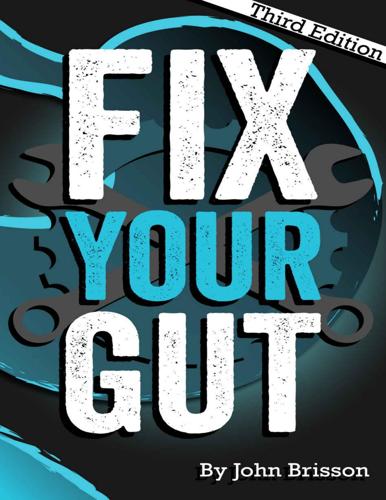
Fix Your Gut: The Definitive Guide to Digestive Disorders
by
John Brisson
Published 12 Apr 2014
Finally, it is also able to modulate leptin, ghrelin, calcitonin gene-related peptide (CGRP), nitric oxide, neuropeptide Y, substance P (SP), somatostatin (STS) and cholecystokinin (CCK). H. pylori are able to avoid easily immune system detection by modulating inflammatory pathways, avoiding immune pattern recognition receptors by using endotoxins and flagellin, produce biofilms, reduce phagocyte potential, reduce endogenous nitric oxide production (increases blood pressure and promotes vasoconstriction), and by reducing T cell response. H. pylori also cause many different medical conditions and health issues, those include: H. pylori can shed potent endotoxins that can leak into the bloodstream and increase inflammatory markers.

Click Here to Kill Everybody: Security and Survival in a Hyper-Connected World
by
Bruce Schneier
Published 3 Sep 2018
Dudley (17 May 2016), “Deep Patient: An unsupervised representation to predict the future of patients from the electronic health records,” Scientific Reports 6, no. 26094, https://www.nature.com/articles/srep26094. 83But although the system works: Will Knight (11 Apr 2017), “The dark secret at the heart of AI,” MIT Technology Review, https://www.technologyreview.com/s/604087/the-dark-secret-at-the-heart-of-ai. 83A 2014 book, Autonomous Technologies: William Messner, ed. (2014), Autonomous Technologies: Applications That Matter, SAE International, http://books.sae.org/jpf-auv-004. 84One research project focused on: Anh Nguyen, Jason Yosinski, and Jeff Clune (2 Apr 2015), “Deep neural networks are easily fooled: High confidence predictions for unrecognizable images,” in Proceedings of the 2015 IEEE Conference on Computer Vision and Pattern Recognition (CVPR ’15), https://arxiv.org/abs/1412.1897. 84A related research project was able: Christian Szegedy et al. (19 Feb 2014), “Intriguing properties of neural networks,” in Conference Proceedings: International Conference on Learning Representations (ICLR) 2014, https://arxiv.org/abs/1312.6199. 84Yet another project tricked an algorithm: Andrew Ilyas et al. (20 Dec 2017), “Partial information attacks on real-world AI,” LabSix, http://www.labsix.org/partial-information-adversarial-examples. 85Like the Microsoft chatbot Tay: James Vincent (24 Mar 2016), “Twitter taught Microsoft’s AI chatbot to be a racist asshole in less than a day,” Verge, https://www.theverge.com/2016/3/24/11297050/tay-microsoft-chatbot-racist. 85In 2017, Dow Jones accidentally: Timothy B.
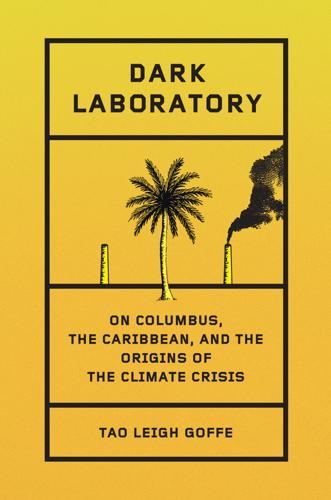
Dark Laboratory: On Columbus, the Caribbean, and the Origins of the Climate Crisis
by
Tao Leigh. Goffe
Published 14 Mar 2025
Species thinking applied to humans is predated by a hundred years by scientific racism, the nomenclature of classification that Swedish taxonomist Carl Linnaeus developed. The taxonomic impulse is the taxidermy impulse. Though it may seem intuitive to scientists that human beings seek to categorize based on a desire for pattern recognition, it is a far leap to the pathological logic of eugenics, a genocidal science. Davenport remained an ardent supporter of Nazi Germany until he died in 1944 at the age of seventy-seven. “Fair-skinned babies from dark mothers.” Davenport and Steggerda, Race Crossing in Jamaica. In a striking arrangement of four photographs in his 1929 book Race Crossing in Jamaica, a quadrant of four unnamed Jamaican women hold their toddlers.

More Everything Forever: AI Overlords, Space Empires, and Silicon Valley's Crusade to Control the Fate of Humanity
by
Adam Becker
Published 14 Jun 2025
Microsoft Looks to Tame AI Chatbot,” AP, February 16, 2023, https://apnews.com/article/technology-science-microsoft-corp-business-software-fb49e5d625bf37be0527e5173116bef3; Seth Lazar (@sethlazar), Twitter (now X), February 16, 2023, https://twitter.com/sethlazar/status/1626257535178280960. 92 To my great surprise, it appears that the first use of “hallucination” in this broad sense relating to neural networks arguably dates back to the mid-1980s. See Eric Daniel Mjolsness, “Neural Networks, Pattern Recognition, and Fingerprint Hallucination” (PhD diss., California Institute of Technology, 1986), http://doi.org/10.7907/M0VQ-DJ43. Thanks to John Wenz for finding this (and many other things). 93 Benjamin Weiser and Nate Schweber, “The ChatGPT Lawyer Explains Himself,” New York Times, June 8, 2023, www.nytimes.com/2023/06/08/nyregion/lawyer-chatgpt-sanctions.html. 94 Ted Chiang, “ChatGPT Is a Blurry JPEG of the Web,” New Yorker, February 9, 2023, www.newyorker.com/tech/annals-of-technology/chatgpt-is-a-blurry-jpeg-of-the-web. 95 Ibid. 96 Ilia Shumailov et al., “The Curse of Recursion: Training on Generated Data Makes Models Forget,” arXiv:2305.17493 (2023), https://doi.org/10.48550/arXiv.2305.17493; Ross Anderson, “Will GPT Models Choke on Their Own Exhaust?
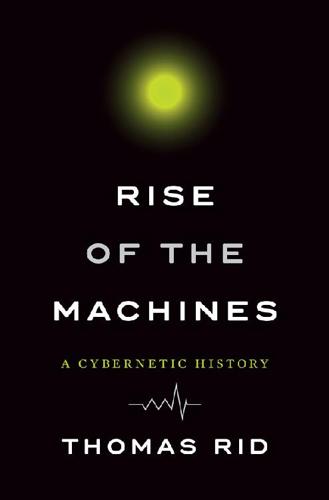
Rise of the Machines: A Cybernetic History
by
Thomas Rid
Published 27 Jun 2016
The soldiers of the future, “of course,” will be computers as well. “Welcome to World War III, the Cybernetic War created by machines for machines.”1 The arsenals of cybernetic war were stocked with an array of fancy weaponry: cruise missiles, smart bombs, sophisticated intercontinental missiles with multiple warheads, and tools such as robotic pattern recognition, code, game theory, cryptography, and simulation. In 1979 these terms were still somewhat vague and undefined, all sounding equally futuristic. When Post’s article on the future of war came out, its analysis was at the cutting edge of technology. The US military was still reeling from defeat in Vietnam, a decidedly low-tech war.

Blockchain Revolution: How the Technology Behind Bitcoin Is Changing Money, Business, and the World
by
Don Tapscott
and
Alex Tapscott
Published 9 May 2016
The medical profession will soon be using similar technology for targeted drug delivery to certain types of cancer, measuring core temperature and other biomarkers.10 The devices can communicate with one another, with computers and databases directly or through the cloud, and with people (send you a text message or call your mobile). These devices, through their evolving machine intelligence and the data they collect, are putting analysis of data, pattern recognition, and trend spotting into individual hands.11 The industry term big data hardly describes the myriad data that the physical world will generate. By the most conservative estimate, the 10 billion or so devices connected via the Internet today will grow to more than 25 billion by 2020.12 Call it “infinite data” from infinite devices.
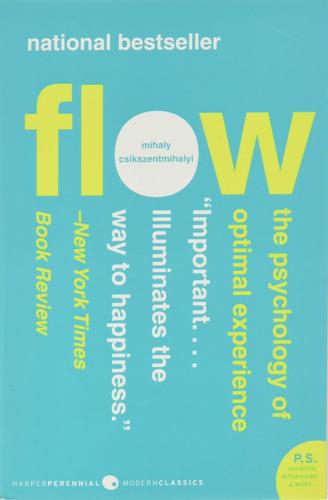
Flow: The Psychology of Optimal Experience
by
Mihaly Csikszentmihalyi
Published 1 Jul 2008
Paper presented at the 38th ESOMAR Conference, Wiesbaden, West Germany, Sept. 1–5. Noelle-Neumann, E., & Strumpel, B. 1984. Mach Arbeit krank? Macht Arbeit glucklich? Munich: Pieper Verlag. Nusbaum, H. C., & Schwab, E. C., eds. 1986. The role of attention and active processing in speech perception. In Pattern recognition by humans and machines, vol. 1 (pp. 113–57). New York: Academic Press. Offer, D., Ostrov, E., & Howard, K. 1981. The adolescent: A psychological self-portrait. New York: Basic Books. Orme, J. E. 1969. Time, experience, and behavior. London: Iliffe. Pagels, H. 1988. The dreams of reason—the computer and the rise of the sciences of complexity.

Alex's Adventures in Numberland
by
Alex Bellos
Published 3 Apr 2011
Completing any puzzle is immensely gratifying to the ego, but part of the extra allure of completing a Sudoku is the inner beauty and balance of the perfect Latin square that gives it its form. Sudoku’s success is testament to an age-old, cross-cultural fetish for number squares. And unlike many other puzzles, its success is also a remarkable victory for mathematics. The puzzle is maths by stealth. Although Sudoku contains no arithmetic, it does require abstract thought, pattern recognition, logical deduction and the generation of algorithms. The puzzle also encourages an aggressive attitude towards problem-solving, and fosters an appreciation of mathematical elegance. For instance, as soon as you understand the rules of Sudoku, the concept of a unique solution is remarkably clear.
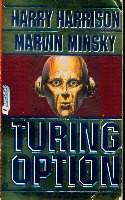
The Turing Option
by
Harry Harrison
and
Marvin Minsky
Published 2 Jan 1992
And we're sure that was no accident. Bug-Off seems to know the behavior of every insect described in this book." Brian handed Ben a large volume entitled Handbook of Insect Ethology, 2018 Edition. "But how can Bug-Off tell which insect it is dealing with? They all look the same to me." "A good question—since pattern recognition has been the bane of AI from the very first day that research began. Industrial robots were never very good at recognizing and assembling parts if they weren't presented in a certain way. There are thousands of different signals involved in seeing a human face, then recognizing who it is. If you wrote a program for picking bugs off bushes you would have to program in every bug in the world, and size and rotation position and everything else.
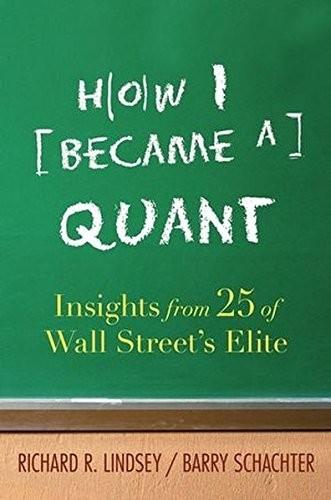
How I Became a Quant: Insights From 25 of Wall Street's Elite
by
Richard R. Lindsey
and
Barry Schachter
Published 30 Jun 2007
I finally began to have a vague idea of what it was these companies were doing. That clearly helped me in subsequent interviews and, at the beginning of 1997, I had the first job offers. The first one was from a commodity trading company’s investment team. They were dead keen on all sorts of time series analysis and pattern recognition methods. They made an offer, but I had to realise that, given the extra expense of living in London, it would have meant that my standard of life would actually go down, rather than up. It really was very low for a job in finance, less than what a teacher is paid in London today. Almost at the same time, I had some meetings with Henrik Neuhaus from Nikko Securities’ European operation, Nikko Europe.

The Patient Will See You Now: The Future of Medicine Is in Your Hands
by
Eric Topol
Published 6 Jan 2015
Another emerging digital solution is the advanced Siri for medical guidance—the emergence of virtual health assistants (VHAs).34,35 AskMD is one of the first Siri-like entries for this concept. A free smartphone app is downloaded, allowing the consumer to enter symptoms, either by typing them in or by voice recognition–embedded software, and tap into its pattern recognition database for feedback. When I visited the Colbert Report, Stephen Colbert had already caught on. He said, “I have a smartphone. Am I a doctor? How can my smartphone tell me about me? Is Siri a doctor?” Then he held his smartphone to his chest and asked “Siri, am I dying?” And Siri responded, “I really can’t say.”
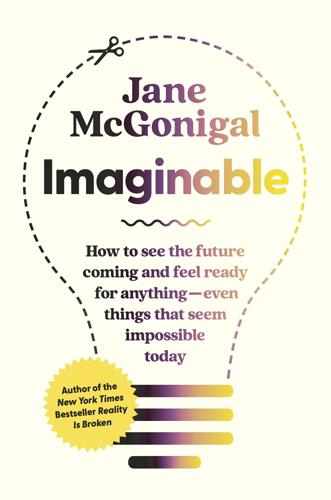
Imaginable: How to See the Future Coming and Feel Ready for Anything―Even Things That Seem Impossible Today
by
Jane McGonigal
Published 22 Mar 2022
The benefit is that in repeatedly encountering things in dreams we’ve never directly experienced or even imagined before, our brains help us get “unstuck” from the specific details of what we’ve lived in the past and think more flexibly, so we are better prepared for whatever strange new things we encounter in the future. Dreams, it may turn out, are an ingenious method of counterbalancing the brain’s other most important hardwired, evolutionary adaptation: the pattern-recognition capacity that leads to normalcy bias, or the expectation that the future will largely be like the present. Normalcy bias, on most days, is helpful. It lets us expend less mental energy trying to figure things out, so we can react faster to predictable events. As long as things continue as normal, normalcy bias works great!
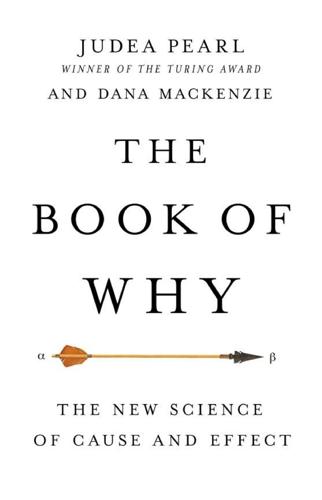
The Book of Why: The New Science of Cause and Effect
by
Judea Pearl
and
Dana Mackenzie
Published 1 Mar 2018
First, structural causal models are a shortcut that works, and there aren’t any competitors around with that miraculous property. Second, they were modeled on Bayesian networks, which in turn were modeled on David Rumelhart’s description of message passing in the brain. It is not too much of a stretch to think that 40,000 years ago, humans co-opted the machinery in their brain that already existed for pattern recognition and started to use it for causal reasoning. Philosophers tend to leave it to psychologists to make statements about how the mind does things, which explains why the questions above were not addressed until quite recently. However, artificial intelligence (AI) researchers could not wait. They aimed to build robots that could communicate with humans about alternate scenarios, credit and blame, responsibility and regret.
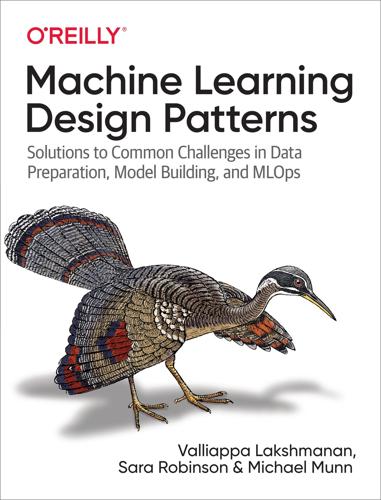
Machine Learning Design Patterns: Solutions to Common Challenges in Data Preparation, Model Building, and MLOps
by
Valliappa Lakshmanan
,
Sara Robinson
and
Michael Munn
Published 31 Oct 2020
The next chapter looks at design patterns related to resilience (to large numbers of requests, spiky traffic, or change management) when placing models into production. 1 It may, of course, not be the case that we can learn the network using gradient descent just because there exists such a neural network (this is why changing the model architecture by adding layers helps—it makes the loss landscape more amenable to SGD). 2 MLPerf v0.7 Training Closed ResNet. Retrieved from www.mlperf.org 23 September 2020, entry 0.7-67. MLPerf name and logo are trademarks. See www.mlperf.org for more information. 3 Jia Deng et al.,“ImageNet: A Large-Scale Hierarchical Image Database,” IEEE Computer Society Conference on Computer Vision and Pattern Recognition (CVPR) (2009): 248–255. 4 For more information, see “CS231n Convolutional Neural Networks for Visual Recognition.” 5 Victor Campos et al., “Distributed training strategies for a computer vision deep learning algorithm on a distributed GPU cluster,” International Conference on Computational Science, ICCS 2017, June 12–14, 2017. 6 Ibid. 7 Jeffrey Dean et al.

The Dream of the Iron Dragon
by
Robert Kroese
Published 6 Dec 2017
They would analyze the sensor data and pick the star system in the Cluster that seemed likeliest to contain a planet capable of supporting human life. Based on that choice, Andrea Luhman would alter her trajectory relative to M-341698, using the star’s gravity to bank toward their destination. That had been the plan, anyway—before Andrea Luhman’s pattern recognition algorithm siezed on the tightly focused microwave transmission repeating the first seventeen numbers of the Fibonacci sequence in an endless loop. Now things had changed, and Lieutenant Michael Carpenter, the man currently overseeing this leg of Andrea Luhman’s voyage, had to decide whether to stick to the plan or take action in response to this new data.
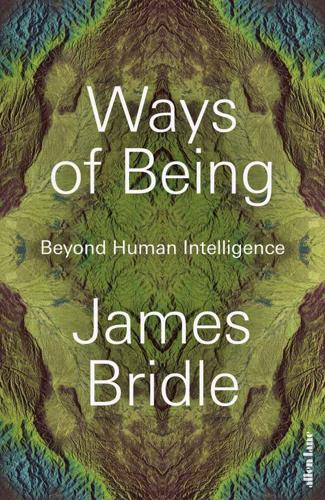
Ways of Being: Beyond Human Intelligence
by
James Bridle
Published 6 Apr 2022
Adamatzky, ‘Robust Soldier Crab Ball Gate’, Complex Systems, 20(2), 15 June 2011; DOI:10.1063/1.3637777. 27. K. Nakajima, H. Hauser, T. Li and R. Pfeifer, ‘Information Processing via Physical Soft Body’, Scientific Reports, 5, 27 May 2015, no.10487; https://doi.org/10.1038/srep10487. 28. C. Fernando and S. Sojakka, ‘Pattern Recognition in a Bucket’, Lecture Notes in Computer Science, September 2003, pp. 588–97; DOI:10.1007/978-3-540-39432-7_63. 29. For more on Lukyanov and the Soviet hydraulic computers, see O. Solovieva, ‘Water Machine Computers’, Science and Life, 4, 2000; https://www.nkj.ru/archive/articles/7033/, and the archives of the Moscow Polytechnic Museum at http://web.archive.org/web/20120328115234/http://rus.polymus.ru/?
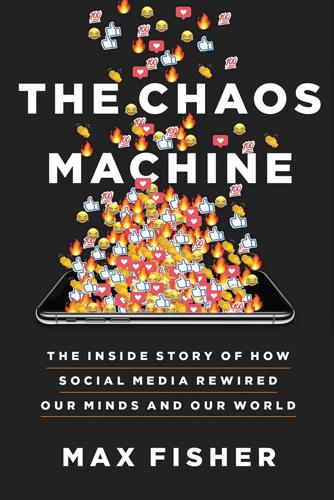
The Chaos Machine: The Inside Story of How Social Media Rewired Our Minds and Our World
by
Max Fisher
Published 5 Sep 2022
The firms, in turn, overwhelmingly funded people who looked like them: in 2018, 98 percent of their investment dollars went to male-led companies. This reflected, Pao had argued, an even more specific bias among tech investors, one favoring not just white men but idealistic contrarians with libertarian politics; the “pattern recognition” espoused by Doerr, who was also Pao’s former mentor. The firms that pick the Valley’s winners and losers, her suit had underscored, enforce this archetype so zealously because they also embody it. Reddit’s leaders, young and progressive, were hardly hostile to such concerns. But the company made it a point of pride to defend the web’s supposed highest value, total free speech, at extremes others wouldn’t.
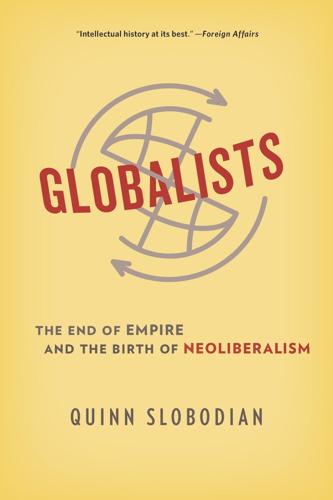
Globalists
by
Quinn Slobodian
Published 16 Mar 2018
In a representative statement from 1963, he claimed, “Man does not know most of the rules on which he acts; and even what we call his intelligence is largely a system of rules which operate on him but which he does not know.”60 This deference to the precognitive or the pre-rational is what separated him from the rational choice and rational expectations models of Chicago School economists, who professed much more faith in the possibility of both formal mathematical modeling and forecasting. As he explained in his Nobel speech, Hayek saw such efforts as not only presumptuous but misleading. The best one could hope for was pattern prediction. Such prediction was already innate to the way we navigate in the world. In 1964 he wrote of “the intuitive capacity of our senses for pattern recognition”—“we see and hear patterns as much as individual events without having to resort to intellectual operations.”61 Appealing like Hoppmann to ethology, or the study of animal behavior, he noted that “experiments with fishes and birds … show that they respond in the same manner to a great variety of shapes which have only some very abstract features in common.”62 This led him to believe that basic reactions involve, not simplicity, but an unwitting abstraction, an innate ability in animals, including the human animal, to recognize complexity without realizing they are doing so.
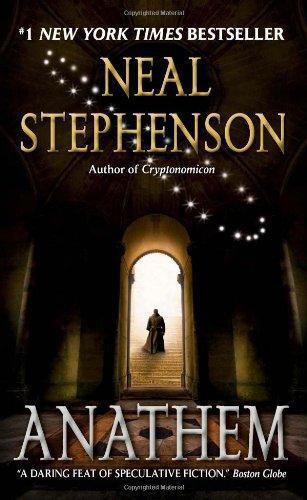
Anathem
by
Neal Stephenson
Published 25 Aug 2009
“You might ask yourself what in your brain enables you to do such things.” “What things?” “Take in some givens one evening at supper. Take in another set of givens now—or one second ago—two seconds ago—but always now! And say that all of them were—are—the same chap, Orolo.” “I don’t see what the big deal is,” I said. “It’s just pattern recognition. Syntactic devices can do it.” “Can they? Give me an example.” “Well…I guess a simple example would be…” I looked around, and happened to notice the contrail of an aerocraft high overhead. “Radar tracking aerocraft in a crowded sky.” “Tell me how it works.” “The antenna spins around. It sends out pulses.
…
The ability of our consciousness to see—not just as a speelycaptor sees (by taking in and recording givens) but identifying things—copper bowls, melodies, faces, beauty, ideas—and making these things available to cognition—that ability, Atamant said, is the ultimate basis of all rational thought. And if consciousness can identify copper-bowlness, why can’t it identify isosceles-triangleness, or Adrakhonic-theoremness?” “What you are describing is nothing more than pattern recognition, and then assigning names to patterns,” Lodoghir said. “So the Syntactics would say,” replied Zh’vaern. “But I would say that you have it backwards. You Procians have a theory—a model—of what consciousness is, and you make all else subordinate to it. Your theory becomes the ground of all possible assertions, and the processes of consciousness are seen as mere phenomena to be explained in the terms of that theory.
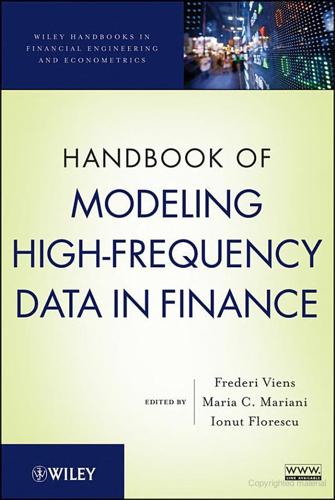
Handbook of Modeling High-Frequency Data in Finance
by
Frederi G. Viens
,
Maria C. Mariani
and
Ionut Florescu
Published 20 Dec 2011
However, these rules were not consistently better than a buy-and-hold strategy in the out-of-sample test periods. At present, many academics, banks, and hedge funds are exploring the application of machine learning methods to find patterns in financial time series. Lo et al. (2000), who used nonparametric kernel regression for technical pattern recognition of a large number of stocks for the period 1962–1996, found that 3.4 Earnings Prediction and Algorithmic Trading 65 technical indicators provide incremental information for investors comparing the unconditional empirical distribution of daily stock returns to the conditional distribution on specific technical indicators such as head and shoulders.
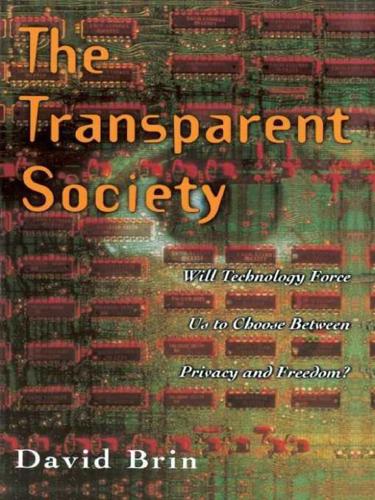
The Transparent Society: Will Technology Force Us to Choose Between Privacy and Freedom?
by
David Brin
Published 1 Jan 1998
For instance, in our projected city of “open access,” citizens will have ten thousand decisions to make. Here are just a few examples: • Since one might conceivably use these devices to follow someone home, should convicted felons be forbidden access to the camera networks? • Might any person order up a search program, using sophisticated pattern-recognition software to scan a throng of passersby and zero in on a specific face? If such “traps” could be laid all over town, a lot of fugitives might be brought to justice. But will individuals ever again be able to seek anonymity in a crowd? Will people respond by wearing masks in public? Or will safety ultimately come when people unleash their own search programs, to alert the watched about their watchers?

Computer: A History of the Information Machine
by
Martin Campbell-Kelly
and
Nathan Ensmenger
Published 29 Jul 2013
This was a radical viewpoint at the time and, to a degree, at odds with the prevailing view of the computer establishment, particularly artificial intelligence (AI) researchers. Many computer scientists were caught up by the dream that AI would soon rival the human intellect in areas such as problem solving, pattern recognition, and chess playing. Soon, they believed, a researcher would be able to assign high-level tasks to a computer. Licklider believed that such views were utopian. In particular, he asserted that computer scientists should develop systems that enabled people to use computers to enhance their everyday work.
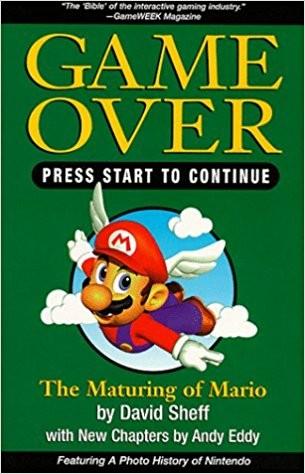
Game Over Press Start to Continue
by
David Sheff
and
Andy Eddy
Published 1 Jan 1993
Video games, on the other hand, stimulate keen responsiveness. Many professionals feel that as a result Nintendo is far healthier. In addition to the active involvement demanded by Nintendo games, some experts feel that the games also require useful kinds of thinking. Video games, they claim, help develop problem-solving abilities, pattern recognition, resource management, logistics, mapping, memory, quick thinking, and reasoned judgments. “Knowing when to fight and when to run applies to other life situations,” says a game maker. The lessons learned during video-game sessions can, he argues, be used in everyday life. Video-game violence is far less harmful than television violence, some professionals maintain, because the blood and gore in video games is less realistic.

The Woman Who Smashed Codes: A True Story of Love, Spies, and the Unlikely Heroine Who Outwitted America's Enemies
by
Jason Fagone
Published 25 Sep 2017
Unbeknownst to the coast guard, groups of British and Polish codebreakers working on the Enigma problem had already discovered methods for working backward from the text to the machine. The Poles had done it with an algebraic approach, the mathematics of permutations, and one of the brilliant Bletchley codebreakers, a linguist and scholar of classical literature named Dilly Knox, had relied more on pattern recognition and a kind of alphabetic grid called a “rod square.” But the coast guard didn’t know about these approaches, and so, working in isolation, the codebreakers had to grope toward their own method. They poked and prodded and turned the wheels; they wrote alphabets on sliding strips of paper and moved the strips against one another, thinking.
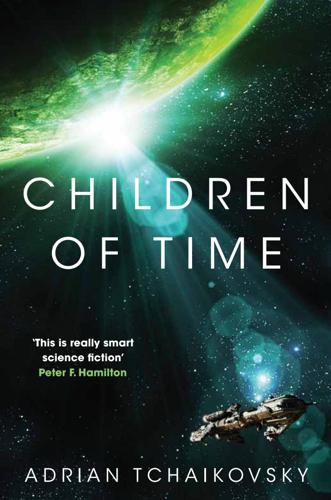
Children of Time
by
Adrian Tchaikovsky
Published 31 May 2015
Holsten was vaguely aware of Vitas and Karst hovering in the background, impatient to get on with talking about the offensive. There was no third round of the test. Instead they got another blast of the maddeningly near-to-Imperial C that Holsten had seen before. He analysed it swiftly, passing it through his decoders and pattern-recognition functions. It seemed simpler than before, and with more repeated patterns. The phrase came to him, like talking to a child, and he experienced another of those vertiginous moments, wondering who or what it was that was speaking, far out there. Kern, surely? But Kern made strange – stranger – by the curdling effects of time and distance.

The Zero Marginal Cost Society: The Internet of Things, the Collaborative Commons, and the Eclipse of Capitalism
by
Jeremy Rifkin
Published 31 Mar 2014
Using eDiscovery software, Herr found only 60 percent accuracy when attorneys were doing the research, leading him to gripe: “Think about how much money had been spent to be slightly better than a coin toss.”35 Very few professional skills are being spared the long arm of IT and Big Data–crunching by algorithms. Knowledge workers of every stripe and variety—radiologists, accountants, middle managers, graphic designers, and even marketers—are already feeling the heat as pattern-recognition software begins to penetrate every professional field. Mike McCready is the head of a startup company called Music Xray, a firm that uses Big Data and algorithms to identify potential musical hits. The company, which has secured recording contracts for more than 5,000 artists in less than three years, uses sophisticated software to compare the structure of a song to songs previously recorded to assess its potential to break out and hit the charts.

The Sovereign Individual: How to Survive and Thrive During the Collapse of the Welfare State
by
James Dale Davidson
and
William Rees-Mogg
Published 3 Feb 1997
Rapidly increasing computational power has already brought forth a number of primitive applications of voice recognition, such as hands-free telephones and computers that perform mathematical computations following verbal instructions. Computers that convert speech to text were already being marketed in late 1996 as we write. As pattern-recognition capabilities improve, computers linked to voice synthesizers will operate through networks to perform numerous functions formerly undertaken by humans employed as telephone operators, secretaries, travel agents, administrative assistants, chess champions, claims processors, composers, bond traders, cyberwar specialists, weapons analysts, or even street-smart flirts who answer the telephones on 900 calls.
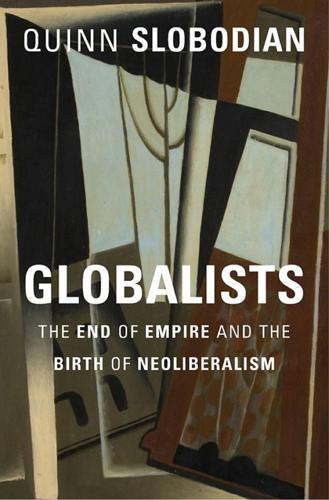
Globalists: The End of Empire and the Birth of Neoliberalism
by
Quinn Slobodian
Published 16 Mar 2018
In a representative statement from 1963, he claimed, “Man does not know most of the rules on which he acts; and even what we call his intelligence is largely a system of rules which operate on him but which he does not know.” 60 This deference to the precognitive or the pre-rational is what separated him from the rational choice and rational expectations models of Chicago School economists, who professed much more faith in the 230 GLOBALISTS possibility of both formal mathematical modeling and forecasting. As he explained in his Nobel speech, Hayek saw such efforts as not only presumptuous but misleading. The best one could hope for was pattern prediction. Such prediction was already innate to the way we navigate in the world. In 1964 he wrote of “the intuitive capacity of our senses for pattern recognition”—“we see and hear patterns as much as individual events without having to resort to intellectual operations.” 61 Appealing like Hoppmann to ethology, or the study of animal behavior, he noted that “experiments with fishes and birds . . . show that they respond in the same manner to a great variety of shapes which have only some very abstract features in common.” 62 This led him to believe that basic reactions involve, not simplicity, but an unwitting abstraction, an innate ability in animals, including the human animal, to recognize complexity without realizing they are doing so.

Consumed: How Markets Corrupt Children, Infantilize Adults, and Swallow Citizens Whole
by
Benjamin R. Barber
Published 1 Jan 2007
.: Harvest House Publishers, 2005); Benson, ed., I Shop, Therefore I Am; Carolyn Wesson, Women Who Shop Too Much: Overcoming the Urge to Splurge (New York: St. Martin’s Press, 1990), and Olivia Mellan, Overcoming Overspending: A Winning Plan for Spenders and Their Partners (New York: Walker & Co., 1995). William Gibson’s Pattern Recognition (New York: G. P. Putnam’s Sons, 2003) and Max Barry’s Jennifer Government: A Novel (New York: Doubleday, 2003) offer two provocative fictional accounts of shopping addiction in a totalizing commercial society. 55. See www.proctor.org and www.addictionrecov.org/index2.htm. 56. Look for addiction under Yahoo!

Army of None: Autonomous Weapons and the Future of War
by
Paul Scharre
Published 23 Apr 2018
“Deep neural networks are easily fooled: High confidence predictions for unrecognizable images,” Evolving Artificial Intelligence Laboratory, University of Wyoming, http://www.evolvingai.org/fooling. For more, see Nguyen A, Yosinski J, Clune J (2015) “Deep neural networks are easily fooled: High confidence predictions for unrecognizable images,” Computer Vision and Pattern Recognition (CVPR ‘15), IEEE, 2015. 182 specific internal structure of the network: Szegedy et al., “Intriguing properties of neural networks.” 182 “huge, weird, alien world of imagery”: Jeff Clune, interview, September 28, 2016. 182 surreptitiously embedded into normal images: Ibid. 183 “hidden exploit”: Ibid. 183 linear methods to interpret data: Ian J.

Robot Rules: Regulating Artificial Intelligence
by
Jacob Turner
Published 29 Oct 2018
To better understand and treat AI bias , we need to avoid anthropomorphisation and focus more on data science. 3.2 Why Might We Need Laws Against Bias ? The immediate source of AI bias is often the data fed into a system. Machine learning, currently the dominant form of AI, recognises patterns within data and then takes decisions based on such pattern recognition. If the input data is skewed in some way, then the likelihood is that the patterns generated will be similarly flawed. Bias arising from such data can be summed up with the phrase: “you are what you eat”.67 3.2.1 Poor Selection of Data Skewed data sets occur when there is in theory enough information available to present a sufficient picture of the relevant environment, but human operators select an unrepresentative sample.

Model Thinker: What You Need to Know to Make Data Work for You
by
Scott E. Page
Published 27 Nov 2018
“Experimental Study of Inequality and Unpredictability in an Artificial Cultural Market.” Science 311: 854–856. Samuelson, Paul. 1964. “Proof That Properly Anticipated Prices Fluctuate Randomly.” Industrial Management Review 6: 41–49. Schiller, Robert. 2004. Irrational Exuberance. 2nd ed. Princeton, NJ: Princeton University Press. Schrodt, Philip. 1998. “Pattern Recognition of International Crises Using Hidden Markov Models.” In Non-Linear Models and Methods in Political Science, ed. Diana Richards. Ann Arbor: University of Michigan Press. Schwartz, Christine R., and Robert D. Mare. 2004. “Trends in Educational Assortative Marriage from 1940 to 2003.” Demography 42, no. 4: 621–646.
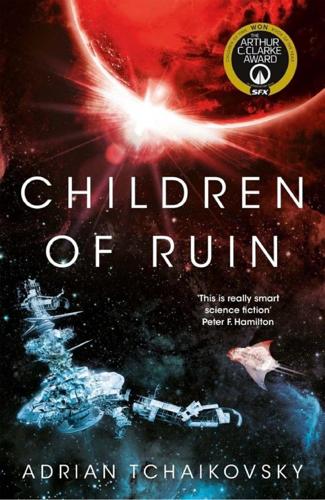
Children of Ruin
by
Adrian Tchaikovsky
Published 13 May 2019
They like their ranks and columns and their counting from one side to the other, from top to bottom. Such thinking! How do they ever create anything? And yet they created this, surely. It is a city for humans. Where entryways have survived, they are scaled for a human’s huge frame, and all at ground level. And ruined, yes, and yet . . . Fabian’s pattern-recognition centres are firing, telling him what he’s seeing is wrong. He guides the drone lower, repurposing old skills because he is a behavioural scientist, not a pilot, and he got rid of any relevant Understandings long ago to free up mental space for more germane knowledge. If he had only known . . .

Your Computer Is on Fire
by
Thomas S. Mullaney
,
Benjamin Peters
,
Mar Hicks
and
Kavita Philip
Published 9 Mar 2021
To be sure, the research in this area has advanced eons beyond where it was in 2010 (when the conversation took place), but the fundamental problem of how to make a computer “know” anything (or whether this is possible at all) remains. What has improved is the ability of computers, through algorithms and AI, to make good guesses through pattern recognition and learning from a database of material. Yet when you catch a computer scientist or a member of industry in an unguarded moment, you may learn that: • All the tools and techniques described above are subject to failure due to either being overbroad, blunt, or unable to reliably identify nuanced or ambiguous material; • They are also subject to and largely a representation of the quality and reliability of the source material used to train the algorithms and AI, and the inputs that have informed the tools (that is, the work of humans on training sets).
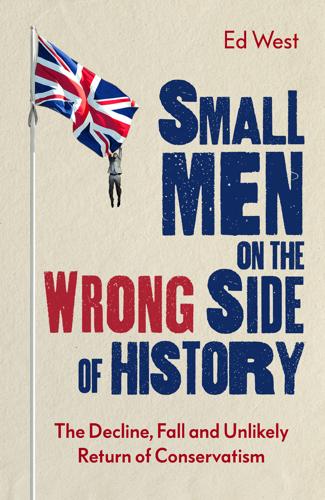
Small Men on the Wrong Side of History: The Decline, Fall and Unlikely Return of Conservatism
by
Ed West
Published 19 Mar 2020
Stereotype threat explains that there are fewer women than men at the top of maths and science-based professions because they are put off by the perception that men are better, an idea so comforting that one 1995 paper has been cited over five thousand times. Yet it has completely failed to replicate. In contrast, the less hopeful idea of stereotype accuracy, once assumed by the psychology profession to be largely wrong, has in recent years been shown to be resilient and accurate.40 Humans are very good at pattern recognition: we wouldn’t have made it this far if we weren’t. The same goes for ‘implicit bias’, the idea that people’s unconscious prejudices against minorities can actually have a negative effect on their outcomes. ‘Early claims about their power and immutability have proven unjustified,’ which is hardly surprising when it’s basically hexing; today, vast amounts are spent by corporations and government agencies sniffing implicit bias out, despite there being no evidence it actually exists in a meaningful way.41 If high-status progressives believe in such fairy tales, it is little surprise that some intelligent people begin to feel that public debate is a fantasy set in the Matrix.
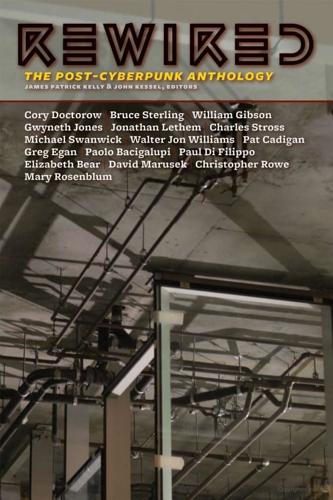
Rewired: The Post-Cyberpunk Anthology
by
James Patrick Kelly
and
John Kessel
Published 30 Sep 2007
Every smart surface — from store windows to sunglasses, from taxi rooftop displays to billboards, from employee nametags to vending machines — was a camera that would track him in his dash across town to the Paramount Theater. Illicitly tapping into all these sources, utilizing common yet sophisticated pattern recognition, sampling and extrapolative software, Dagny would never lose sight of her quarry. Bash might as well have had cameras implanted in his eyeballs. Out on Mass Ave, Bash faced no interception from alarmed citizens. Apparently the false security warning had been broadcast only in Killian Court.
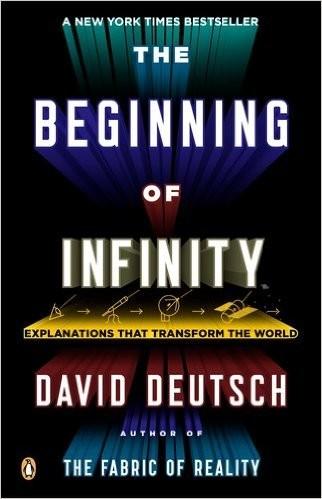
The Beginning of Infinity: Explanations That Transform the World
by
David Deutsch
Published 30 Jun 2011
By the way, some abilities of humans that are commonly included in that constellation associated with general-purpose intelligence do not belong in it. One of them is self-awareness – as evidenced by such tests as recognizing oneself in a mirror. Some people are unaccountably impressed when various animals are shown to have that ability. But there is nothing mysterious about it: a simple pattern-recognition program would confer it on a computer. The same is true of tool use, the use of language for signalling (though not for conversation in the Turing-test sense), and various emotional responses (though not the associated qualia). At the present state of the field, a useful rule of thumb is: if it can already be programmed, it has nothing to do with intelligence in Turing’s sense.

Debtor Nation: The History of America in Red Ink (Politics and Society in Modern America)
by
Louis Hyman
Published 3 Jan 2011
These borrowers, now healthy and employed, could actually be good candidates for credit, despite their poor repayment histories. Still, while some borrowers had fallen on hard times, others were simply unable to manage their finances, moving in and out of bankruptcy multiple times. These borrowers would always be a credit risk. Differentiating that heterogeneous risk would be the source of all subprime profits. Pattern recognition in these models grew more complex, aggregating data from a variety of sources. New transaction models examined what a customer purchased, and based on that data, predicted bankruptcy. Many cash advances late in the month, for instance, could indicate a borrower was running out of money before payday.
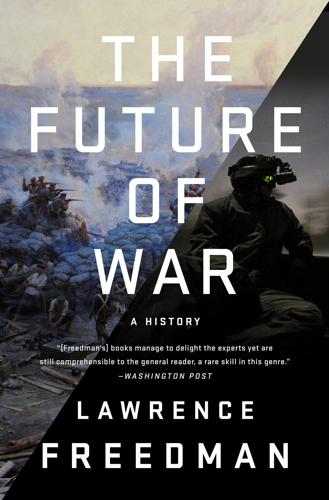
The Future of War
by
Lawrence Freedman
Published 9 Oct 2017
‘A line of such robots spaced twenty metres apart might be deployed to move at fifteen kilometres per hour through a jungle and destroy all men encountered there’. Within ‘a few years’ men would ‘cease to be valued in battle’. They would complicate matters because they would lack comparable ‘information storage, decision-making, sensory input and pattern-recognition’. The human role was likely to be to ‘stand helplessly by as a struggle rages between robot armies and navies, and air and rocket forces’.9 In the first article to talk of ‘cyberwars’, published in 1987, robots dominated the scene. They were fearless and irresistible, pushing away any poor humans sent to confront them.

MacroWikinomics: Rebooting Business and the World
by
Don Tapscott
and
Anthony D. Williams
Published 28 Sep 2010
O’Donnell notes: “Institutions and parts of institutions that go on thinking they’re in the youth camp business will increasingly be seen as failing at their core mission.” James J. O’Donnell, “To Youth Camp: A Long Farewell,” EDUCAUSE Review, vol. 36, no. 6 (November/December 2001). Chapter 9 1. A project like Galaxy Zoo requires using actual people instead of a computer algorithm, Schawinski explains, because computers aren’t very good at pattern recognition. Humans, on the other hand, are exceptionally good at picking out different patterns and shapes, such as being able to distinguish between people’s faces at a quick glance, he notes. The same turns out to be true when it comes to distinguishing different types of galaxies. 2. The fact that ordinary people are getting involved in science has other benefits as well.

Turing's Cathedral
by
George Dyson
Published 6 Mar 2012
“Toto,” said Dorothy in The Wizard of Oz, “I’ve a feeling we’re not in Kansas anymore.” What the Americans termed “artificial intelligence” the British termed “mechanical intelligence,” a designation that Alan Turing considered more precise. We began by observing intelligent behavior (such as language, vision, goal-seeking, and pattern-recognition) in organisms, and struggled to reproduce this behavior by encoding it into logically deterministic machines. We knew from the beginning that this logical, intelligent behavior evident in organisms was the result of fundamentally statistical, probabilistic processes, but we ignored that (or left the details to the biologists), while building “models” of intelligence—with mixed success.

2312
by
Kim Stanley Robinson
Published 22 May 2012
She saw how much of their work involved finding databases and sifting through them, trying to formulate questions that their data might hold answers to. Their work was as invisible as the computations that kept all the spaceships and terraria on course in their woven trajectories, with all their Aldrin cycles and Homan paths and gravity lanes defined like threads on a vast circular spiraling loom. Data analysis, pattern recognition; a big part of the work was done by their qubes and AIs. The rest was accomplished by a bunch of people behaving as Genette was now, sitting there as she approached from the beach, mycrofting spiderlike in a raised chair that looked weirdly like a toddler’s high chair at a restaurant. Several of them were there working together, by the terrace railing overlooking one of the sex pools.
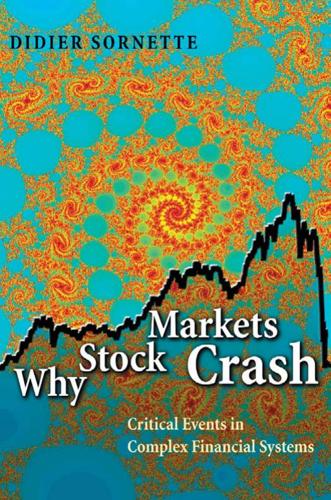
Why Stock Markets Crash: Critical Events in Complex Financial Systems
by
Didier Sornette
Published 18 Nov 2002
Some evidence in support of stock market bubbles, Financial Analysts Journal 46, 71–73. 343. Richardson, L. F. (1961). The problem of contiguity: An appendix of statistics of deadly quarrels, General Systems Yearbook 6, 139–187. 344. Richebacher, K. (2000/2001). The Richebacher Letter, August 2000 and March 2001, the Fleet Street group, Baltimore, MD. 345. Ripley, B. D. (1996). Pattern Recognition and Neural Networks (Cambridge University Press, Cambridge, U.K.). 346. Roberts, J. C. and Castore, C. H. (1972). The effects of conformity, information, and confidence upon subjects’ willingness to take risk following a group discussion, Organizational Behavior & Human Performance 8, 384–394. 347.
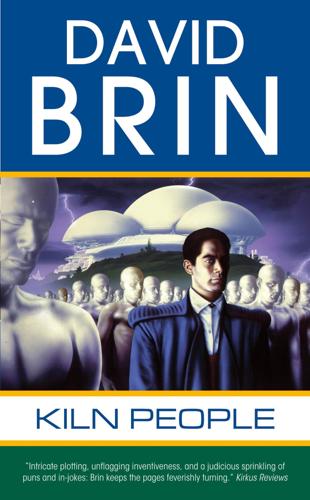
Kiln People
by
David Brin
Published 15 Jan 2002
It took only a few minutes to get a feel for the scout gear and adjust the camouflage settings to background light levels. Like a squid or octopus, the light-sensitive skin rippled to match whatever lay on the other side of me. A blurry rendition, to be sure. Not true invisibility, but a much better version than you can buy nowadays at the Hobby Store. Good enough to fool most edge-and-movement pattern recognition systems -- digital, organic, or clay. Yup. Even after the Big Deregulation, the guvvies still manage to spend our tax dollars developing cool things. With the sensors of my scout uniform set to maximum wariness, I set out for the site where Chen had spotted those auditors. Maybe I'd try to eavesdrop for a while and find out why they suspected that stolen military hardware was used in my assassination.
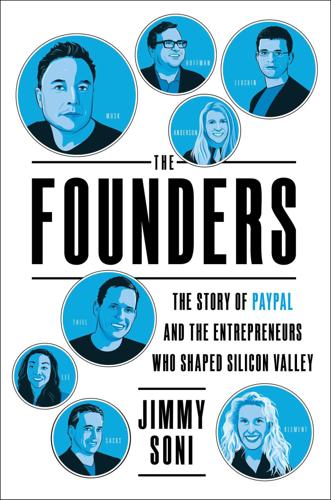
The Founders: The Story of Paypal and the Entrepreneurs Who Shaped Silicon Valley
by
Jimmy Soni
Published 22 Feb 2022
Manually searching for wrongdoing was a nonstarter. So Levchin, Frezza, and others began studying more sophisticated patterns—suspicious zip codes, IP addresses, accounts hitting transaction limits, or other tells—that cut across varieties of PayPal’s fraud landscape. As Levchin, Frezza, and others dove into pattern recognition, they wondered if the activity on the PayPal systems could be depicted visually as opposed to numerically. So the team gave it a shot, building the equivalent of an echocardiogram for the company—a visual representation of money flows. On a computer monitor, the picture showed a series of lines representing the flow of money, with the thickness of each line corresponding to the size of a given transaction.
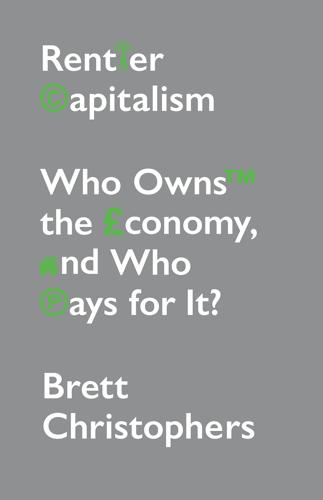
Rentier Capitalism: Who Owns the Economy, and Who Pays for It?
by
Brett Christophers
Published 17 Nov 2020
The centrality to digital-platform business models of the extraction, analysis and utilization of data is crucial to the scale economies they enjoy. As US Senator Mark Warner, drawing on the work of the legal scholar Frank Pasquale, wrote in an influential white paper on social-media and technology firms, ‘data exhibits economies of scale, enabling more effective data analysis, computationally intensive pattern recognition and computational learning with greater collected data. As a consequence, firms with large pre-existing data sets have potentially insuperable competitive advantages over new entrants and nascent firms.’50 The UK’s Competition & Markets Authority (CMA) agrees. In its interim study of the UK online platforms and digital advertising market, published in December 2019, it noted that Facebook and Google’s control of unparalleled volumes of data gives them ‘significant competitive advantages’, and that potential challenger platforms’ inferior access to data likely represents ‘a significant barrier to entry’.51 Third, alongside network effects and economies of scale, significant economies of scope also serve to entrench market dominance, insofar as they confer disproportionate returns to scale – in this case, by enabling companies to use scale in one type of activity to secure advantages (such as lower costs or higher service quality) in another (hence, ‘scope’).
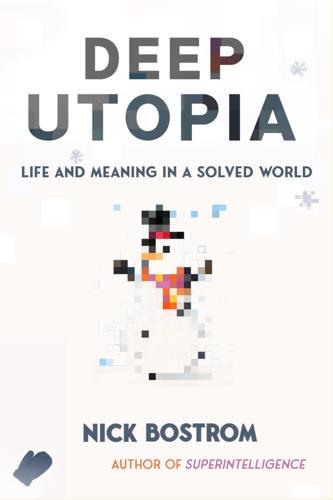
Deep Utopia: Life and Meaning in a Solved World
by
Nick Bostrom
Published 26 Mar 2024
For large or complicated messages, such as when a professor of organic chemistry wishes to bring their students up to their own level of expertise, this process can take years—and even then the result is all too often disappointing.105 So what would it take to shortcut this process of communication and learning to the point where we could “download” expertise in organic chemistry or any other subject directly into our brains, without having to spend years studying it? Importantly, we want to have the knowledge fully integrated in our brains, the same way we would if we had learned the subject the traditional way, so that we gain the same ability to use it intuitively and associatively and so that it contributes to our general pattern-recognition abilities. This is different from merely having the information deposited in some intracranial cybernetic memory capsule that we’d then have to serially query in essentially the same way we currently use a search engine (which might save us having to use a keyboard and a screen but would not otherwise make us any more of an expert in organic chemistry than any random person who has access to the internet).
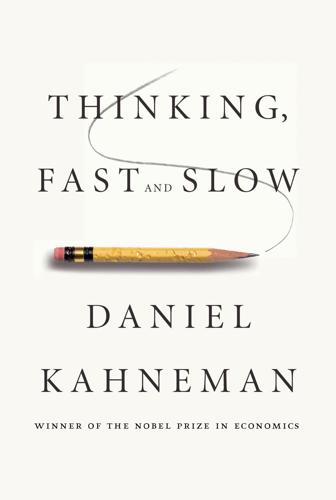
Thinking, Fast and Slow
by
Daniel Kahneman
Published 24 Oct 2011
The process involves both System 1 and System 2. In the first phase, a tentative plan comes to mind by an automatic function of associative memory—System 1. The next phase is a deliberate process in which the plan is mentally simulated to check if it will work—an operation of System 2. The model of intuitive decision making as pattern recognition develops ideas presented some time ago by Herbert Simon, perhaps the only scholar who is recognized and admired as a hero and founding figure by all the competing clans and tribes in the study of decision making. I quoted Herbert Simon’s definition of intuition in the introduction, but it will make more sense when I repeat it now: “The situation has provided a cue; this cue has given the expert access to information stored in memory, and the information provides the answer.
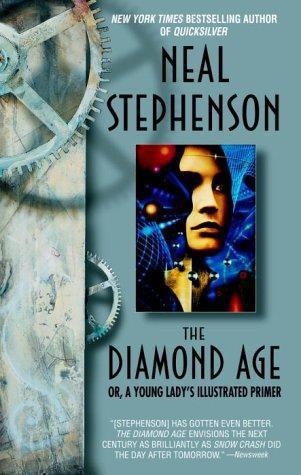
The Diamond Age
by
Neal Stephenson
Published 2 May 2000
The Cathay Hotel stood in the middle of the Bund, at the intersection with Nanjing Road, the Rodeo Drive of the Far East. As far as Miranda could see-all the way to Nanjing, maybe-it was lined with Western and Nipponese boutiques and department stores, and the airspace above the street was besprent with almond-size aerostats, each with its own cine camera and pattern-recognition ware to watch for suspicious-looking congregations of young men who might be Fist cells. Like all of the other big Western buildings on the waterfront, the Cathay was outlined in white light, which was probably a good thing because otherwise it wouldn't have looked like much. The exterior was bleak and dingy in the daytime.

Thank You for Being Late: An Optimist's Guide to Thriving in the Age of Accelerations
by
Thomas L. Friedman
Published 22 Nov 2016
“The popular perception of artificial intelligence and cognitive computing is far from reality—this whole idea of sentient computer systems that become conscious and aware and take their own direction by what they learn,” said Arvind Krishna, senior vice president and director of IBM Research. What we can do is teach computers about narrow domains—such as oncology, geology, geography—by writing algorithms that enable them to “learn” about each of these disciplines through multiple and overlapping systems of pattern recognition. “But if a computer is built to understand oncology, that is the only thing it can do—and it can keep learning as new literature comes out in the narrow domain that it was designed for. But the idea that it would then suddenly start designing cars is zero.” By June 2016, Watson was already being used by fifteen of the world’s leading cancer institutes, had ingested more than twelve million pages of medical articles, three hundred medical journals, two hundred textbooks, and tens of millions of patient records, and that number is increasing every day.
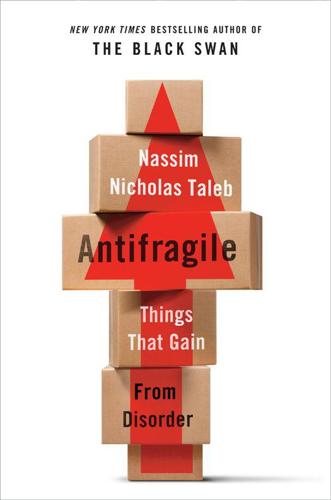
Antifragile: Things That Gain From Disorder
by
Nassim Nicholas Taleb
Published 27 Nov 2012
Someone who escaped the conflation problem is Jim Simons, the great mathematician who made a fortune building a huge machine to transact across markets. It replicates the buying and selling methods of these sub–blue collar people and has more statistical significance than anyone on planet Earth. He claims to never hire economists and finance people, just physicists and mathematicians, those involved in pattern recognition accessing the internal logic of things, without theorizing. Nor does he ever listen to economists or read their reports. The great economist Ariel Rubinstein gets the green lumber fallacy—it requires a great deal of intellect and honesty to see things that way. Rubinstein is one of the leaders in the field of game theory, which consists in thought experiments; he is also the greatest expert in cafés for thinking and writing across the planet.

This Is Service Design Doing: Applying Service Design Thinking in the Real World: A Practitioners' Handbook
by
Marc Stickdorn
,
Markus Edgar Hormess
,
Adam Lawrence
and
Jakob Schneider
Published 12 Jan 2018
The foundations of abduction are laid when you formulate your challenge – specifically, the value you want to create for your customer, or for the world. For most people, it is best done in a “low-tech,” small-team context with sticky notes stuck to a wall. This large working space is useful, even necessary, because abduction involves pattern recognition. These are the first steps: summarize your data, spread it out and digest it, interpret it, and find out what appeals to you and how everything would make sense. This is where insights come from that allow you to take a fresh point of view that is suggested by the data. Abductive thinking is intuitive – intuition combined with data from research.

Never Bet Against Occam: Mast Cell Activation Disease and the Modern Epidemics of Chronic Illness and Medical Complexity
by
Lawrence B. Afrin M. D.
,
Kendra Neilsen Myles
and
Kristi Posival
Published 15 Jan 2016
Good thing or bad thing, though, the fact is that most physicians are very set in their ways, so when they come out of medical training “knowing” that mast cell disease is rare, and when they see patients with an established diagnosis of mast cell disease only very rarely, they will continue to think the disease is rare and thus warrants far less attention than common diseases (even if the truth of the matter, as they will eventually learn, is that mast cell disease underlies many of the common (if idiopathic) diseases they routinely manage). Need a Strike Four? The very heterogeneity of mast cell disease certainly qualifies. Diagnosis is an exercise in pattern recognition. How can a physician recognize a disease that can present with virtually any complaints, a vast array of physical exam findings, and requires esoteric lab testing for confirmation of diagnosis? Thus, most of the time the mast cell disease patient strikes out in trying to find effective local medical care.
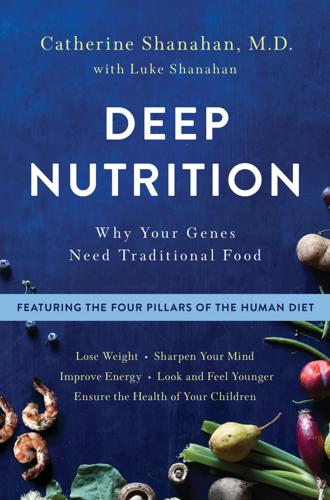
Deep Nutrition: Why Your Genes Need Traditional Food
by
Catherine Shanahan M. D.
Published 2 Jan 2017
OLD-FASHIONED BREAKFAST: FRESH, LOCAL, AND UNPROCESSED This milk is rich in nutrients bioconcentrated by the goat, which is free to graze on the choicest shoots growing over vast plains of mineral-rich soil. Many small farmers in the United States still raise their animals on pasture, offering the customer a healthy alternative to milk produced by grain-fed animals. The preference for beauty (in our own and other’s faces) emerges as a result of the instinctive pattern recognition process that I will describe in detail in Chapter 4. For now, it is crucial to understand that what we consider to be beautiful also serves a survival function. As unfair as it seems, less attractive people have more health problems.58 All congenital syndromes that distort facial architecture are associated with impairments in physiologic functions like breathing, talking, hearing, walking, and so on.

Empire of AI: Dreams and Nightmares in Sam Altman's OpenAI
by
Karen Hao
Published 19 May 2025
GO TO NOTE REFERENCE IN TEXT Ramesh and other researchers: Alex Nichol, Prafulla Dhariwal, Aditya Ramesh, Pranav Shyam, Pamela Mishkin, Bob McGrew et al., “GLIDE: Towards Photorealistic Image Generation and Editing with Text-Guided Diffusion Models,” in Proceedings of the 39th International Conference on Machine Learning (2022): 16784–804, proceedings.mlr.press/v162/nichol22a.html. GO TO NOTE REFERENCE IN TEXT Researchers outside of OpenAI: Robin Rombach, Andreas Blattmann, Dominik Lorenz, Patrick Esser, and Björn Ommer, “High-Resolution Image Synthesis with Latent Diffusion Models,” in 2022 IEEE/CVF Conference on Computer Vision and Pattern Recognition (2022): 10674–85, doi.ieeecomputersociety.org/10.1109/CVPR52688.2022.01042. GO TO NOTE REFERENCE IN TEXT 256 Nvidia A100s: Author interview with Björn Ommer, March 2024. GO TO NOTE REFERENCE IN TEXT With DALL-E 2’s remarkable: Fraser Kelton and Nabeel Hyatt, hosts, Hallway Chat, podcast, “Launch Stories of ChatGPT,” December 2, 2023, hallwaychat.co/launch-stories-of-chatgpt.

The Pot Book: A Complete Guide to Cannabis
by
Julie Holland
Published 22 Sep 2010
And while regular use can dampen the immediately felt impact of pot’s invitation to exchange promise for process, this doesn’t mean the drug isn’t making its very presence known. Take the work of two of Hollywood’s most famous daily pot smokers, the late Robert Altman and Oliver Stone. Altman’s movies imitate the stoned mind wandering from synchronicity to synchronicity, contenting themselves with pattern recognition and requiring their narrative-bound audiences to do the same. Stone’s, on the other hand, bring us with him into the paranoid scenarios of the stoned mind daring itself into increasingly nightmarish territory—as if the ability to play in these regions somehow purges them of their power. Given his almost obsessive return to this dark side, the paranoid vision seems only to be gaining more hold over his awareness.
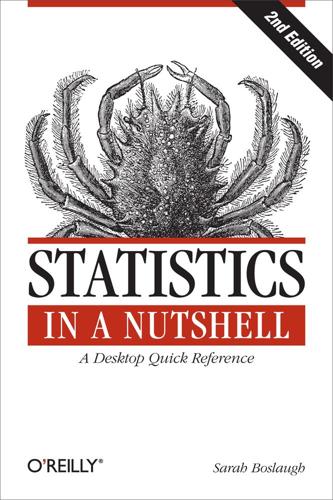
Statistics in a Nutshell
by
Sarah Boslaugh
Published 10 Nov 2012
In this situation, it is incorrect to assert a causal relationship, even if one variable is labeled dependent on an independent variable. Training and test data Has a model been developed using one data set and then tested using the same data set? If so, is there any acknowledgement that the model might not work as well on a different data set? This problem occurs frequently in pattern recognition applications. Operationalization Is the variable selected to measure some particular phenomenon actually measuring it? If not, does the operationalization of the phenomenon seem reasonable? This is a common problem in psychology, when latent variables (such as intelligence) are measured indirectly by performance on different cognitive tasks.
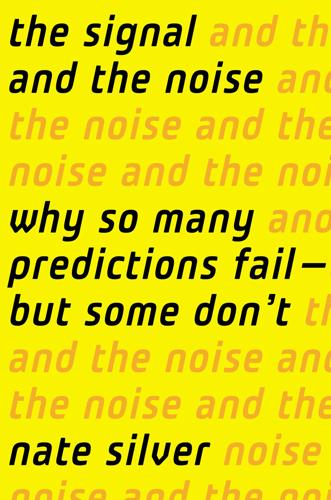
The Signal and the Noise: Why So Many Predictions Fail-But Some Don't
by
Nate Silver
Published 31 Aug 2012
The slow and steady march of human evolution has fallen out of step with technological progress: evolution occurs on millennial time scales, whereas processing power doubles roughly every other year. Our ancestors who lived in caves would have found it advantageous to have very strong, perhaps almost hyperactive pattern-recognition skills—to be able to identify in a split-second whether that rustling in the leaves over yonder was caused by the wind or by an encroaching grizzly bear. Nowadays, in a fast-paced world awash in numbers and statistics, those same tendencies can get us into trouble: when presented with a series of random numbers, we see patterns where there aren’t any.
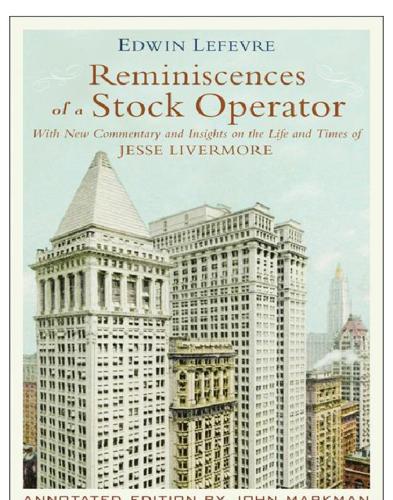
Reminiscences of a Stock Operator
by
Edwin Lefèvre
and
William J. O'Neil
Published 14 May 1923
The key is immersion, or repeated concentrated exposure. For someone who doesn’t watch the markets every day, a hunch about a stock would be random and a less-than-50/50 bet. For someone who watches stock movements tick by tick, day after day, as a profession, a hunch about a stock emerges from a deep level of pattern recognition. In this case, then, what Livermore calls following through on a “hunch” was actually a matter of acting intuitively and decisively based on his experience after observing UP quotes at the boardwalk brokerage. It was an important step in his development as a major Wall Street operator. 6.3 In the predawn mist of Wednesday, April 18, 1906, a massive rupture in the San Andreas Fault rocked San Francisco with a 8.3 magnitude earthquake that lasted 42 seconds.

Future Crimes: Everything Is Connected, Everyone Is Vulnerable and What We Can Do About It
by
Marc Goodman
Published 24 Feb 2015
As narrow AI capabilities grow, we are seeing algorithms play increasingly active roles throughout more and more businesses and professions. In medicine, “computer-aided diagnostics” are helping physicians to interpret X-ray, MRI, and ultrasound results much more rapidly, using algorithms and highly complex pattern-recognition techniques to flag abnormal test results. The legendary Silicon Valley entrepreneur and investor Vinod Khosla has referred to this as the age of Dr. A.—Dr. Algorithm—hailing a revolution in health care in which we won’t need the average human doctor, instead finding much better and cheaper care for 90–99 percent of our medical needs through AI, big data, and improved medical software and diagnostics.
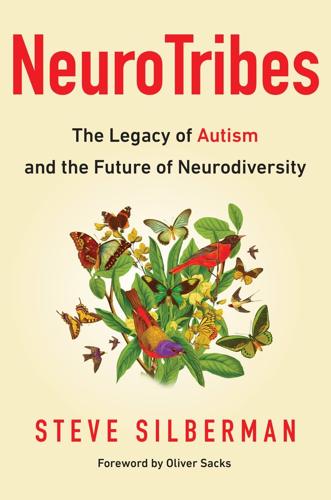
NeuroTribes: The Legacy of Autism and the Future of Neurodiversity
by
Steve Silberman
Published 24 Aug 2015
At no point did Shore compel Leo to do something he didn’t want to do. If Leo jumped up and hopped up and down for a minute because he got excited, that was okay. Shore acted like there was all the time in the world. The little tasks he gave Leo quickly became self-rewarding, because they played to a classic autistic strength: pattern recognition. Together, they turned the eighty-eight keys on the keyboard into a map that Leo could then explore by playing the notes. Shannon had never seen anyone “get” Leo so quickly. (Shore confesses that he finds neurotypical kids harder to teach, because he doesn’t understand how their minds work.)

Patriot Games
by
Tom Clancy
Published 2 Jan 1987
Regardless of the number of the people at the camp, the number of huts being used went up by one, for a period of three days. Ryan swore when he saw that the pattern didn't quite hold. Twice in two years the number didn't change. And what does that mean? "You are in a maze of twisty passages, all alike," Jack murmured to himself. It was a line from one of his computer games. Pattern- recognition was not one of his strong points. Jack left the room to get a can of Coke, but more to clear his head. He was back in five minutes. He pulled the occupancy graphs from the three "unknown" camps to compare the respective levels of activity. What he really needed to do was to make Xerox copies of the graphs, but CIA had strict rules on the use of copying machines.
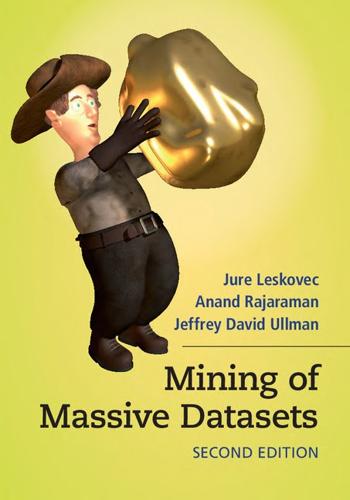
Mining of Massive Datasets
by
Jure Leskovec
,
Anand Rajaraman
and
Jeffrey David Ullman
Published 13 Nov 2014
Conf. on Computational Statistics (2010), pp. 177–187, Springer. [3]L. Bottou, “Stochastic gradient tricks, neural networks,” in Tricks of the Trade, Reloaded, pp. 430–445, edited by G. Montavon, G.B. Orr and K.-R. Mueller, Lecture Notes in Computer Science (LNCS 7700), Springer, 2012. [4]C.J.C. Burges, “A tutorial on support vector machines for pattern recognition,” Data Mining and Knowledge Discovery 2 (1998), pp. 121–167. [5]N. Cristianini and J. Shawe-Taylor, An Introduction to Support Vector Machines and Other Kernel-Based Learning Methods, Cambridge University Press, 2000. [6]C. Cortes and V.N. Vapnik, “Support-vector networks,” Machine Learning 20 (1995), pp. 273–297

The Outlaw Ocean: Journeys Across the Last Untamed Frontier
by
Ian Urbina
Published 19 Aug 2019
Many of the new rules introduced by the Thai government to combat sea slavery on boats in the South China Sea focused on bigger ships because new rules would be too financially burdensome to the midsized ones, even though the midsized ships were far more numerous and more prone to trafficking. In fact, this tendency toward solutions that just ever so barely missed their target was so common that it became tough not to wonder whether it was intentional. While some people might dismiss this speculation as conspiracy theory, I see it more as pattern recognition. I also wondered whether this slick practice was just the sort of sleight of hand that industries pay high-priced consultants to provide. Either way, the near misses and almost fixes were only allowed to continue thanks to lawmakers with short attention spans and a general public prone to the sort of dissipated outrage I’d found in New Zealand
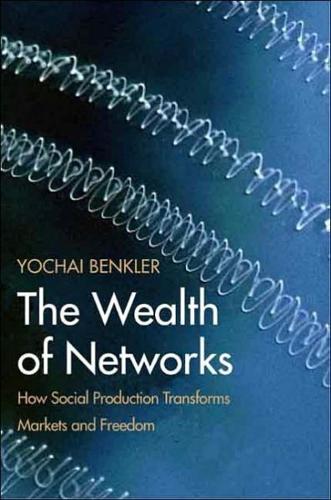
The Wealth of Networks: How Social Production Transforms Markets and Freedom
by
Yochai Benkler
Published 14 May 2006
Together, they form a vast almanac, trivia trove, and news and commentary facility, to name but a few, produced by millions of people at their leisure--whenever they can or want to, about whatever they want. 204 The independence of Web sites is what marks their major difference from more organized peer-production processes, where contributions are marked not by their independence but by their interdependence. The Web as a whole requires no formal structure of cooperation. As an "information good" or medium, it emerges as a pattern out of coordinate coexistence of millions of entirely independent acts. All it requires is a pattern recognition utility superimposed over the outputs of these acts--a search engine or directory. Peer-production processes, to the contrary, do generally require some substantive cooperation among users. A single rating of an individual comment on Slashdot does not by itself moderate the comment up or down, neither does an individual marking of a crater.

Accessory to War: The Unspoken Alliance Between Astrophysics and the Military
by
Neil Degrasse Tyson
and
Avis Lang
Published 10 Sep 2018
Radar, declared Watson-Watt, was “the secret that was kept by a thousand women” (Watson-Watt, “Radar Defense Today,” 230). Brown quotes an Australian explanation as to why women proved so valuable: “Women did make the best radar operators, because they watched the screen” (Brown, Radar History of World War II, 2, 64). Kaiser, too, acknowledges the role played by women: “Due to a sort of unconscious pattern recognition, operators, particularly the Women’s Auxiliary Air Force (the WAAFs), acquired the skill to detect signals even below noise level” (38). 47.Brown, Radar History of World War II, x, 6. 48.In 1946 Watson-Watt painted a sunny portrait of UK wartime cooperation across sectors in the effort to develop and improve radar: “a co-operation which, I believe, was unsurpassed and unequalled in any part of the war effort.
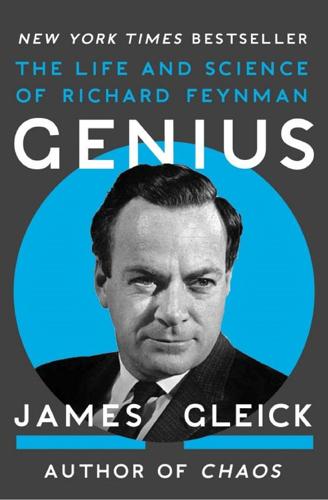
Genius: The Life and Science of Richard Feynman
by
James Gleick
Published 1 Jan 1992
When his son, Carl, ended his flirtation with philosophy and took up computer science, Feynman, too, looked again at the field he had helped pioneer at Los Alamos. He joined two Caltech authorities on computation, John Hopfield and Carver Mead, in constructing a course on issues from brain analogues and pattern recognition to error correction and uncomputability. For several summers he worked with the founders of Thinking Machines Corporation, near MIT, creating a radical approach to parallel processing; he served as a high-class technician, applying differential equations to the circuit diagrams, and as an occasional wise man among the young entrepreneurs (“Forget all that ‘local minima’ stuff—just say there’s a bubble caught in the crystal and you have to shake it out”).

The Evolutionary Void
by
Peter F. Hamilton
Published 18 Aug 2010
He was just pouring himself a second glass of wine when his u-shadow reported that Phelim was making a priority call. Please, Lady, no more bad news tonight, Ethan thought wearily as he accepted the secure link. He was still awaiting the call from Marius’s “friend.” “We’ve found her,” Phelim declared. Ethan paused, the wine not quite out of the bottle’s neck. “Who?” “The Second Dreamer. The advanced pattern recognition routines located her for us. She’s sharing Inigo’s Eleventh Dream, would you believe.” “Great Lady! Do you have her safe?” “No, that’s where the problem begins. She’s not on Viotia anymore.” “Damn. Where is she, then?” “Chobamba.” “Where?” Even as he asked, Ethan’s u-shadow was pulling data out of the central registry.

The Narrow Corridor: States, Societies, and the Fate of Liberty
by
Daron Acemoglu
and
James A. Robinson
Published 23 Sep 2019
Once it had a large market share, Google could use more data from user searches to refine its algorithm, making it even better and more dominant. These dynamics got stronger once data from Internet searches started being used for artificial intelligence applications, for example, for translation and pattern recognition. Early success also brought more resources to invest in research and development and acquire companies that were developing technology that would be useful to Google’s further expansion. Winner-take-all effects were also at the root of the meteoric rise of Amazon, whose early growth as an online retailer and platform made it more attractive to sellers and users, and of Facebook, whose popularity as a social media platform critically depends on the users’ expectations that their friends are joining as well.
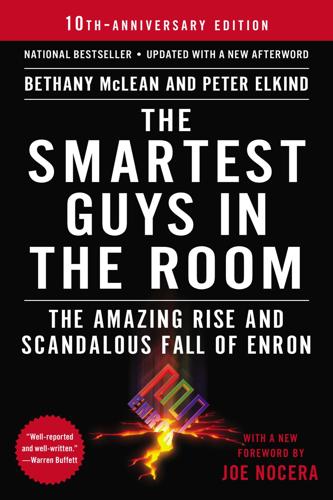
The Smartest Guys in the Room
by
Bethany McLean
Published 25 Nov 2013
“My job as a businessman is to be a profit center and to maximize return to the shareholders. It’s the government’s job to step in if a product is dangerous.” (Skilling has always denied this story.) Skilling graduated a Baker Scholar, a coveted honor bestowed upon the top 5 percent of the class. He decided that his talent was “pattern recognition,” which meant that he thought he was good at seeing how the techniques used in one industry could be applied to another. Degree in hand, Skilling did one of the appropriately prestigious things that Baker Scholars often do, probably the one thing that best matched his mental proclivities. He joined the nation’s bluest-chip consulting firm, McKinsey & Company.
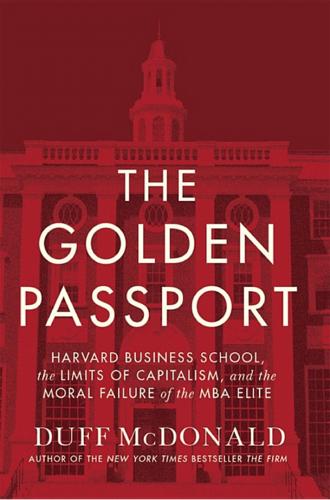
The Golden Passport: Harvard Business School, the Limits of Capitalism, and the Moral Failure of the MBA Elite
by
Duff McDonald
Published 24 Apr 2017
Eventually, the MBAs working inside client organizations had internalized everything about competitive advantage and industry structure, the result of which was that Monitor ended up with no means through which to sustain its own excess profits. While it did develop some new ideas, including the use of pattern recognition in the service of business model innovation, by the end the consulting firm’s loss of focus was epitomized by the launch of entities such as Monitor Talent, which booked speakers for corporate events, and Monitor Quest, which provided bodyguards for billionaires. Michael Porter became famous for arguing that companies needed to focus their energies in those areas in which they had a competitive advantage.
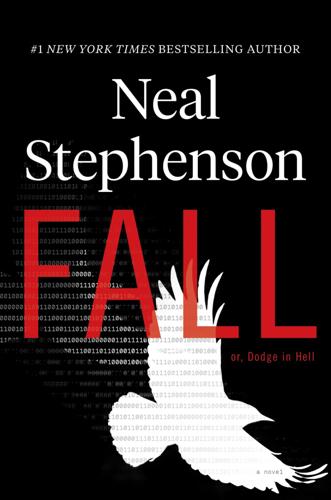
Fall; Or, Dodge in Hell
by
Neal Stephenson
Published 3 Jun 2019
Below it was a window showing all of the lines of data coming out of all the teletypes at once; the information was zooming by so quickly that it was just a blur. “We’d have a hell of a lot of data. But would we really know what the brain was thinking? Would we know that it was seeing red, or doing arithmetic, or feeling sad? Despite some recent advances in pattern recognition on neural networks, the answer is basically no. But we can still perform traffic analysis and try to draw conclusions about what sorts of activities are going on within the Process. Just as the Allies were able to sift through mountains of gibberish to get an idea of what the Germans were doing and where, we may be able to analyze what we know about Process-related message traffic to make some guesses about what the Process is doing.
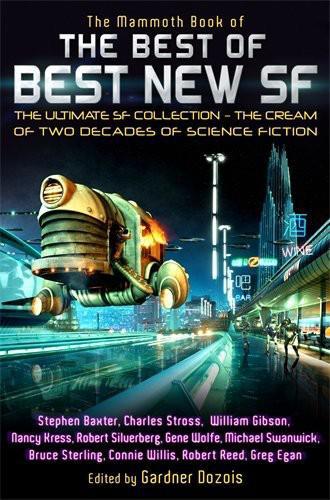
The Best of Best New SF
by
Gardner R. Dozois
Published 1 Jan 2005
Some are no doubt jealous of his success, but even most of them would probably admit, when forced to it, that Gibson is the kind of major talent that comes along maybe once or twice in a literary generation . . . and has earned his accolades. Gibson’s other books include Virtual Light, Idoru, and All Tomorrow’s Parties, and a novel written in collaboration with Bruce Sterling, The Difference Engine. His short fiction has been collected in Burning Chrome. His latest book is another best-selling novel, Pattern Recognition. Born in South Carolina, he now lives in Vancouver, Canada, with his wife and family. In the gripping story that follows, he suggests that people who know exactly what they want can be a little frightening – particularly if they need you to get it for them. . . . IT RAINS A LOT, up here; there are winter days when it doesn’t really get light at all, only a bright, indeterminate gray.

Food Allergy: Adverse Reactions to Foods and Food Additives
by
Dean D. Metcalfe
Published 15 Dec 2008
Therefore, innate and adoptive mechanisms have been developed to control the immune balance to food and commensals and to fend off pathogens [1,4,5]. Gastric acid, mucus, an intact epithelial layer, digestive enzymes, and the intestinal peristaltic are unspecific factors forming the “non-immunological” barrier [6]. The immunological defense mechanisms include innate (antimicrobial peptides, immune cells expressing pattern recognition molecules, etc.) and adaptive mechanisms (lymphocytes, IgA) [4]. Despite this tight mucosal barrier, macromolecules and intact bacteria can pass through or can be even actively taken up by the intestinal epithelium. Macromolecular uptake can be beneficial in delivering essential growth factors and in sampling the antigenic milieu of the gastrointestinal tract in order to enable the induction of immune tolerance to environmental antigens [6,7].

Rationality: From AI to Zombies
by
Eliezer Yudkowsky
Published 11 Mar 2015
Or this advice may even be offered by the same one who disbelieved, saying, “Come back when you have a PhD.” Now there are good and bad reasons to get a PhD, but this is one of the bad ones. There’s many reasons why someone actually has an adverse reaction to transhumanist theses. Most are matters of pattern recognition, rather than verbal thought: the thesis matches against “strange weird idea” or “science fiction” or “end-of-the-world cult” or “overenthusiastic youth.” So immediately, at the speed of perception, the idea is rejected. If, afterward, someone says “Why not?,” this launches a search for justification.